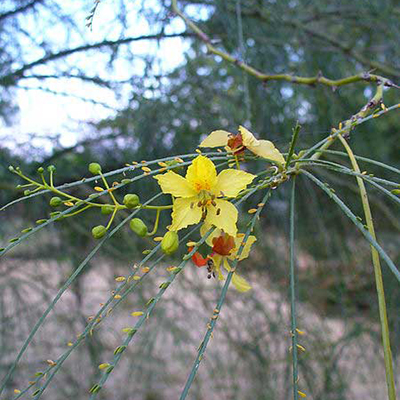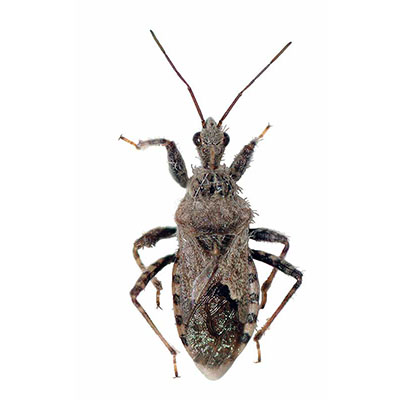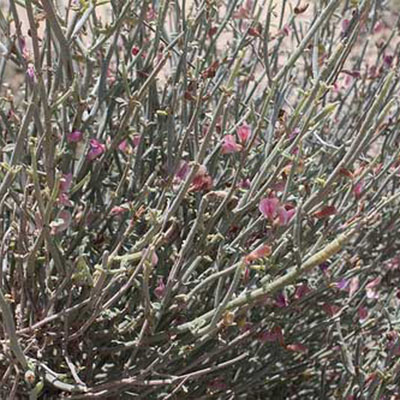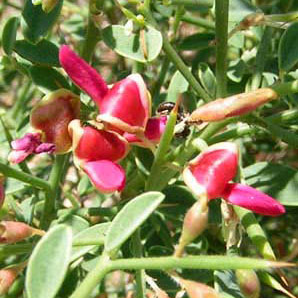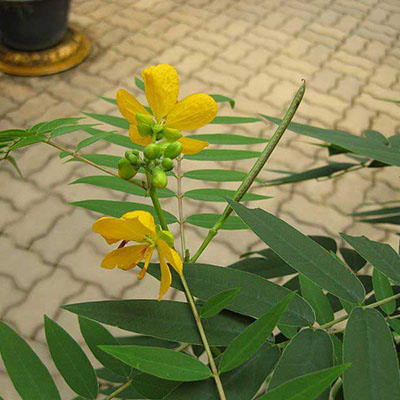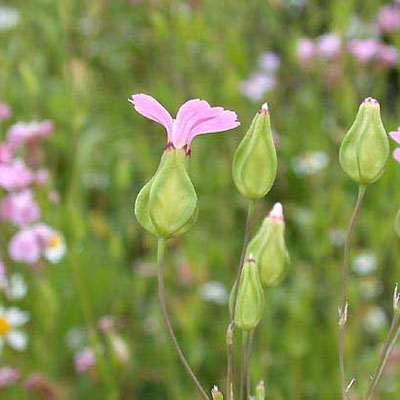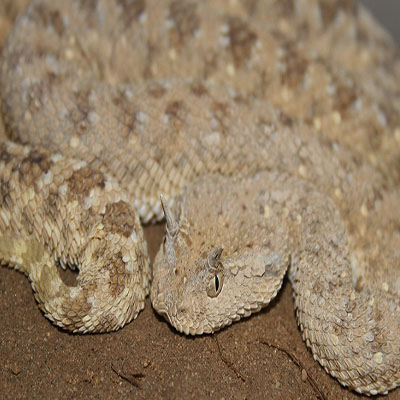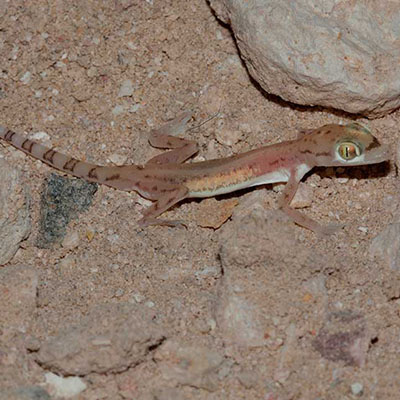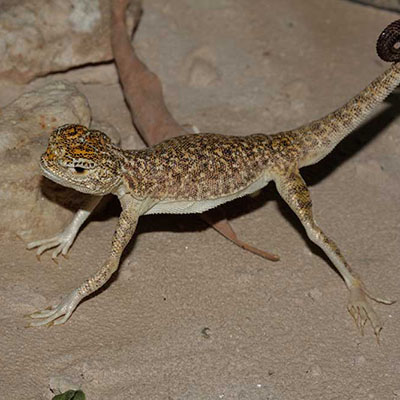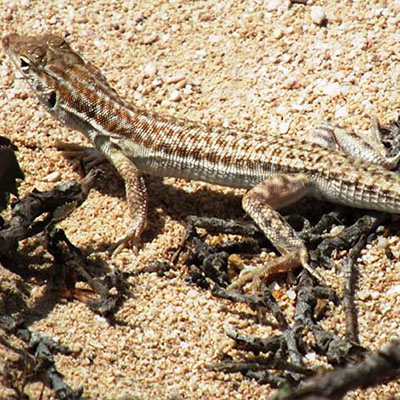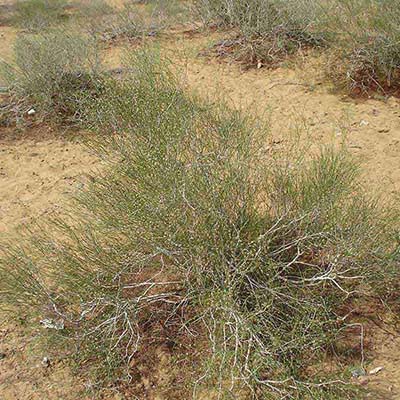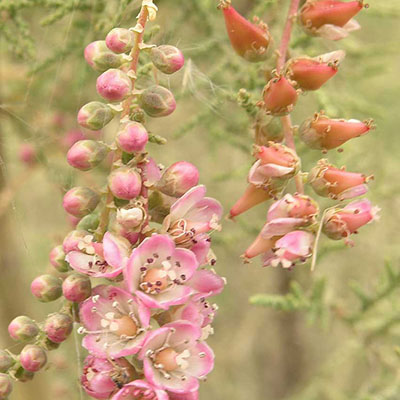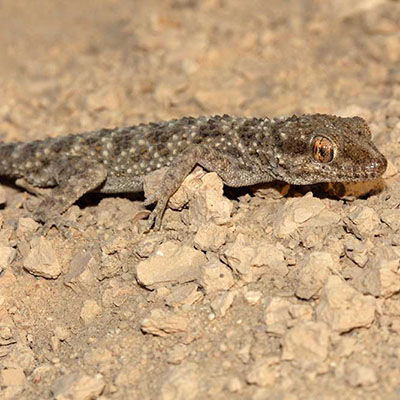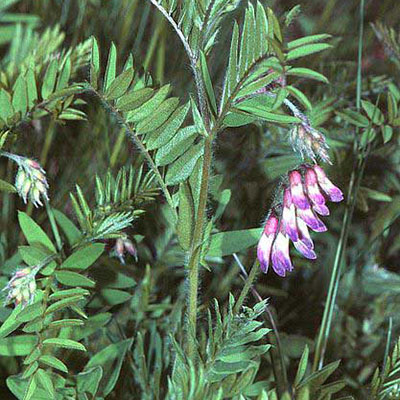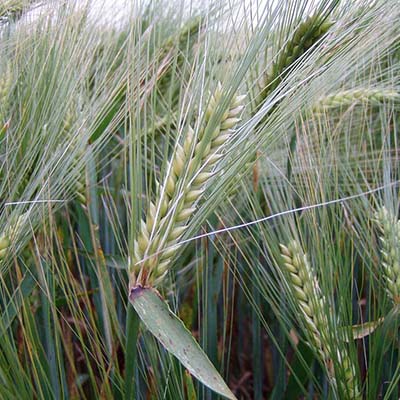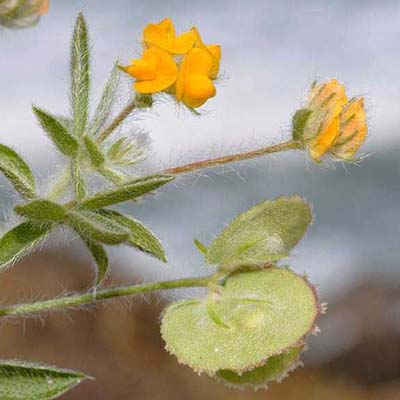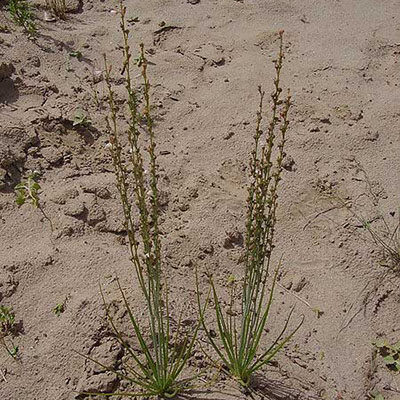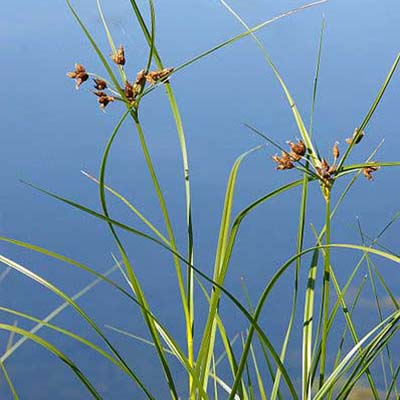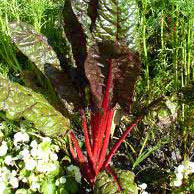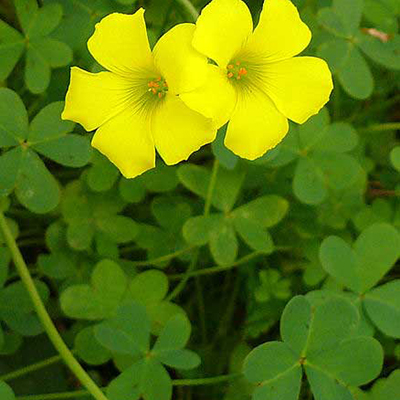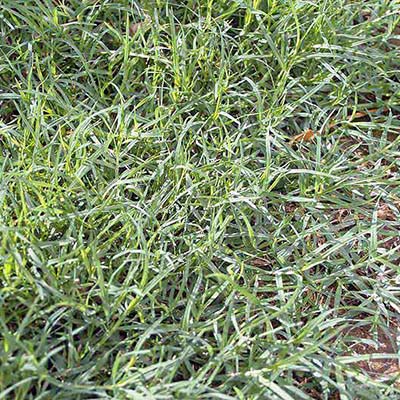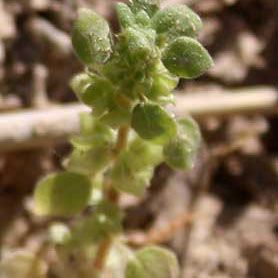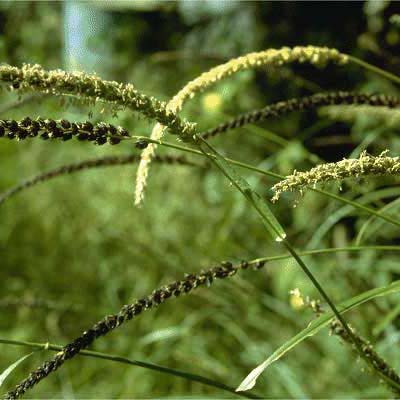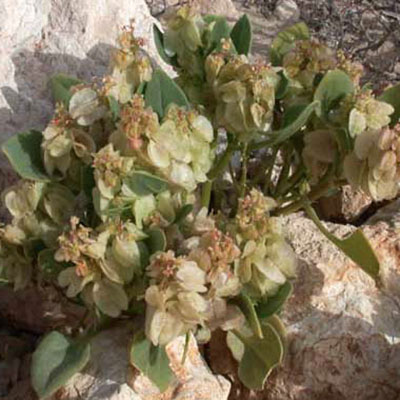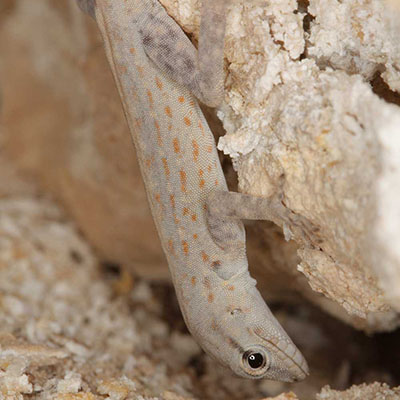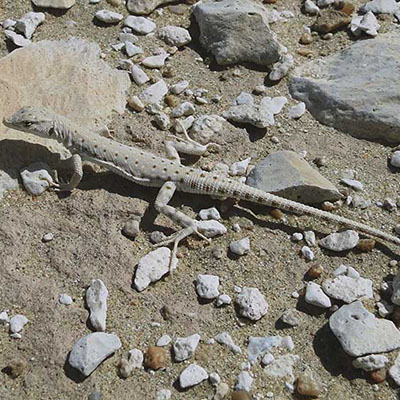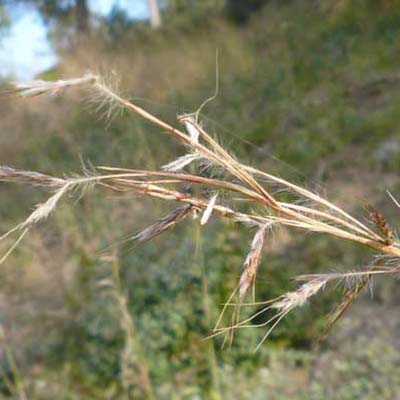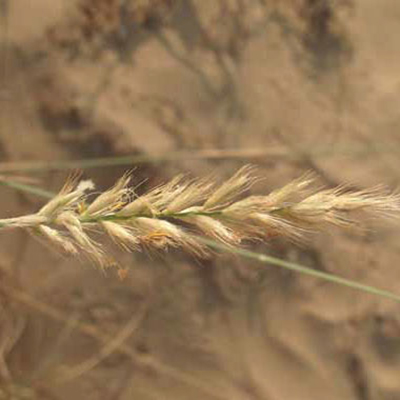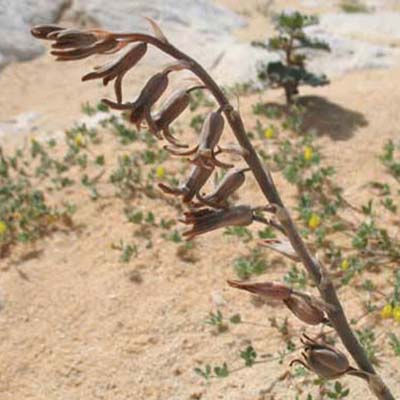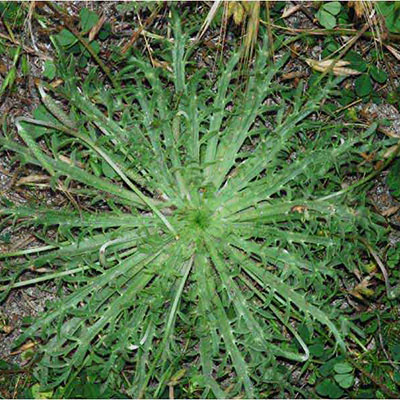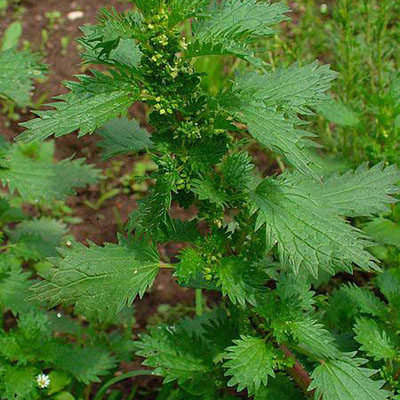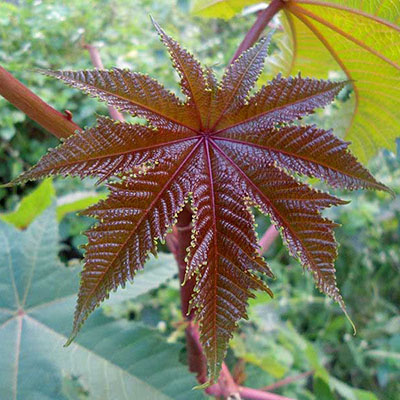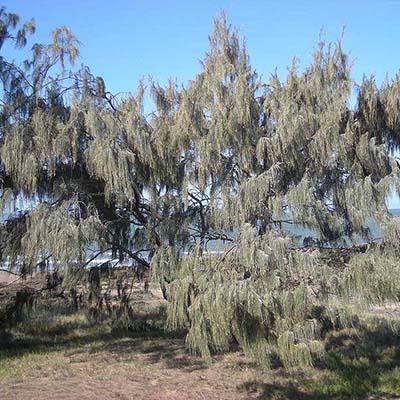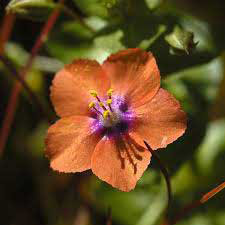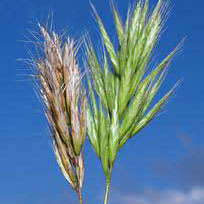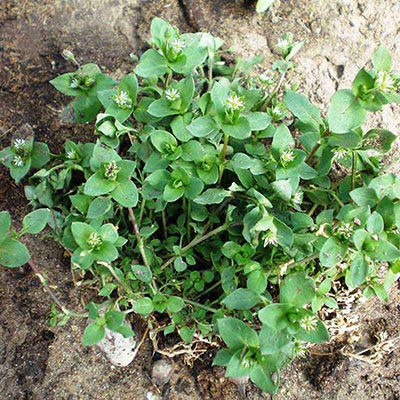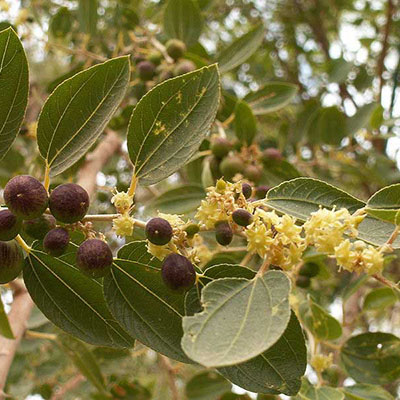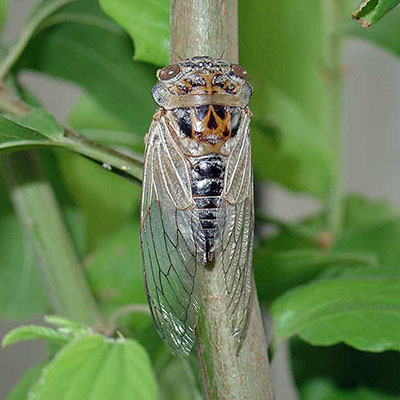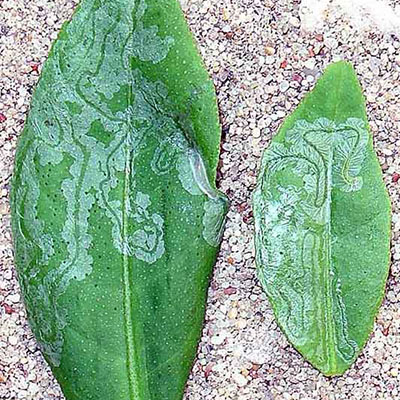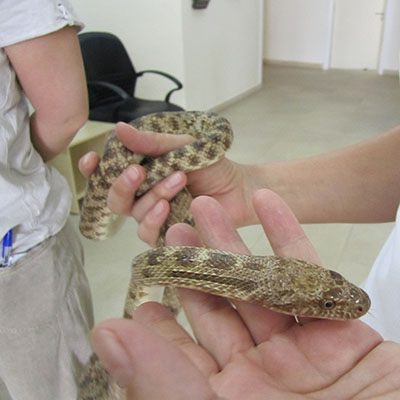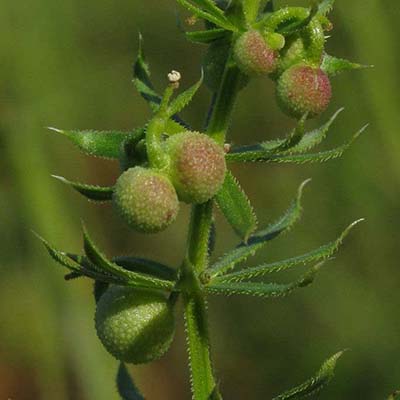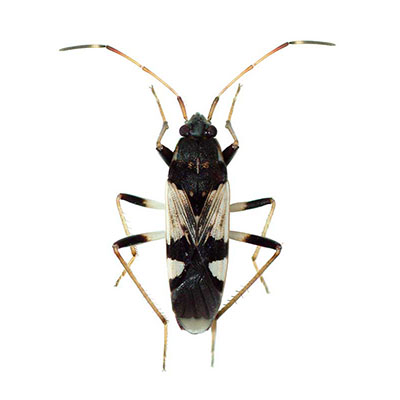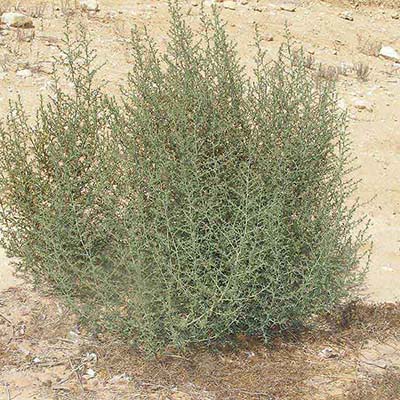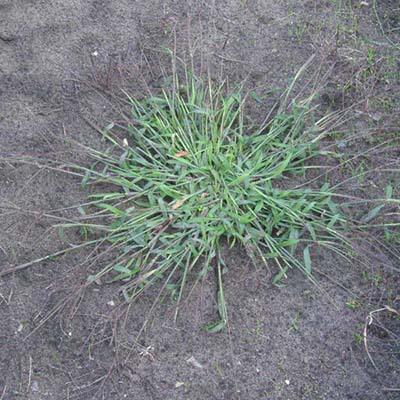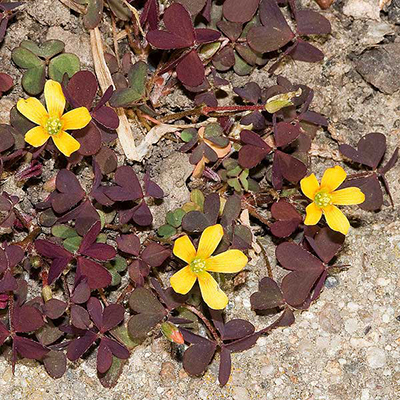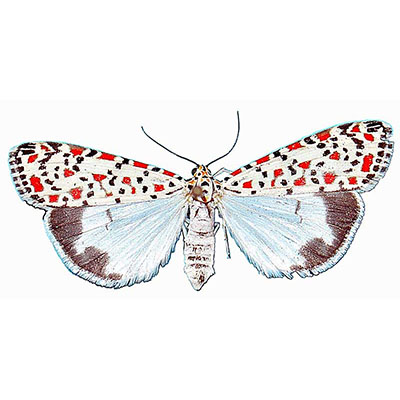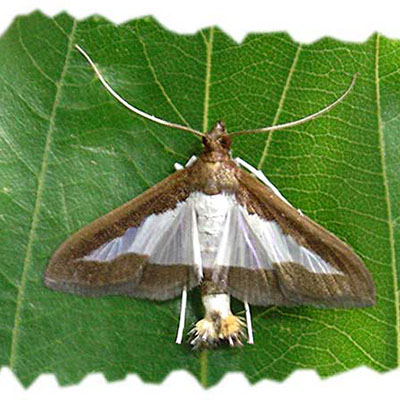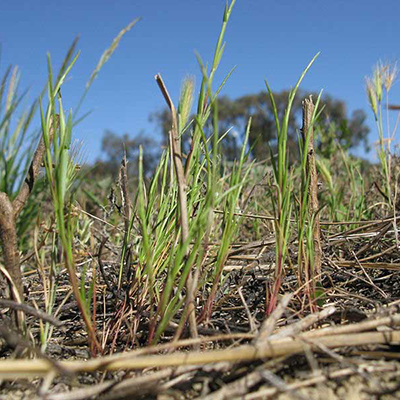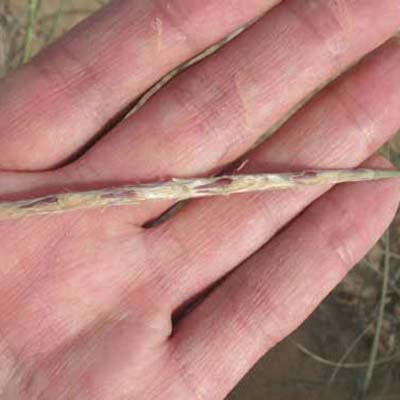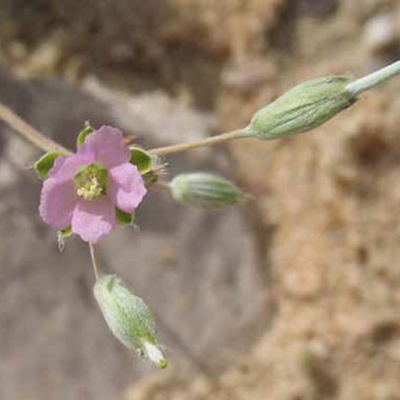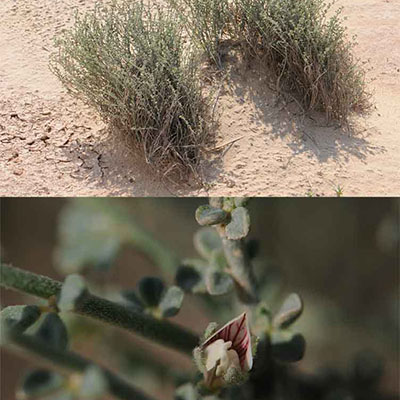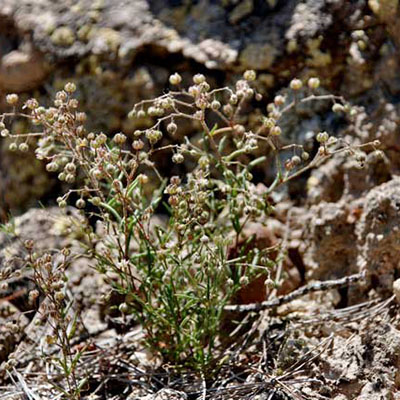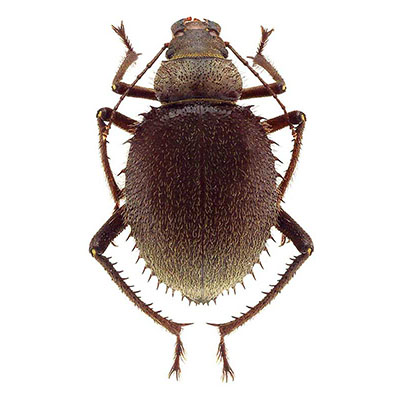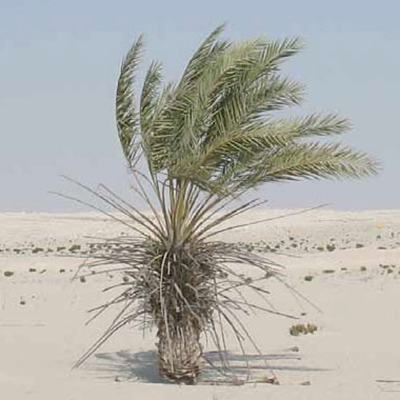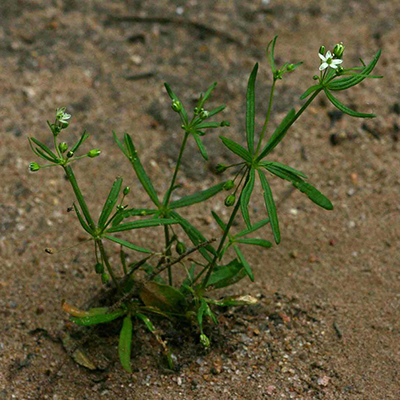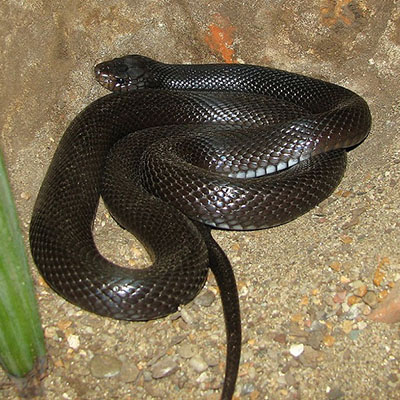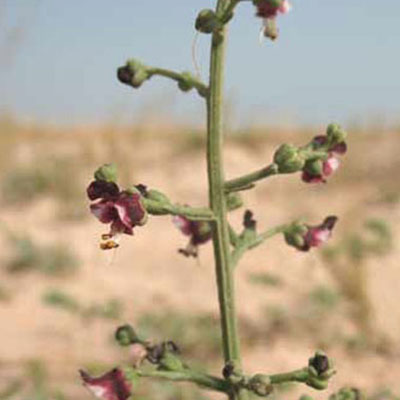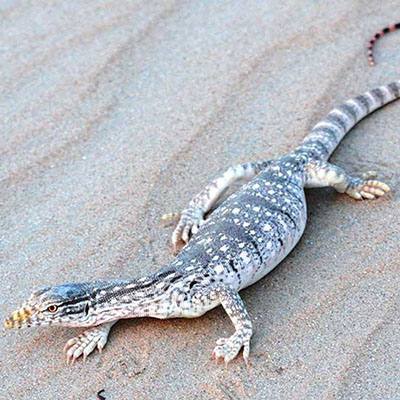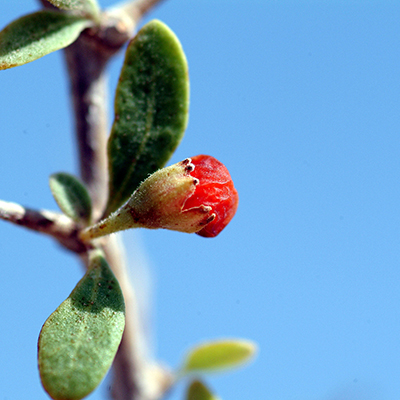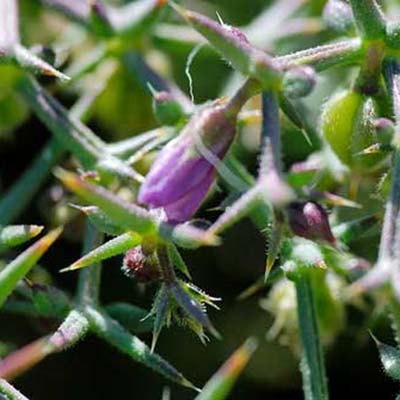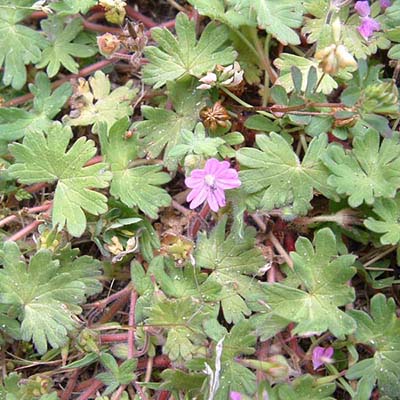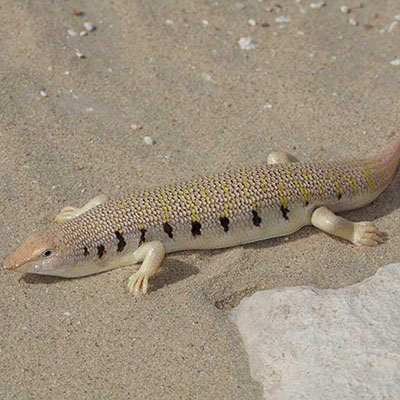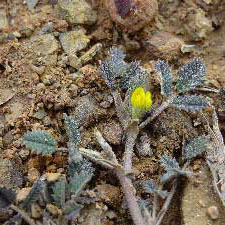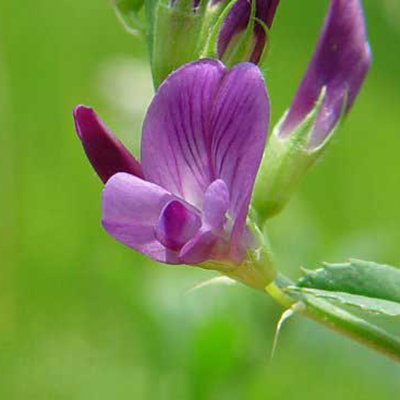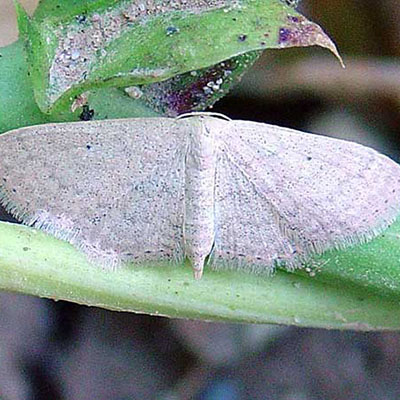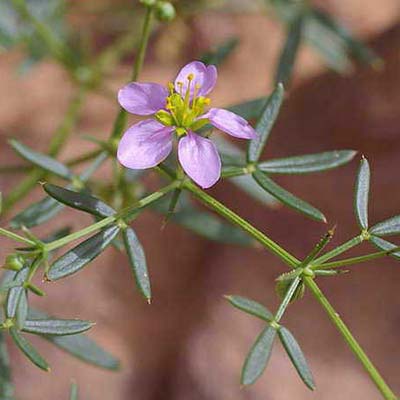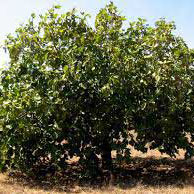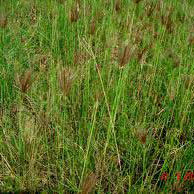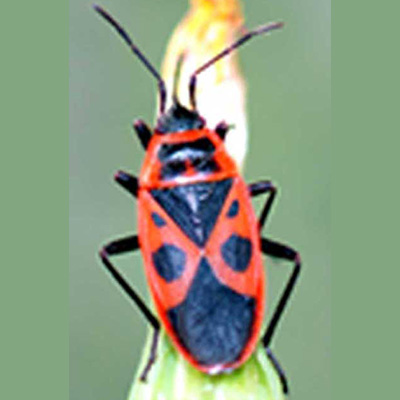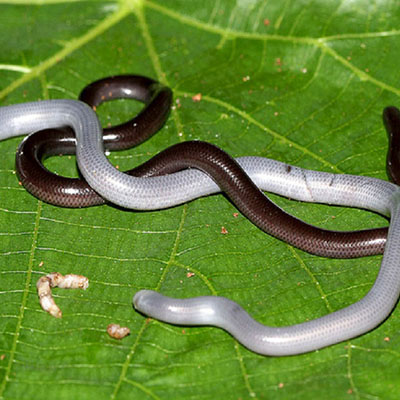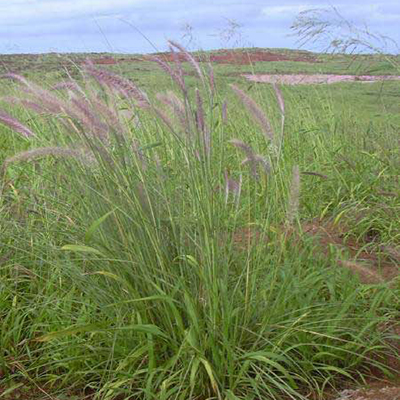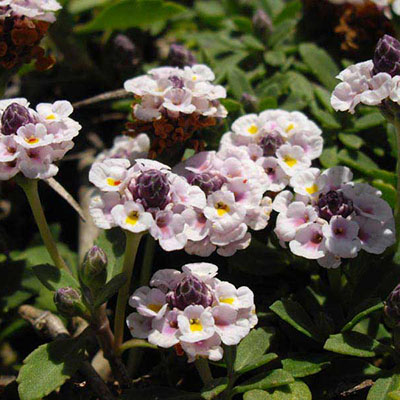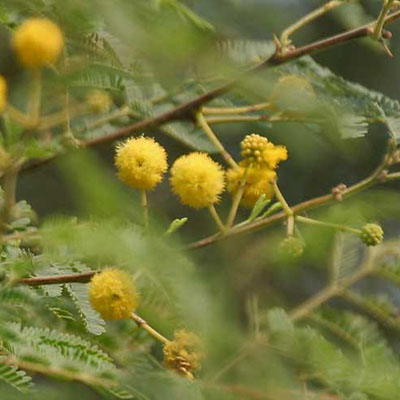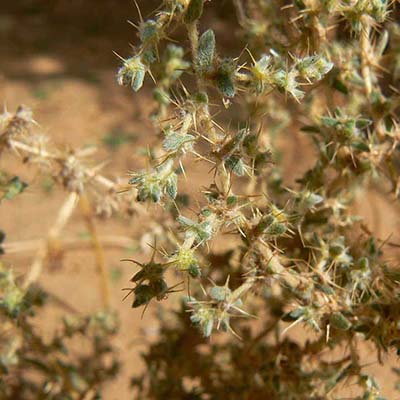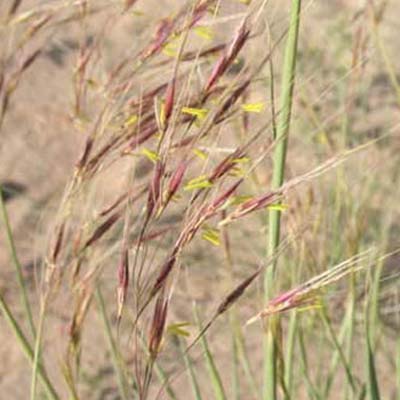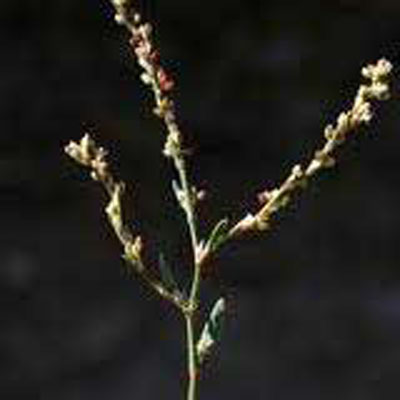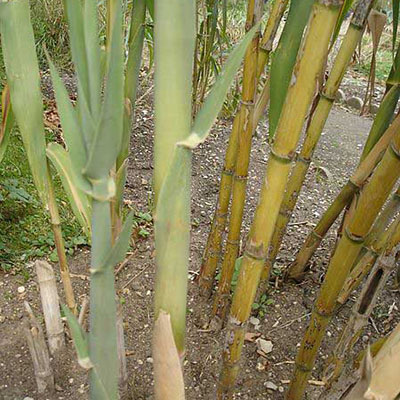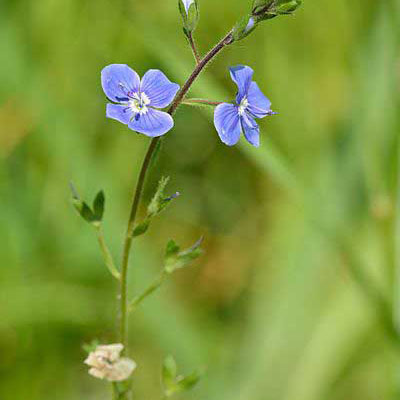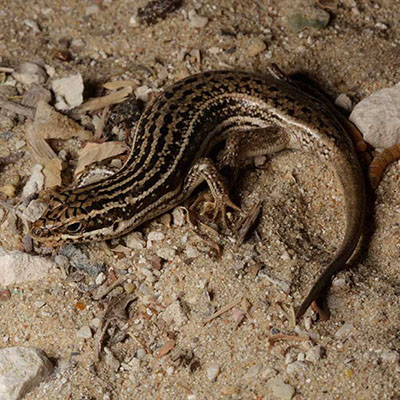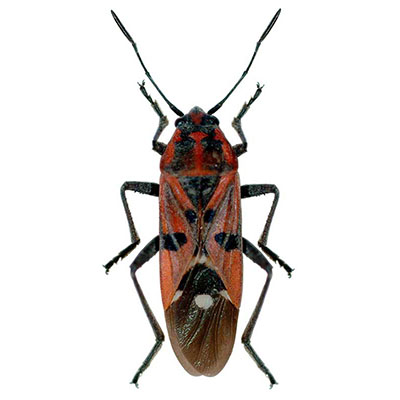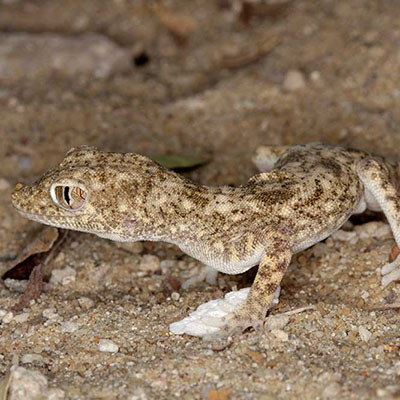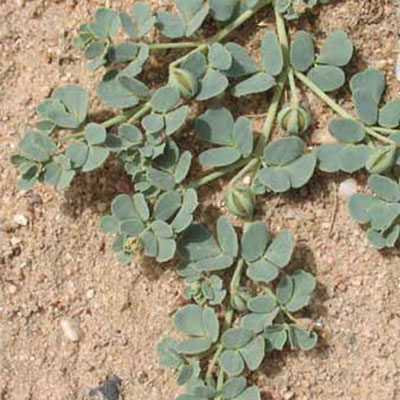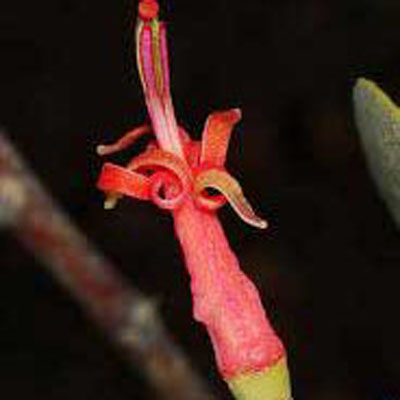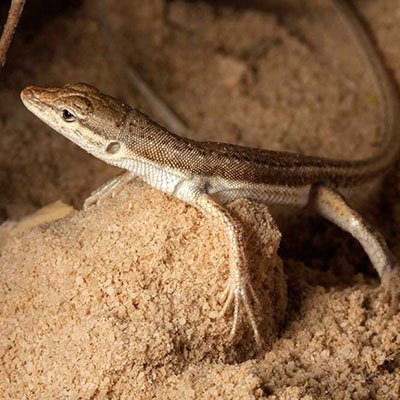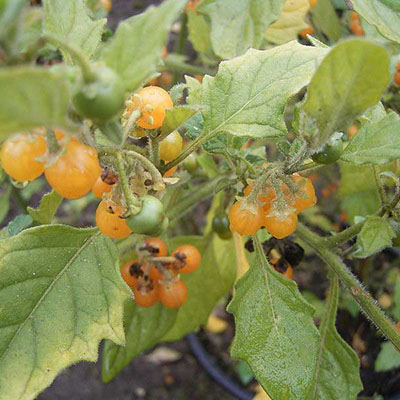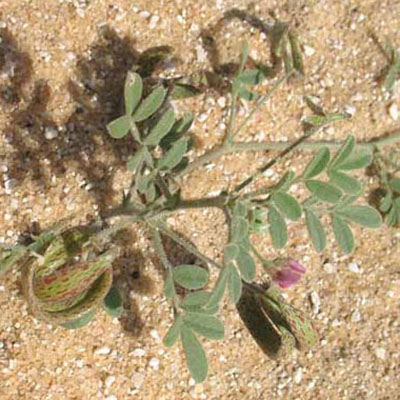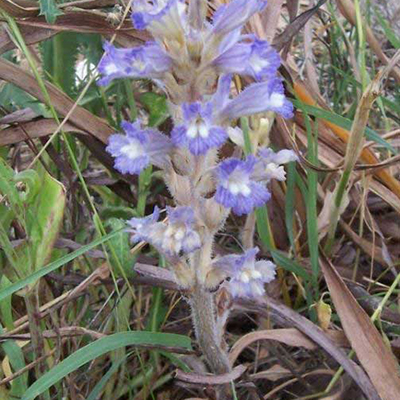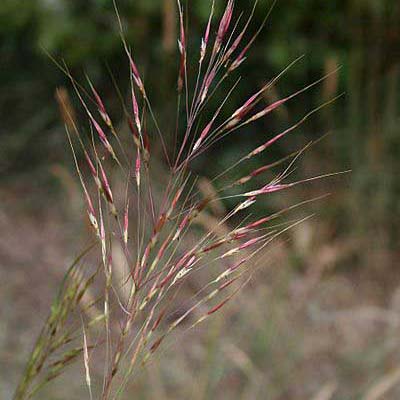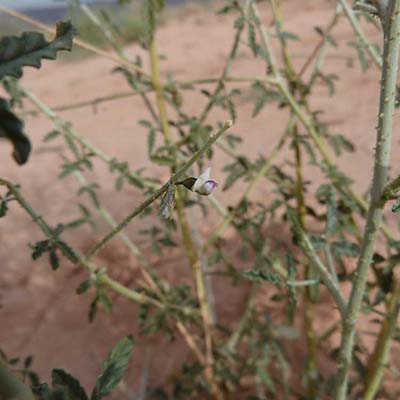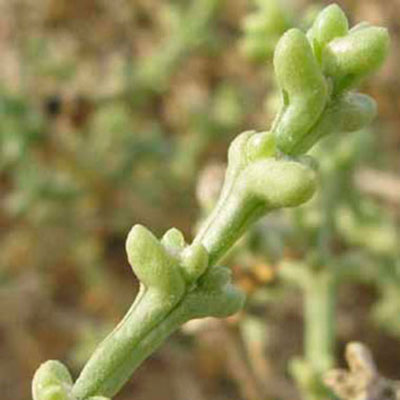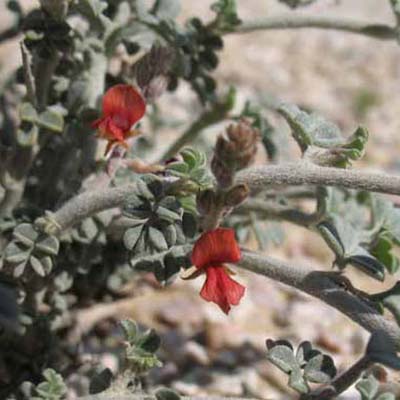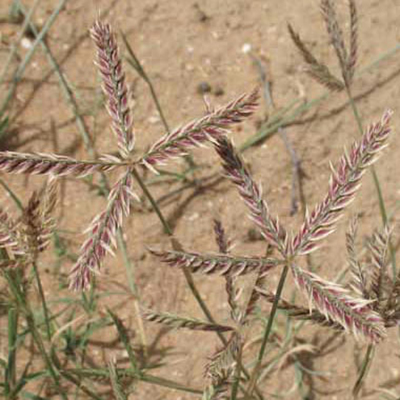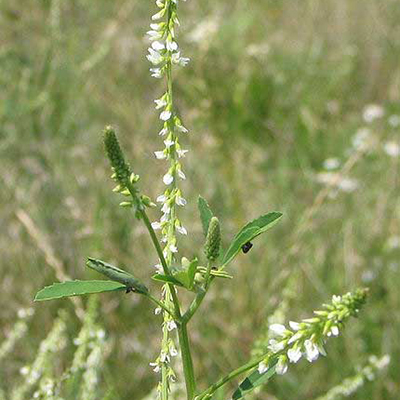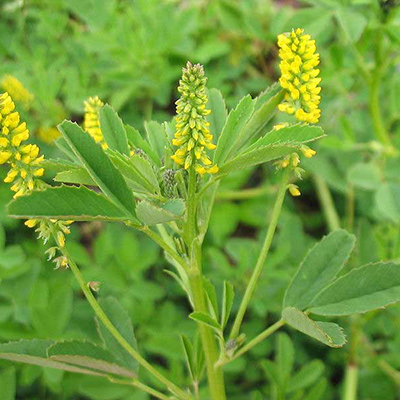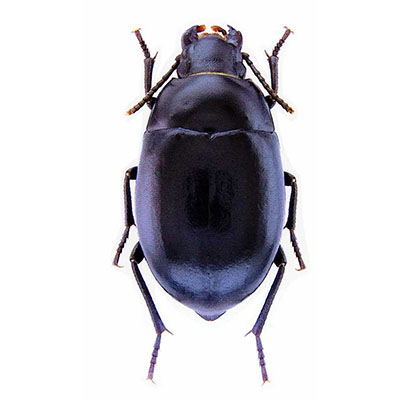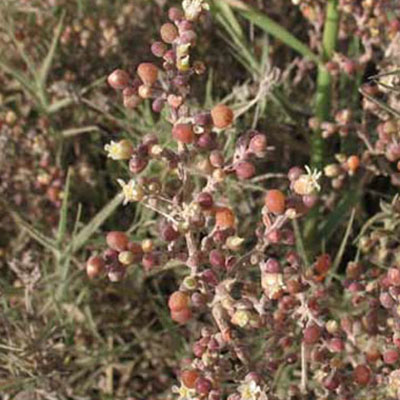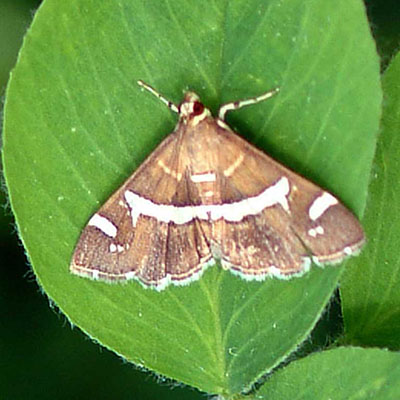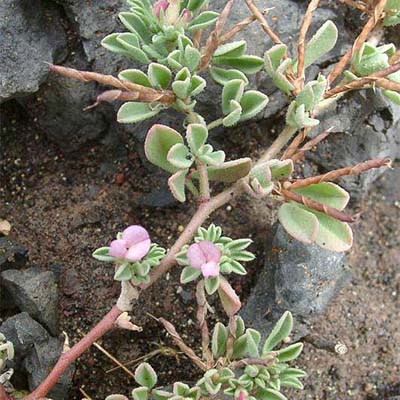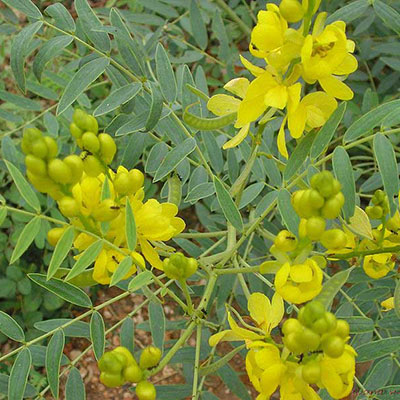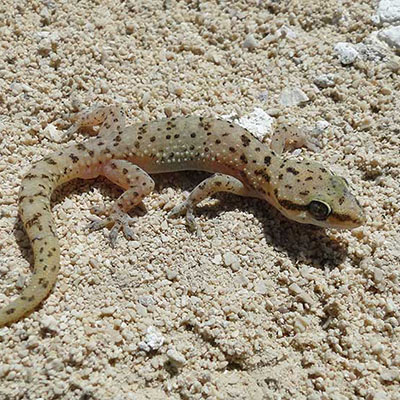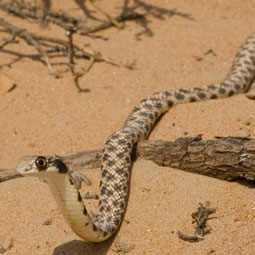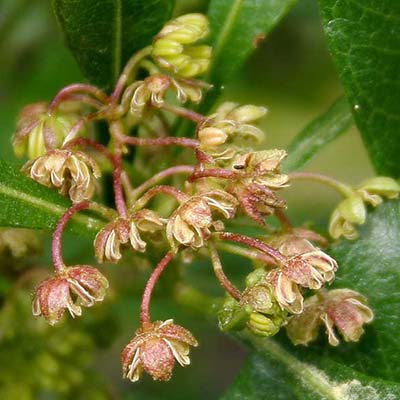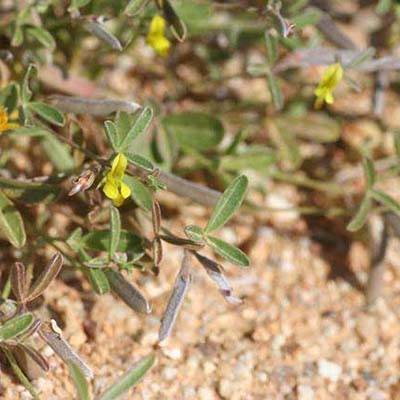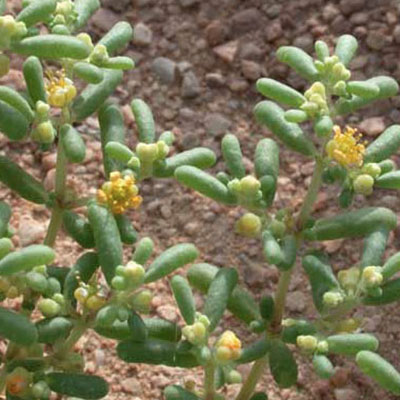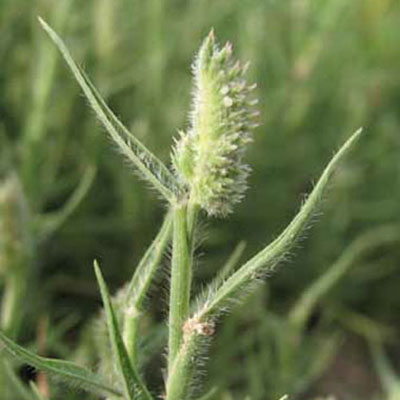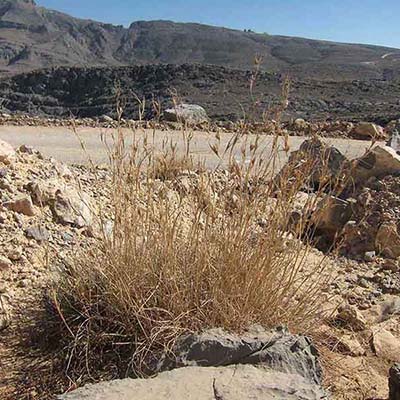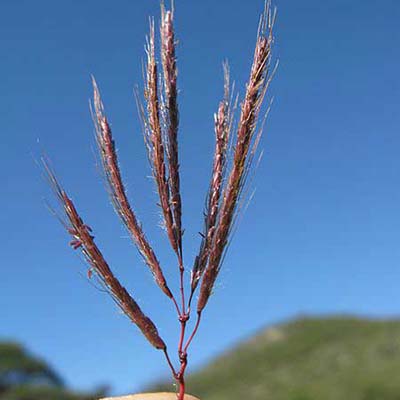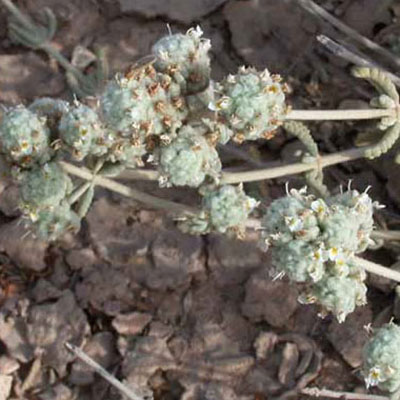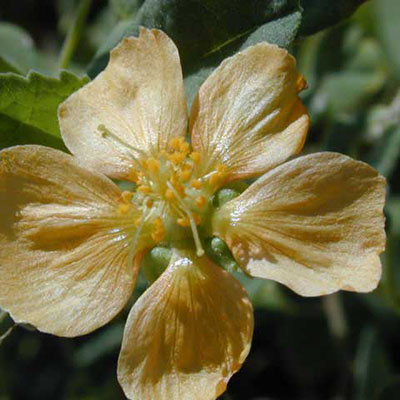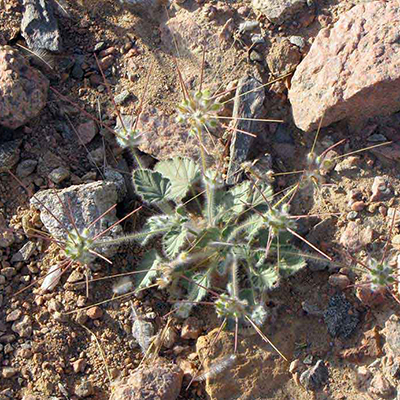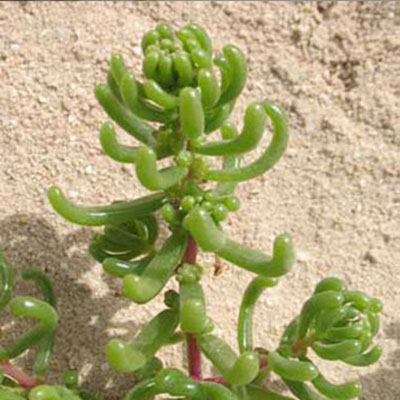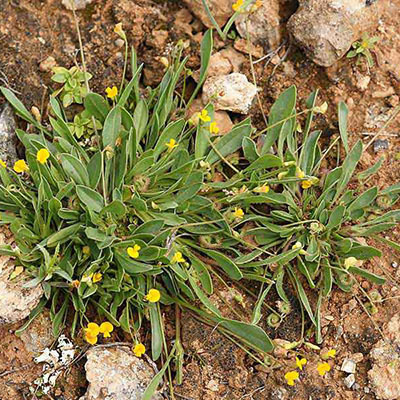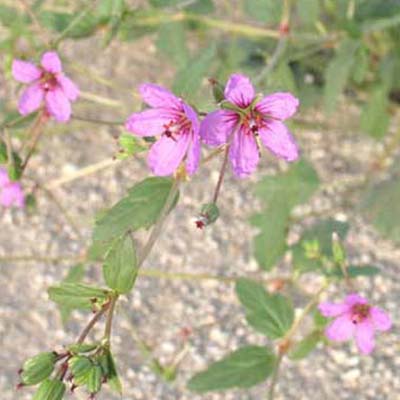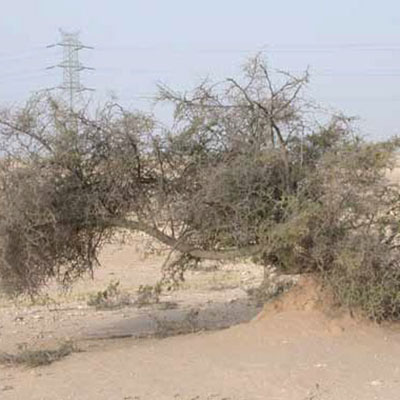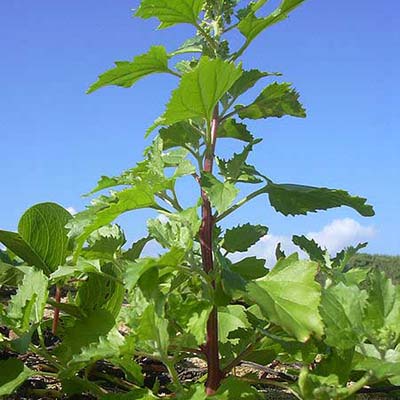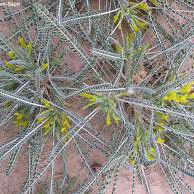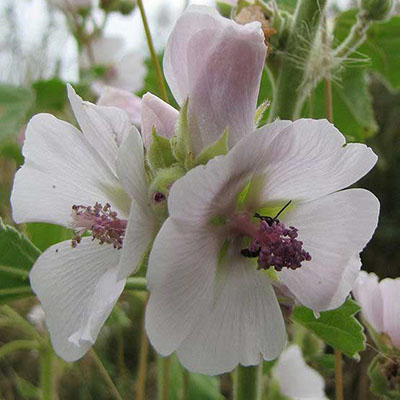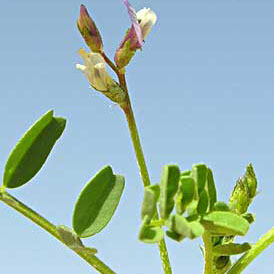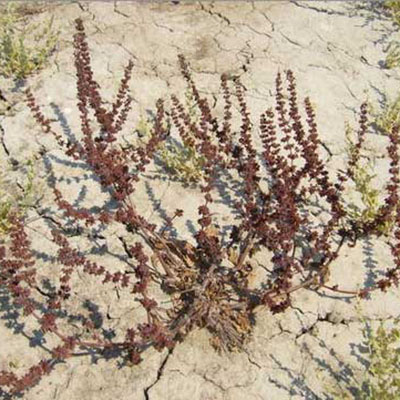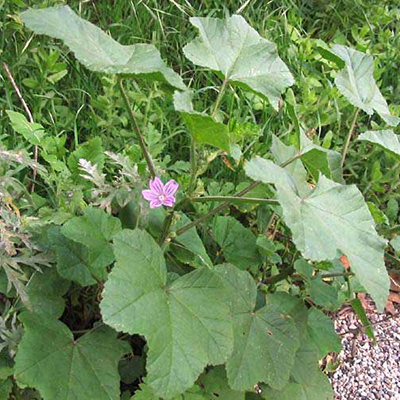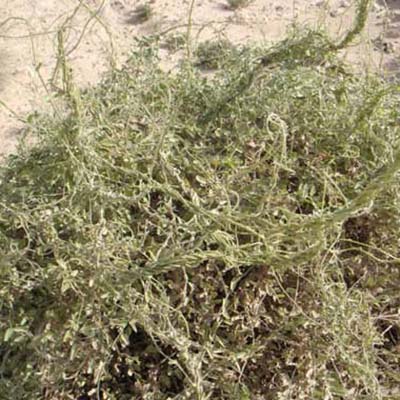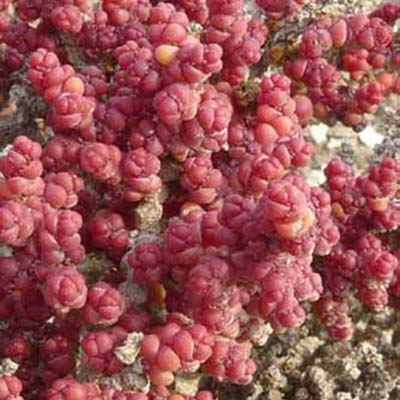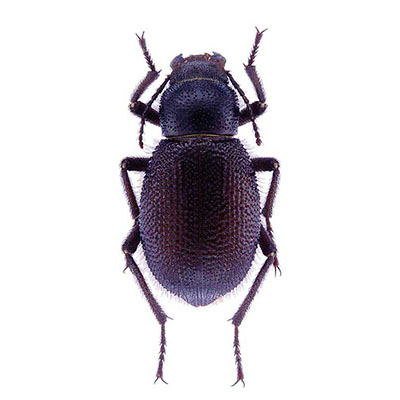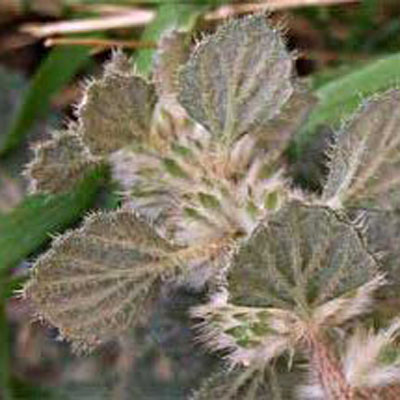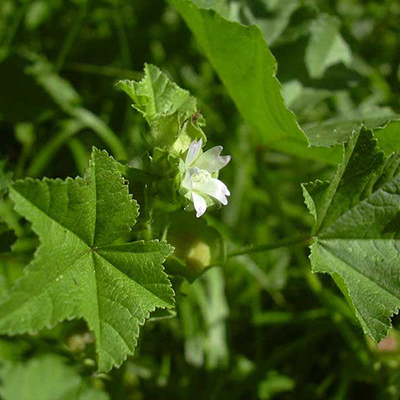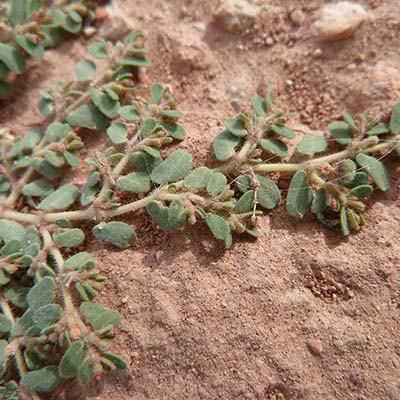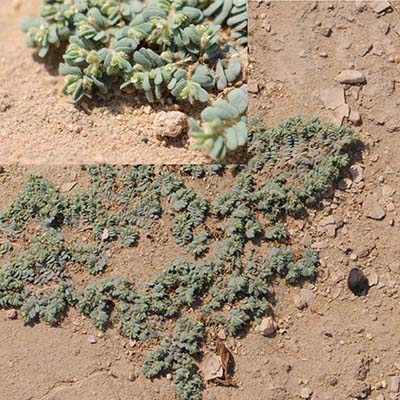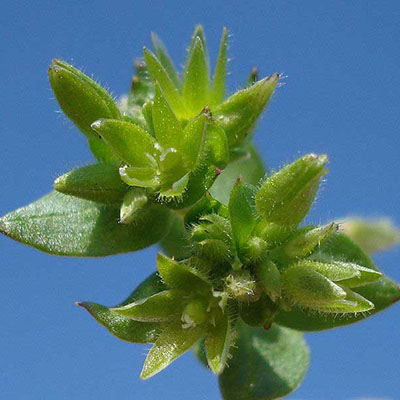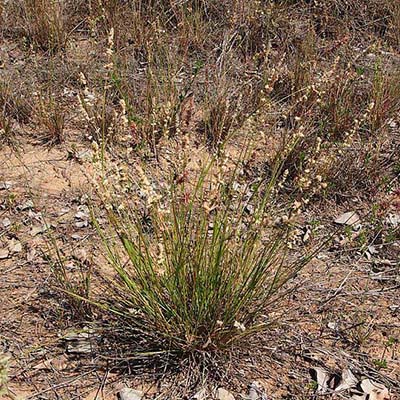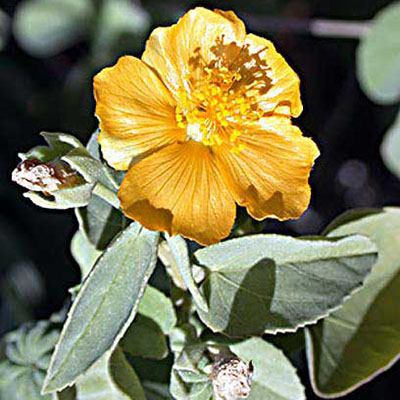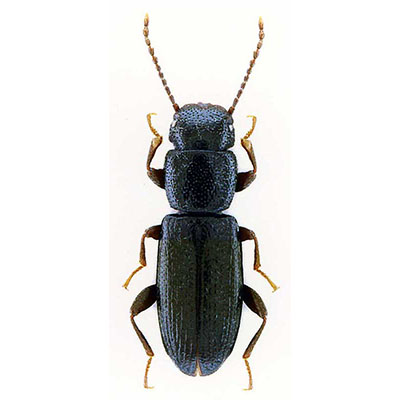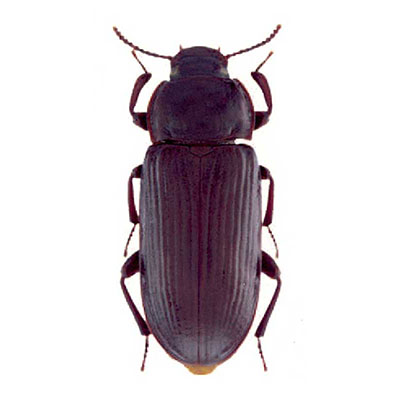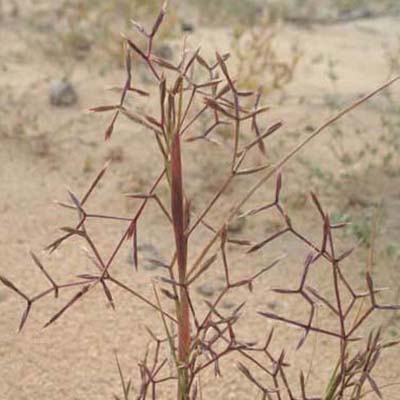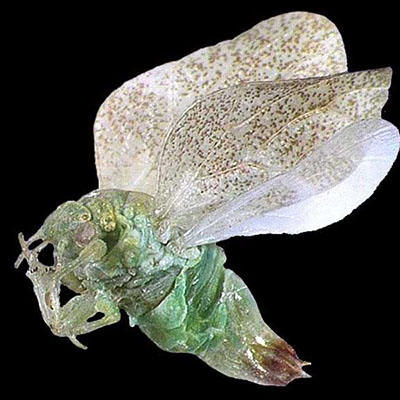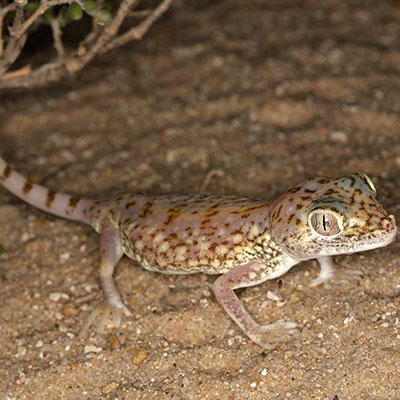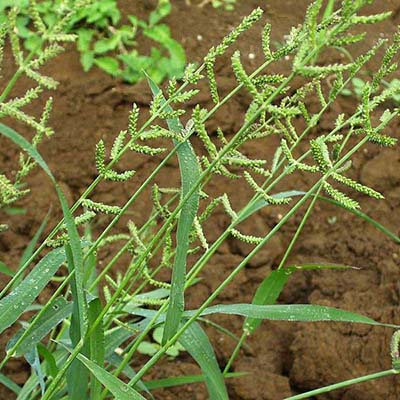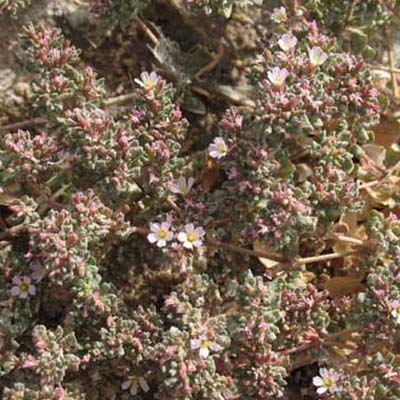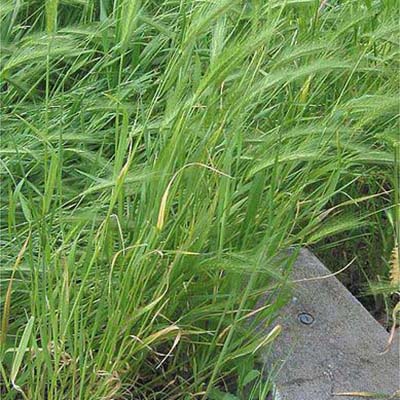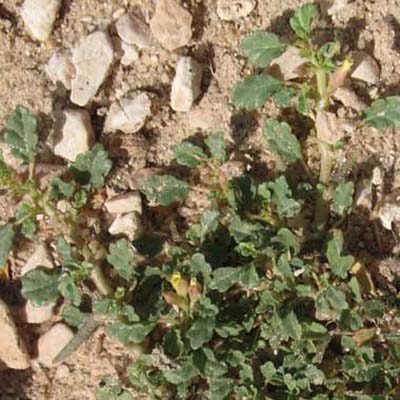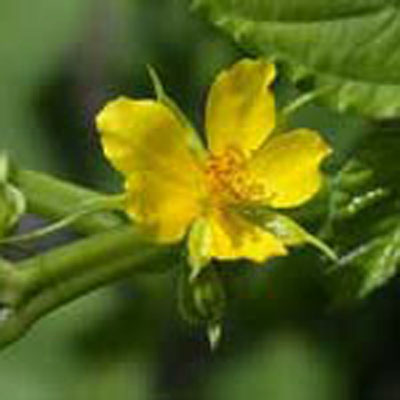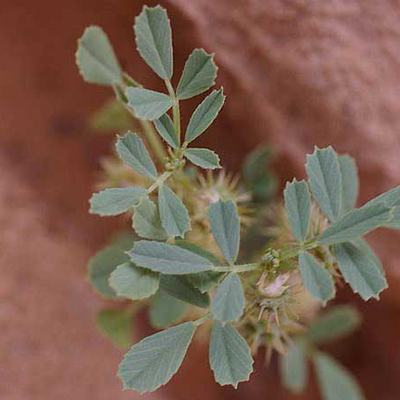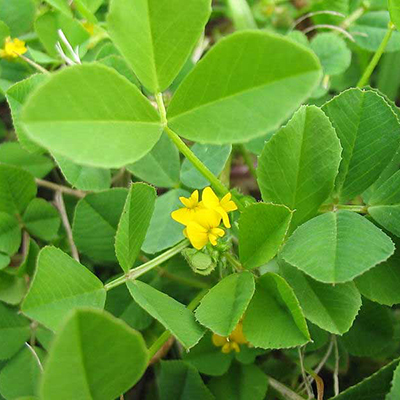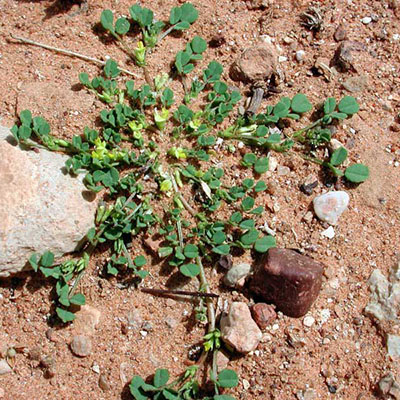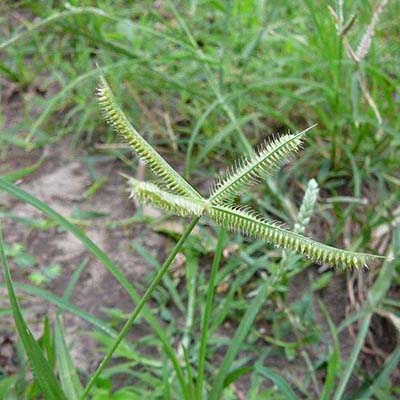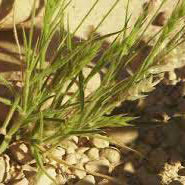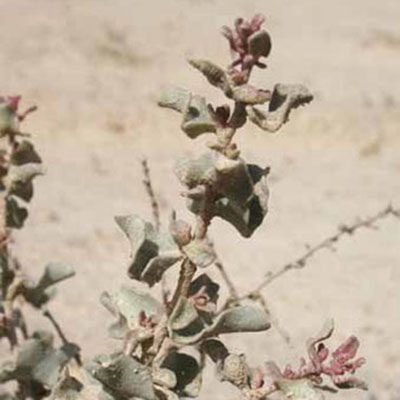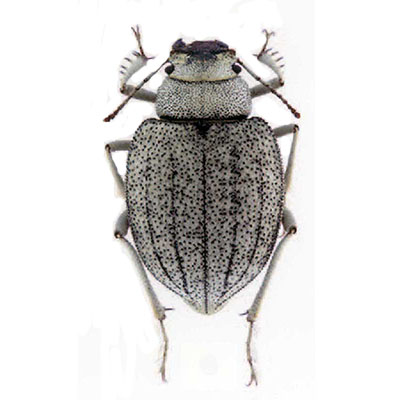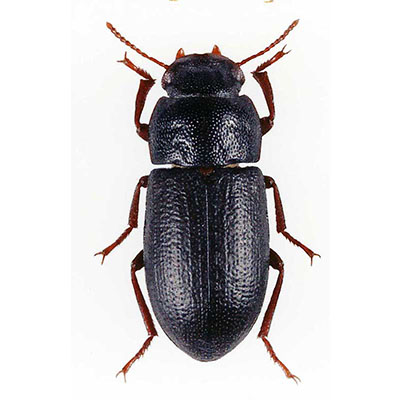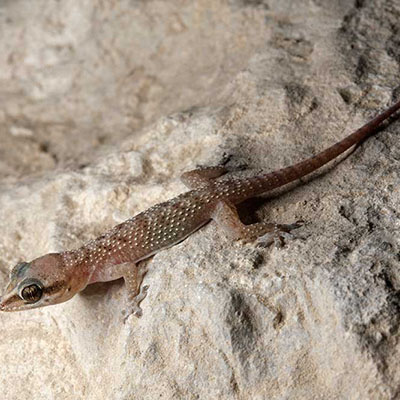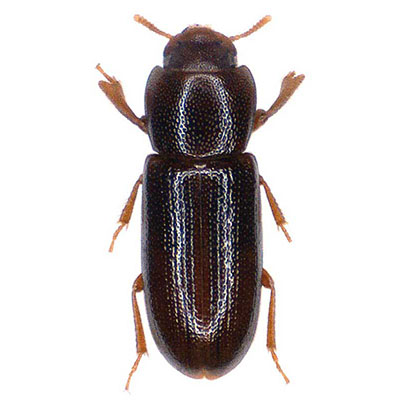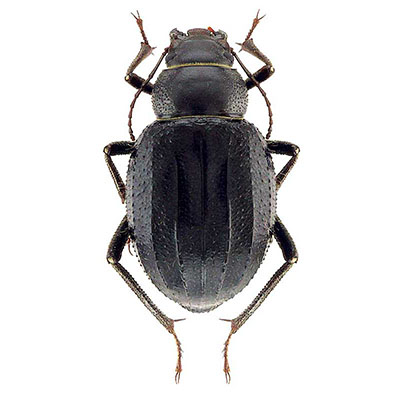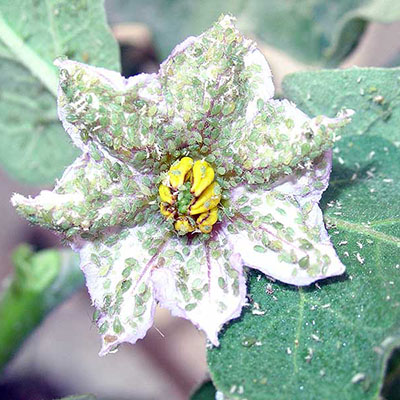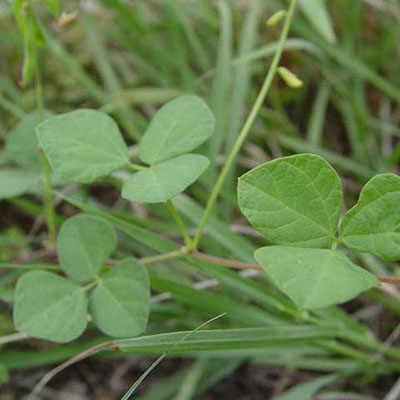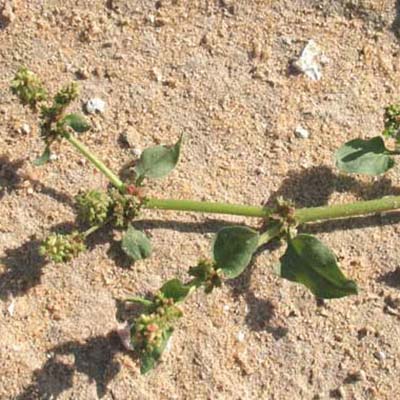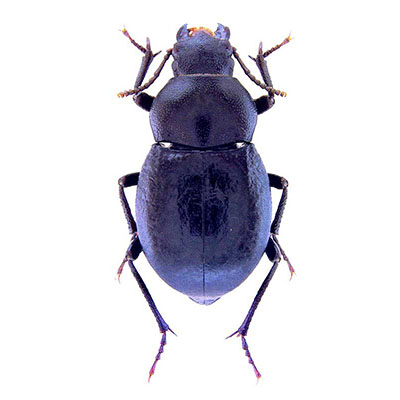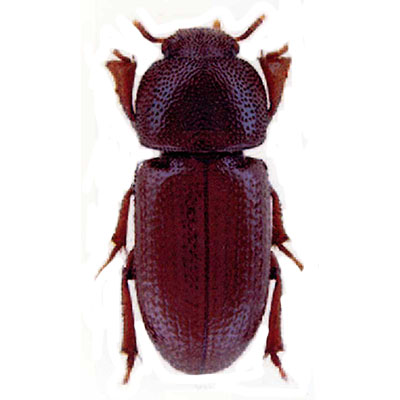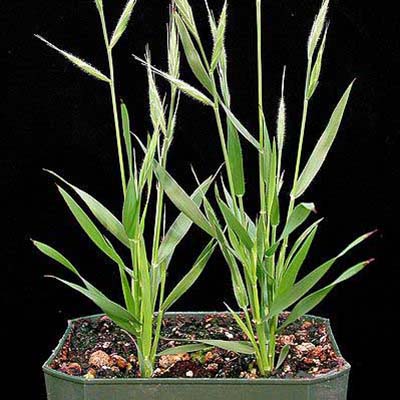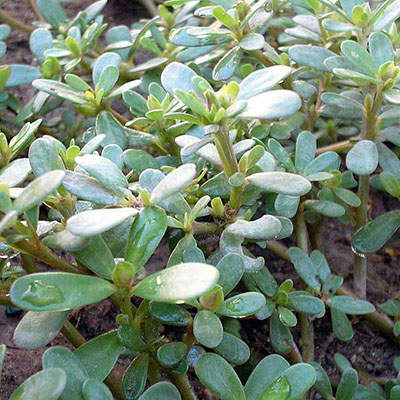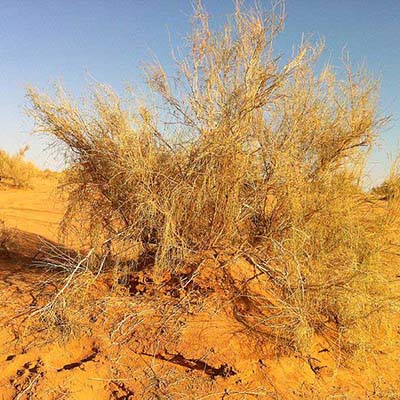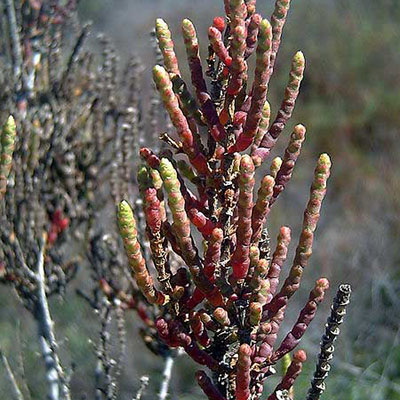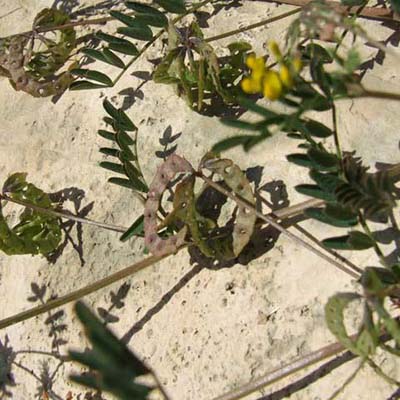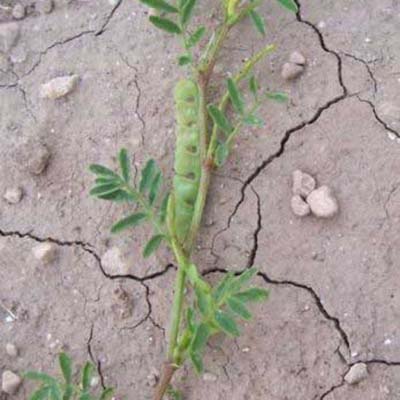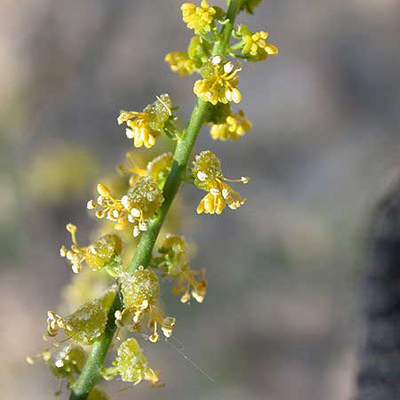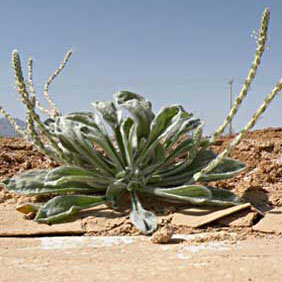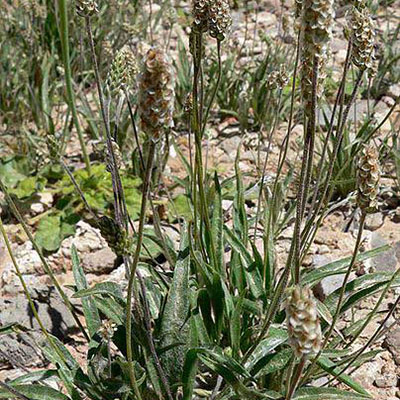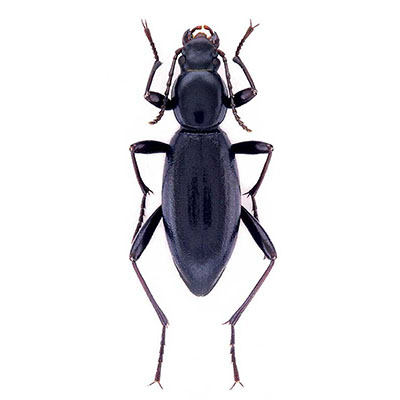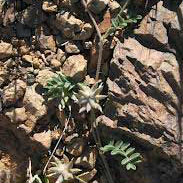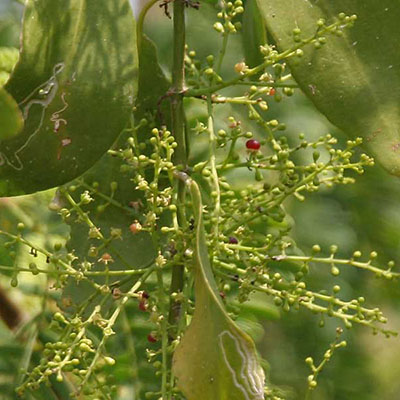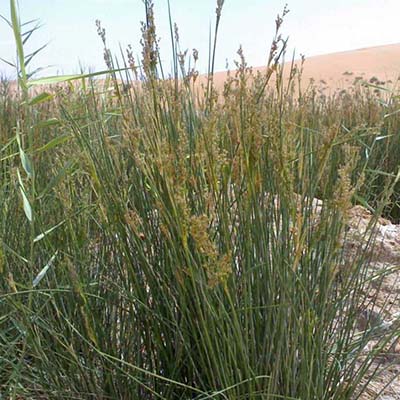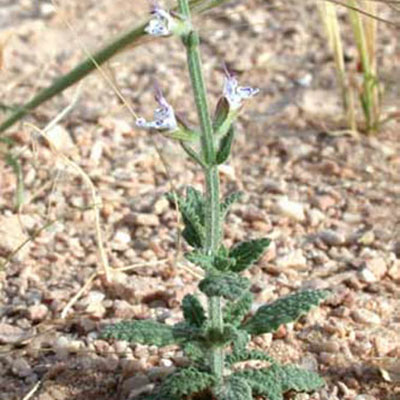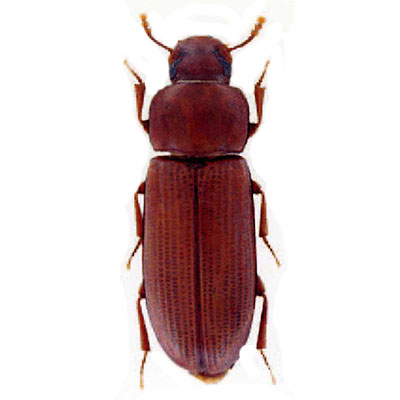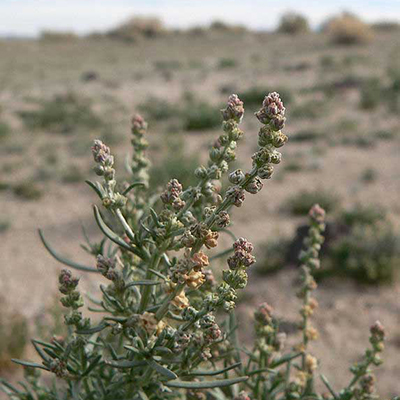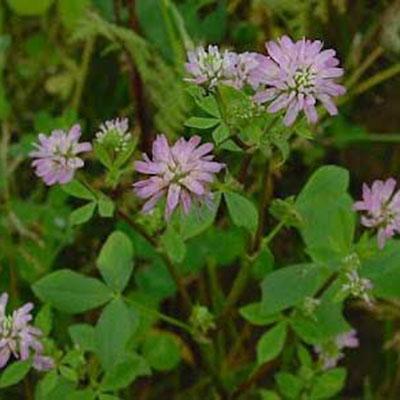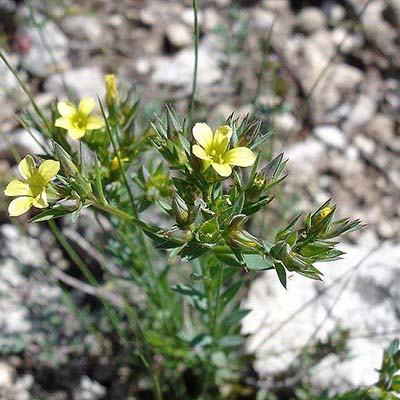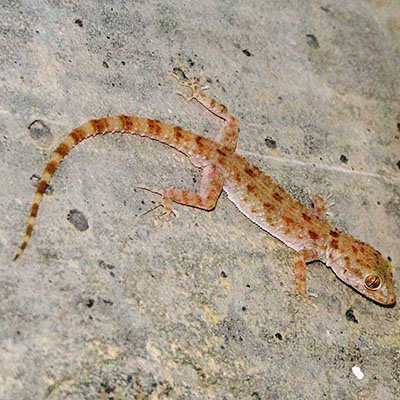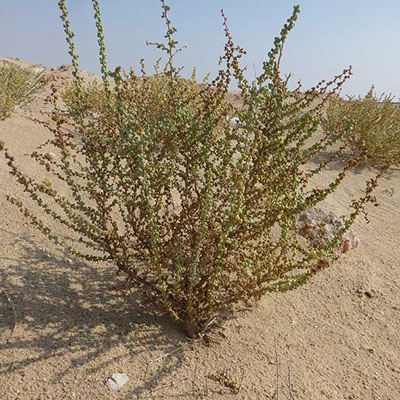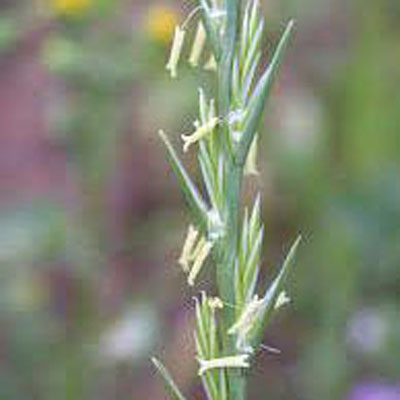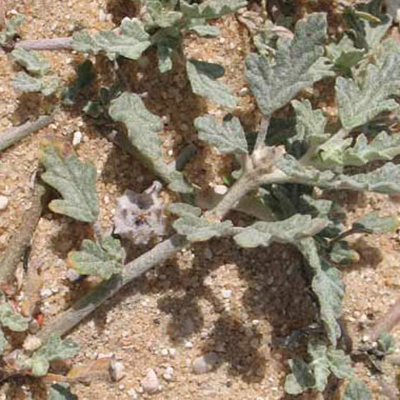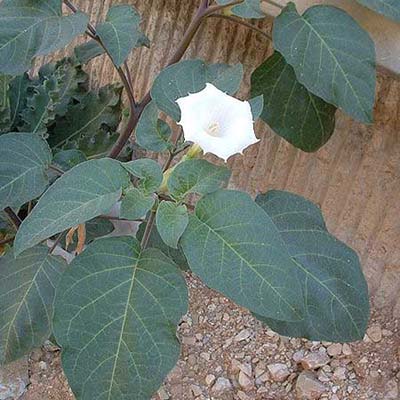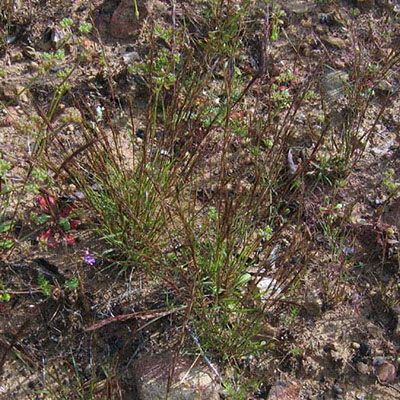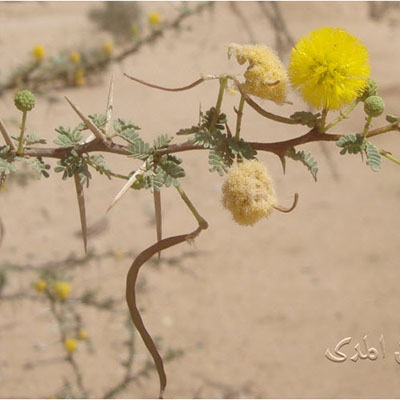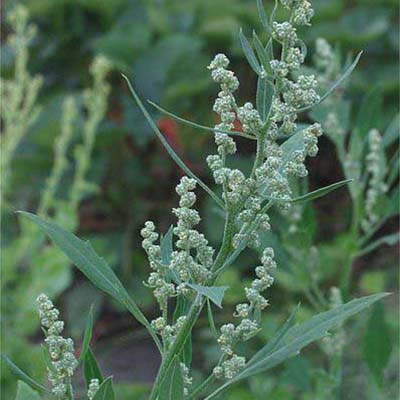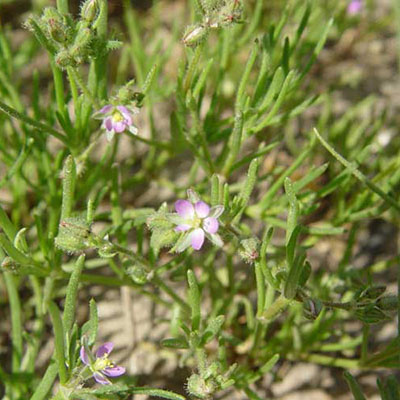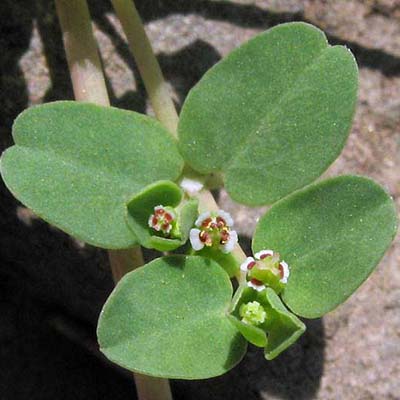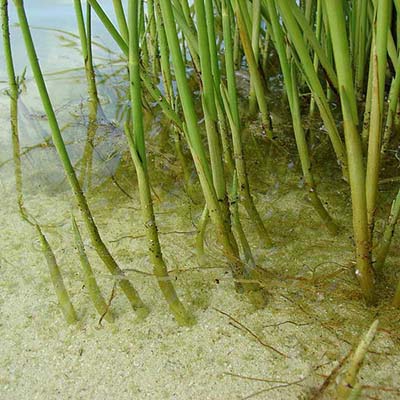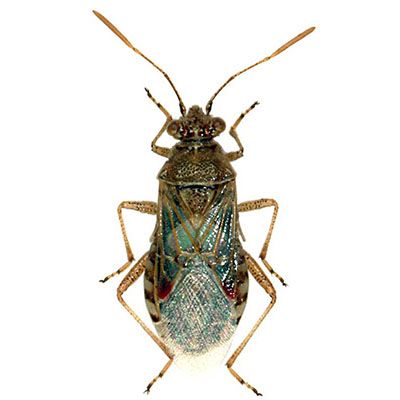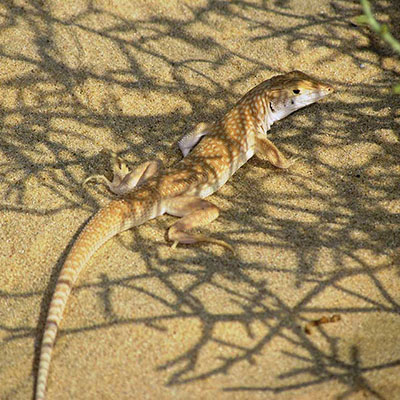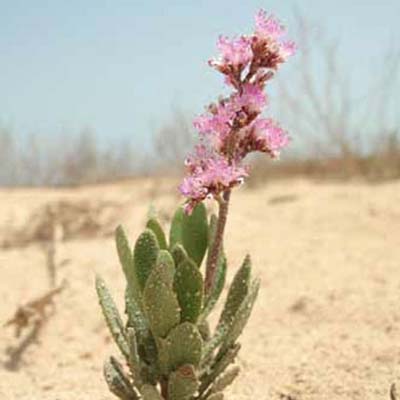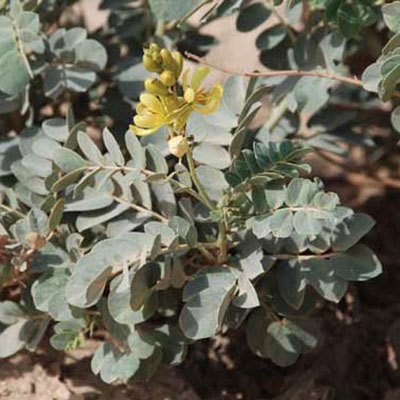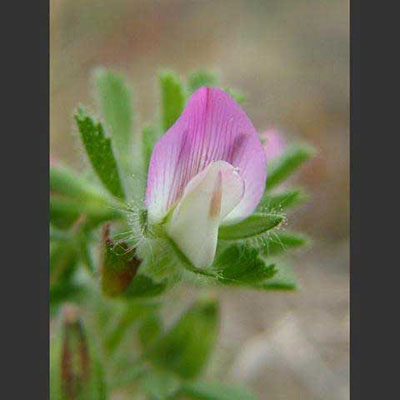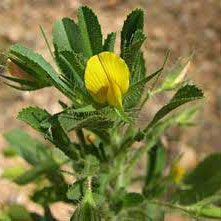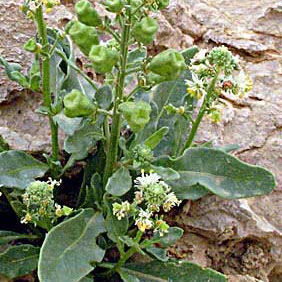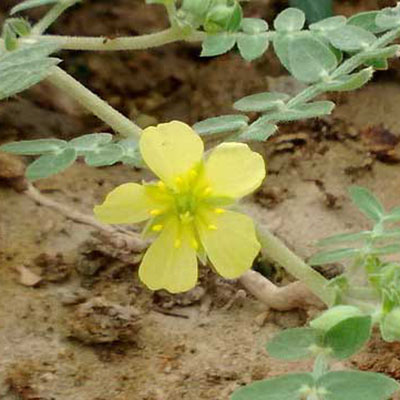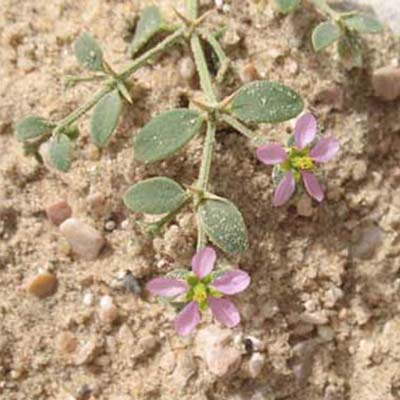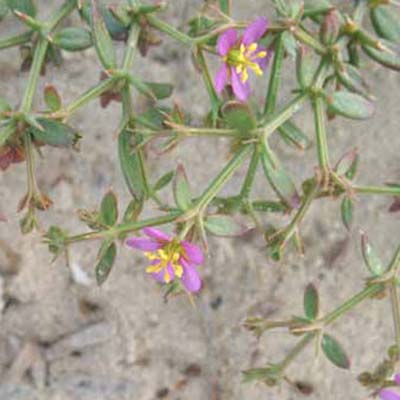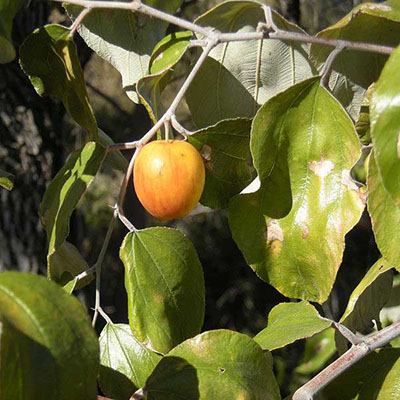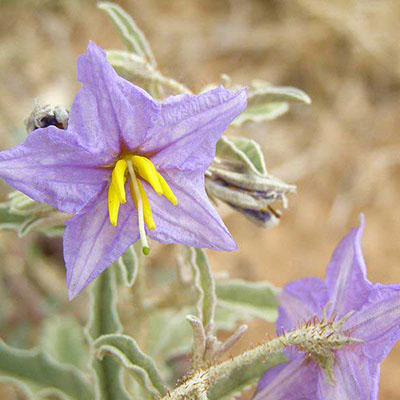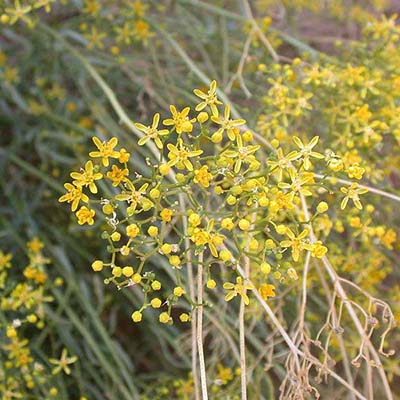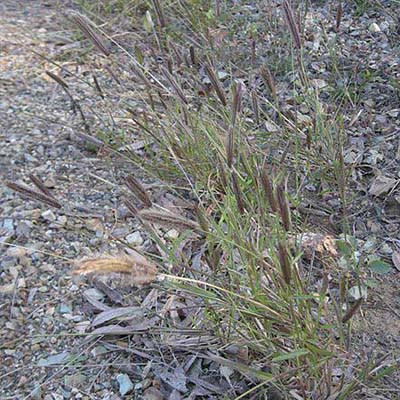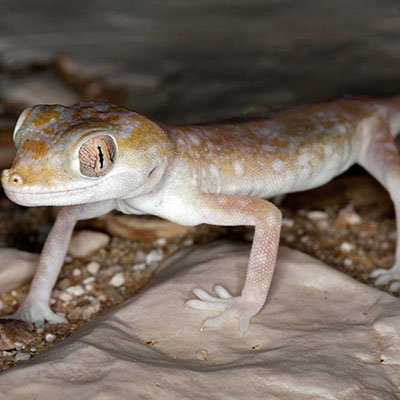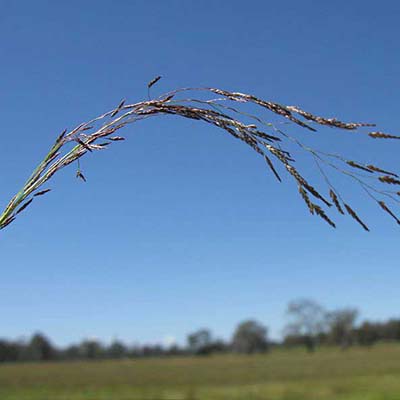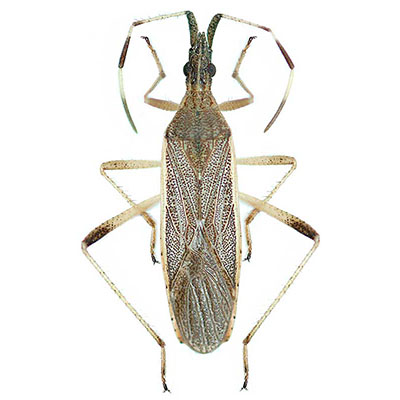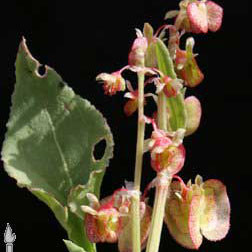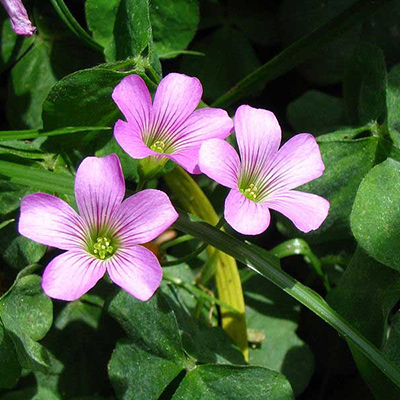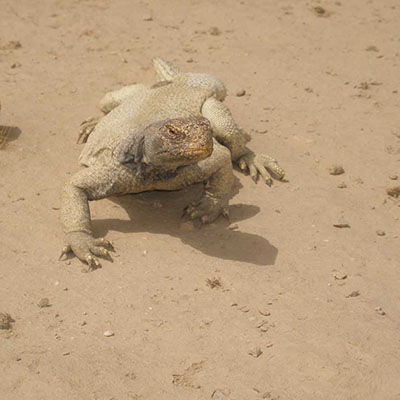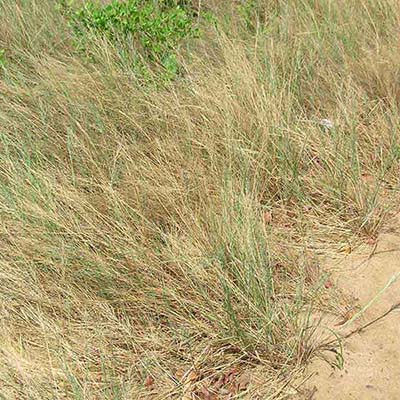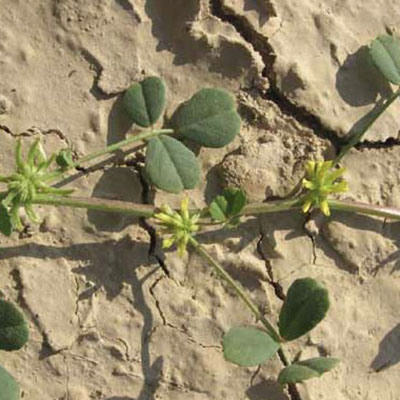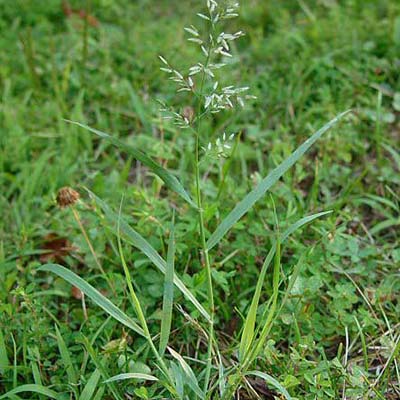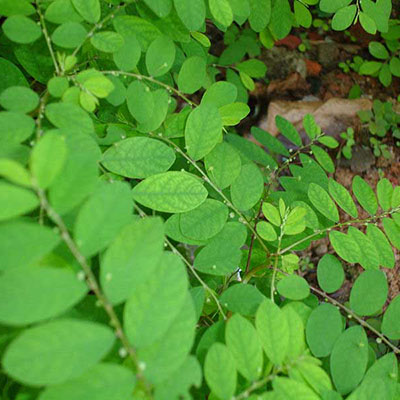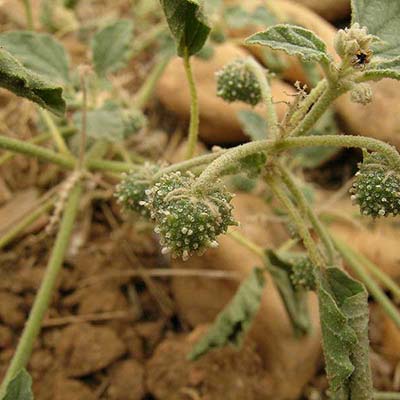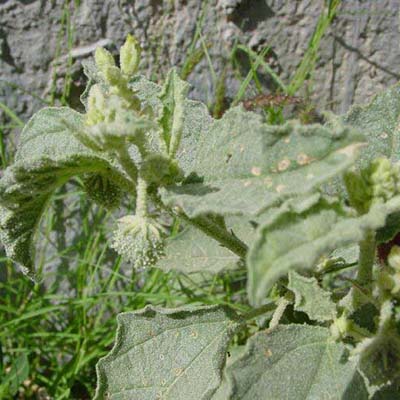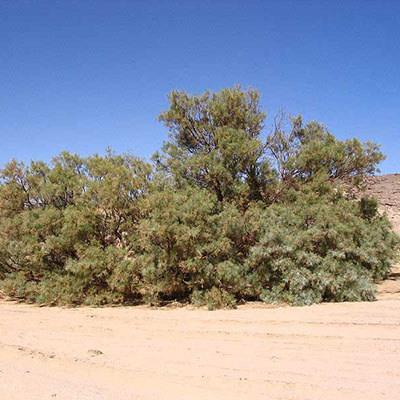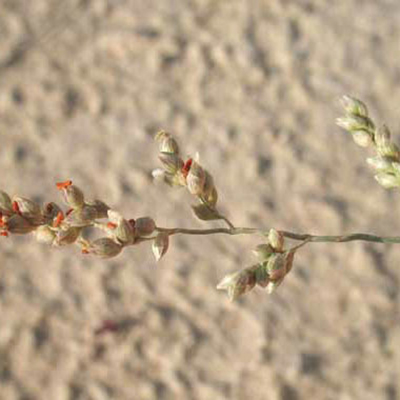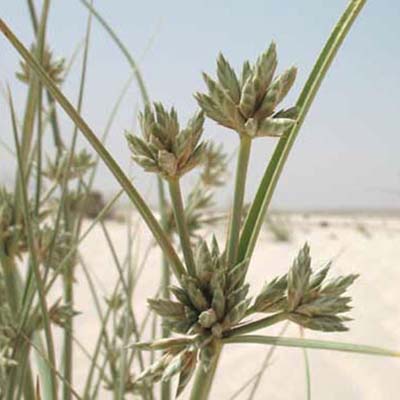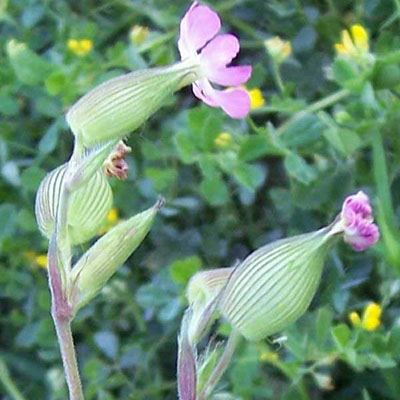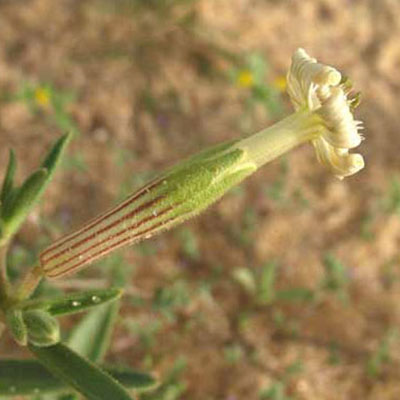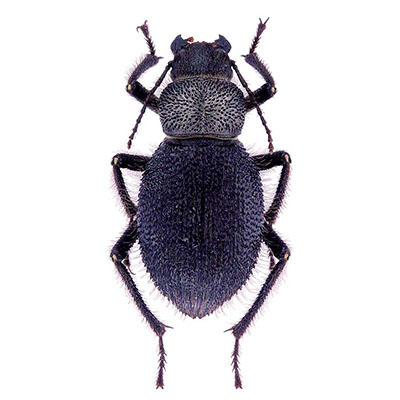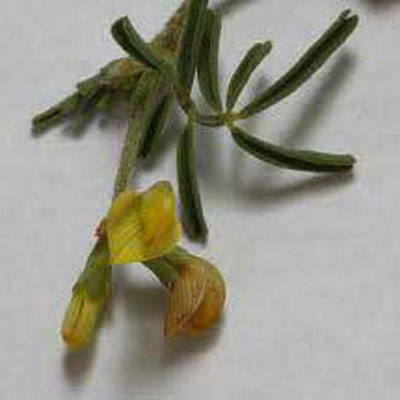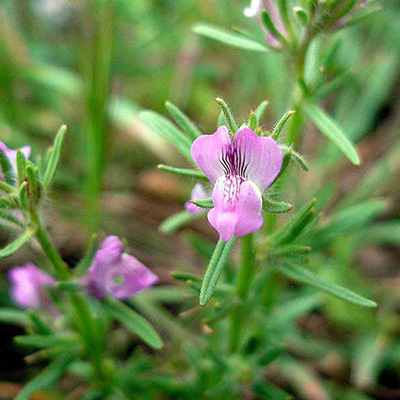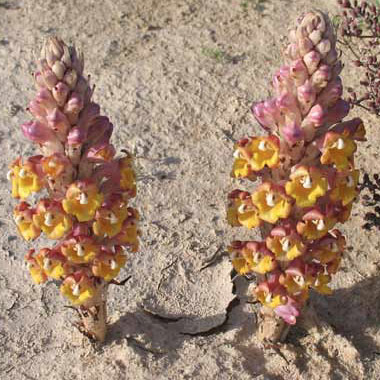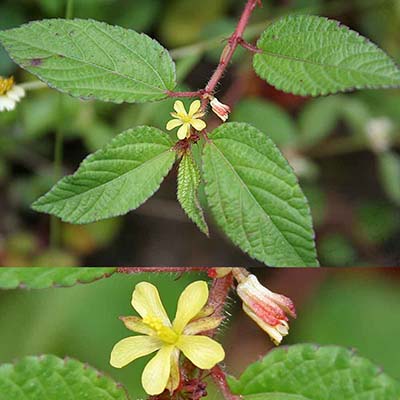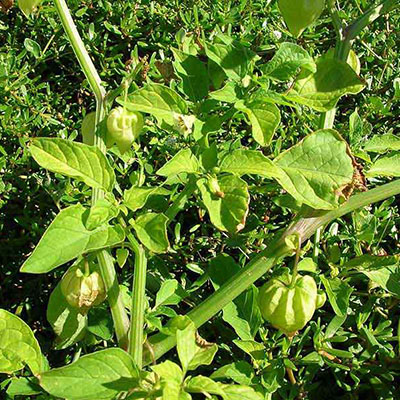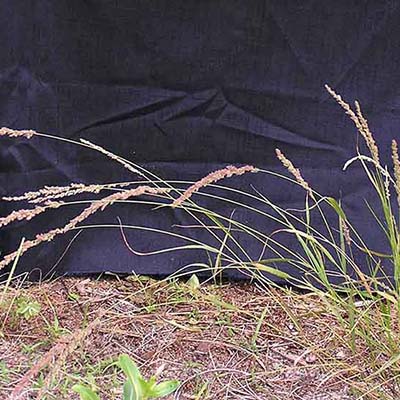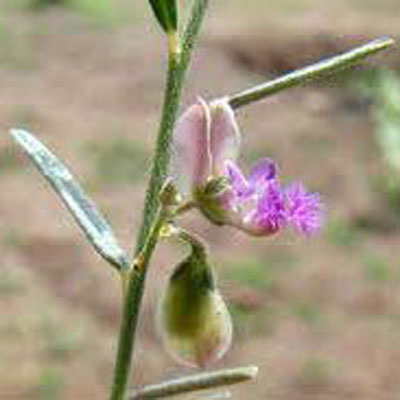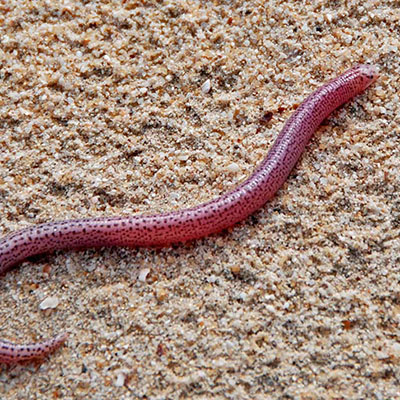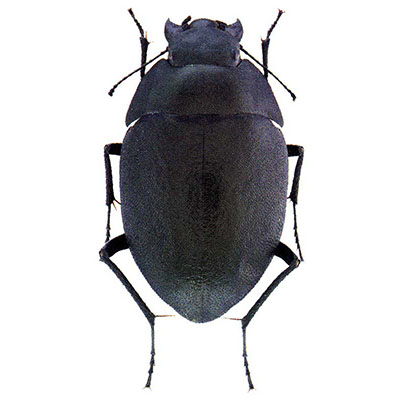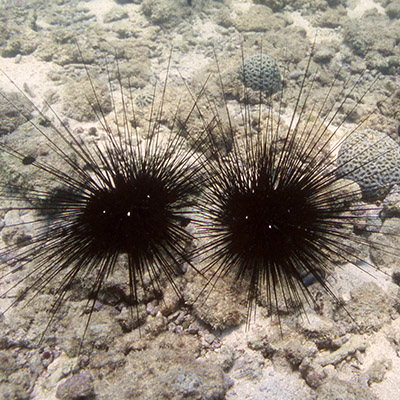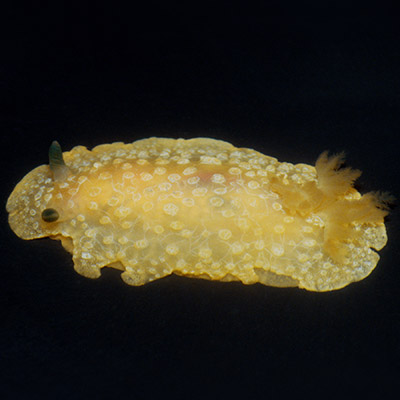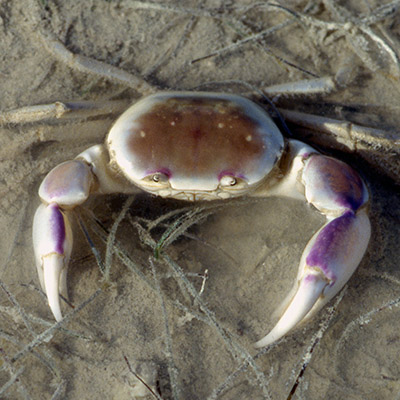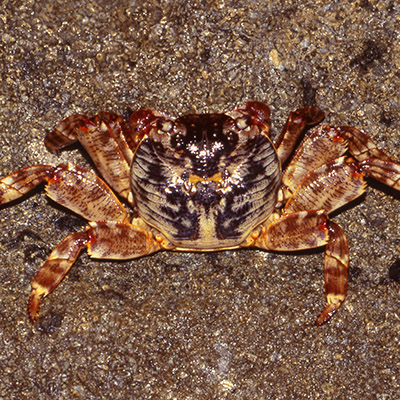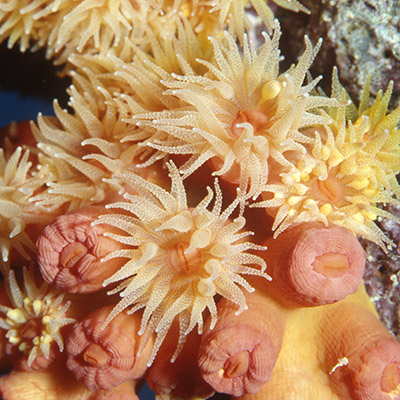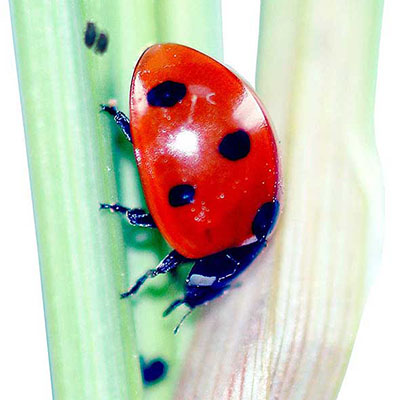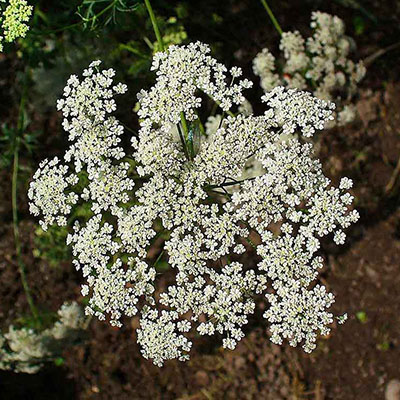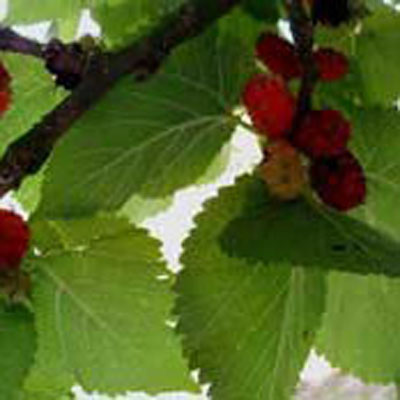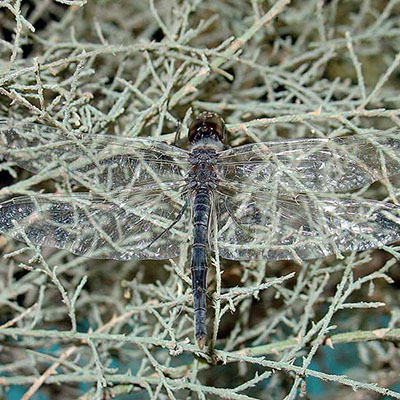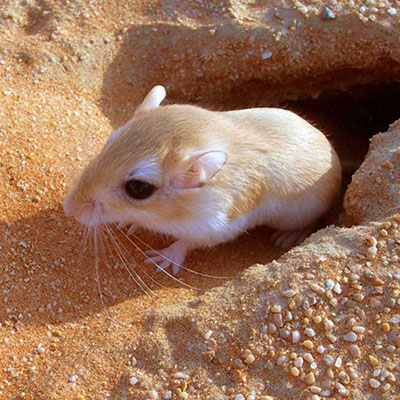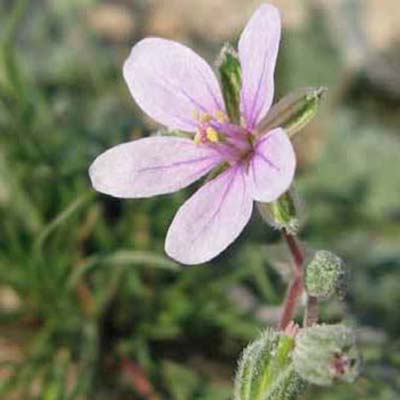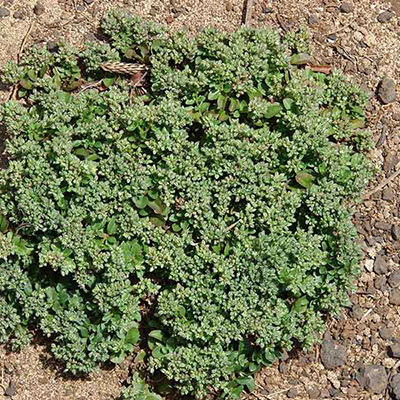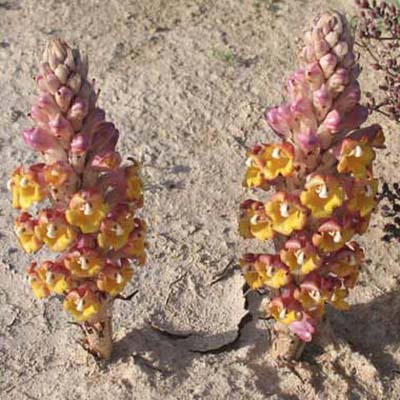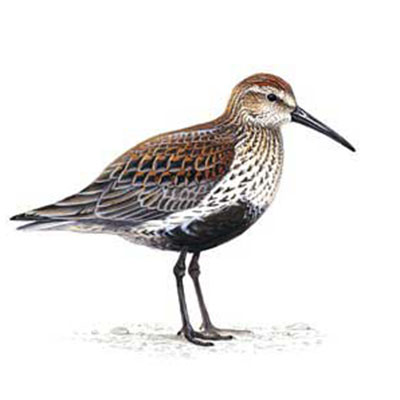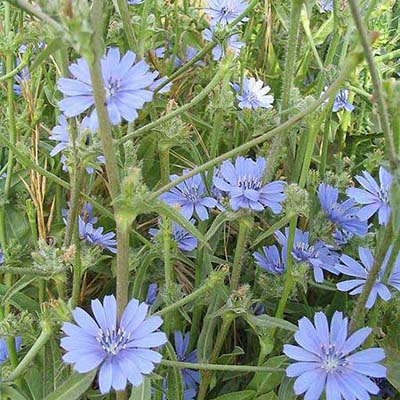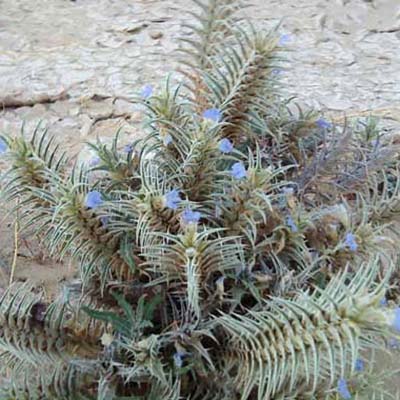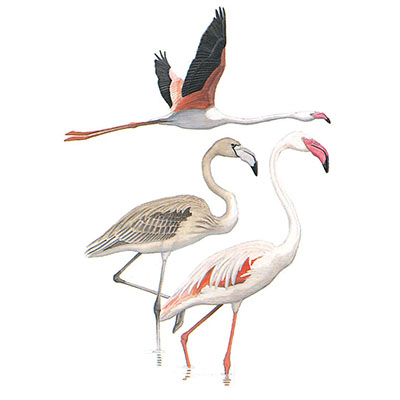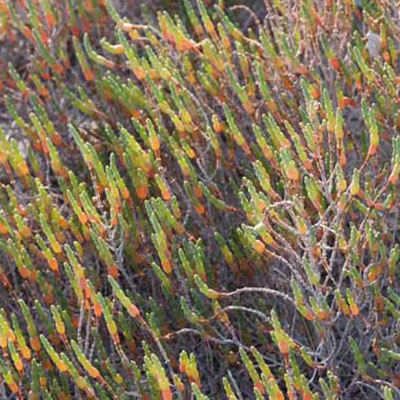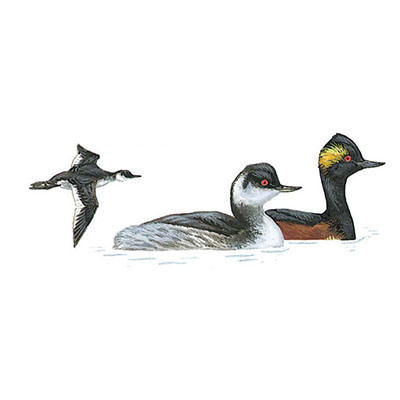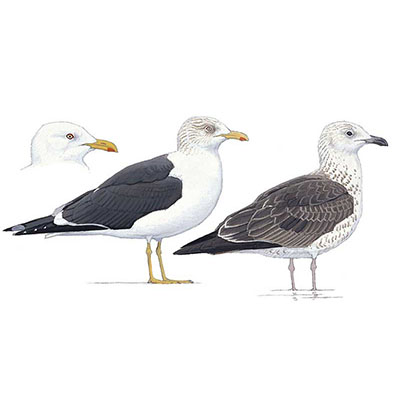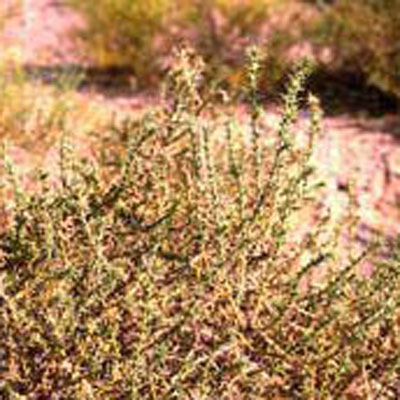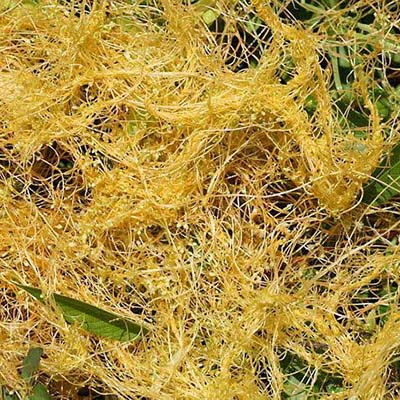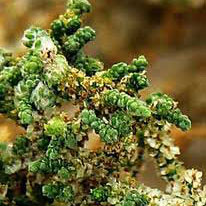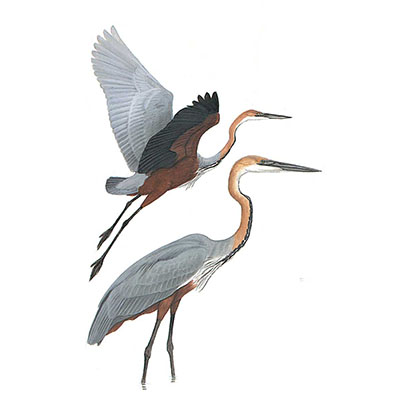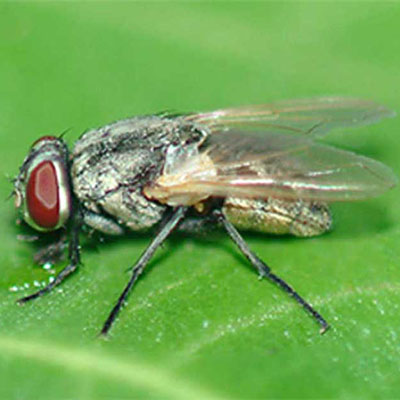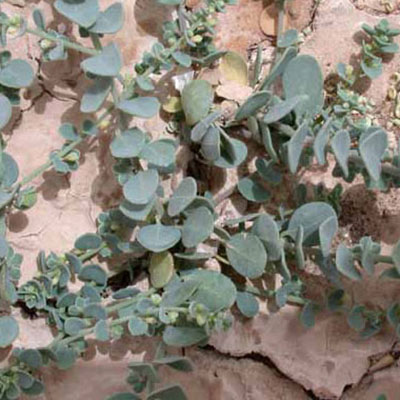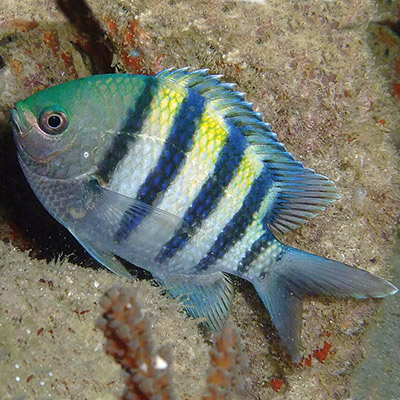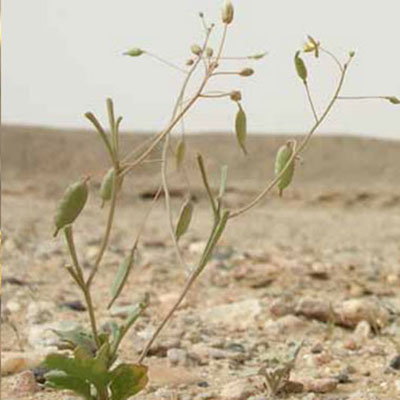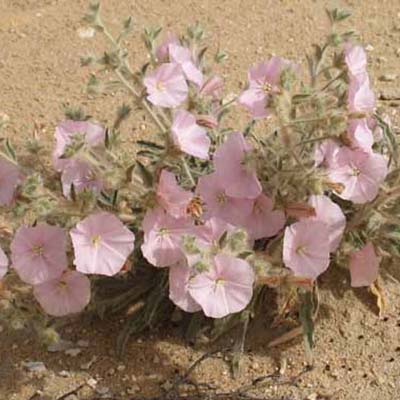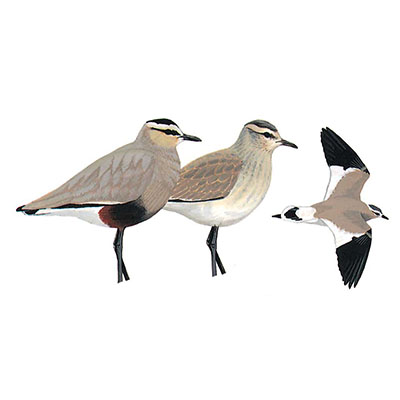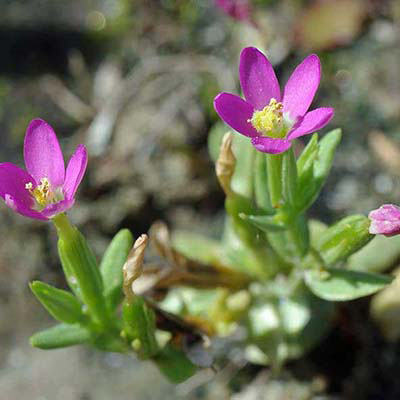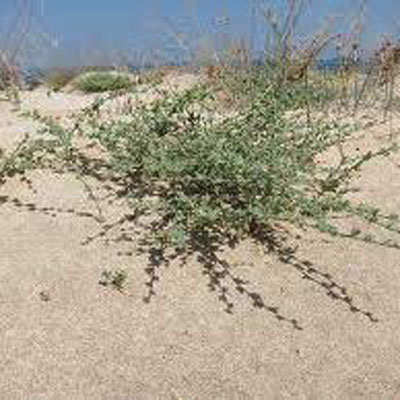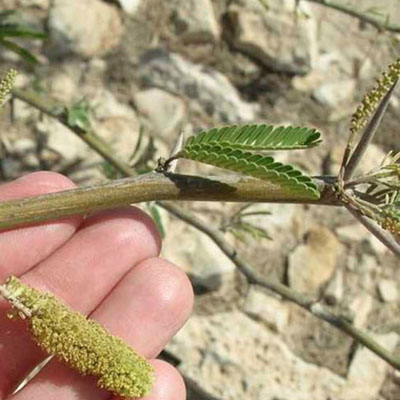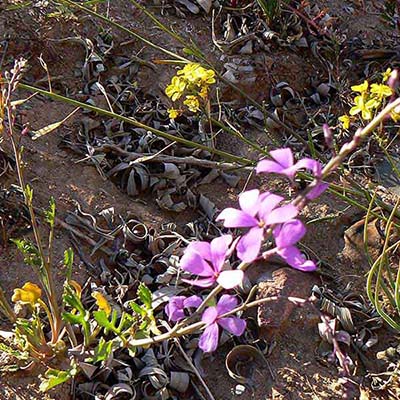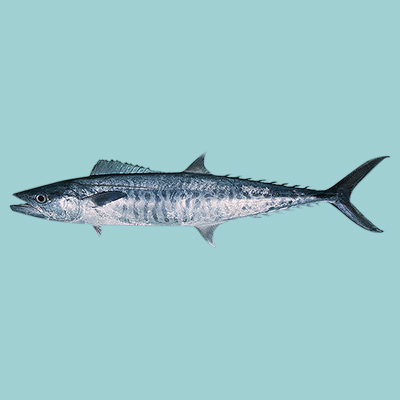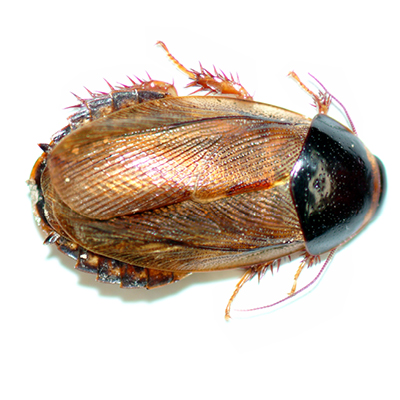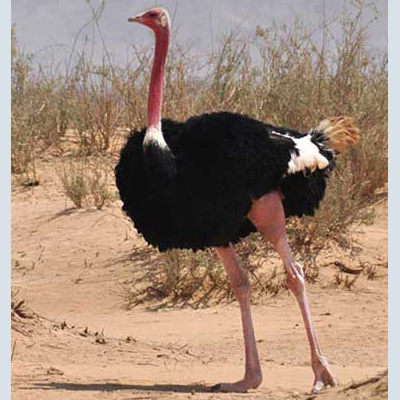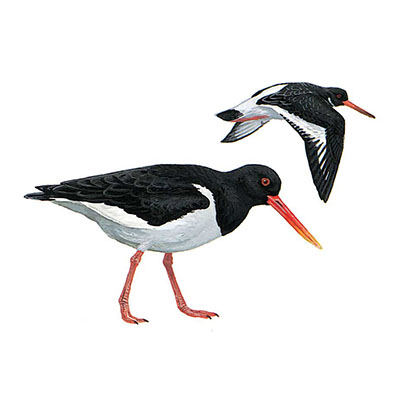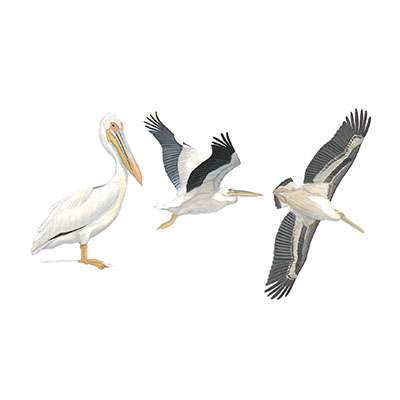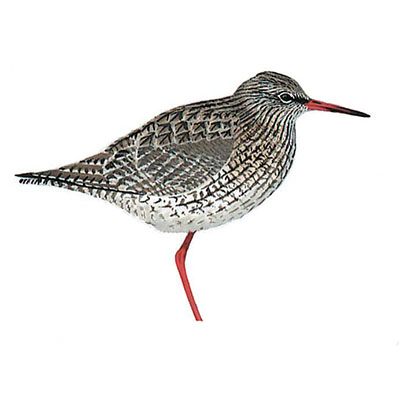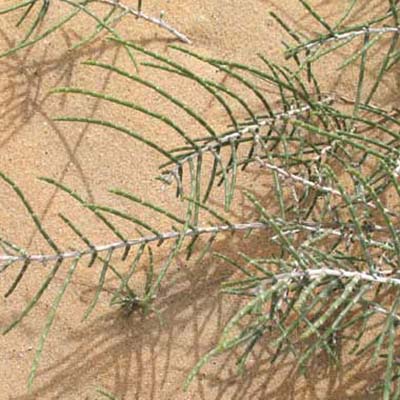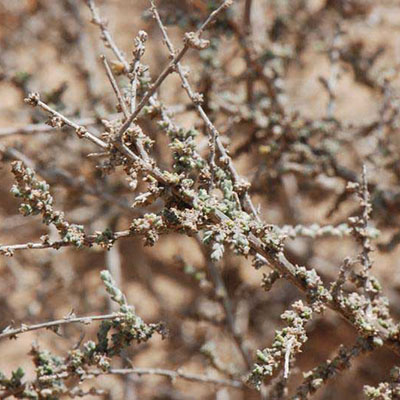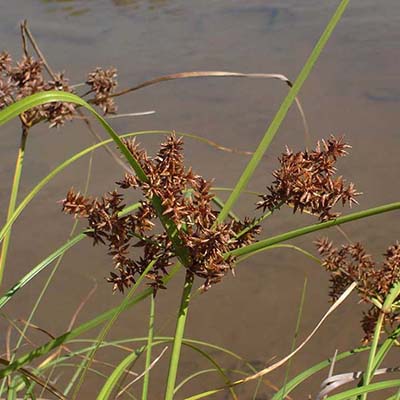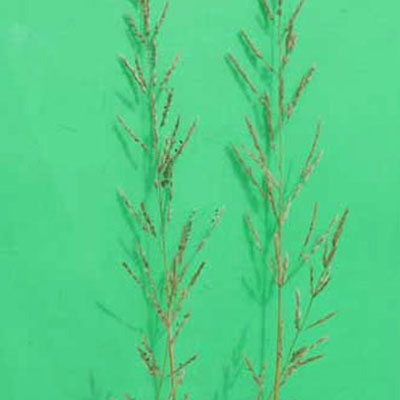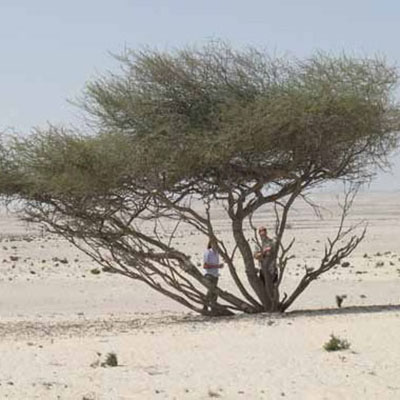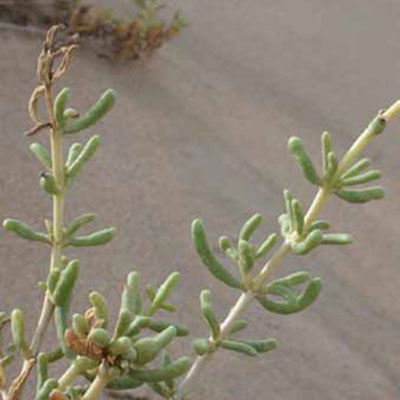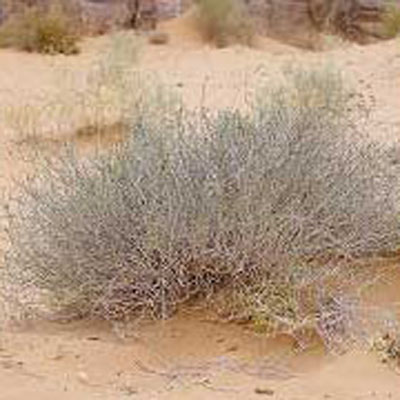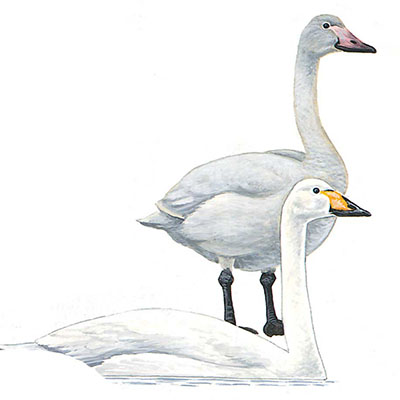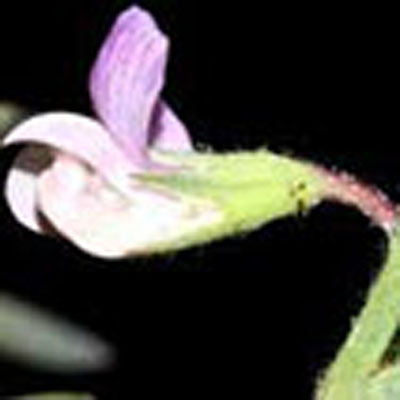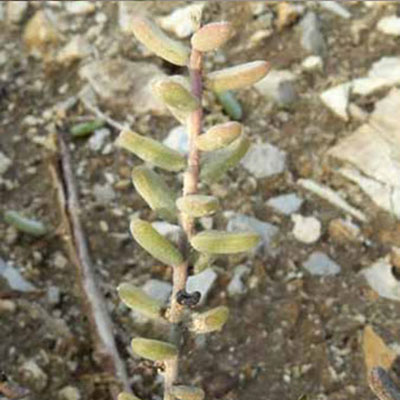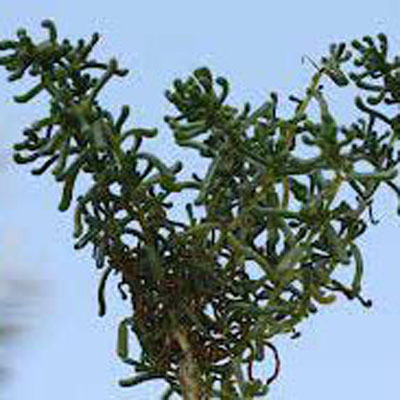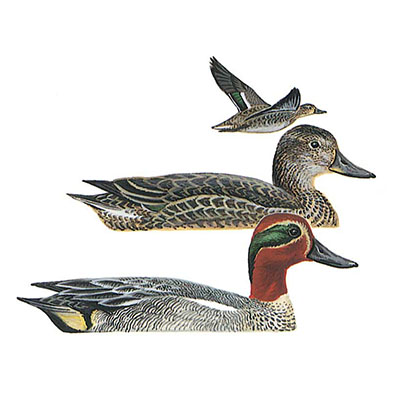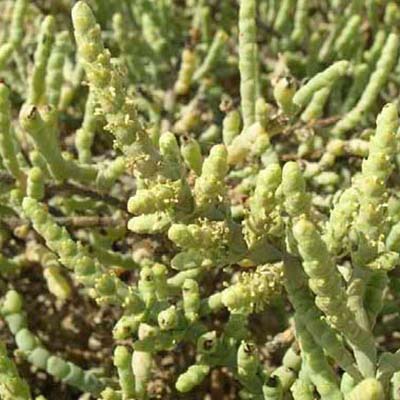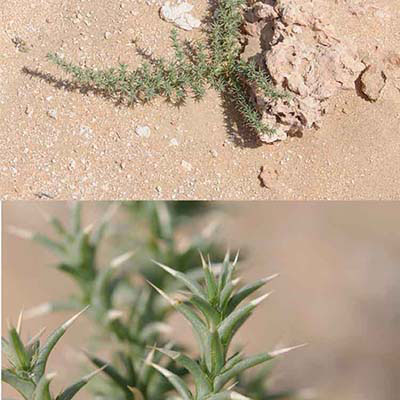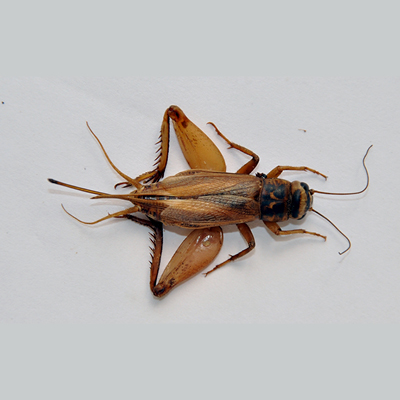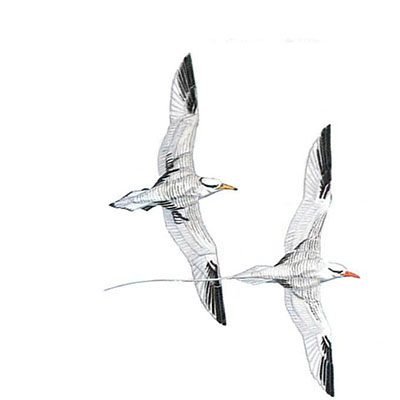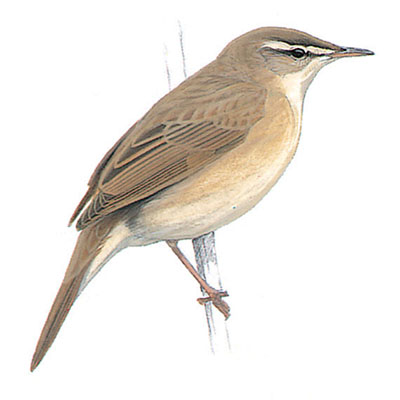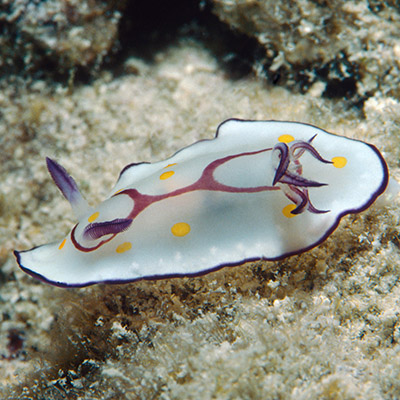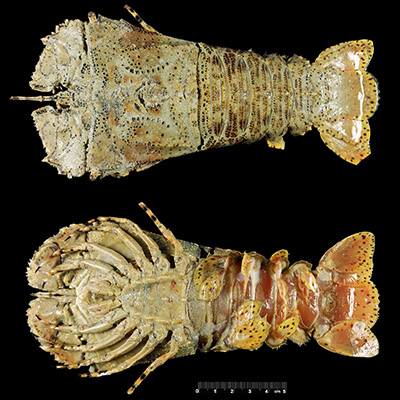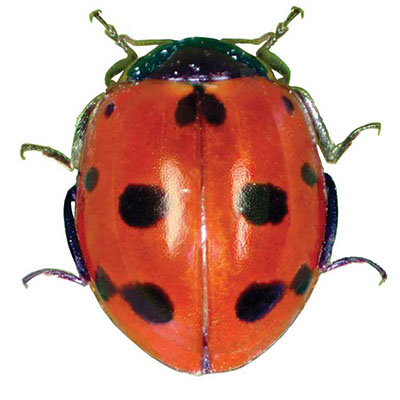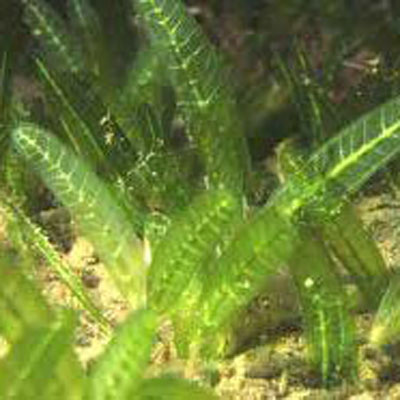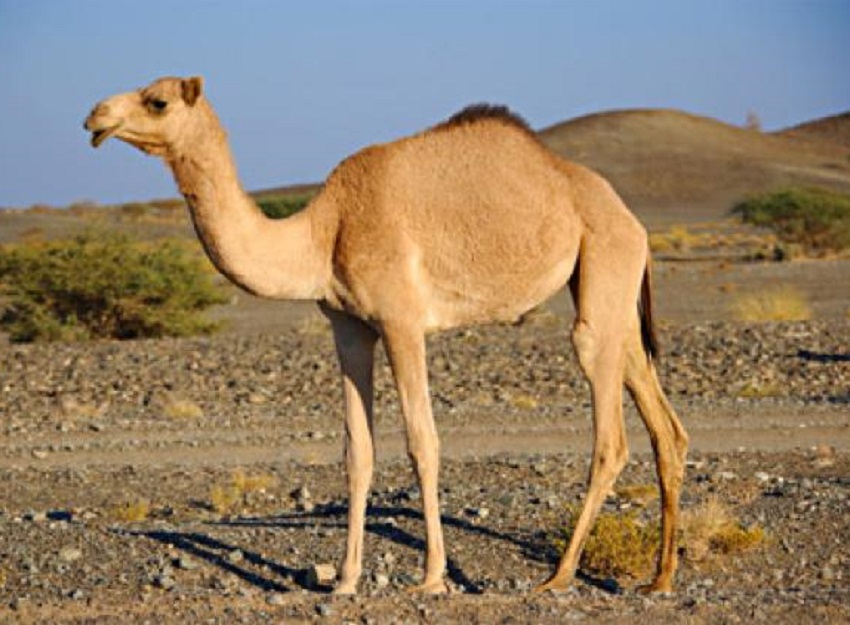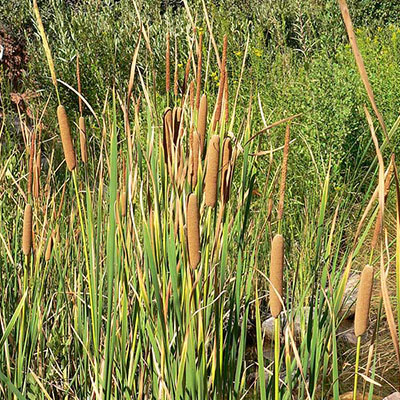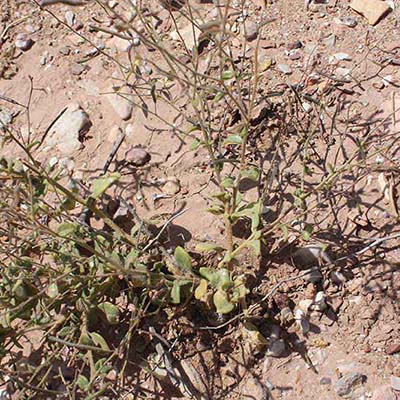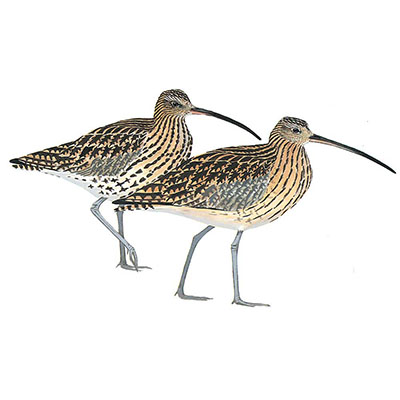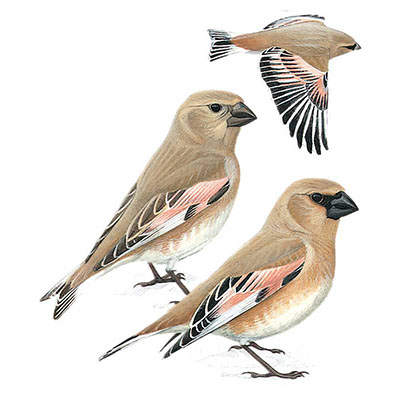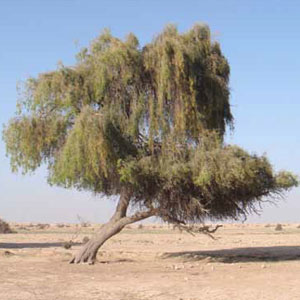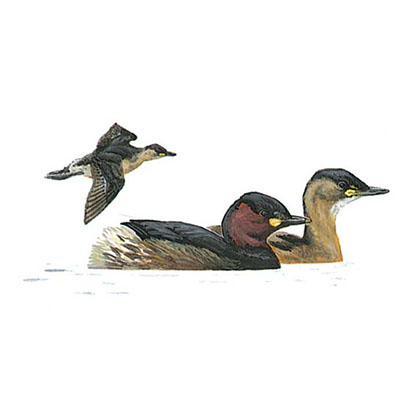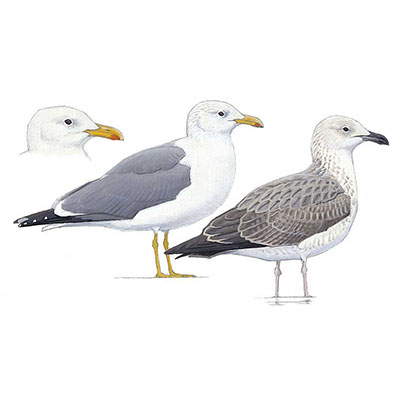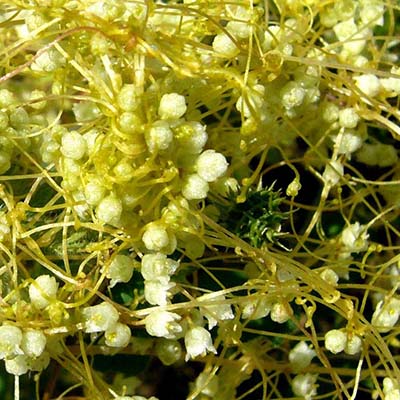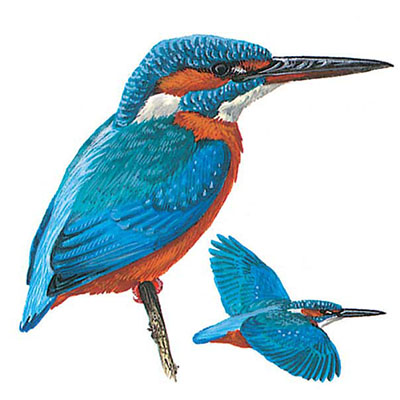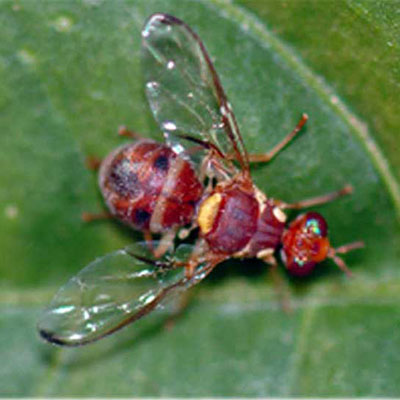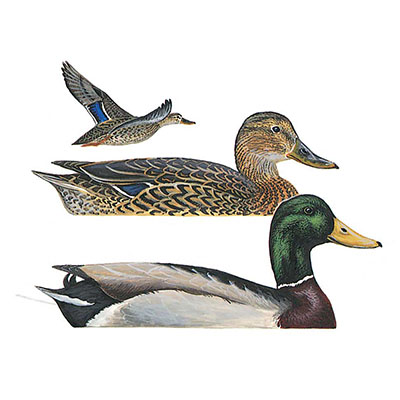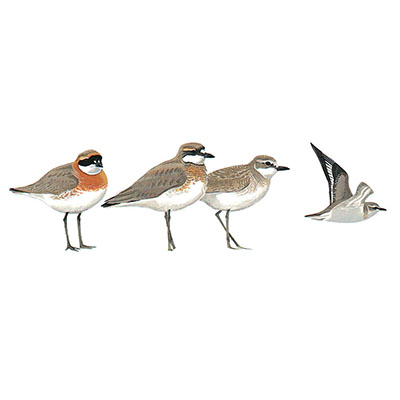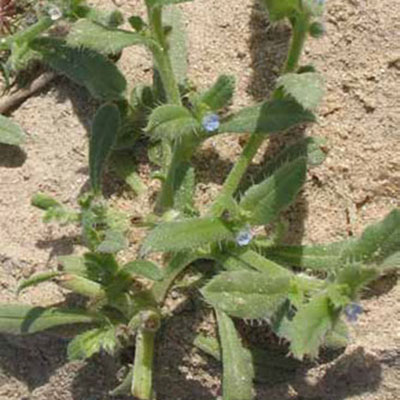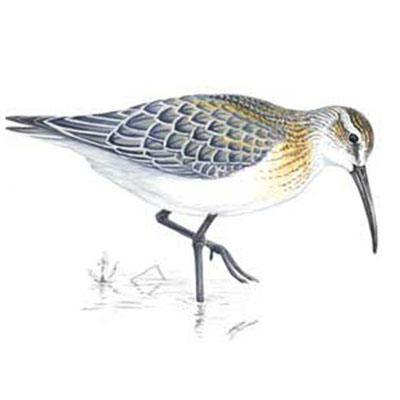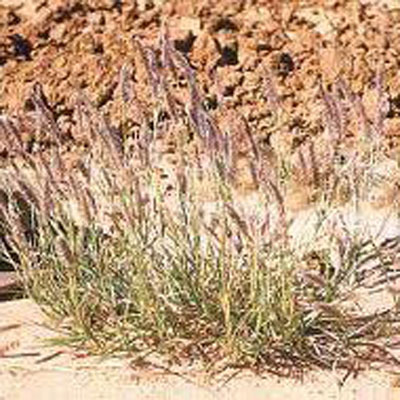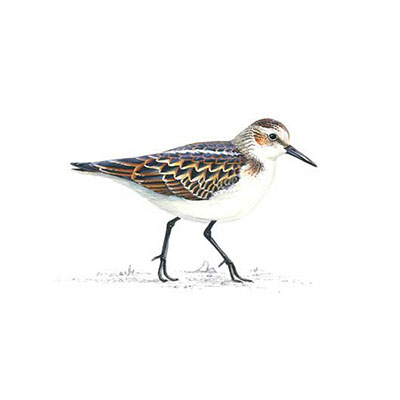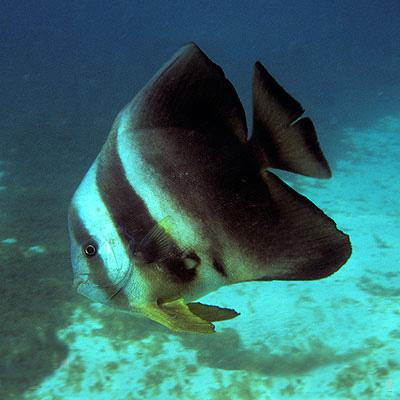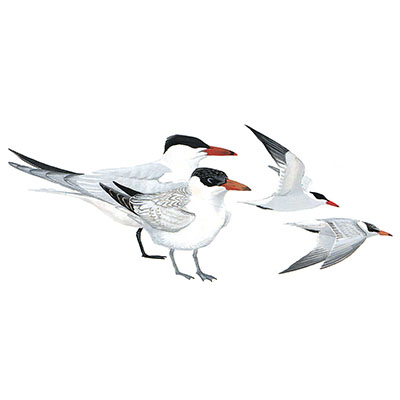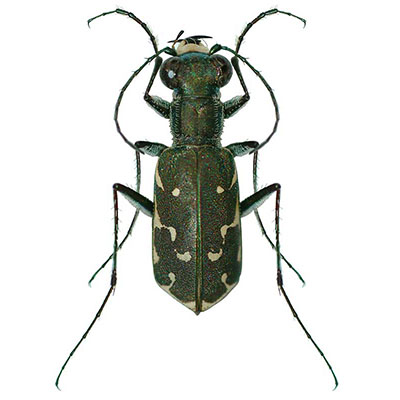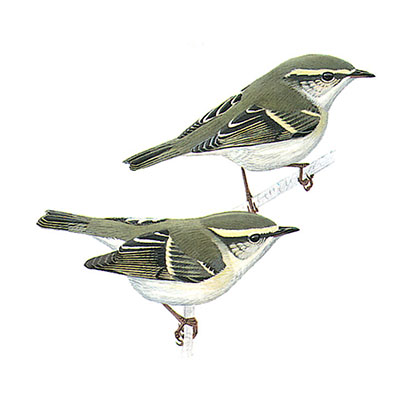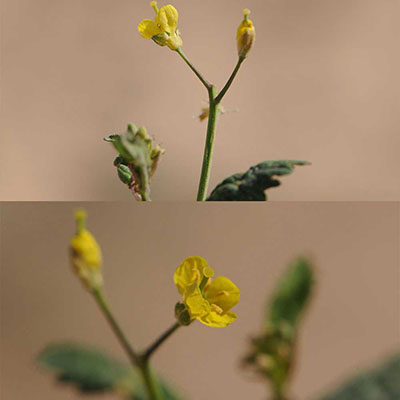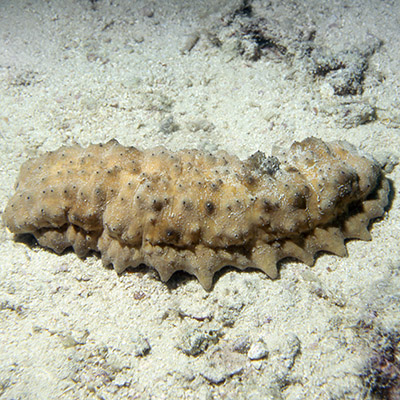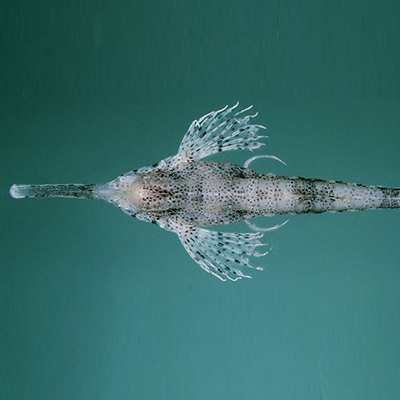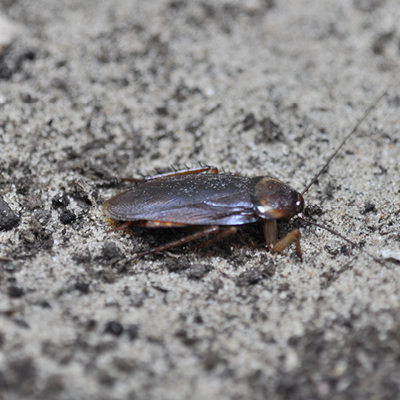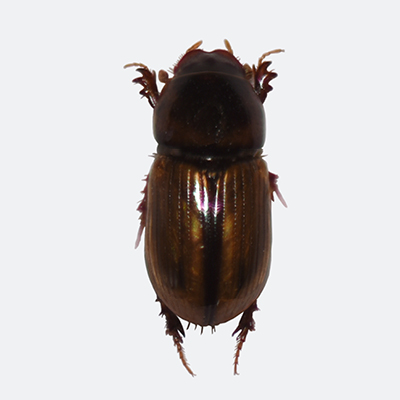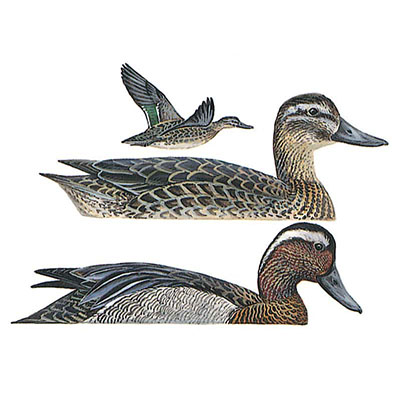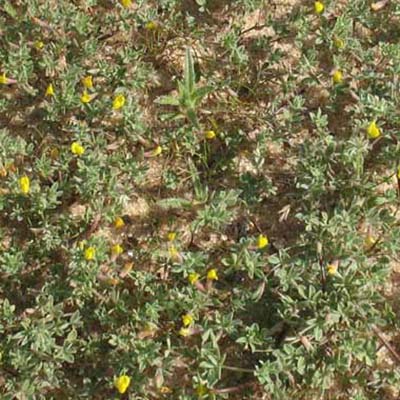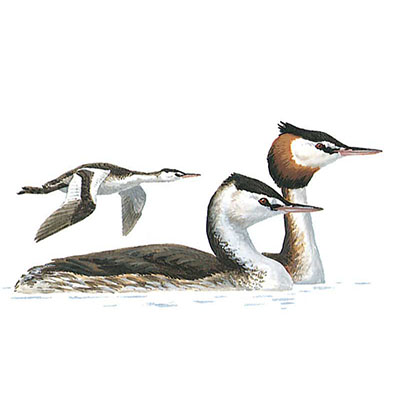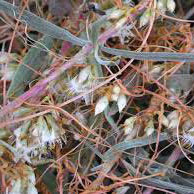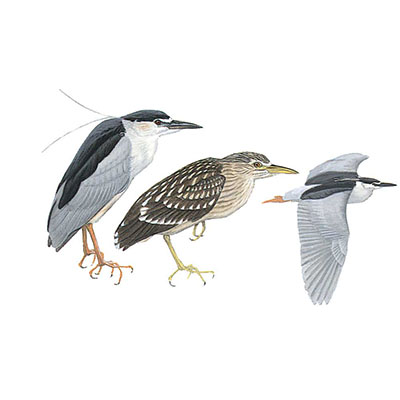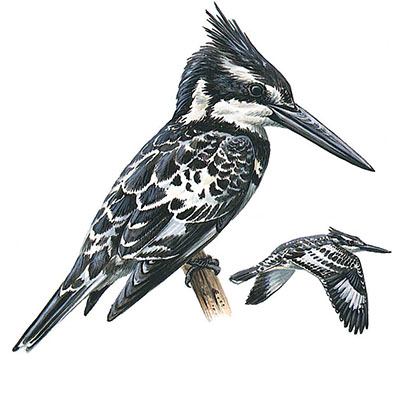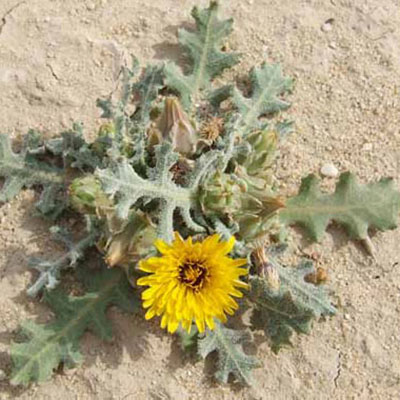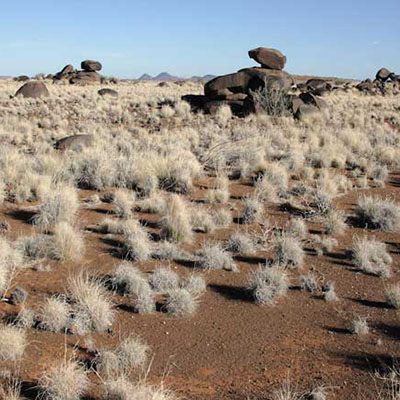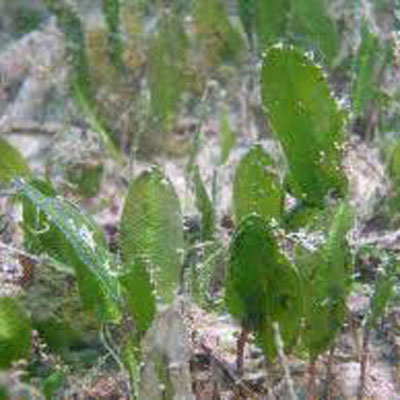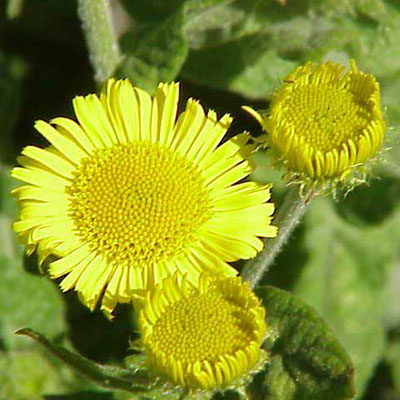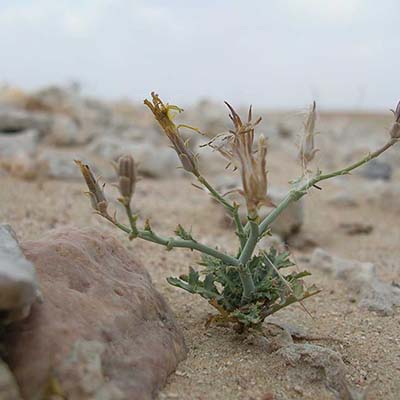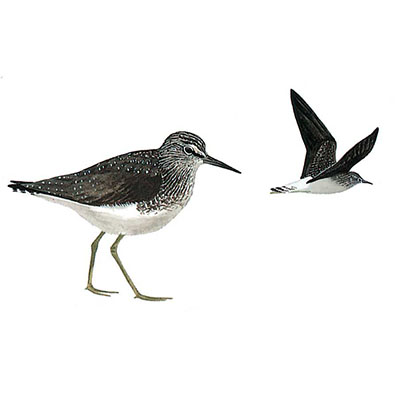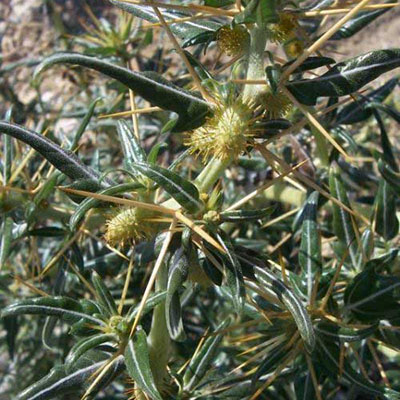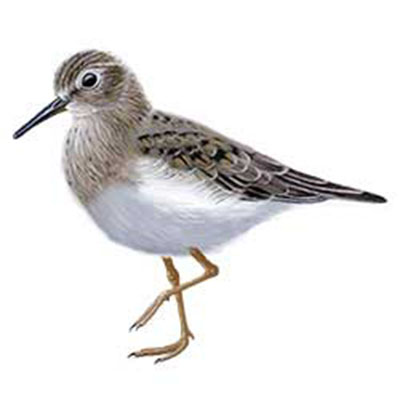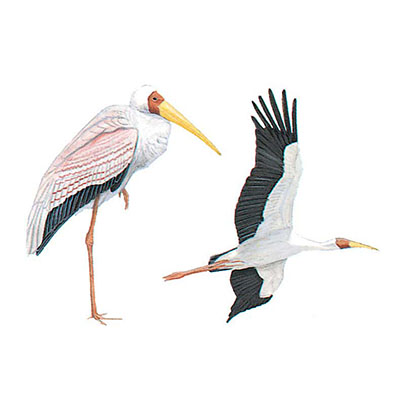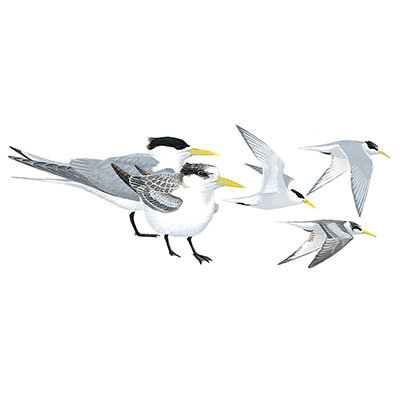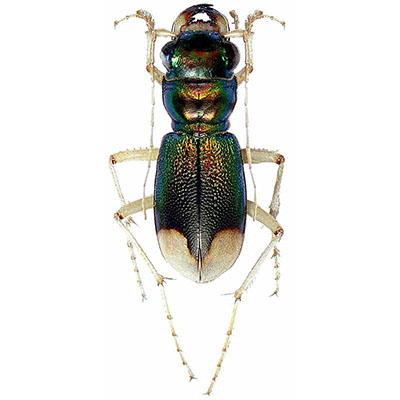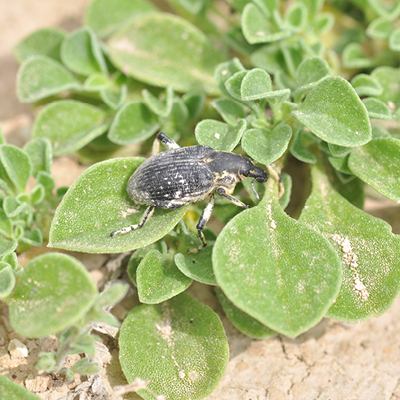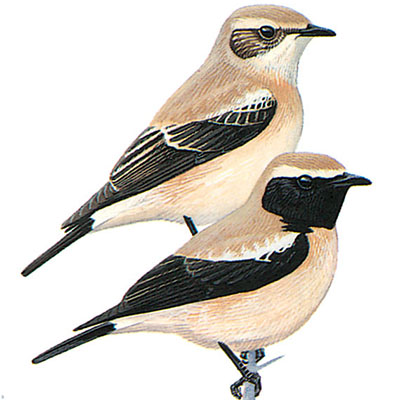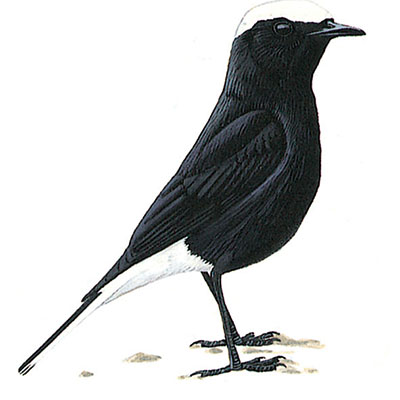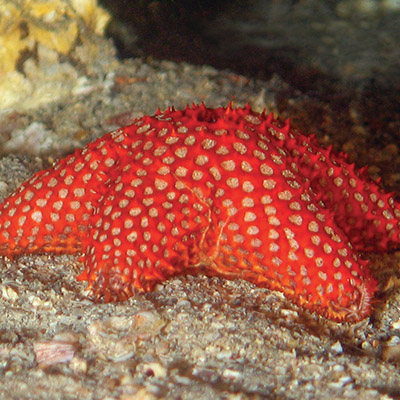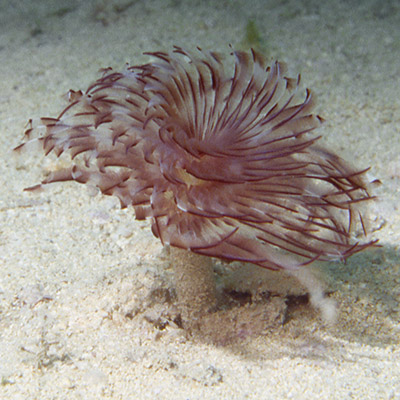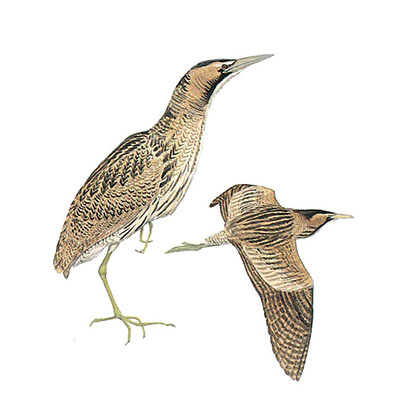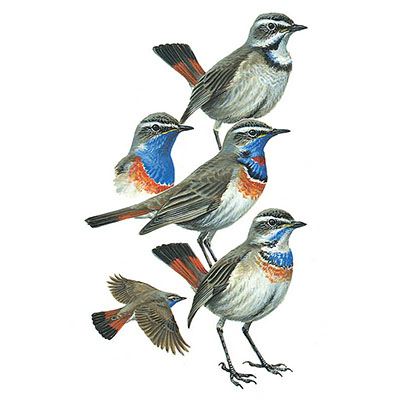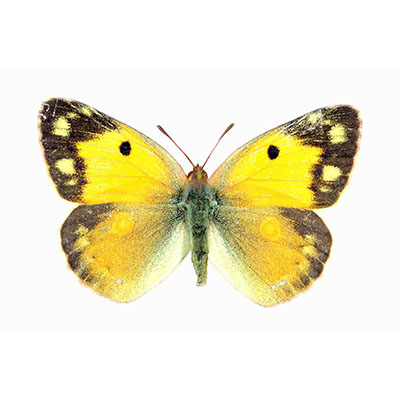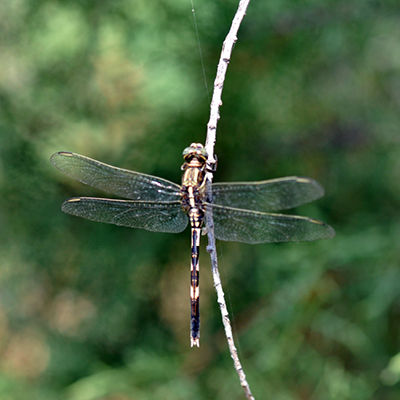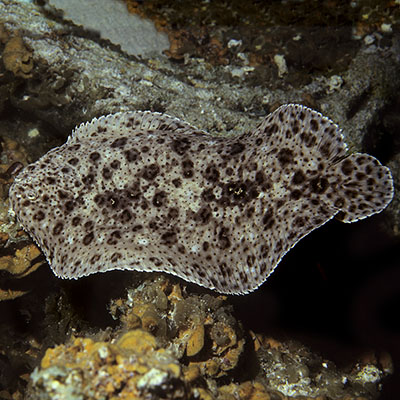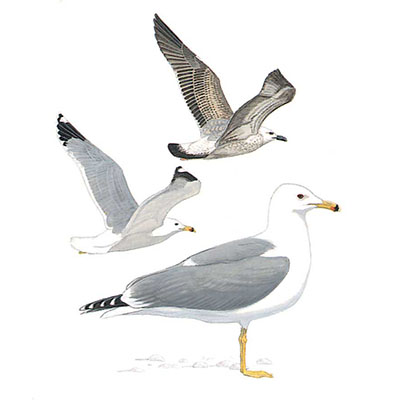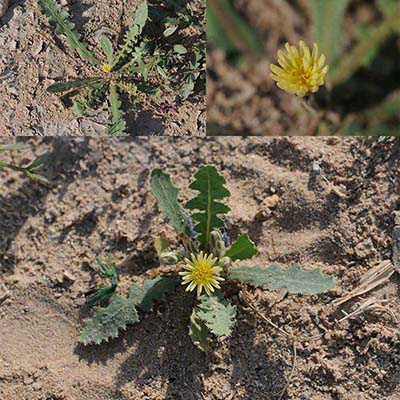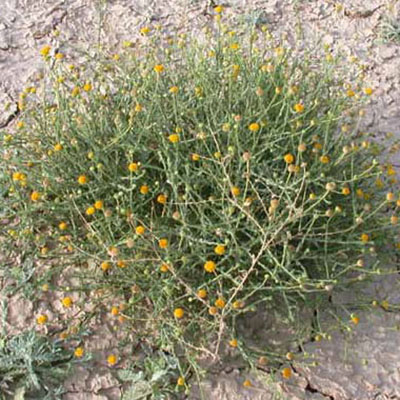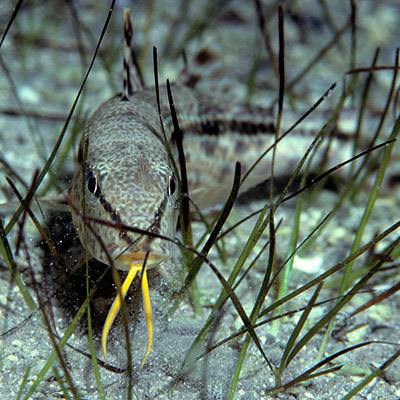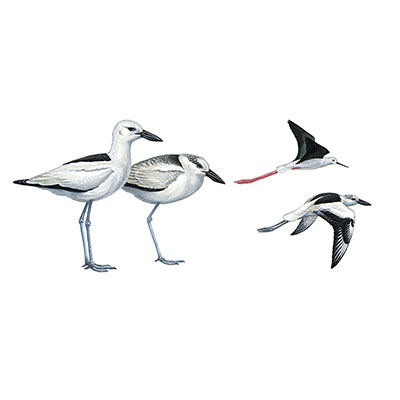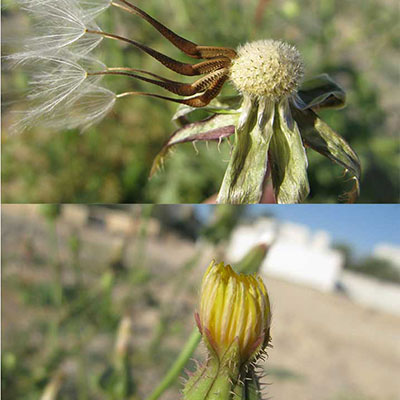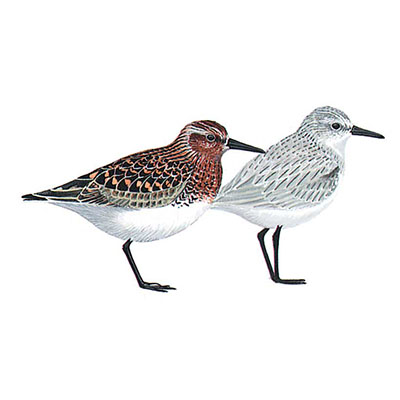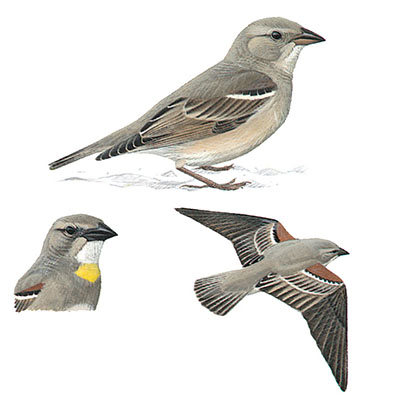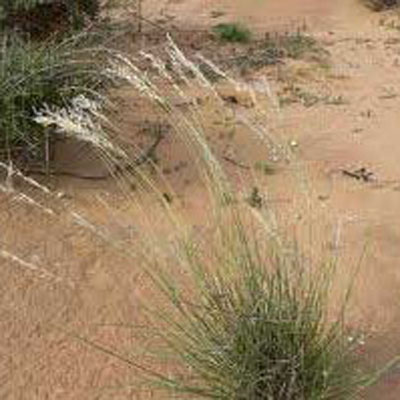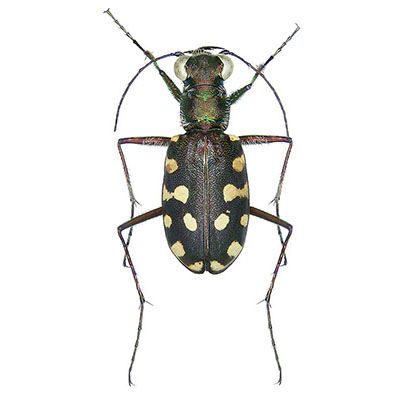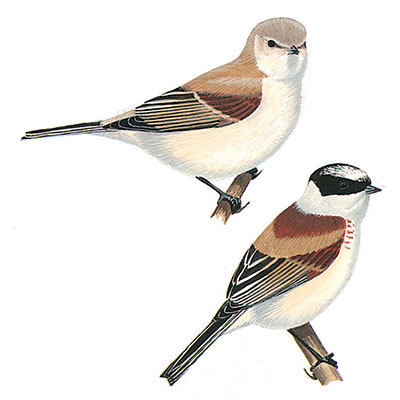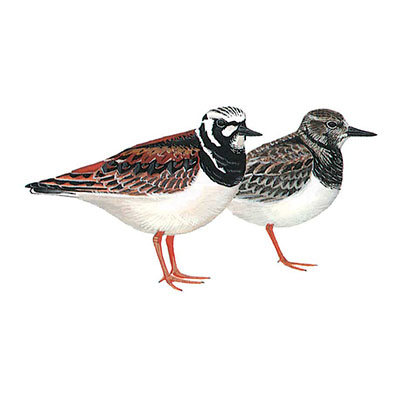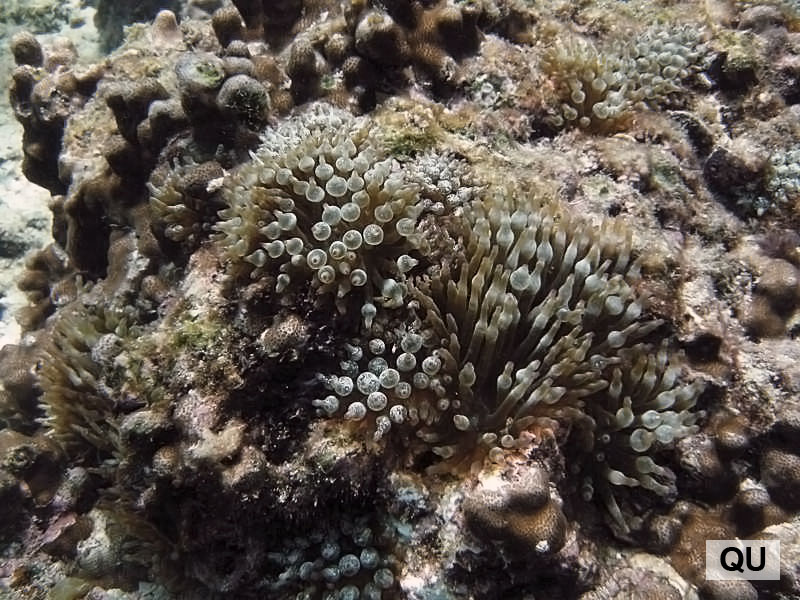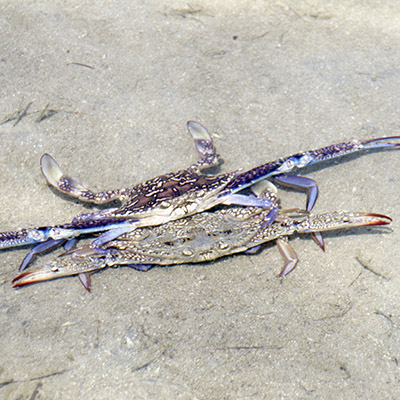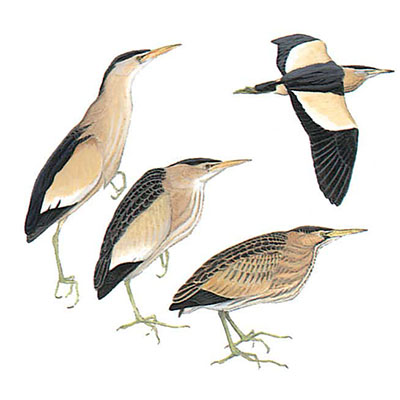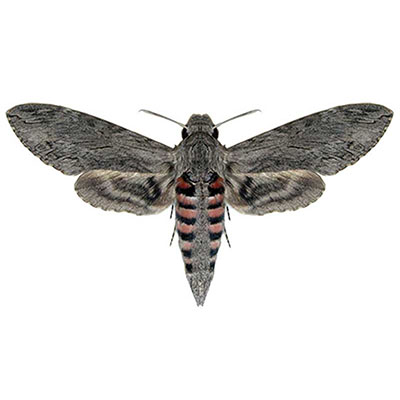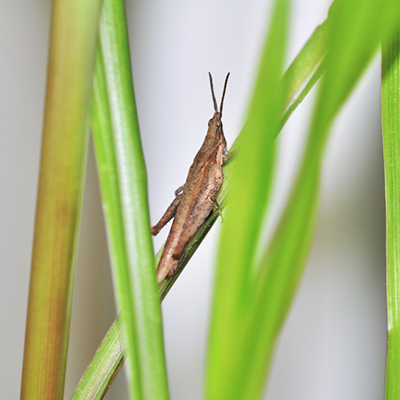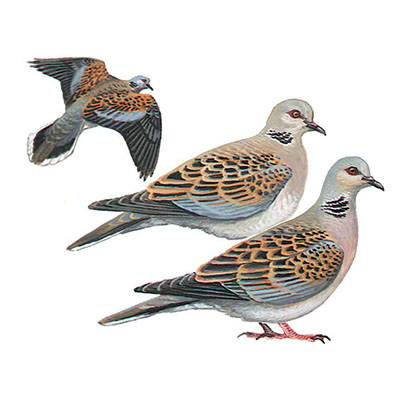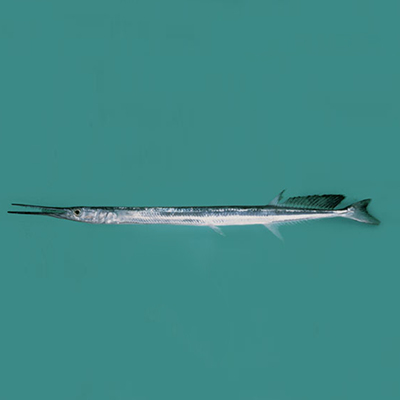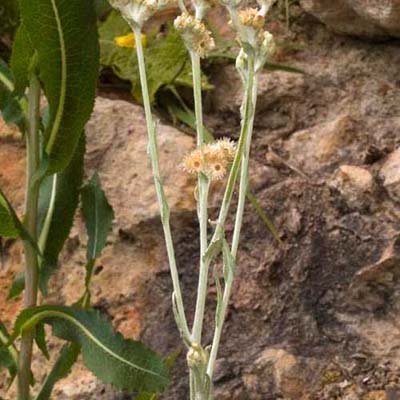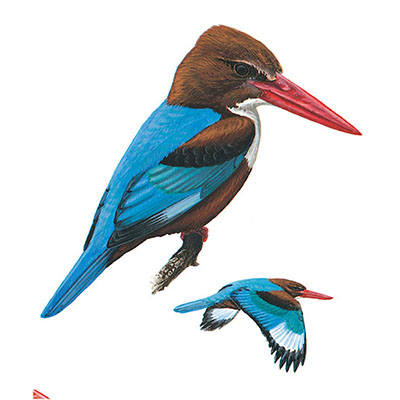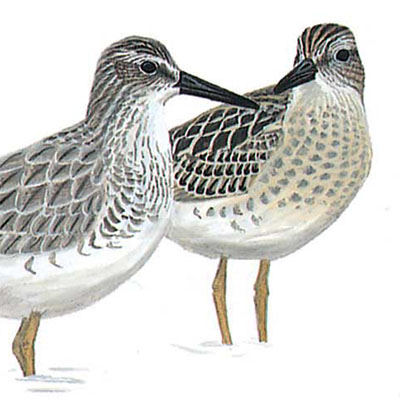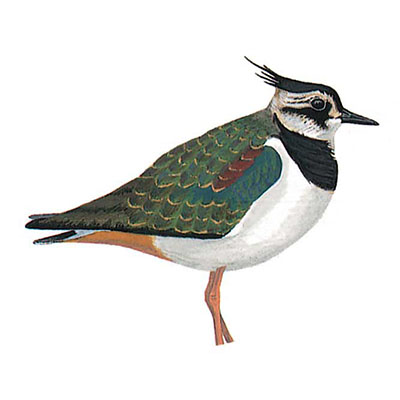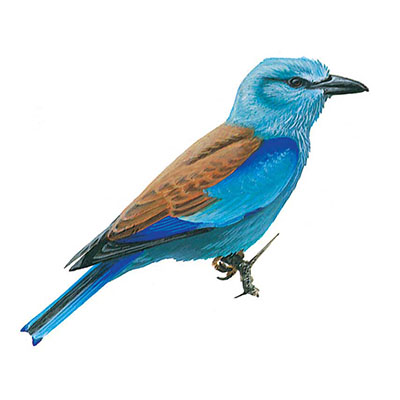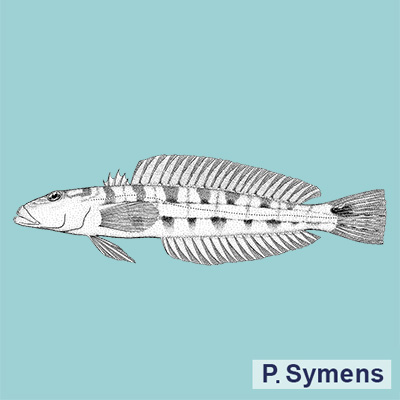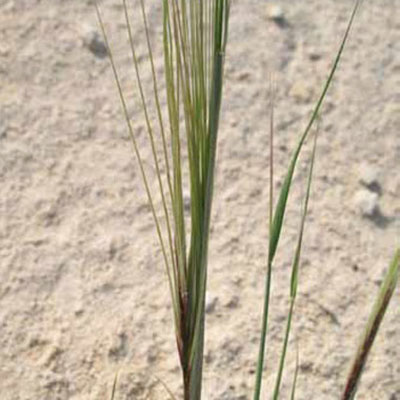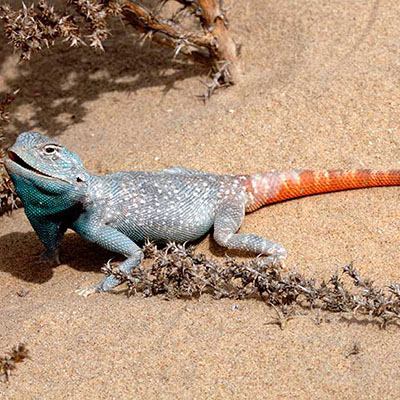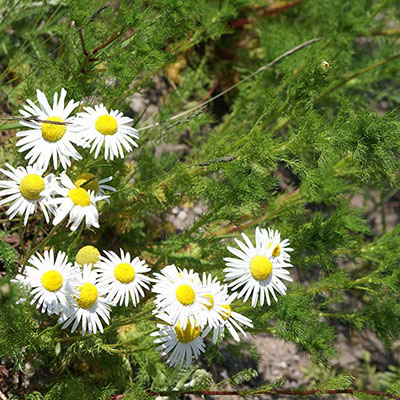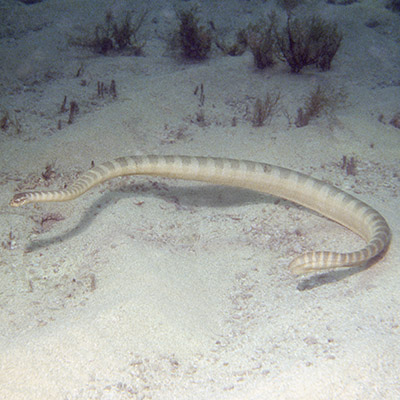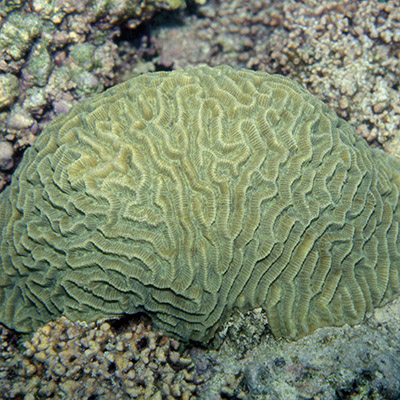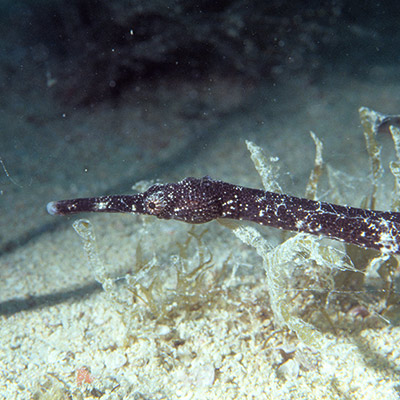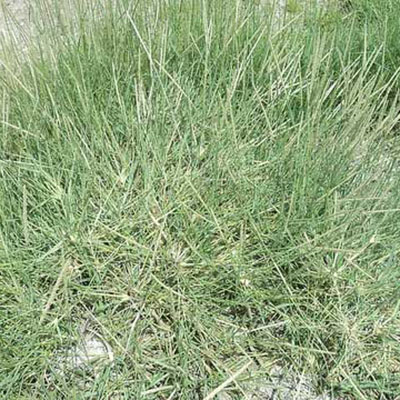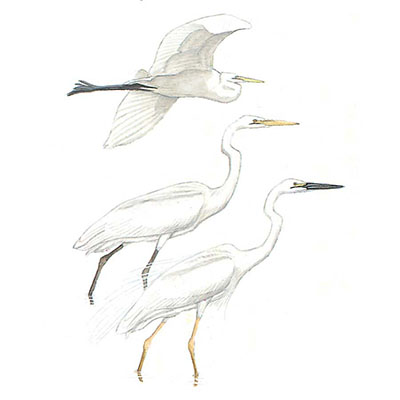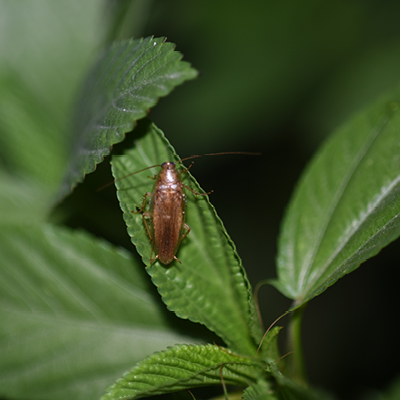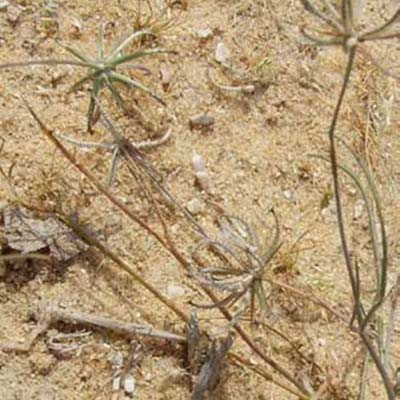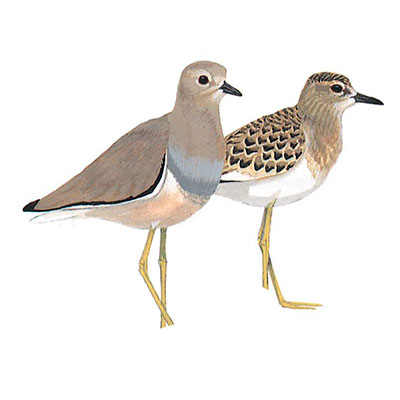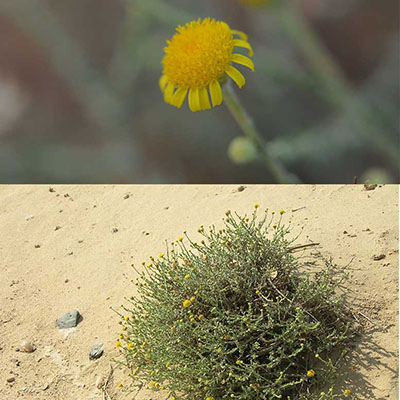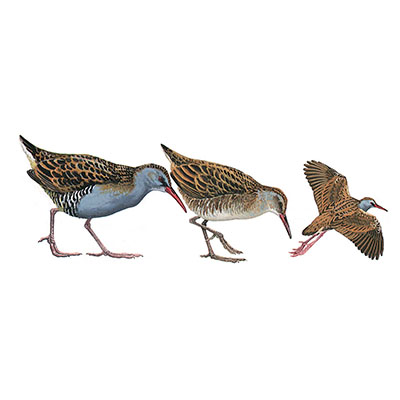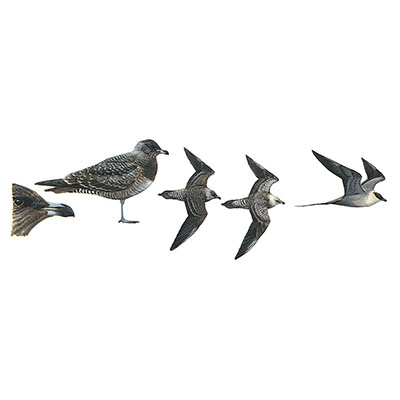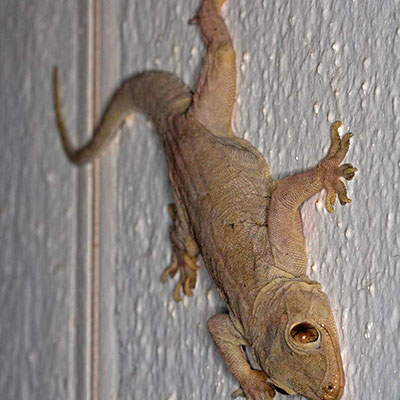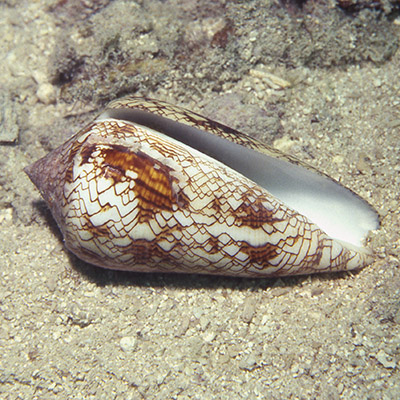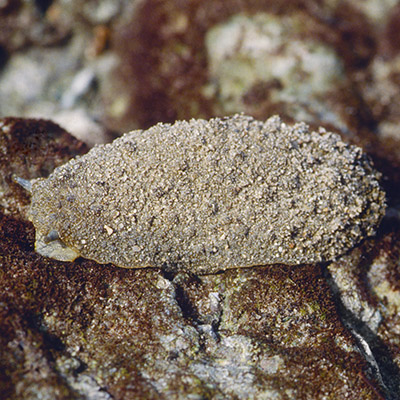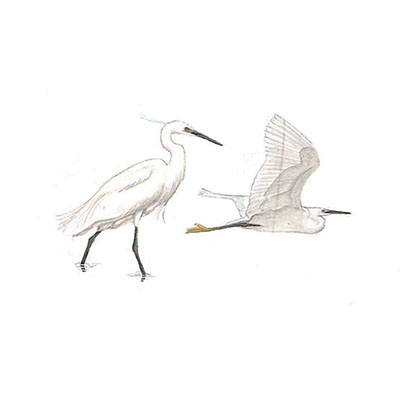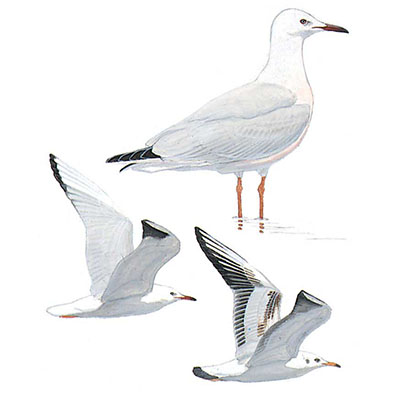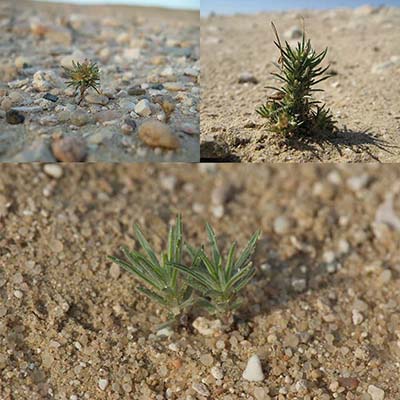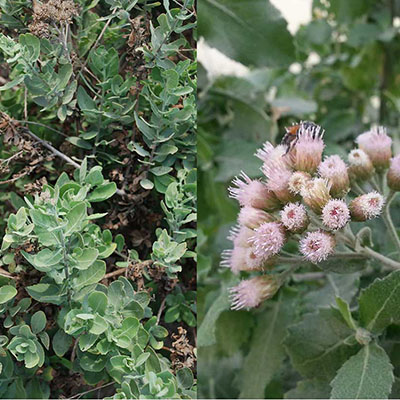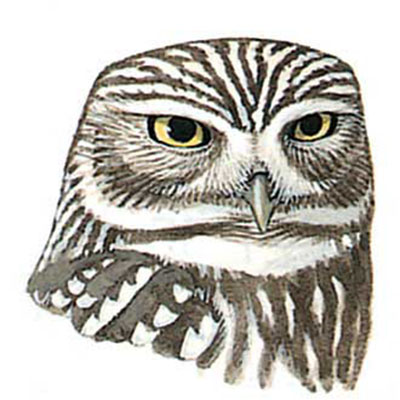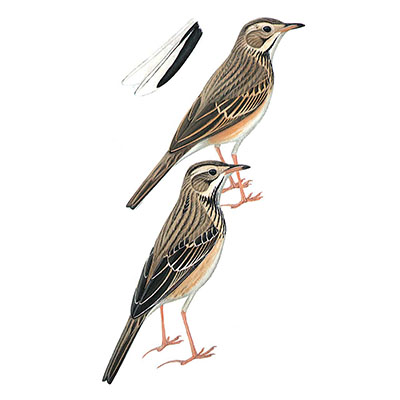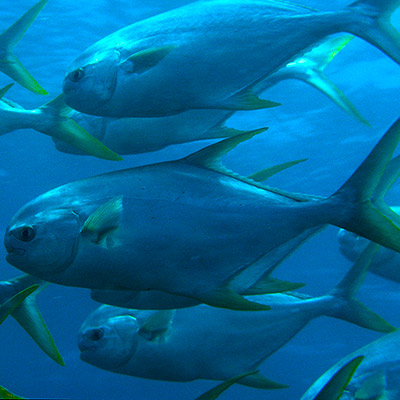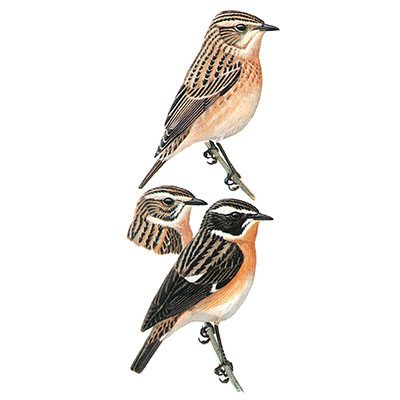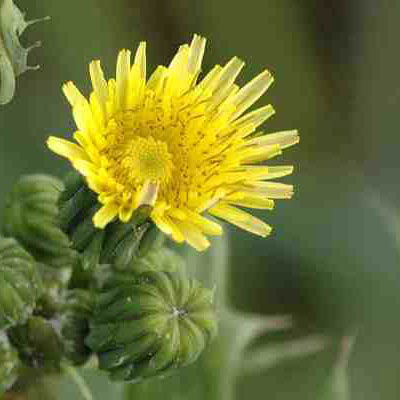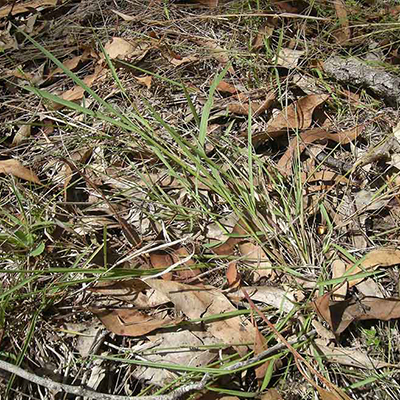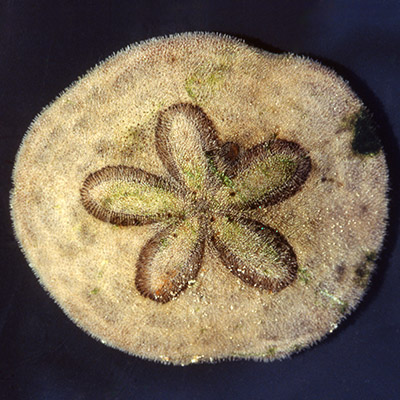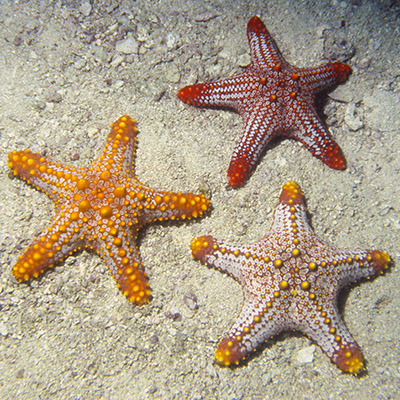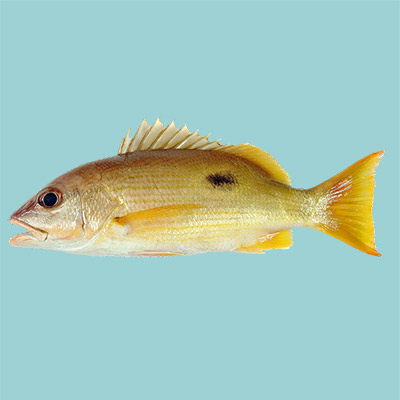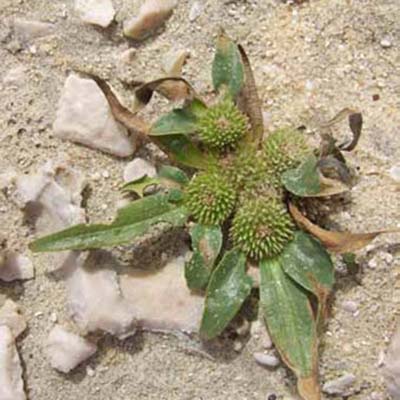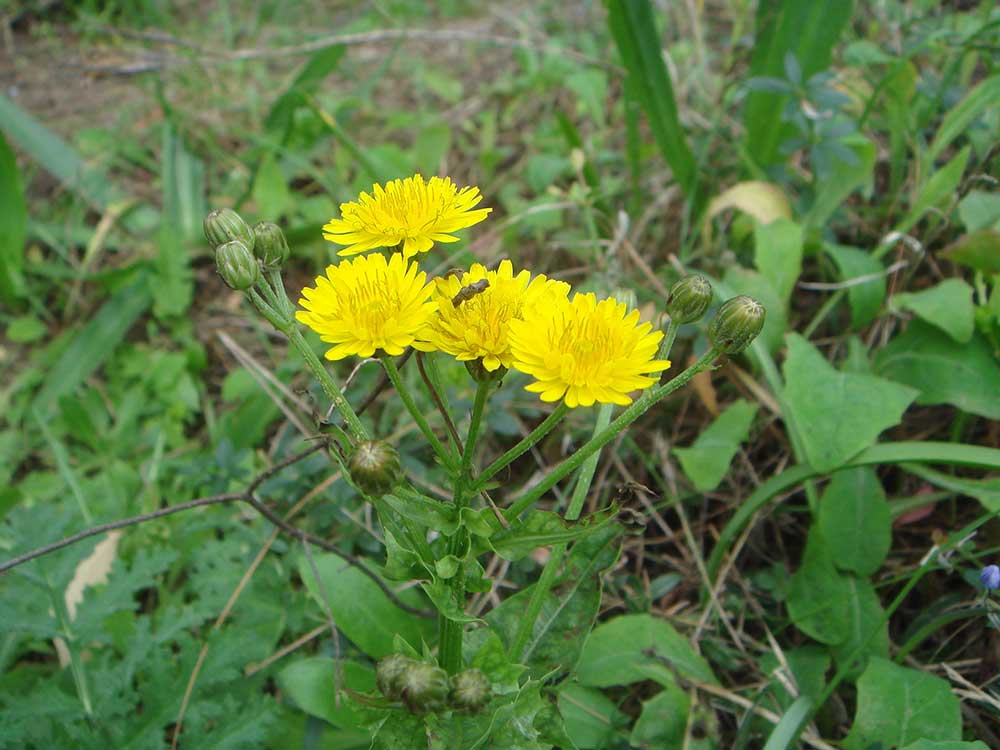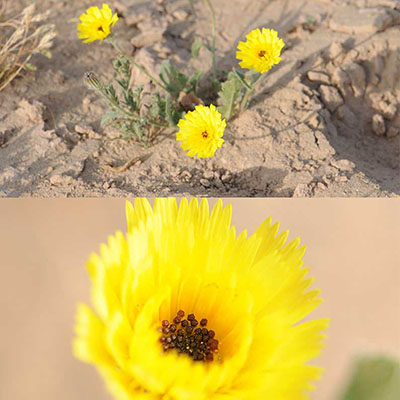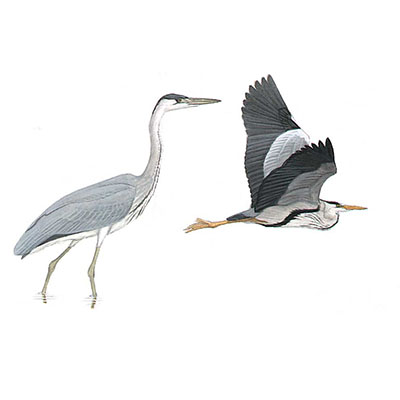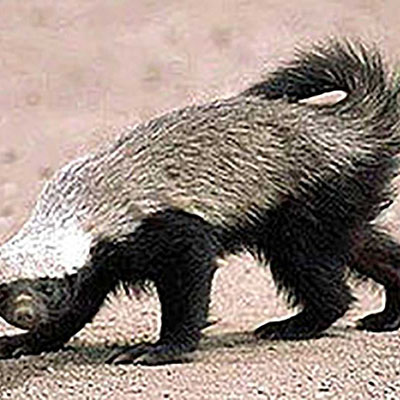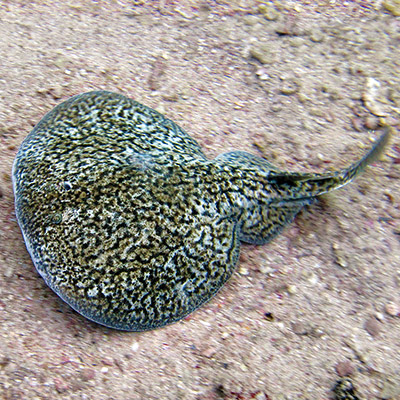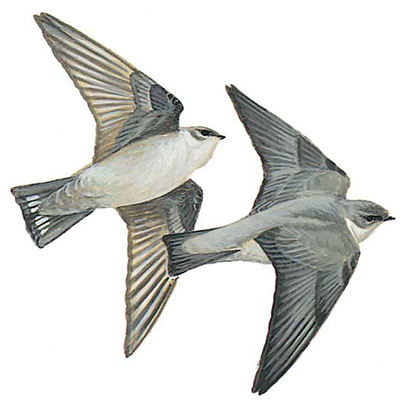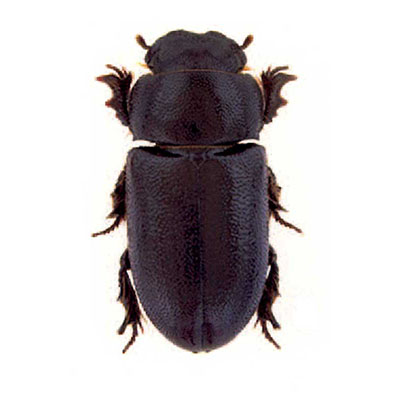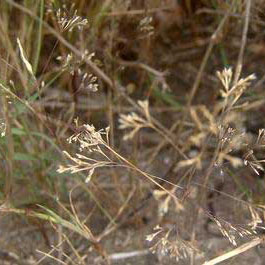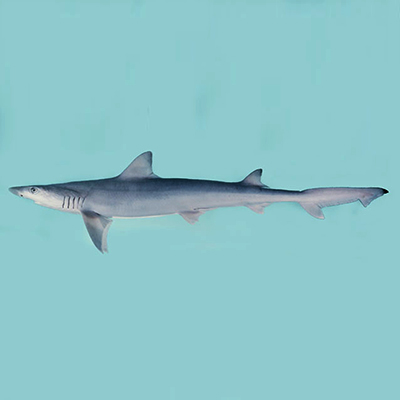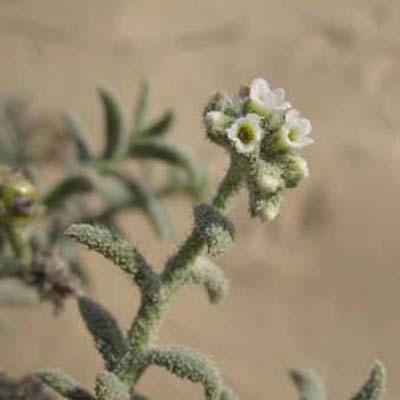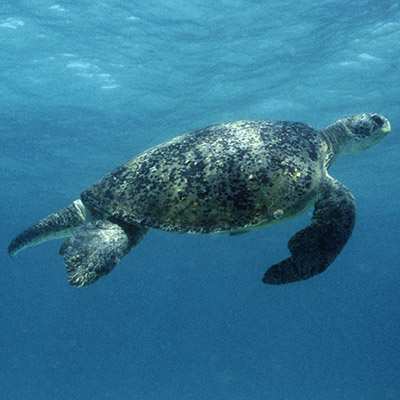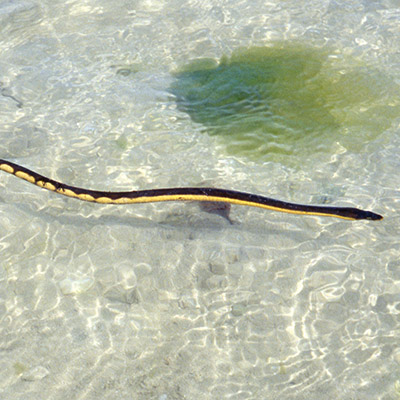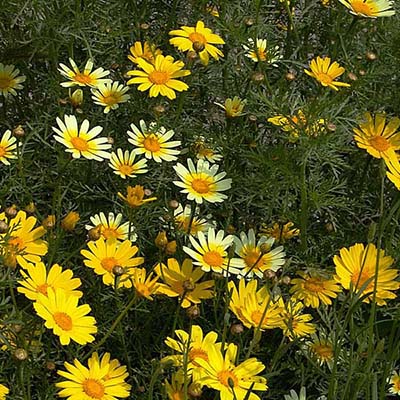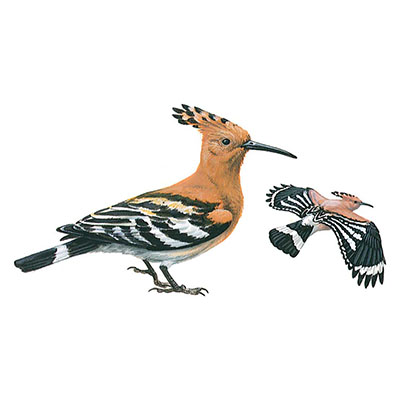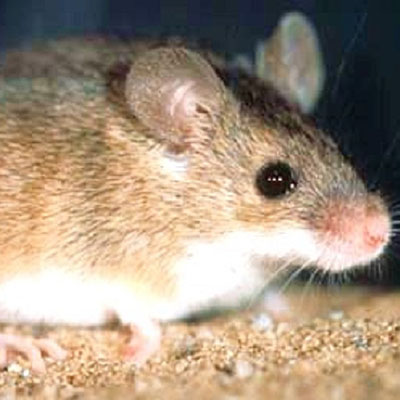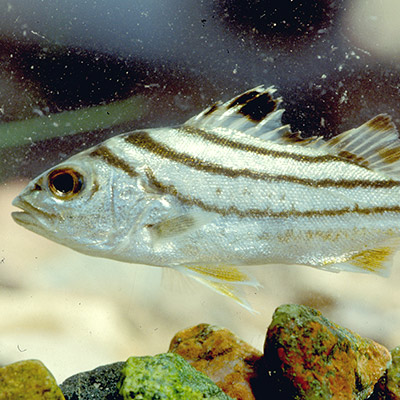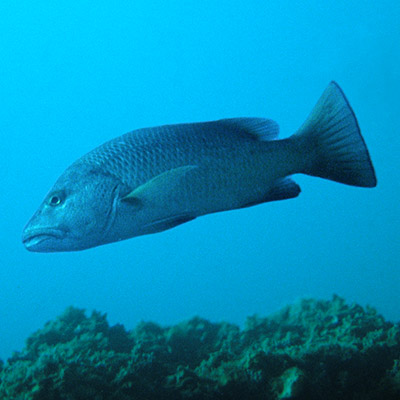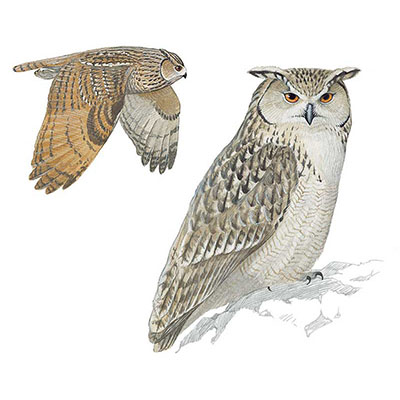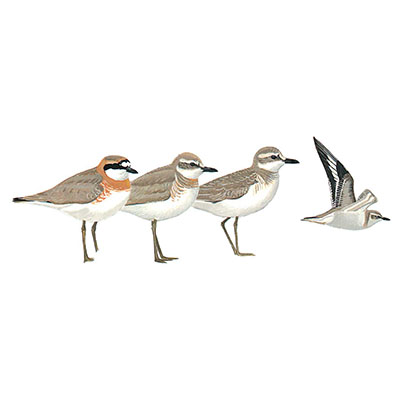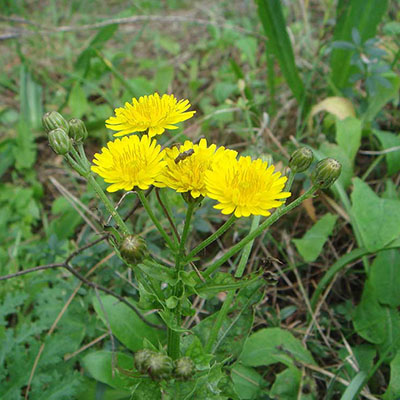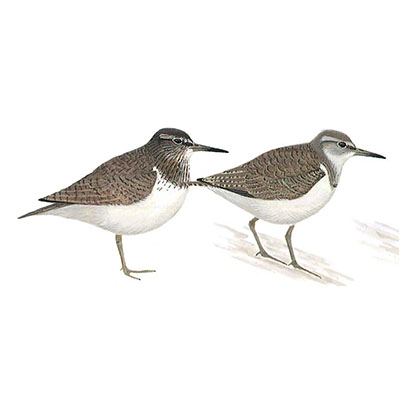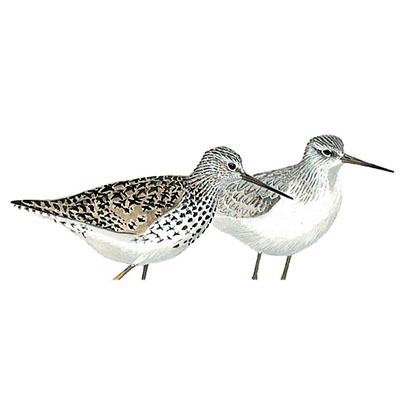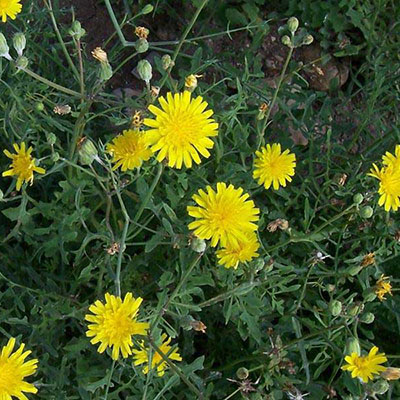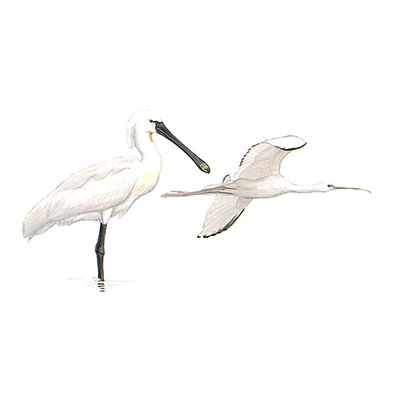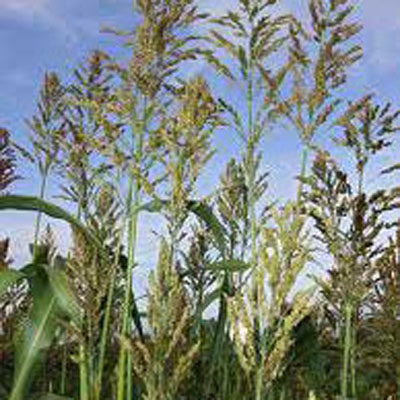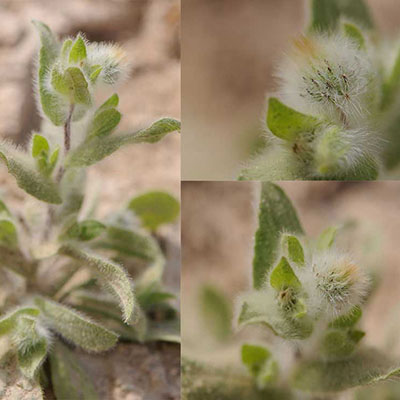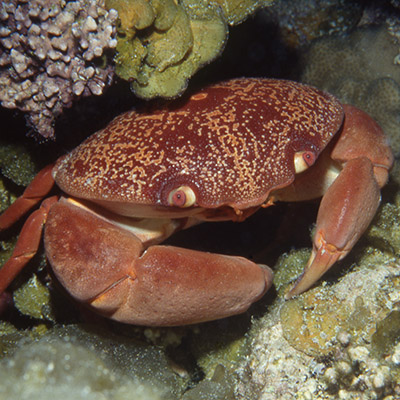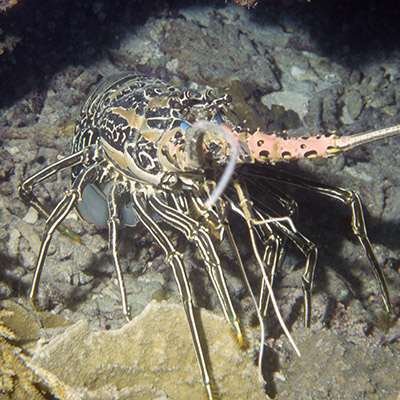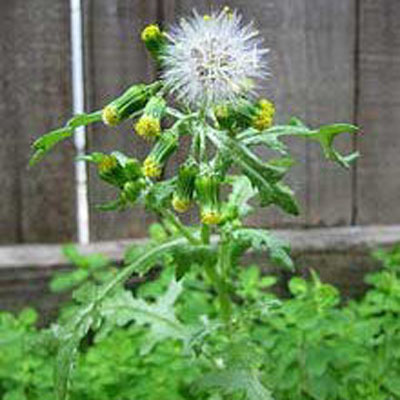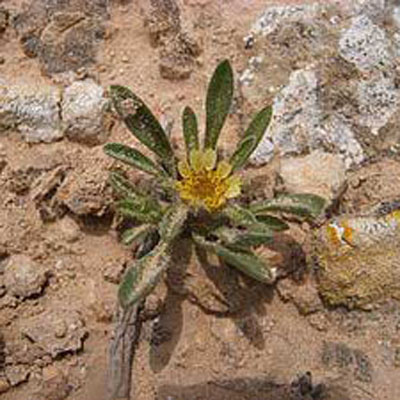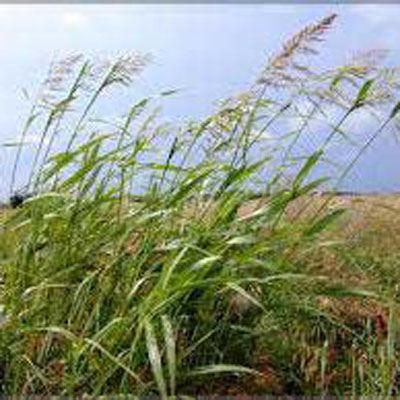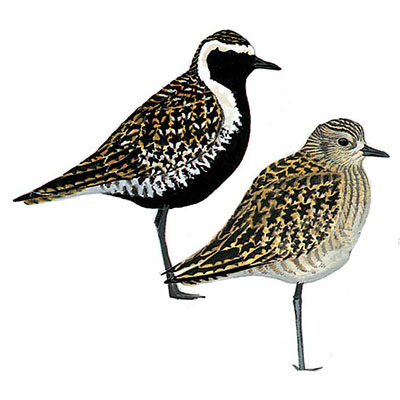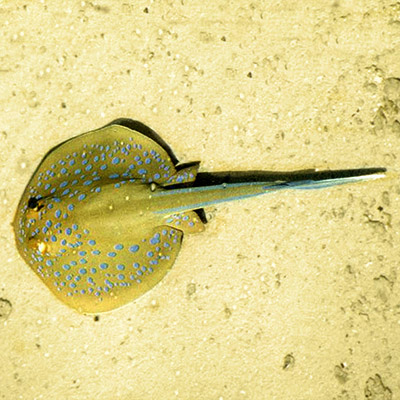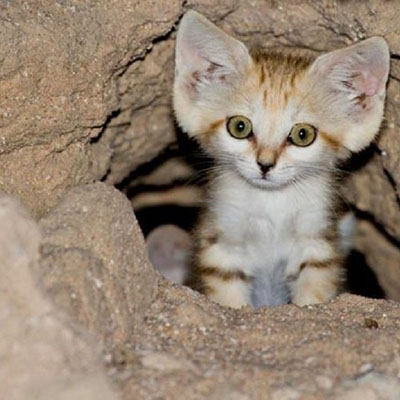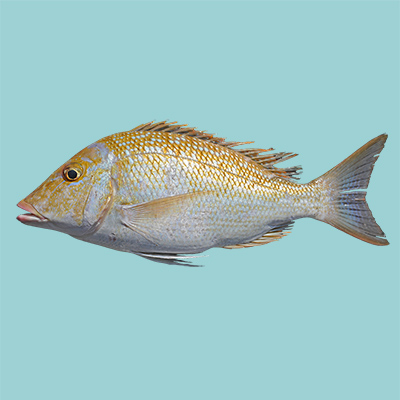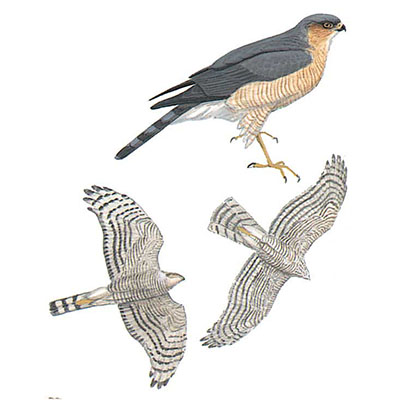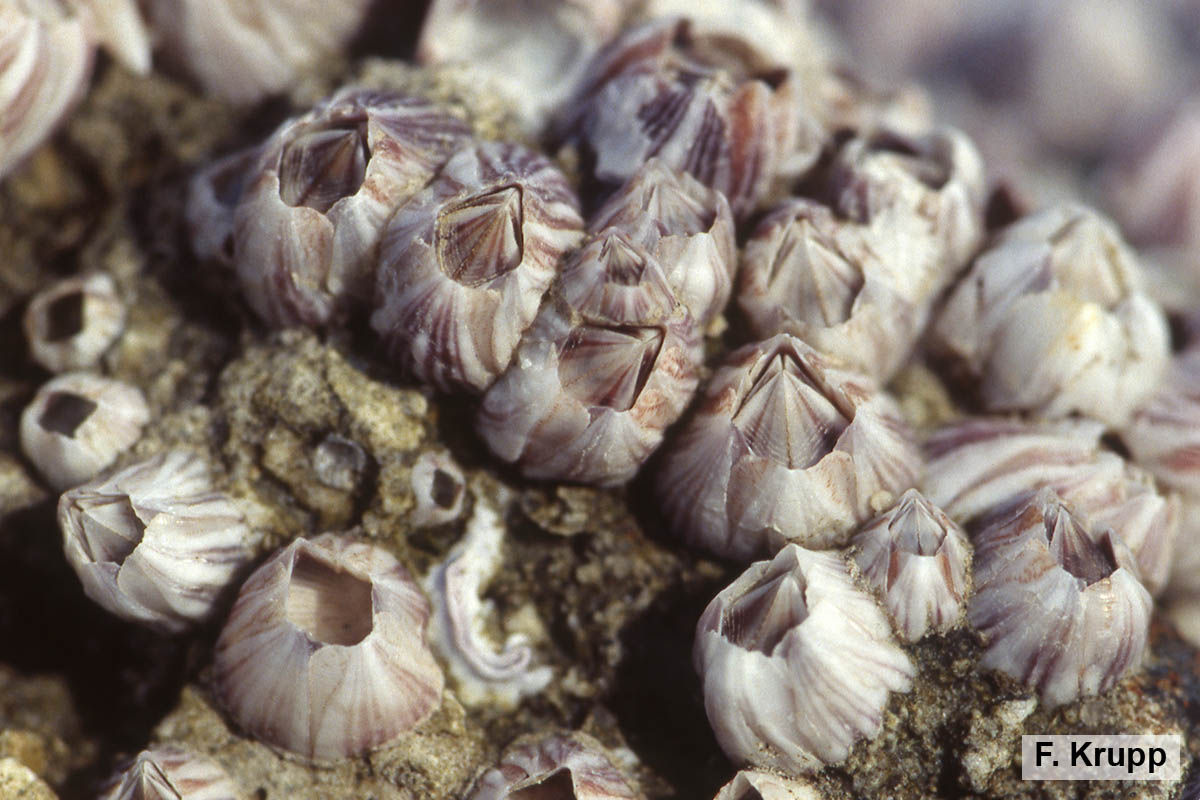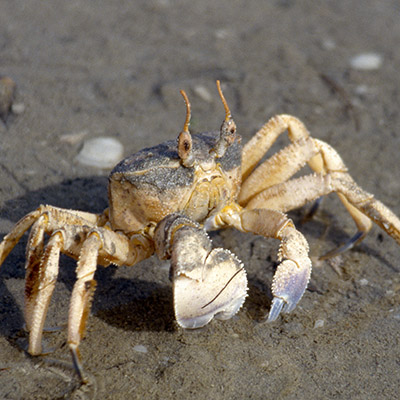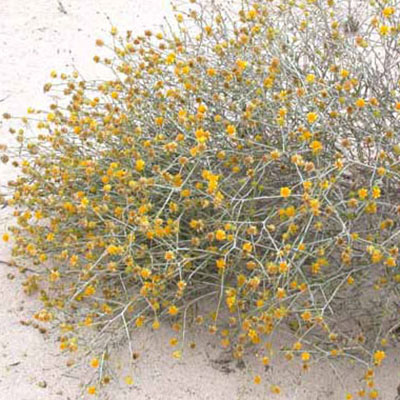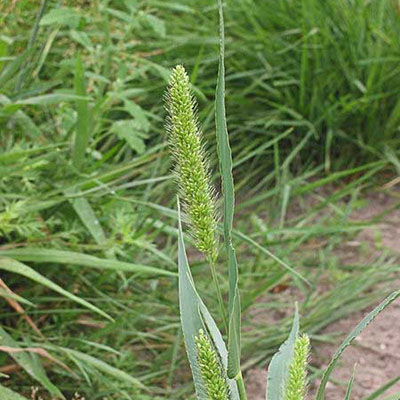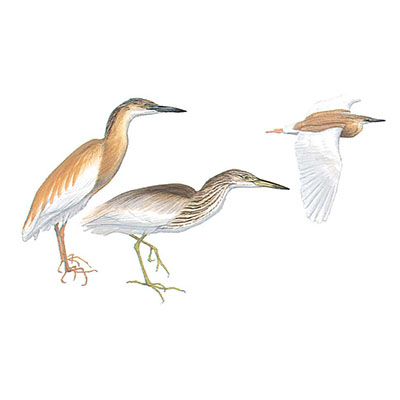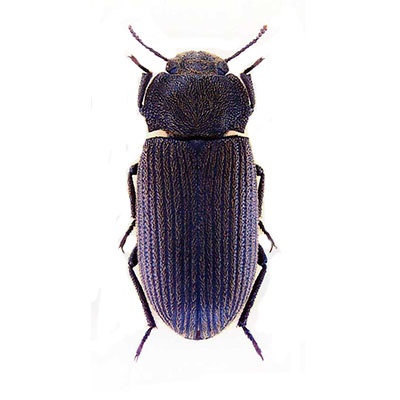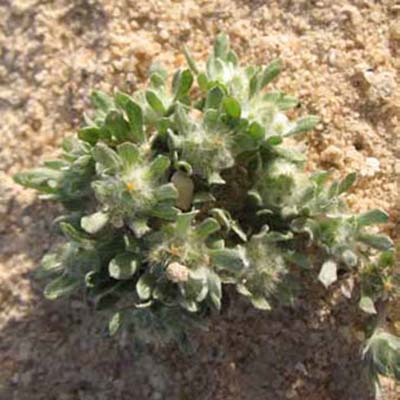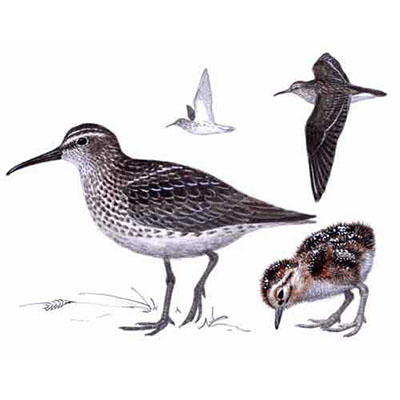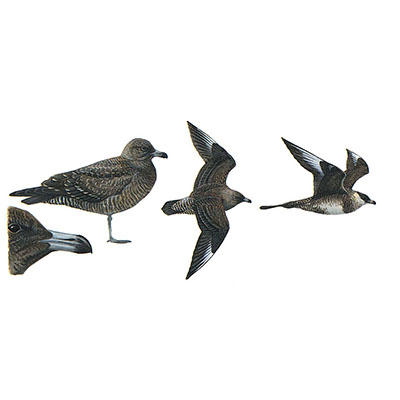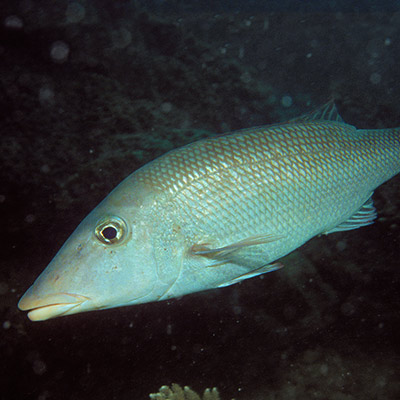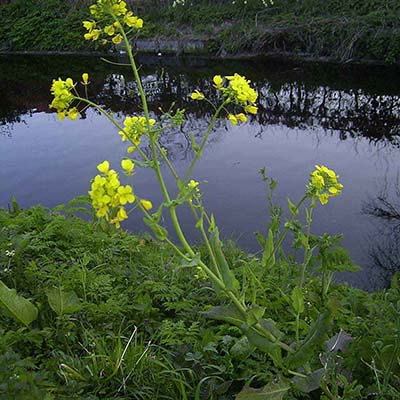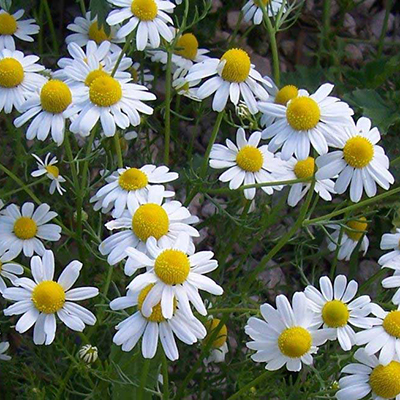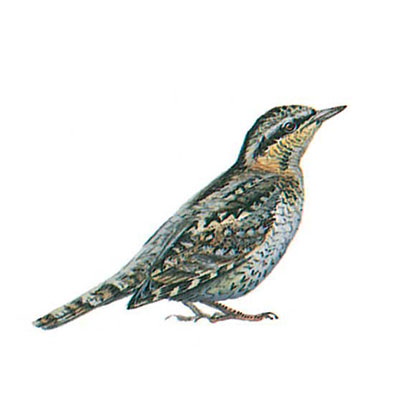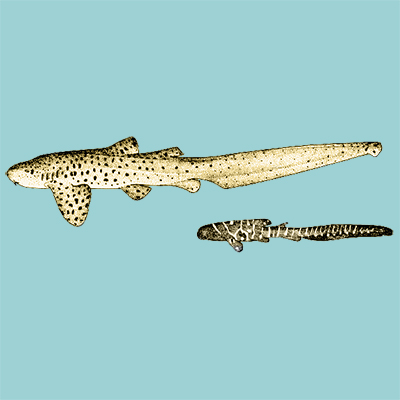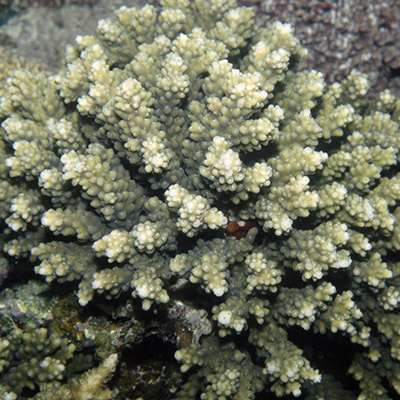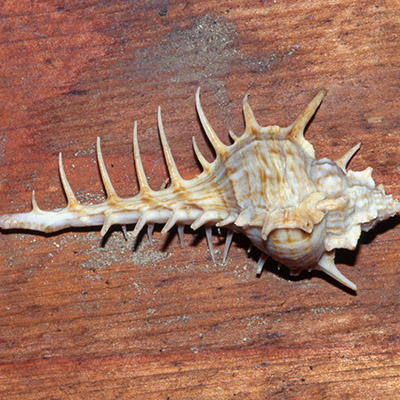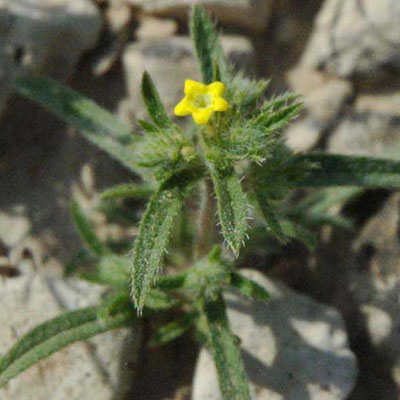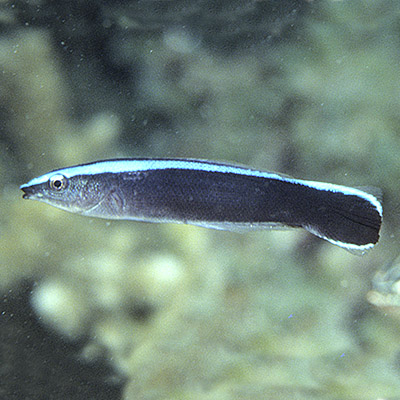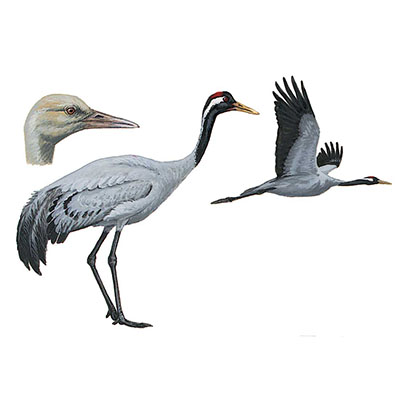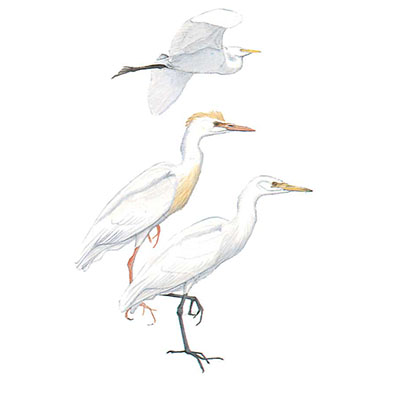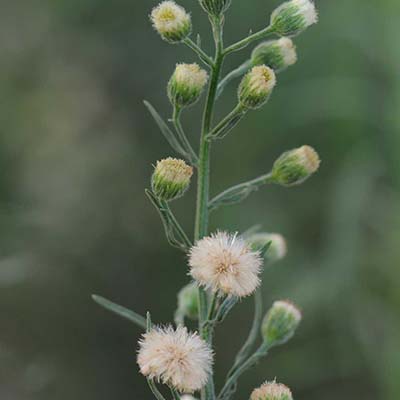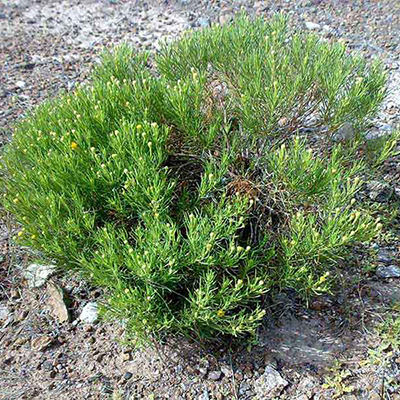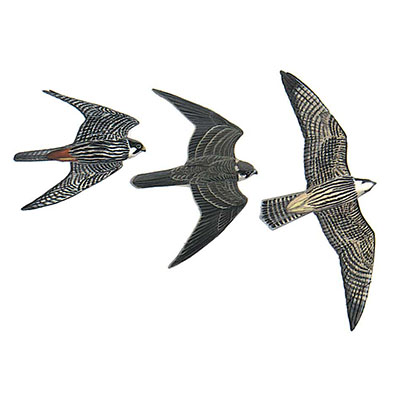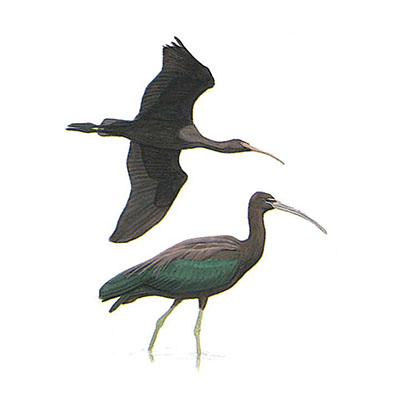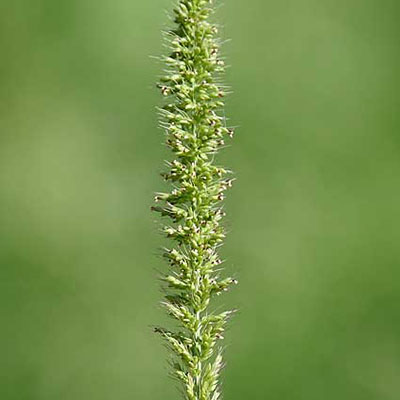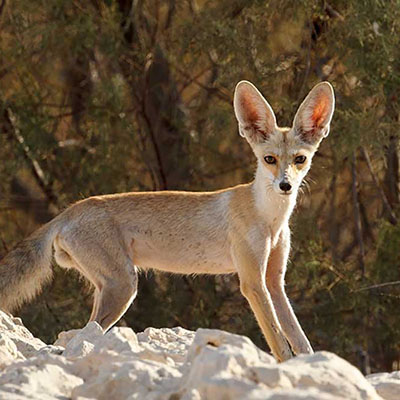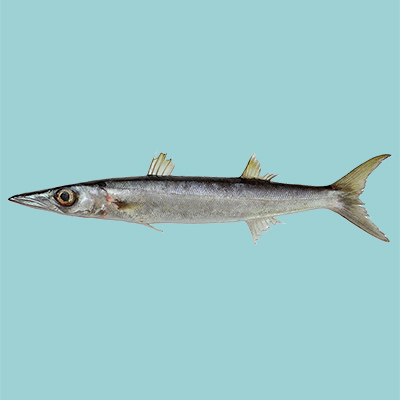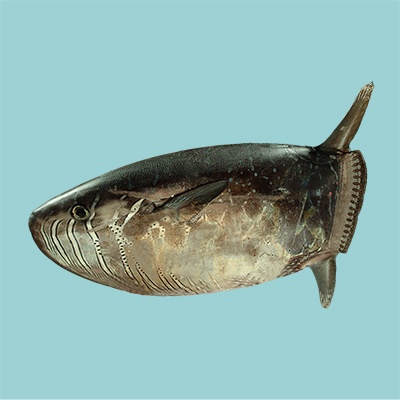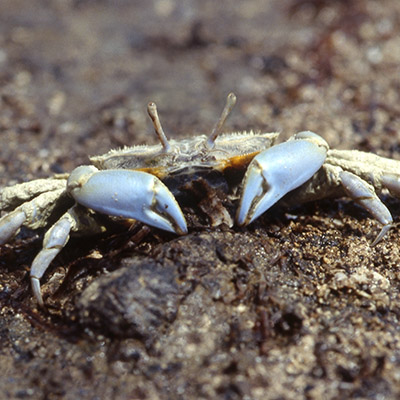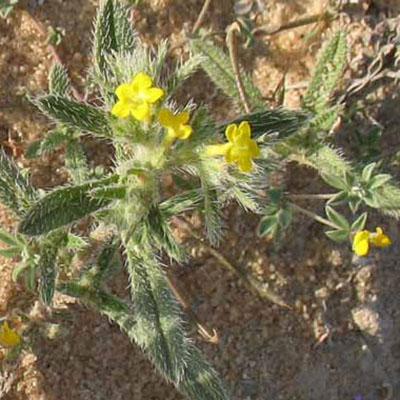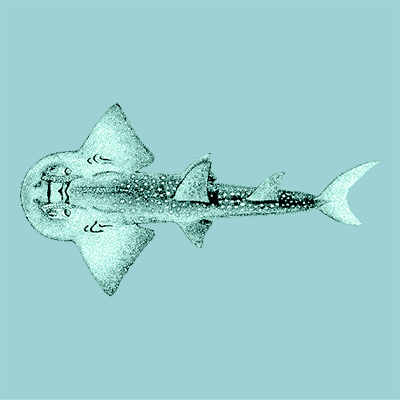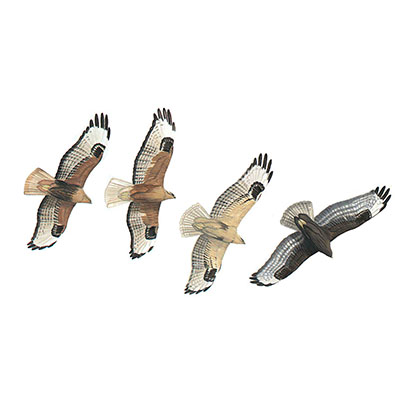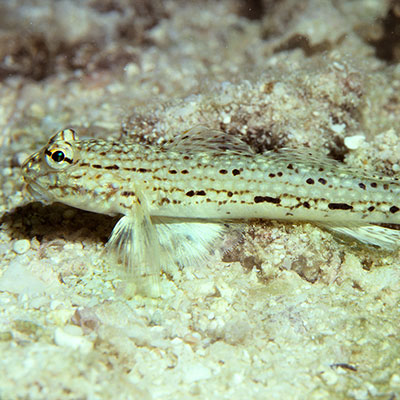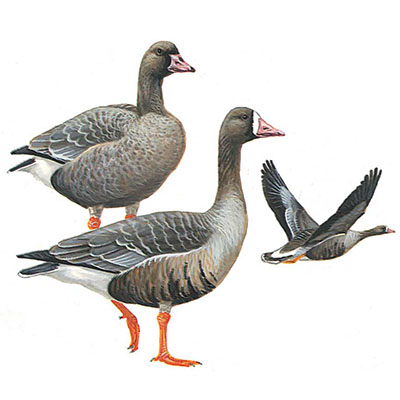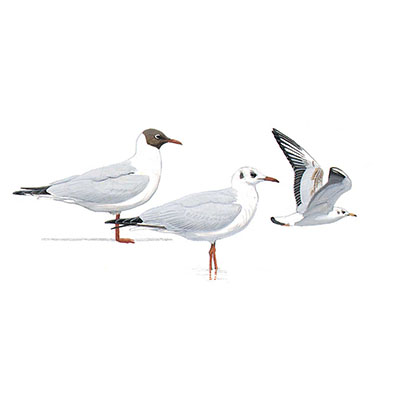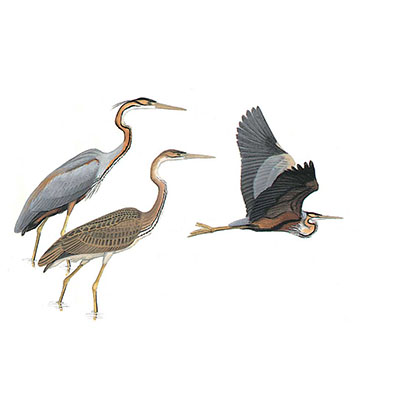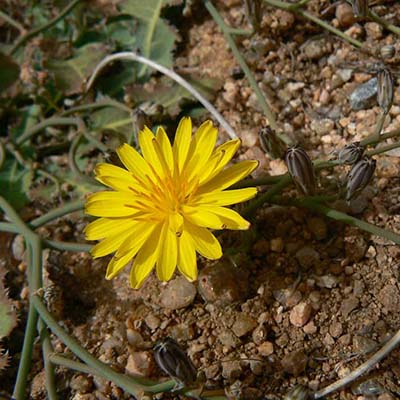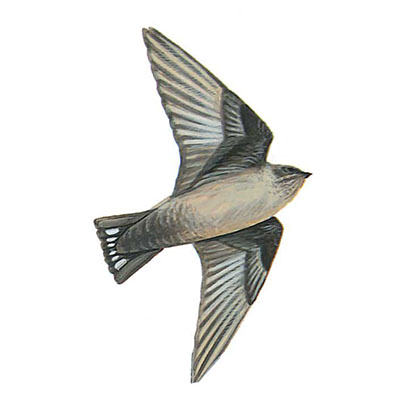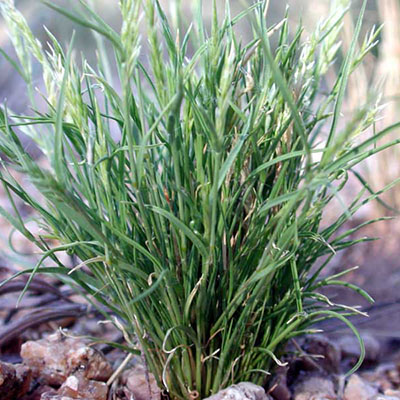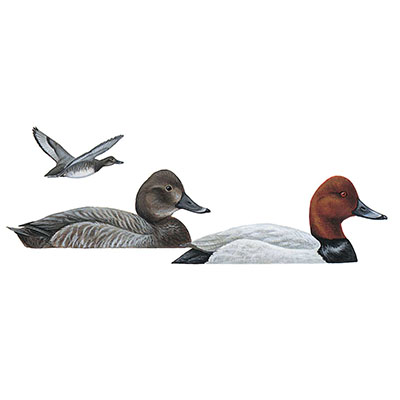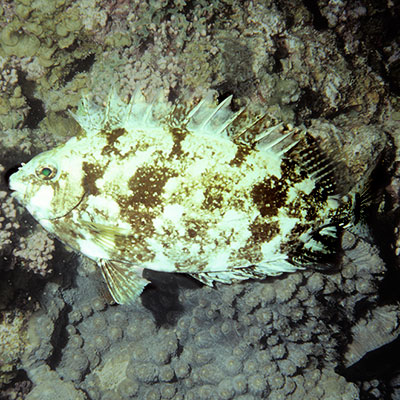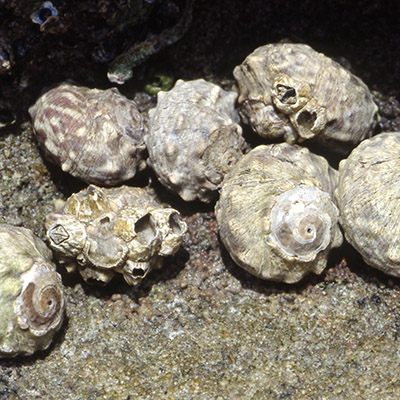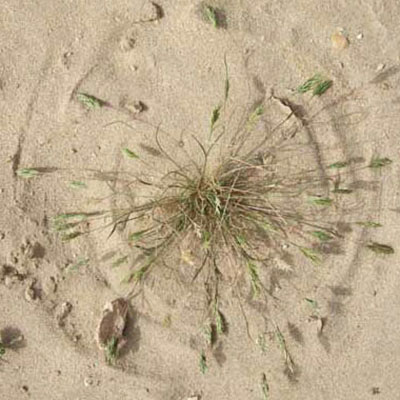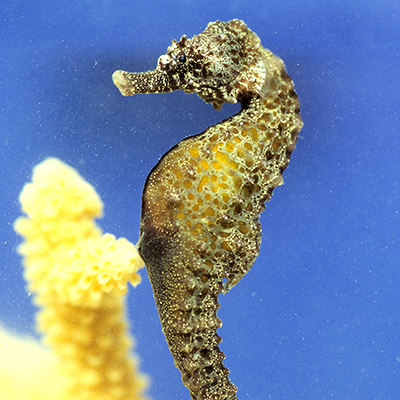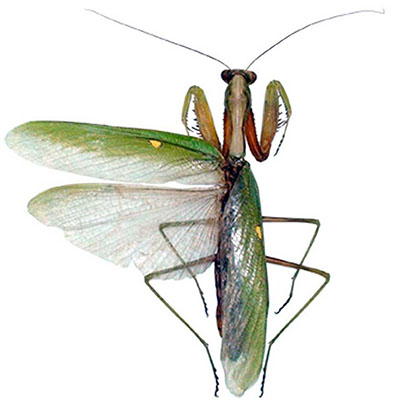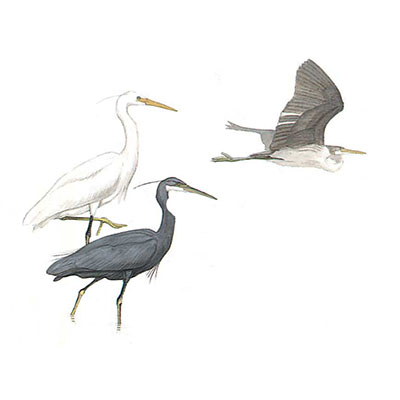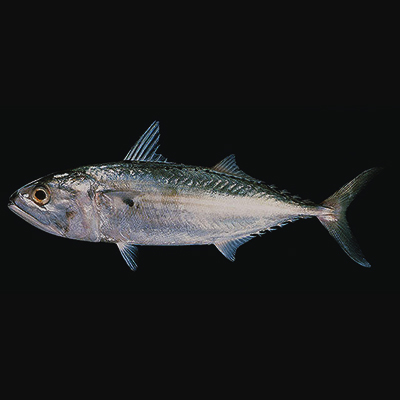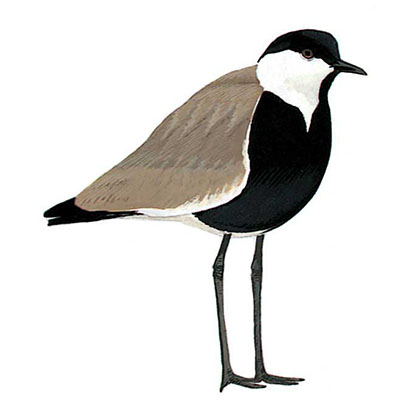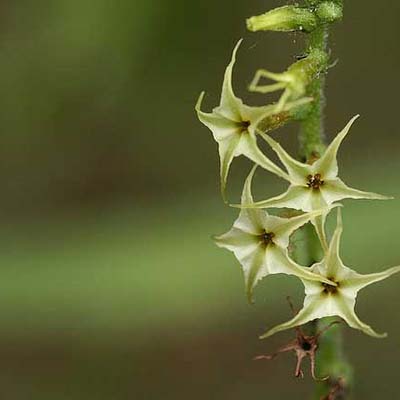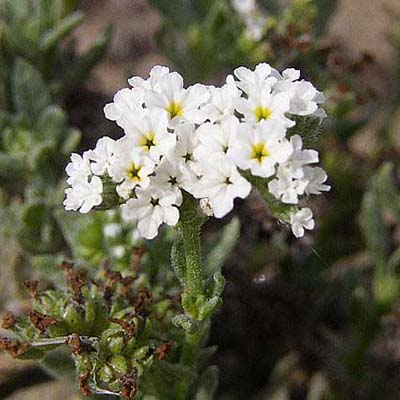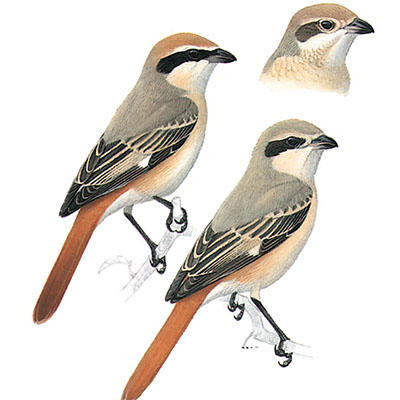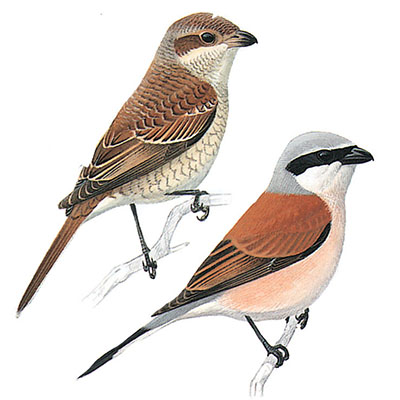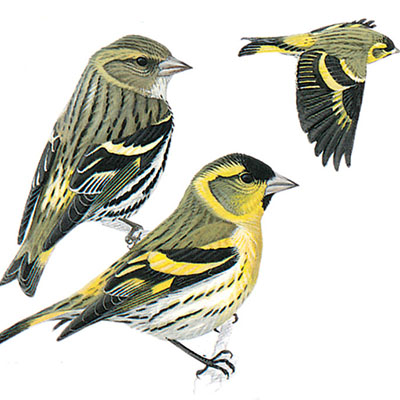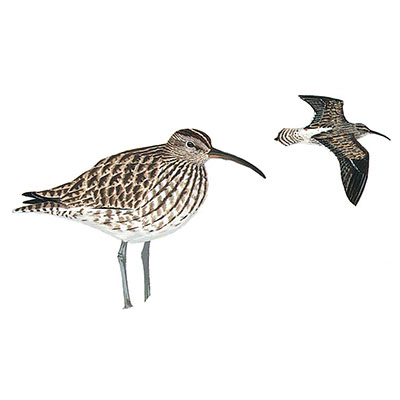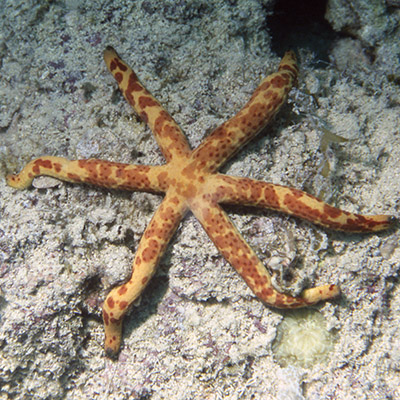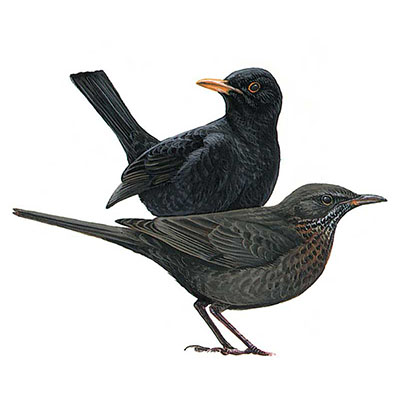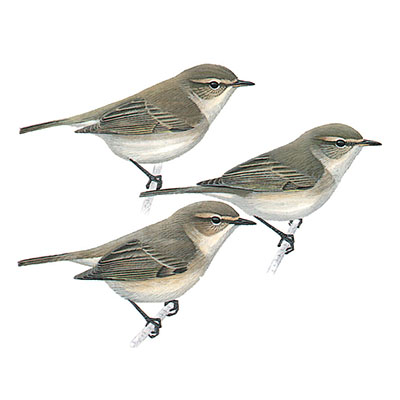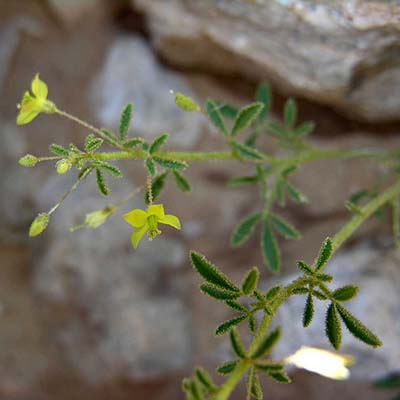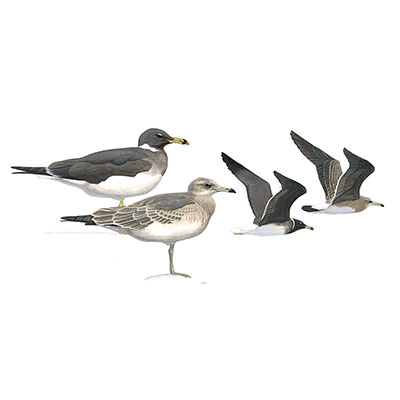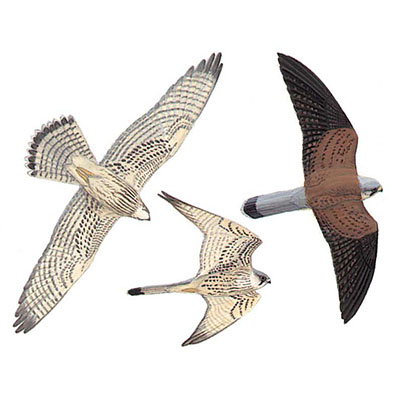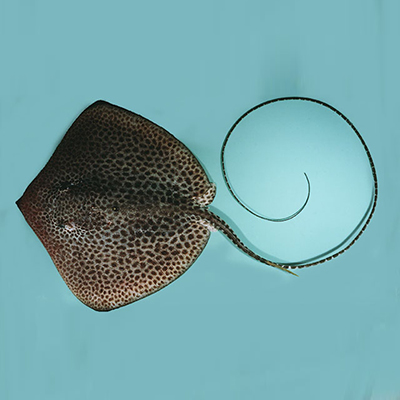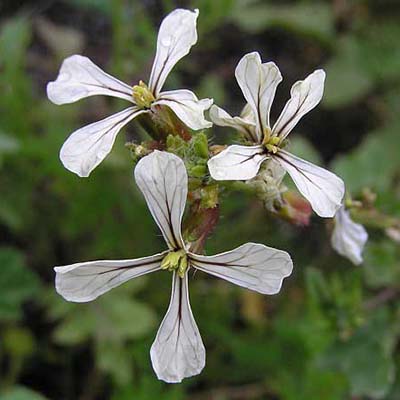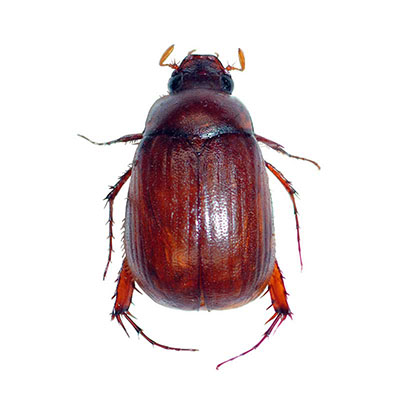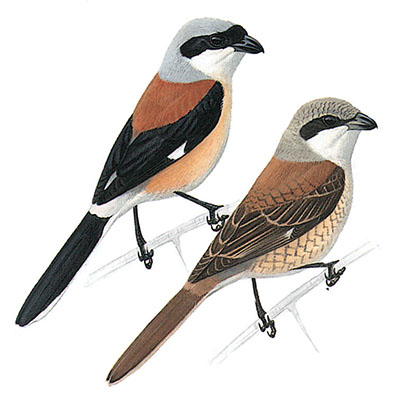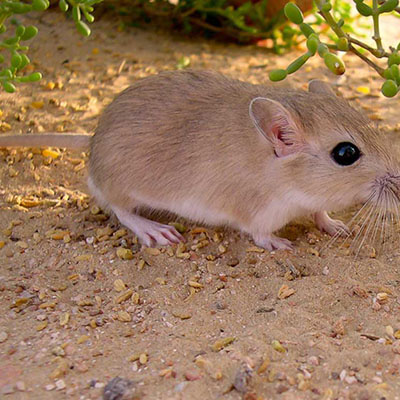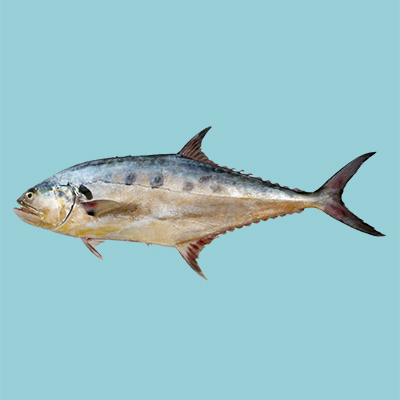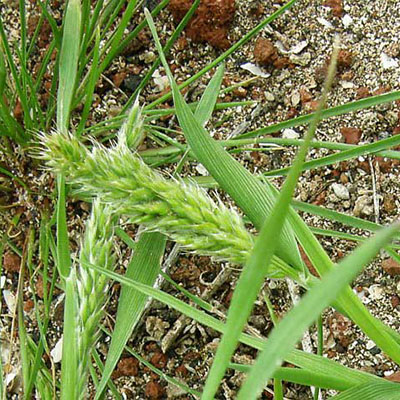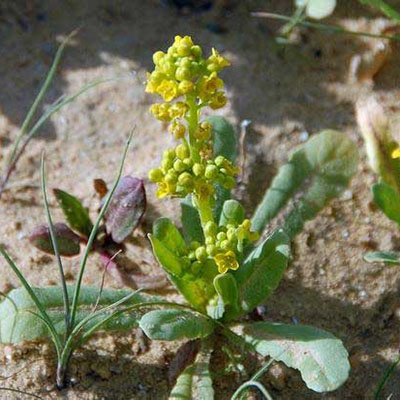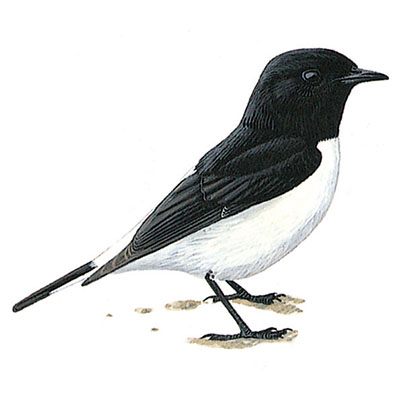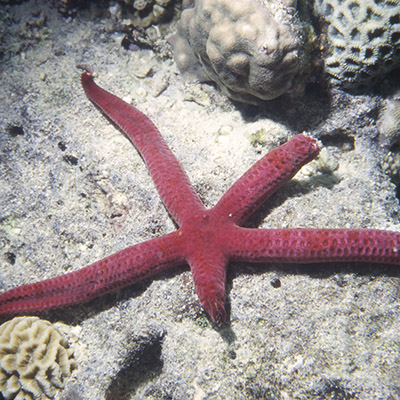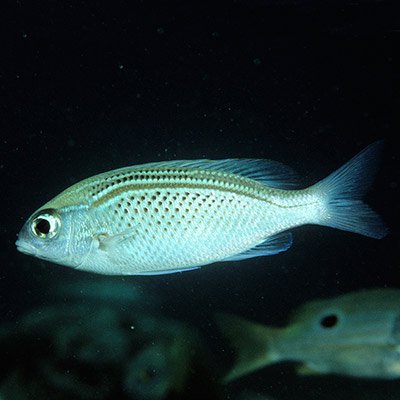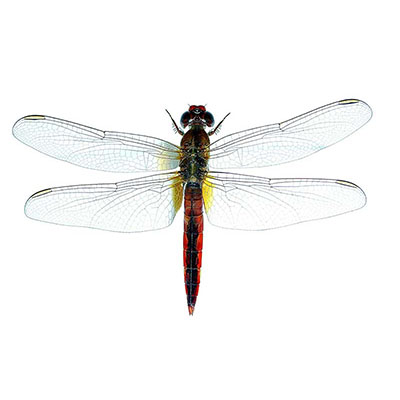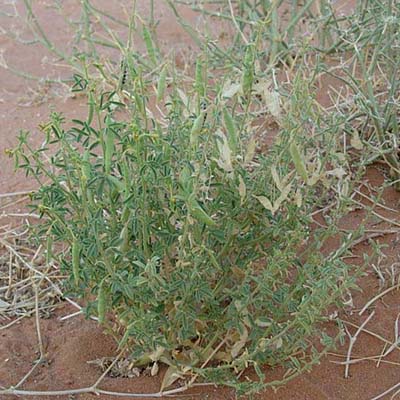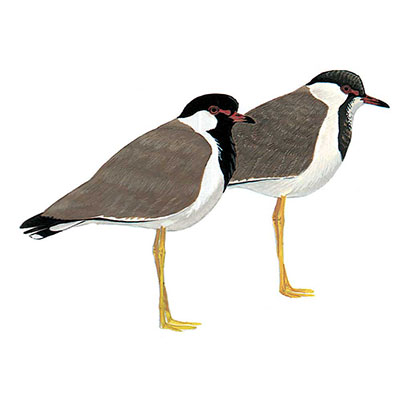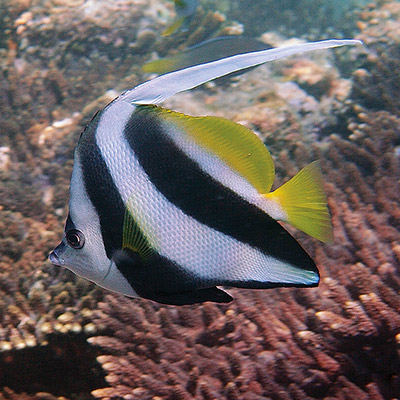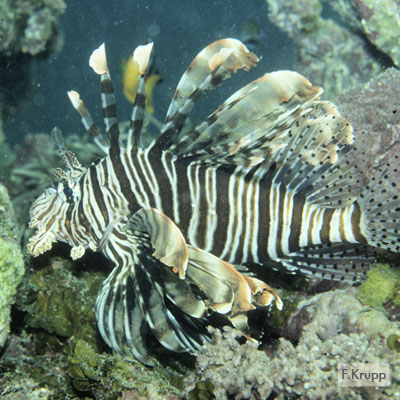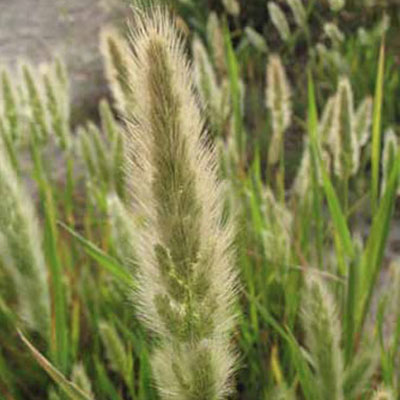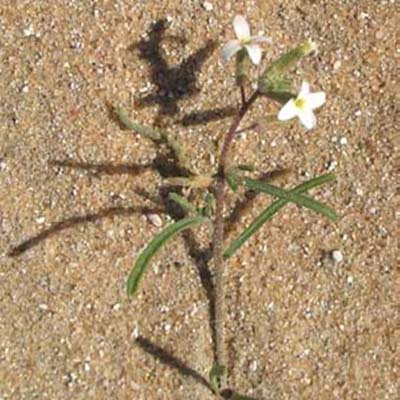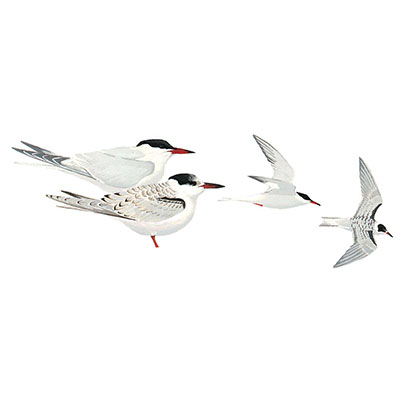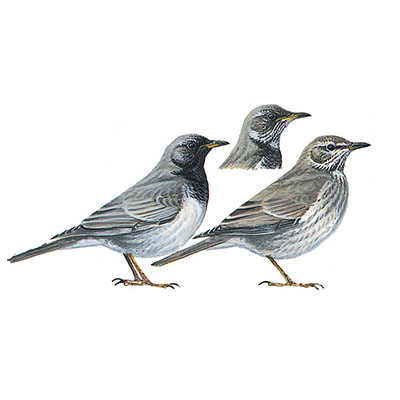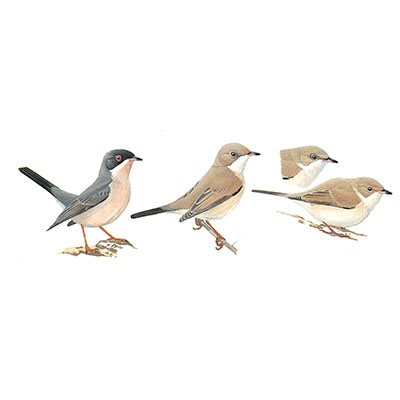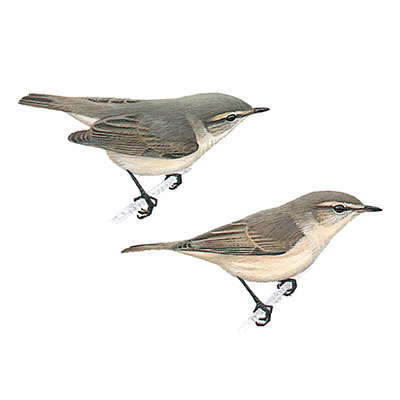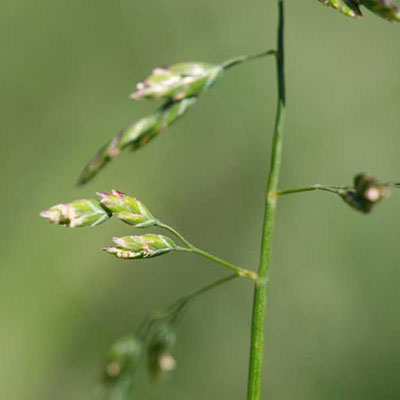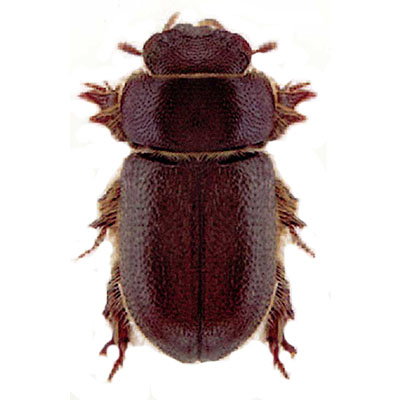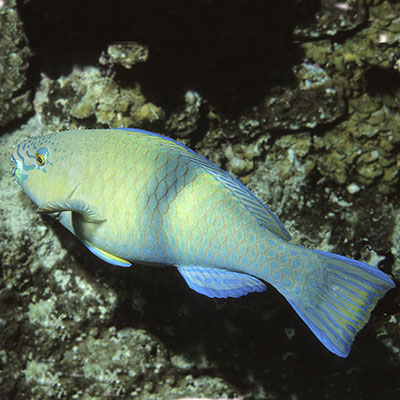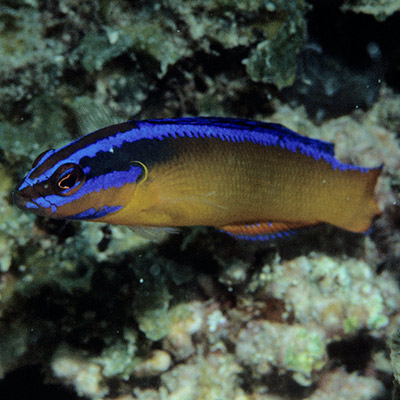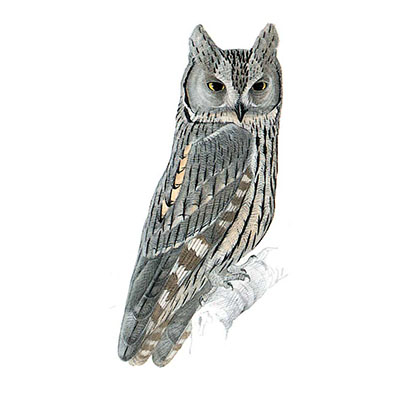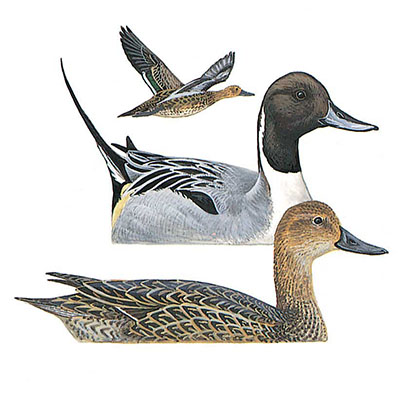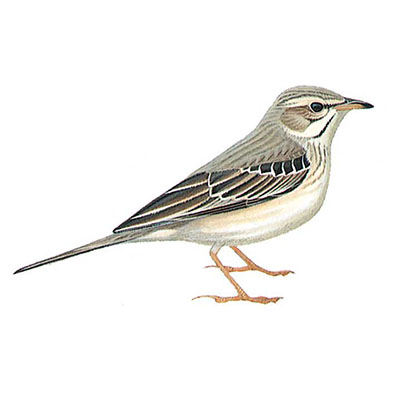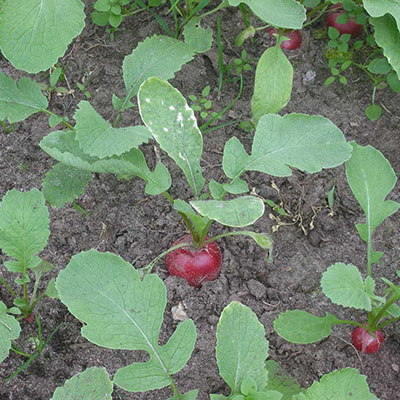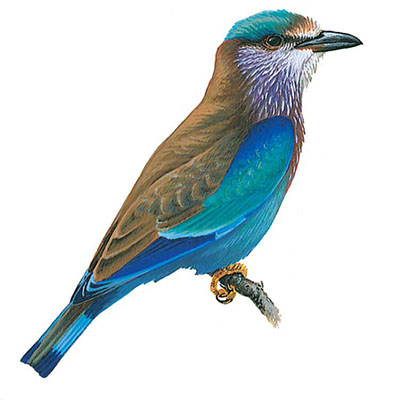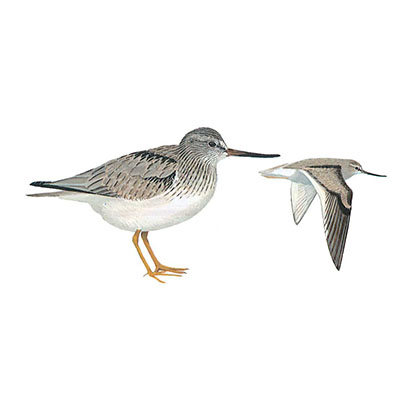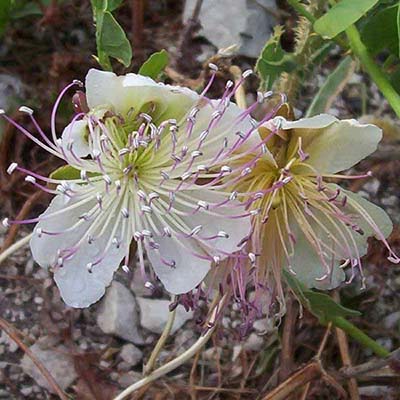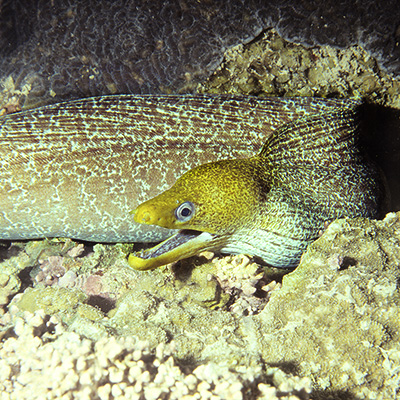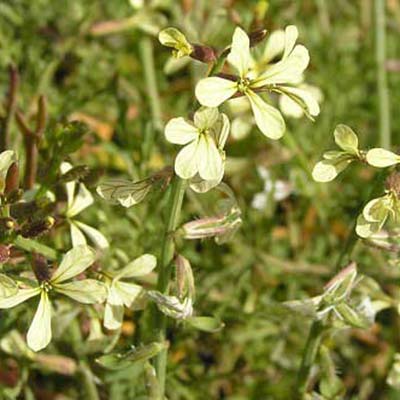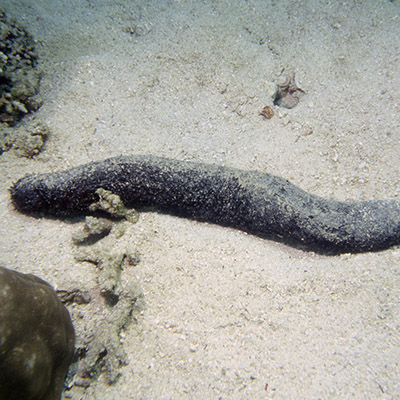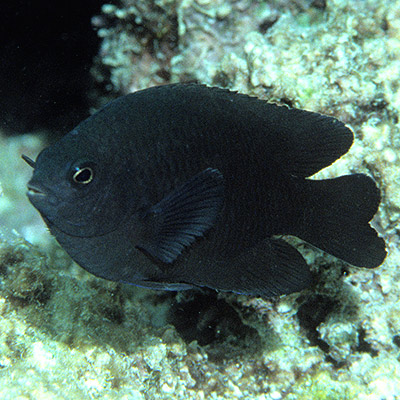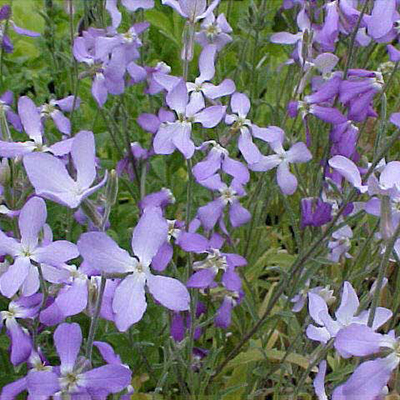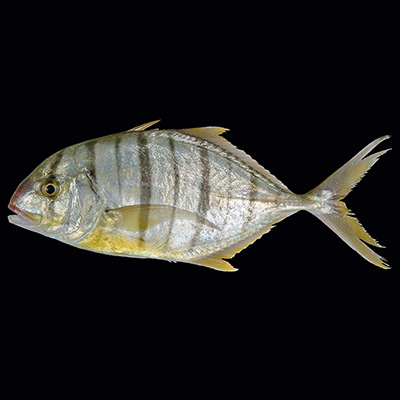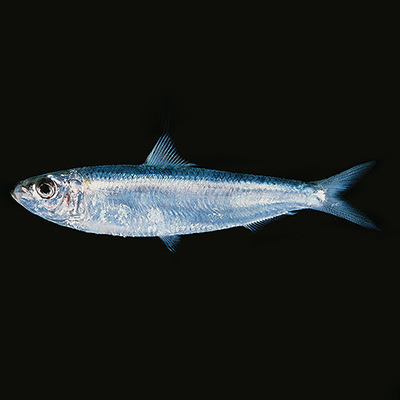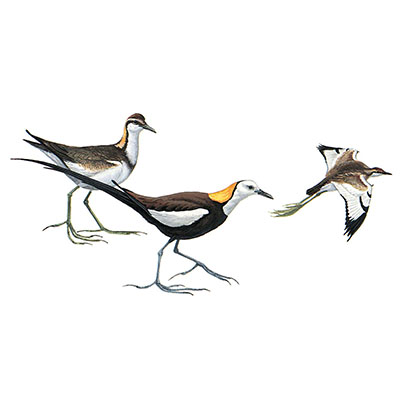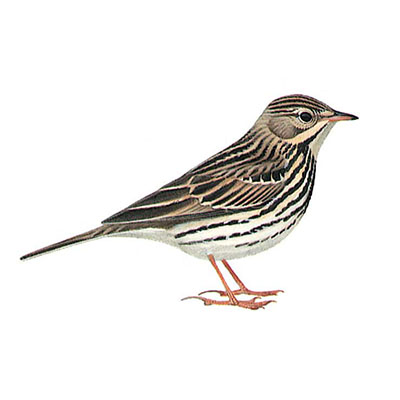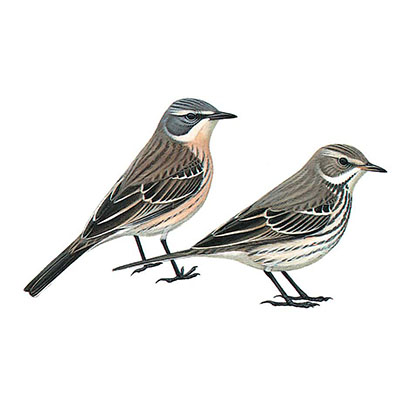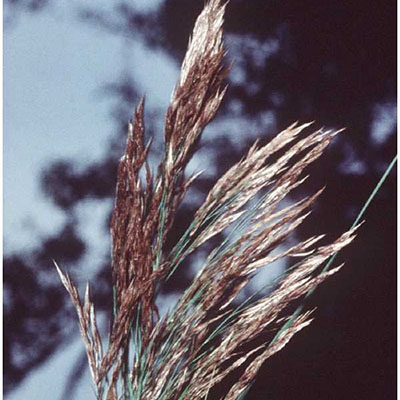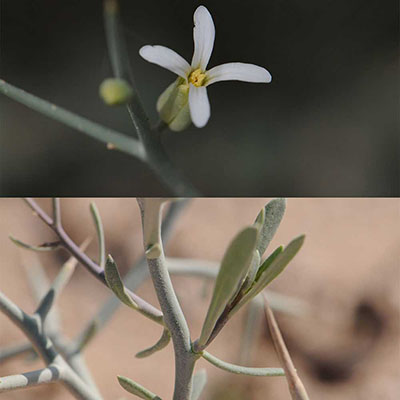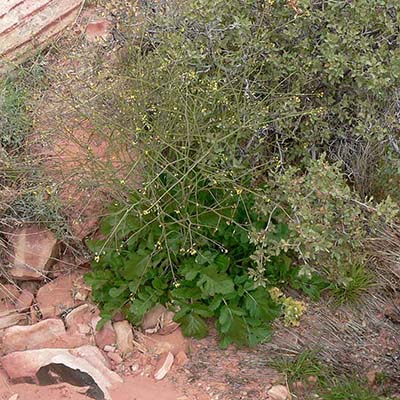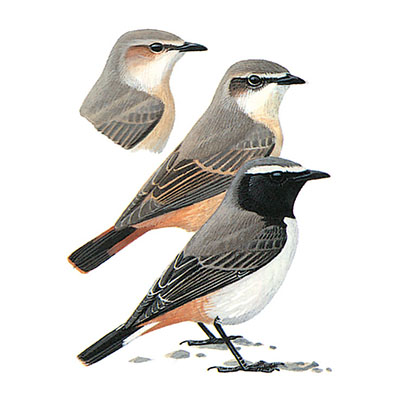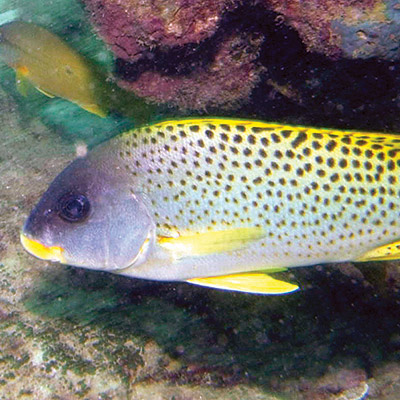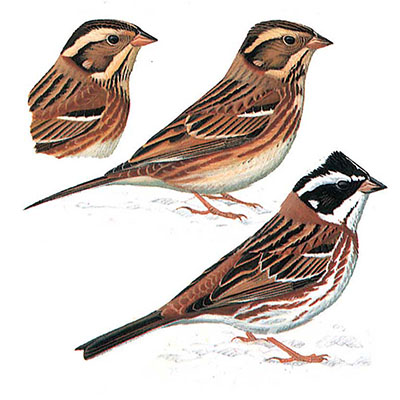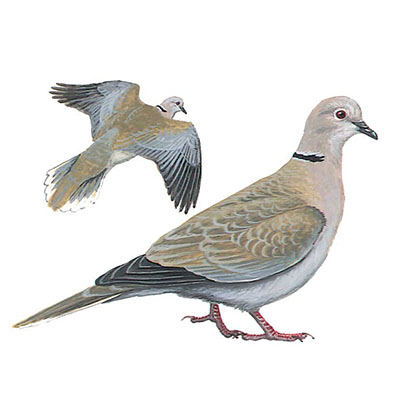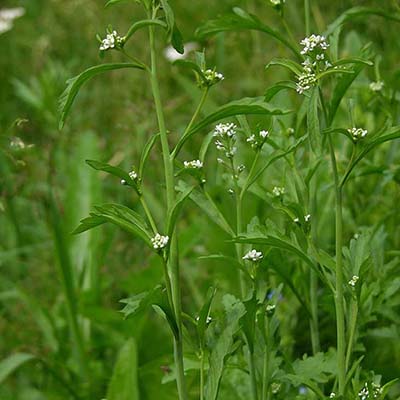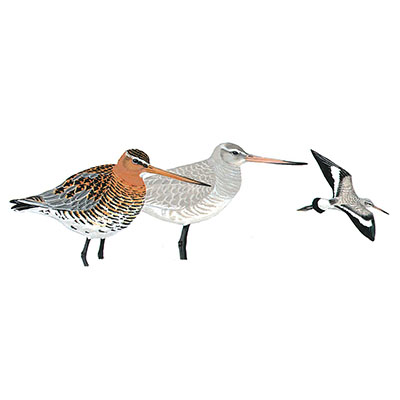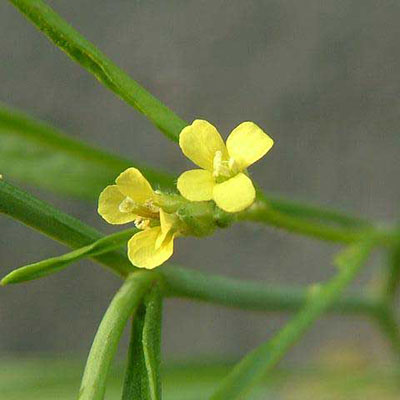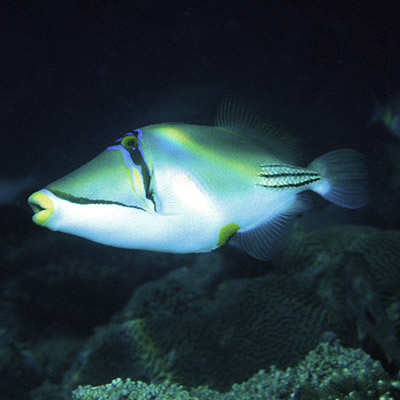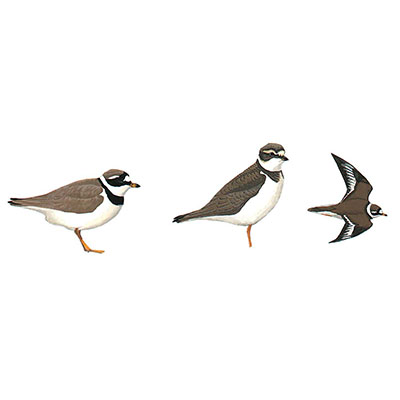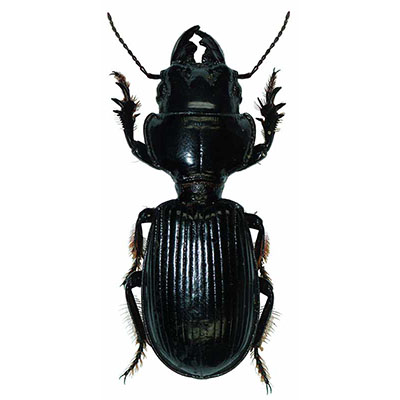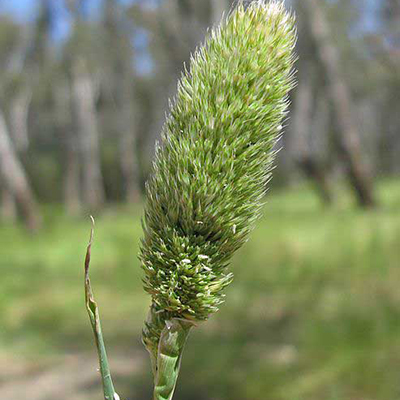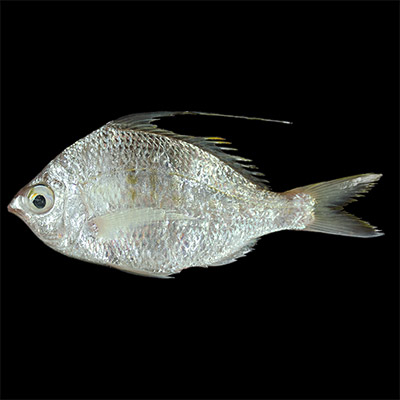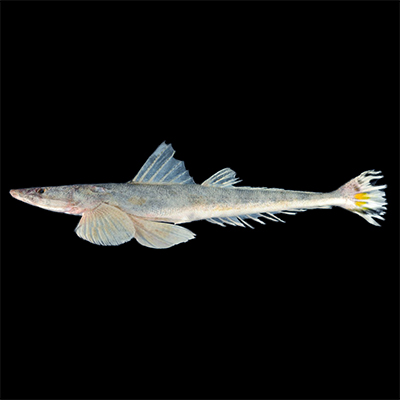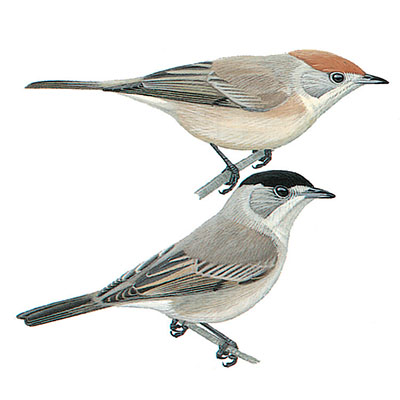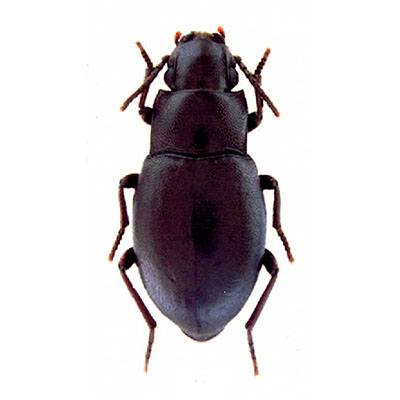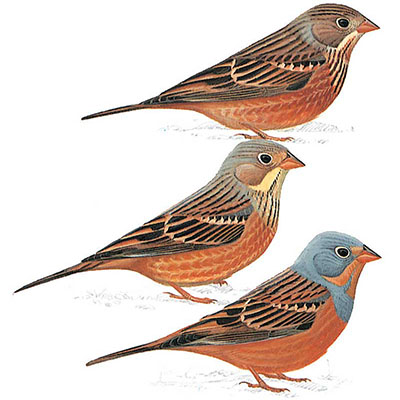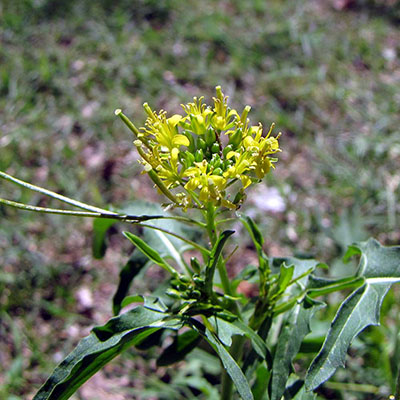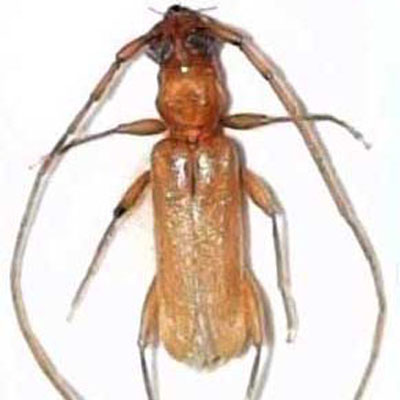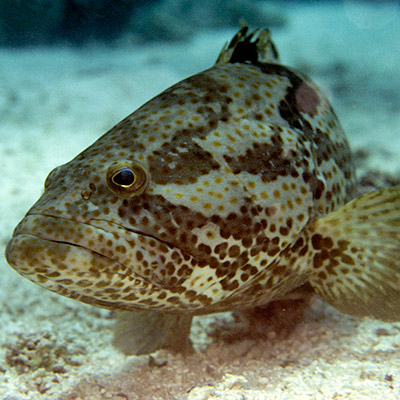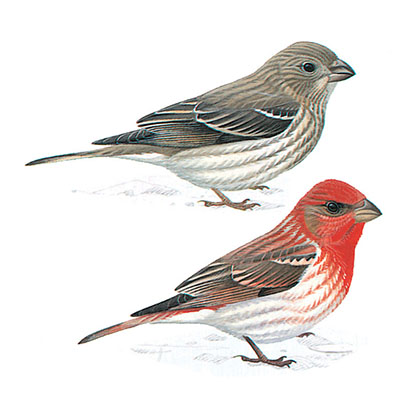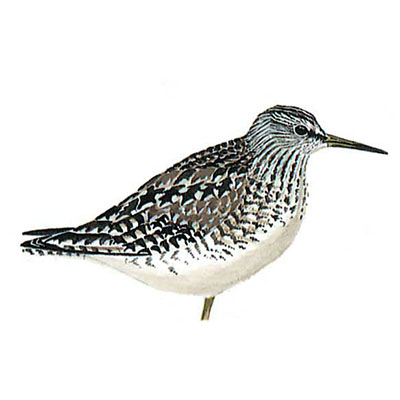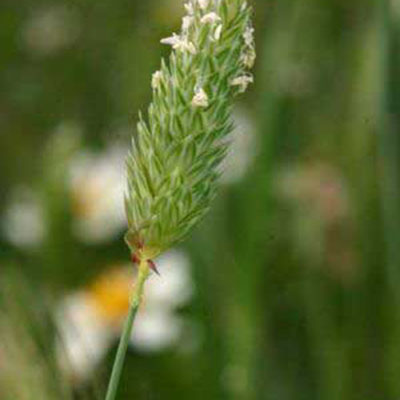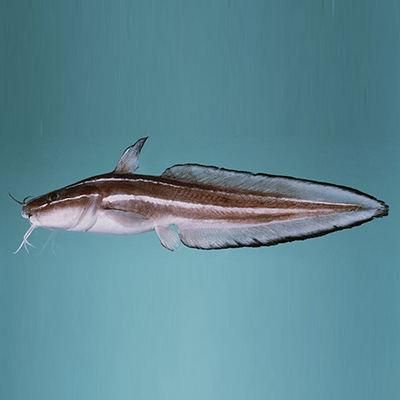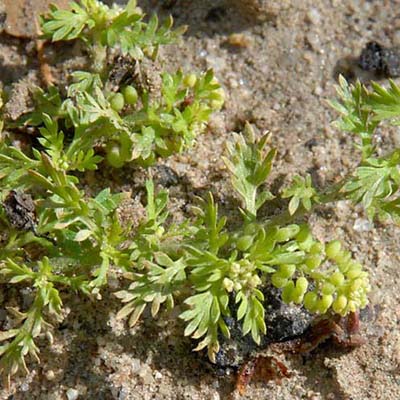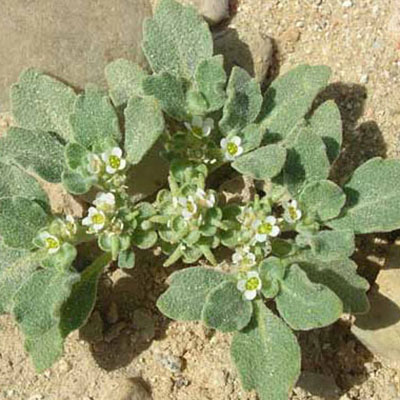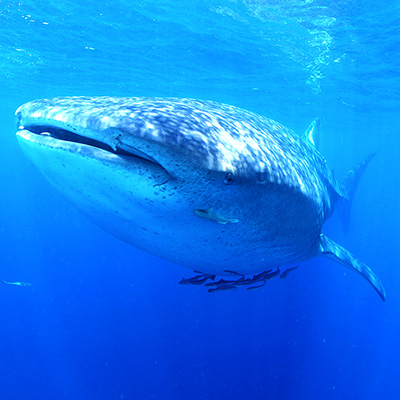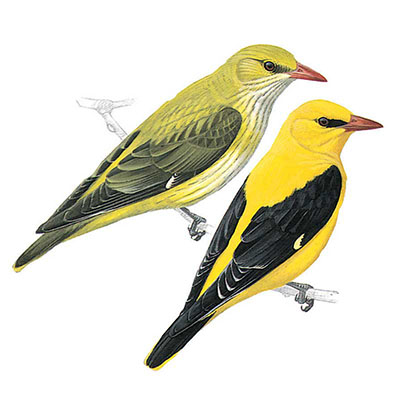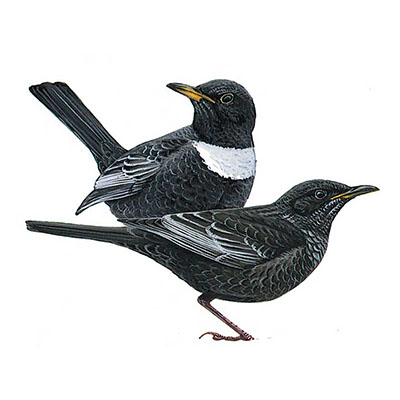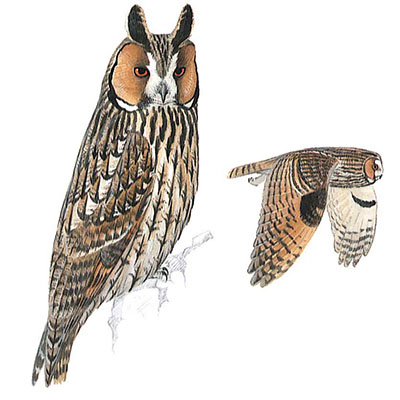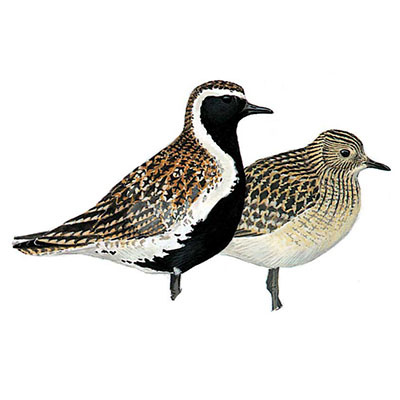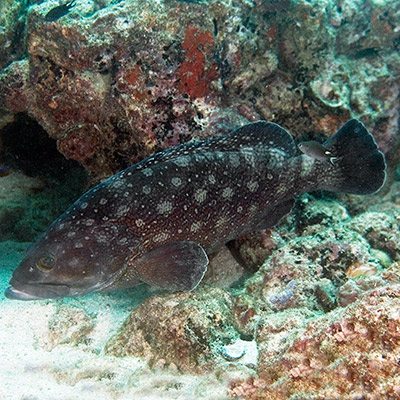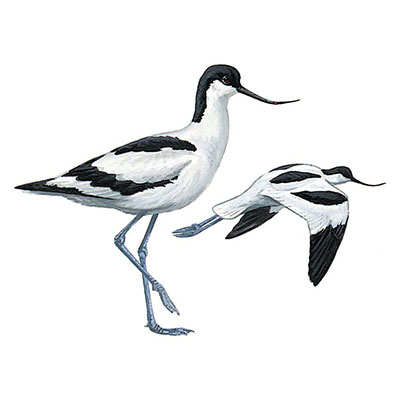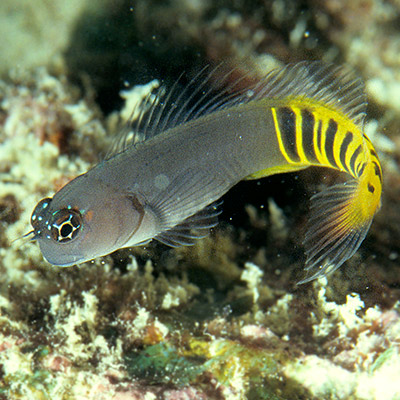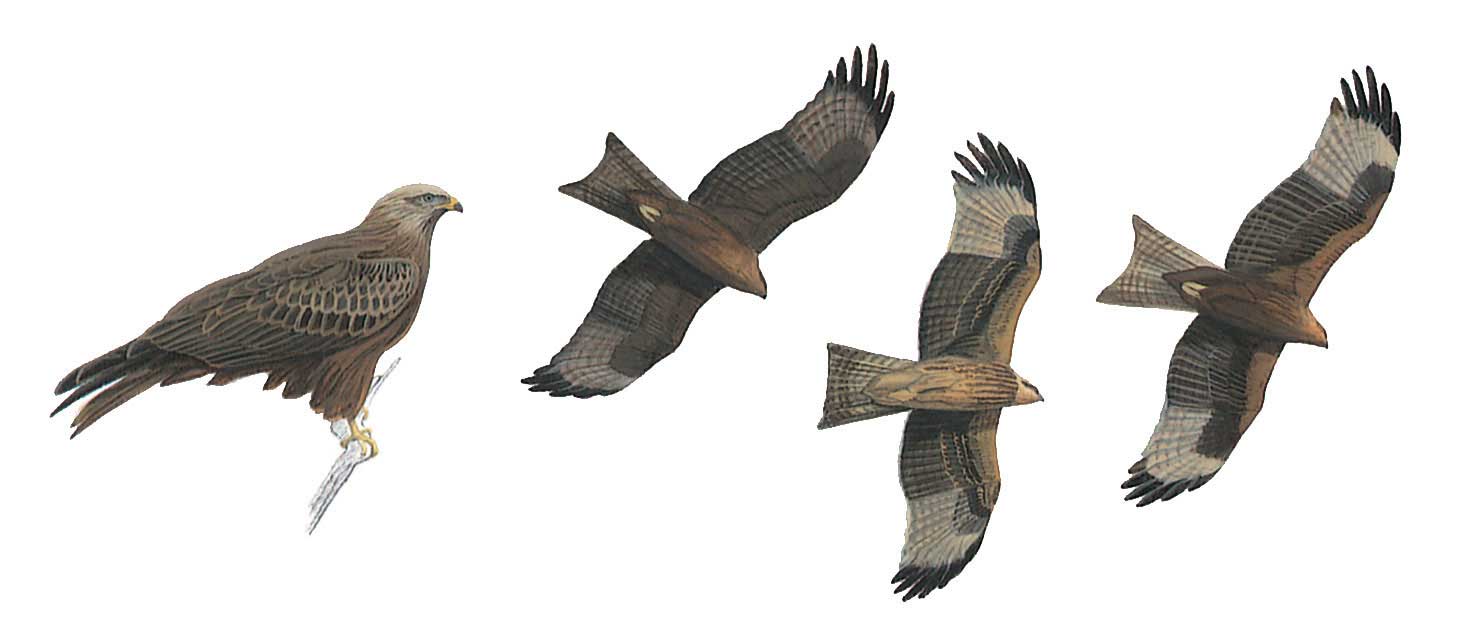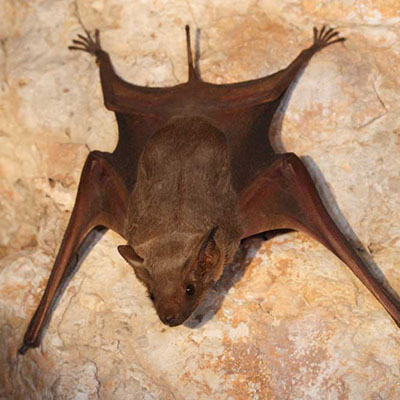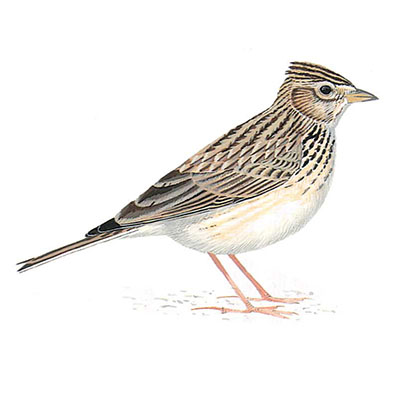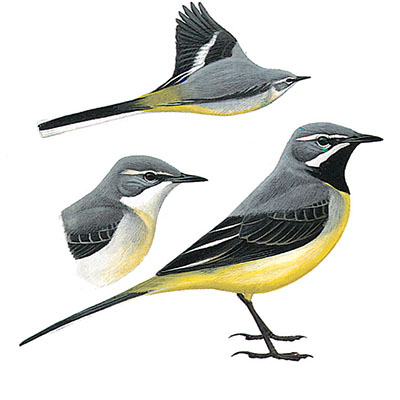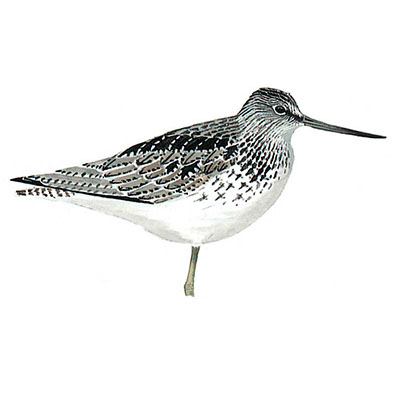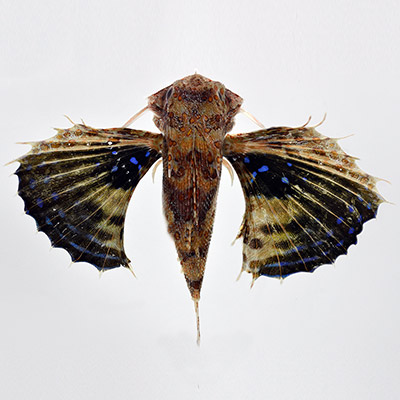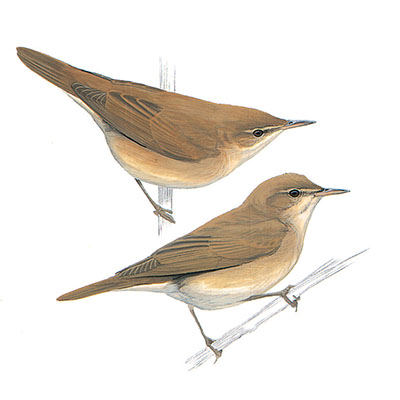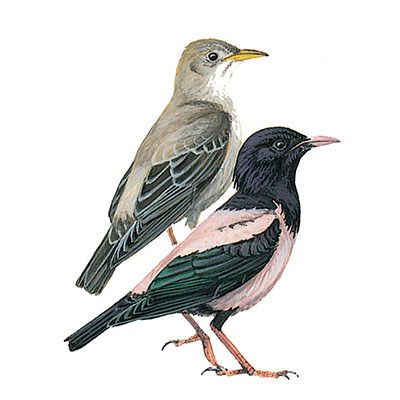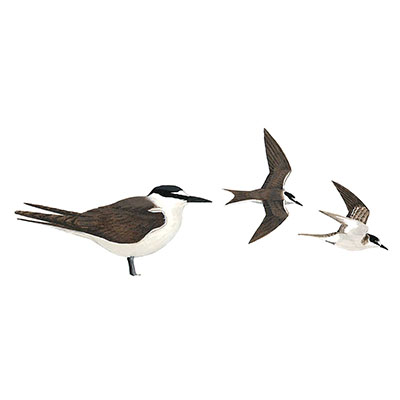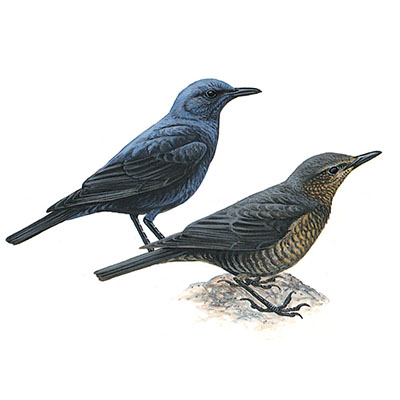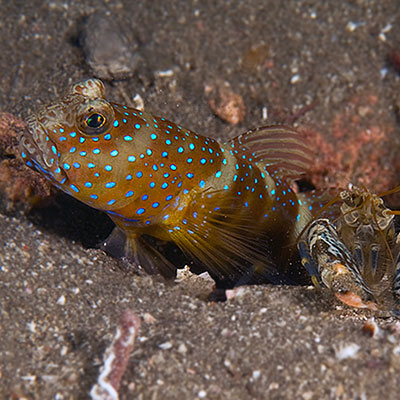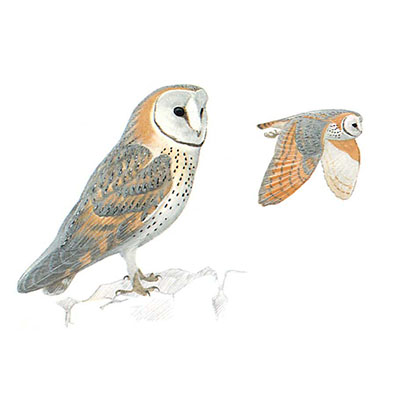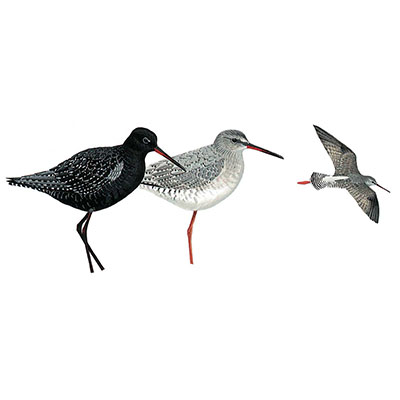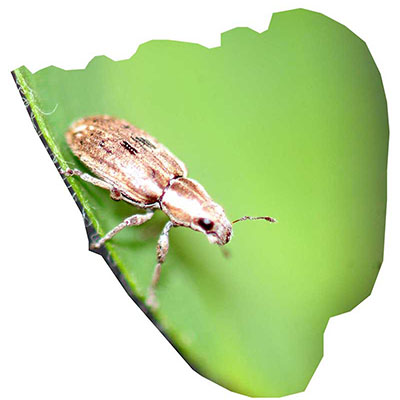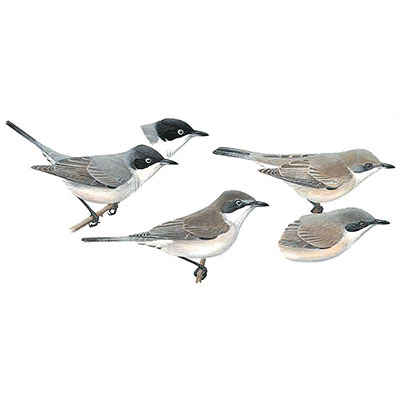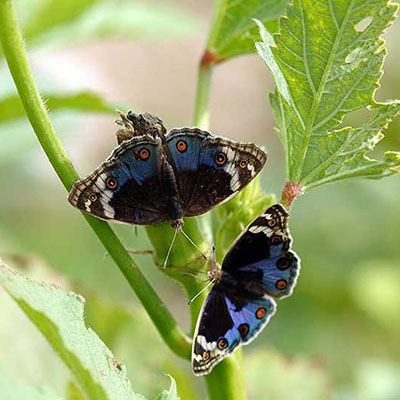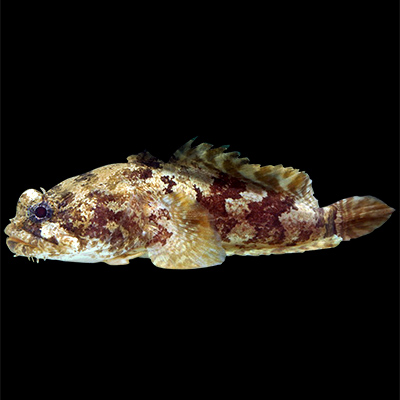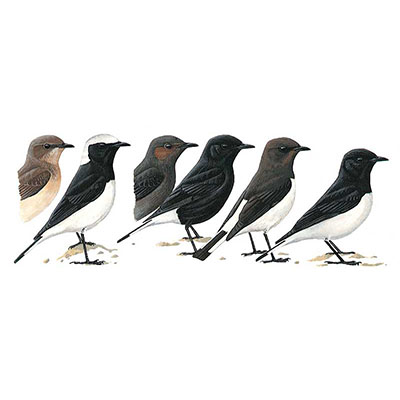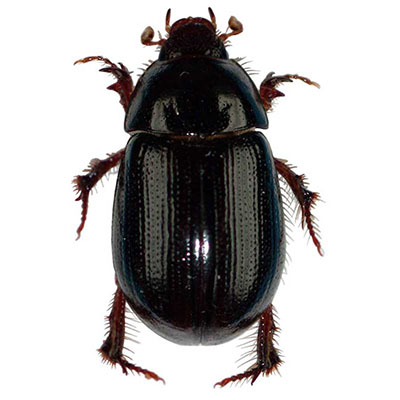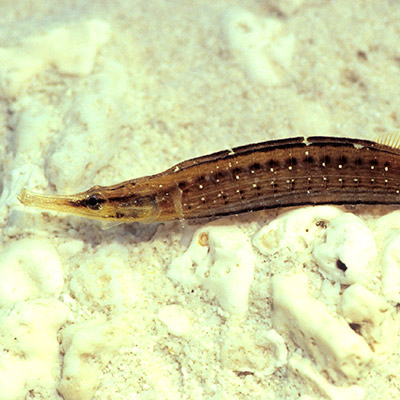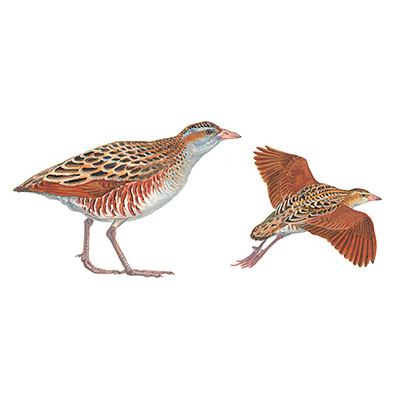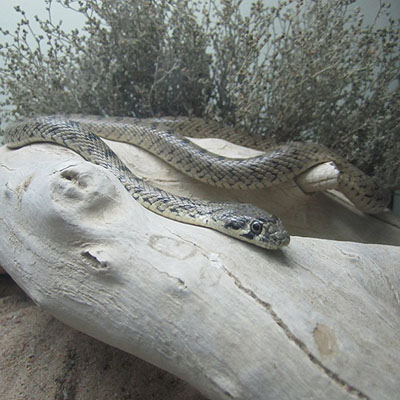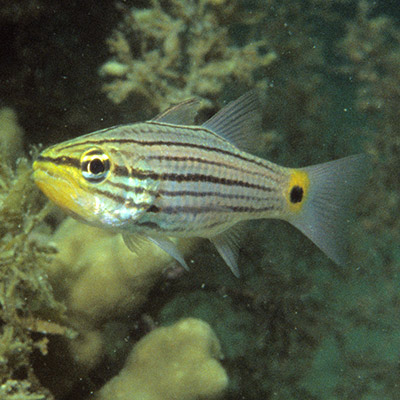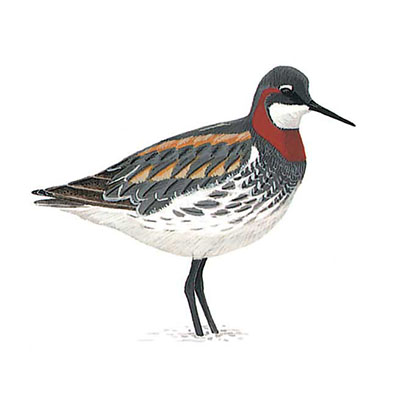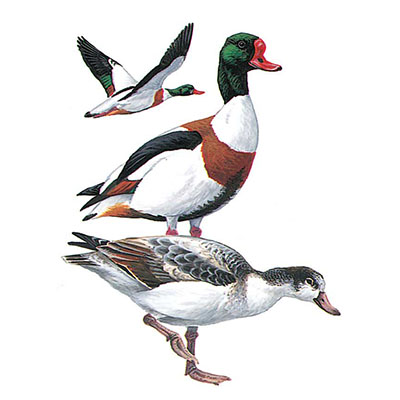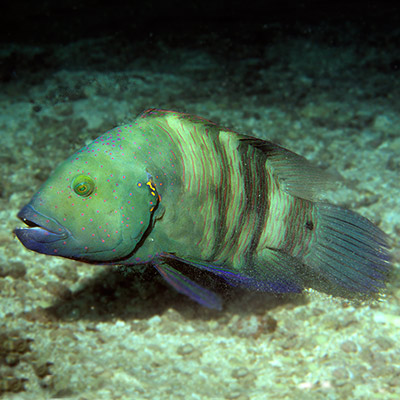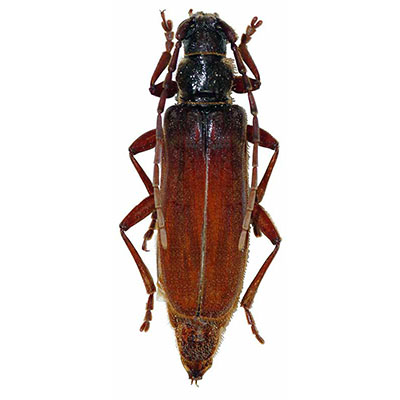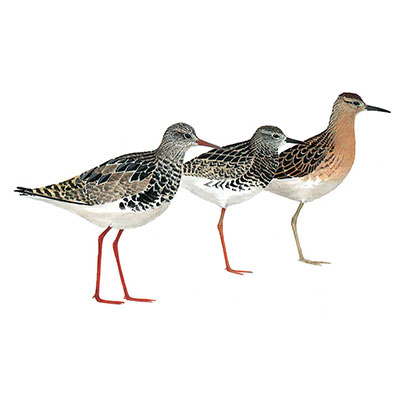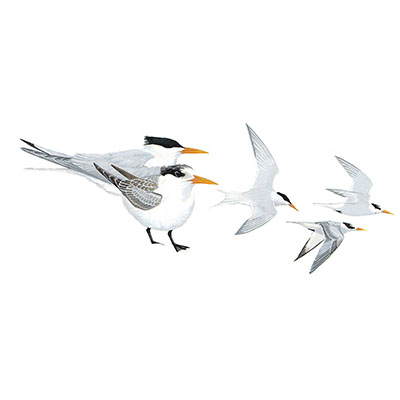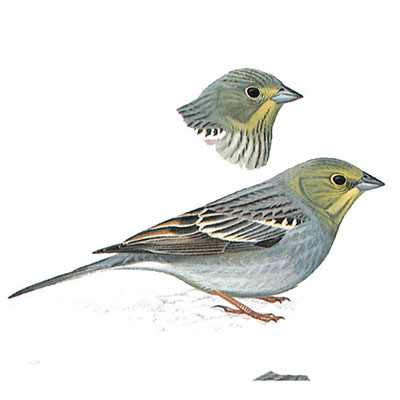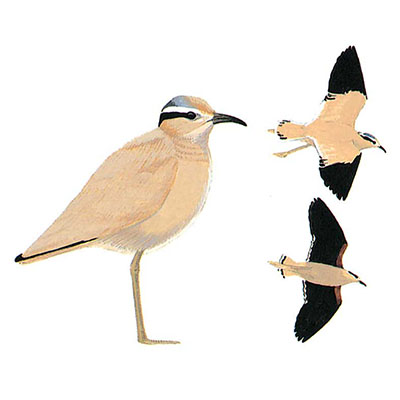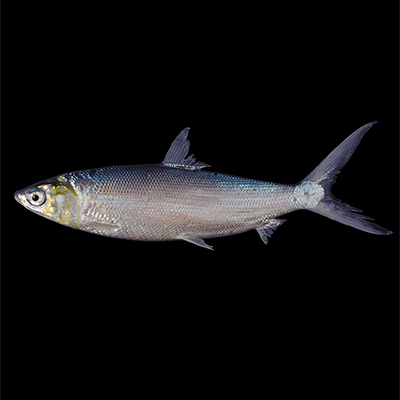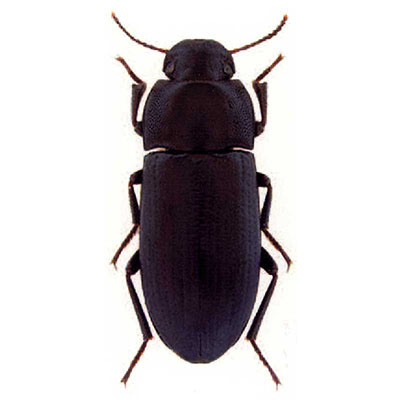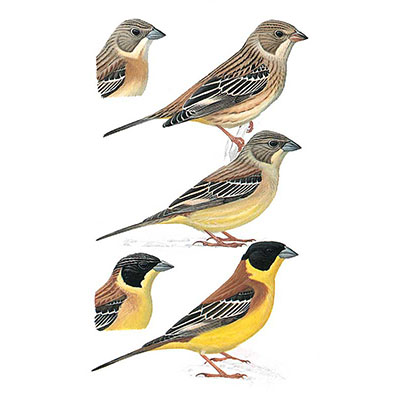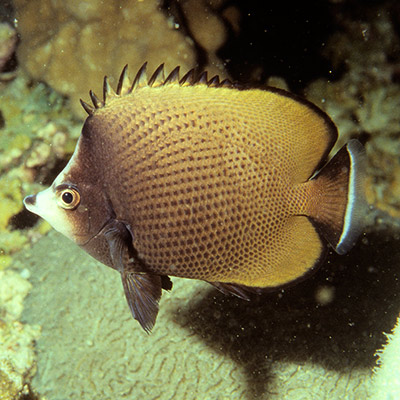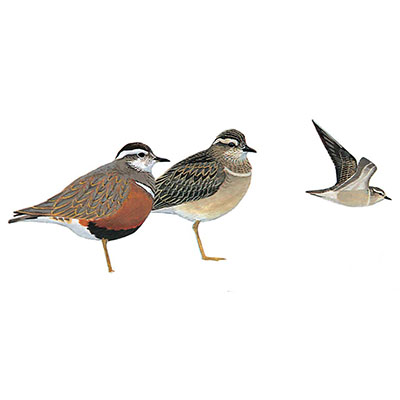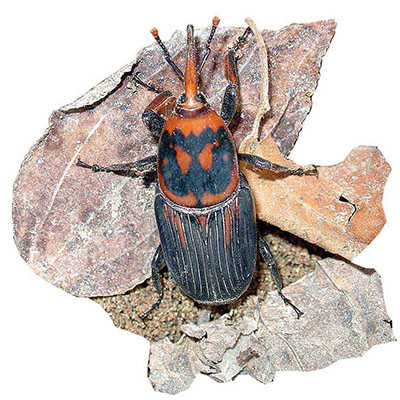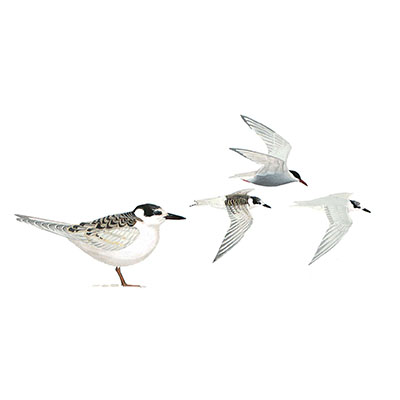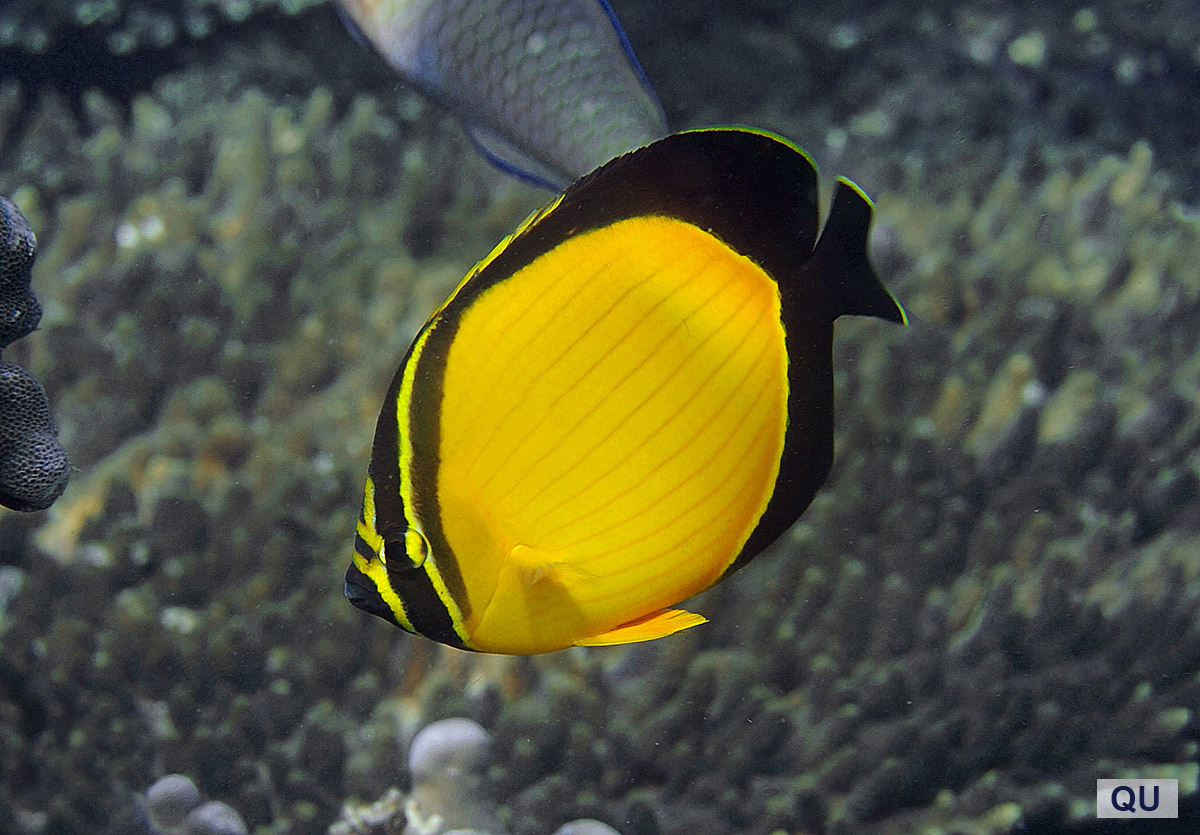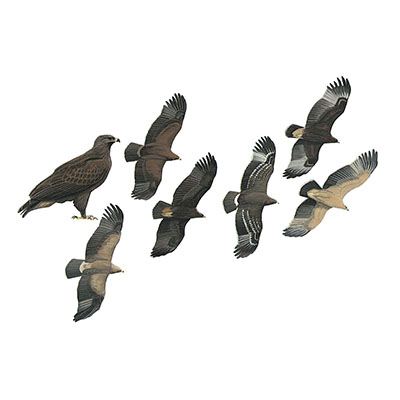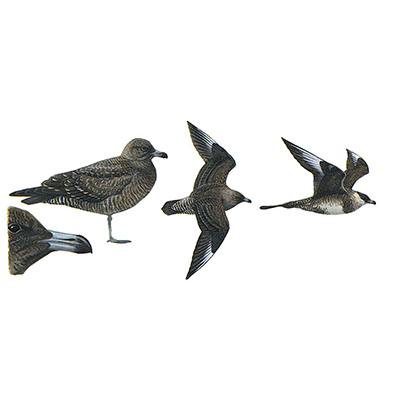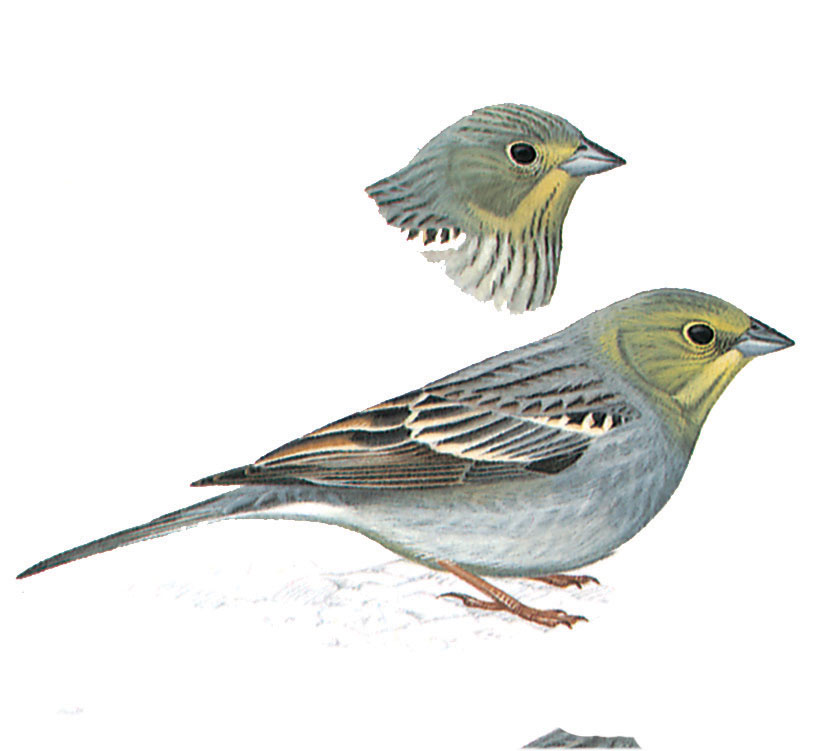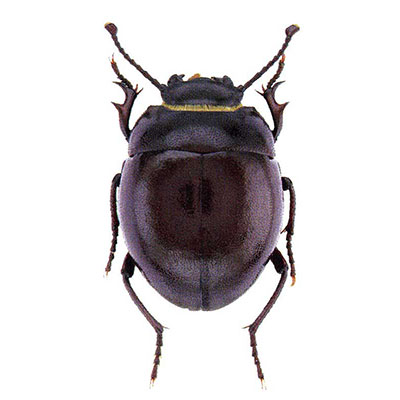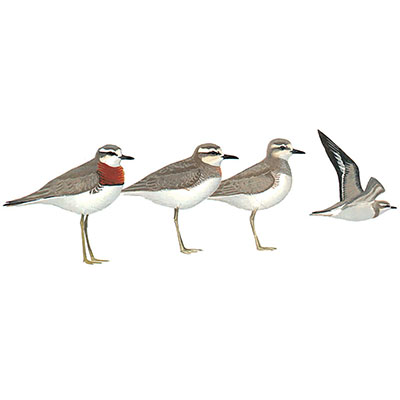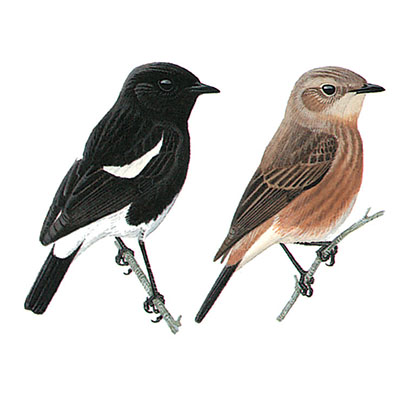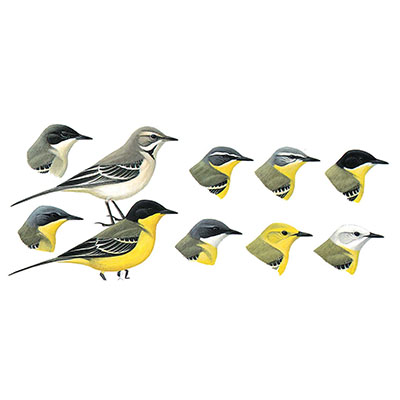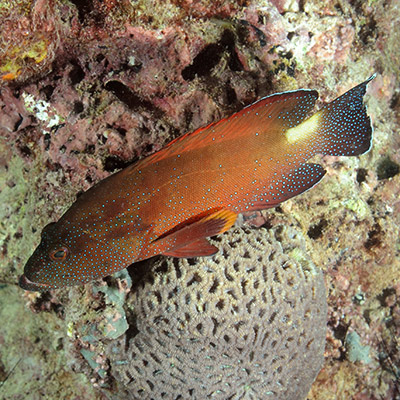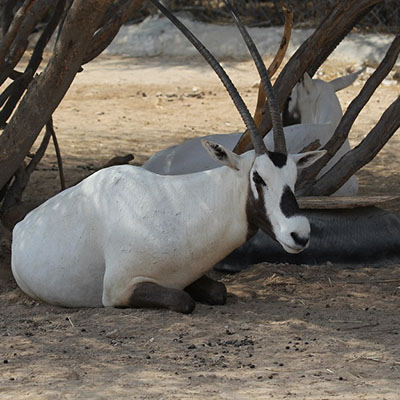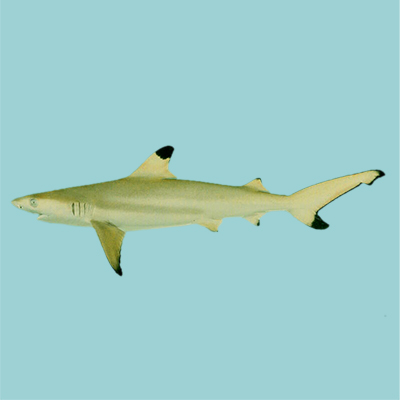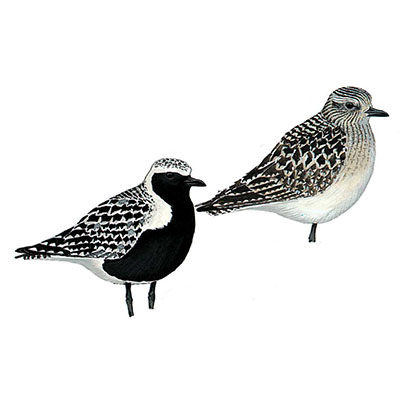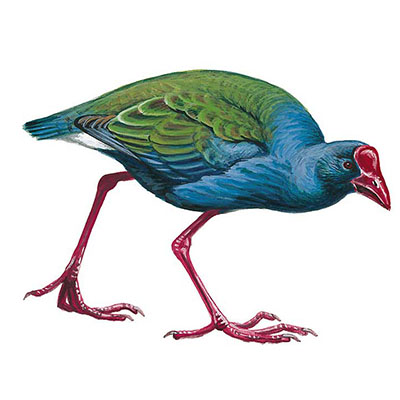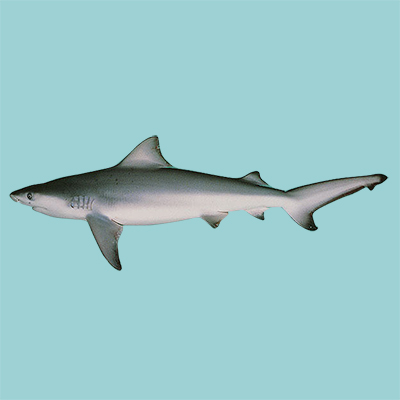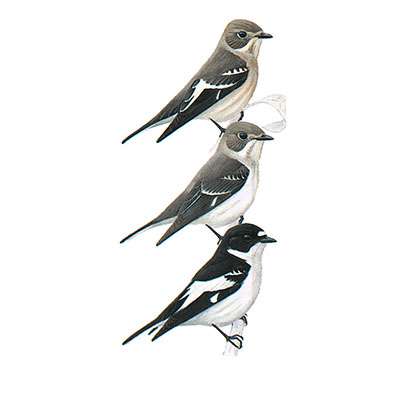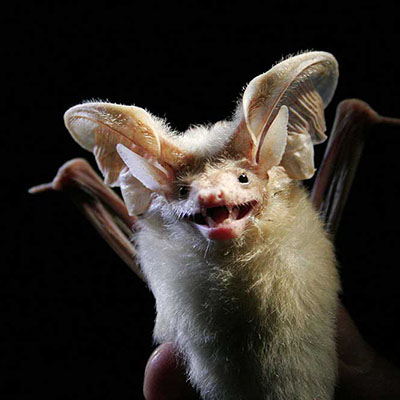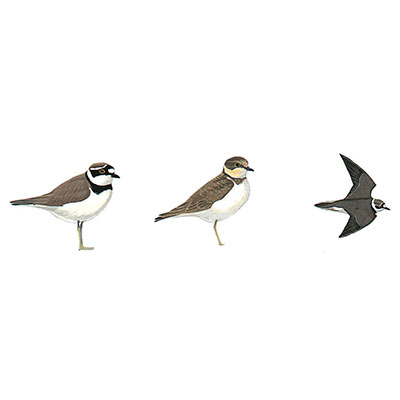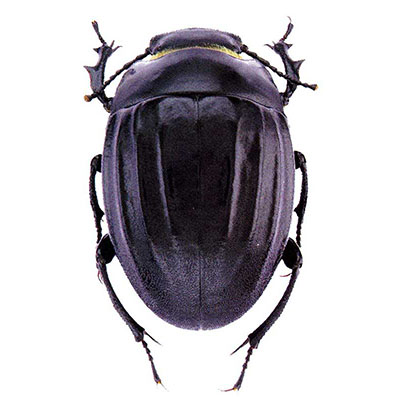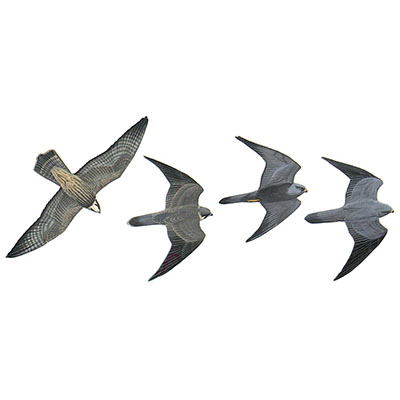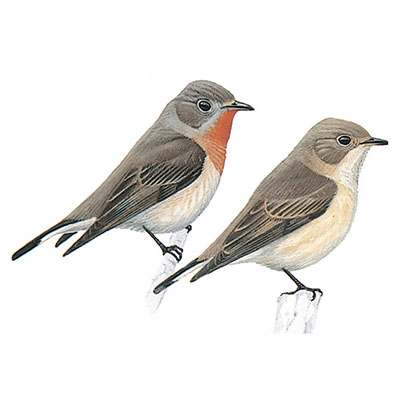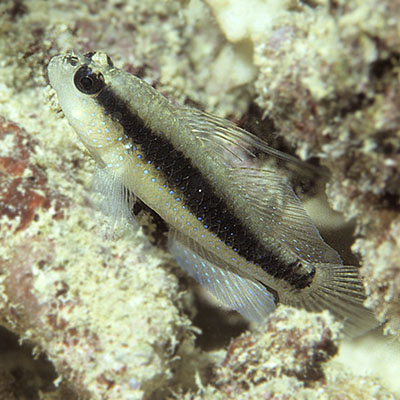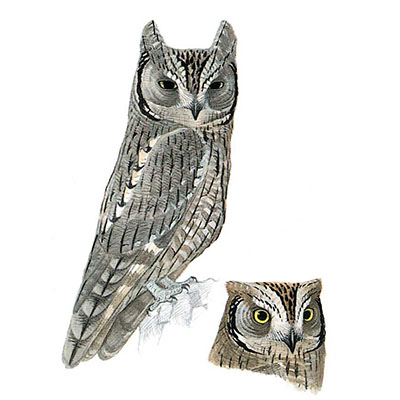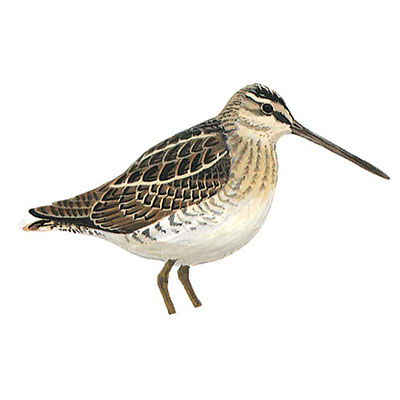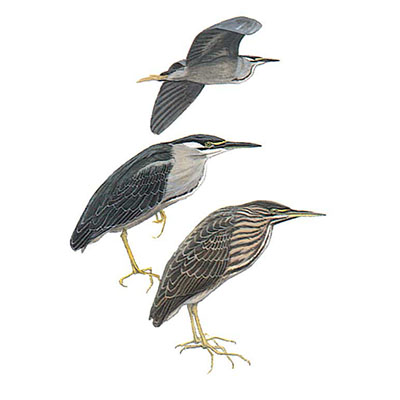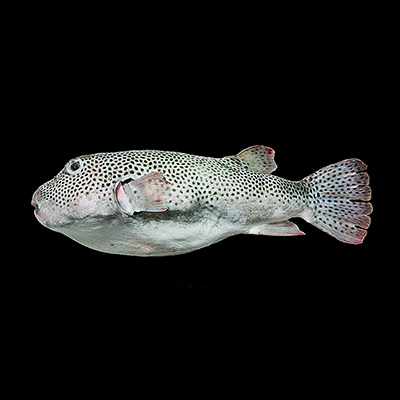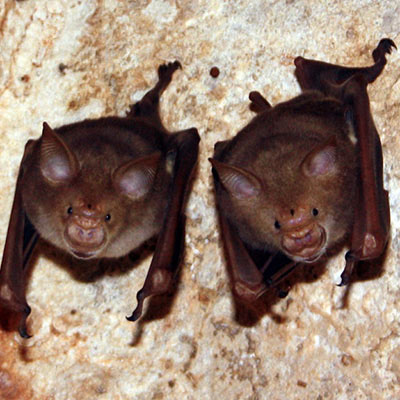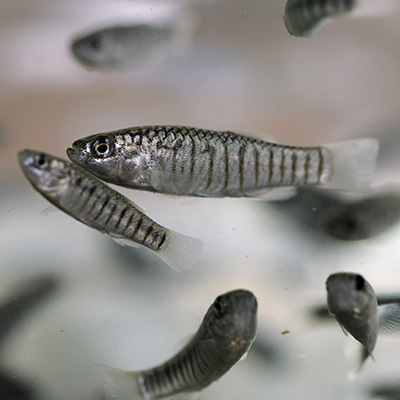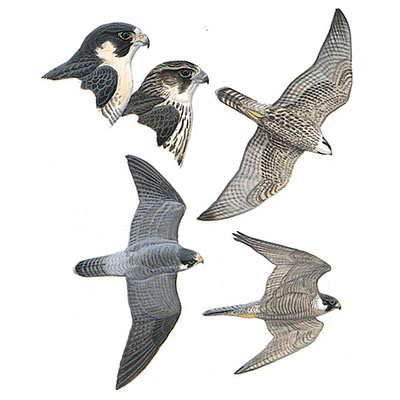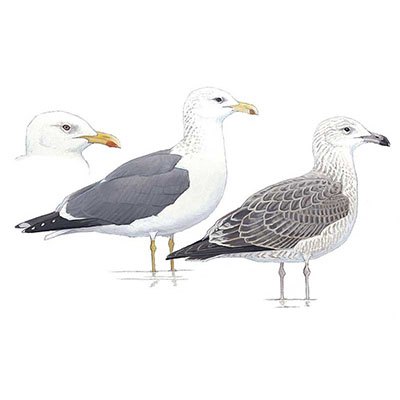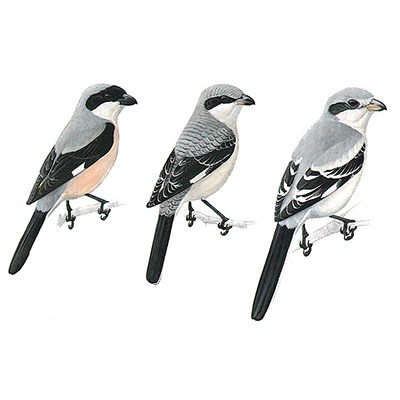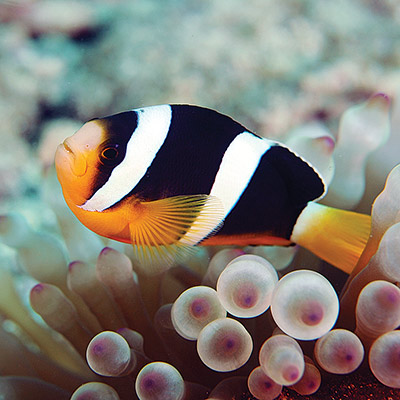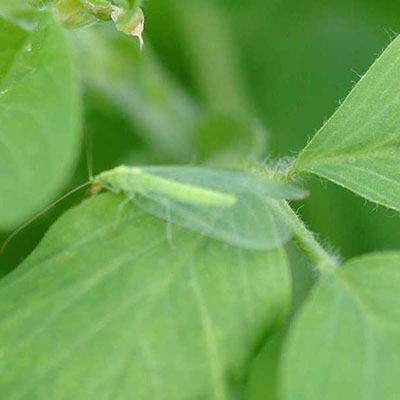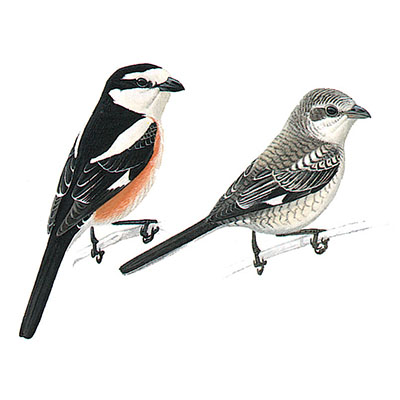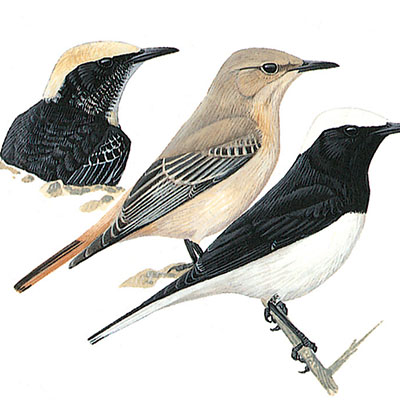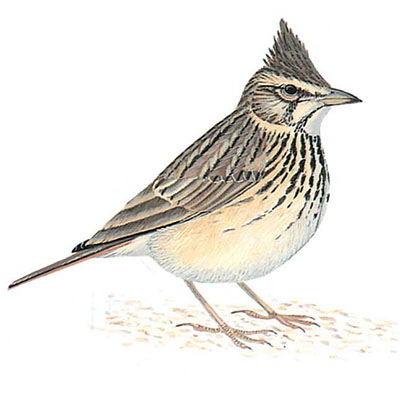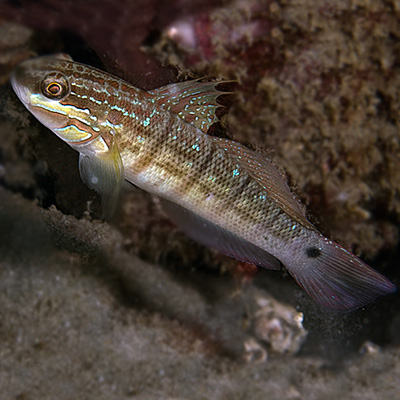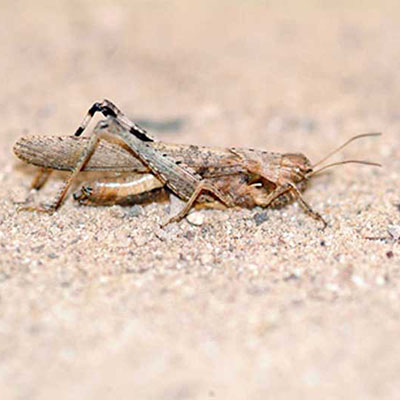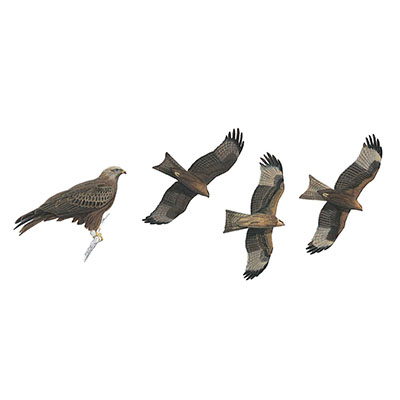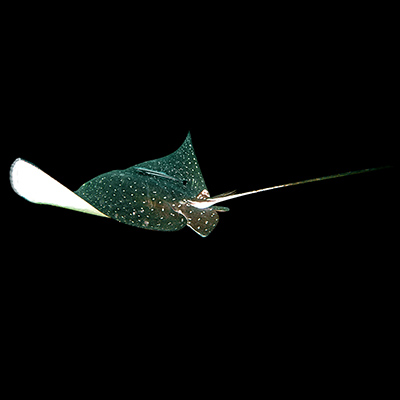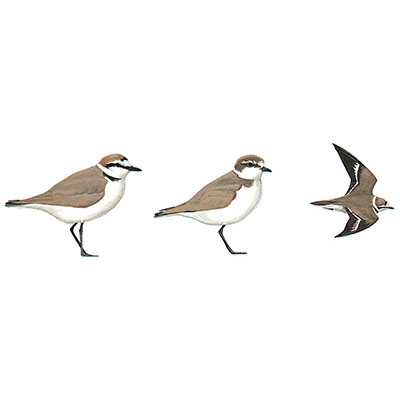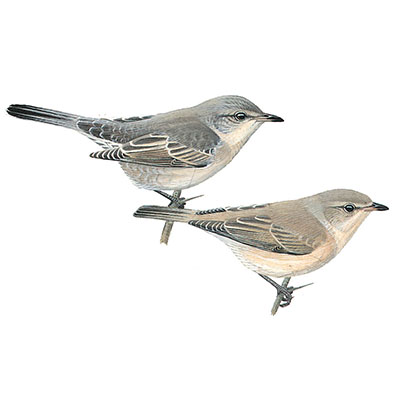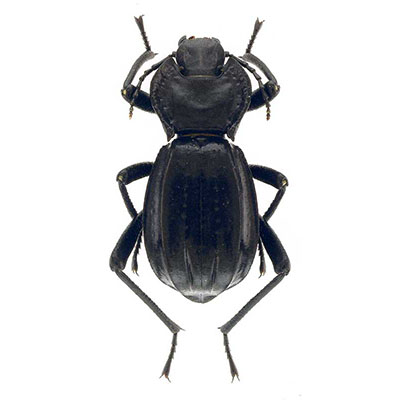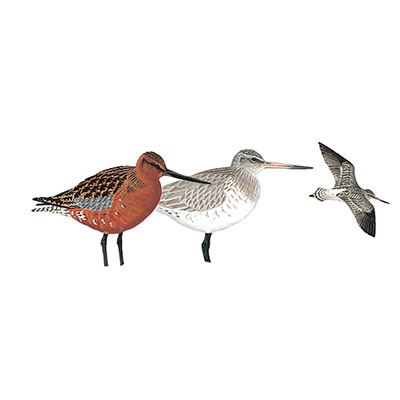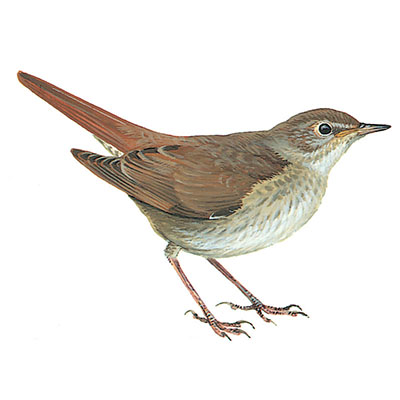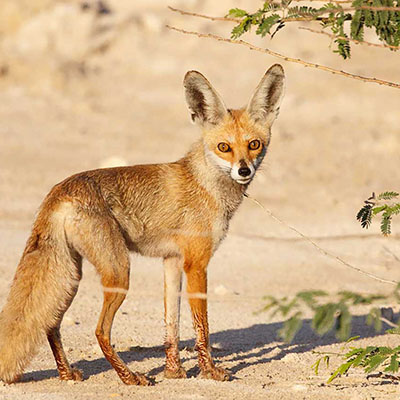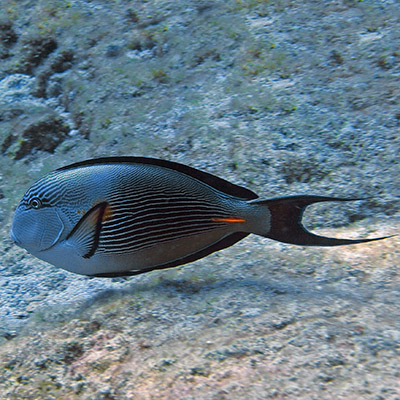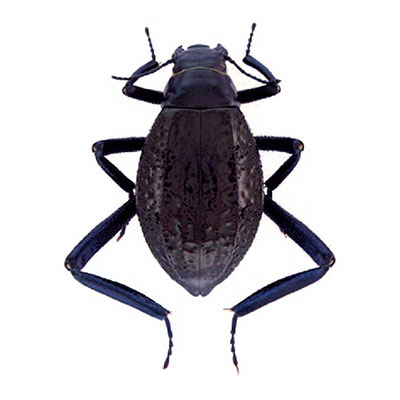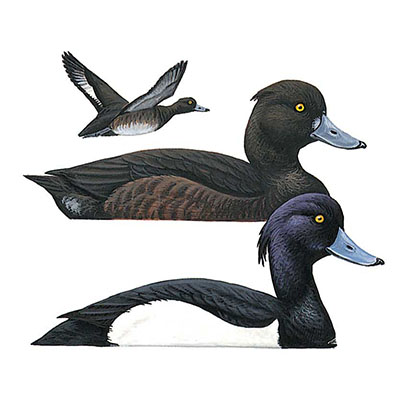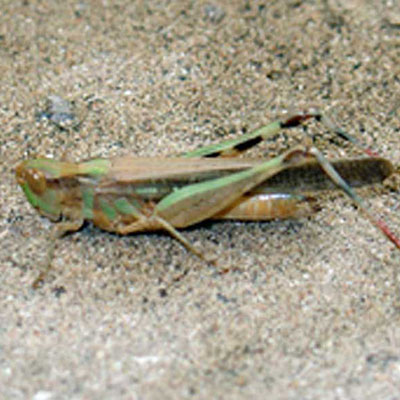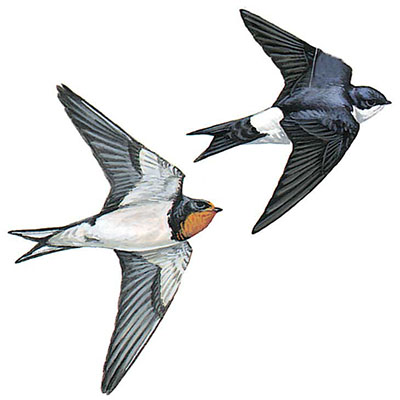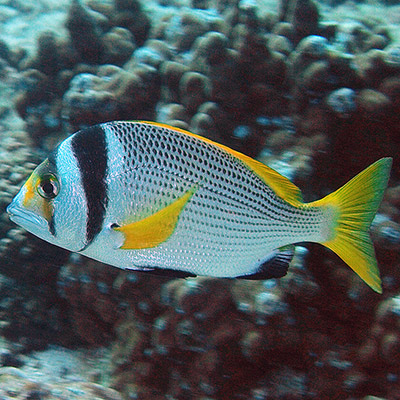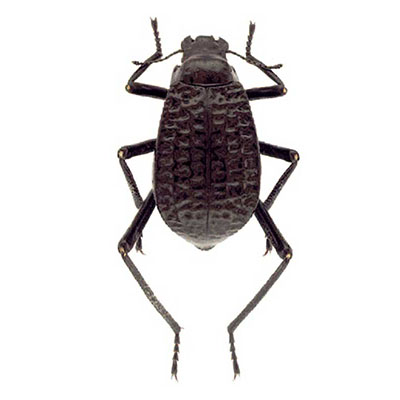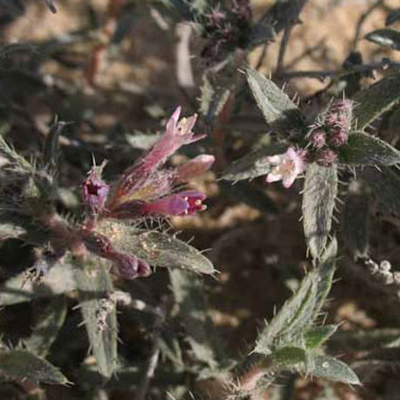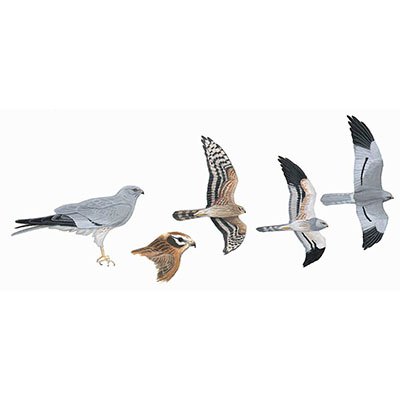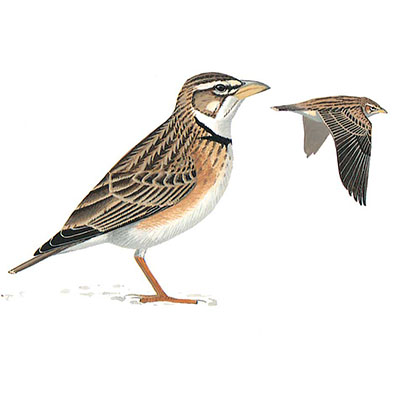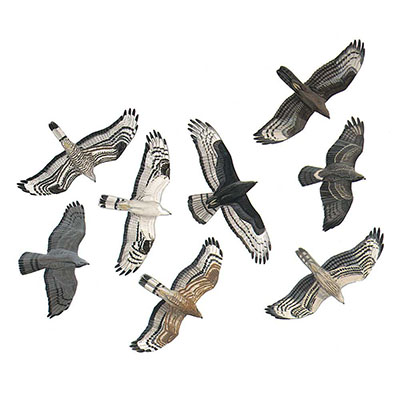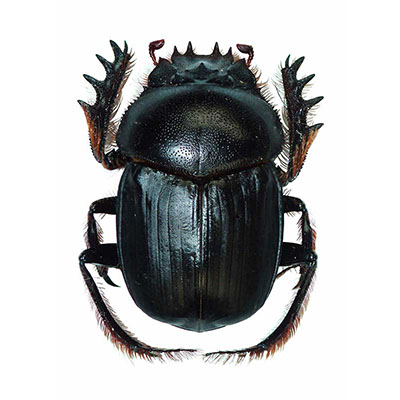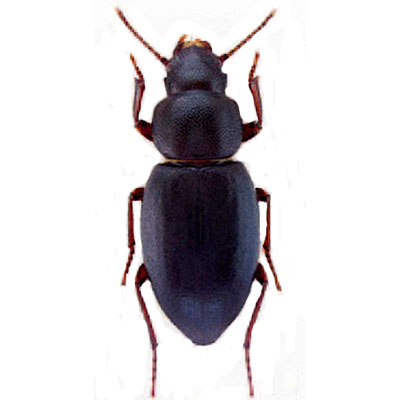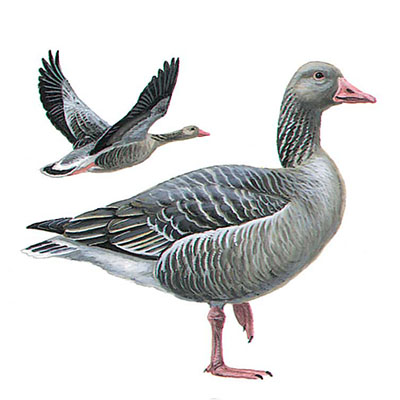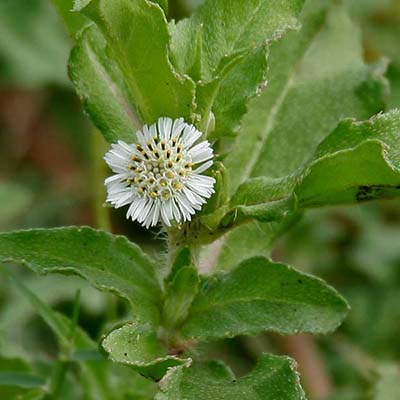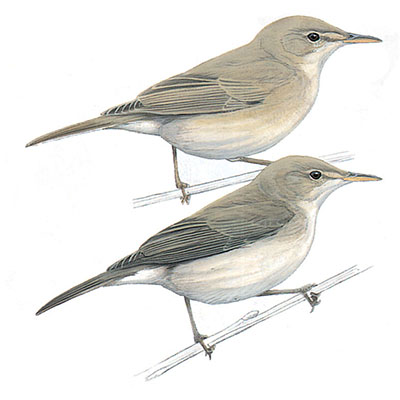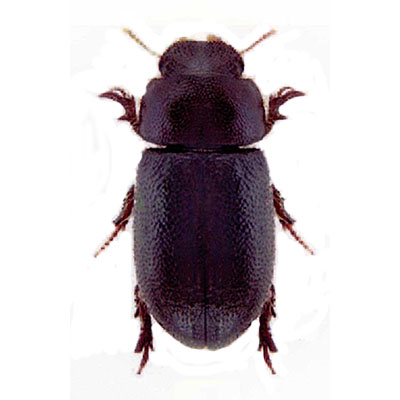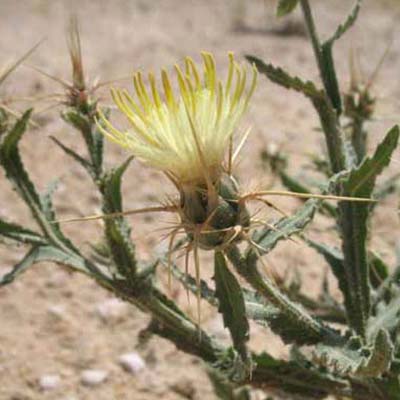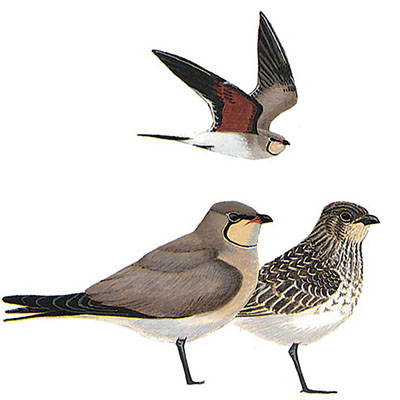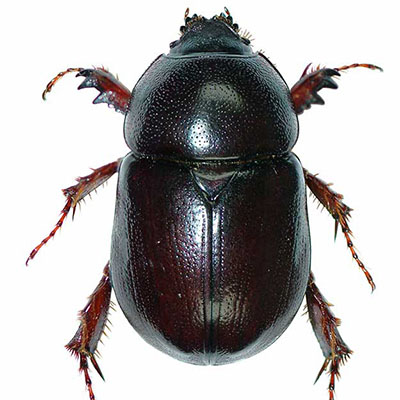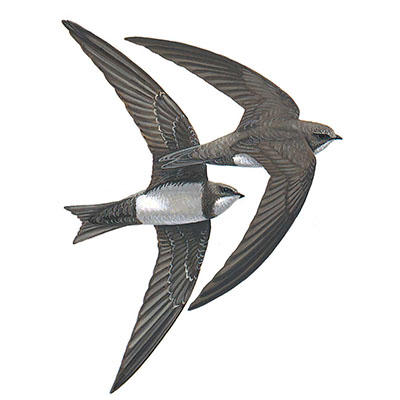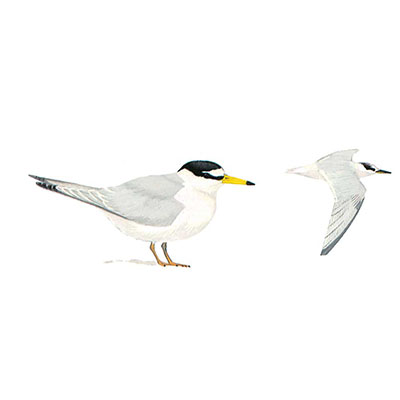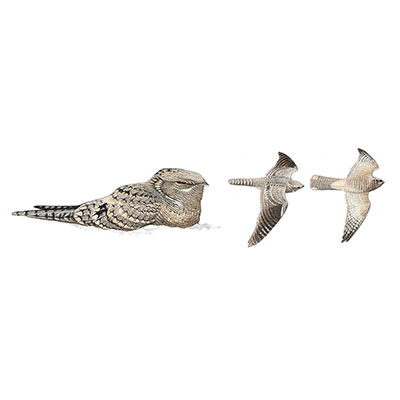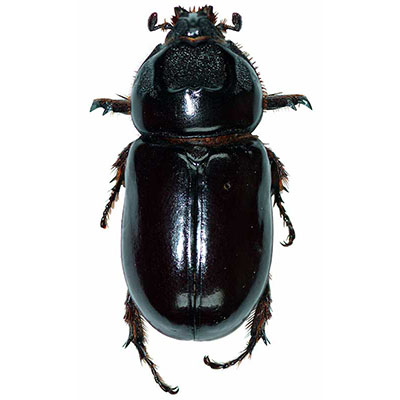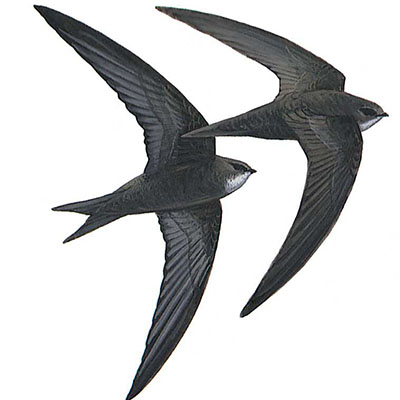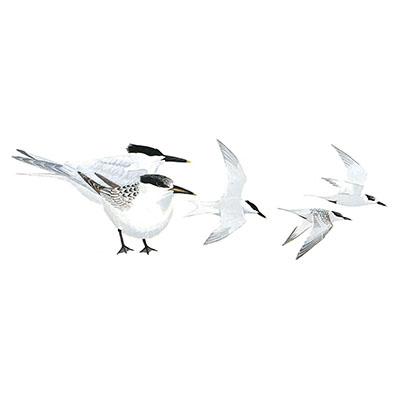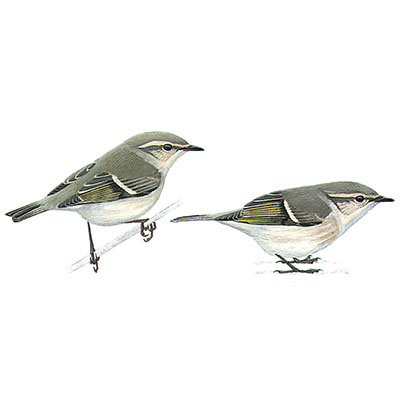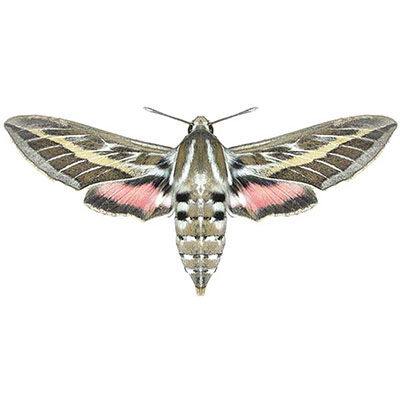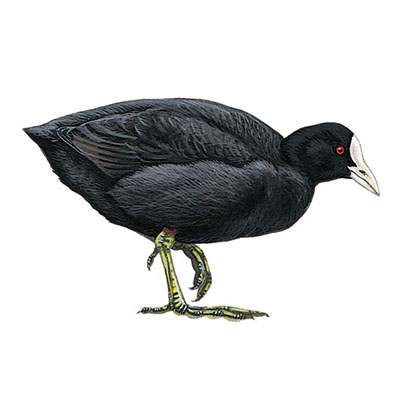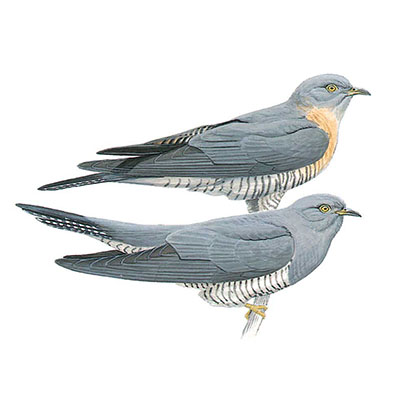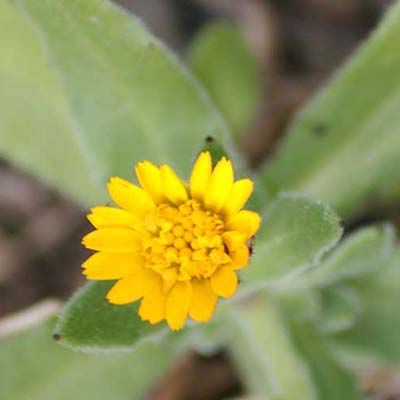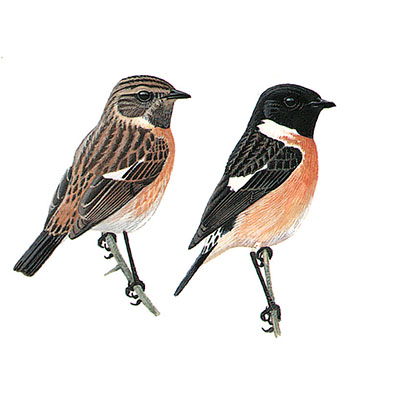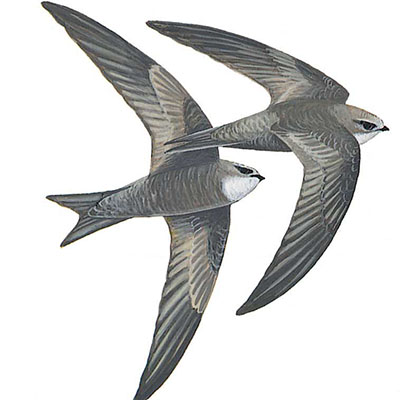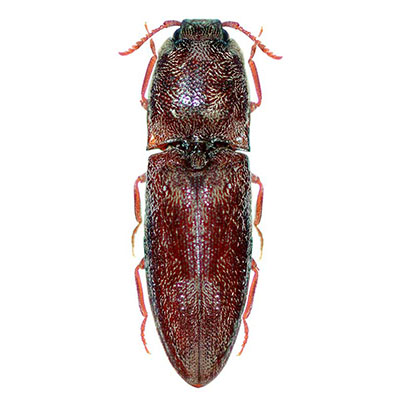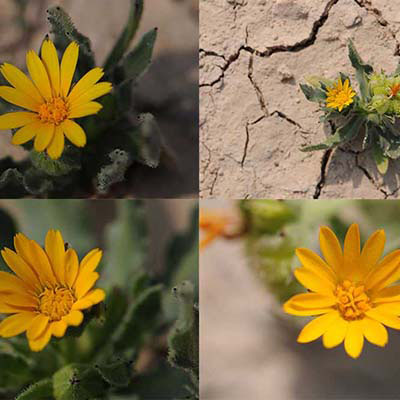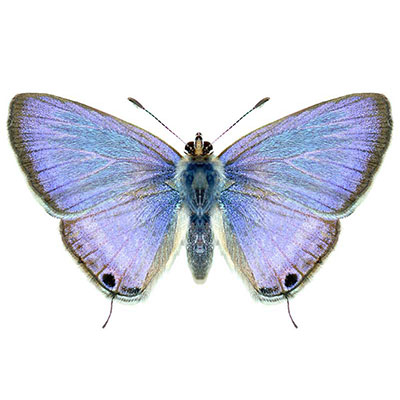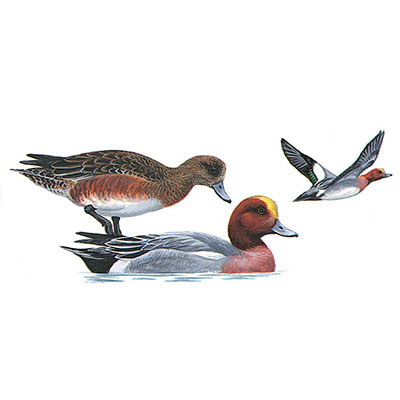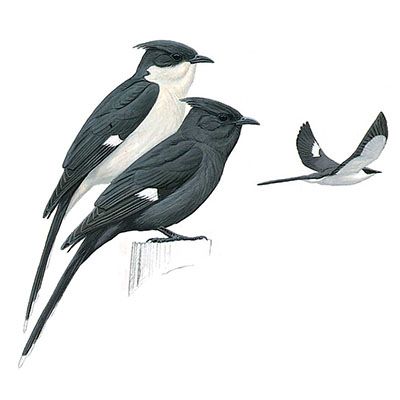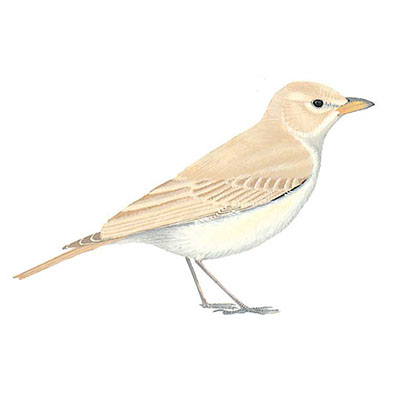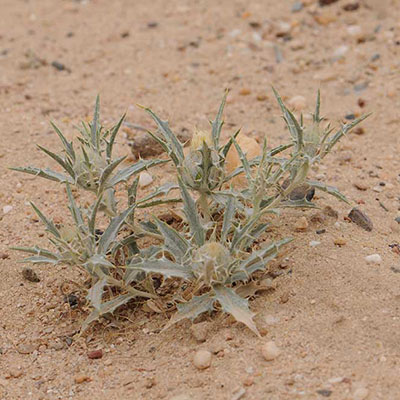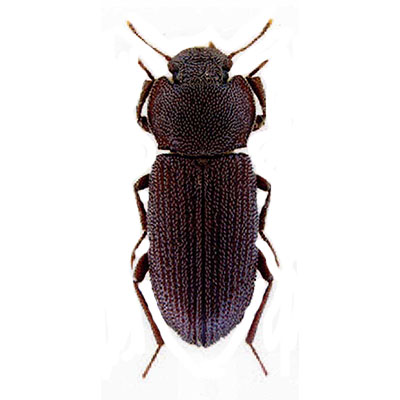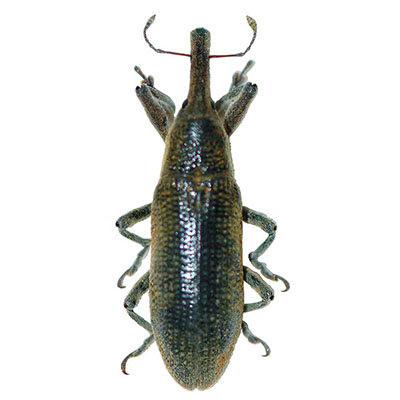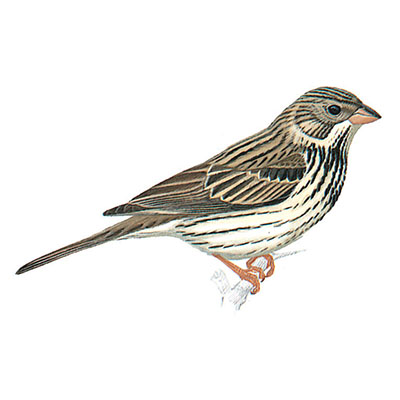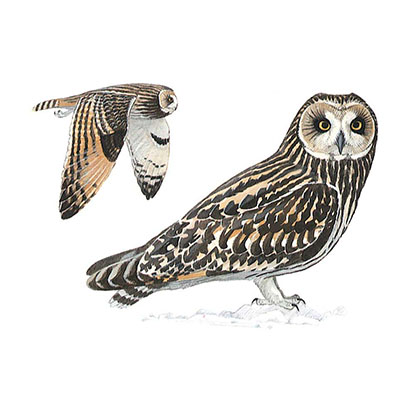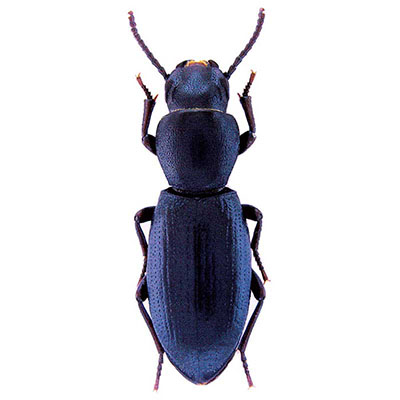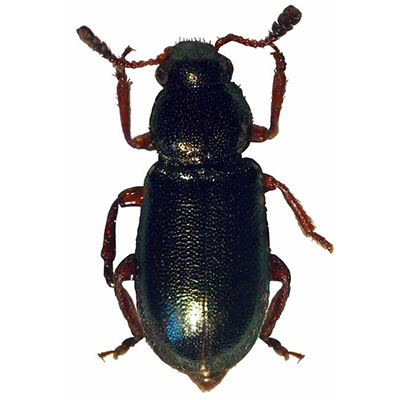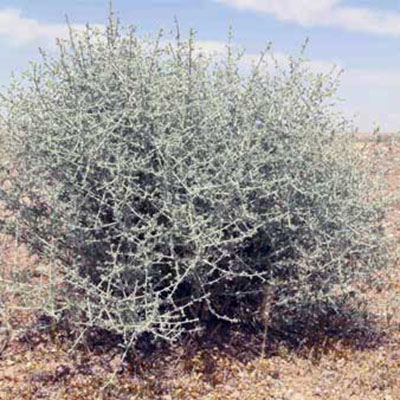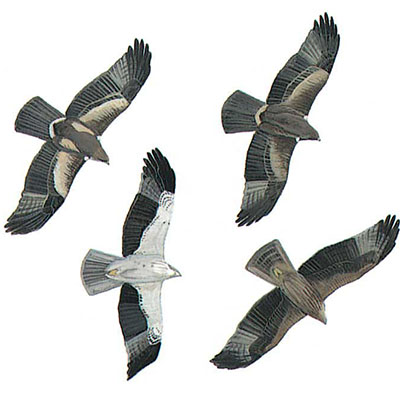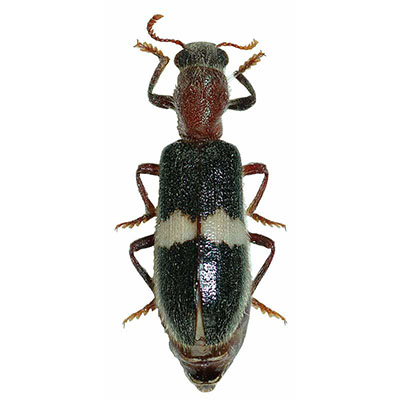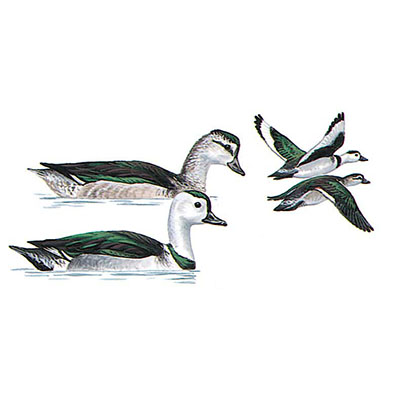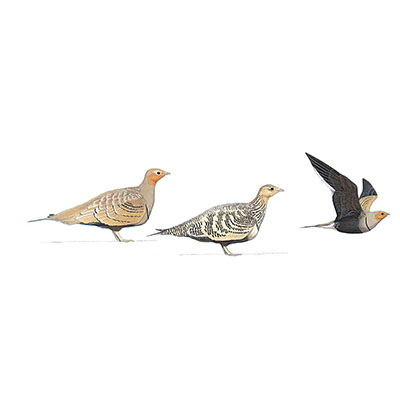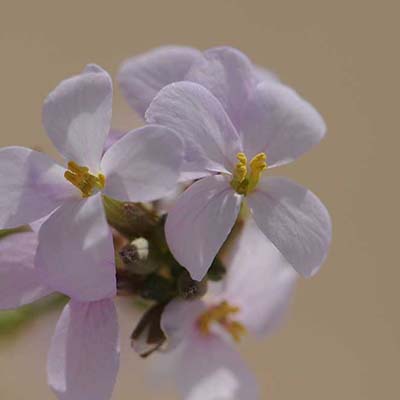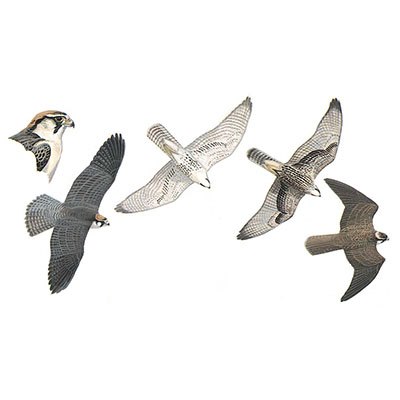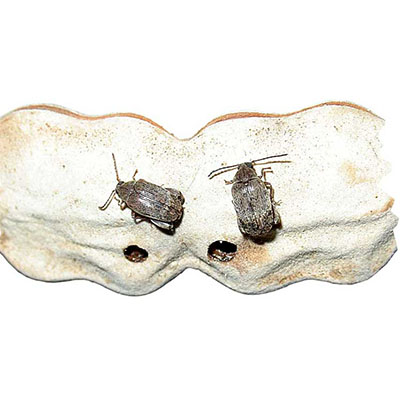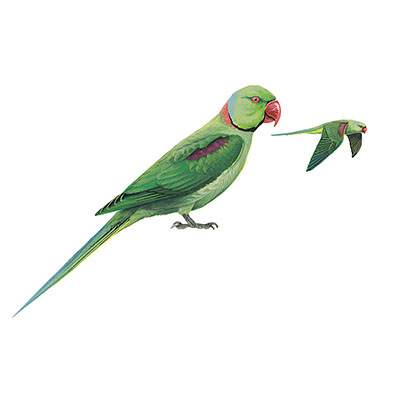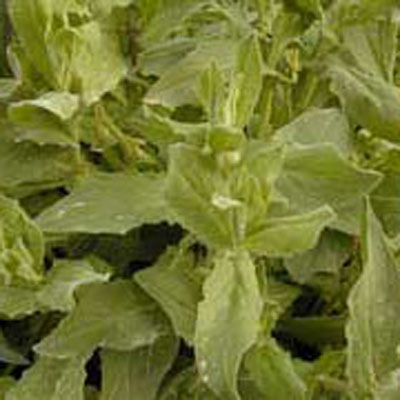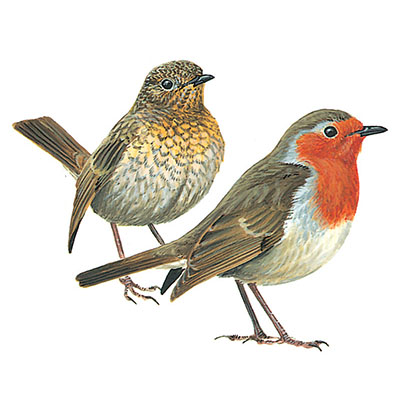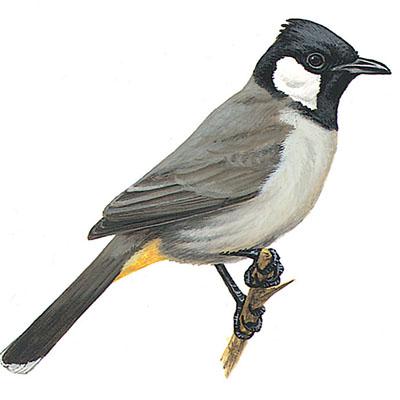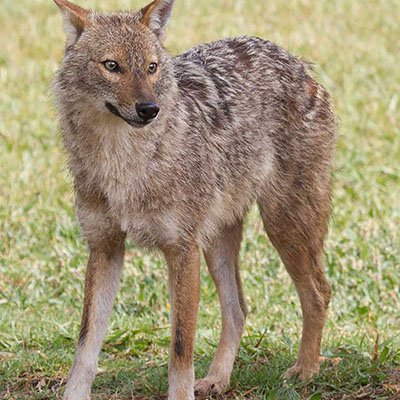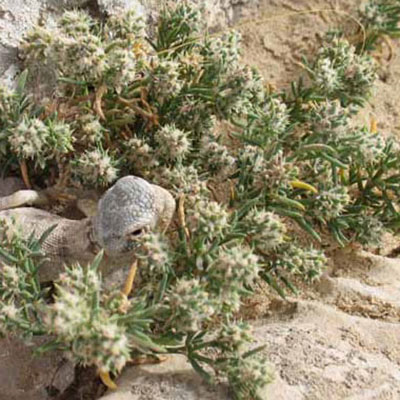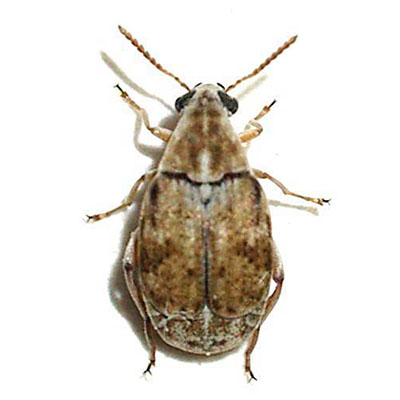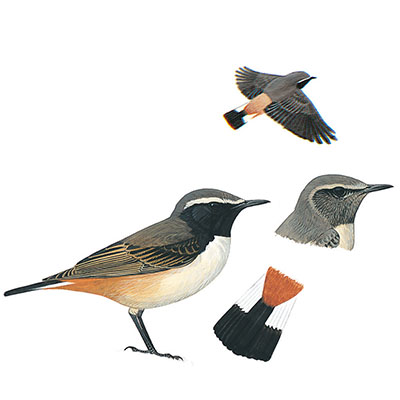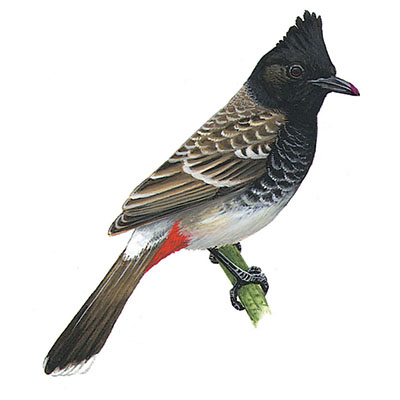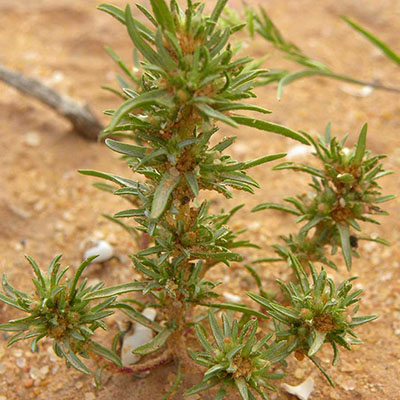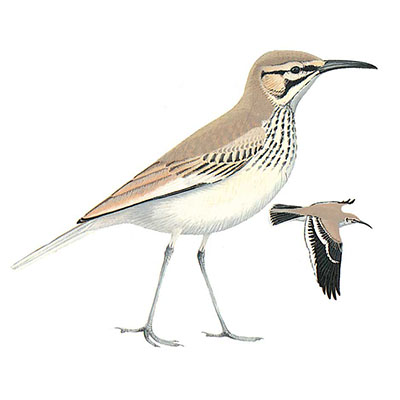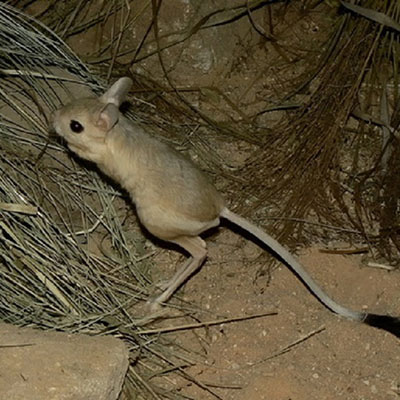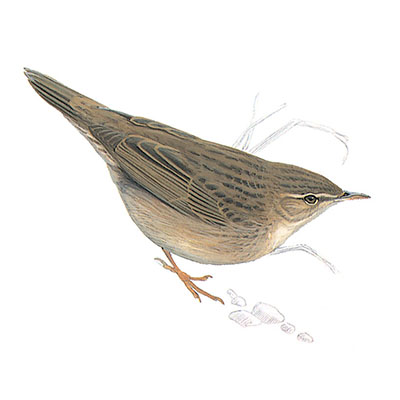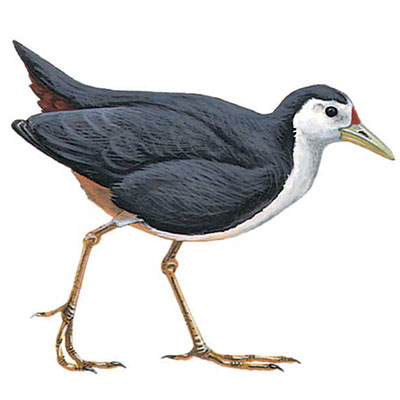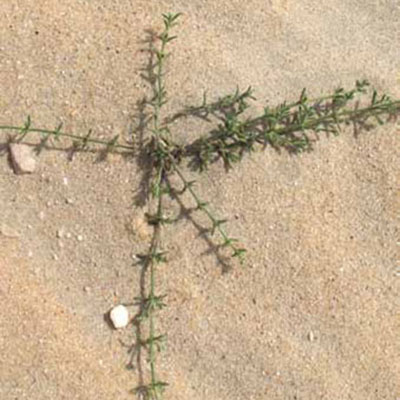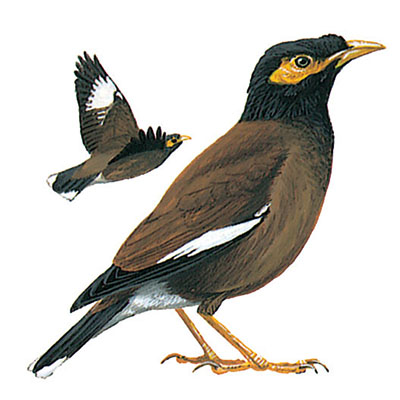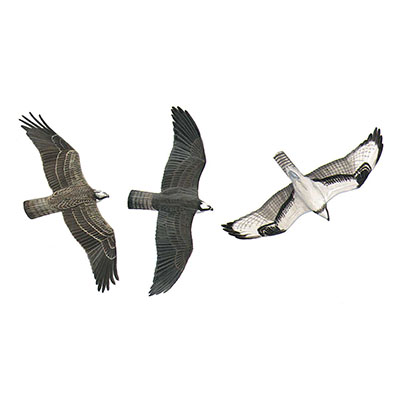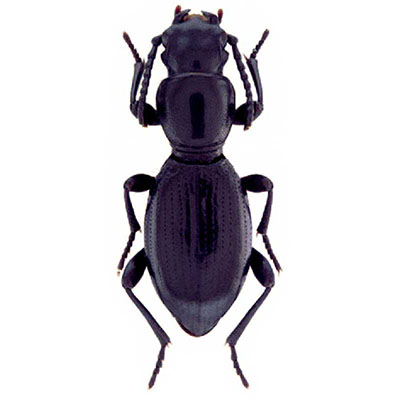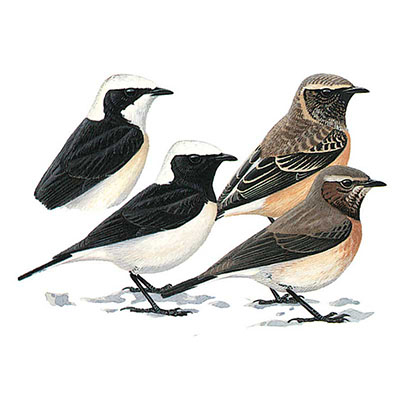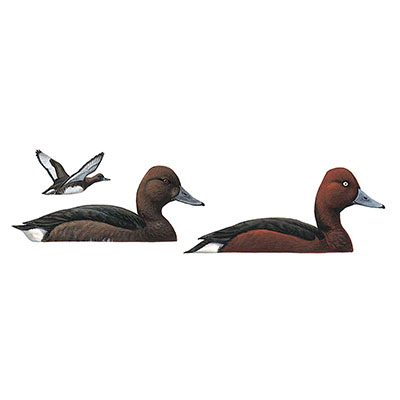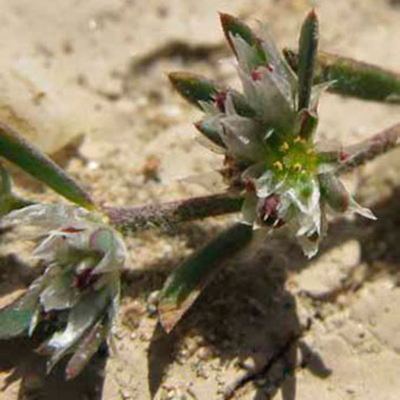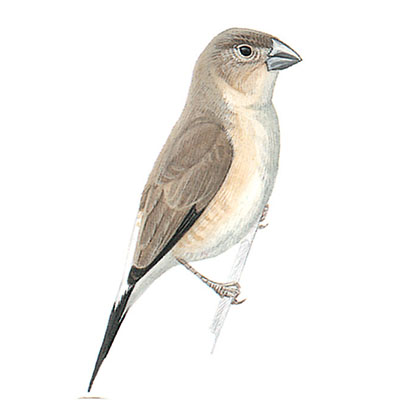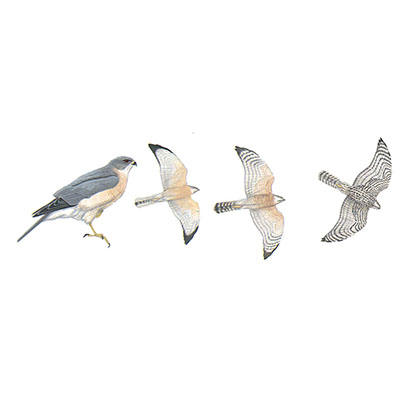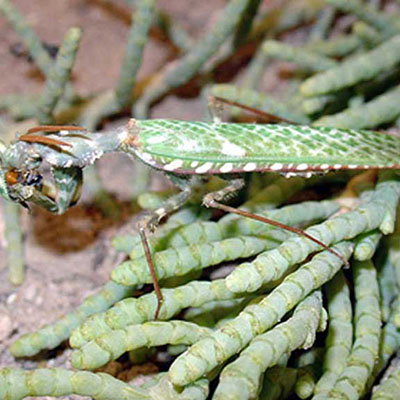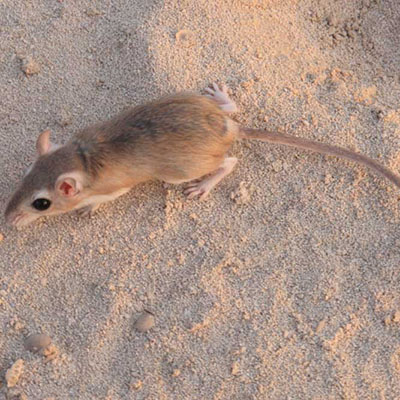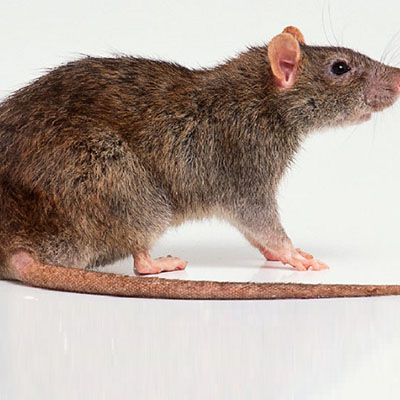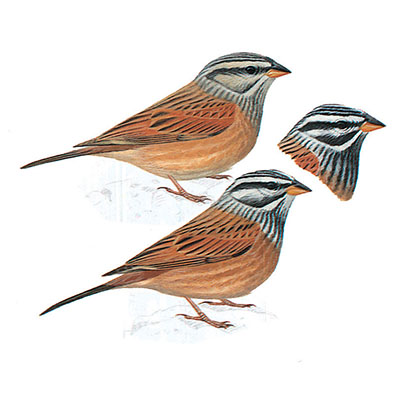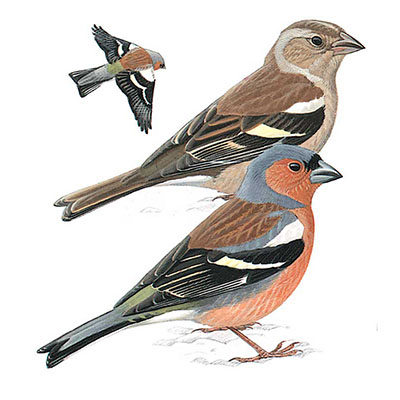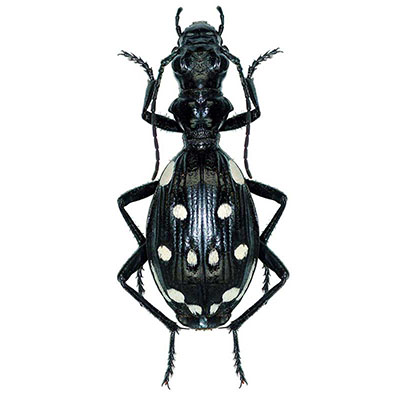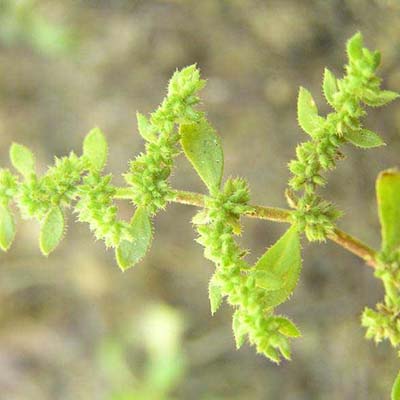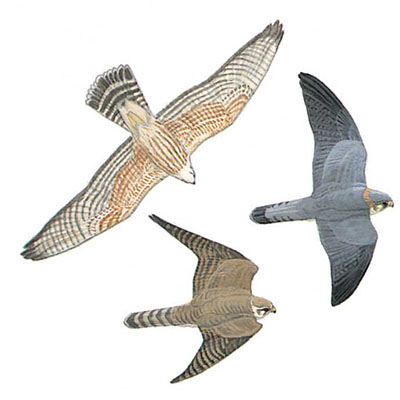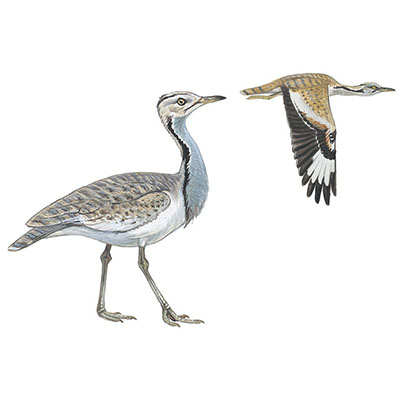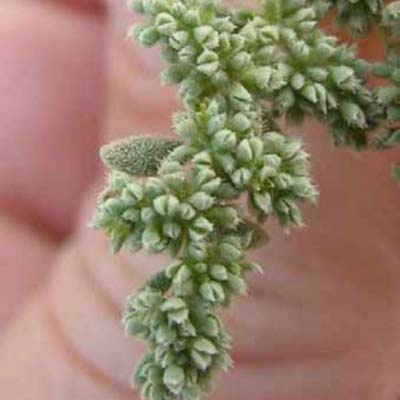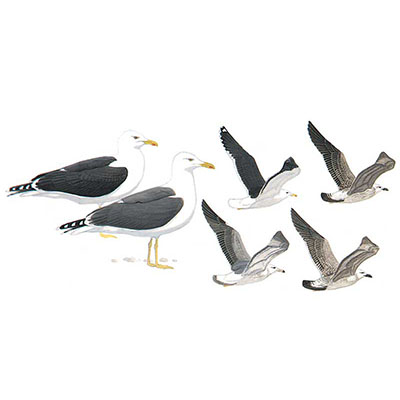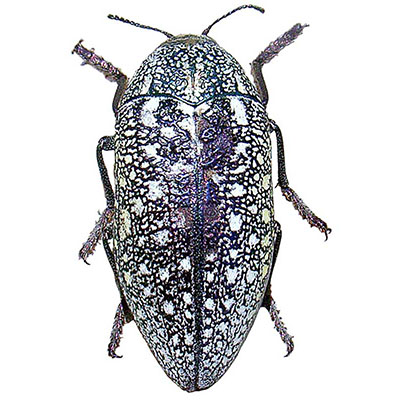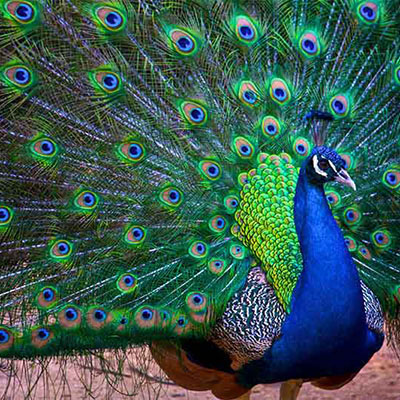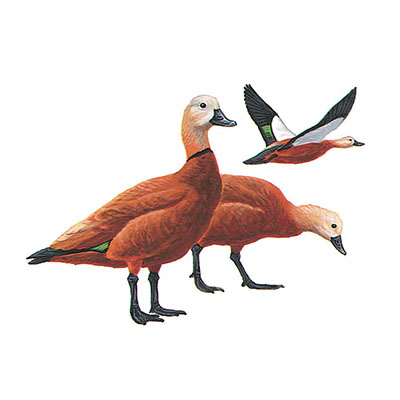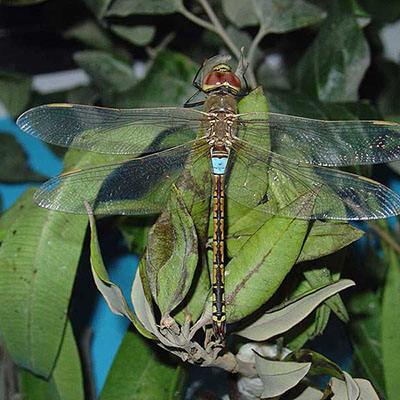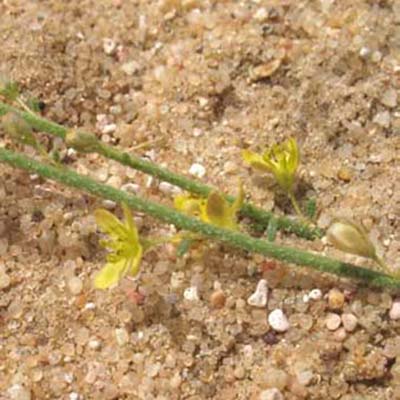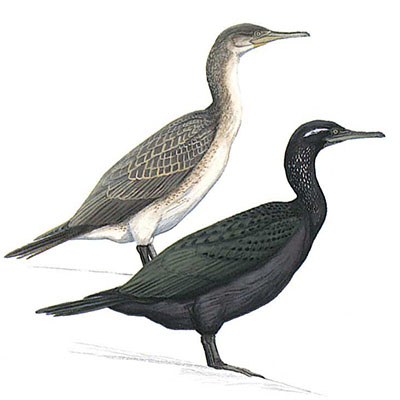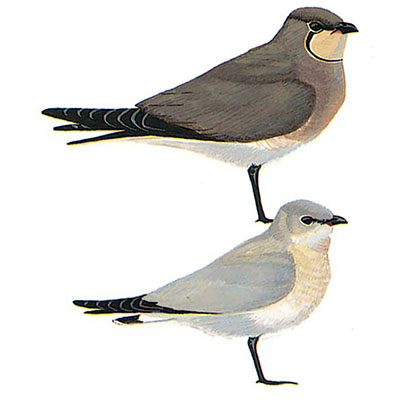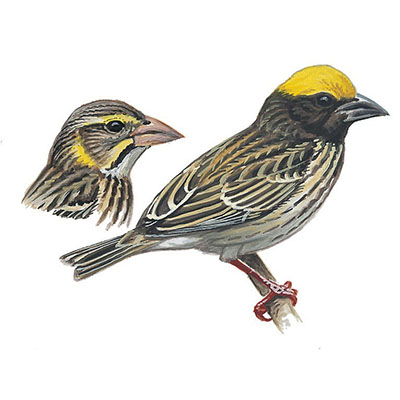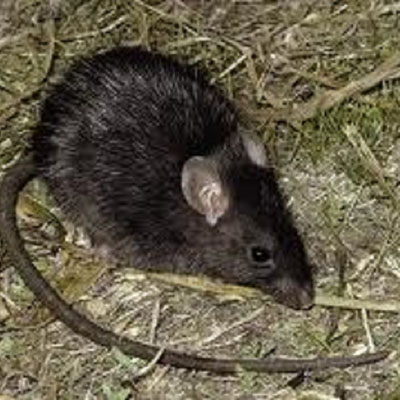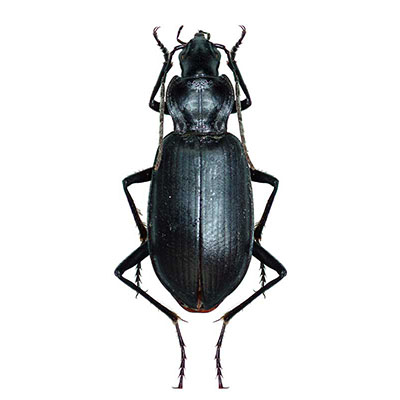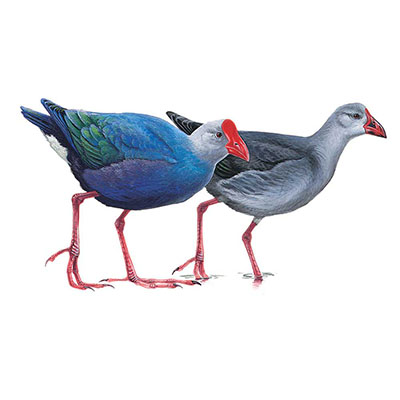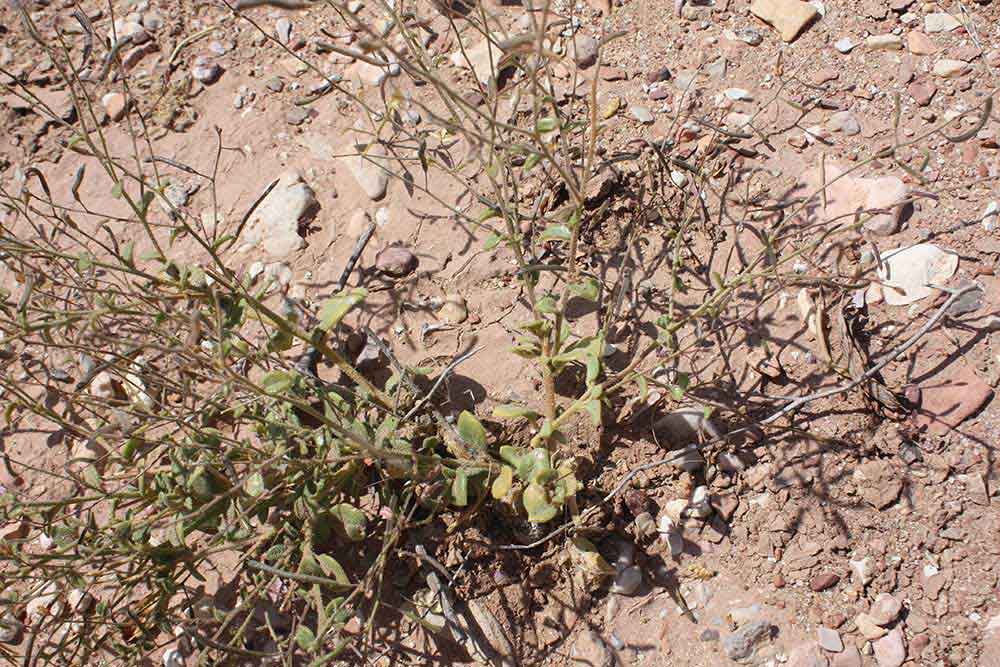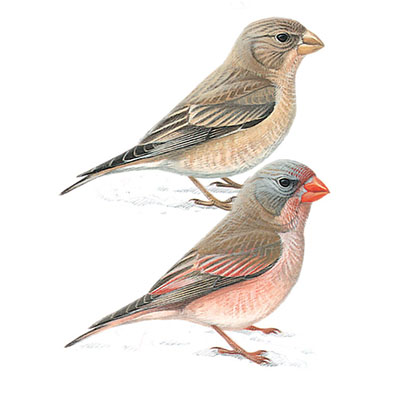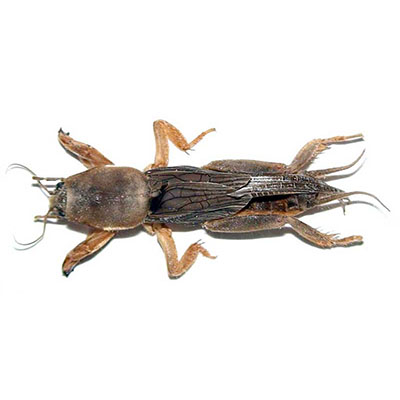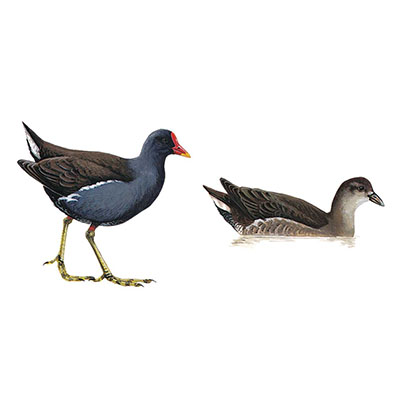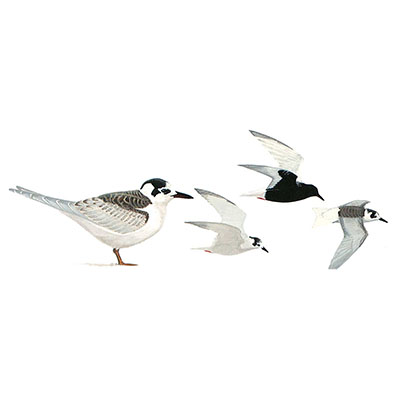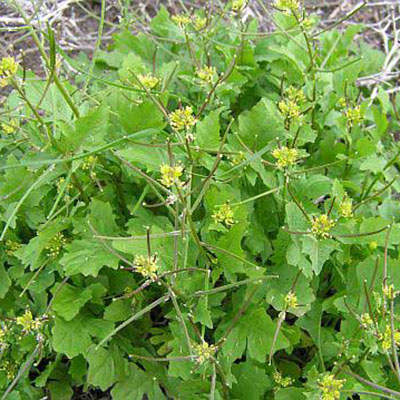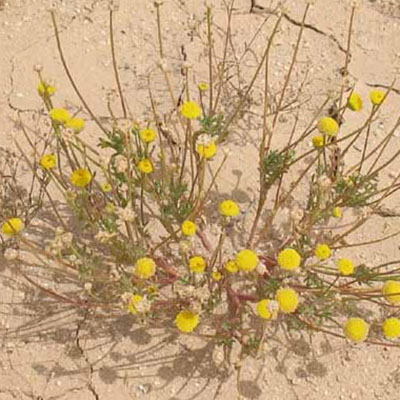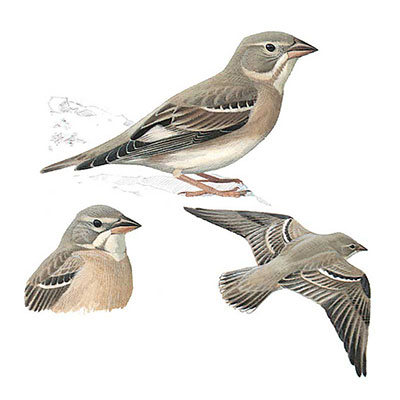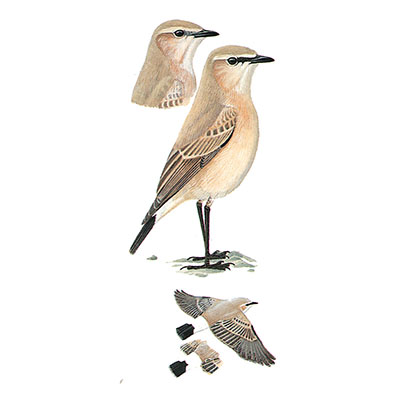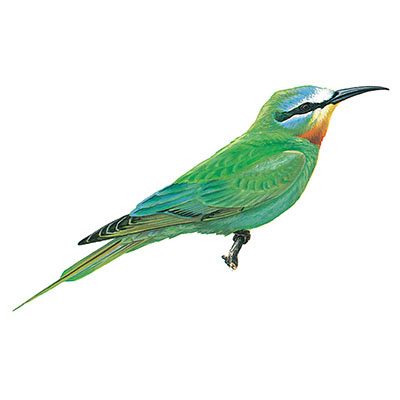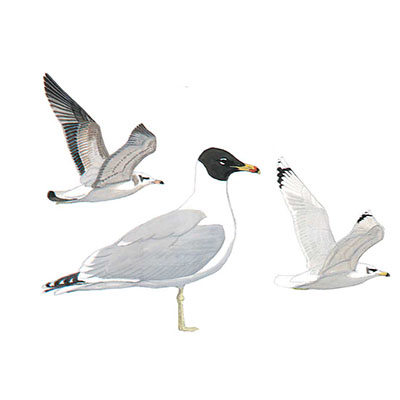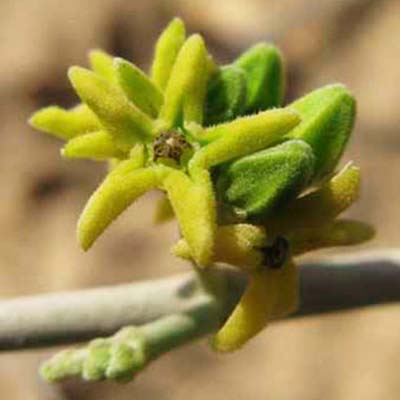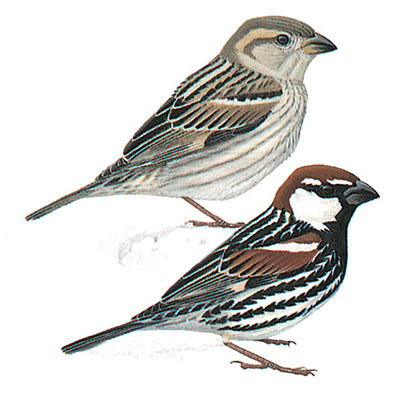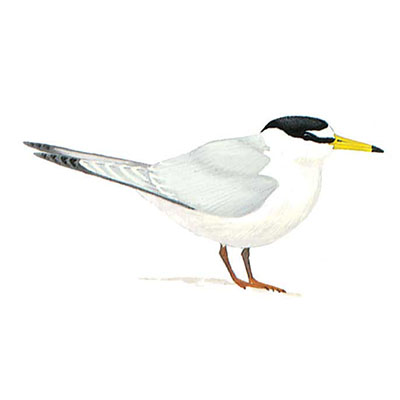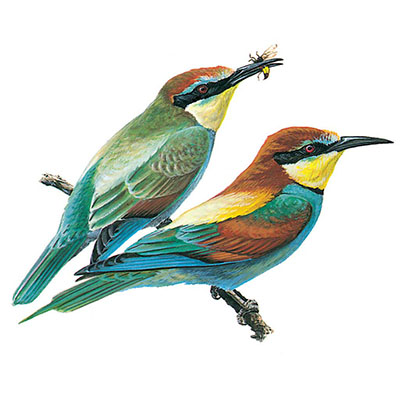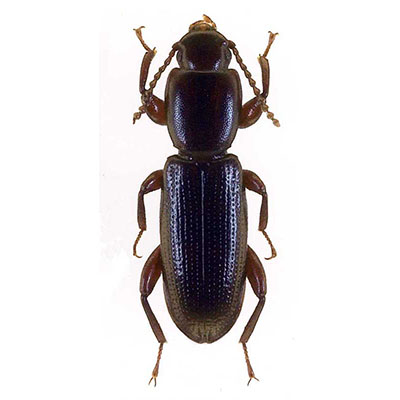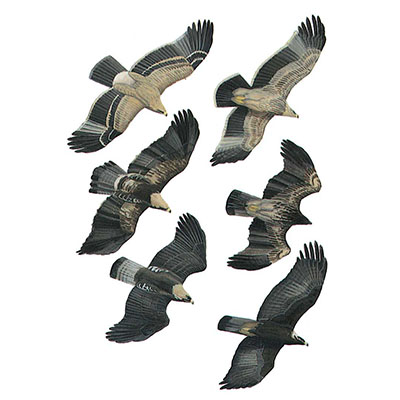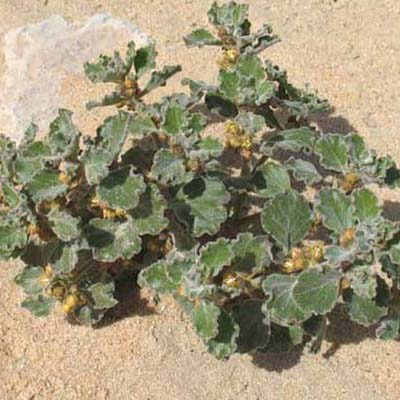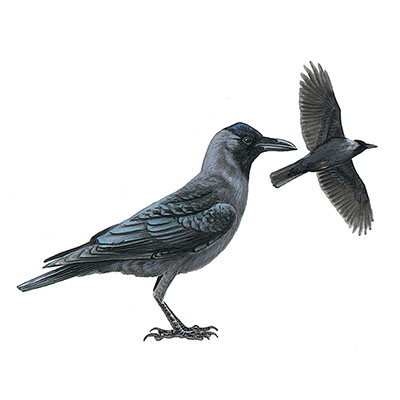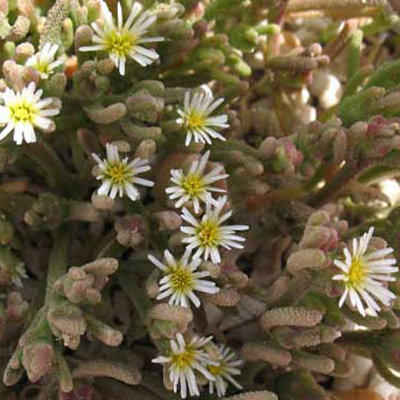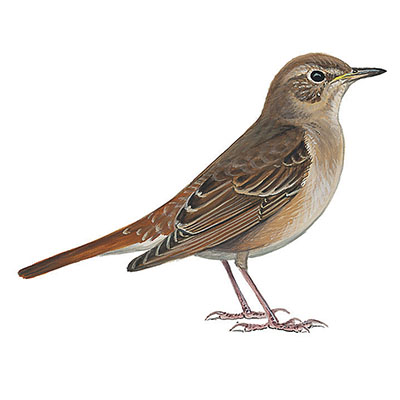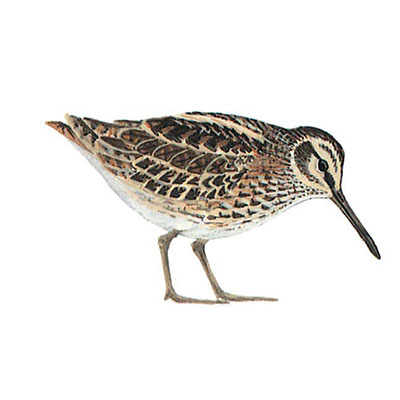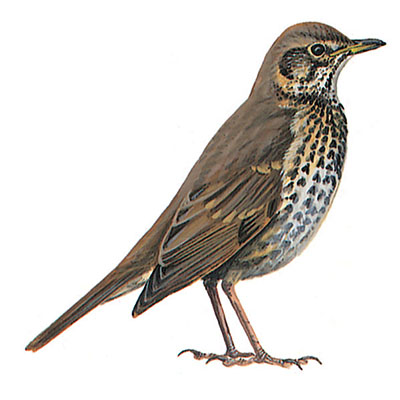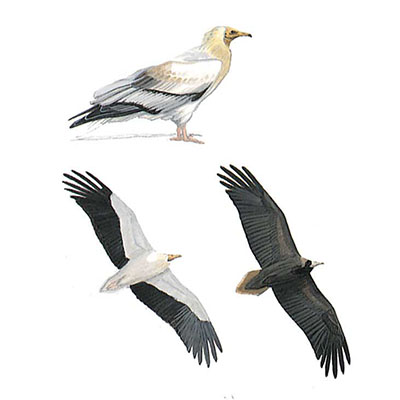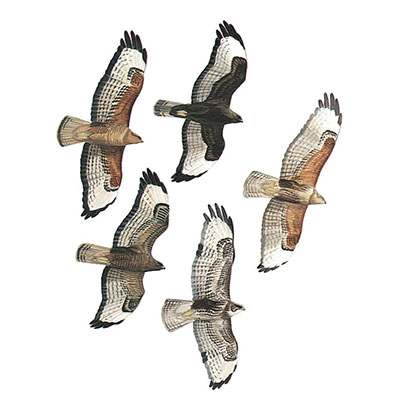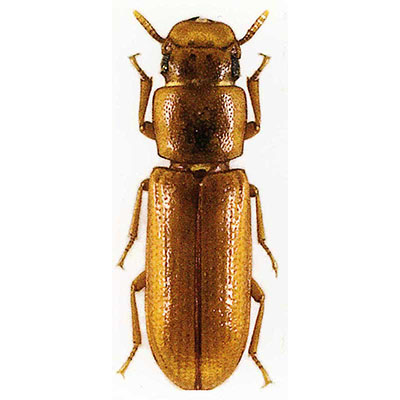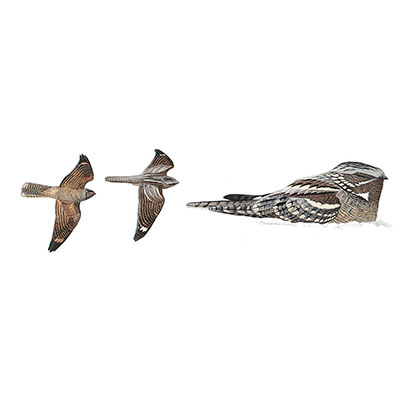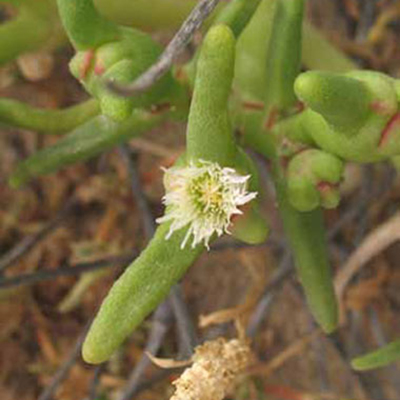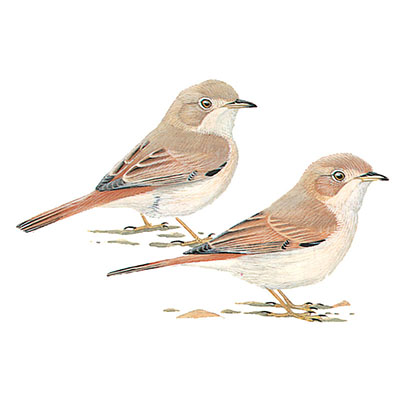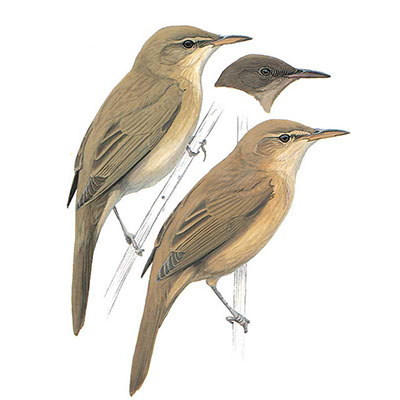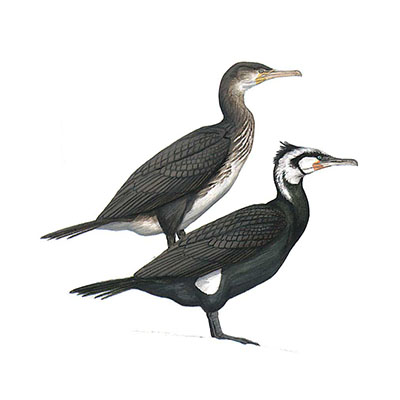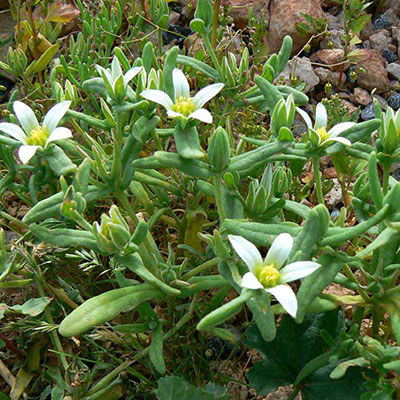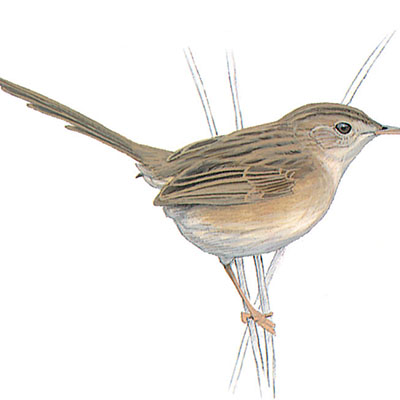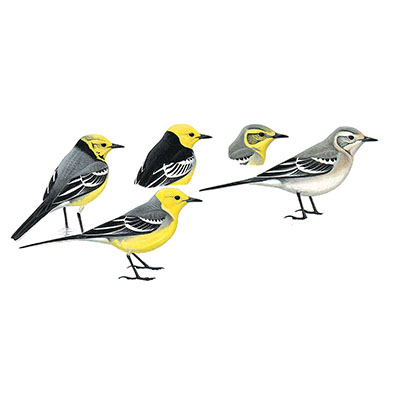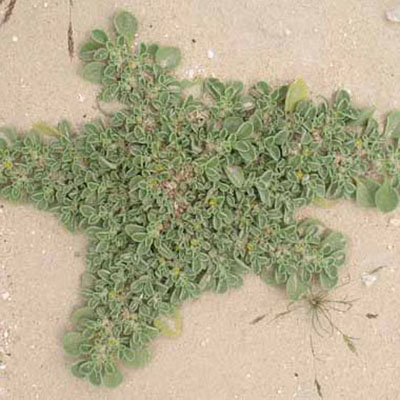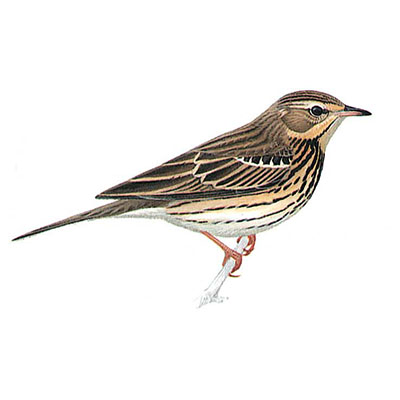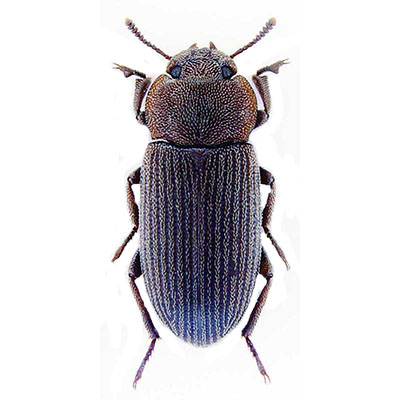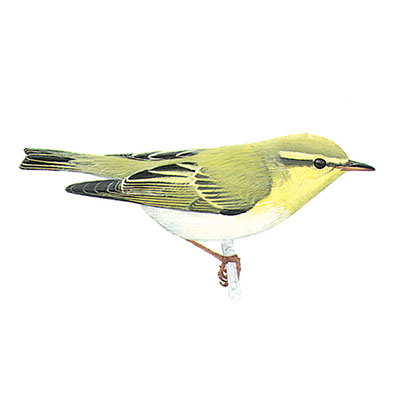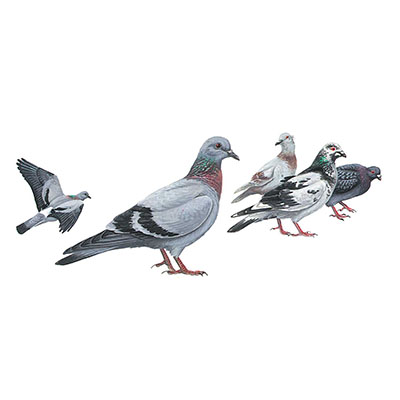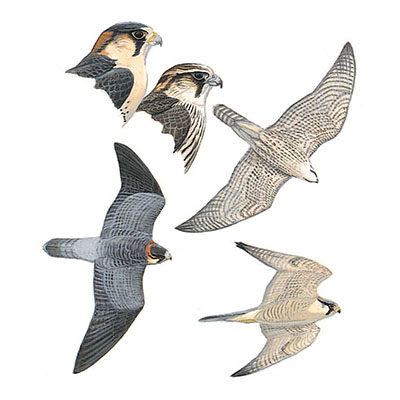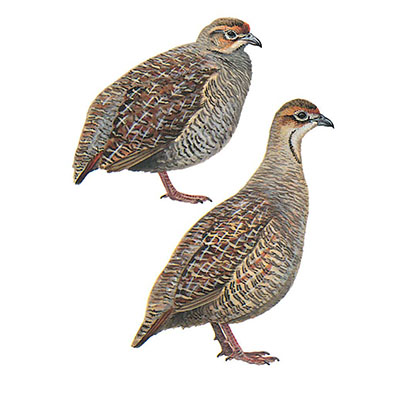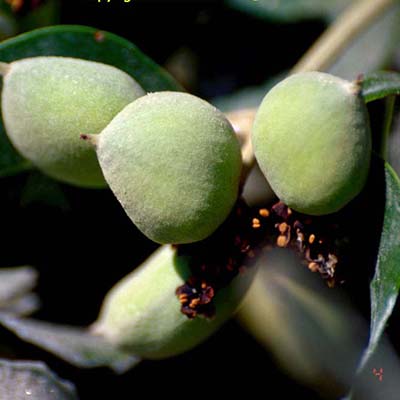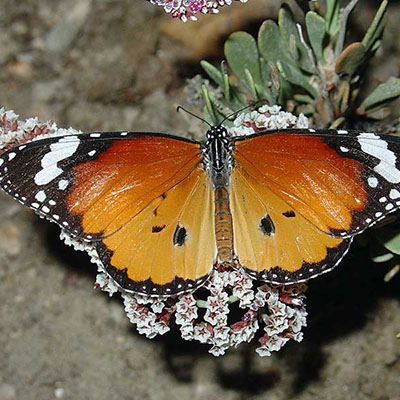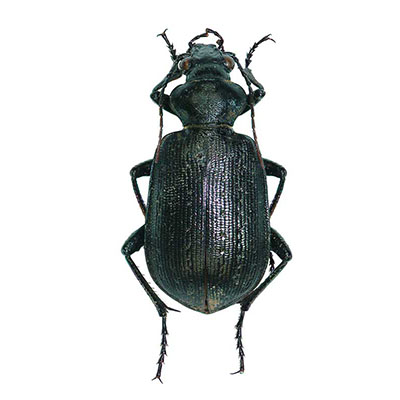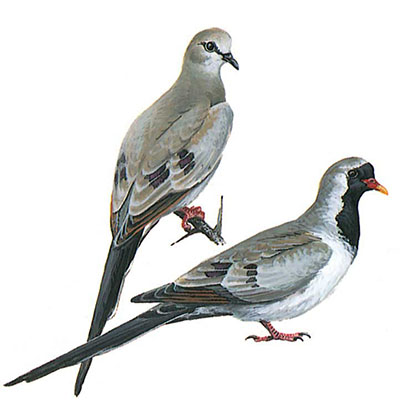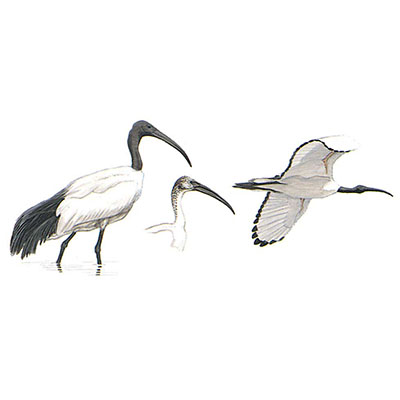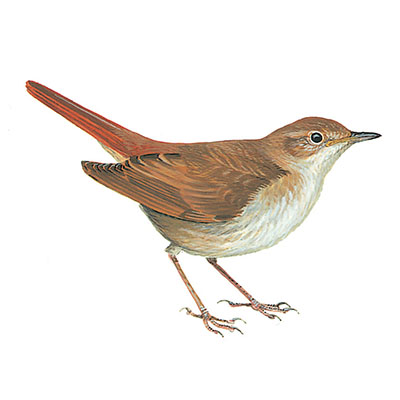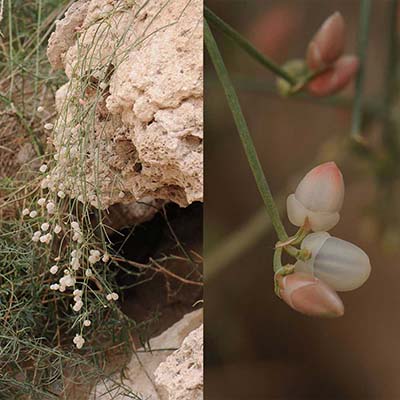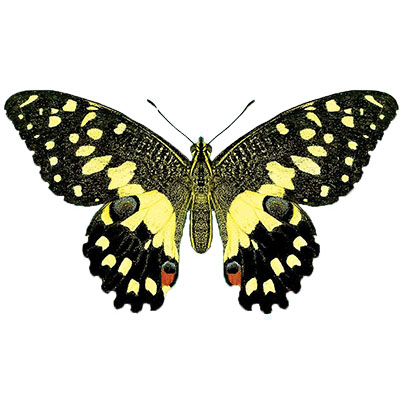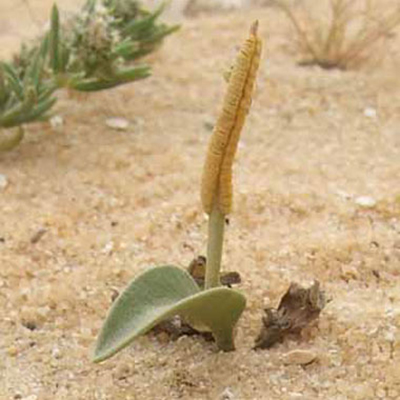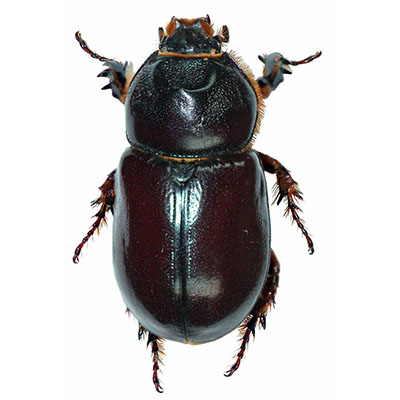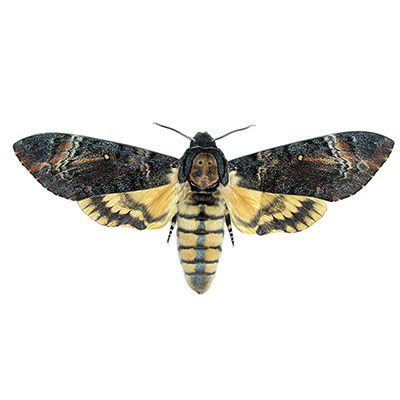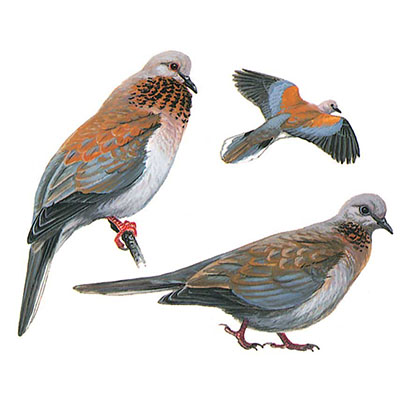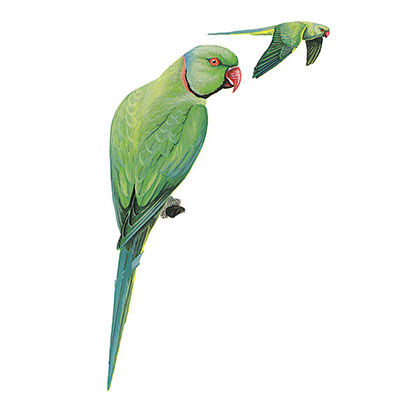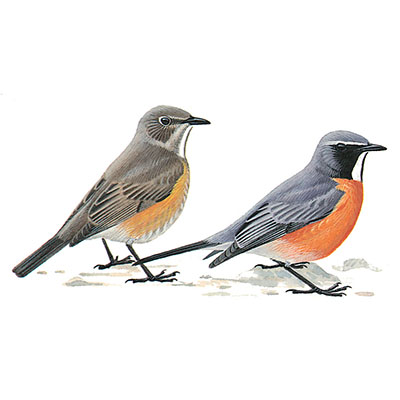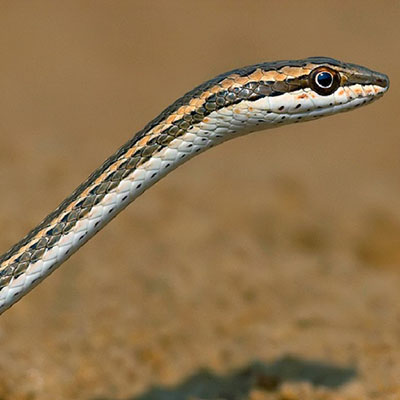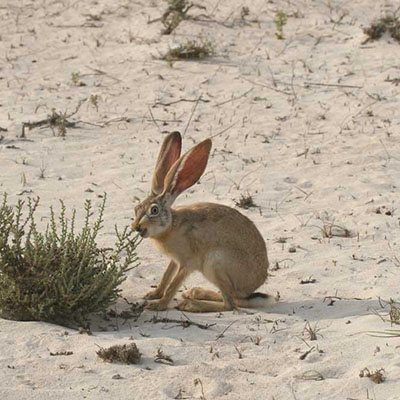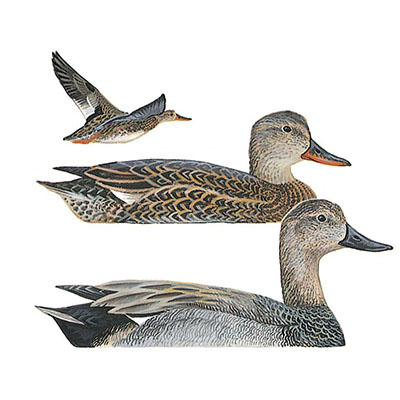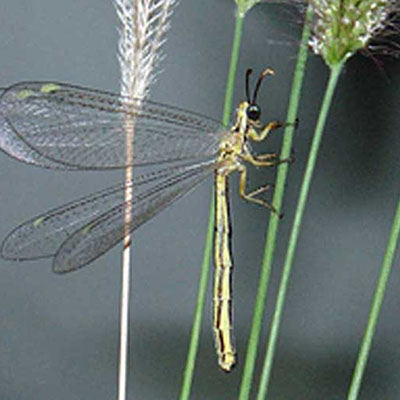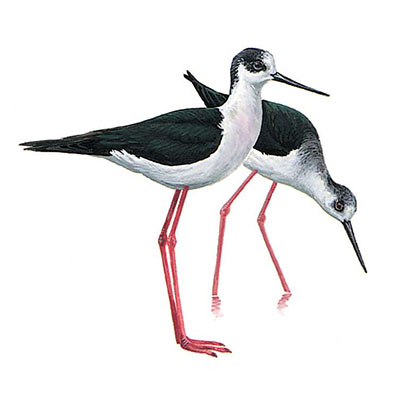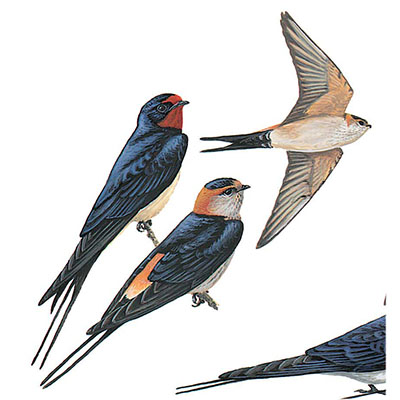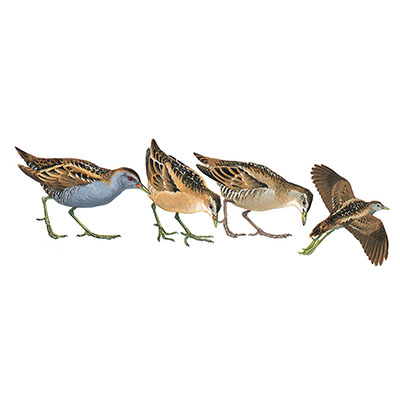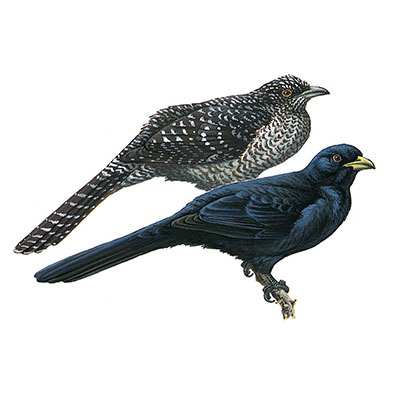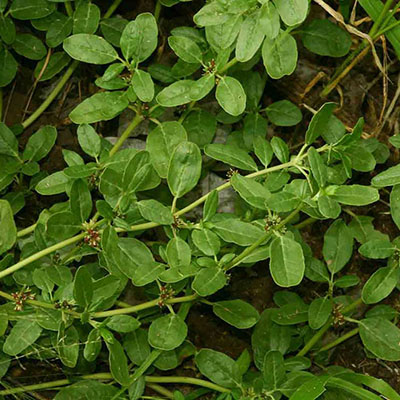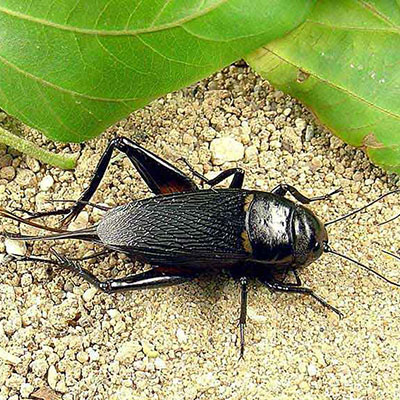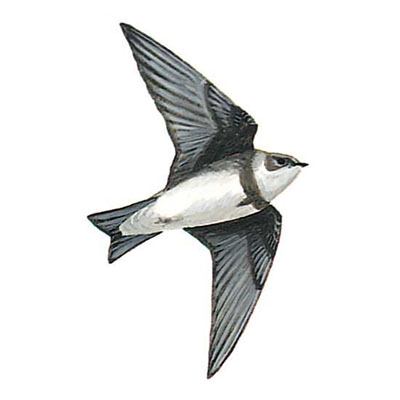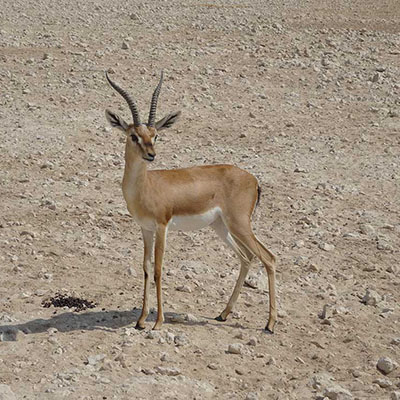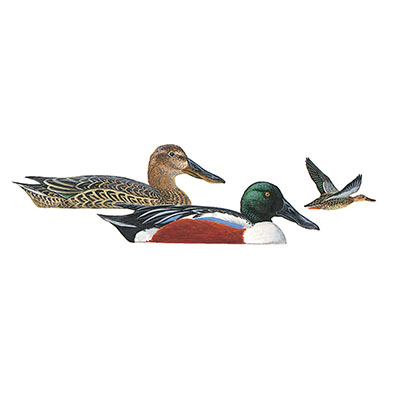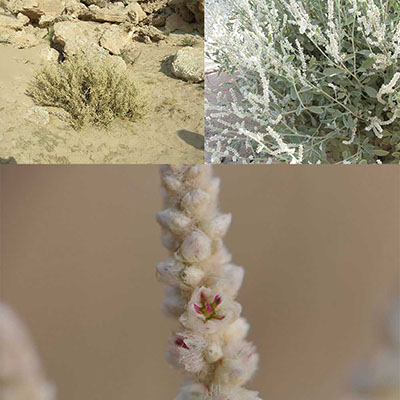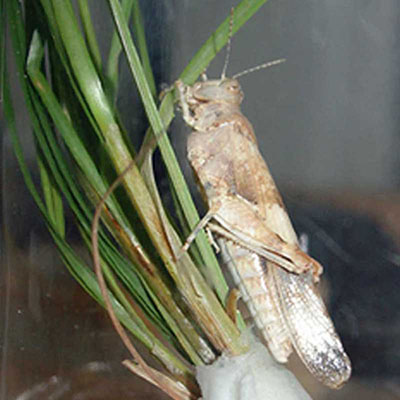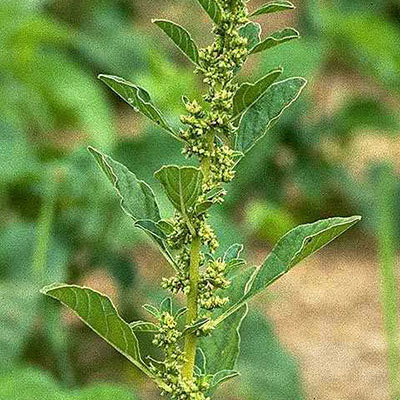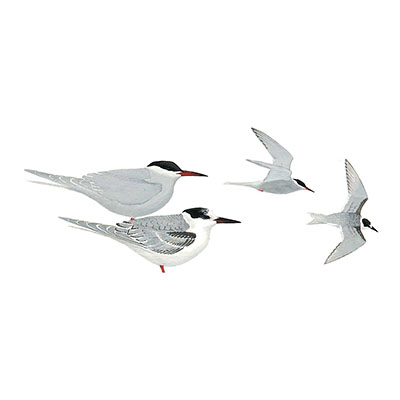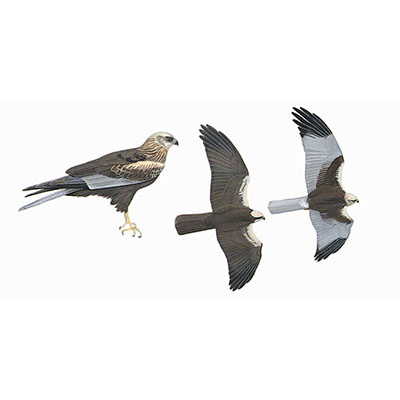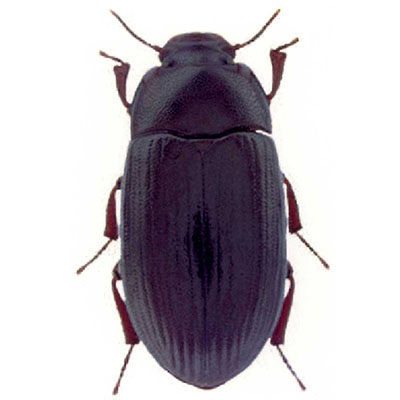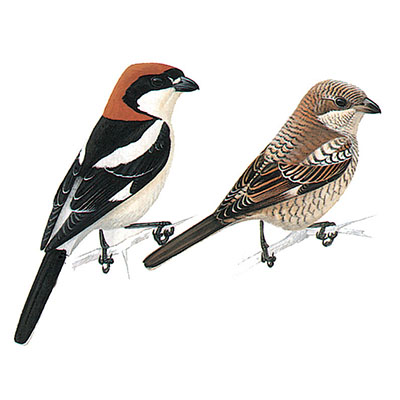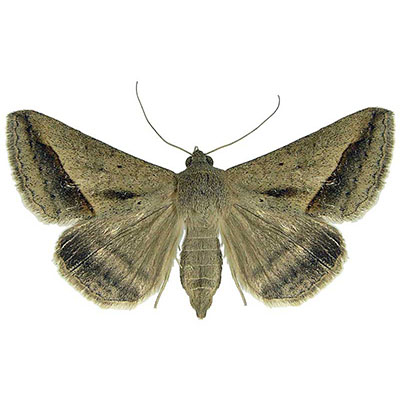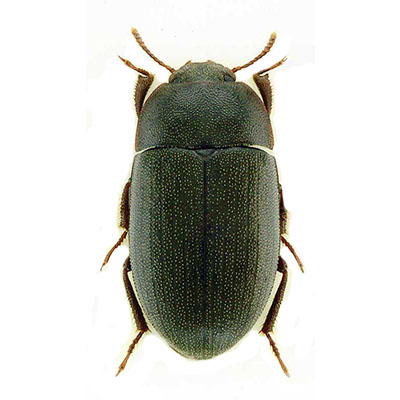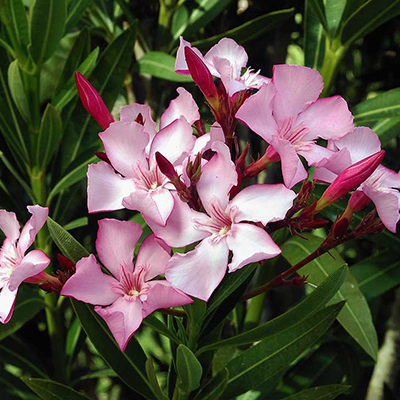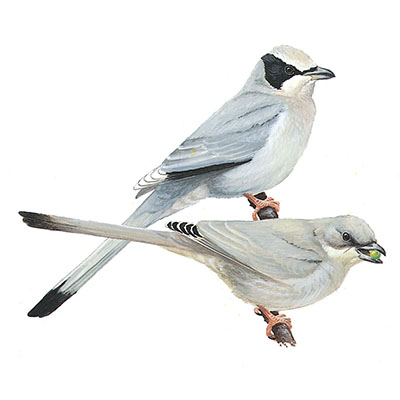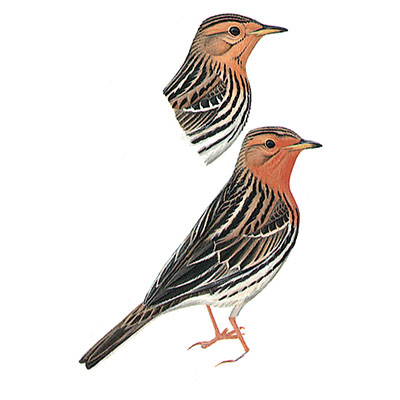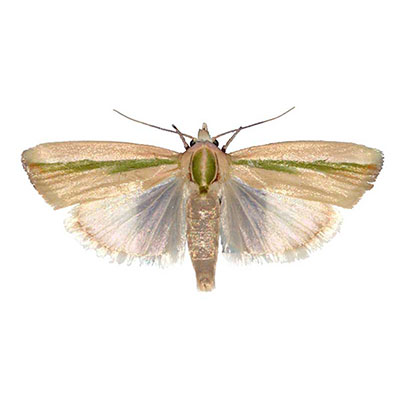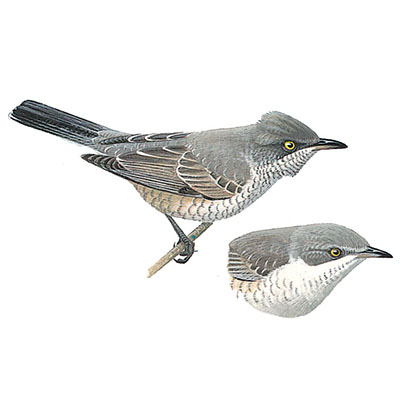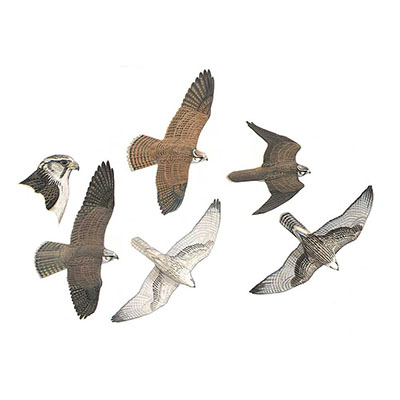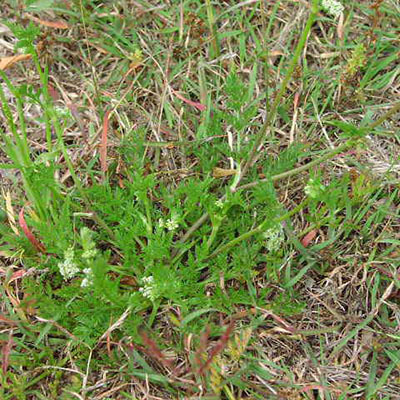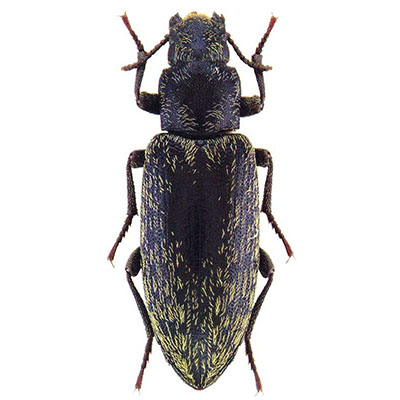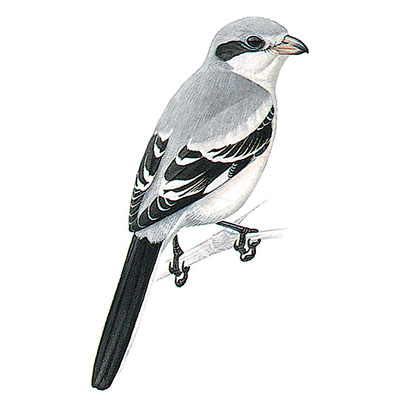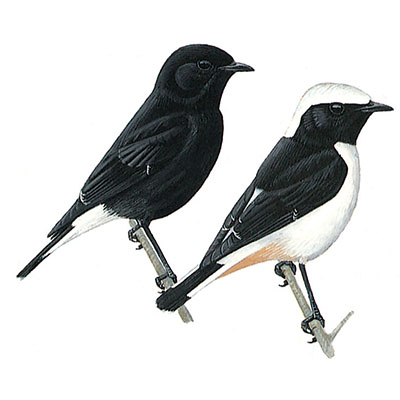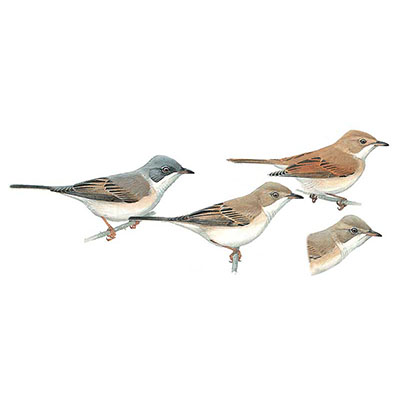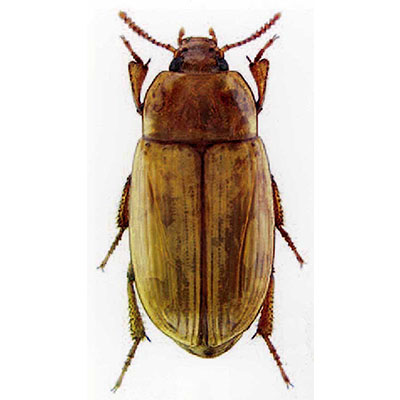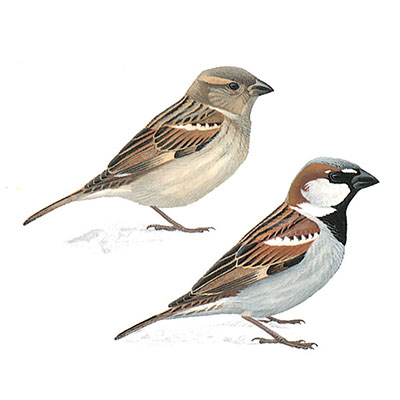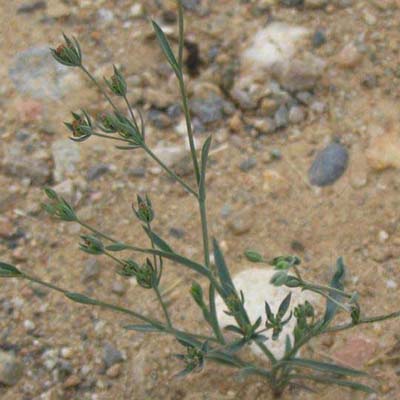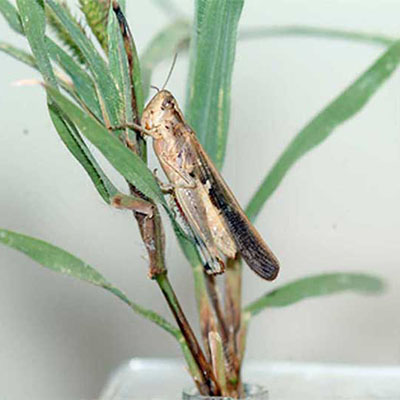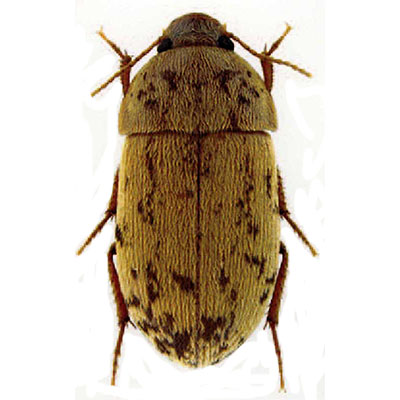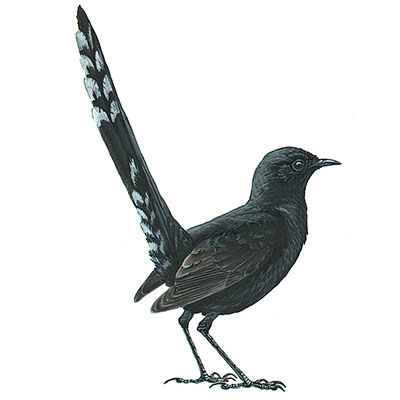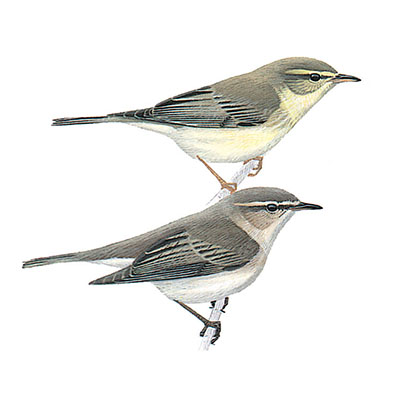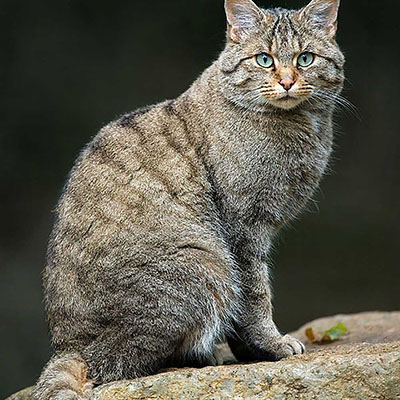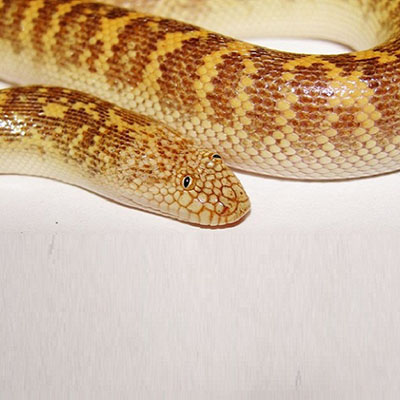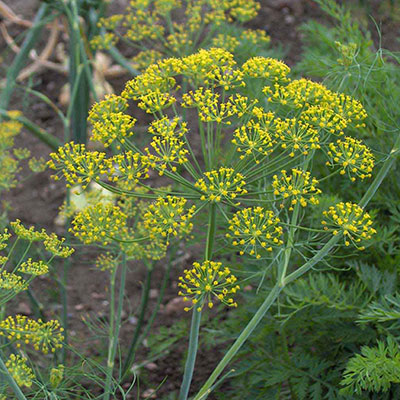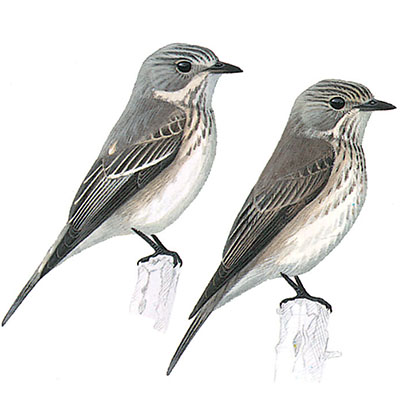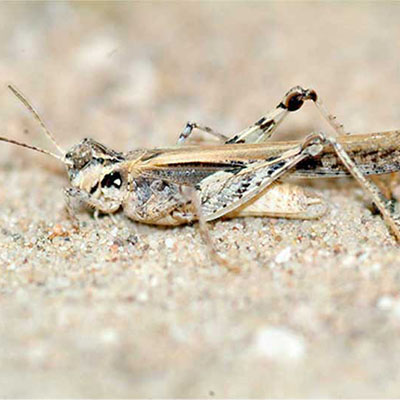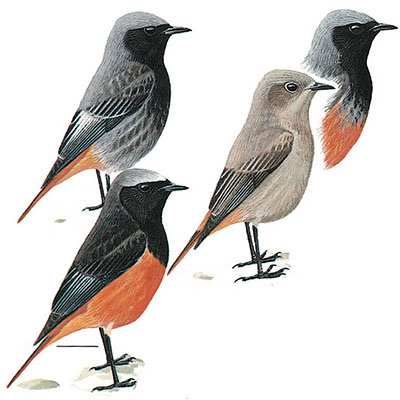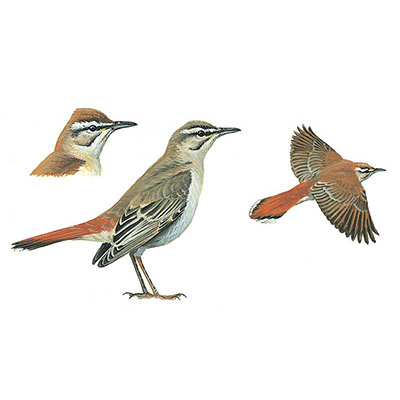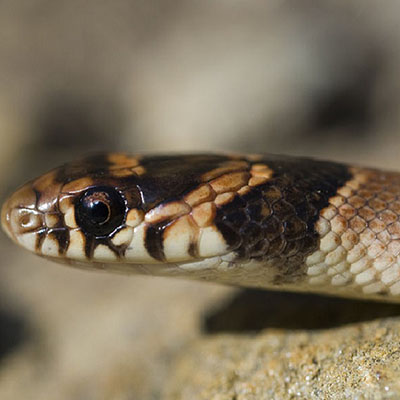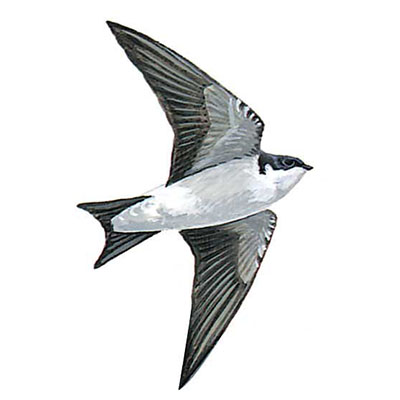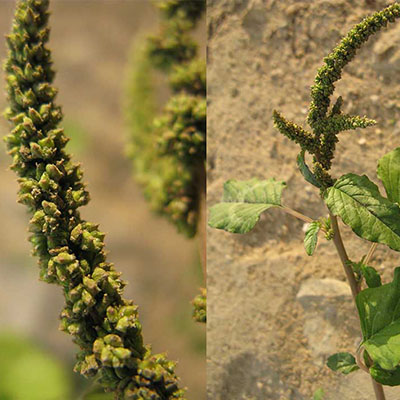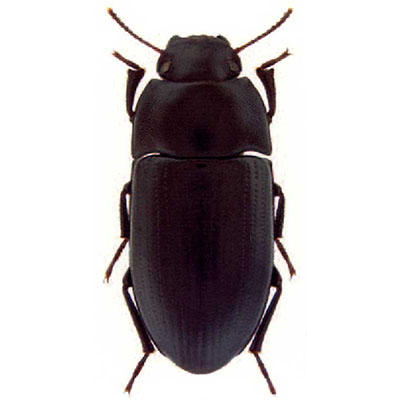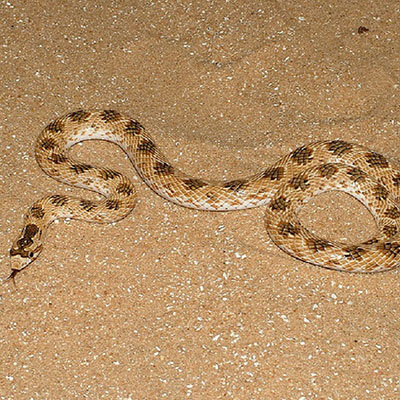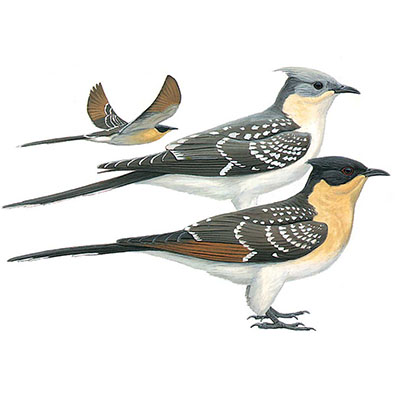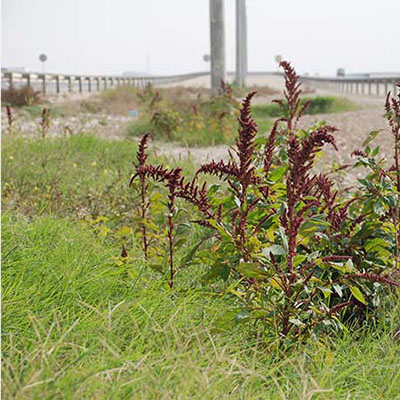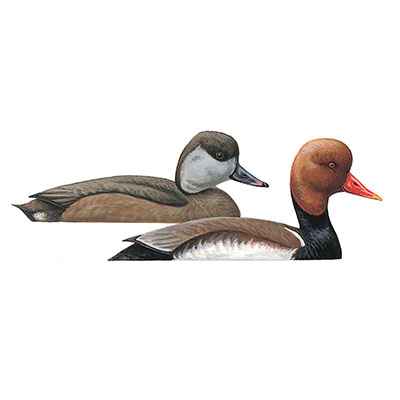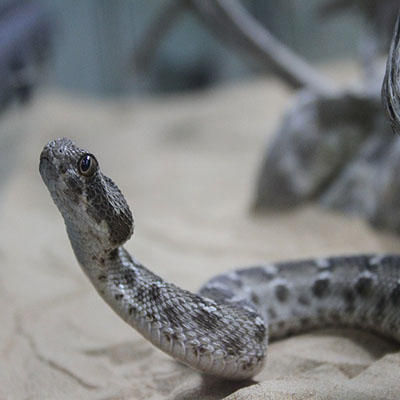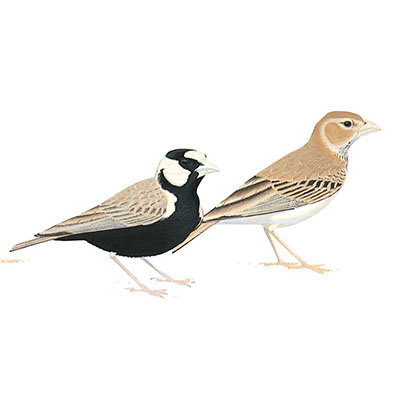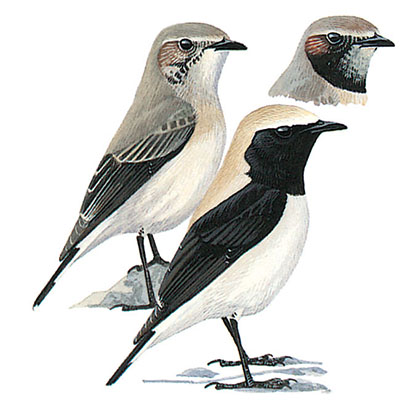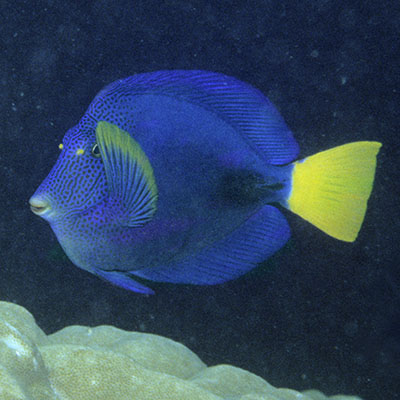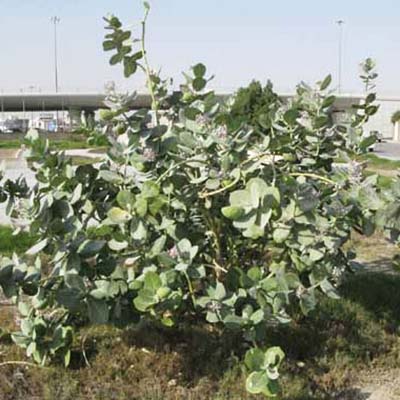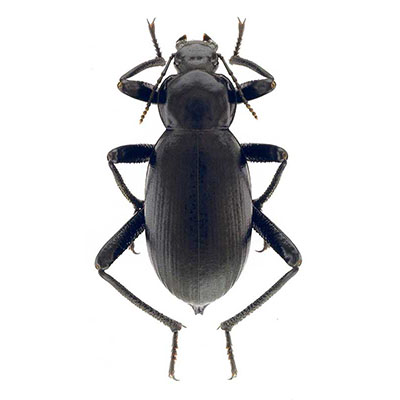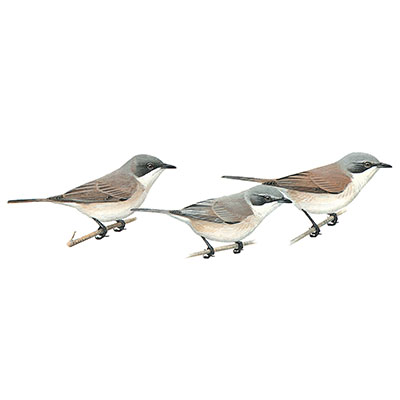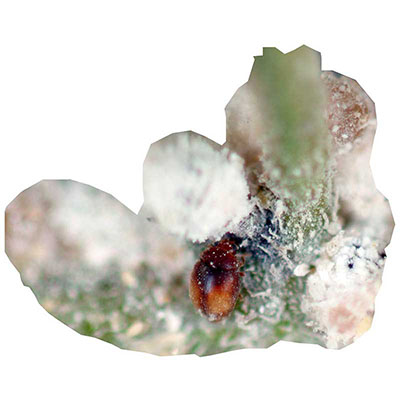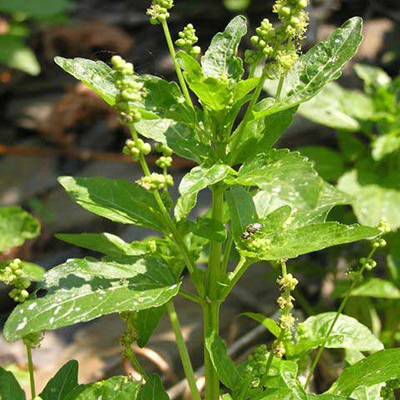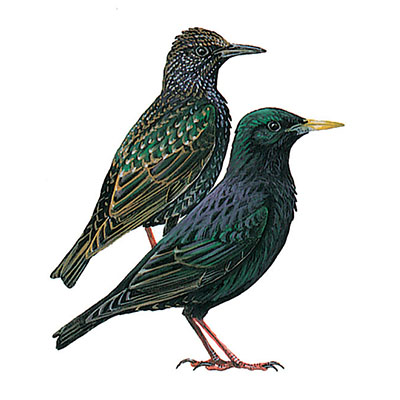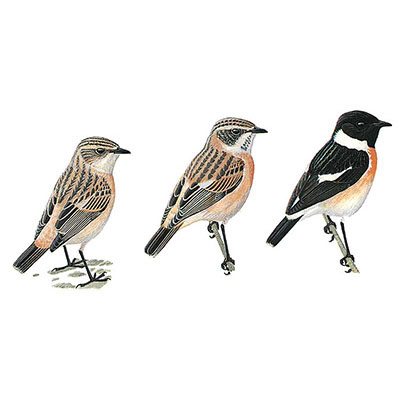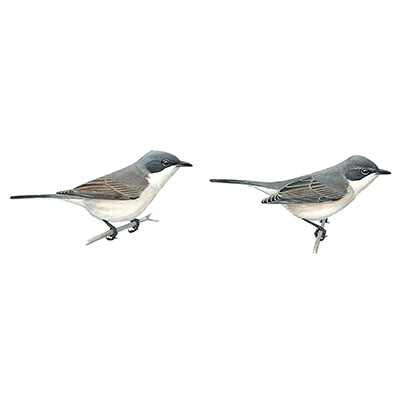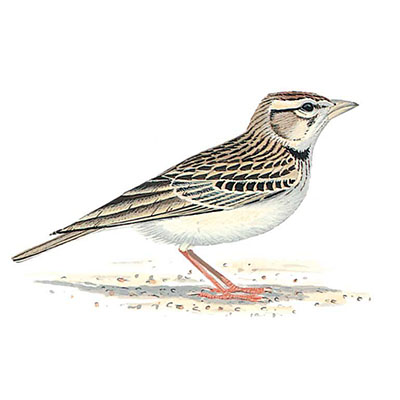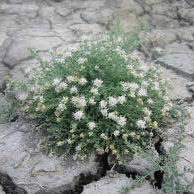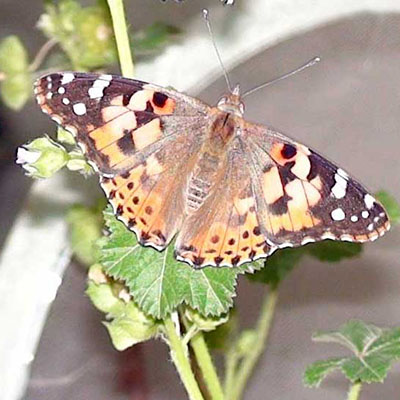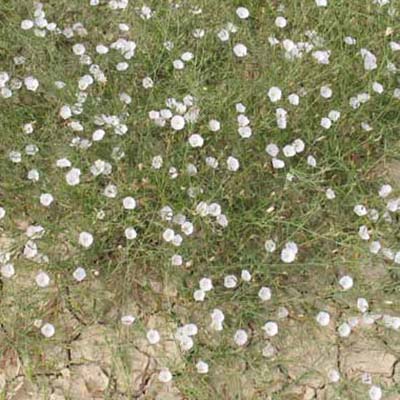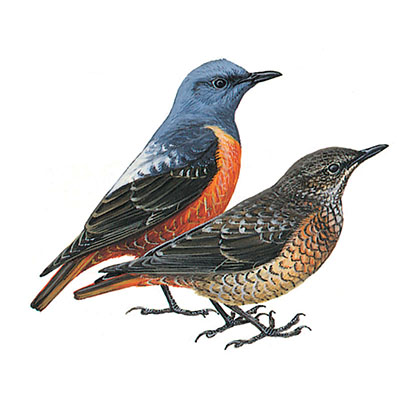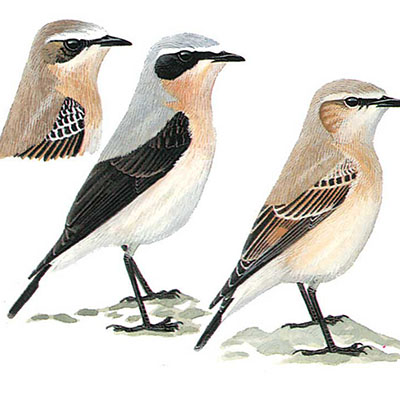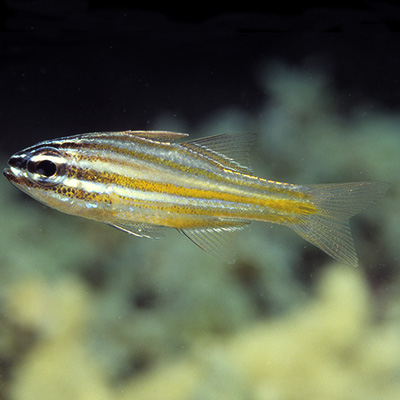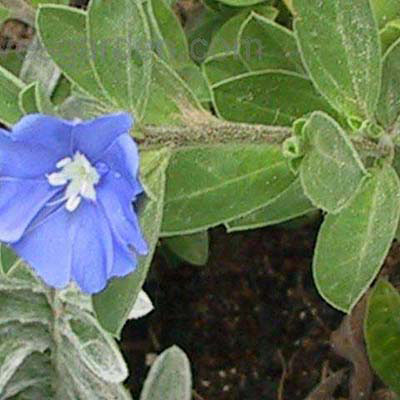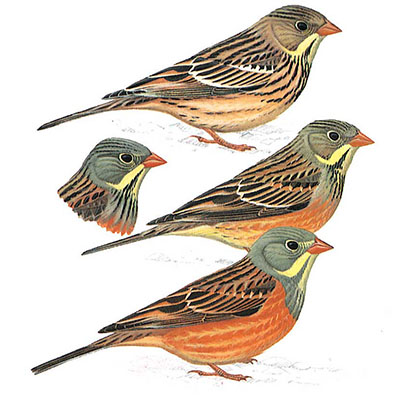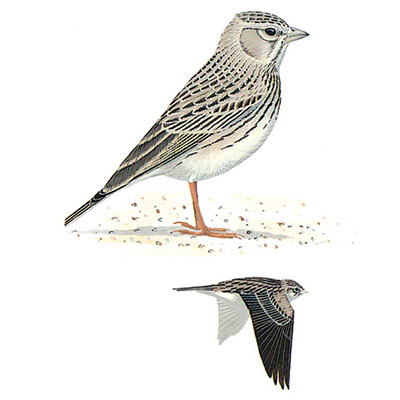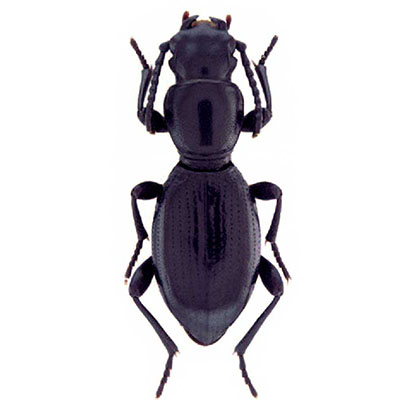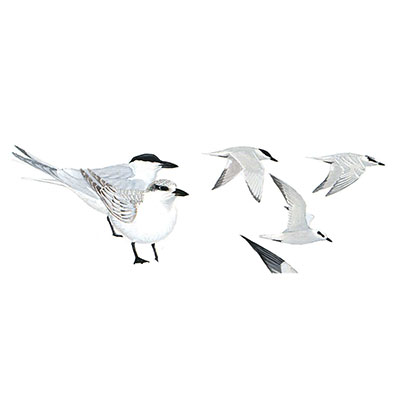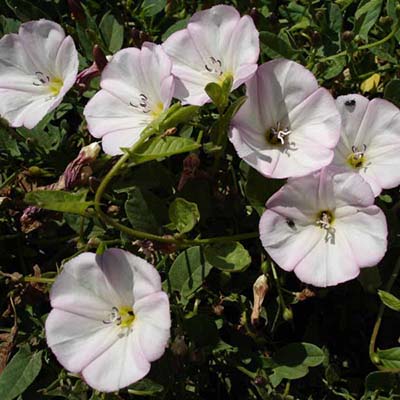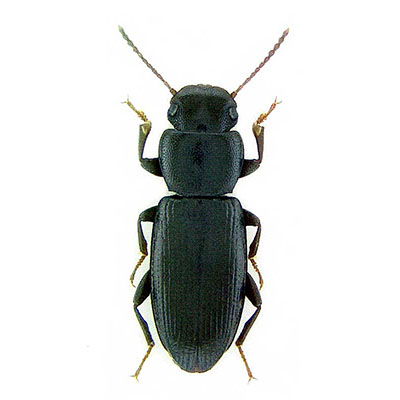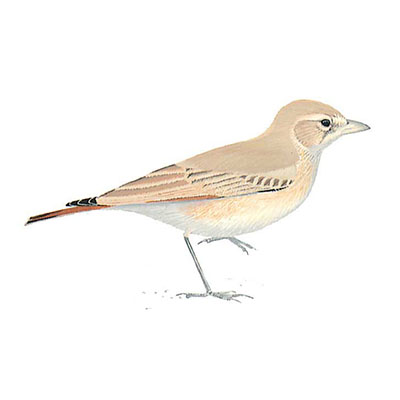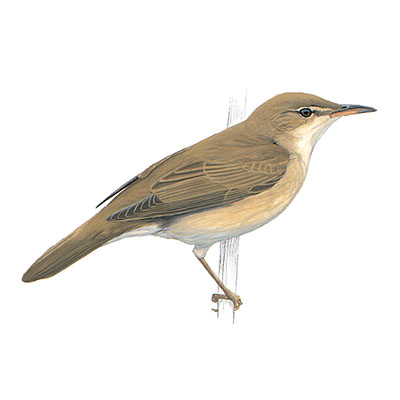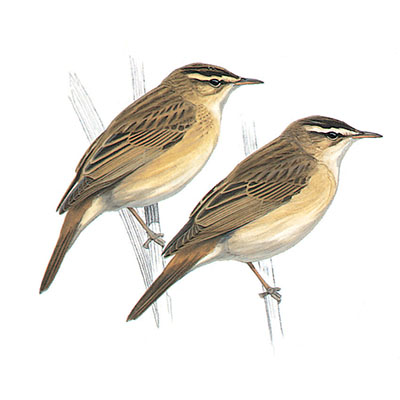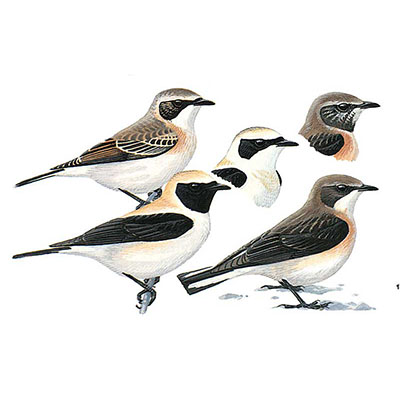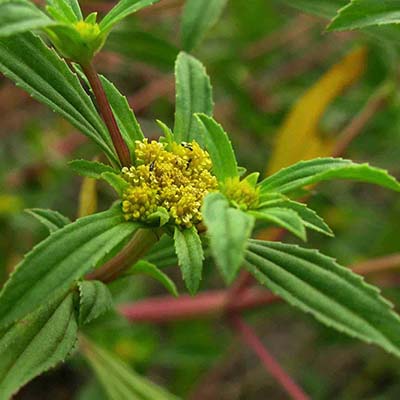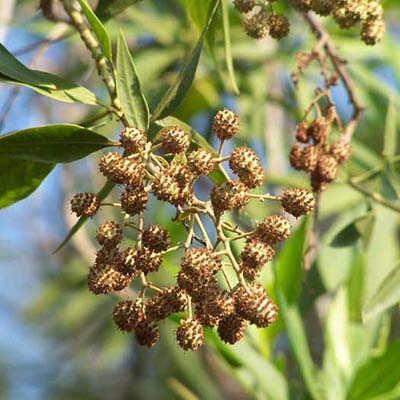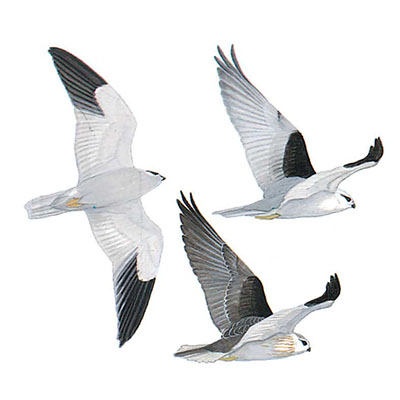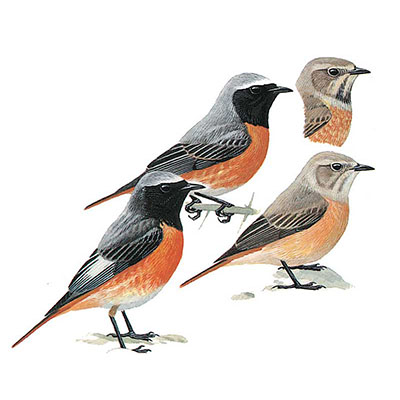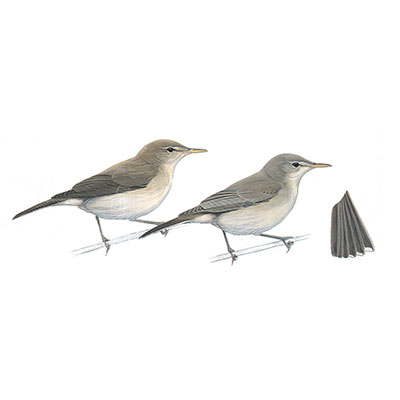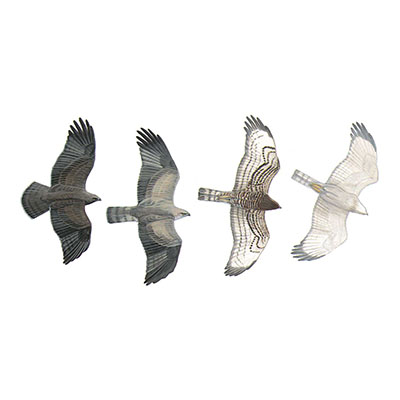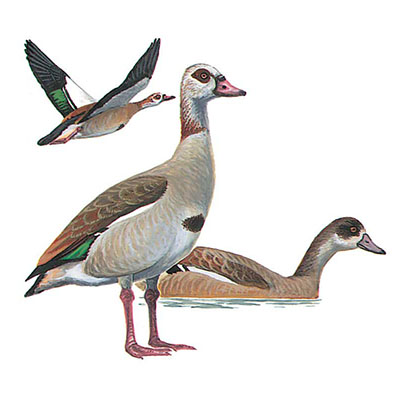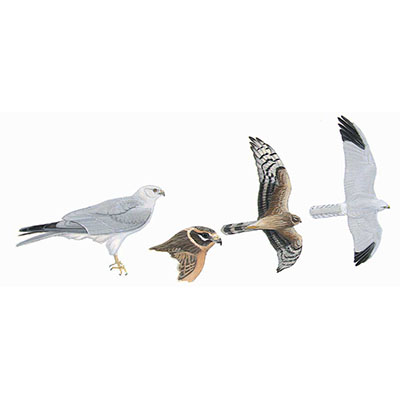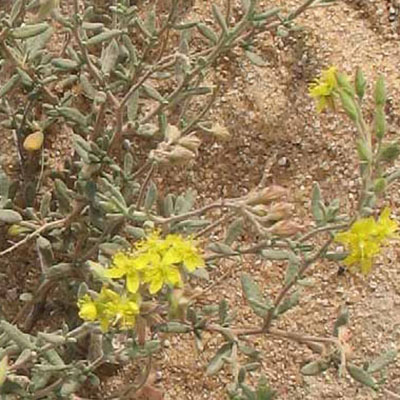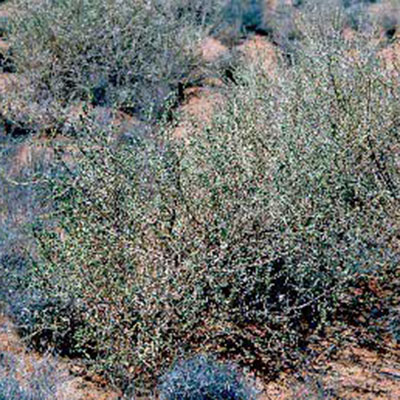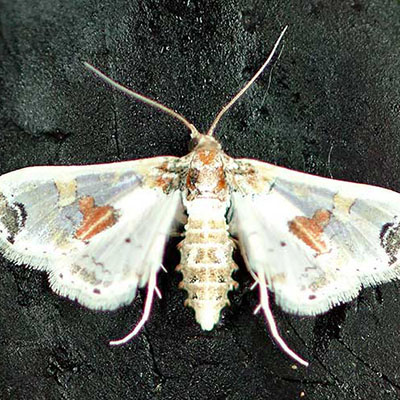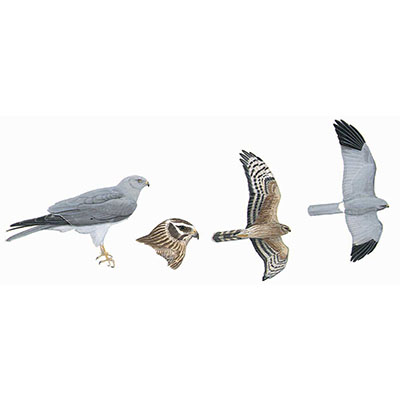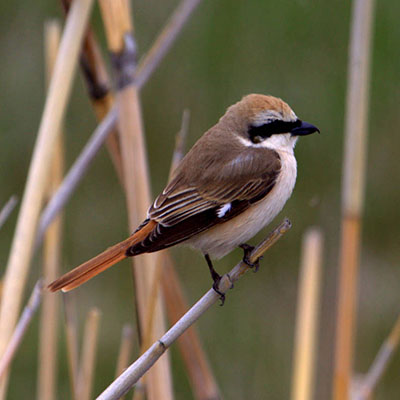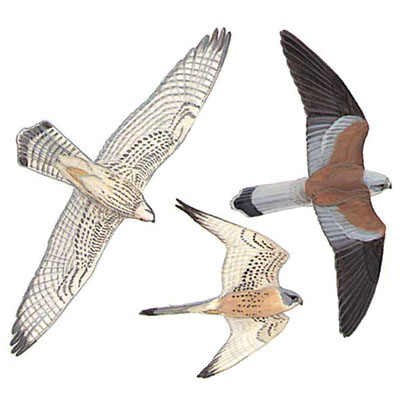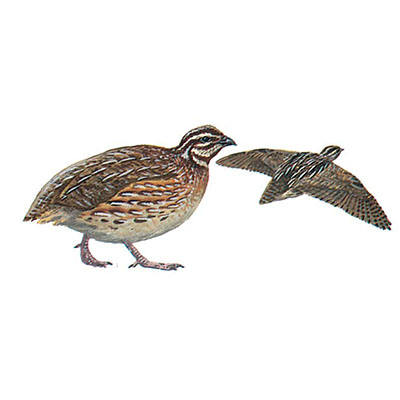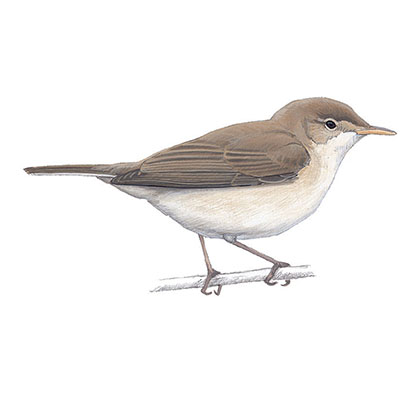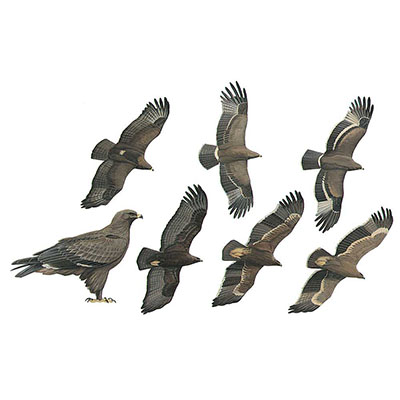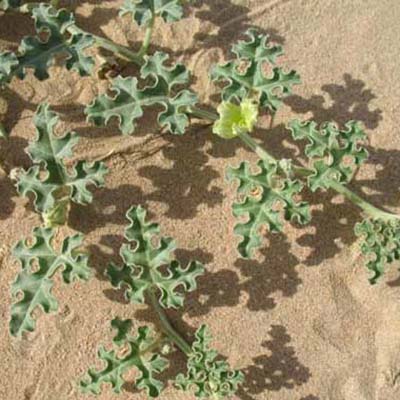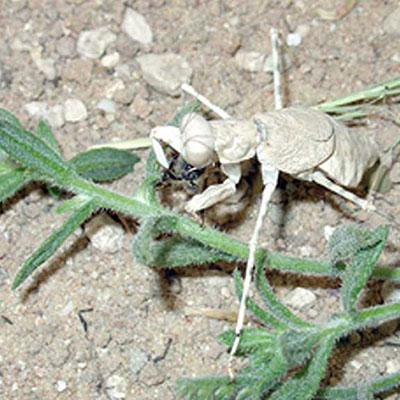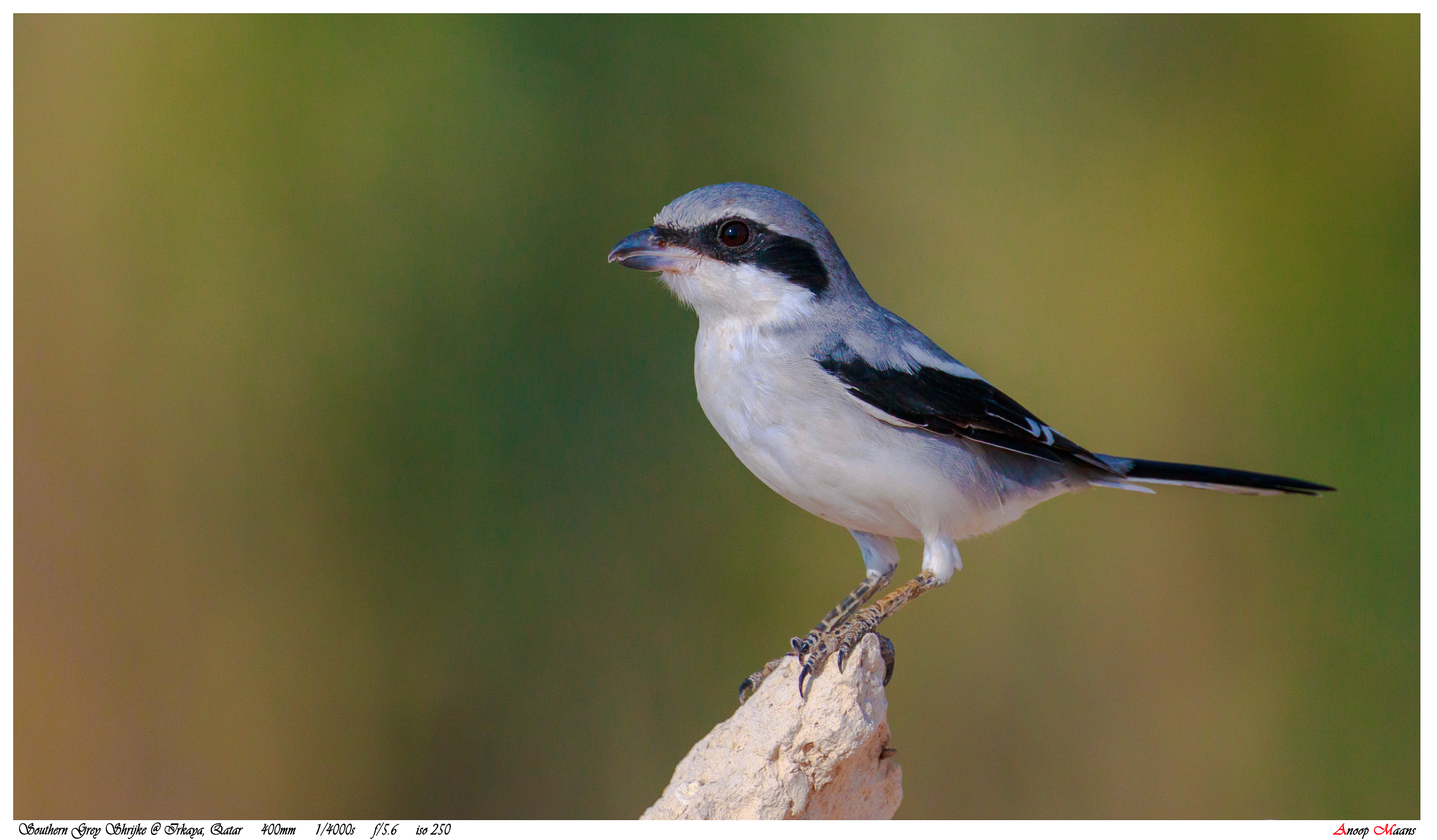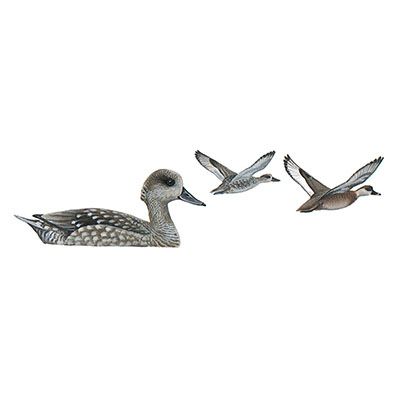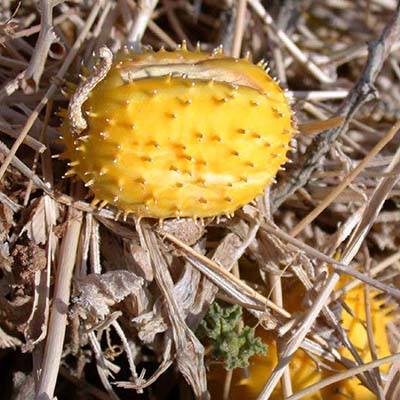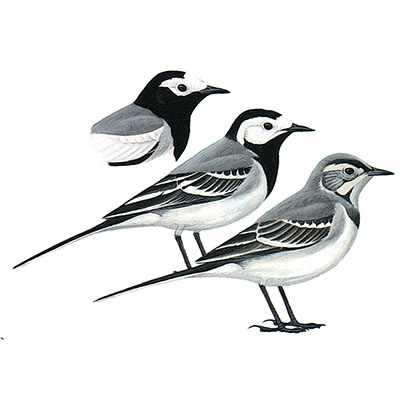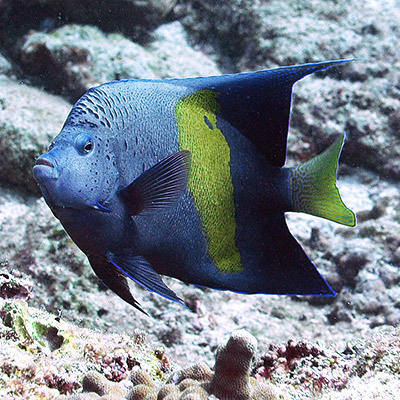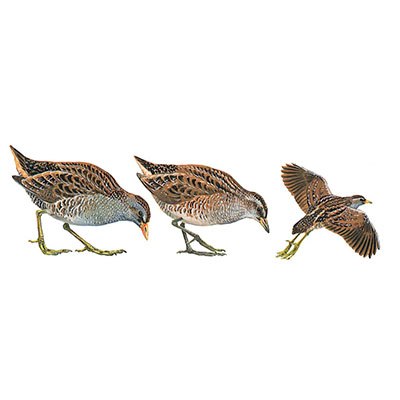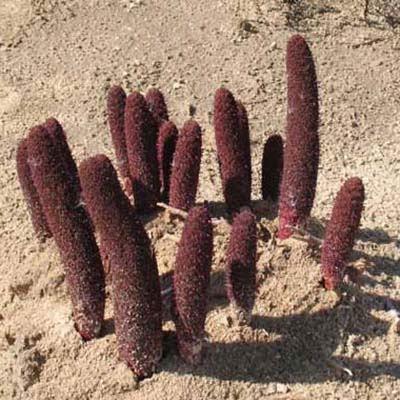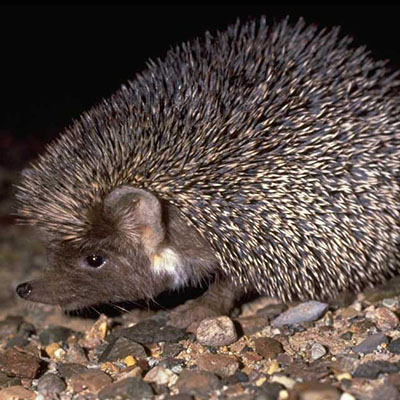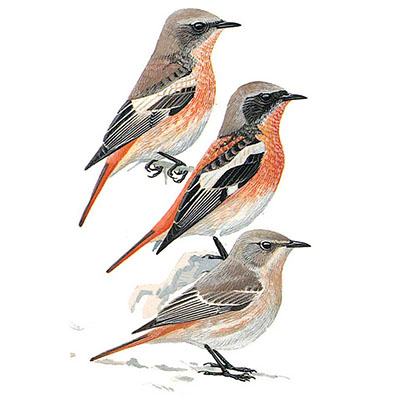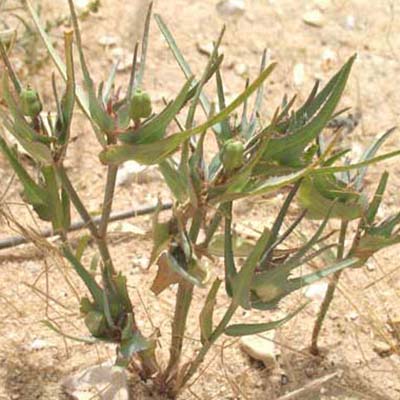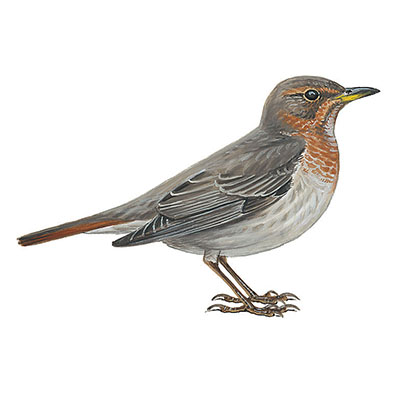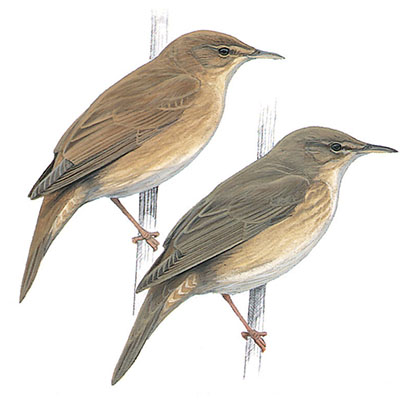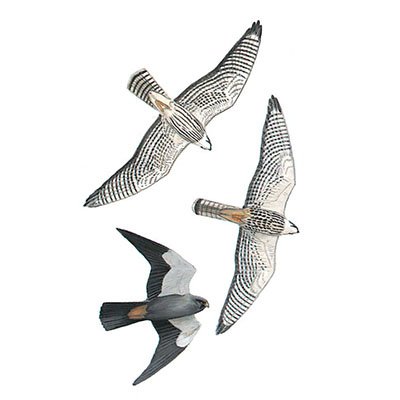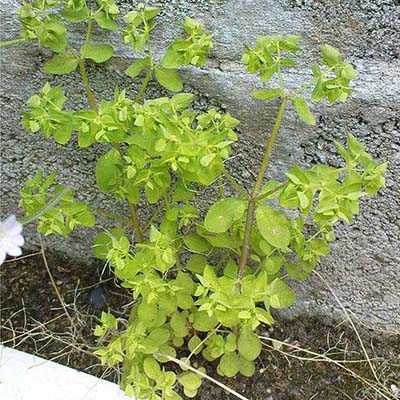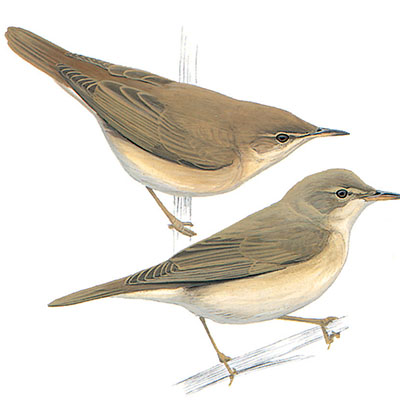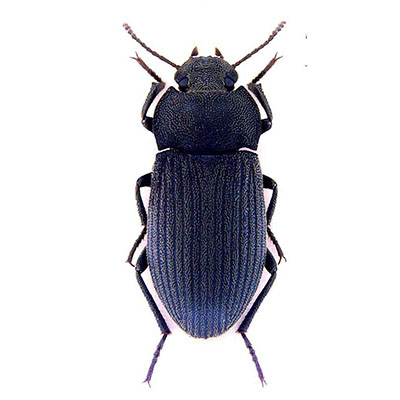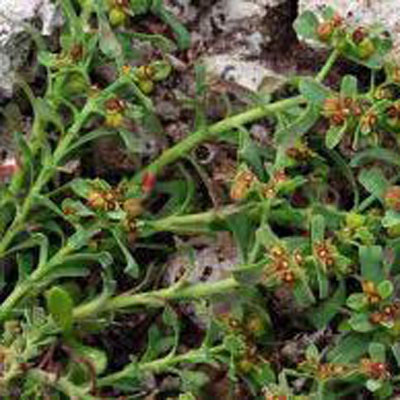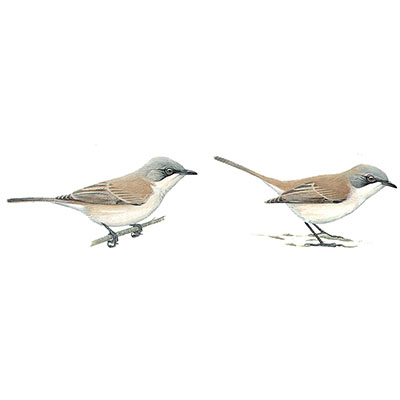نتائج البحث
نتائج البحث ل : 952
باركنسونيا
شكل الإنبات: شجرة. الإزهار: غير معروف. الأصل: دخيلة. ليست ضمن الغطاء النباتي في مكان آخر من منطقة الخليج. التربة والتوزيع: يفترض أن تكون واسعة الانتشار في البيئات الحضرية. الاستخدامات: تزرع كنبات للزينة ولمنع تعرية التربة وكمصدر لحطب الوقود وصناعة الفحم. صور: Bst 16.
للمزيدالبق ايجيبتيوس
المملكة : Bugs, Assassin bugs, Insects
تتبع هذه الحشرة لفصيلة البق القاتل Reduviidae، ورتبة نصفية الأجنحة (رتبة البق) Hemiptera. لونها فضي، حجمها 9 مم. توجد على النباتات العشبية في الحقول والمزارع.
للمزيدعلجان
شكل الإنبات: شجيرة. الإزهار: مارس – أبريل. الأصل: متوطنة محلية. مسجلة أيضا في: شرق السعودية والإمارات. التربة والتوزيع: تتركز في شمال شرق قطر حيث توجد بكثرة في التربة المتماسكة. توجد الشجيرات المنتعشة ومكتملة النمو في مدينة راس لفان الصناعية (JN)، ووجدت أيضا في الذخيرة وفويرط وسميسمة (MS). ملحوظات: تجدها تحت اسم T. aegytiaca. يعتقد أن […]
للمزيدالعاقول
شكل الإنبات: شجيرة صغيرة. الإزهار: أبريل – مايو. الأصل: دخيلة محلية. مسجلة أيضا في: البحرين والكويت وشرق السعودية والإمارات. التربة والتوزيع: توجد في شمال غرب مدينة الخور (MS)، وشاهدها MAS في موقعين غرب قطر. سجلها Batanouny في ابوسمرة وأم باب. تنمو عادة في التربة المالحة او الرملية في المساحاتالمعرضة للعوامل الخارجية بما في ذلك المزارع […]
للمزيدالثعبان المقرّن العربي
المملكة : Reptiles, Snakes, Viperidae
يتراوح طول الثعبان العربي المقرّن البالغ ما بين 45 و50 سم، في مرات استثنائية يصل طوله إلى 100 سم. رأسه مسطح وعريض وشبه مثلث. ويعلو رأسه قرنان فوق كل عين وأحياناً تختفي هذه القرون. رقبته نحيفة أما جسمه فغليظ ومستدير في بعض المناطق. ذنبه مميز خاصة ذنب الأنثى. أما حراشفه فإنها تصطف فوق بعضها بشكل […]
للمزيدارطا
شكل الإنبات: شجيرة. الإزهار: مارس – ابريل. الأصل: متوطنة نادرة. مسجلة أيضا في: البحرين والكويت وشرق السعودية والإمارات. التربة والتوزيع: مسجلة بواسطة الأمين في كثيب رملي بالقرب من أم باب. الاستخدامات: ثمارها تصلح كطعام للاستهلاك الآدمي وتزكي رائحة الفم بطعمها اللازع (Cornes & Cornes). يقال انه يمكن إضافة مسحوق الفروع إلى الحليب كنكهة أو منشط […]
للمزيدنبات البيقه الشاعر
شكل الإنبات: عشبة حولية. الإزهار: أبريل – مايو. الأصل: دخيلة نادرة. مسجلة أيضا في: البحرين وشرق السعودية والإمارات. التربة والتوزيع: آفة في الأراضي المروية.
للمزيدبروق
شكل الإنبات: عشبة حولية. الإزهار: فبراير – ابريل. الأصل: متوطنة شائعة. مسجلة ايضا في: البحرين والكويت وشرق السعودية والإمارات. التربة والتوزيع: تقل وتكثر محليا في التربة الرملية الضحلة المتماسكة إلى حد ما خاصة في المنخفضات الرملية او المغطاة بالحصى. الاستخدامات: ينقل فيليبس عن ديكسون (1955) أن بذور العشبة كانت تستخدم بواسطة بدو الكويت في صناعة […]
للمزيدعشب الحربه
شكل الإنبات: بردي. الإزهار: مارس – يونيو. الأصل: متوطنة نادرة. مسجلة أيضا في: شرق السعودية والإمارات. التربة والتوزبع: Batanouny فقط هو الذي سجل وجودها في المناطق الدائمة الرطوبة في راس عشيرج في طرف مجموعة من نباتات Typha domingensis.
للمزيدبنجر العلف، شمندر
شكل الإنبات: عشبة معمرة. الإزهار: مارس. الأصل: دخيلة شائعة. مسجلة أيضا في: شرق السعودية والإمارات. التربة والتوزيع: مستأنسة من البرية. النوع البري منها ينمو في المستنقعات المالحة ولكن لم يسجل وجوده في قطر. الاستخدامات: تزرع كخضار وهي مدرة للبول ومثيرة للشهوة الجنسية ولها خواص طبية أخرى (رزق والغزالي). ملحوظات: vulgaris و maritima نوعان من الشمندر […]
للمزيدعشب برمودا
شكل الإنبات: عشب معمر. الإزهار: معظم شهور السنة. الأصل: متوطن واسع الانتشار. مسجل ايضا في: البحرين وشرق السعودية والإمارات. التربة والتوزيع: يشكل المكون الرئيسي للمروج في المناطق الحضرية ويوجد في أوقات مباعدة على الطبيعة. الاستخدامات: له أهمية اقتصادية كبيرة بسبب اتساع نطاق استخداماته في زراعة المروج. رزق والغزالي يصفان استخداماته الطبية في جميع أنحاء العالم.
للمزيدلسان الطير
شكل الإنبات: عشبة حولية. الإزهار: مارس – أبريل. الأصل: متوطنة نادرة. مسجلة أيضا في: الإمارات. التربة والتوزيع: سجلت في السابق في الروضات بما في ذلك الماجدة.
للمزيدعشب طيور الخشب
شكل الإنبات: عشب معمر. الإزهار: غير معروف. الأصل: متوطن نادر. مسجل أيضا في : الإمارات. التربة والتوزيع: تعيش هذه الفصيلة في نفس البيئة التي تعيش فيها فصيلة Cenchrus. ملاحظات: سجلت في قطر بصفة مؤقتة بوساطة Cope بناء على الصورة المضمنة في Batanouny (الصورة رقم 111 تحمل عبارة C. pennisetiformis بالخطا.
للمزيدبلادردوك
شكل الإنبات: عشبة حولية. الإزهار: مارس – أبريل. الأصل: متوطنة محلية. مسجلة ايضا في: الكويت وشرق السعودية والإمارات. التربة والتوزيع: تظهر في أوقات متباعدة في الأراضي الصخرية في الترسبات الرملية أو الطينية الضحلة، ولكنها توجد أيضا في المناطق المزروعة. الاستخدامات: يمكن أكل الأوراق نيئة أو مطبوخة بواسطة الإنسان. نقل Mandaville عن مصدر سابق أن العشبة […]
للمزيدبرص بلاندفورد الملوَّح (برص الصخور الملوَّح)
المملكة : Reptiles, Diurnal lizards, Sphaerodactylidae
بلانفورد، 1874
للمزيدسحلية بلانفورد الصحراوية قصيرة الأنف
المملكة : Reptiles, Diurnal lizards, Lacertidae
بلانفورد، 1874
للمزيدالورده الزرقاء
شكل الإنبات: عشبة حولية أو شبة حولية. الإزهار: مارس – أبريل. الأصل: دخيلة محلية. ليست ضمن الغطاء النباتي لمناطق الخليج الأخرى. التربة والتوزيع: سجلها الأمين في الروضات وجداول الماء الصغيرة وسط قطر ولكنها لم تسجل من قبل أي باحث آخر في الجزيرة العربية. الاسخدامات: يذكر الأمين أنها تستخدم طبيا في غرب إفريقيا في علاج الدسنتاريا […]
للمزيدعشب الساق الأزرق
شكل الإنبات: عشب معمر. الإزهار: أبريل – مايو. الأصل: متوطن محلي. مسجل أيضا في: البحرين وشرق السعودية والإمارات. التربة والتوزيع: سجله الأمين وسط وغرب قطر ودخان. الاستخدامات: علف جيد (الأمين).
للمزيدالعشب الخشن
شكل الإنبات: عشب معمر. الإزهار: أبريل – مايو. الأصل: متوطن شائع. مسجل أيضا في: البحرين وشرق السعودية والإمارات. التربة والتوزيع: يكثر في المسطحات الرملية والرمال المتنقلة والكثبان الرملية الصغيرة خاصة جنوب قطر. الاستخدامات: يقول Batanouny أنه مرعى للحيوانات ولكن الحيوانات لا تفضله. للفصيلة إمكانية أن تستخدم في تثبيت الكثبان الرملية (الأمين).
للمزيدذيل ابو الحصين
شكل الإنبات: عشب حولي. الإزهار: فبراير – مايو. الأصل: متوطن نادر. مسجل أيضا في: شرق السعودية والإمارات. التربة والتوزيع: سجله Batanouny في منطقة صخرية في أم صلال محمد.
للمزيدبسيل الماء
شكل الإنبات: عشبة معمرة. الإزهار: فبراير – مارس. الأصل: متوطنة شائعة. مسجلة ايضا في: البحرين والكويت وشرق السعودية والإمارات. التربة والتوزيع: تقل وتكثر جنوب ووسط قطر في المنحفضات الرملية وجداول الماء الصغيرة. الاستخدامات: اللب يصلح كطعام للاستهلاك الآدمي إلا ان Mandaville يقول أن طعمه لاذع بينما يقول Jongbloed وآخرون أن قرن البذور يصلح للأكل. أشار […]
للمزيدقرن الغزال
شكل الإنبات: عشبة حولية. الإزهار: مارس – ابريل. الأصل: متوطنة نادرة. مسجلة ايضا في: البحرين والكويت وشرق السعودية. التربة التوزيع: سجلت في السابق في دخان، ومؤخرا مرتين غرب قطر. الاستخدامات: تستخدم الجذور في علاج البواسير والملاريا والحمى، وتوضع لبخة الأوراق على الجروح والحروق والخُرَّاج والعضات واللسعات والإلتهابات (رزق والغزالي). ملحوظات: أكد E. Clement أن العينة […]
للمزيدنبات حرق القراص
شكل الإنبات: عشبة حولية. الإزهار: مارس – أبريل. الأصل: دخيلة محلية. ليست ضمن الغطاء النباتي لمناطق الخليج الأخرى. التربة والتوزيع: آفة في البساتين المروية. الاستخدامات: لها عدة استخدامات طبية مثل تخفيف آلام الجروح وعلاج الإسهال (رزق والغزالي).
للمزيدالخروع
شكل الإنبات: شجيرة. الإزهار: يناير – مايو. الأصل: دخيلة. مسجلة أيضا في: شرق السعودية والإمارات. التربة والتوزيع: تزرع على نطاق واسع في منطقة الخليج عموما كاحزمة مانعة أو ساترة ولكنها تنمو أيضا بريا حول البساتين والمزارع: الاستخدامات: الشجيرة معروفة بزيت الخروع الذي يستخلص للأغراض الطبية خاصة كمسهل، وتحتوي بذورها على سم الريسين شبة القلوي القاتل. […]
للمزيدكازورينا
الأسماء الشائعة: الصنوبر الأسترالي، أنثى البلوط. شكل الإنبات: شجرة الإزهار: غير معروف. الأصل: دخيلة شائعة. ليست ضمن مكونات الغطاء النباتي لمنطقة الخليج العربي. التربة والتوزيع: توجد في البساتين وعلى جوانب الطرق بشكل أساسي في المدن. الاستخدامات: تزرع كثيرا للزينة والظل. ملحوظات: تزرع عدة فصائل منها في الخليج (Miller & Cope). ربما تكون C. equisetifolia L […]
للمزيدعوينة -عين القط
شكل الإنبات: عشبة حولية. الإزهار: مارس – أبريل. الأصل: دخيلة شائعة. مسجلة أيضا في: البحرين والكويت وشرق السعودية والإمارات. التربة والتوزيع: تظهر في أوقات متباعدة في المناطق المزروعة والروضات مع الأشجار وبصفة خاصة شمال وشمال غرب قطر. الاستخدامات: يذكر غضنفر أن جميع أجزاء النبات تستخدم في علاج الطفح الجلدي والقرحة. ملحوظات: كانت في السابق توضع […]
للمزيدعشب الطير، حشيشة القزاز
شكل الإنبات: عشبة حولية. الإزهار: مارس – أبريل. الأصل: دخيلة نادرة. مسجلة أيضا في: شرق السعودية والإمارات. التربة والتوزيع: آفة في البساتين والمساحاتالمروية والمزروعة الأخرى. الاستخدامات: رصد رزق والغزالي لها عددا من الخواص العلاجية.
للمزيدشوكة المسيح
شكل الإنبات: شجرة. الإزهار: مارس – أبريل. الأصل: دخيلة محلية. مسجلة أيضا في: الإمارات. التربة والتوزيع: تقل وتكثر في المزارع والأشجار المزروعة على جوانب الطرق. ونادرا ما تستأنس. الاستخدامات: وضع رزق والغزالي قائمة بخواصها العلاجية. أشار غضنفر إلى أن الأوراق والثمار والبذور تستخدم في علاج البثور والكدمات وآلام الصدر والكسور ومشاكل الفم واللثة.
للمزيدوزواز الكروم
المملكة : Bugs, Cicadas, Insects
تتبع هذه الحشرة لفصيلة السيكاد Cicadidae، ورتبة نصفية الأجنحة (رتبة البق) Hemiptera. حجمها 20-24 مم، لونها رمادي وبني. تتغذى اليرقات على جذور الأشجار وتسبب أضراراً كبيرة على الأشجار. وتتميز البالغات بإصدار صرير مميز أثناء النهار للتزاوج.
للمزيدحافرة أنفاق الحمضيات
المملكة : Insects, Moths and Butterflies, Leaf miners
تتبع هذه الحشرة لفصيلة حافرات الأنفاق Gracillariidae، ورتبة حرشفية الأجنحة (الفراشات) Lepidoptera. لونها بني فاتح، طول امتداد الجناح 5 مم. تعتبر اليرقات من الآفات الخطيرة على أنواع نباتات الحمضيات وبعض أنواع من النباتات الأخرى. تحفر اليرقات أنفاقاً في الأوراق وتسبب جفافها وتساقطها من الأشجار.
للمزيدالثعبان الأرقم
المملكة : Reptiles, Snakes, Colubridae
يمكن أن يصل طول الثعبان البالغ إلى 130 سم، وفي المنطقة العربية فإن الثعبان الأكثر انتشاراً هو البالغ طوله ما بين 90-100 سم. الرأس على شكل تابوت، ويضيق من زاوية الفك ليصبح خطماً ضيقاً قليلاً. جسم الثعبان غليظ وطويل ومربع قليلاً في بعض المناطق. يختلف لونه ولكن اللون الأكثر شيوعاً هو الرمادي/البني إلى اللون البني […]
للمزيدسواطير الذره
شكل الإنبات: عشبة حولية. الإزهار: مارس – أبريل. الأصل: دخيلة نادرة. مسجلة أيضا في: البحرين والكويت وشرق السعودية والإمارات. التربة والتوزيع: مسجلة في الماجدة بواسطة Batanouny وهي تنمو على السنط.
للمزيدبق الكوستا
المملكة : Bugs, Plant bugs, Insects
تتبع هذه الحشرة لفصيلة بق النبات Miridae، ورتبة نصفية الأجنحة (رتبة البق) Hemiptera. حجمها 8-10 مم، لونها أسود وأبيض. تتغذى على إمتصاص عصارة النباتات في المزارع والحقول.
للمزيدقطينة، قطن
شكل الإنبات: شجيرة حولية. الإزهار: أبريل – مايو. الأصل: متوطنة نادرة. مسجلة أيضا في: البحرين والكويت وشرق السعودية. التربة والتوزيع: سجل الأمين وجودها بالقرب من الخور. الاستخدامات: جاء في الأمين ان الأنسجة البيضاء تستخدم في حشو المساند بدلا عن القطن.
للمزيدعشب السلطعون
شكل الإنبات: عشب حولي. الإزهار: مايو. الأصل: دخيل محلي. مسجل ايضا في: شرق السعودية والإمارات. التربة والتوزيع: يظهر من وقت لآخر في المناطق الرطبة بما في ذلك أطراف الحقول المزروعة. الاستخدامات: مرعى للحيوانات ويستخدم كعلف.
للمزيدالحماض الزاحف
شكل الإنبات: عشبة حولية. الإزهار: أبريل – يونيو. الأصل: دخيلة محلية. مسجلة أيضا في: الكويت وشرق السعودية والإمارات. التربة التوزيع: آفة في المروج والبساتين في الدوحة. الاستخدامات: لها العديد من الخواص الطبية بما في ذلك علاج الكدمات والجلطات والحمى وعضات الثعابين والعدوى بالتلوث (رزق والغزالي).
للمزيدالفراشة المنقطة
المملكة : Insects, Moths and Butterflies, Tiger moths
تتبع هذه الحشرة لفصيلة فراشات النمر Arctiidae، ورتبة حرشفية الأجنحة (الفراشات) Lepidoptera. لونها F114 مع بقع سوداء وحمراء، طول امتداد الجناح 30-42 مم. الفراشة تطير في النهار. تتغذى اليرقات على Al Ramram plant (Heliotropium bacciferum)، البيوض كروية لونها أصفر، للحشرة أكثر من جيل في العام.
للمزيدفراشة القرعيات
المملكة : Grass moths, Insects, Moths and Butterflies
تتبع هذه الحشرة لفصيلة فراشات الأعشاب Crambidae ، ورتبة حرشفية الأجنحة (الفراشات) Lepidoptera. لون الأجنحة بيضاء مع حدود بنية غامقة، طول امتداد الجناح 30 مم. الفراشة نهارية. تتغذى اليرقات على أوراق وثمار النباتات القرعية (الكوسا). تسبب هذه الآفة أضراراً+F115 كبيرة على نبات الكوسا. للحشرة اكثر من جيل في العام.
للمزيدالعشب القوي المقوس
شكل الإنبات: عشب. الإزهار: غير معروف. الأصل: متوطن نادر. أول تسجيل منشور له: (Cope 2007). مسجل أيضا في: البحرين وشرق السعودية. التربة والتوزيع: تشمل البيئات التي تتميز به سواحل البحر ولكنه وجد أيضا في المروج المروية والبساتين. ملحوظات: وضع Cope خارطة لانتشار هذه الفصيلة في مدينة الدوحة، واكتشف أن معظم النباتات التي كانت تعرف في […]
للمزيددهمة
شكل الإنبات: عشبة حولية أو شبة حولية. الإزهار: مارس – أبريل. الأصل: متوطنة شائعة. مسجلةايضا في: البحرين والكويت وشرق السعودية والإمارات. التربة والتوزيع: تكثر في السهول المغطاة بالحصى والتربة الحجرية والمسطحات الرملية المتماسكة والبيئات المماثلة. الاستخدامات: ذكر الأمين أن بعض السكان المحليين يغلونها ويستخدمونها في علاج الحمى.
للمزيددهسير
شكل الإنبات: شجيرة. الإزهار: مارس – أبريل. الأصل: متوطنة محلية. مسجلة أيضا في: شرق السعودية والإمارات. التربة والتوزيع: تتركز في شمال شرق قطر حيث توجد بكثرة في التربة المتماسكة. توجد الشجيرات المنتعشة ومكتملة النمو في مدينة راس لفان الصناعية (JN)، ووجدت أيضا في الذخيرة وفويرط وسميسمة (MS). ملحوظات: تجدها تحت اسم T. aegytiaca. يعتقد أن […]
للمزيددقيقة، أم ثريب
شكل الإنبات: عشبة حولية. الإزهار: فبراير – مارس. الأصل: متوطنة واسعة الانتشار. مسجلة أيضا في: البحرين والكويت وشرق السعودية والإمارات. التربة والتوزيع: تقل وتكثر في الترسبات الرملية الضحلة في السهول والمساحاتالصخرية الأخرى وفي المناطق الرمليه والبساتين والمساحاتالمزروعة.
للمزيدخنفساء الظلام
المملكة : Beetles, Darkling beetles, Insects
تتبع هذه الحشرة لفصيلة الخنافس الداكنة Tenebrionidae ، ورتبة غمدية الأجنحة (الخنافس) Coleoptera، حجمها 24-27 مم، لونها أسود.
للمزيدنخل
شكل الإنبات: شجرة. الإزهار: أبريل – مايو. الأصل: دخيلة واسعة الانتشار. مسجلة أيضا في: البحرين وشرق السعودية والإمارات. التربة والتوزيع: مزروعة في جميع أنحاء قطر خاصة من اجل ثمرتها التي تؤكل (التمر). مزروعة أيضا على جوانب الطرق لتوفير الخضرة والظل. الاستخدام: وصف العديد من الباحثين النواحي الثقافية في استخدام النخيل بما في ذلك صناعة الحبال […]
للمزيدكوبرا الصحراء الأسود (الصل الأسود)
المملكة : Reptiles, Snakes, Elapidae
يتراوح طوله ما بين 100-140 سم. رأسه عريض ومغطى بدروع سوداء لامعة. عيناه صغيرتان وداكنتان. أما جسمه فغليظ وطويل ويشبه المثلث في بعض المناطق. ولونه أسود بالكامل مع لمعان أزرق مشرق عند رؤيته تحت أشعة الشمس.
للمزيدعوسج
شكل الإنبات: شجيرة. الإزهار: يناير – أبريل. الأصل: متوطنة واسعة الانتشار. مسجلة أيضا في: البحرين والكويت وشرق السعودية والإمارات. التربة والتوزيع: تظهر في اوقات متقاربة وتغلب محليا في السهول الصحراوية في المنحفضات الرملية والغرينية وجداول الماء الصغيرة والأودية وعلى المنحدرات الجبلية. سجل وجود عينات قزمية منها في البيئات المالحة ودائما تنمو بالقرب من اشجار السدر […]
للمزيدسوط الشيطان
شكل الإنبات: عشب حولي. الإزهار: أبريل. الأصل: متوطن محلي. ليس ضمن الغطاء النباتي في مناطق الخليج الأخرى. التربة والتوزيع: يظهر في أوقات متباعدة في الروضات وسط قطر، وسجل وجوده في الدوحة أيضا. ملحوظات: يلاحظ Cope أن معظم النباتات التي سميت في الأساس باسم هذه الفصيلة هي في الواقع من نوع Parapholis incurva (L.) C.E. Hubb. […]
للمزيدظريمة
شكل الإنبات: عشبة شبة حولية أو معمرة. الإزهار: مارس – مايو. الأصل: متوطنة شائعة. مسجلة أيضا في: البحرين والكويت وشرق السعودية والإمارات. التربة والتوزيع: تظهر في أوقات متباعدة في التربة الرملية المغطاة بالحصى. الاستخدامات: يصف رزق والغزالي عددا من الاستخدامات الطبية لهذه العشبة. ملحوظات: يرصد Batanouny ثلاث أنواع منها تعيش في قطر هي بروغويري ولاكسا […]
للمزيدعشبه الدوف رافعه القدم
شكل الإنبات: عشبة حولية. الإزهار: مارس – ابريل. الأصل: دخيلة محلية. ليست ضمن الغطاء النباتي لمناطق الخليج الأخرى. التربة والتوزيع: تظهر من وقت لآخر في الروضات والبساتين وبشكل خاص في ظلال الأشجار شمال وجنوب قطر.
للمزيدحلبة نبات مصرية
شكل الإنبات: عشبة حولية. الإزهار: مارس – أبريل. الأصل: دخيلة شائعة. مسجلة أيضا في: البحرين والكويت وشرق السعودية والإمارات. التربة والتوزيع: تكثر في المزارع والبساتين. الاستخدامات: تستخدم كعلف (الأمين)، وتؤكل نيئة بواسطة البدو مع السلطة (Mandaville).
للمزيدفصة ، قت
شكل الإنبات: عشبة معمرة. الإزهار: مايو – بوليو. الأصل: دخيلة شائعة. مسجلة أيضا في: الكويت وشرق السعودية. التربة والتوزيع: قد تنتشر بريا من المناطق المزروعة. الاستخدامات: شائعة جدا وعلف ينتج على نطاق واسع في جميع أنحاء الجزيرة العربية. يشير غضنفر إلى أن الأوراق تستخدم لعلاج الكدمات والكسور وإيقاف الرعاف وتستخدم البذور كمثير للشهوة الجنسية.
للمزيدفراشة الفوستيناتا
المملكة : Geometer moths, Insects, Moths and Butterflies
تتبع هذه الحشرة لفصيلة الديدان القياسية Geometridae، ورتبة حرشفية الأجنحة (الفراشات) Lepidoptera. لونها أخضر أو أخضر فاتح، طول امتداد الجناح 20 مم. تتغذى اليرقات على الأعشاب.
للمزيدنبات سرخس الفويانا
شكل اِلإنبات: عشبة معمرة. الإزهار: أبريل. الأصل: متوطنة محلية. ليست ضمن العطاء النباتي لمناطق الخليج الأخرى. التربة والتوزيع: سجلها الأمين في الشحانية والكرعانة في المنخفضات الرملية وجداول الماء الصغيرة.
للمزيدالبق الناري
المملكة : Bugs, Firebug, Insects
تتبع هذه الحشرة لفصيلة البق الناري Pyrrhocoridae، ورتبة نصفية الأجنحة (رتبة البق) Hemiptera. لونها أحمر وأسود، حجمها 11-13 مم. تتغذى على إمتصاص عصارة النباتات في المزارع والحقول.
للمزيدثعبان وعاء الزهور
المملكة : Reptiles, Snakes, Typhlopidae
ثعابين صغيرة جدا تشبه الدودة الأرضية يبلغ متوسط طول الثعبان البالغ منها 12- 15 سم. الرأس مستدير والفم في أدنى الرأس ولا تكاد العيون ترى سوى على شكل بقع سوداء مظلله. تتراوح هذه الثعابين في ألوانها لكن لونها الغالب في منطقة الجزيرة العربية هو اللون الزهري الموحد.
للمزيدعشب النافوره
شكل الإنبات: عشب معمر. الإزهار: غير معروف. الأصل: متوطن نادر. أول تسجيل منشور له: (Cope 2007). مسجل أيضا في الإمارات. التربة والتوزيع: تتميز به المناطق الصخرية. تظهر خارطة Cope مكانا للعشب عليه علامة على الساحل الغربي.
للمزيدسبط
شكل الإنبات: عشب معمر. الإزهار: أبريل. الأصل: متوطن واسع الانتشار. مسجل ايضا في: البحرين وشرق السعودية والإمارات. التربة والتوزيع: يقل ويكثر ويغلب محليا في التربة الرملية أو الطينية المتماسكة نوعا ما خاصة في المناطق الصخرية ودائما حول المناطق المأهولة والمزارع. الاستخدامات: يصفه Mandaville بانه علف جيد.
للمزيدفاكهة الضفدع
شكل الإنبات: عشبة معمرة. الإزهار: مايو – يونيو. الأصل: دخيلة نادرة. مسجلة أيضا في: البحرين والكويت وشرق السعودية والإمارات. التربة والتوزيع: آفة في التربة الرطبة. الاستخدامات: تزرع في بعض المرات كغطاء أرضي في أجزاء من الخليج ولها العديد من الاستخدامات العلاجية (رزق والغزالي).
للمزيدقرط ، قرض، سنط
شكل الإنبات: شجرة، الإزهار: مارس – نوفمبر. الأصل: دخيلة. مسجلة أيضا في: شرق السعودية والإمارات. التربة والتوزيع: الفصيلة الفرعية إنديكا تزرع على نطاق واسع في منطقة الخليج ويفترض أن يشمل ذلك قطر. وهي متوطنة في السعودية وعُمان. الاستخدامات: لحطبها العديد من الاستخدامات في البناء ويمكن استخدامه كحطب للوقود ولإنتاج الفحم. يعتبر اللحاء مصدرا لحمض الطنطاليك […]
للمزيدغبيرة، هيثم
شكل الإنبات: شجيرة حولية. الإزهار: مارس – أبريل. الHصل: متوطنة نادرة. مسجلة أيضا في: الكويت وشرق السعودية والإمارات. التربة والتوزيع: توجد في أوقات متفرقة في شمال قطر. وفي دخان توجد في التربة الكلسية المتماسكة (JN). الاستخدامات: مرعى محبب للجمال والغنم والحيوانات الأخرى.
للمزيدغراز
شكل الإنبات: عشب معمر. الإزهار: أبريل. الأصل: متوطن شائع. مسجل ايضا في: شرق السعودية. التربةوالتوزيع: يقل ويكثرمحليا في الأودية ذات الطبقات الرملية الضحلة وجداول الماء الصغيرة وغالبا في المناطق الصخرية. الاستخدامات: مرعى لجميع الحيوانات (الأمين). ملحوظات: مسجل كـ C. aucheri (Boiss.) Stapf من قبل Batanouny، ولكن عُرِّف فيما بعد بأنه C. plumulosus (راجع الأمين صفحة […]
للمزيدغردب
شكل الإنبات: عشبة حولية. الإزهار: غير معروف. الأصل: دخيلة محلية. مسجلة أيضا في: شرق السعودية والإمارات. التربة والتوزيع: آفة في التربة الرطبة في الروضات المزروعة. ملحوظات: ربما يكون المقصود بهذه العشبة فصيلة P. equisetiformis التي ذكرها عبيد (1975) وقال Batanouny أنها من فصائل البحر الأبيض المتوسط (راجع Miller & Cope 1996, p. 129). نفس الشيء […]
للمزيدالقصب العملاق
كشل الإنبات: عشب معمر. الإزهار: أبريل. الأصل: متوطن نادر. مسجل أيضا في: شرق السعودية والإمارات. التربة والتوزيع: سجلة Batanouny في الوكرة. الاستخدامات: يستخدم كعلف (الأمين).
للمزيدزهره الحواشي
شكل الإنبات: عشبة حولية. الإزهار: أبريل. الأصل: دخيلة نادرة. ليست ضمن الغطاء النباتي لمناطق الخليج الأخرى. التربة والتوزيع: آفة في البساتين في الدوحة.
للمزيدالبق الأرضي
المملكة : Bugs, Milkweed bugs or Seed bugs, Insects
تتبع هذه الحشرة لفصيلة بق البذور Lygaeidae، ورتبة نصفية الأجنحة (رتبة البق) Hemiptera. لونها أحمر وأسود، حجمها 11-13 مم. تتغذى على إمتصاص عصارة النباتات في المزارع والحقول.
للمزيد: سحلية عدّاء الصحراء (سحلية حضرموت الرملية)
المملكة : Reptiles, Diurnal lizards, Lacertidae
بولانجير، 1917
للمزيدعنب الثعلب
شكل الإنبات: عشبة حولية. الإزهار: مارس – مايو. الأصل: دخيلة محلية. مسجلة أيضا في: الكويت وشرق السعودية والإمارات. التربة والتوزيع: آفة في المناطق المعرضة للعوامل الخارجية والمناطق المعمرة بما في ذلك المناطق المزروعة وبرك مياه الصرف والبساتين. الاستخدامات: لاحظ Btanouny أن الثمرة تصلح للاستهلاك الآدمي. ويقول Mandaville أنه بالرغم من تسجيل العشبة في بعض الأحيان […]
للمزيدحما
شكل الإنبات: شجيرة صغيرة. الإزهار: مارس – أبريل. الأصل: دخيلة نادرة. مسجلة ايضا في: شرق السعودية. التربة والتوزيع: سجل Batanouny وجودها في جوانب جول الماء الصغير على امتداد الطريق في العامرية وروضة محمية في ترينة Trainah في الأراضي البور بالقرب من مصادر الري. الاستخدامات: يشرب منقوع الأوراق لعلاج أمراض الجهاز التنفسي والهضمي، وتستخدم الثمار لعلاج […]
للمزيدحمض الأرنب، شعيران
شكل الإنبات: شجيرة صغيرة. الإزهار: أغسطس – نوفمبر. الأصل: متوطنة شائعة. مسجلة أيضا في: البحرين والكويت وشرق السعودية والإمارات. التربة والتوزيع: واسعة الانتشار في التربة الرملية ذات القشرة المتخمرة المتوسطة الملوحة الأكثر صلابة مثل اطراف السبخات. الاستخدامات: يقول الأمين أنها مرعى مالح جيد للجمال والحيوانات الأخرى.
للمزيدحميرة
شكل الإنبات: شجيرة صغيرة. الإزهار: يناير – يونيو. الإصل: متوطنة شائعة. أول تسجيل منشور لها: Mandaville 1990 صفحة 181). مسجلة أيضا في شرق السعودية والإمارات. التربة والتوزيع: تظهر في أوقات متباعدة في التربة الرملية. ويبدو أنها تكثر نسبيا على الساحل الغربي (JN, SAM)، وهي شائعة أيضا في أجزاء كبيرة من الإمارات (Jongbloed وآخرون). الاستخدامات: تستخدم […]
للمزيدحندقوق ابيض
شكل الإنبات: عشبة حولية أو معمرة. الإزهار: مارس – أبريل. الأصل: دخيلة شائعة. مسجلة أيضا في: شرق السعودية والإمارات. التربة والتوزيع: تظهر في أوقات متباعدة في المناطق المروية بما في ذلك البساتين. الاستخدامات: مرعى للحيوانات (الأمين)، ولكنها معروفة على نطاق واسع بتاثيرها السام على المواشي. تستخدم في علاج آلام الروماتيزم والعديد من الحالات المرضية ولها […]
للمزيدحندقوق أصفر
شكل الإنبات: عشبة حولية. الإزهار: مارس – أبريل. الأصل: دخيلة شائعة. مسجلة أيضا في: البحرين والكويت وشرق السعودية والإمارات. التربة والتوزيع: تظهر في أوقات متفرقة في الأراضي المروية بما في ذلك البساتين. الاستخدامات: يرصد رزق والغزالي العديد من الاستخدامات الطبية بما في ذلك علاج الطفح الجلدي والمغص المعوي وأمراض الأعضاء التناسلية.
للمزيدخنفساء هانس بريميري
المملكة : Beetles, Darkling beetles, Insects
تتبع هذه الحشرة لفصيلة الخنافس الداكنة Tenebrionidae ، ورتبة غمدية الأجنحة (الخنافس) Coleoptera، حجمها 4-6 مم، لونها أسود.
للمزيدهرم
شكل الإنبات: شجيرة, الإزهار: مارس – أبريل. الاصل: متوطنة واسعة الانتشار في الجزيرة العربية. مسجلة أيضا في: البحرين والكويت وشرق السعودية والإمارات. التربة والتوزيع: تظهر بكثرة وفي أقوات متقاربة أو تغلب في السهول الصحراوية المغطاة بالحصى والبيئات الرملية المالحة بما في ذلك أطراف السبخات والشوطئ. الاستخدامات: لا تصلح كطعام للاستهلاك الآدمي ودائما تتجنبها الحيوانات والمواشي. […]
للمزيدفراشة الشوندر
المملكة : Grass moths, Insects, Moths and Butterflies
تتبع هذه الحشرة لفصيلة فراشات الأعشاب Crambidae ، ورتبة حرشفية الأجنحة (الفراشات) Lepidoptera. لونها بني، طول امتداد الجناح 22-24 مم. الفراشة نهارية. وتتغذى اليرقات على السبانخ، F116 والقطن والذرة وفول الصويا. تتغذى على الجانب السفلي من الأوراق. اليرقات هي خضراء وتشبه عروق الورقة إلى حد ما. طول اليرقة عند اكتمال نموها حوالي 19 مم.
للمزيدحربث
شكل الإنبات: عشبة حولية: الإزهار: أبريل – مايو. الأصل: متوطنة محلية. مسجلة أيضا في: البحرين والإمارات. التربة والتوزيع: تظهر في أوقات متباعدة في المناطق الرملية غرب وجنوب قطر. ملحوظات: كانت أعشاب glinoides و schimperi تعتبر في الماضي فصيلتين مختلفتين، وربما يكون من الأفضل دمجهما ولكن لا يتفق الباحثون على ذلك.
للمزيدحنا
شكل الإنبات: شجرة. الإزهار: سبتمبر – فبراير. الأصل: دخيلة. مسجلة أيضا في: شرق السعودية والإمارات. التربة والتوزيع: تزرع في المناطق الحضرية في الخليج ولكن توزيعها في قطر ليس معروفا. الاستخدامات: تستخدم بشكل واسع في منطقة الشرق الأوسط لنقش الأيادي والأقدام وعالميا لتلوين الشعرواللحية. تستخد الأوراق في علاج الحمى وكمخدر موضعي ومضاد للالتهابات وعلاج لتقرحات الفم […]
للمزيدالحفاث
المملكة : Reptiles, Snakes, Colubridae
Adults are usually 0.80 – 1.40 m in length, but some specimens have reached about 1.9 m. They have big round eyes, reddish in colour. One distinctive feature that the snake has is a black blotch which runs from the cheek to the angle of the jaw. It generally has a straw coloured background checkered […]
للمزيدالجنجل
شكل الإنبات: شجيرة أو شجرة صغيرة. الإزهار: يناير – مايو. الأصل: دخيلة شائعة. مسجلة أيضا في: شرق السعودية والإمارات. التربة والتوزيع: تزرع بصفة رئيسية على جوانب الطرق. متوطنة في بعض أجزاء السعودية وجبال حجر في الإمارات (Jongbloed). الاستخدامات: تستخدم كزينة وساتر ودائما تشذب لهذا الغرض. يقول غضنفر أن الأوراق تستخدم في علاج وجع الأسنان، ويرصد […]
للمزيدهريم
شكل الإنبات: عشبة حولية. الإزهار: متوطنة واسعة الانتشار. مسجلة أيضا في: البحرين وشرق السعودية والإمارات. التربة والتوزيع: تقل وتكثر في التربة الصخرية المتماسكة وخاصة في التربة المالحة. الاستخدامات: في البحرين تستخدم الأوراق كمضاد حيوي ومسهل، كما يوضع منقوع الأوراق أو البذور على العين لعلاج التهابات العين (رزق والغزالي).
للمزيدعكرش
شكل الإنبات: عشب معمر. الإزهار: مارس – مايو. الأصل: متوطن واسع الانتشار. مسجل ايضا في: البحرين وشرق السعودية والإمارات. التربة والتوزيع: يقل ويكثر في التربة المالحة بما في ذلك أطراف السبخات والمستنقعات المالحة والمناطق الدائمة الرطوبة. أحيانا يغلب على مناطق واسعة من المسطحات المالحة. الاستخدامات: يقول الأمين أن هذه الفصيلة توفرعلفا جيدا.
للمزيدصخبر
شكل الإنبات: عشب معمر. الإزهار: أبريل. الأصل: متوطن شائع. مسجل ايضا في: البحرين وشرق السعودية والإمارات. التربة والتوزيع: يقل ويكثر محليا في الأودية الرملية وجداول الماء الصغيرة بصفة أساسية شمال ووسط قطر. توجد أدغال كبيرة من هذا النبات الذي تشبه رائحته رائحة الليمون في المسطحات الغرينية في أجزاء من مدينة راس لفان الصناعية حيث لا […]
للمزيدعشب هندي
شكل الإنبات: عشب معمر. الإزهار: أبريل. الأصل: متوطن محلي. مسجل أيضا في: البحرين وشرق السعودية والإمارات. التربة والتوزيع: سُج!ِل في السابق كشائع في قنوات الري والمناطق الرطبة الأخرى في الروضات المزروعة، ولكن لم يُر سوى مرة واحدة من قبل الباحثين المعاصرين. الاستخدامات: يستخدم كعلف (الأمين).
للمزيددهسير
شكل الإنبات: شجيرة صغيرة. الإزهار: غير معروف. الأصل: دخيلة نادرة. أول سجل منشور لها: عبد الباري (1997). مسجلة أيضا في: الإمارات. التربة والتوزيع: وجد عبد الباري هذه الفصيلة بالقرب من سوق الدوحة المركزي ويرجح أن تكون قد أدخلت بفعل تدخل الإنسان. الاستخدامات: يشير غضنفر إلى أن الجذور تستخدم كمسكن للألم ومضاد للإلتهابات، وأن الأوراق تستخدم […]
للمزيدجعد
شكل الإنبات: عشبة شبه حولية. الإزهار: أبريل – مايو. الأصل: متوطنة محلية. مسجلة أيضا في: البحرين والكويت وشرق السعودية والإمارات. التربة والتوزيع: توجد في جداول الماء الصغيرة والتربة الطينية وسط وشمال قطر. تظهر في أوقات متفرقة في راس لفان (JN)، وذكر الباحثون الأوائل وجودها في جبل فويرط. الاستخدامات: لها العديد من الاستخدامات الطبية الشهيرة مثل […]
للمزيدجلمان
شكل الإنبات: عشبة معمرة. الإزهار: سبتمبر – أكتوبر. الأصل: متوطنة شائعة. مسجلة أيضا في: البحرين والكويت وشرق السعودية والإمارات. التربة والتوزيع: توجد في أوقات متفرقة في المساحاتالساحلية التربة المالحة أينما وجدت بما في ذلك الأراضي الزراعية المروية. الاستخدامات: لاحظ الأمين أن الأوراق الطازجة تباع في الأسواق في قطر كجزء من السلطة. تستخدم السيقان والأوراق أيضا […]
للمزيدفول الجامبي
شكل الإنبات: عشبة حولية. الإزهار: مارس – أبريل. الأصل: دخيلة نادرة. مسجلة أيضا في: الكويت وشرق السعودية والإمارات. التربة والتوزيع: مسجلة في الروضات المزروعة شمال قطر. الاستخدامات: علف جيد (الأمين).
للمزيدكبيشة
شكل الإنبات: عشبة معمرة. الإزهار: مارس – أبريل. الأصل: متوطنة محلية. مسجلة أيضا في: البحرين والكويت وشرق السعودية. التربة والتوزيع: تظهر من وقت لآخر في الصحراء الكلسية والتربة الطينية الضحلة المتماسكة. وتكثر بصفة خاصة في دخان ومسجلة أيضا في راس لفان (JN)، وفي الوكرة والكرعانة (باحثون سابقون). الاستخدامات: يشير الأمين إلى أنها مرعى للحيوانات، إلا […]
للمزيدالسدر-كنار
شكل الإنبات: شجيرة أو شجرة. الإزهار: مارس – مايو. الأصل: متوطنة محلية. مسجلة أيضا في: البحرين وشرق السعودية. التربة والتوزيع: توجد وسط وجنوب قطر في المنحفضات الرملية، ودائما ما تكون إما غالبة أو مختلطة بشجر السنط. الاستخدامات: الثمرة تصلح كطعام للإنسان وحلوة وتستخدم أيضا في علاج السعال (الأمين). يمكن استخدام فروعها كحطب للوقود. علق الأمين […]
للمزيدخايسة، صمغة الريح
شكل الإنبات: عشبة حولية. الإزهار: فبراير – أبريل. الأصل: دخيلة شائعة. مسجلة أيضا في: البحرين والكويت وشرق السعودية والإمارات. التربة والتوزيع: توجد في أوقات متباعدة في المساحاتالمتأثرة بالعوامل الخارجية خاصة حول المدن والقرى.
للمزيدخناصر العروس
شكل الإنبات: شجيرة صغيرة. الإزهار: مارس – أبريل. الأصل: متوطنة نادرة. مسجلة أيضا في: الكويت وشرق السعودية. التربة والتوزيع: مسجلة في جنوب غرب قطر وغرب الخرارة ووادي الإبريج. شوهدت مؤخرا في منطقة مسيمير (MS).
للمزيدخواتم البر
شكل الإنبات: عشبة حولية. الإزهار: مارس – أبريل. الأصل: متوطنة محلية. مسجلة أيضا في: البحرين والكويت وشرق السعودية والإمارات. التربة والتوزيع: مسجلة في جنوب قطر في الخرارة وبعض المساحاتفي الشمال (MS). تنمو في المنخفضات الطينية والرملية والمساحاتالأخرى ذات التربة الناعمة الضحلة.
للمزيدخنيق
شكل الإنبات: عشبة متسلقة. الإزهار: مارس – أبريل. الأصل: متوطنة نادرة. مسجلة أيضا في: الإمارات. التربة والتوزيع: وجودها مسجل في الكرعانة والخرارة ومازات في الأخيرة وأيضا في جامعة قطر (MS). تتسلق في العادة على أشجار السدر والسنط. الاستخدامات: ثمارها تصلح للاستهلاك الآدمي (الأمين). وتستخدم في علاج الحمى (رزق الغزالي). الصور: El Amin 16; Bat 40; […]
للمزيدخريز، خريزة
شكل الإنبات: شجيرة. الإزهار: مارس. الأصل: متوطنة محلية. مسجلة أيضا في: البحرين وشرق السعودية والإمارات. التربة والتوزيع: تكثر محليا في المستنقعات المالحة وأطراف السبخات، أو في أوقات متفرقة في الرمال المالحة وعلى وجه الخصوص شمال قطر والساحل الشرقي.
للمزيدخنفساء كراتزي
المملكة : Beetles, Darkling beetles, Insects
تتبع هذه الحشرة لفصيلة الخنافس الداكنة Tenebrionidae ، ورتبة غمدية الأجنحة (الخنافس) Coleoptera، حجمها 15-18 مم، لونها رمادي.
للمزيدخبيزة صغيرة
شكل الإنبات: عشبة حولية. الإزهار: فبراير – أبريل. الأصل: متوطنة واسعة الانتشار. مسجلة أيضا في: البحرين والكويت وشرق السعودية والإمارات. التربة والتوزيع: تقل وتكثر في التربة الرملية بعد هطول الأمطار. وتكثر داخل وحول المناطق الحضرية والمزارع. الاستخدامات: نقل Mandaville عن من سبقوه من الباحثين أن الأوراق تؤكل كخضار بواسطة أهل فارس الذين يعيشون في الكويت. […]
للمزيدلبينه عربية
شكل الإنبات: عشبة حولية. الإزهار: فبراير – أبريل. الأصل: متوطنة نادرة. اول سجل منشور لها: عبد الباري (1997). مسجلة أيضا في: الإمارات. التربة والتوزيع: توجد بالقرب من أبوسمرة في سهل طيني.
للمزيدلبينة
شكل الإنبات: عشبة حولية أو معمرة. الإزهار: مارس – مايو. الأصل: دخيلة شائعة. مسجلة أيضا في: الكويت وشرق السعودية والإمارات. التربة والتوزيع: توجد في مختلف أنواع التربة وكآفة في المساحاتالحضرية، ولكن قد تُسجَّل دائما عن طريق الخطأ بانها الاثعبانية (C. serpens). الاستخدامات: توضع عصارتها على العضات واللسعات لعلاجها (Jongbloed وآخرون). ملحوظات: واحدة من فصائل الفربيون […]
للمزيدعشب الطير، القزم
شكل الإنبات: عشبة حولية. الإزهار: بناير – مارس. الأصل: متوطنة (هذه الصفة غير مؤكدة). مسجلة أيضا في: الكويت. التربة والتوزيع: تنمو في التربة الرطبة. وهي النوع الوحيد من فصيلة Stellaria المسجلة في قطر بواسطة Miller & Cope اللذين افادا بصعوبة التعرف عليها وعلى أعشاب S. media.
للمزيدخنفساء ماندلي
المملكة : Beetles, Darkling beetles, Insects
تتبع هذه الحشرة لفصيلة الخنافس الداكنة Tenebrionidae ، ورتبة غمدية الأجنحة (الخنافس) Coleoptera، حجمها 2-2.5 مم، لونها أسود.
للمزيدخنفساء الطعام
المملكة : Beetles, Darkling beetles, Insects
تتبع هذه الحشرة لفصيلة الخنافس الداكنة Tenebrionidae ، ورتبة غمدية الأجنحة (الخنافس) Coleoptera، حجمها 12-15 مم، لونها بني. تستخدم عادة اليرقات لتغذية الحيوانات الأليفة (الزواحف والأسماك والطيور) وهي مفيدة لأنها تحوي نسبة عالية من البروتين.
للمزيدبسيلا مسيعيد
المملكة : Bugs, Jumping plant lice, Insects
تتبع هذه الحشرة لفصيلة قمل النبات القافز Psyllidae، ورتبة نصفية الأجنحة (رتبة البق) Hemiptera. اكتشفت هذه الحشرة لأول مرة في العالم في قطر في مدينة مسيعيد (منتجع سيلين). حجمها 2 مم، لون الذكر أخضر والأنثى أسود. تتغذى على إمتصاص عصارة نبات اشنان المنتشر على الكثبان الرملية في منطقة مسيعيد (منتجع سيلين).
للمزيدأرز الغابة
شكل الإنبات: عشب حولي. الإزهار: أبريل. الأصل: دخيل شائع. مسجل ايضا في: البحرين وشرق السعودية والإمارات. التربة والتنوزيع: يظهر من وقت لآخر في المروج والبساتين المروية. الاستخدامات: علف جيد (الأمين).
للمزيدشعير الفار
شكل الإنبات: عشب حولي. الإزهار: مارس – أبريل. الأصل: متوطن نادر. مسجل ايضا في: البحرين وشرق السعودية. التربة والتوزيع: سجل Batanouny هذه الأصناف في أم صلال محمد في منحفضات صغيرة في التلال الجيرية. قد يوجد أيضا كآفة في المناطق المزروعة كما يحدث في أماكن أخرى من الخليج. الاستخدامات: يلاحظ Mandaville أن الحيوانات ترعى فيه عندما […]
للمزيدشعير الفار
شكل الإنبات: عشب حولي. الإزهار: مارس – أبريل. الأصل: متوطن نادر. مسجل ايضا في: البحرين وشرق السعودية. التربة والتوزيع: سجل Batanouny هذه الأصناف في أم صلال محمد في منحفضات صغيرة في التلال الجيرية. قد يوجد أيضا كآفة في المناطق المزروعة كما يحدث في أماكن أخرى من الخليج. الاستخدامات: يلاحظ Mandaville أن الحيوانات ترعى فيه عندما […]
للمزيدملوخية البر
شكل الإنبات: شجيرة صغيرة ساجدة. الإزهار: مارس – أبريل. الأصل: متوطنة شائعة. مسجلة أيضا في: البحرين وشرق السعودية والإمارات. التربة والتوزيع: تقل وتكثر في المنخفضات ذات التربة الطينية والرملية المتماسكة. الاستخدامات: يشير رزق والغزالي أن النبتة تستخدم لإزالة الأورام والآلام.
للمزيدنفل أبوحسك
شكل الإنبات: عشبة حولية. الإزهار: فبراير – مارس. الأصل: متوطنة واسعة الإنتشار. مسجلة أيضا في: البحرين والكويت وشرق السعودية والإمارات. التربة والتوزيع: تقل وتكثر في التربة الرملية. الاستخدامات: يقول Batanouny أنها مرعى مستساغ للحيوانات. يوافق الأمين على ذلك ولكنه يقول أنها مرعى اضطراري بسبب ثمارها ذات الزغب (الحسك) الحاد المنتصب. ملحوظات: فصيلة شديدة التنوع تم […]
للمزيدنفل بري، حلبة برية
شكل الإنبات: عشبة حولية. الإزهار: مارس – أبريل. الأصل: متوطنة شائعة. مسجلة أيضا في: البحرين والكويت وشرق السعودية والإمارات. التربة والتوزيع: تقل وتكثر في المنخفضات الطينية خاصة شمال قطر. الاستخدامات: لاحظ Batanouny والأمين أن الحيوانات تستسيغها.
للمزيدنجم
شكل الإنبات: عشب حولي. الإزهار: أبريل – مايو. الأصل: متوطن شائع. مسجل أيضا في: البحرين وشرق السعودية والإمارات. التربة والتوزيع: يقل ويكثر في الروضات والمروج المروية وبساتين النخيل والأشجار الأخرى. الاستخدامات: يلاحظ الأمين انه يستخدم كعلف ولكنه ليس من النوع الجيد. وهناك العديد من الاستخدامت العلاجية.
للمزيدعشب الابره
شكل الإنبات: عشب حولي. الإزهار: أبريل. الأصل: متوطن نادر. مسجل أيضا في: شرق السعودية والإمارات. التربة والتوزيع: سجل في السابق في تربة صخرية شمال قطر.
للمزيدبروم الشوفان
شكل الإنبات: عشب حولي. الإزهار: أبريل. الأصل: متوطن نادر. مسجل أيضا في: شرق السعودية. التربة والتوزيع: يبدو أنه لم يسجل سوى من Batanouny (ربما ايضا بواسطة الأمين) في مكان واحد في السد جنوب الدوحة.
للمزيدرغل
شكل الإنبات: شجيرة. الإزهار: أكتوبر – نوفمبر. الأصل: متوطنة محلية. مسجلة أيضا في: البحرين والكويت وشرق السعودية والإمارات. التربة والتتوزيع: توجد في أوقات متفرقة في المساحاتالساحلية. الاستخدامات: مرعى مالح جيد للغنم والجمال (الأمين). لاحظ Cornes & Cornes أن فصيلة Atriplex تعتبر مصدرا جيدا للعلف. سجل وجود نوعين من هذه الفصيلة هما inamoena و turcomanica، والنوع […]
للمزيدخنفساء بارابلاتيوب
المملكة : Beetles, Darkling beetles, Insects
تتبع هذه الحشرة لفصيلة الخنافس الداكنة Tenebrionidae ، ورتبة غمدية الأجنحة (الخنافس) Coleoptera، حجمها 10-12 مم، لونها فضي.
للمزيدخنفساء بنتيكوس
المملكة : Beetles, Darkling beetles, Insects
تتبع هذه الحشرة لفصيلة الخنافس الداكنة Tenebrionidae ، ورتبة غمدية الأجنحة (الخنافس) Coleoptera، حجمها 5-7 مم، لونها أسود.
للمزيدخنفساء فتورا
المملكة : Beetles, Darkling beetles, Insects
تتبع هذه الحشرة لفصيلة الخنافس الداكنة Tenebrionidae ، ورتبة غمدية الأجنحة (الخنافس) Coleoptera، حجمها 4-5 مم، لونها بني.
للمزيدخنفساء بيميليا
المملكة : Beetles, Darkling beetles, Insects
تتبع هذه الحشرة لفصيلة الخنافس الداكنة Tenebrionidae ، ورتبة غمدية الأجنحة (الخنافس) Coleoptera، حجمها 17-20 مم، لونها أسود.
للمزيدمن البطاطا
المملكة : Bugs, Aphids, Insects
تتبع هذه الحشرة لفصيلة المن Aphididae، ورتبة نصفية الأجنحة (رتبة البق) Hemiptera. حجمها 3-4 مم، لونها أخضر وأحياناً وردي. تتغذى على الأعشاب المعمرة وبراعم البطاطا، والخس داخل البيوت المحمية، وعلى البندورة والملفوف، حيث تتغذى على البراعم وعلى السطح السفلي للأوراق.
للمزيدضرس العجوز
شكل الإنبات: عشبة حولية. الإزهار: مارس – ابريل. الاصل: متوطنة شائعة. مسجلة أيضا في: البحرين والكويت وشرق السعودية والإمارات. التربة والتوزيع: تقل وتكثر في البيئات الرملية. الاستخدامات: لاحظ Phillips و Mandaville ان النبتة تصلح كطعام للإنسان. وتستخدم أيضا كعلاج لاضطرابات المعدة (رزق والغزالي).
للمزيدخنفساء بروشروما
المملكة : Beetles, Darkling beetles, Insects
تتبع هذه الحشرة لفصيلة الخنافس الداكنة Tenebrionidae ، ورتبة غمدية الأجنحة (الخنافس) Coleoptera، حجمها 8-10 مم، لونها أسود.
للمزيدخنفساء بروشيموس
المملكة : Beetles, Darkling beetles, Insects
تتبع هذه الحشرة لفصيلة الخنافس الداكنة Tenebrionidae ، ورتبة غمدية الأجنحة (الخنافس) Coleoptera، حجمها 2-3 مم، لونها أحمر صدئي.
للمزيدالبروم الارجواني الكاذب
شكل الإنبات: عشب حولي. الإزهار: فبراير – مايو. الأصل: متوطن محلي. مسجل أيضا في: البحرين والإمارات. التربة التوزيع: أشار Batanouny إلى أنه يظهر في أوقات متفرقة في التربة الغرينية الكثيفة في الروضات.
للمزيدبربير
شكل الإنبات: عشبة حولية. الإزهار: أبريل – سبتمبر. الأصل: دخيلة شائعة. مسجلة أيضا في: البحرين والكويت وشرق السعودية والإمارات. التربة والتوزيع: تكثر في المناطق المزروعة بما في ذلك البساتين. الاستخدامات: تستخدم في السلطة للاستهلاك الآدمي وتزرع بكثافة ومتوفرة في العديد من أسواق قطر وفي البقالات ومحلات السوبرماركت. تحبها الحيوانات أيضا. أشار Jongbloed وغيره إلى أنها […]
للمزيدغضا
شكل الإنبات: شجيرة أو شجرة صغيرة. الإزهار: فبراير – مايو. الأصل: متوطنة نادرة. مسجلة أيضا في: البحرين وشرق السعودية والإمارات. التربة والتوزيع: فصيلة تميز الرمال العميقة الدائمة الحركة. سجل وجودها الأمين فقط، ولكنة يحدث خلطا عندما يشير إلى هذه الفصيلة بأنها Haloxylon salicomicum (وهذه تعرف الآن باسمها القديم Hammada elegans). سجل الأمين وجودها شرق سلوى […]
للمزيدقلام، عجرم
شكل الإنبات: شجيرة. الإزهار: مارس – مايو. الأصل: متوطنة شائعة. مسجلة أيضا في: البحرين وشرق السعودية والإمارات. التربة والتوزيع: تكثر في المستنقعات المالحة على امتداد السواحل في الخور وراس عشيرج وامباب ودخان. توجد بكثرة أيضا في السباخ الساحلية في راس بروق. الاستخدامات: تستخدم سوقها الجافة كحطب للوقود.
للمزيدقليقلان، حدوة الحصان
شكل الإنبات: عشبة حولية. الإزهار: مارس. الأصل: متوطنة نادرة. ليست ضمن الغطاء النباتي لمناطق أخرى من الخليج. التربة والتوزيع: المنحفضات وجداول الماء الصغيرة.
للمزيدقرضي
شكل الإنبات: شجيرة. الإزهار: مارس – أبريل. الأصل: متوطنة شائعة. مسجلة أيضا في: البحرين والكويت وشرق السعودية والإمارات. التربة والتوزيع: تقل وتكثر في المنحفضات المغطاة بالحصى بين أشجار السنط والسدر والليسيوم. يمكن رؤيتها بجانب شارع الشمال السريع من شمال الدوحة إلى الخور ومن الريان إلى روضة راشد (MS). توجد أعداد كبيرة منها أيضا داخل جامعة […]
للمزيدربلة المسطح
شكل الإنبات: عشبة حولية. الإزهار: فبراير – ابريل. الأصل: متوطنة شائعة. مسجلة ايضا في: الكويت وشرق السعودية والإمارات. التربة والتوزيع: تظهر في أوقات متفرقة في المنحفضات الطينية والرملية وسط وشمال قطر. الاستخدامات: لها عدة استخدامات طبية.
للمزيدخنفساء الرف
المملكة : Beetles, Darkling beetles, Insects
تتبع هذه الحشرة لفصيلة الخنافس الداكنة Tenebrionidae ، ورتبة غمدية الأجنحة (الخنافس) Coleoptera، حجمها 13-15 مم، لونها أسود.
للمزيدمسواك
شكل الإنبات: شجيرة. الإزهار: مارس – يوليو. الأصل: دخيلة شائعة. مسجلة أيضا في: شرق السعودية والإمارات. التربة والتوزيع: توزيعها في قطر غير معروف. تزرع وتستأنس بكثرة في منطقة الخليج وهي متوطنة في بعض أجزاء السعودية واليمن واقصى الشرق بالإمارات (Jongbloed). يوجد دغل مستقر منها بالقرب من بئر قديمة في مدينة راس لفان الصناعية (JN). الاستخدامات: […]
للمزيدرشا
شكل الإنبات: أسل. الإزهار: نوفمبر – ديسمبر. الأصل: متوطنة محلية. مسجلة ايضا في: البحرين وشرق السعودية والإمرارات. التربة والتوزيع: تكثر في المستنقعات الطينية المالحة والمناطق الأخرى الرطبة والمالحة. سجلت في أبوسمرة والذخيرة وجبل فويرط (MS) وسابقا في وادي العريق. الاستخدامات: تاكلها الجمال وتستخدم في صناعة الحصائر.
للمزيدرعل
شكل الإنبات: شجيرة صغيرة. الإزهار: مارس – مايو. الأصل: متوطنة شائعة. مسجلة ايضا في: البحرين والكويت وشرق السعودية والإمارات. التربة والتوزيع: تظهرفي أوقات متباعدة في التربة الطينية أو الرملية في المناطق الصخرية، وايضا في المنحفضات ذات التربة القاسية. الاستخدامات: تستخدم العشبة في علاج الإسهال والسيلان والبواسير وامراض العيون (رزق الغزالي، غضنفر)
للمزيدخنفساء الطحين الحمراء
المملكة : Beetles, Darkling beetles, Insects
تتبع هذه الحشرة لفصيلة الخنافس الداكنة Tenebrionidae ، ورتبة غمدية الأجنحة (الخنافس) Coleoptera، حجمها 2-3 مم، لونها أحمر صدئي. هي أفة تنتشر في جميع أنحاء العالم على المنتجات المخزنة وخاصة الحبوب الغذائية، كما تهاجم الطحين والمعكرونة والبسكويت والفول.
للمزيدقلب البرسيم
شكل الإنبات: عشبة حولية. الإزهار: دخيلة نادرة. مسجلة أيضا في: شرق السعودية والإمارات. التربة والتوزيع: آفة في المزارع المروية. الاستخدامات: تستخدم كعلف (الأمين).
للمزيدالكتان الصلب
شكل الإنبات: عشبة حولية.الإزهار: مارس – أبريل. الأصل: متوطنة نادرة. مسجلة أيضا في: البحرين. التربة والتوزيع: سجلها الأمين وسط قطر وجبال الوكرة (ربما يقصد حبل الوكرة شرق قطر). تعيش في التربة الخفيفة في المنحفضات. تنتج البذور زيتا يشبه زيت بذر الكتان (الأمين).
للمزيدروثا دائرية الأوراق
شكل الإنبات: شجيرة صغيرة. الإزهار: أكتوبر – ديسمبر. الأصل: متوطنة نادرة. مسجلة أيضا في: البحرين والكويت وشرق السعودية والإمارات. التربة والتوزيع: سجلها Batanount في جنوب قطر “حيث تنتشر على طول الطريق إلى الإمارات”. البيئة الطبيعية لها في السعودية الكثبان الرملية والمنحدرات الصخرية والهضاب الكلسية والكتل الرملية المتماسكة (Miller & Cope).
للمزيدربيعية
شكل الإنبات: عشب حولي. الإزهار: أبريل. الأصل: متوطن محلي. مسجل أيضا في: شرق السعودية والإمارات. التربة والتوزيع: يظهر من وقت لآخر في حدائق ومروج الدوحة في الحقول المزرزعة الرطبة. قد يكون متوطنا في بعض المناطق ولكن معظمه مستأنس. الاستخدامات: يستخدم كعلف (الأمين). ذكرت سميته للغنم والماشية. قد يسبب تناول رؤوس البذور اضطرابات عصبية ويؤثر بصفة […]
للمزيدسعدان
شكل الإنبات: عشبة حولية. الإزهار: مارس – أبريل. الأصل: متوطنة شائعة. مسجلة أيضا في: البحرين والكويت وشرق السعودية والإمارات. التربة والتوزيع: تقل وتكثر في التربة الرملية الضحلة والكثيفة وبصفة أساسية جنوب قطر. الاستخدامات: من المعروف على نطاق واسع أن قرون البذور تستقر في أظلاف الماشية وتسبب لها العرج. يذكر الأمين أن ثمارها تصلح كطعام للإنسان […]
للمزيدالداتوره المقدسه
شكل الإنبات: عشبة حولية. الإزهار: مارس – سبتمبر. الأصل: دخيلة نادرة. أول سجل منشور لها: عبد الباري 01997). مسجلة أيضا في الكويت. التربة والتوزيع: مسجلة في الدوحة.
للمزيدسلم
شكل الإنبات: شجيرة أو شجرة. الإزهار: ابريل – مايو. الأصل: متوطنة شائعة. مسجلة ايضا في: شرق السعودية والإمارات. التربة والتوزيع: تكثر في الروضات والمناطق الرمليه الأخري، ودائما تكون مع شجيرات أو اشجار أخرى أكبر حجما. اقل انتشارا من A. Tortilis ولكنها الغالبة محليا وسط وجنوب شرق قطر خاصة في الشحانية. يذكر Mandaville أنها من السنط […]
للمزيدصمغة الريح
شكل الإنبات: عشبة حولية. الإزهار: أبريل – مايو. الأصل: دخيلة شائعة. مسجلة أيضا في: الكويت وشرق السعودية والإمارات. التربة والتوزيع: آفة توجد معظم الأوقات في المنتاطق المزروعة والمروية. الاستخدامات: تم توثيق عدة خواص علاجية لها.
للمزيدعشبة الرمال
شكل الإنبات: عشبة حولية أو معمرة. الإزهار: مارس – مايو. الأصل: متوطنة شائعة. مسجلة أيضا في: البحرين والإمارات. التربة والتوزيع: تكثر في المنحفضات الرملية أو الطينية خاصة تحت ظلال الأشجار.
للمزيدحصيرة الرمال
شكل الإنبات: عشبة حولية. الإزهار: ديسمبر – مايو. الأصل: دخيلة. وجودها غير مؤكد في قطر ولكنه متوقع جدا. مسجلة ايضا في: البحرين وشرق السعودية والإمارات. التربة والتوزيع: يتوقع أن توجد في البيئات المماثلة التي توجد بها فصيلة C. granulata.
للمزيدبق النبات ذو الرائحة
المملكة : Bugs, Scentless plant bugs, Insects
تتبع هذه الحشرة لفصيلة بق النبات ذو الرائحة Rhopalidae، ورتبة نصفية الأجنحة (رتبة البق) Hemiptera. لونها بني، حجمها 7 مم. تتغذى على النباتات العشبية في الحقول والمزارع.
للمزيدخزامى البحر-القطف
شكل الإنبات: شجيرة صغيرة. الإزهار: مارس- ابريل. الأصل: متوطنة شائعة. مسجلة أيضا في: البحرين وشرق السعودية والإمارات. التربة والتوزيع: تكثر على الشواطئ واطراف السبخات والمناطق الساحلية الأخرى ذات التربة المالحة. الاستخدامات: يذكر غضنفر أن النبات بجميع أجزائه يستخدم في علاج الإسهال وكمادة قابضة للأنسجة. ملاحظات: الفصائل القريبة منها Limonium carnosum (Boiss.) Kuntze مسجلة في الكويت […]
للمزيدسنة
شكل الإنبات: شجيرة أو شجيرة صغيرة. الإزهار: مارس – مايو. الإصل: متوطنة شائعة. مسجلة أيضا في: البحرين وشرق السعودية والإمارات. التربة والتوزيع: توجد في أوقات متفرقة خاصة في التربة المتماسكة في المناطق ذات التضاريس الخشنة والصخرية وأيضا في المناطق المعرضة للعوامل الخارجية بالقرب من المناطق الحضرية. الاستخدامات: مرعى للغنم والماعز (الأمين)، ولكن Mandaville يلاحظ أن […]
للمزيدسيسبان
شكل الإنبات: شجيرة أو شجرة. الإزهار: غير معروف. الأصل: دخيلة. ليست ضمن الغطاء النباتي لمناطق الخليج الأخرى. التربة والتوزيع: يحتمل أن توجد مزروعة أو مستأنسة تحت ظلال الأشجار على جوانب الطرق أو في بساتين النخيل. يلاحظ Mandaville أنها تنتشر بريا في الواحات الكبيرة في شرق السعودية. الاستخدامات: ياكلها الإنسان وتستخدم كعلف للحيوانات وتزرع لأغراض الزينة […]
للمزيدشرشر
شكل الإنبات: عشبة معمرة. الإزهار: فبراير – سبتمبر. الاصل: متوطنة نادرة في الجزيرة العربية. مسجلة أيضا في: شرق السعودية والإمارات. التربة والتوزيع: تعيش في التربة الضحلة المنتظمة السطح والتربة المغاطاة بالحصى (Batanouny). الاستخدامات: يذكر Mandaville انها مرعى رئيسي للإبل في أجزاء من الربع الخالي.
للمزيدشكاعي
شكل الإنبات: عشبة معمرة. الإزهار: مارس – أبريل. الأصل: متوطنة شائعة. مسجلة أيضا في: البحرين والكويت وشرق السعودية والإمارات. التربة والتوزيع: تظهر في أوقات متباعدة في الرمال الرخوة. ملحوظات: يوجد في قطرالفصيلتان الفرعيتان اوفاليفوليا وباكستانيكا غافور. وهناك وصف أيضا لفصيلة قطرينسيس حديدي (IPNI) غالبا من قطر.
للمزيدشوفان بري
شكل الإنبات: عشب حولي. الإزهار: أبريل. الأصل: متوطن شائع. مسجل أيضا في: شرق السعودية. التربة والتوزيع: يكثر في الروضات والأماكن الأخرى المروية. الاستخدامات: يستخدم كعلف (الأمين). ملحوظات: Cope يرصد الفصيلتين الفرعيتين ستيريليس و لودوفيسيانا (Durieu) M. Gillet & Magne في قطر، والنوع الأخير يُعامل دائما على أساس أنه فصيلة مستقل.
للمزيدشويكة
شكل الإنبات: عشبة معمرة. الإزهار: مارس – ابريل. الأصل: متوطنة شائعة. مسجلة ايضا في: البحرين وشرق السعودية والإمارات. التربة والتوزيع: تظهرفي أوقات متباعدة في التربة الصلبة والمناطق المعرضة للعوامل الخارجية حول المناطق الحضرية. الاستخدامات: يشير غضنفر إلى أن الأوراق والسوق والجذور تستخدم في علاج المغص المعوي وعسر الهضم والحمى والأمراض التناسلية.
للمزيدالباذنجان الفضي
شكل الإنبات: عشبة معمرة. الإزهار: مارس- مايو. الأصل: دخيلة نادرة. ليست ضمن الغطاء النباتي لمناطق الخليج الأخرى. التربة والتوزيع: آفة في المناطق المروية والمزروعة شمال قطر.
للمزيدصنان التيس
شكل الإنبات: عشبة معمرة. الإزهار: مارس – أبريل. الأصل: متوطنة محلية. مسجلة أيضا في: البحرين والكويت وشرق السعودية والإمارات. التربة والتوزيع: تظهر من وقت لآخر جنوب وغرب ووسط قطر في التربة الرملية. الاستخدامات: قال الأمين أنها “ليست مفضلة” كمرعى، وأن البدو يستخدمونها في علاج لدغة العقرب. يذكر غضنفر أن الأوراق تستخدم لتقوية عضلات ظهر المرأة […]
للمزيدعشب الحب الناعم
شكل الإنبات: عشب حولي. الإزهار: أبريل – مايو. الأصل: متوطن نادر. مسجل أيضا في: الإمارات. التربة والتوزيع: سجله Batanouny في منحفض في الماجدة تحت شجر السدر وشجيرات العوسج الصيني.
للمزيدالبق سورديداتوس
المملكة : Bugs, Broad-headed bugs, Insects
تتبع هذه الحشرة لفصيلة البق ذات الرأس الواسع Alydidae، ورتبة نصفية الأجنحة (رتبة البق) Hemiptera. حجمها 8-11 مم، لونها بني فاتح. تتغذى على إ+F104متصاص عصارة النباتات المزروعة والبرية.
للمزيدعشب الحامض
شكل الإنبات: عشبة معمرة. الإزهار: غير معروف. الأصل: دخيلة نادرة. أول سجل منشور لها: عبد الباري (1997). ليست ضمن الغطاء النباتي لبقية مناطف الخليج. التربة والتوزيع: سجلت كآفة في البساتين. ملحوظات: ربما تشير النباتات المسجلة في قطر من هذه الفصيلة إلى corymbosa (DC.) Lourteig.
للمزيدسبرانجلي توبس
شكل الإنبات: عشب معمر. الإزهار: مايو- نوفمبر. الإصل: دخيل نادر. مسجل أيضا في: شرق السعودية والإمارات. التربة والتوزيع: سجل Batanouny وجوده في مرج دائم الري في فندق رمادا الدوحة. يرجح أن توجد هذه الفصيلة في بيئات رطبة أخرى.
للمزيدحلبة نبات نجمية
شكل الإنبات: عشبة حولية. الإزهار: مارس – أبريل. الأصل: متوطنة واسعة الانتشار. مسجلة أيضا في: البحرين والكويت وشرق السعودية والإمارات. التربة والتوزيع: تكثر في الوديان وجداول الماء الصغيرة والمنحفضات والمناطق الرملية الأخرى. الاستخدامات: يلاحظ Batanouny أن الغنم والماعز تستسيغها، ولكن Mandaville يذكر حالات أصيبت فيها البهائم التي أكثرت من أكلها بمرض النفاخ. تستخدمها نساء بدو […]
للمزيدمفتت الحجارة، عرق الندى
شكل الإنبات: عشبة حولية. الإزهار: غير معروف. الأصلك دخيلة محلية. أول سجل منشور لها: عبد الباري (1997). ليست ضمن الغطاء النباتي لمناطق الخليج العربي الأخرى. التربة والتوزيع: مسجلة بأنها “واسعة الانتشار” في البساتين. الاستخدامات: كما يدل اسمها باللغة الإنجليزية فهي معروفة كعلاج لحصوات الكلى وتعالج أيضا أمراض الكبد. تباع أوراقها المجففة وبقية أجزائها على نطاق […]
للمزيدتنوم
شكل الإنبات: عشبة حولية (معمرة من وقت لآخر). الإزهار: أبريل – يونيو. الأصل: متوطنة محلية. مسجلة أيضا في: الكويت وشرق السعودية والإمارات. التربة والتوزيع: توجد في أوقات متباعدة في الروضات المزروعة وأطراف الحقول والمساحاتالمعرضة للعوامل الخارجية سوط قطر. الاستخدامات: مثل C. oblongifolia تستخدم في صناعة الأصباغ، لكن عن C. tinctoria يقول Mandaville بالرغم من أنها […]
للمزيدتنوم، طنوم
شكل الإنبات: عشبة أو شجيرة صغيرة معمرة. الإزهار: ديسمبر – مايو. الأصل: متوطنة محلية. مسجلة أيضا في: الكويت وشرق السعودية والإمارات. التربة والتوزيع: توجد في أوقات متباعدة في المنخفضات المزروعة وأطراف الحقول والمساحاتالمعرضة للعوامل الخارجية وسط قطر. الاستخدامات: تستخدم الأعشاب من فصيلة Chrozophora تقليديا إنتاج الأصباغ في السعودية. مزيد من التفاصيل لدى Mandaville.
للمزيدالطرفة
شكل الإنبات: شجرة. الإزهار: أكتوبر – فبراير. الأصل: دخيلة شائعة. مسجلة أيضا في الإمارات. التربة والتوزيع: تزرع باستمرار وتستخدم كساتر وحزام حول المزارع. الاستخدامات: لاحظ Mandaville أهميتها الاقتصادية في السعودية ورصد العديد من الاستخدامات بما في ذلك بناء المنازل بالطريقة التقليدية وكنبات للزينة والتشجير وتثبيت الكثبان الرملية. ويحدد رزق والغزالي وغضفر عددا من الاستخدامات الطبية […]
للمزيدثمام
شكل الإنبات: عشب معمر. الإزهار: أبريل. الأصل: متوطن واسع الانتشار. مسجل أيضا في: البحرين وشرق السعودية والإمارات. التربة والتوزيع: يكثر في المسطحات والمنخفضات الرملية وبيئات رملية اخرى وينتشر بصفة خاصة جنوب وجنوب غرب قطر حيث يمثل المكون الرئيسي للغطاء النباتي المعمر.من المرجح أنه يتجنب الرمال المالحة. الاستخدامات: وصفه الأمين بأنه علف جيد. وقال Mandaville أن […]
للمزيدثندة
شكل الإنبات: بردي. الإزهار: مارس – يونيو. الأصل: متوطنة شائعة. مسجلة أيضا في: البحرين والكويت وشرق السعودية و الإمارات. التربية والتوزيع: من نوع النباتات التي تتميز بها الرمال العميقة خاصة الكثبان الرملية الكبيرة ولكنها تكثر في قطر أيضا حول المناطق الساحلية وفي رمال الشواطئ والرمال البيضاء في الداخل. تقل وتكثر في بيئات اخرى مثل الأودية […]
للمزيدتربة
شكل الإنبات: عشبة حولية. الإزهار: فبراير – مارس. الإصل: متوطنة واسعة الانتشار. مسجلة أيضا في: البحرين والكويت وشرق السعودية والإمارات. التربة والتوزيع: تقل وتكثر في التربة الرملية. ملاحظات: يميز Miller & Cope (1996، صفحة 219) بين نوعين A و B في الجزيرة العربية حيث B فقط هو المسجل في قطر.
للمزيدخنفساء تراشيدرما
المملكة : Beetles, Darkling beetles, Insects
تتبع هذه الحشرة لفصيلة الخنافس الداكنة Tenebrionidae ، ورتبة غمدية الأجنحة (الخنافس) Coleoptera، حجمها 20-25 مم، لونها رمادي.
للمزيدأم القرين، أم غورين
شكل الإنبات: عشبة حولية. الإزهار: مارس – أبريل. الأصل: متوطنة شائعة. مسجلة أيضا في: البحرين والكويت وشرق السعودية والإمارات. التربة والتوزيع: تقل وتكثر في المناطق الرمليه خاصة غرب قطر.
للمزيدالراس الابيض
شكل الإنبات: عشبة معمرة. الإزهار: غير معروف. الأصل: دخيلة نادرة. أول سجل منشور لها: عبد الباري (1997). ليست ضمن الغطاء النباتي لبقية مناطف الخليج. التربة والتوزيع: سجلت في موقف السيارات بجامعة قطر.
للمزيدالجوتة البرية
شكل الإنبات: عشبة حولية. الإزهار: فبراير – مايو. الأصل: دخيلة نادرة. مسجلة ايضا في الإمارات. التربة والتوزيع: أشار رزق والغزالي إلى أنها نادرة شمال قطر. وسجلها الأمين في القائمة العربية في كتابه ولكنها أزيلت من قائمة الفصائل. الاستخدامات: تزرع كخضار ويرصد لها رزق والغزالي عددا من الاستخدامات الطبية.
للمزيدكرز الشتاء
شكل الإنبات: عشبة حولية. الإزهار: مايو. الأصل: دخيلة نادرة. ليست ضمن الغطاء النباتي لمناطق الخليج الأخرى. التربة والتوزيع: سجلها Batanouny في الدوحة كآفة بين النباتات المزروعة.
للمزيدعشب الحب الصوفي
شكل الإنبات: عشب حولي. الإزهار: فبراير – مارس. الأصل: متوطن محلي. مسجل أيضا في: الإمارات. التربة والتوزيع: يظهر في أوقات متباعدة في المنحفضات ذات التربة الناعمة ودائما تحت الأشجار.
للمزيدالصوفي المجنح
شكل الإنبات: عشبة حولية. الإزهار: مارس – أبريل. الأصل: متوطنة شائعة. مسجلة أيضا في: شرق السعودية والإمارات. التربة والتوزيع: تظهر في اوقات متباعدة في المناطق الرملية والروضات وسط قطر بما في ذلك منطقة دخان والوكرة. الاستخدامات: يذكر Jongbloed وغيره أن اسمها ماخوذ من الاعتقاد السائد بأن “الحيوانات التي تتغذى عليها تنتج المزيد من الحليب”.
للمزيدالسحلية الدودية (الداحوس)
المملكة : Reptiles, Fossorial lizards, Trogonophiidae
نيكولسكي، 1907
للمزيدخنفساء زوفوسيس
المملكة : Beetles, Darkling beetles, Insects
تتبع هذه الحشرة لفصيلة الخنافس الداكنة Tenebrionidae ، ورتبة غمدية الأجنحة (الخنافس) Coleoptera، حجمها 8-10 مم، لونها أسود.
للمزيدخنفساء الدعسوقة ذو السبع نقاط
المملكة : Beetles, Ladybirds, Insects
تتبع هذه الحشرة لفصيلة الدعسوقيات (خنافس أبو العيد) Coccinellidae، ورتبة غمدية الأجنحة (الخنافس) Coleoptera، حجمها 6.5-10 مم، لون الأجنحة أحمر عليها 7 بقع بلون اسود، لون الصدر والرأس اسود عليها بقع بيضاء. البالغات واليرقات هي مفترسة لحشرات المن Aphids ولها أهمية كبيرة في برامج المكافحة الحيوية لحشرات المن.F45
للمزيدالتوت الأسود
شكل الإنبات: شجرة. الإزهار: غير معروف. الأصل: دخيلة. مسجلة أيضا في: البحرين ورق السعودية. التربة والتوزيع: توزيعها في قطر ليس معروفا في الوقت الحالي ولكنها واسعة الانتشار في منطقة الخليج. الاستخدامات: تزرع كنبات للزينة.
للمزيدالرعاش الأسود
المملكة : Insects, Dragonflies, Skimmers or Perchers
تتبع هذه الحشرة لفصيلة الرعاشات Libellulidae، ورتبة الرعاشات Odonata. لون الجسم أسود لماع مع بقع صفراء أما الأجنحة غشائية، حجمها حوالي 35-45 مم. البالغات لها أجنحة قوية تساعدها على الطيران بسرعة وملاحقة فريستها، البالغات مفترسة للحشرات الطائرة وخاصة الذباب والبعوض، أما الحوريات فتعيش في الماء وهي مفترسة ليرقات البعوض والكائنات الصغيرة التي تعيش في الماء.
للمزيدفأر تشيزمان
المملكة : Mammals, Gerbils and jirds
يتمتع فأر تشيزمان بحجم متوسط مع فراء حريري ناعم. ظهره برتقالي اللون، أما جانبا وجهه والأجزاء المحيطة بعينيه وبطنه فبيضاء. عيناه واسعتان سوداوان، وذيله طويل مائل للاحمرار في الأعلى ولا توجد له خصلة شعر في مؤخرة ذيله. بواطن أقدامه مغطاة بشعر أبيض ناعم.
للمزيدذنون
شكل الإنبات: عشبة طفيلية. الإزهار: مارس – أبريل. الأصل: متوطنة شائعة. مسجلة أيضا في: البحرين والكويت وشرق السعودية والإمارات. التربة والتوزيع: توجد بصفة اساسية في المناطق الساحلية بما في ذلك رمال الشواطئ حيث تظهر في أوقات متباعدة في شكل أجمات صغيرة. تشمل النباتات المضيفة لهذه العشبة Arthrocnemum macrostachyum و Cornulaca خاصة Limonium axillare و Suaeda […]
للمزيدالدريجة
غالباً أحد طيور الساحل الشائعة، أكبر من الدريجة الصغيرة، لكن أصغر قليلاً من الطيطوي مقوس المنقار، المنقار أطول من الدريجة الصغيرة ومقوس قليلاً للأسفل. يسهل التعرف عليه في حلة الصيف من بقعة البطن السوداء. في الشتاء، تغيب هذه البقعة وكذلك المسحة المحمرة للأجزاء العليا، فتصبح الأجزاء العليا رمادية وأطراف الغطائيات والأكتاف باهتة، الصدر رمادي والبطن […]
للمزيدهندباء برية
شكل الإنبات: عشبة حولية. الإزهار: فصل الصيف. الأصل: دخيلة نادرة ولا توجد ضمن الغطاء النباتي لمناطق الخليج العربي الأخرى. التربة والتوزيع: توجد كآفة في حقول الفِصفِصة “الألفاالفا” (مديكاغو ساتيفا) (باتانوني).
للمزيدشوك الضب، نجيع
شكل الإنبات:عشبة معمرة. الإزهار: مارس – أبريل. الأصل: متوطنة محلية. مسجلة أيضا في: شرق السعودية والإمارات. التربة والتوزيع: توجد في أوقات متفرقة في التربة الصخرية الصلبة اساسا في وسط قطر ونادرا في الغرب. سجل الأمين وجودها على امتداد الطريق من الشخانية (حيث مازالت تنتشر) إلى دخان. توجد أيضا على طول الطريق إلى الزبارة (RR). الاستخدامات: […]
للمزيدالنحام الكبير
من السهل التعرف على النحام فهو من الطيور الخواضة الوردية كبيرة الجسم، الأرجل والرقبة طويلة، وشكل المنقار متميز. النحام الكبير هو الأكثر شيوعاً بين النوعين المتواجدين في المنطقة. الحلة البيضاء للبالغ تكتسب بشكل تدريجي الشكل الوردي والأحمر لغطائيات الأجنحة. اليافع الذي يصل حجمه الى نصف البالغ يغطي جسمه اللون الرمادي مع العلامات البنية.
للمزيدالغطاس أسود الرقبة
غطاس صغير مقارنة مع المتوج الكبير وأحمر الرقبة. المنقار صغير ومتجه للأعلى. مقدمة التاج منحدرة بشدة، وأحياناً يكون الظهر منتفخ قليلاً مثل الغطاس الصغير. حلة التكاثر سوداء في الغالب (يشمل ذلك مقدمة الرقبة) مع غطائيات أذن ذهبية وجوانب كستنائية في الصيف. يغطي حلة الشتاء الأسود والأبيض بشكل أساسي. يشاهد غالبا في أسراب صغيرة على المياه […]
للمزيدنورس قزويني
هذا النورس كبير الحجم ذو الرأس الأبيض اللون وهو كثير الشبه بنورس السهول حتى يصعب التفرقة بينهما الا عند الخبراء ويعتبر زائراً شتوياً للشواطئ في قطر. وهو أصغر حجماً بقليل من النورس الهيوجليني في الجسم وفي المنقار والعيون ولونه أكثر بهتاناً من النوارس الأخرى . وفي حالة الطيران يلاحظ وجود لون أقل سواداً وأكثر بياضاً […]
للمزيدحامول
شكل الإنبات: عشبة حولية طفيلية. الإزهار: يناير – ديسمبر. الأصل: دخيلة محلية. لم يؤكد وجودها في قطر بعد، وليست من مكونات الغطاء النباتي لمنطقة الخيج العربي. التربة والتوزيع: يذكر Batanouny أن هذه الفصيلة تعرف على نطاق واسع بأنها طفيلية تعيش على محصول الفصة (الفاألفا) (Medicago sativa) والريحان الحلو (Ocimum basilicum) والسدر (Ziziphus mummularia). الاستخدامات: يرصد […]
للمزيدخريط
شكل الإنبات: شجيرة صغيرة. الإزهار: يناير – سبتمبر. الأصل: متوطنة شائعة. مسجلة أيضا في: البحرين والكويت وشرق السعودية والإمارات. التربة والتوزيع: تكثر في التربة الساحلية المالحة مثل الشواطئ والسبخات. وتوجد في أوقاتا متفرقة في بيئات أخرى. الاستخامات: في البحرين تستخدم زهورها كمدر للبول ومضاد للالتهابات (رزق والغزالي).
للمزيدبلشون جبار
المملكة : Birds, Egrets and Herons
كبير جداً وله أرجل طويلة ومنقار ثقيل يشبه البلشون الإرجواني في الشكل ولكن اكبر منه مرتين. الصفات المميّزة للبالغ تشمل لون الرأس الكستنائي الصارخ، الرمادي المزرق للأجزاء العليا، والكستنائي الصارخ للأجزاء السفلية وغطائيات أسفل الجناح. يفرق عن البلشون الأرجواني بكبر حجمه وقوة رأسه ورقبته، عدم وجود أي سواد على القنة، غياب الخط الأسود من الخدين، […]
للمزيدالذبابة المنزلية
المملكة : Insects, Flies, House flies or Stable flies
تتبع هذه الحشرة لفصيلة الذباب المنزلي (ذباب الاسطبل) Muscidae، ورتبة ذات الجناحين (الذباب) Diptera، هذه الحشرة تعتبر من أكثر الحشرات إنتشاراً+F102 في العالم حيث توجد في جميع مناطق الكرة الأرضية، وهي الآفة التي يمكن أن تنقل الأمراض الخطيرة. يبلغ حجمها 5-8 مم، لون الصدر رمادي مع أربع خطوط طولية داكنة على ظهره، يغطي الشعر كامل […]
للمزيدحويمظه، هويمدة
شكل الإنبات: عشبة معمرة. الإزهار: مارس – مايو. الأصل: متوطنة شائعة. مسجلة أيضا في: البحرين والكويت وشرق السعودية والإمارات. التربة والتوزيع: تكثر في المنخفضات الطينية. الاستخدامات: سامة وتستخدم كمبيد للحشرات (رزق والغزالي).
للمزيدجلجلان
شكل الإنبات: عشبة حولية. الإزهار: فبراير – مارس. الأصل: متوطنة شائعة. مسجلة أيضا في: البحرين والكويت وشرق السعودية والإمارات. التربة والتوزيع: تكثر وتقل في التربة الصخرية والرمال الضحلة المتماسكة خاصة في جنوب غرب قطر. الاستخدامات: يشير رزق والغزالي إلى أن أوراقها تستخدم كمسهل ومعوِّض لنقص السكر في الدم في البحرين.
للمزيدخطمي، رخامى
شكل الإنبات: عشبة حولية. الإزهار: مارس – أبريل. الأصل: متوطنة محلية. مسجلة أيضا في: الكويت وشرق السعودية والإمارات. التربة والتوزيع: توجد في أوقات متباعدة في المناطق الرمليه خاصة غرب قطر.
للمزيدالقطقاط الاجتماعي
المملكة : Birds, Lapwings and Plovers
بحجم الزقزاق الشامي، الوقفة منتصبة أكثر وبالذات عندما يشعر بالخطر. من السهل معرفته في حلة التكاثر من الحاجب الأبيض الطويل الذي يلتقي في القفا، القنة السوداء والبطن الأسود الكستنائي. يفقد البقعة البطنية في الشتاء ويصبح الصدر منقط والحاجب أقل وضوحاً (لكن الجبهة دائماً بارزة). اليافع الأكثر بنية من البالغ به مسحة زرقاء على الجبهة والحاجب […]
للمزيدالقنطور الأصغر
شكل الإنبات: عشبة حولية. الإزهار: فبراير – مايو. الأصل: دخيلة نادرة. مسجلة ايضا في: البحرين وشرق السعودية والإمارات. التربة والتوزيع: سجلها Batanouny في الوبرة. وتعتبر أساسا كآفة في الجزيرة العربية. الاستخدامات: أشار رزق والغزالي إلى عدة استخدامات طبية لها.
للمزيدلوتس، لوطس
شكل الإنبات: شجيرة صغيرة. الإزهار: ديسمبر – يناير. الأصل: متوطنة نادرة. مسجلة أيضا في: البحرين وشرق السعودية والإمارات. التربة والتوزيع: تعيش في السواحل ذات الرمال القليلة الملوحة. سجل Batanouny وجودها شمال غرب قطر.
للمزيدغويف
شكل الإنبات: شجرة. الإزهار: أكتوبر – يناير، مارس – مايو. الأصل: دخيلة واسعة الإنتشار. مسجلة أيضا في: البحرين وشرق السعودية والإمارات. التربة و التوزيع: تقل وتكثر أو تغلب في المناطق الرملية والمناطق المعرضة للعوامل الخارجية و الأراضي المزروعة. تزرع أساسا داخل وحول المدن والقرى ولكن تم الآن استئناسها وانتشرت في المناطق الصحراوية. لاحظ العديد من […]
للمزيدكرمب السهره
المملكة : Flora, Yellow and Purple, Herb
شكل الإنبات: عشبة حولية . الإزهار: مارس – ابريل. الأصل: وجودها ليس مؤكدا في قطر، وليست ضمن مكونات الغطاء النباتي لمنطقة الخليج العربي الأخرى. ملحوظات: Miller & Cope يشيران إلى أنها مسجلة في قطر في Batanouny (1981) وفي الإمارات في Western. ولكنهما يشيران إلى أنه لم يثبت مشاهدتها على الطبيعة ومازال وجودها في الجزيرة العربية […]
للمزيدالنعام الأفريقي ذو الرقبة الحمراء
هذا النوع من النعام تم استجلابه من الخارج وحدث له نوع من التأقلم ويتميز بلون رقبته الحمراء ولكونه من شمال أفريقيا وهو معروف كغيره من أنواع النعام بسرعته وبالشراسة والعدوانية خاصة أثناء موسم التوالد ولون الذكر دائماً أكثر سواداً من الانثى الأصغر حجماً وقد يصل وزن النعامة إلى 100 كيلوجرام وهو طويل القامة ويتواجد النعام […]
للمزيداّكل المحار
المملكة : Birds, Oyster-catcher
طائر خواض كبير لا يلتبس فيه من لونه الأبيض والأسود، المنقار أحمر وقصير نوعاً ما، أرجل البالغ حمراء وردية. الطيران قوي، مستقيم ويشبه طيران البط وتشاهد أشرطة الأجنحة البيضاء بوضوح، العجز أبيض وينتهي الذيل بشريط أسود. للبالغ غير المتكاثر طوق أبيض ونهاية المنقار باهتة. الأجزاء العليا لليافع وغير البالغ سوداء باهتة، نهاية المنقار داكنة، السيقان […]
للمزيدالبجع الأبيض
بجع ضخم مع امتداد كبير للجناحين. شكل المنقار يجعله سهل التفريق عن الطيور الأخرى ماعدا الأنواع الأخرى من البجع. البالغ واضح بلونه الأبيض المتباين مع ريش الطيران الأسود بالأسفل يعقبها إرتفاع أعلى.
للمزيدطيطوى أحمر الساق
خواض رمادي متوسط الحجم بسيقان حمراء ناصعة، تشاهد أثناء الطيران خطوطاً بيضاء على الذيل، والحافة الخلفية للأجنحة عريضة بيضاء ناصعة. تغطي البالغ المتكاثر نقط داكنة بكثافة وقاعدة المنقار حمراء. حلة الشتاء رمادية متجانسة من الأعلى، رمادية فاتحة من الأسفل مع صدر منقط بشكل غير محدد ويذكرنا غالباً بالطيطوي أحمر الساق الأرقط. تغطي الأجزاء العليا لليافع […]
للمزيدرمث
شكل الإنبات: شجيرة. الإزهار: سبتمبر – أكتوبر. الأصل: متوطنة محلية. مسجلة أيضا في: البحرين والكويت وشرق السعودية والإمارات. التربة والتوزيع: تكثر في أجزاءمن جنوب غرب قطر في المناطق الرمليه بين ابوسمرة والخرارة. وجدت أيضا في خور العديد وفي أماكن أخرى كنبتة محلية. بدأت تظهر مؤخرا في مضمار السباق في الشحانية وسط قطر. الاستخدامات: علف جيد […]
للمزيدروثا، حمض
شكل الإنبات: شجيرة صغيرة. الإزهار: مارس. الأصل: متوطنة محلية. مسجلة أيضا في: البحرين وشرق السعودية. التربة والتوزيع: سجل Batanouny وجودها وسط وشمال قطر في التربة الكلسية الصخرية والمساحاتذات التربة المالحة. الاستخدامات: مرعى مفضل بالنسبة للإبل وتستخدم دائما كحطب للوقود (Mandaville). مرعى مالح (الأمين).
للمزيدسمر
شكل الإنبات: شجيرة أوشجرة. الإزهار: مايو – يونيو. الأصل: متوطنة واسعة الانتشار. مسجلة أيضا في: شرق السعودية والإمارات. التربة والتوزيع: غالبة محليا في المنحفضات الرملية والأودية وجداول الماء وتفضل الأراضي الأعلى قليلا في حواف هذه التضاريس. الاستخدامات: ترعاها الحيوانات وتستخدم كعلف وخطب للوقود. للصمغ أهمية اقتصادية كبرى خاصة في بعض المناطق. يستخدم الحطب في بناءخظائر […]
للمزيدالتم الصافر
أكبر حجماً ورقبته ومنقاره أطول نسبياً، الجبهة مسطحة والمنقار بلونين: أسود والقاعدة صفراء تمتد بشكل إسفين حتى أسفل الأنف أو خلفه. الطيران صامت لكن صفقات الأجنحة قوية ، لكن لاحظ شكل الرأس المفلطح.
للمزيدالبازلاء الحلوه
شكل الإنبات: عشبة حولية. الإزهار: فبراير – مارس. الأصل: دخيلة نادرة. أول تسجيل لها: في مارس 2007 في جنوب غرب قطر (S. Aspinall). ليست ضمن الغطاء النباتي لبقية مناطق الخليج. التربة والتوزيع: آفة للمحاصيل مثل الحمص، لذا فإن التسجيل قد يشير إلى نبتة قد انتشرت بريا من المناطق المزروعة. ليست مسجلة في مكان آخر في […]
للمزيدسويد
شكل الإنبات: شجيرة. الإزهار: أكتوبر. الأصل: متوطنة شائعة. مسجلة أيضا في: البحرين والكويت وشرق السعودية والإمارات. التربة والتوزيع: تقل وتكثر في المساحاتالساحلية ذات التربة المالحة. الاستخدامات: يلاحظ Jong et la أن النبتة تصلح للعيش بالماءالمالح ويمكن استخدامها كنبات للزينة وتستخدم أيضا في علاج الأزمة.
للمزيدالحذف الشتوي
أصغر أنواع البط الشائع في المنطقه، سريع الاقلاع. يبدو الذكر من بعيد برأس قاتم وجسم رمادي، توجد بقع صفراء على جانبي العجز وخط أبيض أفقي ممتد على جانب الجسم. تفرق الأنثى عن أنثى الحذف الصيفي باللون المنتظم للرأس والزور، الرقعة الصغيرة الفاتحة الموجودة على جانب قاعدة الذيل، وأعلى الجناح الداكن بالخط الأبيض الممتد في الوسط. […]
للمزيدثيلوث
شكل الإنبات: شجيرة. الإزهار: سبتمبر – أكتوبر. الأصل: متوطنة محلية. مسجلة أيضا في: البحرين والكويت وشرق السعودية والإمارات. التربة والتوزيع: سجل Batanouny وجودها في المستنقعات المالحة في الخور وأبوسمرة. الاستخدامات: أشار Cornes & Cornes إلى كثرة رعي الأبل والغزلان لها في السبخات. ذكر Mandaville ما قراه من أن الرعاة يعتقدون أن الإكثار من تناولها بواسطة […]
للمزيدثلج (سلج)
شكل الإنبات: شجيرة صغيرة. الإزهار: أكتوبر – نوفمبر. الأصل: متوطنة شائعة. مسجلة أيضا في: البحرين وشرق السعودية والإمارات. التربة والتوزيع: توجد في أوقات متقاربة في المساحاتالساحلية وفي جنوب قطر في الرمال المالحة الأكثر عمقا. الاستخدامات: أشار رزق والغزالي إلى أنها مضادة للجراثيم إلى درجة ما عند أكلها. تستخدم الأوراق لعلاج اليرقان في قطر (غضنفر).
للمزيدالطائر الاستوائي أحمر المنقار
المملكة : Birds, Tropicbird
من غير المحتمل أن يسبب التباساً مع أي طائر بحري آخر في الشرق الأوسط. الجسم مكتنز، أبيض اللون مع ذيل ابيض طويل ومنقار احمر واضح. الريش الأبيض يخفف بخط العين الأسود، القوادم الخارجية السوداء والشريط الأسود الدقيق على الأجزاء العليا والغطائيات. اليافع الذي ينقصه ريش الذيل الطويل نهاية ذيله سوداء، والمنقار أصفر والطوق أسود. الطيران […]
للمزيدهازجة الأرز
هازجة الأرز تشبه هازجة البطائح وهازجة القصب الأوروبية ولكنها أصغر حجماً. الفروقات الرئيسية تشمل المنقار الأقصر، الحاجب الأبيض المصفر الواضح من المنقار حتى خلف العين ، الأجنحة أقصر، الذيل الأطول العريض يرفع قليلاً ويحرك بشكل متواصل عندما يهبط أو يكون على الأرض. تظهر على الأجزاء .السفلية مسحة دافئة للخواصر وأسفل الذيل.
للمزيدالدعسوقة ذات 11 نقطة
المملكة : Beetles, Ladybirds, Insects
تتبع هذه الحشرة لفصيلة الدعسوقيات (خنافس أبو العيد) Coccinellidae، ورتبة غمدية الأجنحة (الخنافس) Coleoptera، حجمها 4-5 مم، لون الأجنحة أحمر عليها 11 بقعة بلون اسود، لون الصدر والرأس اسود عليها بقع بيضاء. البالغات واليرقات هي مفترسة لحشرات المن Aphids ولها أهمية كبيرة في برامج المكافحة الحيوية لحشرات المن.
للمزيدالاعشاب البحريه ذات الاوراق العريضه
شكل الإنبات: عشبة بحرية معمرة. الإزهار: أبريل. الأصل: متوطنة شائعة. مسجلة أيضا في: البحرين وشرق السعودية. التربة والتوزيع: واسعة الانتشار في مناطق المد والجزر على الساحل (BB). سجلها الأمين في شاطئ الخور.
للمزيدالجمل
المملكة : Mammals
تتميز هذه الجمال بفرائها القصير الذي تتفاوت ألوانه من البيج إلى البني الغامق مع أطياف أفتح لوناً، إلا أنه يتم استيلاد جمال في رعاية البشر بألوان متحولة من الأبيض إلى البيج ومن البيج إلى الأسود. ولهذه الجمال سنام واحد على ظهرها. ورأسها صغير وأذناها صغيرتان ومدببتان ورموشها طويلة. ولأنفها جنيحات متحركة تسمح لها بإغلاق ممراتها […]
للمزيدبردي
شكل الإنبات: عشب معمر. الإزهار: مايو – أغسطس. الأصل: متوطن محلي. مسجل أيضا في: البحرين والكويت وشرق السعودية والإمارات. التربة والتوزيع: مسجل في عدد قليل من المواقع بواسطة Batanouny. ينمو في برك مياه الصرف في أبونخلة جنوب الدوحة (MAS) ويُرَجَّح أن يكون أكثر انتشارا الآن نظرا لزيادة المناطق الدائمة الرطوبة بسبب أعمال المعالجة ومشاريع الري. […]
للمزيدنويانا كليوم
شكل الإنبات: عشبة او شجيرة صغيرة حولية اومعمرة. الإزهار: مايو – أغسطس. الأصل: متوطنة نادرة. أول تسجيل منشور لها: (1996) Miller & Cope. مسجلة ايضا في: الإمارات. التربة والتوزيع: توجد في الصحراء ذات التربة الخشنة في الساحل الشمالي (Miller & Cope). ملحوظات: الفصيلة الفرعية noeana فقط هي التي توجد في قطر بينما توجد الفصيلة الفرعية […]
للمزيدكروان الماء الأوروبي
المملكة : Birds, Coursers and Whimbrels
خواض بني مزركش، رمادي مصفر بمنقار طويل منحني للأسفل، الحلة دافئة بلون المغرة الصفراء (أقل رمادية) اذا كانت حديثة (بما في ذلك اليافع). الذكر أصغر من الأنثى، وبمنقار أقصر وبالنسبة للذكر اليافع فانه يتداخل مع طول منقار كروان الماء الصغير لكنه منحني بشكل متجانس أكثر. يطير ببطء وبضربات أجنحة كالنورس (أبطأ بكثير من كروان الماء […]
للمزيدحسون صحراوي
المملكة : Birds, Finches and Sparrows
حسون رمادي مصفر وشاحب بشكل ملحوظ. له تشكيلة أجنحة زاهية ومنقار أسود قصير. ريش الطيران غالباً أسود مع حواشي بيضاء واضحة، وبقعة وردية على الغطائيات وقواعد الخوافي. القسمة وقاعدة المنقار سوداء اللون عند الذكر. الأنثى سمراء رمادية وبلون وردي أقل، يوجد أبيض وأسود في الجناح، وتفتقد بقعة الوجه السوداء. لون اليافع أصفر، نهاية المنقار داكنة، […]
للمزيدغاف
شكل الإنبات: شجرة. الإزهار: مايو – اغسطس. الأصل: متوطنة نادرة. مسجلة أيضا في: شرق السعودية والإمارات. التربة والتوزيع: أكد MS من بحث أجراه أن هناك منطقتين مختلفتين تنتشر فيهما هذه الشجرة وسط وشمال قطر: في منطقة الغافات في روضة راشد حيث يوجد 8 شجرات، وفي منطقة الغاف بالقرب من مدينة الشمال حيث يوجد 13 شجرة، […]
للمزيدالغطاس الصغير
أصغر غطاس متواجد في المنطقة. نتعرف عليه من صغر الحجم، ونهاية الجسم غير الحادة، والرقبة القصيرة والمنقار الصغير وغياب اللون الأبيض من أعلى الجناح. للطيور البالغة ذات اللون البني القاتم حنجرة وخدين كستنائيين ساطعين ورقعة صفراء واضحة عند قاعدة المنقار. في الشتاء، الطيور البالغة واليافعة يغطيها ريش بني فاتح من الأعلى وأصفر برتقالي من الأسفل […]
للمزيدنورس هيوغليني
من أكبر النوارس ذات الرأس الأبيض حجماً ومصنف في قطر كمهاجر عابر وكزائر شتوي في معظم السواحل ويتميز بلون أجنحته الرمادية ومقارنة مع النوارس الأخرى فلونه أكثر غمقاً أما لون أرجله فتتراوح بين الأرجواني الباهت والأصفر وهذا قد يؤدي الى مزيد من الصعوبة في التمييز أما المنقار فكبير الحجم وباهت اللون وفي الشتاء تكتسب قمة […]
للمزيدحامول،عروق
شكل الإنبات: عشبة طفيلية. الإزهار: أبريل. الأصل: دخيلة نادرة. مسجلة أيضا في شرق السعودية. التربة والتوزيع: وجودها مسجل في المساحاتالمزروعة في العديد من النباتات المضيفة لها مثل البرسيم (Medicago sativa) والريحان الحلو (Ocimum basilicum)، وعلى اشجار مثل الينبوت والسدر، ,ايضا على رجل الوز والحلبة.
للمزيدصياد السمك العادي
المملكة : Birds, Kingfisher
صياد سمك صغير والأجزاء العليا يغطيها اللون الأزرق والأخضر البراق، الأجزاء السفلية محمرة، الزور أبيض مصفر وكذلك بقعة الرقبة، المنقار طويل وقاتم (الأحمر يغطي معظم الفك السفلي لمنقار الأنثى، قارن مع صياد السمك المتوج). الطيران السريع يكون مستقيم ومنخفض على الماء، الظهر المضيئ والذيل واضحان. خجول، وغالباً غير واضح عندما يكون جاثماً، يجلس على فرع […]
للمزيدذبابة الفاكهة
المملكة : Insects, Flies, Fruit flies
تتبع هذه الحشرة لفصيلة ذبابة الفاكهة Tephritidae، ورتبة ذات الجناحين (الذباب) Diptera. تتطور اليرقات في ثمار مجموعة واسعة من المحصيل القرعية والبرية مثل الخيار والبطيخ والكوسا، حيث تضع الذبابة البيض تحت قشرة الثمار ويفقس البيوض بعد 1-2 يوم إلى يرقات، حيث تتغذى داخل الثمار لمدة 5-6 يوم، ثم تتحول إلى عذراء داخل التربة أو تحت […]
للمزيدالخضاري
بطة مائية كبيرة. يتم التعرف على الذكر بسهولة من لون الرأس الأخضر القاتم، المنقار الأصفر، الصدر البني والجسم الرمادي. تميزه أثناء الطيران الأجنحة الرمادية، بقعة الجناح الزرقاء الداكنة المحاطة بالأبيض، وغطائيات أسفل الجناح البيضاء. الأنثى بنية منقطة مثل إناث البط الأخرى وتفرق عن معظم الأنواع بحجم الجسم، شكل ولون المنقار، ونمط الجناح. إضافة لذلك فإنها […]
للمزيدقطقاط الرمل الصغير
المملكة : Birds, Lapwings and Plovers
يشبه كثيراً قطقاط الرمل الكبير في كل حالاته والسلوك والشكل العام، والأفراد المنعزلين من المستحيل التعرف عليهم. من الأفضل تفريقهم بالحجم (الجسم أكبر قليلاً من المطوق، أما قطقاط الرمل الكبير فهو أكبر بوضوح). المنقار أقصر وأقل تدبباً وأكثر انتفاخاً في النهاية ( لكن يَتداخل مع قطقاط الرمل الكبير من جماعات الطيور الغربية)، يبدو الرأس أصغر […]
للمزيداطيطوى مقوس المنقار
يفرق عن الدريجة في جميع الحالات بواسطة العجز الأبيض، المنقار الأطول والأكثر تقوساً والسيقان الأطول مما يعطيه مظهراً أكثر رشاقة. يميز في حلة التكاثر بلون الوجه والأجزاء السفلية الكستنائية الحمراء (وكثيراً ما تكون أطراف الريش البيضاء بمظهر الأشيب). في الشتاء، رمادي متجانس من الأعلى، أبيض من الأسفل ينتشر بشكل باهت الى جوانب الصدر والحاجب أبيض […]
للمزيدعشب البافل
شكل الإنبات: عشب حولي. الإزهار: أبريل. الأصل: متوطن نادر. مسجل أيضا في: الإمارات. التربة والتوزيع: مسجل في الروضات المزروعة وسط قطر بواسطة Batanouny ولكن يفترض ان يوجد في المناطق البرية ذات التربة الرملية والغرينية.
للمزيدالدريجة الصغيرة
غالباً أصغر أنواع الدريجة العابرة والمشتية في المنطقة. في حلة الصيف يتراوح اللون الموجود على الوجه والرقبة والصدر والكتف من برتقالي معتم الى أصفر دافيء، ودائماً يظهر شكل ” V” باهت على الوشاح ووسط داكن للقنة، من الممكن الالتباس في هذه الحلة مع المدروان، ولكن لاحظ حجم الدريجة الصغير وشكل “V” على الوشاح. يتحول في […]
للمزيدخطاف بحر قزويني
أكبر أنواع خطاف البحر، بحجم النورس أصفر الساق تقريباً ويمكن تمييزه بالمنقار الأحمر السميك (يمكن مشاهدته من بعيد)، والطيران المشابه للنورس تقريباً بصفقات جناح بطيئة ثابتة وكذلك بالنداء، الأجنحة والظهر رماديان باهتان، الجناح من الأسفل أبيض مع قوادم داكنة متميزة. منقار اليافع برتقالي أكثر والقلنسوة أكثر سواداً حتى أسفل العين (بخلاف البالغ)، توجد قشور دقيقة […]
للمزيدخنفساء الميريوشيلا (خنفساء النمر)
المملكة : Beetles, Ground beetles, Insects
تتبع هذه الخنفساء لفصيلة الخنافس الجوالة Carabidae، ورتبة غمدية الأجنحة (الخنافس) Coleoptera. حجمها 9-12 مم، لونها بني نحاسي، البالغات نهارية ومتحركة جداً، بينما اليرقات تعيش في الجحور. البالغات واليرقات هي حشرات مفترسة للأنواع الصغرة من اللافقاريات ولها دور مهم في المكافحة الحيوية للحشرات.
للمزيدنقشارة صفراء الحاجب
تشبه كثيراً نقشارة هيوم صفراء الحاجب ولكنها أكثر إشراقاً بالأجزاء العليا المخضرة أكثر، والأجزاء السفلية الأكثر بياضاً، وغياب اللون المصفر المنتشر، الحاجب طويل جداً باللون الأصفر والأبيض ويكون عادة متساوي العرض، ويوجد عادة شريطان أصفران واضحان على الجناح يتباينان مع الغطائيات الكبرى داكنة الوسط.
للمزيدالحذف الصيفي
بط صغير بحجم الحذف الشتوي. لا يمكن الخطأ في الذكر الذي يميزه: خط أبيض عريض فوق العين حتى خلف الرقبة، الصدر الأسود المبرقش الذي يتباين مع الجوانب الرمادية والبطن الأبيض، تتباين أثناء الطيران مقدمة الجناح الرمادية المزرقة مع اللون القاتم للرأس والصدر والأجزاء العليا. تشبه الأنثى مثيلتها للحذف الشتوي، لكن منقارها أطول وخطوط الرأس البيضاء […]
للمزيدقرن الغزال
شكل الإنبات: عشبة حولية. الإزهار: فبراير – مارس. الأصل: متوطنة واسعة الانتشار. مسجلة أيضا في: البحرين والكويت وشرق السعودية والإمارات. التربة والتوزيع: تكثر في التربة الرملية خاصة بعد أمطار الشتاء. تحولت المنحفضات في منطقة دخان في عام 2007 إلى سهول خضراء بسبب انتعاش هذه الفصيلة. قد تكون أقل انتشارا في شرق قطر. الاستخدامات: مرعى للغنم […]
للمزيدالغطاس المتوج الكبير
أكبر غطاس في المنطقة. يسبح وجسمه الطويل منخفض، والرقبة البيضاء الطويلة الرشيقة منتصبة. المنقار وردي اللون خنجري الشكل ويكون في وضع أفقي. أثناء الطيران يبقي الرقبة ممتدة والأقدام تحت خط الجسم، مظهر الظهرالأحدب يذكرنا بالغماس ولكن بحجم أصغر وصفقات الجناح أسرع. توجد رقع بيضاء كبيرة على الغطائيات، حدود بيضاء أمام الأجنحة من الداخل وعلى الأكتاف […]
للمزيدبلشون الليل
المملكة : Birds, Egrets and Herons
ضخم الجثة، حوالي نصف حجم البلشون الرمادي وأكثر نشاطاً وقت الشّروق. حلة البالغ رمادية مع تاج وظهر أسود، سهل التعرف عليه. اليافع بني اللون ومنقّط بالأبيض على الظهر والغطائيات بشكل بارز، وهذه الصفة يمكن ملاحظتها أثناء الطيران فتميزه مباشرة عن أنواع البلشون البنية الأخرى وبشكل خاص الواق. بمرور السنة الثانية يقل حجم النقط ويصبح الوشاح […]
للمزيدصياد السمك الأبقع
المملكة : Birds, Kingfisher
كبير وواضح، وهو صياد السمك الأسود والأبيض الوحيد في المنطقة، يشاهد بشكل متكرر وهو يحوم فوق الماء قبل الغطس لصيد السمك. الأجزاء السفلية البيضاء بها شريطان أسودان شبه مكتملان على صدر الذكر وشريط واحد على صدر الأنثى. قناع العين أسود، الحاجب أبيض، قمة الرأس سوداء مع وجود تاج صغير على القفا، الذيل الأبيض به شريط […]
للمزيدمرير
شكل الإنبات: عشبة حولية. الإزهار: مارس – مايو. الأصل: متوطنة واسعة الانتشار. مسجلة أيضا في: البحرين والكويت وشرق السعودية والإمارات. التربة والتوزيع: توجد في أوقات وأماكن متفرقة في الترسبات الرملية الضحلة والمنخفضات الرملية والمساحاتالمزروعة. الاستخدامات: تشمل الاستخدامات المسجلة في غضنفر علاج التهابات القولون والإمساك والتهاب وتورم العيون بواسطة ِأوراق العشبة.
للمزيدنصي
شكل الإنبات: عشب معمر. الإزهار: أبريل. الأصل: متوطن شائع. مسجل أيضا في: شرق السعودية والإمارات. التربة والتوزيع: يكثر في السهول والمنخفضات المغطاة بالحصى والمناطق الآخرى ذات التربة المتماسكة. ملحوظات: ليس لديه تسجيل حديث مؤكد. من المحتمل أن تكون هذه الفصيلة قد سجلت بالخطأ في الماضي على أنها S. sokotrana. الاستخدامات: يستخدم كعلف (الأمين).
للمزيدعشب المجداف
شكل الإنبات: عشبة بحرية معمرة. الإزهار: غير معروف. الأصل: متوطنة شائعة. لم يوثق لها من قبل في قطر. مسجلة ايضا في: البحرين وشرق السعودية. التربة والتوزيع: واسعة الانتشار في مناطق المد الجزر على السواحل (BB). ملحوظات: راجع التعليقات تحت عنوان Diplanthera spp.
للمزيدرعراع أيوب
شكل الإنبات: عشبة حولية. الإزهار: غير معروف. الأصل: أول سجل منشور لها: عبيد (1975). ليست ضمن الغطاء النباتي في منطقة الخليج العربي. ملحوظات: فصيلة شمال إفريقية غير مسجلة من قبل علماء النبات الآخرين في السعودية. قد يعود تسجيل عبيد إلى الوجود العرضي لنبات دخيل أو قد يكون إشارة عن طريق الخطأ إلى فصيلة أخرى.
للمزيدصفرة
شكل الإنبات: عشبة معمرة. الإزهار: مارس – أبريل. الأصل: متوطنة محلية. مسجلة ايضا في: البحرين والكويت وشرق السعودية والإمارات. التربة والتوزيع: توجد في أوقات وأماكن متفرقة في التربة الرملية والطينية في المساحاتالمعرضة لعوامل خارجية. تعيش في بعض أجزاء الساحل الشمالي الشرقي وفي التربة الرملية في الجنوب والمساحاتالوسطى الجنوبية. ملحوظات: الفصيلتان الفرعيتان موكروناتا .L.m وكاسيانا L.m. […]
للمزيدالطيطوى الأخضر
من السهل تفريقه من الصوت وتشكيلة الطيران الأسود والأبيض المتباين. خجول ويجيد التخفي، يشاهد عندما يجفل طائراً. الأجنحة العريضة السوداء من أعلى وأسفل تتباين بشدة مع البطن الأبيض، والعجز الأبيض، يبدو وكأنه مقطوع في المؤخرة. عندما يكون واقفاً يتباين الصدر والأجزاء العليا السوداء مع البطن والخواصر البيضاء الواضحة. اليافع داكن متجانس وبه نقط مصفرة، الرأس […]
للمزيدشائكة العشب الخشن
شكل الإنبات: عشبة حولية. الإزهار: يناير. الأصل: دخيلة نادرة. ليست ضمن الغطاء النباتي لمناطق الخليج العربي الأخرى. التربة والتوزيع: الحقول المزروعة شمال قطر. الاستخدامات: تستخدم في علاج مرض السكري وداء الكلَب (السعار) وحالات مرضية أخرى. للأوراق خواص مدرة للبول. سجلت حالات تسمم للمواشي من أكلها (رزق والغزالي).
للمزيدالدريجة تمنك
بنفس حجم الدريجة الصغيرة، لكن الجسم أكثر امتداداً، والسيقان أقصر وهي رمادية مصفرة في كل الحالات، وجوانب الذيل بيضاء (صفة مفيدة عندما يطير جافلاً لمسافة قصيرة). في الصيف، يغلب عليها الرمادي المصفر مع وسط داكن لكثير من ريش الكتف، وتفتقد المسحة البرتقالية المحمرة الموجودة في الدريجة الصغيرة. تفتقد في الشتاء ريش الكتف الداكن ليصبح فيما […]
للمزيدلقلق اصفر المنقار
واضح في حلة البلوغ مع منقار برتقالي مصفر متدلي بعض الشيء، وجه أحمر عاري وأرجل برتقالية حمراء طويلة. تشبه حلته اللقلق الأبيض ولكن الذيل أسود ( يشاهد أثناء الطيران ) والوشاح وغطائيات الجناح بها صبغة وردية. تكون حلة ما قبل البلوغ رملية مصفرة مع شيء من اللون الوردي في غطائيات أسفل الجناح ، المنقار والأرجل […]
للمزيدخطاف بحر سريع
خطاف بحر رشيق وكبير، يتراوح حجمه بين الساندوتش والقزويني. يفرق البالغ بشكل أفضل عن خطاف البحر المتوج الصغير من المنقار الأطول والأسمك، الشمعي الأصفر المخضر والمتدلي للأسفل (أصفر برتقالي أدق بالنسبة للمتوج الصغير)، وبالأجزاء العليا الداكنة والأكثر رمادية، أما العجز والذيل فهما رماديان فاتحان اكثر مما يكونان أسودان. في الصيف، يقطع سواد القلنسوة دائما بشريط […]
للمزيدخنفساء الميغاسيفالا (خنفساء النمر)
المملكة : Beetles, Ground beetles, Insects
تتبع هذه الخنفساء لفصيلة الخنافس الجوالة Carabidae، ورتبة غمدية الأجنحة (الخنافس) Coleoptera. حجمها 18-22 مم، لونها خضراء معدنية، وهي حشرات مفترسة للأنواع الصغرى+F35 من اللافقاريات.
للمزيدأبلق الصحراء
يمكن تفريقه بسهولة أثناء الطيران عن بقية طيور الأبلق الأخرى التي تماثله في الحجم من خلال الذيل كامل السواد تقريباً (لا توجد بقع بيضاء كبيرة في الجوانب)، وإلا فان الذكر يذكرنا بالأبلق أسود الأذن ذو الحنجرة السوداء ولكن سواد الحنجرة ارتبط بشكل ضيق مع منطقة دقيقة سوداء في الجناح (الأكتاف ليست سوداء كما هو الحال […]
للمزيدأبلق أبيض القنة
أبلق كبير ولونه أسود لامع. الأجزاء السفلية سوداء حتى السيقان، وفي العديد من الطيور البالغة تكون القنة بيضاء، في حين أن الطيور اليافعة وبعض الطيور البالغة بها قنة سوداء مثل الأبقع الشرقي الأصغر حجماً (سلالة opistholeuca) لكنه يتميز بالحجم وطول المنقار وجوانب الذيل البيضاء والزوايا السوداء (لا يوجد شريط بطرف الذيل). بعض الطيور ذات القنة […]
للمزيدالواق أبو الخصي
أكثر طيور البلشون توارياً وغالباً يسمع أكثر مما يشاهد. أصغر من البلشون الرمادي وممتلئ الرقبة، يغطي جسمه اللون البني الداكن مع خطوط ذهبية مصفرة مما يوفر له التمويه الممتاز. يافع الواق الصغير به شبه كبير في حلته لكنه أصغر بكثير، يافع بلشون الليل أصغر وتظهر بقع بيضاء على الأجنحة، يافع البلشون الأرجواني لا توجد على […]
للمزيدالمسهر الهزاز ازرق الزور المحمر
يشبه أبو الحناء في الحجم والشكل، لكنه أرشق وأطول أرجلاً وأكثر تخفياً. الحاجب عريض وباهت بشكل مميز، وقاعدة الذيل الحمراء الصدئة واضحة أثناء الطيران أو عندما يجثم وهو رافعاً ذيله. الألوان باهرة بالنسبة للذكر في موسم التكاثر وهي عبارة عن الأزرق في الذقن والزور ويحيطه من الأسفل الأسود والصدئ، واعتماداً على السلالة فان بقعة الزور […]
للمزيدأبو دقيق الفصة (الفراشة الصفراء)
المملكة : Insects, Moths and Butterflies, Whites, Yellows, or Sulphurs
تتبع هذه الحشرة لفصيلة أبو دقيق الكرنب (الملفوف) Pieridae، ورتبة حرشفية الأجنحة (الفراشات) Lepidoptera. لون الجناح برتقالي مصفر والحواف بلون أسود، طول إمتداد الجناح حوالي 54-62 مم. تهاجم اليرقات مجموعة متنوعة من نباتات العائلة البقولية، وتسبب أضراراً+F11 على النباتات العلفية البرسيم والفصة.
للمزيدنورس أرميني
أصغر قليلاً من النورس أصفر الساق، الرأس أقل زاوية بجبهة شديدة الإنحدار والمنقار أقصر قليلاً (أكثر وضوحاً في الطيور الصغيرة) ونهايته مربعة. لون البالغ رمادي داكن بدرجة أكثر من أصفر الساق، السيقان برتقالية صفراء وعادة العيون داكنة، بالمنقار بقعة حمراء كبيرة وشريط تحت طرفي أسود متباين (محتمل عدم وجوده في الطيور البالغة الكبيرة)، في الشتاء […]
للمزيدشاي الجبل
شكل الإنبات: عشبة معمرة. الإزهار: مارس – يونيو. الأصل: متوطنة واسعة الانتشار. مسجلة أيضا في: البحرين والكويت وشرق السعودية والإمارات. التربة والتوزيع: تكثر في المنخفضات الطينية الصغيرة. قد توجد بصورة متفرقة في أي مكان في التربة الرملية أو الطينية. الاستخدامات: سجل مختلف الباحثون استخداماتها في الطب التقليدي بما في ذلك كمدر للبول.
للمزيدالحنكور (زقزاق السرطان)
المملكة : Birds, Lapwings and Plovers
خواض أبقع طويل السيقان برأس كبير ومنقار ضخم ومستقيم. وشاح البالغ في موسم التكاثر أسود، أما الرأس والعنق فهما أبيضان، وتوجد نقطة سوداء واضحة حول العين. تظهر على القنة والقفا في غير البالغ والبالغ وقت الشتاء خطوط داكنة. القنة من الخلف في اليافع مخططة ولون الوشاح والكتف والذيل رمادي فضي وقد يبدو من بعيد وكأنه […]
للمزيدشائكة الصوف الذهبية
الشكل: عشبة حولية. الإزهار: مارس – أبريل. الأصل: متوطنة نادرة. أول سجل منشور: ابوالفاتح إت آل (2004) (ضمن قائمة من الفصائل المسجلة). مسجلة أيضا في: البحرين والكويت والإمارات. التربة والتوزيع: تنبت في المساحاتالصخرية.
للمزيدالمدروان
أكبر قليلاً من الدريجة ومنقاره أقصر وأكثر استقامة. من السهل معرفته في الشتاء من الحلة الباهتة جداً و العلامة الداكنة عند انحناء الجناح. في حلة الصيف واليافع يزيد الالتباس مع الطيور الخواضة الصغيرة وبالذات أنواع الدريجة وخاصة في غياب المقارنة. حلة الصيف (تشاهد وقت العبور الربيعي) صدئة على الرأس والشريط الصدري البارز، ولكن توجد دائماً […]
للمزيدأعشاب البحر
شكل الإنبات: عشبة بحرية معمرة. الإزهار: غير معروف. الأصل: متوطنة شائعة. أول تسجيل منشور لها: عبد الباري (1997). ليست ضمن الغطاء النباتي لمناطق الخليج الأخرى مع ملاحظة أن بعض الباحثين قد أهملوا فيما يبدو البحث عن النباتات البحرية المزهرة. التربة والتوزيع: توجد بكثافة في مناطق المد والجزر على السواحل (BB). الاستخدامات: الفصيلتان الفرعيتان Diplanthera و […]
للمزيدعصفور أصفر الرقبة
المملكة : Birds, Finches and Sparrows
الحلة بنية رمادية زيتونية غير مخططة. المنقار الطويل وذو القاعدة القوية يكون أسود في الذكر المتكاثر، وبني وردي في الأنثى والذكر غير المتكاثر. توجد لدى الذكر بقعة صفراء بأسفل الحنجرة يحيطها شريط الصدر وأسفل الخدود الرمادية الزيتونية وأعلى الحنجرة الضاربة للبياض، الغطائيات الصغرى كستنائية، وتشكل الغطائيات الوسطى شريط جناح أبيض عريض مثل الموجود في العصفور […]
للمزيدعشب البشمان طويل القامه
شكل الإنبات: عشب معمر. الإزهار: فبراير – يوليو. الأصل: متوطن نادر. أول تسجيل منشور له: (Cope 2007). مسجل ايضا في: شرق السعودية والإمارات. التربة والتوزيع: شوهد مرة واحدة فقط مؤخرا غرب قطر (S. Aspinall & JN, 2007). ينمو في التربة الطينية المتماسكة
للمزيدخنفساء الكالوميرا (خنفساء النمر)
المملكة : Beetles, Ground beetles, Insects
تتبع هذه الخنفساء لفصيلة الخنافس الجوالة Carabidae، ورتبة غمدية الأجنحة (الخنافس) Coleoptera. الحجم 12-15 مم، لونها برونزي نحاسي، مع وجود بقع بيضاء معظمها متصلة مع بعضها البعض. البالغات نهارية ومتحركة جداً، بينما اليرقات تعيش في الجحور. البالغات واليرقات هي حشرات مفترسة للأنواع الصغرة من اللافقاريات ولها دور مهم في المكافحة الحيوية للحشرات.
للمزيدقرقف بنديولين
أصغر قليلاً من القرقف الأزرق. له ذيل أطول والمنقار نهايته رفيعة، الوشاح وغطائيات الجناح كستنائية، الأجنحة مسودة وأطراف ريش الذيل بيضاء، يتفاوت لون الأجزاء السفلية من الأصفر المحمر الى الأبيض المصفر. تشكيلة الرأس متميزة إعتماداً على السلالة. للبالغ قناع أسود يتباين مع القنة والقفا الرماديتان الشاحبتان والحنجرة البيضاء (الأنثى معتمة أكثر ولها قناع أصغر).
للمزيدقنبرة الماء
خواض متوسط الحجم ممتليء الجسم، قصير المنقار والسيقان، يسهل التعرف عليها في حلة التكاثر من العلامات البارزة في الرأس والصدر، وبقعة الكتف وغطائيات الأجنحة الكستنائية، والسيقان البرتقالية الساطعة. الطيران قوي ومستقيم ويشاهد المظهر الأبقع والكستنائي، الصدر الأسود من الصفات المميزة. في حلة الشتاء للبالغ وكذلك اليافع يكون الرأس والرقبة أكثر قتامة واللون الكستنائي عادة غير […]
للمزيدالواق الصغير
أصغر أنواع البلشون. يتميز بالحجم الصغير جداً، أشرطة الغطائيات الفاتحة واضحة وتتباين مع ريش الطيران الأسود والظهر الداكن في كل أعمار. تشبه الأنثى الذكر لكنها داكنة أكثر وبها صبغة محمرة وخطوط صفراء على الأجزاء العليا وخطوط بنية على الأجزاء السفلية. توجد على اليافع خطوط صفراء وبنية واضحة وأشرطة الغطائيات مخططة ولكنها واضحة. تكثر مشاهدته وهو […]
للمزيدفراشة ورق البطاطا
المملكة : Insects, Moths and Butterflies, Hawk moths, Sphinx moths, and Hornworms
تتبع هذه الحشرة لفصيلة فراشات الصقر Sphingidae، ورتبة حرشفية الأجنحة (الفراشات) Lepidoptera. لون الجناح رمادي أما البطن فملون بشكل سطور بلون الأسود والوردي والأبيض، طول إ+F14متداد الجناح حوالي 80-105 مم. تهاجم يرقات هذه الفراشة أوراق اللبلاب وبعض النباتات التابعة للفصائل Convolvulaceae و Araceae والفصيلة البقولية والخبازية.
للمزيدحمام القمري
يمامة صغيرة سريعة الطيران بذيل أقصر وأجنحة أكثر تدبباً من اليمام المطوق، يفرق عنه بسهولة من أسفل الأجنحة الداكنة، رقعة البطن الواضحة والضاربة للبياض، الأجزاء العليا المحمرة والمنقطة بالأسود مع وجود بقعة رمادية مزرقة على الجزء الخارجي من الجناح وتشكيلة أعلى الذيل المتباينة كونها قاتمة مع الجوانب البيضاء البينة وبالذات عندما يفرد الذيل حين يحط […]
للمزيدصياد السمك أبيض الصدر
المملكة : Birds, Kingfisher
صياد سمك كبير الحجم، واضح بألوانه البراقة مع المنقار الأحمر الضخم، والرأس والبطن البنيان الداكنان، والصدرية البيضاء. يغطي الأجزاء العليا الأزرق التركوازي اللامع، أما مقدمة الجناح فسوداء. تظهر أثناء طيرانه المباشر السريع بقع بيضاء واضحة على القوادم. يصدر أصواتاً صاخبة ويجثم عادة على الأسلاك (لكن يمكن أن يجلس بشكل مخفي) يبحث عن الفريسة على الأرض […]
للمزيدالدريجة الكبيرة
كالدريجة الكبيرة بالبنية الضخمة لكنها مستدقة أكثر في الخلف. عندما تكون في حلة الشتاء (وهي الفترة التي غالباً تشاهد في المنطقة) تفرق عن دريجة النط من المنقار الأطول ذو القاعدة الثقيلة والمنحني قليلاً ، النقط الرمادية الموجودة على الأجزاء السفلية أكبر حجماً، والحاجب أقل وضوحاً ( بسبب القسمة الأكثر رمادية) وتشكيلة الذيل أكثر وضوحاً (العجز […]
للمزيدزقزاق شامي
المملكة : Birds, Lapwings and Plovers
تسهل معرفته بالتاج الطويل المرفوع للخلف والأجزاء العليا الخضراء، تظهر أثناء الطيران الأجنحة العريضة المستديرة بدون شريط الجناح. تظهر في الشتاء على ريش الأجزاء العليا أشكال هلالية دقيقة باهتة. غالباً في أسراب كبيرة خارج منطقة التكاثر.
للمزيدغراب زيتوني أوربيا
حجمه مثل غراب الزرع. تسهل معرفته وتمييزه من اللون الأزرق التركوازي الذي يغطي الجسم، وأغلب غطائيات الأجنحة تتباين مع ريش الطيران الأسود، والظهر الكستنائي اللامع ومقدمة الجناح الزرقاء الداكنة. قد يلتبس معه يافع الغراب الزيتوني الحبشي. اليافع معتم وبني أكثر والرقبة والصدر مخططان بشكل خفيف. يذكرنا بغراب الزرع أثناء الطيران، لكنه أسرع وصفقات الأجنحة أكثر […]
للمزيدعشب الرمح
شكل الإنبات: عشب حولي. الإزهار: أبريل. الأصل: متوطن واسع الانتشار.مسجل أيضا في: البحرين وشرق السعودية والإمارات. التربة والتوزيع: يظهر في أوقات متقاربة ويكثر بعد امطار الشتاء في التربة الضحلة المتماسكة في المناطق الصخرية والسهول الصحراوية، وايضا في المنحفصات الرملية الضحلة وجداول الماء الصغيرة. الاستخدامات: يشير Batanouny إلى أنه يوفر المرعى عندما يكون حديث النمو، ولكن […]
للمزيدناثر البذور
شكل الإنبات: عشب معمر. الإزهار: أبريل. الأصل: متوطن شائع. مسجل أيضا في: البحرين وشرق السعودية والإمارات. التربة والتوزيع: يقل ويكثر في المناطق الحضرية خاصة جوانب الطرق المروية والمروج والحدائق والبساتين، ويتحمل الملوحة.
للمزيدالبلشون الأبيض الكبير
المملكة : Birds, Egrets and Herons
أكبر بلشون أبيض برقبة زاوية طويلة تمتد كاملة في أغلب الأحيان. يميز البالغ في حلة التكاثر حجمه الكبير، الريّش الطويل بالكتف، المنقار الأصفر ذو القاعدة السوداء والسيقان السوداء، مصفر بأعلى الفقرات. يتميز البالغ واليافع في الشتاء بالمنقار الأصفر وأسفل السيقان الخضراء المسودة أو البنية. رزين أثناء الطيران وعندما يكون جاثماً على الأرض.
للمزيدلحية التيس
شكل الإنبات: عشبة حولية. الإزهار: مارس – أبريل. الأصل: متوطنة محلية. أول سجل منشور لها: عبد الباري (1997). مسجلة أيضا في: البحرين والكويت والإمارات. التربة والتوزيع: صور S. Aspinall نبتة مثمرة في جنوب غرب قطر في مارس 2007.
للمزيدالقطقاط أبيض الذيل
المملكة : Birds, Lapwings and Plovers
يشبه كثيراً القطقاط الاجتماعي في حلة الشتاء لكنه أصغر ويفرق عنه بسهولة من الرأس المتجانس (العيون شديدة السواد)، السيقان طويلة صفراء (بارزة أثناء الطيران) وكل الذيل يبدو أبيضاً أثناء الطيران. رقبة اليافع وصدره أفتح، الأجزاء العليا مزركشة داكنة مع قلنسوة داكنة ونهاية الذيل بني فاتح (أقل كثيراً على زوج الريش الوسطي من القطقاط الاجتماعي). يبدو […]
للمزيدنفيج
اشكل الإنبات: عشبة أو شجيرة معمرة. الإزهار: مارس – ابريل. الأصل: متوطنة شائعة. مسجلة أيضا في: البحرين. التربة والتوزيع: توجد في أوقات متفرقة في راس لفان ومسيعيد (JN) ولكنها تغيب في الساحل الغربي. مسجلة أيضا في عبد الباري بأنها “واسعة الانتشار”. يظهر أنها تفضل التربة المتماسكة أو الصخرية أو الطينية في المواقع المتأثرة بالعوامل الخارجية […]
للمزيدمرعة الماء
يسمع في العادة، ونادراً ما يشاهد في فترة وجيزة يمشي بين حافة القصب أو النباتات المائية الأخرى. أصغر بشكا واضح من دجاجة الماء، لكنه أكبر من طيور المرعة الثلاثة الأصغر ويفرق عنهم من خلال المنقار الطويل المستدق. الأجزاء العليا للبالغ بنية داكنة ومنقطة، جوانب الرأس والأجزاء السفلية إردوازية زرقاء متجانسة وتوجد خطوط شديدة السواد على […]
للمزيدكركر طويل الذيل
بحجم جسم النورس أسود الرأس لكن امتداد الجناحين أقرب إلى الكركر القطبي. يشبه الكركر القطبي الرمادي الشاحب لكن يفرق عنه بريش وسط الذيل الطويل المرن (16-24 سم)، يفتقد شريط الصدر، مقدمة الجسم بيضاء، يزداد قتامة بشكل تدريجي نحو المؤخرة، رقعة القوادم بيضاء صغيرة من الأعلى، الأجزاء العليا الرمادية الشاحبة تتباين مع الخوافي السوداء والسيقان رمادية […]
للمزيدالبلشون الأبيض الصغير
المملكة : Birds, Egrets and Herons
بلشون رشيق كامل البياض، في حلة البلوغ يكون المنقار أسود بالكامل والسيقان سوداء بينما الأقدام صفراء. في موسم التكاثر، يظهر ريش طويل دقيق على القفا والوشاح. الطيور الغير بالغة تكون أرجلها بنية مخضرة وقاعدة الفك السفلي بنية. يحتمل أَن يلتبس مع الطور الأبيض لبلشون الصخر وللتفريق أنظر ذلك النوع. يتميز عن بلشون الماشية بكبر الحجم […]
للمزيدنورس مستدق المنقار
نورس متوسط الحجم بتشكيلة جناح مشابه تقريباً إلى أسود الرأس، لكن الرأس أبيض تماما في الصيف وعلى الصدر غالباً صبغة وردية. أكبر من أسود الرأس والبنية مختلفة، المنقار أطول بشكل متميز، الجبهة منحدرة الى حد ما وريش الفك العلوي يبرز طول المنقار مما يعطيه شكل الخرطوم. السيقان أطول ( الوقفة أعلى)، وقت الراحة يبدو الصدر […]
للمزيدبرنوف
شكل الإنبات: عشبة أو شجيرة معمرة. الإزهار: يناير – ديسمبر. الأصل: دخيلة محلية. مسجلة أيضا في: شرق السعودية والإمارات. التربة والتوزيع: مسجلة مرة واحدة من قبل باتانوني، ولكنها أصبحت الآن معروفة وواسعة الانتشار (عبد الباري 1997). توجد بكثرة في برك فراغمايتس في مرافق معالجة المياه في دخان (JN 2007). ملحوظات: هناك نقاش حول سمية هذه […]
للمزيدبومة صغيرة
بومة صغيرة برأس مستدير وقنة مسطحة وسيقان طويلة، تجلس في النهارغالباً في المناطق المفتوحة على البنايات أو أسلاك الهاتف. القنة والقفا بهما نقط بيضاء واضحة والأجزاء العليا والأجنحة بها لطخ بيضاء، الأجزاء السفلية مخططة بوضوح، العيون صفراء ومحاطة بالأبيض. الطيران متموج بشدة (تتناوب الصفقات السريعة مع إغلاق الأجنحة) على خلاف الطيران الأكثر إستقامة للثبج. إذا […]
للمزيدجشنة (أبو تمرة) ريتشارد
جشنة كبيرة وقوية. تفرق عن جشنة الصحراء البالغة ذات اللون الأكثر رملية من الذيل والمنقار والسيقان الأطول، الوقفة الأكثر انتصاباً، الأجزاء العليا البنية الرمادية، الصدر المخطط والنداء المميز. غالبا تحلق في السماء قبل الهبوط.
للمزيدالقليعي
قليعي صغير الحجم، ذيله قصير ووقفته أقل انتصاباً. الرأس أصغر قليلاً وبروز القوادم أطول من القليعي المطوق. يفرق عن القليعي المطوق من العجز البني المخطط وجوانب الذيل البيضاء، للذكر حاجب أبيض واضح، وخط أبيض بين جوانب الرأس المسودة والزور البرتقالي. الأنثى معتمة أكثر ولها زور أشحب وجوانب الرأس بنية أكثر، يمكن مشاهدة البقعة البيضاء الموجودة […]
للمزيدعشب تاج الماء الاصفر
شكل الإنبات: عشب معمر. الإزهار: أبريل. الأصل: متوطن نادر. ليس ضمن الغطاء النباتي لمناطق الخليج الأخرى. التربة والتوزيع: سجل الأمين وجوده في التربة المروية في مزرعة واسعة.
للمزيدعين الجمل
شكل الإنبات: عشبة حولية. الإزهار: مارس – أبريل. الأصل: مستوطنة شائعة. مسجلة ايضا في: الكويت وشرق السعودية والإمارات. التربة والتوزيع: توجد في أوقات وأماكن متفرقة في التربة الخشنة والمساحاتالصخرية أو المغطاة بالحصى وفي الترسبات الرملية الضحلة الاستخدامات: سامة والحيوانات تتجنبها (الأمين)
للمزيدزرع الشوك
شكل الإنبات: عشبة معمرة. الإزهار: ابريل – مايو. الأصل: دخيلة نادرة. ليست ضمن الغطاء النباتي لبقية منطقة الخليج العربي. التربة والتوزيع: سجل الأمين وجودها في مزرعة بالقرب من الخور. ملحوظات: بسبب خطا مطبعي وضعت هذه الفصيلة في فئة senecio في كتاب الأمين، ولكن هناك شك على كل حال في صحة تسجيل هذه الفصية لأنها لم […]
للمزيدالبلشون الرمادي
المملكة : Birds, Egrets and Herons
بلشون كبير برقبة وأرجل طويلة ومنقار قوي. يميز في جميع الحالات بالأجزاء العليا الرمادية والأجزاء السفلية والرقبة البيضاء. للبالغ صفة مميزة عبارة عن تاج أسود وعلامات سوداء في مقدمة الرقبة من الأسفل. لون الأجزاء العليا والقنة عند اليافع رمادي داكن (بني أحياناً) وبقية الجسم أبيض. منقار البالغ مصفر وأرجله بنية مصفرة أما اليافع فمنقاره بني […]
للمزيدالراتل، غرير العسل
لغرير العسل جسم طويل وقوي، لونه أسود ويوجد بياض يخالطه سواد على بطنه ووجنتيه وخطمه. قمة رأسه وظهره وجوانبه بيضاء أيضاً. رأسه صغير ومسطّح مع خطم قصير. عيناه صغيرتان، وأذناه صغيرتان أيضاً تبدوان أشبه بنتوءين بارزين من جلده. أرجله قصيرة، ومخالب أطرافه الأمامية طويلة وقوية.
للمزيدخطاف الشواهق الباهت
يشبه كثيراً خطاف الشواهق لكنه أصغر وأشحب وأكثر رمادياً. الأجزاء العليا وخاصةً الظهر والعجز يبدوان أكثر رمادية من الأجنحة، الأجزاء السفلية بيضاء تقريباً بما في ذلك الذقن وتتداخل مع غطائيات أسفل الذيل الرمادية الشاحبة. تشكيلة الرأس أقل تبايناً رغم أن غطائيات الأذن تكون أحياناً أدكن من القنة، البقع البيضاء الموجودة في الذيل المفرود تبدو واضحة […]
للمزيدخنفساء ساردوس
المملكة : Beetles, Darkling beetles, Insects
تتبع هذه الحشرة لفصيلة الخنافس الداكنة Tenebrionidae ، ورتبة غمدية الأجنحة (الخنافس) Coleoptera، حجمها 4-5 مم، لونها أسود.
للمزيدجذور السايلر
شكل الإنبات: عشب حولي. الإزهار: أبريل. الأصل: متوطن نادر. مسجل أيضا في: البحرين والإمارات. التربة والتوزيع: سجله الأمين في السابق في التربة الرملية المالحة جنوب قطر.
للمزيدذنب العقرب
شكل الإنبات: شجيرة. الإزهار: مارس – أبريل. الأصل: متوطنة واسعة الانتشار. مسجلة أيضا في: البحرين والكويت وشرق السعودية والإمارات. التربة والتوزيع: تكثر وتقل وما بين ذلك في أوقات متفرقة في التربة الرملية المتماسكة بما في ذلك الرمال الشاطئية. توجد أيضا في المساحاتالمتأثرة بالعوامل الخارجية وعلى جوانب الطرق وحول المدن والقرى. الاستخدامات: يستخدم مسحوق الأورق المجففة […]
للمزيدتاج الأقحوان
شكل الإنبات: عشبة حولية. الإزهار: مارس – ابريل. الأصل: دخيلة نادرة. مسجلة ايضا في: شرق السعودية. التربة والتوزيع: وجودها مسجل في المناطق الخضراء المروية في الدوحة لدى (باتانوني). الاستخدامات: خواصها العلاجية مسجلة لدى رزق والغزالي.
للمزيدالهدهد
تتميز الأجنحة والذيل باللون الوردي المصفر مع وجود الأشرطة السوداء والبيضاء الواضحة، التاج طويل ونهايات ريشه سوداء، عادة يكون مضموماً (يرفع عندما يحط الطائر)، المنقار طويل ومنحني والطيران متميز بضربات الأجنحة العريضة التي تذكرنا بالزرياب. يقضي وقتاً كثيراً على الأرض حيث تصعب ملاحظته إلا عندما يطير.
للمزيدالفأر المنزلي
المملكة : Mammals
تتراوح فرائها في ألوانها من البني الفاتح إلى الأسود، وغالبا ما تكون بطونها بيضاء أو شهباء اللون. أذيالها طويلة مع قليل من الفراء وصفوف مستديرة من الحراشف. تكون أذيالها في العادة أطول وفرائها داكنا أكثر عندما تعيش عن قرب مع البشر. وقد تطورت الكثير من أشكال الفئران المنزلية التي تتراوح بين الأبيض والأبيض مع بقع […]
للمزيدبومة نسارية مخططة
اكبر انواع البوم حجماً في قطر وأحياناً تتوالد محلياً عند زيارتها للبلاد في الشتاء ويمكن تمييزها بسهولة من أذنيها الطويلتين وعيونها الكبيره البرتقالية اللون . وكغيرها من البوم تظهر عادة في الليل ولكنها ايضاً قد تظهر أحياناً في النهار وتعتمد في غذائها على الطيور والفئران الصحراوية الصغيره والخنافس والعقارب وبامكانها أيضاً أن تهجم على الارانب […]
للمزيدقطقاط الرمل الكبير
المملكة : Birds, Lapwings and Plovers
كأنه نسخة أكبر من قطقاط الرمل الصغير (شاهد لتفاصيل أكثر)، ويكون من المستحيل تقريباً التفريق بين الأفراد المنعزلين. لاحظ بشكل خاص: الحجم الكبير (أكبر من المطوق بوضوح) المنقار أطول وأكثر تدبباً، والرأس أكبر وبزاوية أكبر والعيون كبيرة. يذكرنا أحياناً بشكل القطقاط الرمادي الأكبر حجماً، السيقان أطول وعادة تكون خضراء مصفرة (خصوصاً الأفخاذ) بأصابع تبرز خلف […]
للمزيدطيطوى الرمل الاعتيادي
خواض ذو أرجل قصيرة والأجزاء العليا بنية متجانسة تقريباً، الأجزاء السفلية بيضاء نظيفة تشكل وتداً بين الجناح وجانب الصدر، الذيل طويل الى حد ما ويبرز كثيراً خلف أطراف الجناح، الرقبة قصيرة، وضع الجسم أفقي، الصدر العميق ومؤخر الجسم المهتز من الصفات الواضحة ( لكنه يتشابه مع الطيطوي المغبر الذي يشاهد). إضافة إلى ذلك، لديه حركة […]
للمزيدطيطوى البطاح
كأنه نسخة صغيرة من الطيطوي أخضر الساق (حجم الجسم أصغر من أحمر الساق) لكن السيقان أطول نسبياً، المنقار دقيق مستقيم ونهايته رفيعة، الرقبة أضعف والوجه أبيض تقريباً، وعادة بحاجب متميز، نمط الطيران مشابه أيضا إلى أخضر الساق بأجنحة داكنة، الذيل والوتد الموجود على الظهر أبيضان، الرأس شاحب والأجزاء السفلية بيضاء، السيقان بارزة بعد نهاية الذيل […]
للمزيدزرع الشوك النحيل
شكل الإنبات: عشبة حولية أو معمرة. الإزهار: أبريل – مايو. الأصل: نادرة. مسجلة أيضا في: الإمارات. التربة والتوزيع: توجد كآفة في المساحاتالمزروعة.
للمزيدأبو ملعقة
الجسم بحجم البلشون وكل الريش أبيض، يميزه المنقار الملعقي الأسود ذو النهاية الصفراء والأرجل السوداء . للبالغ ريش طويل على القفا وشريط أصفر على الرقبة يختفي في الشتاء. لون منقار غير البالغ لحمي باهت وكذلك أرجله، أما نهاية أجنحته فهي سوداء. تمتد الرقبة أثناء الطيران وضربات الأجنحة سريعة وليست عميقة و تصاحبها إنزلاقات قصيرة.
للمزيدعشب السودان
شكل الإنبات: عشب حولي أو معمر قصير العمر. الإزهار: غير معروف. الأصل: متوطن. أول تسجيل منشور له: (Cope 2007). مسجل أيضا في: شرق السعودية. التربة والتوزيع: قد يعيش في مناطق المزارع كنبات بري. الاستخدامات: يزرع كعلف. ملحوظات: ينتمى إلى فصيلة Sorghum bicolor (L.) Moench وسلفه البري S. arundinaceum (Desv.) Stapf. (Cope).
للمزيدزميم البر
شكل الإنبات: عشبة حولية. الإزهار: مارس – أبريل. الأصل: متوطنة محلية. مسجلة أيضا في: البحرين وشرق السعودية والإمارات. التربة والتوزيع: توجد في أوقات وأماكن متباعدة في المنخفضات الطينية مع أشجار الزيزفون. سجلها Mandaville في السعودية كآفة تنبت حول المزارع وأطراف الطرق. الاستخدامات: لها خواض مضادة للفطريات والبكتيريا.
للمزيدعشب حونسون
شكل الإنبات: عشب معمر. الإزهار: أبريل. الأصل: دخيل نادر. مسجل أيضا في: شرق السعودية والإمارات. التربة والتوزيع: مسجل في الحقول المزروعة وسط قطر. الاستخدامات: يستخدم كعلف (الأمين). يزرع كعلف في مختلف أنحاء العالم (Mandaville).
للمزيدالقطقاط الذهبي الباسفيكي
المملكة : Birds, Lapwings and Plovers
يشبه كثيراً القطقاط الذهبي الأوروبي الأكبر قليلاً ومن السهل الالتباس معه في كل الحالات. يفرق بشكل أفضل من تركيب جسمه الرشيق بشكل عام والصوت وأسفل الجناح. عند مقارنته بالذهبي الأوروبي تبرز الأجنحة غالباً (ليس دائماً) خلف نهاية الذيل بحوالي 1-2 سم (أكثر وضوحاً في البالغ)، المنقار أدق وأطول، السيقان أطول بوضوح وبشكل خاص الأفخاذ مما […]
للمزيدالقط الرملي
لونه رملي مائل للأصفر البرتقالي الباهت، مع وجود علامات ذات لون فاتح في أعلى الجسم، ساقاه الأماميتان لهما حلقتان سوداوان، ذيله مطوّق بحلقات يتراوح عددها من (2-5) سوداء غير كاملة الاستدارة تتناوب مع حزم برتقالية. البطن أبيض اللون، الرأس عريض ومفلطح، أذناه كبيرتان مع حواف سوداء، صيوان أذنه مثلث الشكل، وتحيط الجمجمة بأذن وسطى ضخمة […]
للمزيدباشق العصا فير الأوروبي
الأنثى أكبر بكثير من الذكر، وتصل لحجم ذكر الباز، ولكن ضربات الأجنحة أسرع وأخف، مؤخرة الجسم أرشق، أطراف الأجنحة غير حادة، الذيل أدق وأطول وأكثر قرباً لشكل المربع، وأما الرأس فأقل بروزاً. سلسلة من ضربات الأجنحة السريعة تترافق مع انزلاقات قصيرة انحدارية (الانحدار أكثر استقامة وقوة في الباز). البالغ رمادي داكن من الأعلى، ومخطط محمر […]
للمزيدعرفج
شكل الإنبات: عشبة صغيرة. الإزهار: مارس – يوليو. الأصل: متوطنة محلية. مسجلة أيضا في: البحرين والكويت وشرق السعودية والإمارات. التربة والتوزيع: نظرا لكونها مفضلة كطعام للحويانات لا تُرى بكميات كبيرة إلا نادرا. وتوجد في أوقات وأماكن متفرقة في الجزءالغربي من مدينة راس لفان الصناعية (JN 2004) حيث يمنع رعيها. وشوهدت في أماكن متفرقة غرب قطر […]
للمزيدالعشب الاخضر الخشن
شكل الإنبات: عشب حولي. الإزهار: مايو. الأصل: دخيل محلي. مسجل أيضا في: شرق السعودية والإمارات. التربة والتوزيع: آفة في المناطق الرطبة في المزارع والبساتين. الاستخدامات: يوضع على الكدمات لعلاجها. وللبذوراستخدامات علاجية عديدة (رزق والغزالي).
للمزيدالبلشون الذهبي
المملكة : Birds, Egrets and Herons
بلشون صغير وتكون حلة التكاثر للبالغ ذهبية مصفرة ناعمة وبها مسحة من لمعان أرجواني على الوشاح وريش طويل مخطط على القفا. قاعدة المنقار زرقاء مخضرة. يفقد ريش القفا في حلة الشتاء وتصبح الرقبة مخططة والمنقار قاعدته صفراء. لون اليافع بني مصفر وأعلى الصدر والرقبة مخططة مما يساعده في التمويه. أثناء الطّيران السريع لكل الأعمار تنكشف […]
للمزيدخنفساء بترولي
المملكة : Beetles, Darkling beetles, Insects
تتبع هذه الحشرة لفصيلة الخنافس الداكنة Tenebrionidae ، ورتبة غمدية الأجنحة (الخنافس) Coleoptera، حجمها 10 مم، لونها رمادي.
للمزيدطيطوى عريض المنقار
أصغر قليلاً من الدريجة، والذي يعرف في كل حالات الريش بالمنقار الأطول العريض عند القاعدة والمتدلي للأسفل قرب الرأس، السيقان أقصر وهي رمادية مصفرة والحاجب مضاعف، ويلاحظ خاصةً في حلة التكاثر. في حلة التكاثر تكون الأجزاء العليا داكنة إلى حد ما ويوجد شكل “V” أبيض على الوشاح والخط الأبيض على الكتف والأجزاء السفلية بيضاء وعليها […]
للمزيدكركر بومارين
كبير الحجم (كنورس أصفر الساق صغير)، البنية أثقل، وريش وسط الذيل العريض الملتف في البالغ يفرقه عن الكركر القطبي. يوجد في حلتين:حلة قاتمة تماماً (نادر) وحلة فاتحة، وتختلف عن الكركر القطبي في القلنسوة السوداء الأكثر شمولاً، الخواصر الداكنة، شريط الصدر الأكثر سواداً ( غائب أحياناً )، وكذلك المنفس والأجزاء العليا. الخواصر وغطائيات الذيل مقلمة في […]
للمزيدلفت
شكل الإنبات: عشبة حولية. الإزهار: مارس – أبريل. الأصل: دخلية. مسجلة أيضا في: شرق السعودية. التربة والتوزيع: توجد في المزارع والمساحاتالمزروعة. الاسخدامات: خضار يزرع بكثافة ويستخدم في علاج مختلف الأمراض مثل التهابات المفاصل والسعال والدسنتاريا والحمى والتهاب الثدي والروماتيزم والأمراض الجلدية (رزق والغزالي).
للمزيدبابونج بري
شكل الإنبات: عشبة حولية. الإزهار: غير معروف. الأصل: دخيلة نادرة. أول سجل منشور لها: عبد الباري (1997). ليست ضمن الغطاء النباتي لمنطقة الخليج العربي. التربة والتوزيع: وجودها مسجل في الشحانية والدوحة.
للمزيداللواء
سلوكه المتخفي وحلته التي تشبه السبد تجعل من الصعب دراسته بالتفصيل. يذكرنا بهازجة كبيرة طويلة الذيل أو أنثى رمادية للصرد محمر الظهر عندما يختبيء في الشجيرات المنخفضة، أو يبتعد هارباً بطيرانه المتموج الضحل. غالباً يقتات على الأرض بالقرب من مخبأه. من الصفات المميزة عندما يشاهد بوضوح الرأس والمنقار المدببين والذيل الطويل، الرأس والأجزاء العليا الرمادية […]
للمزيدكاحل
شكل اِلإنبات: عشبة حولية. الإزهار: فبراير – أبريل. الأصل: متوطنة محلية. مسجلة أيضا في: البحرين والكويت وشرق السعودية والإمارات. التربة والتوزيع: توجد في أوقات متفرقة في وسط وغرب قطر. سجلت في السابق على طريق سلوى وجبل دخان في التربة الرملية المالحة. الاستخدامات: تَستخدِم البدويات جذورها الحمراء العميقة في صناعة مواد التجميل (الحُمرة).
للمزيدالكركي الرمادي
يشبه في الشكل اللقلق الأبيض مع أنه أكبر، ولكن الحلة الرمادية تتباين مع ريش الطيران الأسود، الرأس وأعلى العنق أسودان، والخط الأبيض الممتد من العين للأسفل على الرقبة من الصفات الجلية. الشريط الأحمر الموجود بأعلى العين لا يشاهد إلا من قرب. يبدو كثيفاً+G86 من الخلف وهو على الأرض. رأس اليافع مائل للبني ولا يوجد عليه […]
للمزيدبلشون البقر
المملكة : Birds, Egrets and Herons
بلشون أبيض صغير يقطن المروج، عادة يشاهد في أسراب وغالباً مصاحباً البقر. يفرق عن البلشون الأبيض الصغير ببنيته الضخمة، المنقار القصير شاحب اللون، الرقبة والسيقان، الفك السفلي الممتد تحت المنقار والطيران الأسرع. وكذلك في موسم التكاثر يغطي اللون البرتقالي المصفر القنة، الظهر والصدر والمنقار الأحمر. يشاهد عادة يقتات في أسراب أو طائراً في جماعات من […]
للمزيدبابونج
شكل الإنبات: عشبة حولية. الإزهار: مارس – أبريل. الأصل: دخيلة محلية. مسجلة أيضا في: الكويت وشرق السعودية والإمارات. التربة والتوزيع: توجد في أوقات متفرقة في البساتين والمساحاتالمزروعة. الاستخدامات: تستخدم الاغصان المزهرة كمضاد لآلام الروماتيزم ومدر للبول. ويستخدم الجزء العلوي من العشبة في علاج أمراض الكبد والمجاري البولية وقرحة المعدة (رزق والغزالي).
للمزيدالبابونج الذهبي
شكل الإنبات:عشبة حولية. الإزهار: فبراير – أبريل. الأصل: متوطنة نادرة. مسجلة أيضا في: شرق السعودية والإمارات. التربة والتوزيع: المنخفضات الطينية. الاستخدامات: يصنع شاي شارمومايل الذي يعرفة البدو والقرويون من رؤوس الزهرة (Mandaville)، ويستخدم هذا الشاي في علاج أمراض المعدة مثل التهابات القولون والمغص (غضنفر).
للمزيدشويهين – البيدق
المملكة : Birds, Buzzards and Falcons
الأجنحة طويلة مدببة ومنجلية الشكل (يذكرنا بخطاف كبير) والذيل قصير نسبياً. تساهم الصفات المشتركة في البالغ والتي تشمل الأجزاء العليا الرمادية الإردوازية الداكنة، لون الذيل المتجانس، التباين بين الشارب البارز والخد والزور الأبيضان، الأجزاء السفلية المخططة بكثافة، الأفخاذ وغطائيات أسفل الذيل الحمراء، وشكل وطول الأجنحة والذيل في تفريقه عن اللزيق واليؤيؤ والعوسق. اليافع أكثر بنية […]
للمزيدأبو منجل الأسود اللامع
أسود اللون ومنقاره طويل ومنحني للأسفل. تظهر الحلة من قريب بلون كستنائي أرجواني داكن، وأخضر لامع على الأجنحة. في موسم التكاثر تظهر على وجهه علامات بيضاء على قاعدة المنقار الوردي الباهت، وفي الشتاء يكون لون المنقار بني مع وجود خطوط باهتة على الرأس والرقبة. ريش اليافع معتم أكثر. صفقات الجناح السريعة أثناء الطيران تترافق معها […]
للمزيدالعشب الصيق الخشن
شكل الإنبات: عشب حولي. الإزهار: مايو. الأصل: دخيل محلي. مسجل أيضا في: البحرين وشرق السعودية والإمارات. التربة والتوزيع: آفة في الأراضي المزروعة.
للمزيدثعلب روبل الرملي، ثعلب الرمال
يشبه الثعلب الرملي إلى حدٍ ما الثعلب الأحمر ولكنه أصغر منه وأذناه أكبر حجماً. فروته حريرية ناعمة سميكة لونها أبيض قشدي أو أحمر باهت، وعيناه بنيتان ذهبيتان. يتمتع ذيله الكثيف بطرف أبيض. تعمل أذناه الكبيرتان على تبريد جسمه، أما الحشيات التي تغطي قدميه فشبه مختفية تحت الفراء الكثيف.
للمزيدمليح
شكل الإنبات: عشبة حولية أو معمرة. الإزهار: مارس – أبريل. الأصل: متوطنة واسعة الانتشار. مسجلة أيضا في: البحرين وشرق السعودية والإمارات. التربة والتوزيع: تكثر في الترسبات الرملية الضحلة في جميع البيئات عدا المساحاتالمالحة. ربما تكون أكثر انتشارا في جنوب وجنوب غرب قطر. الاستخدامات: كان النساء في الماضي يستخدمن المسحوق الأحمر الذي يصنع من الجذور الحمراء […]
للمزيدالحوام طويل الساق
المملكة : Birds, Buzzards and Falcons
بحجم الحدأة السوداء مع ذيل وأجنحة طويلة. عند الانزلاق يكون الجناح ملتو وصفقات الجناح مرنة، يحوم على أجنحة مرفوعة عالياً. توجد فروقات كثيرة في لون الحلة: فهناك الأبيض المصفر، والبني الضارب للحمرة، والأسود وهذه ألوان الجسم وغطائيات أسفل الجناح. يظهر على الطائر الأسود خطوط داكنة خشنة على ريش الطيران والذيل. لكثير من طيور الحوام طويل […]
للمزيدالأوز الغراء
أصغر من الإوز الأربد وعادة أكبر من الإوزة الغراء الصغيرة. لونها الرمادي البني أكثر دفئاً من لون الإوز الأربد، لون الرأس ومؤخر الرقبة داكن بعض الشيء، الأرجل برتقالية . المنقار غير ثقيل لكنه طويل، وردي بظفر أبيض. توجد مساحة بيضاء كبيرة بالبالغ تحيط بقاعدة المنقار وأشرطة سوداء على الأجزاء السفلية. اليافع بني دافئ، ولا يوجد […]
للمزيدنورس عادي أسود الرأس
نورس صغير متوسط الحجم، يتميز (ماعدا من النورس مستدق المنقار) بالحافة العريضة البيضاء الأمامية من القوادم التي تتباين من الأسفل مع اللون الرمادي الداكن لبقية القوادم. في الصيف، تظهر له قلنسوة بنية داكنة، وفي الشتاء، الرأس أبيض مع وجود بقعة سوداء على غطائيات الأذن، وغالباً يوجد شريط غير واضح يمتد من العين على القنة ومن […]
للمزيدالبلشون الأرجواني
المملكة : Birds, Egrets and Herons
أصغر قليلاً وداكن أكثر من البلشون الرمادي ورقبته زاوية وأشبه بالأفعى. البالغ رمادي قاتم والبطن أسود، الرقبة كستنائية يحدها خط أسود. القنة سوداء إضافة لخط أسود يمر على الخدين، المنقار أصفر معتم. يغطي الأجزاء العليا ومؤخر الرقبة لليافع اللون الرملي البني مع وجود خطوط قاتمة متداخلة على الرقبة والقنة السوداء. تكون رقبته زاوية أكثر عند […]
للمزيدحوة غنم
الشكل: عشبة معمرة أو تكمل دورة ياتها في عامين. الإزهار: فبراير – أبريل. الأصل: متوطنة واسعة الانتشار. مسجلة أيضا في: البحرين والكويت وشرق السعودية والإمارات. التربة والتوزيع: توجد في اوقات وأماكن متباعدة في التربة الرملية. الاستخدامات: تستخدم الأوراق في علاج الحمى ووقف النزيف الحاد بعد الولادة (غضنفر). جاء في رزق والغزالي أيضا أنها توضع على […]
للمزيدخطاف الشواهق الأوربي
خطاف يغلب عليه اللون البني، عريض الأجنحة والذيل مربع تقريباً ويشبه خطاف الصخور الأفريقي الأشحب والأصغر حجماً، ولكن أجزاءه العليا البنية الداكنة تفتقد الصبغة الرمادية للعجز. الخدود داكنة الى حد ما وتتباين عادة مع الزور والأجزاء السفلية الشاحبة. تصعب مشاهدة النقط الرفيعة الموجودة على الذقن والزور، الأجزاء السفلية الرمادية المصفرة تتحول الى داكنة عند غطائيات […]
للمزيدعشب البحر المتوسط
شكل الإنبات: عشب حولي. الإزهار: مارس – أبريل. الأصل: متوطن شائع. مسجل أيضا في: البحرين والإمارات. التربة والتوزيع: ينتشر في السهول الرملية ودائما على الصخور الكلسية (Cope). ملحوظات: راجع التعليقات تحت عنوان شيسماص ارابيكوس.
للمزيدحمراوي
تميزه الجبهة المنحدرة بشكل تدريجي الى المنقار الطويل، لا يوجد تاج. لون رأس ورقبة الذكر الكستنائي يتباين مع الصدر الأسود والجسم الرمادي الشاحب، يوجد خط رمادي مزرق باهت في وسط المنقار. يشبه الأنثى خارج موسم التكاثر لكن الأجزاء العليا أكثر رمادية. الأنثى غير مميزة فالرأس والصدر بني باهت، لون الذقن وخط العين باهتاً أكثر، المنقار […]
للمزيدالشسموس العربي
شكل الإنبات: عشب حولي. الإزهار: أبريل. الأصل: متوطن واسع الانتشار. مسجل أيضا في: البحرين والكويت وشرق السعودية والإمارات. التربة والتوزيع: النباتات من فصيلة شيسماص توجد في أقوات متقاربة وبكثرة في التربة الرملية في قطر. يقول Cope أن بيئة شيسماص ارابيكوس تشمل الضفاف الجافة وقيعان الأودية والحفر المليئة بالرمال. الاستخدامات: يُعرَف على نطاق واسع بانه مرعى […]
للمزيدفرس النبي الأفريقي
تتبع هذه الحشرة لفصيلة فرس النبي Mantidae ، ورتبة فرس النبي Mantodea. اللون أخضر، حجمها حوالي 100 مم. هذه الحشرة هي مفترسة للحشرات الأخرى.
للمزيدبلشون الصخر
المملكة : Birds, Egrets and Herons
يوجد ثلاثة أطوار، الأبيض والداكن والوسط. يشبه الطور الأبيض البلشون الأبيض الصغير لكنه أقل رشاقة وبمنقار أسمك ومنحني ناحية أعلى المنقار مما يظهره متدلياً بعض الشيء. المنقار في كل الأطوار بني فاتح الى مصفر وعادة يشوبه الاحمرار في موسم التكاثر. السيقان خضراء بنية. الطور الداكن إردوازي رمادي والذقن والزور أبيض وأحياناً بعض ريش الطيران أبيض. […]
للمزيدقطقاط شوكي الجناح
المملكة : Birds, Lapwings and Plovers
قطقاط رشيق وطويل السيقان، غالباً بني رملي من الأعلى، الرأس والأجزاء السفلية سوداء وتتباين مع الخدود وجوانب الرقبة البيضاء. ثلاثي الألوان أثناء الطيران: شريط أبيض واضح بين ريش الطيران الأسود وغطائيات الأجنحة رملية اللون، وشريط الذيل أسود عريض، يشاهد من الأسفل البطن وريش الطيران الأسود وتتباين مع غطائيات أسفل الجناح البيضاء. حركة الطيران متأرجحة. اليافع […]
للمزيدرمرام
شكل الإنبات: عشبة حولية. الإزهار: أبريل. الأصل: متوطنة محلية. مسجلة أيضا في: البحرين وشرق السعودية والإمارات. التربة والتوزيع: توجد في أوقات متفرقة في التربة الخشنة أو الرملية. سجلت في السابق في شمال قطر ووجدت أيضا في الجنوب. الاستخدامات: نفس الخواص العلاجية المسجلة لفصيلة H. bacciferum.
للمزيدصرد (دقناش) محمر الذنب
صرد شاحب، ذيله أطول قليلاً من محمر الظهر. في السلالة التي تتكاثر في إيران phoenicuroides والسلالة الأكثر شرقاً speculigerus (مهاجرة ومشتية في الأجزاء الشرقية للمنطقة فقط) يكون للذكر فيهما قناع مسود على الوجه ومرآة بيضاء على قاعدة القوادم. في الذكر من سلالة isabellinus يكون قناع الوجه أقل تحديداً، وبالكاد توجد أي مرآة بيضاء في الجناح. […]
للمزيدصرد (دقناش) محمر الظهر
لا يمكن الخطأ في الذكر، فالوشاح وغطائيات الجناح البنية الحمراء تتباين مع اللون الرمادي لقمة الرأس والعجز، قناع الوجه أسود، والذيل أسود وجوانب القاعدة بيضاء. يغطي الجزء العلوي للأنثى وطيور الخريف الأول بني دافيء بشكل أساسي، الذيل بني داكن، الأجزاء السفلية مائلة للأبيض مع وجود خطوط هلالية كثيفة على الصدر والخواصر. الخطوط ولون العجز والذيل […]
للمزيدحسون الشوكة الأوربي
المملكة : Birds, Finches and Sparrows
حسون صغير البنية. الذكر أخضر مصفر، لون الجبهة والذقن أسود، وشريط الجناح أصفر عريض، وكذلك العجز وجوانب الذيل التي تكون واضحة أثناء الطيران. الأنثى بنية زيتونية من الأعلى، ومن الأسفل بيضاء ولكن بها صبغة خضراء مصفرة تساعد في تعريفها مع اللون الأصفر الموجود في الأجنحة والذيل والعجز. تفتقد الأنثى كذلك اللون الأسود الموجود على رأس […]
للمزيدكروان الماء الصغير
المملكة : Birds, Coursers and Whimbrels
أصغر بوضوح من كروان الماء لكنه أدكن وضربات أجنحته أسرع، المنقار غالباً أقصر ومنحنياً أكثر عند النهاية (مع أنه يتوافق مع صغار كروان الماء في الطول) القنة داكنة مع وجود الخط الوسطي وخط العين مما يجعل الرأس أكثر تبايناً من بقية أنواع كروان الماء، نمط الطيران مثل كروان الماء الأكبر حجماً والقويقة مخططة الذيل الأصغر […]
للمزيدالشحرور الأوربي
أسود تماماً ماعدا المنقار الأصفر، مع أن الذكور في الصيف الأول يكون بها ريش طيران بني ومنقار أصفر وداكن. الأنثى بنية داكنة والمنقار كله داكن والحنجرة باهتة قليلاً والصدر به برقشة داكنة (لكن فقط عندما يشاهد من قرب). اليافع يشبه الأنثى لكن تظهر عليه عادة برقشة أكثر في الأجزاء السفلية. يشبه شكلاً الزرزور ولكن الذيل […]
للمزيدالنقشارة العادية
نقشارة متوسطة الحجم ومتجانسة اللون الى حد ما رمادية مخضرة زيتونية داكنة وبرأس مدور ويبدو الجسم إنائي البطن. اللون الأصفر بالحلة منحصر في حنية الجناح ومنتشر قليلاً على الصدر وأحياناً على غطائيات أسفل الذيل. الحاجب قصير وعادة غير واضح، وقد يكون أبيض مصفر، بمسحة صفراء أو مصفر. حلقة العين المتقطعة عادة تكون واضحة وخاصةً في […]
للمزيدبربران كليوم
شكل الإنبات: حولية أو معمرة لفترات قصيرة. الإزهار: ديسمبر – مارس. الأصل: متوطنة نادرة. مسجلة أيضا في: الإمارات. التربة والتوزيع: سجل Batanouny وجودها في الخور.
للمزيدنورس فاحم
نورس متوسط الحجم ومميز، لديه قلنسوة وصدرية بنية مسودة، الأجزاء العليا والأجنحة بنية رمادية داكنة، الخواصر وأسفل الأجنحة داكنة (حافة الأجنحة الخلفية بيضاء) ونصف طوق دقيق أبيض اللون. المنقار مستقيم، طويل، بلونين في كل الأعمار ( في البالغ أخضر مصفر مع شريط أسود بالقرب من الطرف الأحمر، في اليافع رمادي مزرق شاحب وطرفه أسود) يفصله […]
للمزيدالعوسق
الأجنحة طويلة، ضيقة ومدببة باعتدال. الذيل طويل مدور أو مستدق، يرفرف باستمرار والأجزاء العليا ضاربة للحمرة وتتباين مع ريش الطيران الداكن وهي من ميزاته. مقارنة مع العويسق، توجد على ظهر الذكر وغطائيات أجنحته نقاط سوداء (غير موجودة في ذكر العويسق)، يفتقد غطائيات الأجنحة الكبرى العليا الرمادية الزرقاء، تشكيلة الرأس وأسفل الجناح مختلفة. توجد على الأجزاء […]
للمزيدجرجير
شكل الإنبات: عشبة حولية أو معمرة. الإزهار: فبراير – أبريل. الأصل: دخيلة محلية. مسجلة أيضا في : البحرين والكويت وشرق السعودية والإمارات. التربة والتوزيع: آفة في البساتين والمساحاتالمزروعة. الاستخدامات: تؤكل في السلطة ويعتقد أنها مثيرة للشهوة الجنسية ولها العديد من الخواص الطبية مثل علاج الإلتهابات والقروح والمغص والصرع.
للمزيدجعال إنسانابيليس
المملكة : Beetles, Scarab beetles, Insects
تتبع هذه الحشرة لفصيلة الجعالات Scarabaeidae ، ورتبة غمدية الأجنحة (الخنافس) Coleoptera، حجمها 7-9 مم، لونها بني محمر. البالغات تنشط في فصل الربيع والصيف وهي خنفساء ليلية ولكن تنجذب للضوء. تتغذى البالغات على الأوراق والبراعم والأزهار للعديد من النباتات، أما اليرقات تتغذى على جذور النباتات+F49.
للمزيدصرد (دقناش) كستنائي الظهر
صرد مكتنز الجسم، طويل الذيل وكبير الرأس. يفرق البالغ عن الصرد طويل الذنب بالحجم، والذيل القصير ذو النهاية المربعة، وشريط الجبهة الأسود العريض الذي يصل مقدمة القنة، العجز الرمادي، غطائيات أعلى الذيل المبيضة، جوانب الذيل البيضاء، المرآة الكبيرة الموجودة على قاعدة القوادم والتي تبدو كشريط واضح أثناء الطيران (الصرد طويل الذنب الأكبر حجماً له ذيل […]
للمزيدجرذ ساندفال
المملكة : Mammals, Gerbils and jirds
جرذ ساندفال أكبر الجرذان حجماً وأقواها بنية، يتراوح لونه بين البني الفاتح والرملي المحمر. سطح بطنه أبيض اللون. يُعتبر الذيل أطول من الرأس والجسم معاً، ومخالبه بيضاء.
للمزيدالعشب الصغير الخشن
شكل الإنبات: عشب حولي. الإزهار: أبريل. الأصل: متوطن محلي. مسجل أيضا في: شرق السعودية والإمارات. التربة والتوزيع: يوجد في التربة الرملية وفي أوقات متباعدة في البسانين وفي مجمع دخان للبترول (JN 2007).
للمزيدأبلق هيوم
يشبه كثيراً سلالة picata من الأبقع الشرقي، لكنه أكبر حجماً، ويبدو الرأس ضخم والوقفة منتصبة أكثر. الأجزاء السوداء لامعة أكثر، بالحنجرة السوداء زيادة قليلة في الجوانب، ولذا فإنها تبدو أقل شكلاً للصدرية مما هو موجود في الأبقع الشرقي، ويمتد الأبيض الموجود على الظهر كذلك للأعلى بين الجناحين ويحيط الوشاح الأسود بشكل دائري ( شكل المربع […]
للمزيدالرعاش سكارليت
المملكة : Insects, Dragonflies, Skimmers or Perchers
تتبع هذه الحشرة لفصيلة الرعاشات Libellulidae، ورتبة الرعاشات Odonata. لون الجسم أحمر زاهي أما الأجنحة غشائية ، حجمها حوالي 32-40 مم. البالغات لها أجنحة قوية تساعدها على الطيران بسرعة وملاحقة فريستها، البالغات مفترسة للحشرات الطائرة وخاصة الذباب والبعوض، أما الحوريات فتعيش في الماء وهي مفترسة ليرقات البعوض والكائنات الصغيرة التي تعيش في الماء.
للمزيدبرسيم كليوم
شكل الإنبات: عشبة حولية. الإزهار: أبريل. الأصل: متوطنm محليm. مسجلة أيضا في: شرق السعودية والإمارات. التربة والتوزيع: توجد في أوقات متفرقة في المنخفضان الرملية المالحة. الاستخدامات: لاحظ Jongbloed et al استخدامها في علاج الأمراض الباطنية والروماتيزم.
للمزيدقطقاط أحمر اللغد
المملكة : Birds, Lapwings and Plovers
قطقاط زاهي الألوان وكبير الحجم نوعاً ما، يسهل التعرف عليه من أرجله الطويلة الصفراء الناصعة، الرأس ووسط الصدر الأسودان، غطائيات الأذن البيضاء وكذلك جوانب الرقبة والصدر، حلقة العين واللغد الموجود أمام العين لونهما أحمر. الطيران خفيف وصفقات الأجنحة بطيئة وتشكيلة الأجنحة مشابهة للقطقاط شوكي الجناح وأبيض الذيل، ولكن يوجد قبل نهاية الذيل شريط أبيض عريض، […]
للمزيدعشب قدم الأرنب
شكل الإنبات: عشب حولي. الإزهار: أبريل. الأصل: متوطن شائع. مسجل ايضا في: البحرين وشرق السعودية والإمارات. التربة والتوزيع: يكثر في الأماكن الرطبة الرملية خاصة أطراف قنوات الري وبحيرات الماء العذب. يتحمل المستويات المنخفضة من الملوحة.
للمزيدسليسلا
شكل الإنبات: عشبة حولية. الإزهار: فبراير – مارس. الأصل: محلية. أول تسجيل: جنوب غرب قطر، مارس 2007 (JN و S. Aspinall). أشار Miller and Cope إلى تسجيل لا تسنده عينة. مسجلة أيضا في: شرق السعودية والإمارات. التربة والتوزيع: توجد في أوقات متفرقة بشكل أساسي في التربة المتماسكة الخشنة في جنوب غرب قطر (وجدت في عام […]
للمزيدخطاف بحر اعتيادي
يشبه القطبي كثيراً لكن أجنحته عريضة أكثر، الرقبة والمنقار أطول، الجبهة منبسطة وضربات الأجنحة أقوى، السيقان أطول. القوادم الخارجية داكنة من أعلى وتقطع فجأة عن القوادم الداخلية الرمادية، يوجد شريط أسود من الأسفل على الحافة الخلفية للقوادم الخارجية ، المنقار برتقالي قاتم، وعادة بنهاية سوداء (منقار القطبي أحمر قاتم وعادة بدون نهاية سوداء)، الخدود والحنجرة […]
للمزيدسمنة محمرة الزور
أصغر قليلاً من الشحرور. في الذكر توجد صدرية سوداء واضحة، وتبرزها الأجزاء السفلية الضاربة للبياض. في الأنثى، الحنجرة البيضاء بها خطوط مسودة ولكن الحدود السفلية للصدر الأسود واضحة جداً، الأجزاء العليا أكثر بنية. غطائيات أسفل الجناح صدئة. طائر خجول الى حد ما، والسلوك شبيه بسمنة الحقول لكن الطيران أسرع وأكثر استقامة.
للمزيدهازجة منتري الرأساء
تشبه في الشكل ذكر هازجة سردينيا الرأساء ولكنها أصغر قليلاً وبذيل أقصر. لون الأنثى والصغار بني رملي أشحب، للذكر جبهة وغطائيات أذن سوداء مع القنة الرمادية والوشاح البني الرمادي، حواشي ريش الأجنحة رملية اللون والأليولا سوداء. في الحلة الحديثة يظهر الخط الشاربي الأبيض متبايناً بشكل بسيط مع اللون الأبيض الوردي للحنجرة والصدر . حلقة العين […]
للمزيدنقشارة الورق
أصغر نقشارة وتشبه ذهبي التاج في الحجم والأطوال، وتفتقد أي علامات واضحة. الألوان مثل سلالة النقشارة الشرقية رمادية الشكل، فالأجزاء العليا بنية رمادية شاحبة وبمسحة زيتونية، الحاجب قصير وغير واضح واللون من المصفر الشاحب الى الأصفر، حلقة العين بيضاء دقيقة، القسمة داكنة وكذلك خط العين. غطائيات الأذن منقطة مصفرة، الأجزاء السفلية بيضاء مصفرة، وتوجد مسحة […]
للمزيدعشب المروج الحولي
شكل الإنبات: عشب حولي. الإزهار: يناير – ديسمبر. الأصل: دخيل نادر. مسجل ايضا في: شرق السعودية والإمارات. التربة والتوزيع: سجله Batanouny كآفة نادرة في المروج.
للمزيدخنفساء بريفيكوليس
المملكة : Beetles, Darkling beetles, Insects
تتبع هذه الحشرة لفصيلة الخنافس الداكنة Tenebrionidae ، ورتبة غمدية الأجنحة (الخنافس) Coleoptera، حجمها 2.5 مم، لونها بني.
للمزيدبومة اشجار مخططة (ثبج)
المظهر يشبه كثيراً الثبج الأوروبي، لكن رمادي رملي أشحب من الأعلى بدون بقع بيضاء على القنة أو مؤخر الرقبة، أكثر رمادية في الأسفل مع خطوط سوداء واضحة بحدة، وهي الميزة الوحيدة في الحلة (الخطوط السوداء في الثبج الأوروبي غير مكتملة بوجود الأشكال المتمعجة واللطخات الشاحبة من تحت، يغطيه اللون الأساسي الداكن)، القزحية صفراء. الأجزاء السفلية […]
للمزيدالبلبول الشائع
بط كبير ورشيق، الرقبة والذيل طويلان ويشاهدان كذلك أثناء الطيران. لا يمكن الالتباس في الذكر فلون الرقبة والأجزاء السفلية أبيض، الأجزاء العليا رمادية تتباين مع اللون الداكن للرأس والذيل. المنقار قاتم ورفيع. تشبه الأنثى بعض إناث أنواع البط الأخرى، لكن المنقار داكن والحلة رمادية أكثر ومظهرها أكثر رشاقة.
للمزيدجشنة الصحراء
جشنة متوسطة الى كبيرة الحجم. الذيل والمنقار والسيقان طويلة نسبياً، الوقفة منتصبة الى حد ما والتي الى جانب الأجزاء العليا خفيفة التخطيط عند البالغ، والصدر غير المخطط تقريباً والأجنحة الرملية المتجانسة مع الغطائيات الداكنة الواضحة في الوسط والحاجب الضارب للبياض بشكل واضح تفصلها عن الأنواع الصغيرة من طيور الجشنة. الصوت مهم كذلك. الطيران المتموج قليلاً […]
للمزيدغراب زيتوني هندي
يفرق في كل الأعمار من الأنواع الأخرى أثناء الطيران من البقعة الكبيرة الزرقاء التركوازية الشبه شفافة الموجودة على القوادم (في كلا السطحين) وريش الذيل الأزرق التركوازي الباهت (ماعدا الوسط) مع وجود شريط أزرق داكن واضح في النهاية والقاعدة ( يشاهدا عندما يفرد الذيل) نهاية الجناح متثلم أكثر من الغراب الزيتوني الأوروبي. عندما يجثم، تظهر الرقبة […]
للمزيدطيطوى مغبر
عندما يقف تسهل معرفته من الرأس الرمادي والأجزاء العليا التي يحاديها شريط الكتف الداكن، رقعة الفخذ وخط القوادم، الأجزاء السفلية البيضاء ذات الصدر العميق، والمنقار الطويل المدبب ذو القاعدة الصفراء والمتجه للأعلى تعتبر من الصفات المميزة، السيقان والرقبة القصيرة، الظهر الأفقي، الجوانب الصدرية الداكنة، ومؤخر الجسم المهتز يذكرنا بالطيطوي الاعتيادي ولكن يختلف عنه من السيقان […]
للمزيدشفلح
شكل اِلإنبات: شجيرة. الإزهار: مارس. الأصل: متوطنة شائعة. مسجلة أيضا في: البحرين وشرق السعودية والإمارات. التربة والتوزيع: توجد في أوقات متفرقة في المساحاتالخشنة والصخرية والتربة الطينية المتماسكة في المنخفضات وعلى جوانب الطرق وبشكل خاص في شمال شرق قطر. الاستخدامات: تطبخ البراعم وتخلل وتستخدم كتوابل عند الطبخ (الأمين). تستخدم أوراق النبات في علاج التهابات الأذن والسعال […]
للمزيدعشبة المساء
شكل الإنبات: عشبة حولية. الإزهار: فبراير – مارس. الأصل: متوطنة نادرة. مسجلة أيضا في: الكويت وشرق السعودية. التربة والتوزيع: سجل وجودها في السابق في الوكرة وسلوى.
للمزيديقنة تدرجية الذيل
مثل المرعة وتشاهد غالباً وهي تمشي على النباتات الطافية على أصابعها الطويلة جداً. البالغ أثناء التكاثر له ذيل طويل منحني للأسفل، الجسم بني داكن، توجد علامات واضحة على الرأس، الوجه ومقدمة العنق أبيضان، مؤخرة العنق صفراء ذهبية، الحواشي سوداء، الأجنحة البيضاء ذات النهايات السوداء واضحة جداً أثناء الطيران. الذيل قصير في حلة اللاتكاثر، الأجزاء السفلية […]
للمزيدجشنة الغيط
المظهر العام متشابه بين جشنة الشجر ويافع الجشنة حمراء الزور، ولكن البنية أقل والذيل أطول قليلاً. من الأفضل تفريقها عن النوعين من خلال اختلاف الصوت، أنظر لجشنة الشجر لمزيد من الفروقات. الطيران أقل تنططاً والتموجات أقصر وغير منتظمة أكثر من حمراء الزور. تنقر الذيل بعصبية وهي على الأرض.
للمزيدجشنة الماء
تشبه جشنة الغيط لكنها أكبر قليلاً وأقوى وأخف تخطيطاً منها والسيقان بنية مسودة (الإستثناءات موجودة). مقارنة بجشنة الغيط فان القنة والوشاح أكثر رمادية، والخطوط أقل وضوحاً، والأجزاء السفلية أشد بياضاً. في فترة التكاثر توجد في الصدر مسحة متفاوتة من اللون الوردي وعملياً غير مخطط، والحاجب الأبيض المصفر أكثر بروزاً. في الشتاء، أشد بنية من الأعلى […]
للمزيدقصب
شكل الإنبات: عشب معمر. الإزهار: أبريل. الأصل: متوطن شائع. مسجل أيضا في: البحرين والكويت وشرق السعودية والإمارات. التربة والتوزيع: يكثر محليا في حواف بحيرات مياه الصرف والأماكن الدائمة الرطوبة الأخرى خاصة في بحيرات أبونخلة وأبوهامور، وأيضا في راس لفان ومسيعيد ودخان. الاستخدامات: يلاحظ الأمين أنه يستخدم كعلف وفي صناعة سقوف القش وكحطب للوقود. يرصد رزق […]
للمزيدشجا
شكل الإنبات: شجيرة صغيرة. الإزهار: مارس – أبريل. الأصل: متوطنة محلية. مسجلة أيضا في: الكويت وشق السعودية والإمارات. التربة والتوزيع: تكثر وتقل في جنوب غرب قطر في المنخفضات الرملية والطينية. سميت قرية أم الشبرم على هذه العشبة التي تنتشر في المنطقة. وجدت أيضا في مكينس والخرارة وأم صلال محمد (MS). الاستخدامات: علاج مفيد لأمراض مثل […]
للمزيدأبلق أحمر الذنب
أبلق متوسط الحجم و رشيق. ذكر سلالة xanthoprymna (شرق تركيا وشمال غرب إيران) له حنجرة سوداء، جوانب الرأس والرقبة يندمجان مع غطائيات الجناح المتقدمة ذات اللون البني المسود، العجز محمر لكن جوانب الذيل بيضاء، شريط الذيل الطرفي دقيق ( ذكر أحمر العجز الأكبر يكون ذيله أسود تقريباً)، الأبيض قليل في الأجنحة. تفتقد الأنثى عادة الحنجرة […]
للمزيددرسة الريف
درسة صغيرة متوسطة الحجم وقوية. المنقار طويل والجزء الأعلى مستقيم وتوجد الكثير من الحمرة في الحلة. الذكر واضح بالرأس الأسود الذي يقسمه الحاجب الأبيض الواضح والنقطة الموجودة على القفا. لون القفا أحمر صدئ ساطع ويندمج بجوانب الرقبة مع شريط الصدر الأحمر الصديء، الخواصر بها خطوط كثيرة صدئة والعجز أحمر صديء. رأس الأنثى أقل سواداً مع […]
للمزيداليمام المطوق
مماثل تقريباً لليمام المطوق ومن المتعذر تمييزه عادة من بعيد. يفرق بشكل أفضل من أسفل البطن الأبيض وكذلك غطائيات أسفل الذيل (في اليمام المطوق رمادي فاتح مثل بقية الأجزاء السفلية) وبالصوت. يظهر تقريباً نفس تشكيلة اللون عند اليمام المطوق في أعلى الجناح وزوايا الذيل وأسفل الجناح. الطيور الصغيرة شاحبة أكثر من البالغين، فالرأس والأجزاء السفلية […]
للمزيدالرشاد الزراعي
شكل الإنبات: عشبة حولية. الإزهار: دخيلة نادرة. أول تسجيل منشور لها: عبد الباري (1997). مسجلة أيضا في: الكويت. التربة والتوزيع: سجل وجودها على جوانب الطرق. الاستخدامات: سجل لها العديد من الخواص العلاجية.
للمزيدبقويقة سوداء الذ يل
خواض رشيق كبير، بمنقار وسيقان طويلة ونمط الطيران متباين وبارز. تشبه كثيراً البقويقة مخططة الذنب على الأرض، لكنها أكبر قليلاً وأكثر انتصاباً بسبب الرقبة والسيقان الطويلة، المنقار أطول قليلاً وأكثر إستقامة. كلا الجنسين في حلة الصيف بهما درجات من اللون الأحمر الصديء على الرأس والرقبة ومقدمة الجسم، مع وجود أشرطة داكنة منتشرة على أسفل الصدر […]
للمزيدالخردل التحوط الهندي
شكل الإنبات: عشبة حولية. الإزهار: مارس – مايو. الأصل: دخيلة نادرة. مسجلة أيضا في الإمارات. التربة والتوزيع: آفة في المناطق الخضراء (Batanouny) والأرض البور (عبد الباري).
للمزيدالقطقاط المطوق
المملكة : Birds, Lapwings and Plovers
قطقاط بحجم الدريجة، السيقان وقاعدة المنقار برتقالية، الشريط الصدري داكن السواد وطوق مؤخرة الرقبة أبيض، يشاهد أثناء الطيران شريط الجناح الأبيض بوضوح، لاحظ كذلك نداءه المميز. يستبدل الأسود في البالغ غير المتكاثر بالبني الرمادي الداكن، لون الحاجب والجبهة بني، والمنقار أسود تقريباً. اليافع مثل البالغ غير المتكاثر لكنه باهت أكثر، وغالباً يكون الشريط الصدري غير […]
للمزيدخنفساء سكاريتيس الجوالة
المملكة : Beetles, Ground beetles, Insects
تتبع هذه الخنفساء لفصيلة الخنافس الجوالة Carabidae، ورتبة غمدية الأجنحة (الخنافس) Coleoptera. حجمها 36 مم، لونها أسود، الصدر كبير. الأرجل الأمامية متحورة للحفر، حشرة ليلية تختفي في النهار داخل الرمال. تتميز بأن لها خطوط متوازية على السطح العلوي للجسم.
للمزيدشعير الفار
شكل الإنبات: عشب حولي. الإزهار: أبريل. الأصل: دخيل شائع. مسجل أيضا في: شرق السعودية. التربة والتوزيع: وجوده مسجل في البساتين والروضات المزروعة. الاستخدامات: بستخدم كعلف (الأمين).
للمزيدأبو قلنسوة الأوربي
مشابه في الحجم من الدخلة بيضاء الزور. بني رمادي بشكل عام، ولكن للذكر قلنسوة سوداء متميزة،وتوجد قلنسوة بنية دافئة في الأنثى وطيور الشتاء الأول. هذه الصفات تمنع الالتباس بينه وبين الأنواع الأخرى من الهوازج.
للمزيدخنفساء بوتيكيري
المملكة : Beetles, Darkling beetles, Insects
تتبع هذه الحشرة لفصيلة الخنافس الداكنة Tenebrionidae ، ورتبة غمدية الأجنحة (الخنافس) Coleoptera، حجمها 3.5-5 مم، لونها أسود.
للمزيددرسة كرتزجمار مزرقة الرأ س
كأنها نسخة زاهية من ذكر درسة أورتلان. الرأس رمادي أزرق زاهي، وشريط الصدر يحيط بالحنجرة البرتقالية الصدئة، العجز محمر ولون المنفس وغطائيات أسفل الذيل أصفر محمر (في درسة أورتلان، الرأس والصدر رماديان مخضران ويحيطان بالحنجرة المصفرة الشاحبة، العجز بني، لون المنفس وغطائيات أسفل الذيل مصفر شاحب)، البطن كستنائي برتقالي، ريش الثوالث بني مسود وبها حواشي […]
للمزيدجرجير فرنجي
شكل الإنبات: عشبة حولية. الإزهار: فبراير – أبريل. الأصل: دخيلة. مسجلة أيضا في: البحرين والكويت وشرق السعودية والإمارات. التربة والتوزيع: آفة في الأراضي المزروعة والمروية والبور.
للمزيدالحفار ذو القرون الطويلة
المملكة : Beetles, Longhorn beetles, Insects
تتبع هذه الحشرة لفصيلة الحفارات ذات القرون الطويلة Cerambycidae، ورتبة غمدية الأجنحة (الخنافس) Coleoptera. حجمها 5-8 مم، لونها بني مصفر، حشرة ليلية وجدت في الدوحة على شجرة السدر Ziziphus sp.. اليرقات تحفر داخل أفرع الأشجار. البالغات تتميز بقرون إستشعار طويلة.
للمزيدعصفور وردي شائع
المملكة : Birds, Finches and Sparrows
بحجم الحسون التفاحي وله منقار سميك الى حد ما، وجسم مكتنز ورأس مدور. يسهل التعرف على الذكر البالغ من اللون الأحمر الذي يغطي الرأس والصدر والعجز ويتباين مع الأجزاء العليا البنية. الإناث وذكور الصيف الأول (التي غالباً تغني) والطيور اليافعة ذات ألوان بنية زيتونية معتمة، وبها خطوط خفيفة من الأعلى وخطوط كثيفة من الأسفل مع […]
للمزيدطيطوى الفياض
يشبه الطيطوي الأخضر أثناء الطيران وله رأس وأجنحة وأجزاء عليا داكنة تتباين مع العجز الأبيض، يختلف في أن غطائيات أسفل الأجنحة مبيضة (ليست سوداء)، بروز السيقان أكثر (لا تبدو وكأنها مقطوعة في المؤخرة) والنداء متميز. عندما يجثم، تظهر الأجزاء العليا للبالغ بنية ومبقعة بالأبيض بوضوح، الحاجب طويل واضح، السيقان طويلة ومصفرة، المظهر العام أكثر رشاقة، […]
للمزيدعشب الكناري الصغير، شعير الفار
شكل الإنبات: عشب حولي. الإزهار: أبريل. الأصل: دخيل شائع. مسجل أيضا في: البحرين وشرق السعودية والإمارات. التربة والتوزيع: آفة في المناطق المزروعة. الاستخدامات: يستخدم كعلف (الأمين).
للمزيدعشبة الخنزير
شكل الإنبات: عشبة حولية. الإزهار: طوال العام. الأصل: دخيلة محلية. أول تسجيل منشور لها: عبد الباري (1997). مسجلة أيضا في: شرق السعودية والإمارات. التربة والتوزيع: هذه الفصيلة دخيلة على بيئة الخليج ولا يوجد تسجيل لها إلا في أحدث مكونات الغطاء النباتي في المنطقة في (Jongbloed et al). في قطريتوقع أن توجد في المناطق الخضراء المروية […]
للمزيدكف العذراء
شكل اِلإنبات: عشبة حولية. الإزهار: مارس – أبريل. الأصل: متوطنة واسعة الانتشار. مسجلة أيضا في: البحرين والكويت وشرق السعودية والإمارات. التربة والتوزيع: توجد بدرجات مختلفة من الكثافة في الترسبات الرملية الضحلة بما في ذلك مجاري الماء الصغيرة والمخفضات الصغيرة، وواسعة الانتشار إلى الغرب قليلا من الخرارة (RR). الاستخدامات: تستخدم كثيرا كتعويذة (تميمة) عند الولادة. يذكر […]
للمزيدصفير ذهبي
خجول، بحجم السمن، يسمع غالباً أكثر مما يشاهد فيما عدا وقت الهجرة. حلة الذكر صفراء ساطعة، وله ذيل وأجنحة سوداء مميزة. الأنثى والذكر غير البالغ أخضران من الأعلى ولهما ذيل وأجنحة بنية زيتونية، العجز غالباً أخضر مصفر، الأجزاء السفلية بيضاء مصفرة وبها خطوط داكنة غير واضحة. يبدو قصير الذيل نسبياً أثناء الطيران الذي تصاحبه تموجات […]
للمزيددرج مطوق
يشبه الشحرور لكن يفرق عنه مباشرة من الهلال الأبيض الموجود على الصدر، والحواشي البيضاء لريش الأجنحة مما يعطيها شكل الأجنحة المتجمدة أثناء الطيران. الأنثى بنية داكنة والهلال الصدري مصفر وغير واضح (فعلياً غير موجود في إناث الشتاء الأول)، حواشي ريش الأجنحة والأجزاء السفلية شاحبة مما يظهرها وكأن عليها قشور. خجول نوعاً ما، لكنه يجلس بشكل […]
للمزيدالبومة القرناء
من السهل التعرف عليها عندما تجثم وتشاهد جيداً، خصلات الريش الأذنية طويلة (لا ترى أحياناً عندما تكون مسترخية)، أصغر قليلاً من البومة السمراء وبرأس أصغر نسبياً، قرص الوجه مصفر دافئ بشكل ملاحظ، والقاسم أبيض ناصع والعيون برتقالية. صفقات الأجنحة أثناء الطيران مهتزة مع إنزلاقات على الأجنحة المستوية (أحياناً مرفوعة قليلاً). تُفرق أثناء الطيران عن البومة […]
للمزيدالقطقاط الذهبي الأوربي
المملكة : Birds, Lapwings and Plovers
يشبه القطقاط الذهبي الباسيفيكي إلا أنه يختلف في ثقل البنية وقصر الرقبة والبطن في شكله الوعائي، المنقار والسيقان القصيرة نسبياً، غطائيات أسفل الجناح والابطية البيضاء (بنية رمادية في الباسيفيكي) والصوت البالغ في حلة التكاثر يغطيه بشكل لافت للنظر اللون الأسود والأبيض والذهبي، يتباين بشدة أثناء الطيران من الأسفل مع أسفل الأجنحة الأبيض والبطن الأسود، لا […]
للمزيدالذكات
خواض كبير، أبقع ورشيق ومظهره أبيض بشكل رئيسي. تبدو أسرابه من بعيد على الماء وكأنها طيور النورس. لون القنة ومؤخر الرقبة أسود، المنقار من الصفات المميزة وهو طويل، دقيق ومنحني للأعلى، تظهر الأجنحة أثناء الطيران بيضاء وبها علامات سوداء واضحة، من الأسفل أبيض ناصع ونهاية الأجنحة سوداء، والسيقان الطويلة المسحوبة زرقاء رمادية. يطير بأجنحة متصلبة […]
للمزيدالحداة السوداء
تشبه في الحجم الحدأة الحمراء ولكن الذيل أقصر وأقل تشعباً ، الأجنحة أقصر قليلاً وأعرض . الطيور البالغة داكنة وبنية أكثر من الحدأة الحمراء، مع صعوبة مشاهدة أي لون أبيض على القوادم من الأسفل، بني قاتم وليس محمر في أعلى الذيل، الرأس داكن أكثر ويوجد شريط باهت غير جلي يمر على غطائيات أعلى الجناح. وغياب […]
للمزيدالخفّاش عاري البطن
الخفاش عاري البطن من أكبر أنواع الخفافيش في قطر، لونه بني مائل للرمادي في أجزائه العليا، أما أجزاؤه السفلى فلونها فاتح. الأجزاء الخلفية من الظهر والبطن خالية من الشعر ومن هنا اشتق اسمه عاري البطن. يمكن التعرّف عليه من خلال الجزء الناتئ من غشاء الذنب عند منتصف طرف الغشاء الخلفي، وليس له ورقة أنفية.
للمزيدقبرة السماء الأوروبية
متوسطة الحجم والأجزاء العليا رمادية بلون الأرض وبها خطوط داكنة. عندما تكون الحلة جديدة فان لون ريش الثوالث والغطائيات بني دافئ. الأجزاء السفلية بيضاء مصفرة ومخططة أو منقطة بغزارة على الصدر. قد يبرز تاج صغير (أصغر كثيراً من تاج القبرة المتوجة ونهاياته ليست مدببة)، وعلامات الرأس ليست واضحة. الأجزاء العليا في اليافع بها نقط داكنة […]
للمزيدالذعرة الرمادية
في كل الحالات تتميز بالمنفس الأصفر وغطائيات أسفل الذيل الصفراء، الظهر الرمادي، غياب أشرطة الغطائيات الواضحة ووجود شريط نصف شفاف أبيض بارز في قاعدة ريش الطيران(يشاهد أثناء الطيران)، الذيل طويل جداً والطيران كثير التموج. حنجرة الذكر في الصيف سوداء يحدها من الأسفل خط أبيض، أما بالنسبة للأنثى فاللون الأسود أقل وقد تكون الحنجرة ضاربة للبياض. […]
للمزيدطيطوى أخضر الساق
أكبر من أحمر الساق والسيقان خضراء وطويلة (أحياناً خضراء مصفرة)، المنقار قوي طويل نسبياً ومتجه قليلاً للأعلى، والحلة في الغالب بيضاء ورمادية. حركة الطيران بطيئة وبها رعشة، الأجنحة طويلة داكنة متجانسة وتتباين مع الرأس والرقبة الشاحبة، الذيل أبيض واضح وكذلك الوتد الموجود على الظهر. يشبه كثيراً طيطوي البطائح الأفتح والأرشق والأصغر حجماً، السيقان تبرز الى […]
للمزيدهازجة القصب الأوربية
تشبه كثيراً هازجة البطائح ولكن الحلة بنية دافئة أكثر مع وجود صبغة صدئة في العجز، ولديها أيضاً بروز جناح طويل ولكن النهايات الشاحبة للثوالث أقل وضوحاً، والسيقان داكنة أكثر. لتفريقها عن هوازج قصب بلايث والقصب الأفريقية والأرز أنظر تلك الأنواع.
للمزيدزرزور وردي
يشبه الزرزور الشائع في الشكل والسلوك، ولكن المنقار الأصفر أقصر والجزء العلوي منحني . حلة البالغ السوداء والوردية لا يمكن الخطأ فيها، لديه تاج طويل مدبب يرتفع عندما يغني. يفرق اليافع عن صغار الزرزور الشائع من تركيب المنقار الأصفر، القسمة الشاحبة، الأجزاء العليا الرمادية البنية الشاحبة بالعجز الرمادي المبيض والأجزاء السفلية البيضاء الكدرة.
للمزيدخطاف البحر الاسحم
خطاف بحر رشيق متوسط الحجم، أجزاءه العليا رمادية بنية داكنة (يبدو أحياناً ضارب للسواد)، الأجنحة مسودة والمنقار والسيقان سوداء، له شريط أبيض دقيق على الجبهة يمتد وراء العين كخط حاجبي ضعيف، القلنسوة السوداء تتباين مع طوق مؤخرة الرقبة الرمادي الشاحب ( في الغالب تصعب مشاهدته أثناء الطيران)، جوانب بيضاء لريش الذيل الخارجي الطويل والمتشعب بعمق. […]
للمزيدسمنة الصخور الزرقاء
أكبر قليلاً وأطول ذيلاً من سمنة الصخور والمنقار أطول كذلك. من السهل التعرف على الذكر من الحلة الزرقاء المعتمة (قد تبدو سوداء من بعيد)، بينما تظهر للريش في الشتاء حواشي مصفرة. الأنثى تشبه أنثى الشحرور، لكن المنقار أطول والذيل أقصر وتوجد على الأجزاء السفلية نقط وخطوط مصفرة ومعتمة، وتظهر على الأجزاء السفلية للبعض صبغة مزرقة. […]
للمزيدبومة المخازن (البيضاء)
بومة متوسطة الحجم، شاحبة ولافتة للنظر، تظهر الأجزاء السفلية البيضاء عندما تجثم وأثناء الطيران (ينتشر الأصفر المحمرعلى الصدر)، الوجه على شكل قلب بالعيون السوداء والأجزاء العليا صفراء محمرة. لا تشبهها أي بومة أخرى ولكن الانتباه مهم فأغلب البوم يبدو باهتاً تحت أضواء السيارة الباهرة في الليل.
للمزيدطيطوى أرقط احمر الساق
خواض رشيق متوسط الحجم، في حلة الشتاء تكون السيقان حمراء مما يذكرنا بالطيطوي أحمر الساق، لكنه أكبر والأجزاء العليا رمادية هادئة، الأجزاء السفلية بيضاء، والمنقار أدق وأطول ويتدلى قليلاً في النهاية، يختلف نمط الطيران بشكل كبير. واضح في حلة التكاثر: أسود تقريباً، نقط بيضاء ناعمة بالأعلى، المنقار والسيقان طويلة حمراء مسودة. يظهر أثناء الطيران ذيل […]
للمزيدخنفساء السيتونا
المملكة : Beetles, Weevils (snout beetles), Insects
تتبع هذه الحشرة لفصيلة السوس Curculionidae، ورتبة غمدية الأجنحة (الخنافس) Coleoptera، حجمها 4-7 مم، لونها رمادي. تتغذى البالغات على الأوراق وخاصة البازلاء والبرسيم، أما اليرقات تتغذى على الجذور والعقد الجذرية.
للمزيدهازجة الحدائق الشرقية
الحجم أكبر، والمنقار أطول بشكل متميز، والقنة أكثر رمادية وتتباين بشكل بسيط مع غطائيات الأذن المسودة. القزحية عند البالغ مصفرة. تبدو طيور الخريف الأول كنسخة كبيرة وبطيئة من الدخلة بيضاء الزور الصغرى .
للمزيدأبو دقيق البرسيم (فراشة زهرة الثالوث الزرقاء)
المملكة : Brush-footed butterflies or Four-footed butterflies, Insects, Moths and Butterflies
تتبع هذه الحشرة لفصيلة أبو دقيق ذو الأربع أرجل Nymphalidae، ورتبة حرشفية الأجنحة (الفراشات) Lepidoptera. نصف الجناح من القاعدة لونه أسود مخملي والنصف الآخر أزرق وعلى حافة الجناح بقع برتقالية اللون، طول امتداد الجناح حوالي 40 مم. تهاجم اليرقات عدد كبير من الفصائل النباتية.
للمزيدأبلق متنوع
توجد ثلاث سلالات وهناك فروقات فردية بين الإناث. سلالة picata: (تتكاثر في إيران) يشبه أبلق هيوم ، ولكن القنة سوداء، الأجزاء العليا والصدرية بدون لمعان تقريباً، بقية الأجزاء السفلية بيضاء، غطائيات أسفل الذيل أحياناً مصفرة في الخريف. الأنثى من الأعلى عادة بنية بينما الذكر أسود، الصدرية غالباً بنية محمرة لكن الحنجرة أحياناً سوداء، بقية الأجزاء […]
للمزيدخنفساء الهيبوسوروس
المملكة : Beetles, Scavenger Scarab beetles, Insects
تتبع هذه الحشرة لفصيلة الخنافس الزبالة Hybosoridae ، ورتبة غمدية الأجنحة (الخنافس) Coleoptera، حجمها 7-9مم، لونها أسود لماع. تتغذى البالغات على جيف اللافقاريات والفقاريات على حد سواء في المراحل المبكرة للتحلل.
للمزيدمرعة (الغيط)الصفرد
مرعة تتسلل بخفة على الأرض، أكبر من السمان، لكن تذكرنا بالمرع من جنس Porzana في الشكل والصفات العامة. نادراً ما تشاهد خارج الغطاء الذي تختفي فيه إلا إذا طارت مجفلة. الطيران (مشاهدته نادرة) يوحي بصغار طيور الصيد، ولكن لاحظ غطائيات الأجنحة الكستنائية والأرجل المتدلية. وإلا فلا يمكن تمييزها إلا من خلال نداء التكاثر المميز فقط.
للمزيدثعبان الجرذان
المملكة : Reptiles, Snakes, Colubridae
يتراوح طول ثعبان الجرذان البالغ بين 65 و 70 سم وأقصى طول له هو 95 سم. الرأس مغطى بصفائح كبيرة ناعمة. الجسم والذنب طويل ونحيف، ويشكل الذنب حوالي 25% من الطول الكلي للثعبان. الحراشف ناعمة ولامعة وتوجد بعدة ألوان وأشكال. الألوان الشائعة لها هي الرمادي والبني والقشي، مع بقع سوداء على طول الظهر تختفي عند […]
للمزيدالطيطوى أحمر الرقبة
خواض رشيق صغير الحجم، يسبح مرتفعاً على الماء، يدورغالباً ليجمع الطعام الذي يلتقطه بالمنقار الأسود الدقيق كالأبرة. واضح في حلة التكاثر بالزخرفة الموجودة على الرأس والرقبة. الأجزاء العليا في حلة الشتاء رمادية مع وجود خطوط وحواشي بيضاء، يوجد قناع أسود يغلف العين واللون الأسود الواضح يغطي خلف القنة. لليافع نفس نمط الرأس، لكن الأجزاء العليا […]
للمزيدالشهرمان الاعشادي
بطة شبيهة بالإوز، كبيرة ولونها أبيض بشكل رئيسي. الرأس أسود وبه اخضرار لامع، يوجد حزام عريض كستنائي يحيط بالجزء الأمامي من الجسم وخط أسود في البطن، المنقار أحمر بارز وقطعة لحمية عند الذكر في موسم التكاثر. يظهر أثناء الطيران ريش الطيران الأسود ويتباين بشدة مع غطائيات أعلى وأسفل الأجنحة بيضاء اللون وكذلك ريش الكتف الأسود. […]
للمزيدحفار ساق النخيل ذو القرون الطويلة
المملكة : Beetles, Longhorn beetles, Insects
تتبع هذه الحشرة لفصيلة الحفارات ذات القرون الطويلة Cerambycidae، ورتبة غمدية الأجنحة (الخنافس) Coleoptera. حجمها 30-45 مم، لونها بني محمر. يرقاتها لونها أبيض تحفر داخل أشجار النخيل، قرون الإستشعار طويلة. البالغات تظهر في الليل.
للمزيدجحوالة
تشبه الطيطوي أحمر الساق، لكن غالباً الوقفة منتصبة أكثر والرقبة أطول، الرأس أصغر والمنقار قصير نسبياً ومتدلي قليلاً للأسفل. غالباً يبدو أحدب الظهر ووعائي البطن، الأنثى أصغر من الذكر بشكل واضح ( وأصغر من الطيطوي أحمر الساق). يعتمد في الطيران البطيء على الأجنحة العريضة والضاغطة بعمق على الضربة السفلى، ويتداخل أحياناً بالإنزلاقات وخاصةً قبل النزول، […]
للمزيداللقلق الأبيض
من السهل تمييزه ان كان طائراً أو على الأرض من خلال مجموعة صفات وهي الحجم الكبير، الحلة البيضاء مع ريش الطيران الأسود، المنقار المستقيم الأحمر والأرجل الطويلة الحمراء. أثناء الطيران، تكون الرقبة ممتدة وتبرز الأرجل خلف نهاية الذيل. الحلة في اليافع بيضاء باهتة وأما المنقار والأرجل فلونها أحمر باهت. يميز عن اللقلق أصفر المنقار (الشارد […]
للمزيدخطاف بحرمتوج الرأس
الحجم كخطاف بحر ساندوتش ولكن الحلة أقرب كثيراً الى خطاف البحر السريع والتي تشاهد للتفريق. له منقار أصفر برتقالي نحيل، الأجزاء العليا رمادية شاحبة والعجز والذيل رماديان باهتان. القفا سوداء ومتوجة قليلاً ومن المحتمل أن تكون الجبهة كذلك لفترة قصيرة في الصيف، وخلاف ذلك فالجبهة بيضاء. في الشتاء، المنقار أصفر برتقالي شاحب والسواد الداكن مقتصر […]
للمزيددرسة رمادية شرقية
درسة متوسطة الحجم بمنقار رمادي أزرق، وحلقة عين بيضاء مصفرة ولها لون أبيض بريش الذيل الخارجي. الذكر له قنة وجوانب وجه وحنجرة خضراء مصفرة غير مخططة، وعدا ذلك فان الحلة رمادية بما فيها العجز الرمادي غير المخطط الذي يميزها. تظهر خطوط ناعمة داكنة على أعلى الصدر في الخريف. السلالة المتواجدة في إيران وشرق تركيا semenowi […]
للمزيدالدراج (الكروان العسلي)
المملكة : Birds, Coursers and Whimbrels
متكيف للعيش في الصحراء، متخفي بشكل جيد، يجري بسرعة كالقطقاط ويتوقف بشكل فجائي، يفضل الجري عن الطيران. اللون رملي مصفر بشكل رئيسي مع علامات بارزة على الرأس بيضاء وسوداء تندمج على القفا لتكون”V” . المنقار قصير ومنحني للأسفل. يقف منتصباً بأرجله الطويلة الباهتة. الطيران سريع والأجنحة الطويلة مستديرة نوعاً ما والذيل قصير، الأرجل بارزة خلف […]
للمزيدخنفساء بينكتولاتوس
المملكة : Beetles, Darkling beetles, Insects
تتبع هذه الحشرة لفصيلة الخنافس الداكنة Tenebrionidae ، ورتبة غمدية الأجنحة (الخنافس) Coleoptera، حجمها 5-7 مم، لونها أسود.
للمزيددرسة سوداء الرأس
درسة ثقيلة البنية ومنقارها قوي ولا يوجد لون أبيض في الذيل. يتميز الذكر بالرأس الأسود، الأجزاء السفلية الصفراء، الأجزاء العليا الكستنائية الغير مخططة، يخفف الرأس الأسود في الخريف بالحواشي الشاحبة. تفتقد الأنثى وطيور الخريف الأول اللون الأسود والكستنائي الساطع والأصفر الساطع، مماثلة تقريباً لحمراء الرأس ولكن صبغة الأجزاء العليا أكثر دفئاً (البني الرمادي الزيتوني أقل)، […]
للمزيدقطقاط أغبر
المملكة : Birds, Lapwings and Plovers
قطقاط داكن، يذكرنا شكله العام بالقطقاط الذهبي الأوروبي في حلة اللاتكاثر، لكنه أصغر والحاجب الإضافي الأبيض أو المصفر يلتقي على شكل “V” في القفا، والشريط الدقيق الأبيض أو الباهت الموجود في أعلى الصدر يعتبر من الصفات المميزة لهذا النوع في كل الحالات. للأنثى في حلة التكاثر (الذكر أكثر عتمة) حاجب وزور أبيضان واضحان يتباينان مع […]
للمزيدسوسة النخيل الحمراء
المملكة : Beetles, Weevils, Insects
تتبع هذه الحشرة لفصيلة السوس Dryophthoridae، ورتبة غمدية الأجنحة (الخنافس) Coleoptera، حجمها 20-50 مم، لونها أحمر صدئي. تحفر اليرقات أنفاقاً داخل أشجار النخيل مما يسبب موت الأشجار، وتعتبر من أهم الآفات الحشرية على أشجار النخيل. البالغات تتغذى بشكل ضعيف على أشجار النخيل وتضع الأنثى حوالي 200 بيضة خلال فترة حياتها.
للمزيدخطاف مستنقعات ملتحي
أكبر قليلاً من خطاف بحر المستنقعات الأخرى بأجنحة أعرض وأطول قليلاً، الذيل متشعب أكثر (البالغ)، السيقان أطول والمنقار أثقل: الطيران نشط ومتواصل لكنه مستقر أكثر، يصطاد ويغوص للحصول على الطعام. يغطي السطح العلوي للبالغ في الصيف لون رمادي باهت متجانس (يشمل ذلك العجز والذيل)، ويغطي الأجزاء السفلية لون رمادي فاحم يتباين مع خطوط الخد البيضاء […]
للمزيدالعقاب الأرقط الكبير (أسفع)
من الأنواع الصعبة. عادة يكون أدكن من العقاب الأسفع الصغير. يغطي البالغ من الأسفل البني القاتم، ريش الطيران بنفس درجة اللون أو أفتح ، غطائيات أسفل الجناح المتقدمة تكون بعض الأحيان بنية مسودة ، في السطح العلوي تتباين الغطائيات التي يتراوح لونها من بني وسط الى داكن مع الوشاح الداكن (بخلاف الأسفع الصغير المثالي)، رقعة […]
للمزيدالكركر القطبي
امتداد الجناحين مثل النورس الاعتيادي. للبالغ في الصيف ريش وسط ذيل طويل وذو نهاية مدببة ( 6-11 سم). يوجد في حلتين (غالباً يوجد وسط) أنظر بوماريني للتفريق. اليافع متنوع من طيور فاتحة الى داكنة جداً، اللون الأساسي عادة أدفأ وصدئ أكثر من كركر بوماريني صغير، أنظر ذلك النوع للمزيد من التفاصيل. يمكن تفريقه بالخبرة عن […]
للمزيددرسة رمادية غربية
اللون كستنائي والاجنحة بنية داكنة والذيل طويل وبني ويتميز الذكر بلون الرأس والعنق الرمادي والزور عند الانثى رمادي فاتح والارجل والمنقار في الجنسين بنية مصفرة والعين بنية داكنة اللون. هو طائر عابر يمر بقطر وقد تبقى أعداد قليلة منه لفترة قصيرة ثم تواصل هجرتها.
للمزيدخنفساء آبنتانودس
المملكة : Beetles, Darkling beetles, Insects
تتبع هذه الحشرة لفصيلة الخنافس الداكنة Tenebrionidae ، ورتبة غمدية الأجنحة (الخنافس) Coleoptera، حجمها 5.5-7 مم، لونها أسود لماع. الجسم محدب، تعيش في الصحراء.
للمزيدالقطقاط القزويني (زقزاق)
المملكة : Birds, Lapwings and Plovers
قطقاط رشيق ورقيق ويذكرنا بقطقاط الرمل في الحجم والشكل العام، لكنه يختلف عنه بجسمه الطويل النحيل، والأجنحة البارزة كثيراً خلف نهاية الذيل عندما يجثم. السيقان أطول نسبياً وكذلك الرقبة بينما الرأس أصغر والمنقار مستدق ورفيع والحاجب العريض يعطي انطباعاً بوجود قلنسوة. يشاهد في الذكر المتكاثر حد مسود ومتميز لشريط الصدر المحمر. يبدو الجناح طويل أثناء […]
للمزيدالقليعى الابقع
أنحل، وذيله أطول قليلاً من القليعي المطوق. عندما يجثم تكون وقفته أقل انتصاباً، ولا ينقر الذيل بشكل مستمر. يسهل التعرف على الذكر بلونه الأسود الفاحم الواضح، والبطن والعجز الأبيضان وكذلك رقعة الكتف الضيقة، التشكيلة البيضاء من الأعلى يمكن مشاهدتها بسهولة أثناء الطيران المتقافز المنخفض. الصدر والأجزاء العليا للأنثى بنية فاحمه غير مخططة، البطن مصفر والعجز […]
للمزيدالذعرة الصفراء
يختلف لون رأس الذكر اعتماداً على السلالة. ولقد تم تسجيل ثمان سلالات متواجدة في المنطقة نبين هنا الفروقات بينها: سلالة flava: القنة وغطائيات الأذن رمادية زرقاء، الحاجب طويل أبيض، الذقن أبيض وأحياناً جوانب الزور كذلك. سلالة thunbergi: القنة رمادية داكنة، ولا يوجد تميز واضح للأجزاء العليا ولكنها تتباين مع غطائيات الاذن الرمادية الداكنة، لا يوجد […]
للمزيدالمها العربي، المها الأبيض
المملكة : Mammals, Oryx and gazelle
ينتمي المها العربي إلى فصيلة الوعول متوسطة الحجم، وهو أبيض اللون يتميز ببقع بنية غامقة بلون الشوكولاته، أو بقعة سوداء على الأنف والوجنتين. تتمتع أرجله وطرف ذيله أيضاً بلون غامق. فراؤه الشتوي أطول وأغمق من فرائه الصيفي. للمها من كلا الجنسين قرون مستقيمة رائعة ذات حلقات، وللإناث قرون أطول وأنحف من قرون الذكور.
للمزيدالقطقاط الرمادي
المملكة : Birds, Lapwings and Plovers
قطقاط كبير ومتين المظهر، أكبر من الذهبي الأوروبي، برأس أثقل ومنقار أطول وأقوى، لا توجد المسحة الصفراء أو الخضراء الواضحة على الأجزاء العليا فيما عدا اللون الأصفر الباهت عند اليافع. ريش الإبط الأسود من الصفات المميزة له أثناء الطيران في كل الحالات (أكثر وضوحاً وتبايناً عند اليافع وغير المتكاثر). يذكرنا البالغ المتكاثر بالقطقاط الذهبي الأوروبي، […]
للمزيدفرفر( سحنون افريقي)
تشبه الفرفر الارجواني اللون في الحجم وتختلف عنه في كون جسمه ورأسه يميل الى اللون الازرق البنفسجي واغلب أجنحته لونها أخضر مغبر أما الصوت والبيئة التي يفضلها الطائر فهي أشبه بالفرفر الارجواني وقد شوهد يتوالد محلياً في قطر.
للمزيدخاطف الذباب شبه المطوق
المملكة : Birds, Flycatcher
لونه اسود وابيض. يفرق الذكر عن مثيله من خاطف الذباب الأبقع بنصف الطوق الأبيض الظاهرعلى جانبي الرقبة، توجد بقعة بيضاء كبيرة على قاعدة القوادم، أبيض أكثر على جوانب الذيل ونهاية الغطائيات الوسطى بيضاء، إمتداد الأبيض في بقية الجناح وعلى الجبهة حالة وسطى بين الأبقع والمطوق. تشبه الأنثى المطوق، ولكنها رمادية.
للمزيدالخفاش طويل الأذنين
هذا خفّاش قوي البنية، يضفي عليه لونه الشاحب منظراً شبحياً. أذناه طويلتان جداً وغريبتان وله خطم يشبه الكلب. له نتوء بطول 4 – 5 مم يبرز من غشاء الذيل.
للمزيدالقطقاط المطوق الصغير
المملكة : Birds, Lapwings and Plovers
قطقاط صغير رشيق وطويل الأجنحة، وعندما يجثم وضع الجسم أفقي. في حلة التكاثر يشبه القطقاط المطوق، لكن الشريط الصدري أدق وعند الطيران لا يوجد به شريط الجناح الأبيض، لاحظ كذلك الحلقة الصفراء المحيطة بالعين، المنقار الداكن، الخط الأبيض خلف مقدمة القنة السوداء والسيقان طينية اللون أو وردية. جبهة البالغ غير المتكاثر واليافع بنية غير مزخرفة […]
للمزيدخنفساء إروديوس
المملكة : Beetles, Darkling beetles, Insects
تتبع هذه الحشرة لفصيلة الخنافس الداكنة Tenebrionidae ، ورتبة غمدية الأجنحة (الخنافس) Coleoptera، حجمها 12-16 مم، لونها اسود.
للمزيدصقر الغروب الفاحم
المملكة : Birds, Buzzards and Falcons
يشبه حجمه الشويهين . الأجنحة طويلة ولكن الذيل أقصر قليلاً، ريش وسط الذيل أطول (يشاهد أحياناً في الشويهين) لكن نهاية الذيل المضموم تكون مدببة . يفرق البالغ من الحالة الداكنة لصقر اليونورا من خلال الأجزاء العليا الرمادية الزرقاء الإردوازية واللون القاتم للقوادم وأعلى خارج الذيل ، الأجزاء السفلية رمادية زرقاء دون التباين مع نمط أسفل […]
للمزيدخاطف الذباب احمر الصدر
المملكة : Birds, Flycatcher
خاطف ذباب صغير وبه رقع بيضاء واضحة في جوانب قاعدة الذيل. لدى الذكر البالغ حنجرة برتقالية محمرة وأحياناً يغطي هذا اللون أعلى الصدر. جوانب الرأس والرقبة رمادية رصاصية. للأنثى والذكر في السنة الثانية حنجرة بيضاء مصفرة، وإلا فان الحلة تكون بنية رمادية من الأعلى وضاربة للبياض في الأسفل. يتحرك حول أوراق النباتات مثل نقشارة الصفصاف، […]
للمزيدبومة أشجار أوربية (ثبج)
بومة مأذونة صغيرة، تشبه كثيرا الأنواع الثلاثة الأخرى من الثبج ويصعب تفريقها عنهم. الرأس كبير إلى حد ما وبه خصلات ريش أذنية صغيرة (يبدو الرأس غالباً زاوي)، يغطي الجسم اللون الرمادي البني أو البني المحمر والوجه شاحب ويحيط بالعيون الصفراء لون داكن. الحلة مخططة من الأعلى، مقلمة ومتموجة بالأسود والبني، جوانب القنة والآذان والكتف منقطة […]
للمزيدالشنقب (الجهلول) الشائع
خواض بني داكن متوسط الحجم، الرأس والأجزاء العليا مخططة بالأصفر، الصدر مخطط داكن اللون، الخواصر مقلمة والمنقار طويل جداً ويستخدمه للبحث في الطين بحركات اهتزازية. يتقرفص غالباً في نباتات المستنقعات المنخفضة، وعادة لا يشاهد حتى يطير جافلاً من مسافة 10-15 متر (حوالي متر واحد بالنسبة للشنقب الصغير). يرتفع بعنف مصدراً مباشرة أصواتاً خشنة أثناء طيرانه […]
للمزيدالبلشون المخطط
المملكة : Birds, Egrets and Herons
صغير الحجم، داكن الى حد ما ومكتنز البنية. يتميز البالغ بالتاج الأسود مع خصلة الريش الموجودة بالقفا، الأجزاء العليا رمادية مزرقة ، أطراف الغطائيات مصفرة والرقبة والأجزاء السفلية رمادية، توجد بقعة صفراء على القسمة وخطوط شاربية داكنة تعطي تشكيلة في الوجه. الأرجل وردية أو مصفرة وتمتد خلف الذيل فقط أثناء الطّيران. الطيور غير البالغة بنية […]
للمزيدالخفاش ذو الأنف الورقية المثلثة
خفّاش بني اللون صغير الحجم. يصل طرف ذيله إلى مستوى القدمين، ويبرز من غشاء جناحه. ألوانه متباينة فبعضه برتقالي أو بني فاتح عند الظهر والبطن، بينما بعضه الآخر بني مائل للرمادي أو وردي مائل للرمادي. في قطر يبدو أن اللون الرمادي يطغى على باقي الألوان. يحوي الأنف ثلاثة نتوءات ومنها اشتق اسم هذا الخفّاش.
للمزيدالشاهين
المملكة : Birds, Buzzards and Falcons
صقر كبير وضخم الجثة، الذيل قصير نسبياً وعريض القاعدة، الأجنحة مستدقة بشكل حاد وتبدو عندما يحلق أكثر تدبباً من الصقور الكبيرة الأخرى (ما عدا الشاهين المغربي). يفرق البالغ عن الحر وصقر الغزال بواسطة القنة السوداء والشارب الواضح الذي يتباين بشدة مع الزور الأبيض والبقعة الخدية الصغيرة البيضاء، الأجزاء السفلية مخططة وداكنة أكثر، ولكن أعلى الصدر […]
للمزيدنورس السهول
هذا النورس يشبه كثيراً النورس القزويني في حجمه وأوصافه الخارجية بما في ذلك المنقار والاجنحة وشكلها في حالة الطيران وحالة الوقوف على الارض أو داخل الماء وهو مصنف كزائر شتوي ويتواجد على كل الشواطئ القطرية.
للمزيدصرد (دقناش) رمادي صغير
يشبه الصرد الرمادي الكبير لكنه أصغر، والمنقار اقصر وأغلظ، والأجنحة أطول نسبياً وبارزة أكثر، والذيل أقصر وأقل تدرجاً، والمنطقة البيضاء الموجودة على الأجنحة محصورة في القوادم. جبهة البالغ كاملة السواد دون وجود الحاجب الأبيض (يوجد في بعض أفراد الرمادي الكبير)، الأجزاء العليا الرمادية المزرقة تفتقد اللون الأبيض من الأكتاف (يشاهد أحياناً بشكل باهت)، والأجزاء السفلية […]
للمزيدأسد المن
المملكة : Insects, Net-Winged Insects, Green lacewings
تتبع هذه الحشرة لفصيلة أسد المن Chrysopidae ، ورتبة شبكية الأجنحة Neuroptera. اللون أخضر، حجمها حوالي 12-20 مم. البالغات تتغذى على رحيق الأزهار، أما الحوريات هي مفترسة لحشرات المن Aphids.
للمزيدصرد (دقناش) مقنع
أصغر وأنحل قليلاً من الصرد محمر القنة، وله منقار أدق وذيل أطول. البالغ لا يلتبس فيه: الأجزاء العليا سوداء والقناع أسود (الأنثى بنية رمادية ومعتمة أكثر) في الوجه الأبيض، توجد مسحة برتقالية على الخواصر وبقعة بيضاء متميزة على الكتف، قاعدة القوادم البيضاء تشكل بقعة في الجناح وتكون واضحة أيضا أثناء الطيران. يشبه اليافع مثيله في […]
للمزيدأبلق أبو قلنسوة
أبلق كبير، رشيق، طويل الذيل والأجنحة. المنقار طويل والطيران مرح مثل الفراشة ويذكرنا بخاطف الذباب الأرقط عندما يصطاد فريسته والتي تكون أحياناً هجمات طويلة. يميز الذكر اللون الأسود الممتد لمنتصف الصدر، وفيما عدا الريش الأسود الموجود بوسط الذيل فان كل الذيل تقريباً أبيض مع الزوايا السوداء فقط مما يسهل التعرف عليه. نهاية ريش الحنجرة والوشاح […]
للمزيدقبرة متوجة
قبرة ضخمة الجثة نوعاً ما، وعائية البطن وقصيرة الذيل. التاج ذو النهايات المدببة الطويلة بارز دائما، المنقار طويل ومقوس قليلاً. الأجزاء العليا رمادية مصفرة أو صدئة، متجانسة والخطوط الداكنة منتشرة على مؤخر الرقبة وأعلى الوشاح، والصدر مخطط بكثافة. الطيران مع رفرفة الأجنحة العريضة فتظهر أسفل الأجنحة المصفرة الصدئة والذيل القصير المسود بجوانبه البنية المصفرة. توجد […]
للمزيدجراد فاسياتا
المملكة : Insects, Grasshoppers, Crickets and Locusts, Grasshoppers
تتبع هذه الحشرة لفصيلة الجراد (الجنادب) Acrididae، ورتبة مستقيمة الأجنحة Orthoptera. اللون بني فاتح مع بقع سمراء، حجمها حوالي 20-25 مم. البالغات والحوريات تتغذى على النباتات العشبية. الأرجل الخلفية طويلة وقوية تساعدها على التنقل بواسطة القفز. البالغات تضع البيض بشكل مجموعات داخل التربة.
للمزيدحداة سوداء الأذ ن
أصغر حجماً من الحداة السوداء ولكن الطيور البالغة تتميز بوجود خطوط بيضاء على ريش الاجنحه الخارجية وتشاهد بوضوح عند الطيران . ورأسها لونه بني أما في الحداة السوداء فيكون لون الرأس رمادي والعيون سوداء واضحه أما البيئة المفضله فهي اشبه ببيئة الحداة السوداء . وقد سجلت في قطر كطائر مهاجر عابر كما يأتي أحياناً كزائر […]
للمزيدالقطقاط الاسكندري
المملكة : Birds, Lapwings and Plovers
قطقاط رملي اللون صغير، الأجزاء السفلية بيضاء، السيقان طويلة نوعا ما وتميل الى السواد، طوق أبيض واضح خلف الرقبة وشريط الصدر غير مكتمل. يشاهد أثناء الطيران شريط الجناح الأبيض وامتداد أبيض عريض على جانبي الذيل. الذكر البالغ المتكاثر به غطاء رأس محمر، شريط أمامي أسود، وبقع سوداء على جانبي الصدر. الأنثى المتكاثرة والبالغ غير المتكاثر […]
للمزيدهازجة البساتين
هازجة ذات لون بني رمادي متجانس، ونهاية الذيل مربعة الشكل، والمنقار قصير وقوي نسبياً، والحاجب غير موجود فعلياً. غالباً تكون جوانب الرقبة رمادية، والرأس مستدير ولا يوجد لون أبيض في الذيل أو الأجنحة. أكثر الهوازج لها منقار أنحف وأطول، وللجنس الأول تكون غطائيات أسفل الذيل أطول والذيل مستدير الشكل، تعيش متخفية بشكل جيد بين النباتات.
للمزيدخنفساء آكيس
المملكة : Beetles, Darkling beetles, Insects
تتبع هذه الحشرة لفصيلة الخنافس الداكنة Tenebrionidae ، ورتبة غمدية الأجنحة (الخنافس) Coleoptera، حجمها 15-20 مم، لونها أسود. وهي حشرة صحراوية.
للمزيدبقويقة مخططة الزيل
تشبه وهي على الأرض البقويقة مخططة الذيل وبالذات في حلة اللا تكاثر، لكن لاحظ الجسم المكتنز والأقل انتصاباً بسيقان ورقبة أقصر ومنقار مرفوع للأعلى قليلاً. يمكن تفريقها بسهولة أثناء الطيران في كل الحالات من غياب العلامات الموجودة على الجناح والذيل والخاصة بسوداء الذيل. يغطي رأس الذكر والأجزاء السفلية في حلة التكاثر اللون الأحمر الصديء الداكن، […]
للمزيدالعندليب
المملكة : Birds, Nightingale
طائر بني رمادي زيتوني داكن، يشبه سمنة صغيرة، بذيل أحمر صدئ وأجزاء سفلية شاحبة، الحنجرة وحلقة العين مائلتان للبياض. يشبه كثيراً الهزار لكن الأجزاء العليا البنية داكنة أكثر، الذيل الأحمر الصدئ معتم أكثر والصدر الرمادي البني داكن أكثر والخواصر عندما تشاهد عن قرب بها زركشة غير واضحة. يميز بشكل أفضل عن طريق الأغنية التي تصل […]
للمزيدالثعلب الأحمر
الثعالب الحمراء أكبر حجماً من ثعالب روبل الرملية وتتباين ألوانها تبعاً للفصول وطبيعة المنطقة التي تعيش فيها، بين الرملي الفاتح والبني المائل إلى الحمرة. أجزاء الثعلب الأحمر الخلفية لونها رمادي داكن وغالباً ما توجد علامة غامقة تمتد من عينه إلى فكه. في الشتاء يكون فراؤه أكثر سماكةً وأغمق لوناً من فراء فصل الصيف، أما الذقن […]
للمزيدخنفساء آديسميا
المملكة : Beetles, Darkling beetles, Insects
تتبع هذه الحشرة لفصيلة الخنافس الداكنة Tenebrionidae ، ورتبة غمدية الأجنحة (الخنافس) Coleoptera، حجمها 10-15 مم، لونها أسود. هي حشرة صحراوية وتظهر في النهار وحركتها سريعة جداً.
للمزيدأبو خصلة (الزرق الأسود)
بط غطاس صغير، الرأس مدور لكن الجبهة منحدرة، الخصلة الموجودة على القفا طويلة ومتدلية في الذكر ولكنها صغيرة في الأنثى. المنقار رمادي مزرق ونهايته سوداء عريضة. يمكن تفريق الذكر ذو اللون الأبيض والأسود من البط الاسكوبي من الأجزاء العليا السوداء والرأس الأرجواني ، وللأنثى أحيانا شريط أبيض حول قاعدة المنقار . ظهر الأنثى أسود قاتم […]
للمزيدجراد بوسانتي
المملكة : Insects, Grasshoppers, Crickets and Locusts, Grasshoppers
تتبع هذه الحشرة لفصيلة الجراد (الجنادب) Acrididae، ورتبة مستقيمة الأجنحة Orthoptera. اللون بني فاتح مع أخضر، حجمها حوالي 20-25 مم. البالغات والحوريات تتغذى على النباتات العشبية. الأرجل الخلفية طويلة وقوية تساعدها على التنقل بواسطة القفز. البالغات تضع البيض بشكل مجموعات داخل التربة.
للمزيدسنونو المخازن
من السهل التعرف عليه من عدة صفات وتشمل الأجزاء العليا السوداء المزرقة (يمكن رؤية بقع بيضاء صغيرة في الذيل عندما ينبسط)، ريش الذيل الخارجي الطويل، اللون الكستنائي في الجبهة والزور، الطوق الصدري الداكن، والأجزاء السفلية البيضاء الداكنة بما في ذلك غطائيات أسفل الجناح. يفتقد اليافع ريش الذيل الطويل، الأجنحة والطوق الصدري بنية، والجبهة الصدئة أشحب. […]
للمزيدخنفساء آديسميا
المملكة : Beetles, Darkling beetles, Insects
تتبع هذه الحشرة لفصيلة الخنافس الداكنة Tenebrionidae ، ورتبة غمدية الأجنحة (الخنافس) Coleoptera، حجمها 10-15 مم، لونها أسود. هي حشرة صحراوية وتظهر في النهار وحركتها سريعة جداً.
للمزيدمرزة مونتاجو
البنية رشيقة، الأجنحة أدق وأطول وأكثر حدة، الذيل أطول وأدق والطيران أكثر إتزاناً ورشاقة مما يساعد في التفريق بينها وبين مرزة الدجاج. مؤخرة الجسم عند البالغ أنحل من المرزة الباهتة. لون ظهر الذكر والجناح الداخلي رمادي داكن، الجناح الخارجي رمادي فضي ونهاية الجناح كثيف السواد، يوجد شريط أسود على الغطائيات من الأعلى وشريطان من الأسفل، […]
للمزيدقبرة شرقية صغيرة
كبيره ولها منقار كبير وذيل قصير وأجنحة طويلة. لكن أسفل الجناح أثناء الطيران بني رمادي معتم بدون حافة خلفية بيضاء واضحة . نهاية ريش الذيل أبيض بينما الريش الخارجي بني مصفر داكن (أسفل الجناح في كلاندرا مسود والحافة الخلفية بيضاء واضحة وجوانب ريش الذيل بيضاء لكن نهاية الريش أقل بياضاً).
للمزيداللقلق الأسود
لقلق أسود لامع والأجزاء السفلية بيضاء. للبالغ منقار وسيقان حمراء، أما اليافع البني والأقل لمعاناً له منقار وسيقان خضراء رمادية.
للمزيدصقر العسل الأوربي
المملكة : Birds, Buzzards and Falcons
يذكرنا بالصقر الحوام ولكن ذيله أطول وأدق مع زوايا مدورة، الرأس والرقبة أنحف، وتبرز كما هو الحال في الوقواق، صفقات الجناح أكثر مرونة. يحوم على أجنحة مسطحة وينزلق على أجنحة منخفضة قليلاً . لون الأجزاء العليا والرأس رمادي عند الذكر وبني عند الأنثى، بقية أجزاء الجسم والغطائيات هي عملياً بيضاء و لكن أغلبها مخطط، الرسغ […]
للمزيدخنفساء الروث
المملكة : Beetles, Scarab beetles, Insects
تتبع هذه الحشرة لفصيلة الجعالات Scarabaeidae ، ورتبة غمدية الأجنحة (الخنافس) Coleoptera، حجمها 25-35 مم، لونها اسود. جسمها عريض وبيضوي. البالغات تطير إلى أكوام السماد العضوي وتعمل كرات بأحجام مختلفة وأحياناً يتجاوز حجم الخنفساء، ثم تدحرجها إلى المكان المناسب وتخزنها تحت الأرض.
للمزيدخنفساء فالسوكاتومولوس
المملكة : Beetles, Darkling beetles, Insects
تتبع هذه الحشرة لفصيلة الخنافس الداكنة Tenebrionidae ، ورتبة غمدية الأجنحة (الخنافس) Coleoptera، حجمها 14-17 مم، لونها اسود. الجسم عريض.
للمزيدالأوز الرمادي الأربد
أكبر إوزة في المنطقة. الرقبة مكتنزة والمنقار ثقيل وردي، الرأس والرقبة رمادية والسيقان وردية. يظهر أثناء الطيران لون فضي باهت مميز لمقدمة الجناح. الأجزاء العليا رمادية أكثر من الأنواع الأخرى من الإوز الرمادي، البطن به لطخات سوداء صغيرة لا تشكل أشرطة. اليافع يشبه البالغ لكن تنقصه الخطوط المستعرضة البارزة على الأجزاء العليا وكذلك العلامات الداكنة […]
للمزيدمنكسفة
شكل الإنبات: عشبة حولية. الإزهار: أبريل – مايو. الأصل: دخيلة. مسجلة أيضا في. البحرين وشرق السعودية والإمارات. التربة والتوزيع: مسجلة في موقع واحد من قبل Batanouny ولكنها توجد أيضا في المناطق الخضراء المروية والأماكن الرطبة الأخرى في منطقة الخليج العربي لذلك قد تكون حاليا أكثر انتشارا في قطر. الاستخدامات: رزق والغزالي يرصد العديد من الخواص […]
للمزيدهازجة زيتونية
يذكرنا الحجم والشكل بهازجة القصب الأوروبية، فلديها قنة مسطحة ومنقار طويل، لكن الهازجة الزيتونية أكثر رمادية مع ذيل بنهاية مربعة أو مدور قليلاً وغطائيات أسفل الذيل أقصر. يمكن الالتباس كثيراً بينها وبين هازجة الشجر الأكبر والأكثر رمادية وكذلك الهازجة المنتعلة الأصغر حجماً. الأجزاء العليا بنية زيتونية وبها صبغة رمادية على الرأس والوشاح، الأجزاء السفلية بيضاء […]
للمزيدخنفساء آسبيرولوس
المملكة : Beetles, Darkling beetles, Insects
تتبع هذه الحشرة لفصيلة الخنافس الداكنة Tenebrionidae ، ورتبة غمدية الأجنحة (الخنافس) Coleoptera، حجمها 4-5 مم، لونها أسود.
للمزيدأبو اليسر المطوق
المملكة : Birds, Pratincole
جوال هوائي في الغالب، يشبه خطاف بحر المستنقعات في طيرانه السريع والرشيق، الأجنحة مدببة طويلة، الذيل عميق التشعب والمنقار قصير. يشاهد عادة في أسراب متفرقة لمطاردة الحشرات المجنحة. يشبه القطقاط على الأرض في حركاته السريعة على أرجل قصيرة نوعاً ما، غالباً في وضع منتصب ويكون الرأس عالياً. رقبة البالغ مصفرة يحيطها الأسود، نهاية الذيل والأجنحة […]
للمزيدجعال الجيرينوم
المملكة : Beetles, Scarab beetles, Insects
تتبع هذه الحشرة لفصيلة الجعالات Scarabaeidae ، ورتبة غمدية الأجنحة (الخنافس) Coleoptera، حجمها 20 مم، لونها اسود. اليرقات تتغذى على المحاصيل كالذرة والشوندر السكري، وتتغذى اليرقات أيضاً على جذور الأعشاب.
للمزيدسمامة الصرود
الشكل والسلوك مثل السمامة العادية الى حد كبير، لكنها أكبر كثيراً وضربات الجناح أبطأ وأعمق بشكل واضح، الأجزاء العليا بنية والأجزاء السفلية بيضاء فيما عدا اللون البني الذي يغطي الشريط الموجود على الصدر والمنفس وغطائيات أسفل الذيل.
للمزيدخطاف بحر صغير
يفرق بسهولة عن الأنواع الأخرى من خطاف البحر (ماعدا سوندرز) بصغر الحجم، والأجنحة الدقيقة ذات الصفقات السريعة جداً عندما يحوم أو أثناء الطيران المباشر. يغطي أعلى جسم البالغ في الصيف اللون الرمادي الشاحب (يمتد في البعض الى وسط العجز) وإثنتان من القوادم الأمامية دقيقة وبلون أسود رمادي والمنقار الأصفر ذو النهاية السوداء، الجبهة بيضاء وتمتد […]
للمزيدسبد مصري
أكثر أنواع السبد شحباً موجودة في المنطقة. يشبه كثيراً سبد السهول (بقنة مشابهة غير مزخرفة وبمؤخرتها نقط صغيرة داكنة) والذي يفرق عنه بكبر الحجم، واللون الأساسي الرملي الشاحب، والصفوف العريضة من نهايات غطائيات الجناح المصفرة غير الواضحة، والبقعة البيضاء الموجودة على جانب الرقبة (عادة تصعب رؤيتها). أسفل الجناح وأعلاه شاحب جداً أثناء الطيران، وريش الطيران […]
للمزيدخنفساء وحيد القرن
المملكة : Beetles, Scarab beetles, Insects
تتبع هذه الحشرة لفصيلة الجعالات Scarabaeidae ، ورتبة غمدية الأجنحة (الخنافس) Coleoptera، حجمها 35-40 مم، لونها أسود لماع. البالغات لها قرن في مقدمة رأسها. تسبب اضراراً على اشجار النخيل، حيث تسبب تلفاً للعناقيد وسعف النخيل.
للمزيدسمامة عادية
الحلة فاحمة ومتجانسة تقريباً عندما تكون جديدة، لكنها بنية ومتباينة أكثر في الريش البالي وفي الطيور الشرقية، ويعتمد ذلك كثيراً على ظروف الاضاءة. البقعة التي تحيط بالرقبة ضاربة للبياض ومختلفة، فأحياناً مختفية تقريباً وتفتقد التباين مع الجزء العلوي لكن الأجزاء السفلية تظهر أن ريش الطيران الداخلي أشحب بوضوح من الجسم وغطائيات الجناح، والذيل متشعب بعمق. […]
للمزيدخطاف بحر ساندويش
خطاف بحر متوسط الحجم، الأجزاء العليا والأجنحة رمادية شاحبة جداً، المنقار الطويل والدقيق لونه أسود ونهايته صفراء ( يصعب مشاهدة النهاية الصفراء من بعيد)، الأجنحة طويلة ودقيقة، الذيل متشعب من قصير الى متوسط، الرقبة طويلة وممتدة أثناء الطيران القوي بضربات الأجنحة العميقة. في الصيف، القلنسوة السوداء بها تتويج في الشتاء، الأسود محصور في القفا الممتدة […]
للمزيدنقشارة هيوم
تلتبس كثيراً مع النقشارة صفراء الحاجب (قد لايمكن التفريق بينهما) ولكنها عموماً رمادية أكثر، معتمة والمظهر الأصفر المخضر أقل . في الحلة الحديثة تكون الأجزاء العليا والقنة رمادية زيتونية مع وجود حاجب أبيض مصفر واضح وطويل جداً، يوجد شريطان على الجناح، الأعلى قصير وغير واضح، والشريط الأسفل واضح، حواشي ريش الثوالث داكنة الوسط شاحبة، الأجزاء […]
للمزيدفراشة ورق العنب
المملكة : Insects, Moths and Butterflies, Hawk moths, Sphinx moths, and Hornworms
تتبع هذه الحشرة لفصيلة فراشات الصقر Sphingidae، ورتبة حرشفية الأجنحة (الفراشات) Lepidoptera. لون الجناح الأمامي بني غامق مع شريط أسمر أما الجناح الخلفي ف+F15لونه أسود مع شريط وردي. طول امتداد الجناح حوالي 65-90 مم. تهاجم يرقات هذه الفراشة نبات العنب والأعشاب والصفصاف والتفاح والطماطم.
للمزيدالغر
لا يمكن الالتباس فيه. أسود فاحم والمنقار والحجاب الأمامي أبيضان، تبدو حدباء الظهر عندما تكون في الماء. عندما تكون خارج الماء تقف منتصبة على الأرجل الخضراء الرمادية الطويلة والأقدام المفصصة. الطيران أقوى وأثقل من الأنواع الأخرى من المرعة، أكثر شبهاً بالبط بالأجنحة المستديرة والجري لمسافة طويلة قبل الطيران. لاحظ طول أثر الأصابع خلف نهاية الذيل. […]
للمزيدالوقواق العادي
يشاهد عادة أثناء الطيران عندما يجعله الذيل الطويل والأجنحة المدببة وصفقات الجناح الضحلة شبهاً للعوسق، لكن الرأس يكون مرفوعاً قليلاً ولا ترفع الأجنحة فوق مستوى الجسم. اللون الرمادي يغطي الجهة العليا والأجزاء السفلية مخططة، يوجد خط شاحب بمنتصف أسفل الجناح الرمادي. الأنثى مشابهة للذكر لكن مع مسحة بنية على الأشرطة عبر الصدر. يتواجد الطور المحمر […]
للمزيدالقليعي الاوروبي المطوق
شديد الشبه بالقليعي السايبيري وأحياناً يصعب التفرقة بينهما وكلاهما يعبران سماء قطر وقد يزوران البلاد في الشتاء. والانثى باهتة اللون بعكس الذكر الذي يميل لونه للبياض ويكون لون الزور غامقاً ويفضل الطائر البيئات المفتوحة والمناطق الزراعيه أو السهول العشبية.
للمزيدسمامة باهتة
أضخم قليلاً من السمامة العادية مع الجزء الخارجي من الجناح أعرض وأقل تدبباً وأحياناً طرف الجناح أقل حدة، الذيل متشعب لكنه أقل عمقاً ونهايته أقل تدبباً، يبدو الرأس أعرض ومسطح مع بقعة الرقبة المبيضة أكبر ومثلثة الشكل، القسمة والجبهة أفتح ويتباينان مع بقعة العين الداكنة. اللون مائل الى البني بشكل عام وتظهر القشور بشكل واضح […]
للمزيدالخنفساء المفرقعة
المملكة : Beetles, Click beetles, Insects
تتبع هذه الحشرة لفصيلة الخنافس المفرقعة Elateridae ، ورتبة غمدية الأجنحة (الخنافس) Coleoptera، حجمها 13 مم، لونها أحمر صدئي.
للمزيدفراشة البازلاء
المملكة : Gossamer-winged butterflies, Insects, Moths and Butterflies
تتبع هذه الحشرة لفصيلة ليكانيديه Lycaenidae، ورتبة حرشفية الأجنحة (الفراشات) Lepidoptera. لونها أزرق وبني، طول امتداد الجناح 24-32 مم. تتغذى اليرقات على الأزهار والبذور F3 للكثير من الأنواع النباتية التابعة للفصيلة البقولية.
للمزيدالصواي
بطة متوسطة الحجم محمرة اللون، قصيرة الرقبة، الجبهة مدورة وشديدة الانحدار، المنقار رمادي صغير ونهايته سوداء، يبدو مرتفع من الناحية الخلفية عندما يكون في الماء. توجد بقعة بيضاء على البطن في كل الحالات وتكون واضحة أثناء الطيران وعندما يقتات على الأرض. للذكر جبهة ومقدمة تاج صفراء باهتة تتباين مع الرأس والرقبة الكستنائية، صدر وردي، الظهر […]
للمزيدالوقواق الراهب
بحجم الوقواق الاعتيادي وتسهل معرفته من الريش الأبيض والأسود، الذيل المتدرج الطويل والتاج، رقعة الجناح البيضاء واضحة أثناء الطيران (على خلاف أي وقواق آخر). الشكل الأسود الأكثر ندرة يتواجد كذلك (يشاهد الأبيض أيضا في الجناح). اليافع فاحم من الأعلى والأجزاء السفلية بيضاء كدرة والتاج صغير.
للمزيدقبرة الصحراء
قبرة بدينة بذيل قصير، الأجنحة مدورة عريضة، والطيران المتموج بطيء ومرن. اللون متباين إعتماداً على السلالة، أما السلالات الأخرى و أبرزها deserti فانها بنية رمادية مع وجود الكثير من الاختلافات، وعموماً فهي غير مخططة من الأعلى فيما عدا وجود نقط غير واضحة على الوشاح في البعض، الأجزاء السفلية بيضاء رمادية أو مصفرة والبعض ليس بها […]
للمزيدلومي البر، شويخ
شكل الإنبات: عشبة حولية أو معمرة. الإزهار: مارس – ابريل. الأصل: متوطنة شائعة. مسجلة أيضا في: البحرين والكويت وشرق السعودية والإمارات. التربة والتوزيع: توجد في أوقات متفرقة في التربة الرملية. وقد سجلت في السابق في الكرعانة والوكرة ووادي البنات، وحديثا في الكرعانة وأجزاء أخرى من غرب قطر. الاستخدامات: أشار الأمين إلى أن الحيوانات لا تحبذ […]
للمزيدخنفساء سيتولوسوم
المملكة : Beetles, Darkling beetles, Insects
تتبع هذه الحشرة لفصيلة الخنافس الداكنة Tenebrionidae ، ورتبة غمدية الأجنحة (الخنافس) Coleoptera، حجمها 5 مم، لونها اسود.
للمزيدسوسة الليكسوس
المملكة : Beetles, Weevils (snout beetles), Insects
تتبع هذه الحشرة لفصيلة السوس Curculionidae، ورتبة غمدية الأجنحة (الخنافس) Coleoptera، حجمها 10.5-17مم، لونها رمادي ومغطاة بوبر أصفر . اليرقات تحفر داخل سوق النبات بينما البالغات تتغذى على الأزهار والأوراق.
للمزيدهازجة ليمونية
الهازجة الوحيدة في المنطقة بلون أصفر وأخضر زيتوني واضح، تظهر قنة محددة، ومنقار أصفر برتقالي، وأجنحة طويلة جداً وبها شريط جناح شاحب في الحلة الحديثة. نظراً لمظهر الوجه العاري ووضوح حلقة العين الصفراء والقسمة تبدو العيون بارزة، والحاجب يكون واضحاً بعض الأحيان حتى لخلف غطائيات الأذن .السيقان رمادية مزرقة.
للمزيددرسة القمح العادية
درسة بنية رمادية ضخمة. الرأس كبير الى حد ما والمنقار مخروطي ولا يوجد بالذيل لون أبيض. الأجزاء السفلية مخططة بكثافة، وتندمج في البعض لتشكل نقاط سوداء غير منتظمة على الصدر. يوجد غالباً خط تحت شاربيه شاحب وخطوط وجنية متنوعة غير واضحة المعالم. الطيران ذو الرفرفة ثقيل، والسيقان في الغالب متدلية. تفتقد اللون الأبيض من الحافة […]
للمزيدالبومة الصمعاء
تشبه البومة القرناء لكنها تتواجد في المناطق المفتوحة (غالباً تشاهد البومة القرناء بين الأشجار). تطير بصفقات أجنحة بطيئة، رشيقة وعالية على أجنحة طويلة ومستدقة، ترفع أثناء الانزلاقات بشكل “V” غير عميقة (أجنحة أقصر بصفقات أسرع وأكثر ضحالة في البومة القرناء والبومة السمراء)، تجلس غالباً على الأرض وخصلات ريش الأذن القصيرة جداًغير مرئية دائماً. وجه الاختلاف […]
للمزيدخنفساء بيغميا
المملكة : Beetles, Darkling beetles, Insects
تتبع هذه الحشرة لفصيلة الخنافس الداكنة Tenebrionidae ، ورتبة غمدية الأجنحة (الخنافس) Coleoptera، حجمها 7 مم، لونها اسود. الجسم متطاول+F77
للمزيدخنفساء الأرجل الحمراء (خنفساء النيكروبيا)
المملكة : Beetles, Checkered beetles, Insects
تتبع هذه الحشرة لفصيلة Cleridae، ورتبة غمدية الأجنحة (الخنافس) Coleoptera، حجمها 3.5-7 مم، لونها معدني لامع أزرق مخضر، لون الأرجل وقرون الإستشعار أحمر. هذه الحشرة تتغذى على يرقات الذباب التي تصيب اللحوم من جنس Calliphora. تتغذى البالغات على سطح الجسم المضيف بينما تتغذى اليرقات داخل اللحوم الجافة والمدخنة وتسبب الضرر الأكبر. كما تهاجم هذه الحشرة […]
للمزيدشيح
شكل الإنبات: عشبة معمرة. الإزهار: مايو. الأصل: متوطنة نادرة. لا توجد ضمن الغطاء النباتي في مناطق الخليج العربي الأخرى. التربة والتوزيع: سجلها Batanouny في موقع واحد على طول الطريق الخارج من شمال الدوحة في منخفض صغير. الاستخدامات: يُعرف عنها خواصها المضادة للبكتيريا وتستخدم كمطهر ومبيد للحشرات. سجل رزق والغزالي العديد من الاستخدامات الطبية لها بما […]
للمزيدالعقاب المسيرة
يظهر في حلتين. بحجم الصقر الحوام، لكن الشكل العام وموقع الجناح أقرب الى الحدأة السوداء، نهاية الذيل مربعة الشكل. الجناح أوسع والأصابع أكثر عمقاً من الصقر الحوام. يمكن التعرف على الطائر في الحلة الباهتة من الأجزاء السفلية البيضاء المصفرة التي تتباين مع ريش الطيران المسود، له مثل الحدأة شريط على داخل الجناح من الأعلى، الكتف […]
للمزيدخنفساء اوسيماتودرا
المملكة : Beetles, Checkered beetles, Insects
تتبع هذه الحشرة لفصيلة Cleridae، ورتبة غمدية الأجنحة (الخنافس) Coleoptera. حجمها 19 مم، لونها أسود مع خط أبيض عريض في الوسط، والصدر لونه بني محمر. يرقاتها مفترسة ليرقات الحشرات الحافرة للأنفاق داخل الأشجار.
للمزيدالحذف القطني
أصغر أنواع البط المتواجد في المنطقة. الرقبة قصيرة والمنقار قصير مثل الإوز ونهاية الجسم مرتفعة في الماء. الذكر متميز بالريش الأبيض الذي يغطي الرأس والرقبة والأجزاء السفلية مع قمة الرأس والعيون السوداء وكذلك الشريط الأسود الذي يمر على الصدر الأبيض. الظهر أسود وبه لمعة خضراء وأرجوانية. الأنثى نسخة سمراء فاتحة عن الذكر، سريع الطيران.
للمزيدقطا كستنائي البطن
أصغر قليلاً من المرقط، رشيق وقاتم خاصةً أثناء الطيران مع أسفل الجناح الداكن تماماً والمتصل بالبطن الكستنائي الداكن، ويدمج في الصدر الأشحب والرأس الأصفر في الذكر. صدر الأنثى به نقط سوداء فوق الشريط الأسود والذكر له أجنحة ذهبية مع بعض الخطوط الداكنة، في الأجزاء العليا للأنثى أشكال متموجة دقيقة ورأسها مصفر، لكلا الجنسين ذيل طويل […]
للمزيدالصقر الحر
المملكة : Birds, Buzzards and Falcons
بحجم الشاهين لكنه يشبه صقر الغزال في حلته وشكله، الأجنحة طويلة واليد واسعة، عندما يحوم تكون نهاية جسمه غير حادة بعض الشيء، والذيل طويل نسبياً. يفرق البالغ عن معظم الصقور من خلال الأجزاء العليا الرمادية المخططة، بما في ذلك أعلى الذيل المخطط بشكل واضح، يتباين نمط الرأس بشدة من الشريط الأسود الموجود بأعلى الجبهة، خط […]
للمزيدخنفساء بذور الفول السوداني
المملكة : Beetles, Leaf beetles, Insects
تتبع هذه الحشرة لفصيلة خنافس الورق Chrysomelidae، ورتبة غمدية الأجنحة (الخنافس) Coleoptera. حجمها 4-6 مم، لونها بني مع رمادي مع وجود زغب، تهجم هذه الحشرة بذور أشجار السمر والسلم Acacia كما يمكن أن تسبب أضراراً على الحبوب المخزونة. في بعض البلدان تصيب أشجار التمر هندي.
للمزيدأبو الحناء الأوربي
من طيور أبو الحناء البنية الواضحة باللون البرتقالي الأحمر الذي يغطي الوجه والصدر، الجسم مكتنز، العيون كبيرة داكنة والأجنحة قصيرة. اليافع بني ويفتقد الصدر الأحمر، وتميزه النقط المصفرة التي تغطي الجسم من الأعلى والأسفل (يصل لحلة البالغ مع نهاية الصيف). عادة يقفز قريباً من الأرض تحت الغطاء (لكن غالباً يغني من مجثم عالي). الوقفة منتصبة، […]
للمزيدبلبل أبيض الخد
الشكل والحجم مثل البلبل أصفر العجز. يسهل التعرف عليه من الرأس والزور الأسودين والبقعة البيضاء الكبيرة الموجودة على الخد. السلالة المتواجدة في المنطقة leucotis تظهر غالباً قمة صغيرة فقط (القمة بارزة في سلالة الهملايا)، غطائيات أسفل الذيل صفراء ونهايات ريش الذيل بيضاء تسهل ملاحظتها. رأس اليافع بني أكثر من البالغ. السلوك مثل أصفر العجز.
للمزيدابن آوى الذهبي، ابن آوى الآسيوي
يتمتع ابن آوى بجسم ضامر مع أذنين طويلتين وخطم مدبب وذيل كثيف قصير نسبياً. وكما يدل اسمه يكسو جسمه فراء ذهبي مائل للأصفر يختلف لونه حسب الفصول ومناطق انتشار الحيوان وعمره، وفراؤه خشن نوعاً ما. الجانب السفلي أبيض تقريباً، أما المنطقة الخلفية فسوداء ورمادية، طرف الذيل أسود، الرأس وأطراف الأذنين مائلة للبني المحمر. يمكن تمييز […]
للمزيدهراس
شكل الإنبات: عشبة حولية. الإزهار: مارس. الأصل: متوطنة واسعة الإنتشار. مسجلة أيضا في: البحرين والكويت وشرق السعودية والإمارات. التربة والتوزيع: واسعة الانتشار خاصة محليا ودائما في التربة الصلبة بما في ذلك السهول الخشنة والمساحاتالصخرية والمغطاة بالحصباء وحيث توجد طبقة رقيقة من التربة الطينية والرملية. الاستخدامات: يفيد الأمين أن الحيوانات لا تحبذها بسبب زغبها.
للمزيدخنفساء البذور
المملكة : Beetles, Leaf beetles, Insects
تتبع هذه الحشرة لفصيلة خنافس الورق Chrysomelidae، ورتبة غمدية الأجنحة (الخنافس) Coleoptera. حجمها 4-6 مم، لونها احمر غامق مع رمادي، تتغذى اليرقات على البذور الخضراء أو الجافة للنباتات، وتستخدم هذه الحشرة في أفريقيا في المكافحة الحيوية للقضاء على الأعشاب الضارة.
للمزيدأبلق كردي
الذكر يتميز بوجود خط أبيض يمتد من المنقار الى أعلى من العين والحلق لونه أسود وجانبي الراس والزور ذات لون بني مسود وملتحمان مع ريش الاجنحة الأعلى أما منتصف ريش الظهر فلونه محمر مع وجود جوانب بيضاء ممتده حتى الذيل أما الانثى فتفتقد الى الحلق ذو اللون الاسود كما في الذكر .أما اواخر ريش الذيل […]
للمزيدبلبل أحمر العجز
فاحم اللون بشكل عام. الرأس أسود وتوجد أشكال محارية على الأجزاء العليا والصدر عندما يشاهد من قرب. به قمة صغيرة وغطائيات أسفل الذيل حمراء اللون. يظهر أثناء الطيران ردف أبيض مصفر ونهاية بيضاء للذيل الأسود. يمكن أن يكون اجتماعي مثل بقية البلابل.
للمزيدقبرة هدهدية كبيرة
قبرة كبيرة ورشيقة، تفرق بسهولة من المنقار الطويل المنحني، السيقان الطويلة الى حد ما، الذيل الطويل والأشرطة البيضاء والسوداء التي تظهر على الأجنحة أثناء الطيران. الأجزاء العليا رمادية مصفرة رملية غير مخططة، الأجزاء السفلية ضاربة للبياض، وغالباً توجد نقط سوداء على الصدر. الحاجب يميل للبياض، توجد خطوط داكنة على العين والخد. وشاح اليافع منقط ولكن […]
للمزيدالجربوع الأصغر
من أجمل قوارض الصحراء، له رأس ضخم وعينان كبيرتان لامعتان وشارب طويل. طرفاه الخلفيان طويلان جداً ويوجد فيهما ثلاثة أصابع الوسطى هي الأطول، وهناك شعر بين الأصابع وباطن القدم تمنع غوصها في الرمال أثناء القفز. أطرافه الأمامية قصيرة وفي كل منها خمسة أصابع. ذيله أطول من جسمه وينتهي بخصلة لونها أسود وأبيض تساعده على التوازن […]
للمزيدهازجة الجندب
هازجة صغيرة، متخفية وداكنة نوعاً ما. الذيل دائري ويشاهد عندما تجبر على الطيران لتختفي مرة أخرى بين النباتات في طيران منخفض ومتأرجح. الأجزاء العليا بنية زيتونة، بها خطوط كثيفة وحاجب شاحب، الأجزاء السفلية بيضاء كدرة أو مصفرة مع وجود خطوط بمؤخر الخواصر وغطائيات أسفل الذيل، وأحياناً تكون الخطوط منتشرة على الصدر الأدكن.
للمزيدمرعة الماء بيضاء الصدر
أصغر وأرشق قليلاً من دجاجة الماء ورقبتها ومنقارها أطول. اللون مميز إردوازي بني وأبيض، لون ريش المنفس وغطائيات أسفل الذيل كستنائي محمر، المنقار والأقدام خضراء مصفرة، قاعدة الفك العلوي محمرة في موسم التكاثر، العيون القرمزية واضحة جداً في الوجه الأبيض. وجه اليافع أبيض مغطى باللون الإردوازي البني. متخفية ولكن يمكن مشاهدتها أحياناً في المناطق المفتوحة، […]
للمزيدماخور
شكل الإنبات: عشبة معمرة. الإزهار: متوطنة واسعة الانتشار. مسجلة أيضا في: البحرين والكويت وشرق السعودية والإمارات. التربة والتوزيع: تقل وتكثر في الأراضي الرملية والسهول ذات التربة الخشنة والبيئات الرملية الأخرى. الاستخدامات: يلاحظ Mandaville ان النبتة تستخدم تقليديا بواسطة إحدى القبائل البدوية في علاج الجمال من الجرب. سجل غضنفر استخدامها كترياق لسم الثعبان.
للمزيدمينة اعتيادية
تشبه مينة الضفاف لكن الحلة مغطاة باللون البني الخمري القاتم، المنقار والبقعة الصغيرة العارية الموجودة أسفل العين صفراء ساطعة. تظهر أثناء الطيران بقعة بيضاء كبيرة واضحة ممتدة على قواعد القوادم، وغطائيات أسفل الجناح وزوايا الذيل. صاخب جداً.
للمزيدعقاب نساري – عقاب السمك
من السهل التعرف عليه من أجنحته الطويلة والدقيقة، عند الانزلاق يكون بزاوية متميزة، أسفل الجسم أبيض والرسغ أسود وشريط ممتد وسط أسفل الجناح، القنة بيضاء وله قناع داكن يغطي العين. يوجد شريط معتم متفاوت يمتد على الرقبة من الأمام (يكون أوضح عادة في الأنثى). توجد أشكال هلالية مبيضة وخط أبيض على الغطائيات الكبرى لليافع من […]
للمزيدخنفساء بنكتيكوليس
المملكة : Beetles, Darkling beetles, Insects
تتبع هذه الحشرة لفصيلة الخنافس الداكنة Tenebrionidae ، ورتبة غمدية الأجنحة (الخنافس) Coleoptera، حجمها 8-10 مم، لونها أسود. جسم الحشرة متطاول.
للمزيدأبلق أبقع
أبلق رشيق وطويل الذيل نسبياً، يجثم غالباً على الشجيرات. يمكن أَن يلتبس بينه وبين الأبقع القبرصي والشرقي (سلالة capistrata)، يفرق عن الأبلق الحزين وذكر العربي الجنوبي بعدم وجود شريط الجناح الأبيض عند فرد الجناح. يتصف الذكر في الخريف بالظهر الأسود، وأطراف ريش الحمالة المصفر، والقنة الداكنة مع حاجب أبيض مصفر، والأجزاء السفلية المصفرة. تشبه الأنثى […]
للمزيدحمراوي أبيض العين (الزرق الأحمر)
أصغر قليلاً من أبو خصلة، شكل الرأس قريب من الحمراوي، لا يوجد تاج، مقارنة مع أبو خصلة تبدو القنة أعلى، الجبهة المنحدرة مسطحة، والمنقار الرمادي الداكن أطول واللون الأسود على الجزء الأمامي العلوي فقط . لون الذكر بني كستنائي داكن صارخ والعيون بيضاء، غطائيات أسفل الذيل ناصعة البياض والجزء البطني الأبيض أصغر من أبو خصلة. […]
للمزيدرجل الحمام
شكل الإنبات: عشبة حولية. الإزهار: متوطنة شائعة. مسجلة أيضا في: البحرين والكويت وشرق السعودية والإمارات. التربة والتوزيع: توجد في أوقات متفرقة في التربة الرملية الضحلة. الاستخدامات: تستخدم النبتة بجميع أجزائها كمنبه ومثير للشهوة الجنسية (رزقوالغزالي).
للمزيدفضى المنقار الهندي
المملكة : Birds, Finches and Sparrows
بني صغير مبيض اللون ويشبه الحسون. له منقار رمادي فضي مخروطي الشكل، العيون بارزة والذيل أسود مدبب. يشبه كثيراً فضي المنقار الأفريقي ولكن يفرق عنه من غياب الأشكال التمعجية الموجودة على غطائيات الأجنحة والثوالث، ولون العجز وغطائيات أعلى الذيل الضارب للبياض. حواشي ريش الجناح لدى اليافع شاحبة. أليف الى حد ما، ويتواجد بشكل متكرر في […]
للمزيدباشق ليفانت
تشبه حلته باشق العصافير، ولكن الأجنحة أطول وأدق وأقل تقوساً ونهايتها أكثر تدبباً مما يعطيها مظهر الصقور عندما تنزلق أثناء الطيران (تتميز كذلك عن الشكل غير الحاد لأجنحة باشق العصافير). الذكر رمادي مزرق شاحب من الأعلى ونهاية الأجنحة مسودة، وريش الذيل الوسطي غير مزخرف. الأنثى بنية أكثر، ريش الذيل العلوي أقل تبايناً وبه شريط داكن […]
للمزيدفرس النبي الشوكي
المملكة : Mantis, Empusid, Insects
تتبع هذه الحشرة لفصيلة فرس النبي Empusidae، ورتبة فرس النبي Mantodea. اللون أخضر منقط+F16 بالأبيض، حجمها حوالي 60 مم . هذه الحشرة هي مفترسة للحشرات الأخرى. البالغات تستطيع أن تدور الرأس والصدر إلى جهة واحدة، ولكن حركتها قليلية.
للمزيدفأر بلوشستان
المملكة : Mammals, Gerbils and jirds
أصغر أنواع الفئران حجماً وأوسعها انتشاراً. يغطي جسمه فراء بني رمادي كما توجد بقع بيضاء صغيرة في أجزائه السفلى تفصل بينها علامات واضحة. له ذيل طويل جداً ينتهي بخصلة مميزة داكنة. كعبا قدميه عاريان لا يغطيهما الشعر.
للمزيدالجرذ البني
المملكة : Mammals
في التجمعات الطبيعية، فإن هذه الجرذان مغطاة بفراء بني خشن على سطحها الظهري يصبح لونه بني فاتح/رمادي على سطح البطن (لن يكون غريبا رؤية بقع فراء سوداء أو بيضاء). ويمكن استيلاد سلالات من هذه الجرذان الموجودة تحت الرعاية البشرية بألوان فراء بيضاء أو سوداء أو بنية. الأذنين والذيل لا يكسوهما الفراء وطول الذنب أقل قليلا […]
للمزيددرسة مخططة الرأس
درسة صغيرة محمرة اللون. الفك السفلي أصفر برتقالي (البالغ)، جوانب ريش الذيل الخارجي محمرة، وتوجد خطوط دقيقة غير واضحة على الأجزاء العليا وغطائيات الجناح. للذكر المثالي رأس به خطوط رمادية داكنة وبيضاء، الخطوط في البعض ليست واضحة المعالم بينما البعض الآخر أقرب الى درسة الصخور الأفريقية، ولكن الحنجرة وأعلى الصدر لونهما رمادي فولاذي مع وجود […]
للمزيدعصفور ظالم
المملكة : Birds, Finches and Sparrows
متوسط الحجم ويمكن التعرف على الذكر بسهولة من الرأس الرمادي الأزرق، والظهر الكستنائي، والصدر الوردي وشريطي الجناح الأبيضين. يشبه في مظهره الشرشور الجبلي ولكن لاحظ غياب اللون البرتقالي في الحلة، وأشرطة الجناح بيضاء اللون، وعدم وجود العجز الأبيض. الأنثى وطيور الشتاء الأول التي يصعب وصفها يمكن تفريقها عن كل أنواع طيور الحسون من أشرطة الجناح […]
للمزيدخنفساء الدومينو
المملكة : Beetles, Ground beetles, Insects
تتبع هذه الخنفساء لفصيلة الخنافس الجوالة Carabidae، ورتبة غمدية الأجنحة (الخنافس) Coleoptera. هذه الخنفساء كبيرة الحجم 35-40 مم، لونها أسود عليها بقع بيضاء. هذه الحشرة مفترسة لأنواع أخرى من الحشرات، وهي سريعة الحركة.
للمزيدغبيرة، عيش شوله
شكل الإنبات: عشبة حولية. الإزهار: مارس. الأصل: متوطنة نادرة. مسجلة أيضا في: البحرين والكويت وشرق السعودية والإمارات. التربة والتوزيع: مسجلة مرة واحدة في جبل دخان بواسطة الأمين. الاستخدامات: تستخدم كمدرة للبول وقابضة للأنسجة (Batanouny). مخدر قوي ومهيِّج للمعدة (رزق والغزالي).
للمزيداليؤيو
المملكة : Birds, Buzzards and Falcons
. أصغر أنواع الصقور في المنطقة. الأجنحة قصيرة مدببة والذيل طويل نسبياً+G71 الطيران سريع وصفقات الجناح سريعة تتداخل مع انزلاقات سريعة وقصيرة. يعرف الذكر من الأجزاء العليا الرمادية المزرقة والقوادم المسودة، إضافة الى شريط الذيل الأسود العريض والنمط غير المحدد للرأس. يغطي الأنثى واليافع اللون البني من الأعلى، الناحية السفلية مصفرة وبها خطوط قاتمة، الشارب […]
للمزيدالحبارى الشرقية
أصغر حجماً من انثى الحبارى الكبيرة وتتميز بوجود خط أسود على جانب الرقبة وهو ما يميزها عن بقية أنواع الحبارى وطيرانها بطئ وضربات أجنحتها خفيفة. تعيش في بيئة حجرية أو رملية في السهول المفتوحة والصحارى وأحياناً في أطراف الأراضي الزراعية وسجلت في قطر كزائر شتوي نادر وأحياناً كطائر شارد.
للمزيدغبيرة، أم وجع الكبد
شكل الإنبات: عشبة حولية. الإزهار: ابريل. الأصل: واسعة الانتشار. مسجلة أيضا في: البحرين والكويت وشرق السعودية والإمارات. التربة والتوزيع: توجد في أوقات متقاربة في التربة المتماسكة أو الضحلة في معظم أنحاء قطر. الاستخدامات: علف جيد (الأمين). يشير اسمها العلمي إلى خاصيتها في معالجة الفتق (Jongbloed et al). تستخدم في البحرين كمدر للبول ومسهِّل(رزق والغزالي).
للمزيدنورس بلطيقي أسود الظهر صغير
الأصغر حجماً في مجموعة النوارس ورقيق الحجم ذو اجنحه طويلة وسوداء غامقه وتكون الأرجل صفراء فاتحه اللون مع وجود بقعة لامعة صغيره على طرف النجاح . ويتميز عن باقي النوارس في كون ريشات أسفل الجناح لونها بني غامق وقاعدة الذيل بها نقاط سوداء وعليها خطوط عريضة مسودة والاجزاء السفلى من الاجنحة بنية غامقه وفي الأنواع […]
للمزيدالخنفساء الجوهرة
المملكة : Beetles, Jewel beetles, Insects
تتبع هذه الخنفساء لفصيلة الخنافس الزاهية Buprestidae، ورتبة غمدية الأجنحة (الخنافس) Coleoptera. هذه الخنفساء كبيرة الحجم 29-31 مم، لونها أخضر لماع مبرقشة ببقع صفراء لماعة. تتغذى الخنفساء على رهيق أزهار الأشجار البرية خلال الفترة من شهر ابريل حتى شهر يونيو. رأس يرقاتها+F32 مفلطح تعيش كحفارات داخل الأشجار البرية.
للمزيدالطاؤوس
يزن الفرد مابين 3,5 و 5 كيلوجرامات وهو من الطيور المستجلبة الى قطر التي تأقلمت محلياً ويفضل العيش في الغابات المفتوحة والأراضي الزراعية. ورغم أصوله الهندية الا أنه انتشر كطائر من طيور الزينة في معظم أنحاء العالم . ويتميز الذكر بجماله ورقبته الزرقاء وعنقه الجميل وطول ريشه الاخضر اللامع والذي عندما ينفشه تتخلله أشكال دائريه […]
للمزيدبط أبو فروة
بطة بشكل الإوزة ولها رقبة قصيرة، ومنقار صغير، ولون الجسم كستنائي برتقالي، أما الرأس فهو أحمر مصفر باهت. ريش الطيران أسود مع بقعة خضراء في الجناح، توجد بها غطائيات بيضاء بارزة في مقدمة وأسفل الجناح، المنقار والأرجل سوداء. تفرق أثناء الطيران عن الأنواع الأخرى من البط أو الإوز من الحجم والنمط الواضح للجناح الأبيض والأسود […]
للمزيدالرعاش الامبراطور
المملكة : Insects, Dragonflies, Hawkers or Darners
تتبع هذه الحشرة لفصيلة الرعاشات الجوالة Aeshnidae، ورتبة الرعاشات Odonata. لون الجسم بني عليها بقعة زرقاء اللون أما الأجنحة غشائية شفافة، حجمها حوالي 60-70 مم. البالغات لها أجنحة قوية تساعدها على الطيران بسرعة وملاحقة فريستها، البالغات مفترسة للحشرات الطائرة وخاصة الذباب والبعوض، أما الحوريات فتعيش في الماء وهي مفترسة ليرقات البعوض والكائنات الصغيرة التي تعيش […]
للمزيدعلقة، علقى
شكل الإنبات: عشبة أو شجيرة صغيرة معمرة. الإزهار: مارس. الأصل: متوطنة محلية. أول تسجيل لها: في جنوب غرب قطر في مارس 2007 (JN و S. Aspinall). مسجلة أيضا في: شرق السعودية والإمارات. التربة والتوزيع: توجد في التربة الرملية المخلوطة بالحصى القوية نسبيا والبيئات المشابهة. توجد ايضا على الكثبان الرملية المستقرة في بعض الأجزاء من منطقة […]
للمزيدغراب البحر السوقطري
اصغر قليلاً من غراب البحرالكبير، وأنحل رأساً ورقبة. يشبه الغاق في التّركيب، مع أن طول الجناح أثناء الطيران يشبه غراب البحر. يغطي جسم البالغ ريش أسود فاحم والظهر والأجنحة خضراء برونزية ولا توجد بالوجه والذقن البقعة البيضاء مثل غراب البحر الكبير. المنقار أكثر دقة من غراب البحر الكبير ورغم أنه رمادي أو رمادي مخضر إلا […]
للمزيدأبو اليسر أسود الجناح
المملكة : Birds, Pratincole
يشبه أبو اليسر المطوق في الشكل والسلوك، ولذا فانه يصعب التفريق بين النوعين. المنطقة العليا للبالغ داكنة أكثر من المطوق، لا يوجد أي تباين بين ريش الطيران والغطائيات، لا توجد الحافة الخلفية البيضاء لريش الخوافي، وغطائيات أسفل الجناح سوداء فاحمة (بنية محمرة في المطوق لكن يصعب رؤيتها فغالباً تبدو قاتمة) تشعب الذيل أقل، وعندما يجثم […]
للمزيدزرزور مخطط
يتميز بقصر ذيله وسماكة منقاره أسود اللون ويكون لون تاج الرأس في الذكر أصفر مع خطوط واضحة في الصدر أما الانثى فلونها بني مع خطوط على الصدر أما لون قمة الرأس واسفل الجسم فبنية. ويفضل البيئة التي تكثر فيها الأراضي الرطبة والقصب.
للمزيدالجرذ الأسود
المملكة : Mammals
كثير من أفراد هذا النوع لونها أسود مع لون أخف لسطح البطن. غالبا ما يتفرع هذا النوع إلى أنواع فرعية حسب أنماط اللون والتي تتعدد وقد تجمع بين أي من الألوان الأسود والأبيض والرمادي والأغوطي. الجمجمة والعظام الأنفية ضيقة نسبيا. أحدى أفضل الطرق للتمييز بين الجرذ الأسود والجرذ البني هي أن الشعر الذي يغطي الجرذ […]
للمزيدخنفساء صائدة اليرقات
المملكة : Beetles, Ground beetles, Insects
تتبع هذه الخنفساء لفصيلة الخنافس الجوالة Carabidae، ورتبة غمدية الأجنحة (الخنافس) Coleoptera. حجمها 20-28 مم، لونها أسود، الصدر كبير. وهي حشرة مفترسة وسريعة الحركة.
للمزيدفرفر (سحنون) ارجواني
ضعف حجم دجاجة الماء تقريباً، المنقار والحجاب الأمامي أحمران وضخمان، الأرجل الحمراء واضحة. الحلة متجانسة مزرقة بشكل عام والرأس والرقبة رماديان. يسبح والجسم منحني للأمام مثل دجاجة الماء، وعادة تكون غطائيات أسفل الذيل البيضاء ملفتة للنظر. يبدو الشكل أثناء الطيران وكأنه دجاجة ماء ضخمة بأجنحة زرقاء وأرجل طويلة حمراء. اليافع أسمر فاتح والأجزاء السفلية رمادية، […]
للمزيدذفرة، خايسة
شكل الإنبات: حولية أو معمرة لفترات قصيرة. الإزهار: أبريل الأصل: متوطنة محلية. مسجلة أيضا في: الإمارات. التربة والتوزيع: الأماكن الصخرية. سجلها Batanouny في السابق في شمال الدوحة، ومؤخرا في اماكن قليلة شمال شرق قطر (MS).
للمزيدزمير وردي منغولي
المملكة : Birds, Finches and Sparrows
حسون صغير يقطن المناطق الجبلية ويشبه الزمير الوردي لكن البالغ المتكاثر يفرق عنه بواسطة البقعة المبيضة في الجناح والسيقان الصفراء البنية (برتقالية لحمية في الزمير الوردي). توجد على عجز الذكر بقعة صغيرة وردية واضحة، اللون الوردي متفاوت الانتشار على الحنجرة والصدر والغطائيات في الحلة الجديدة، حواشي حمراء وردية للقواعد البيضاء في الغطائيات الكبرى، حواشي بيضاء […]
للمزيدالحالوش (الحفار)
المملكة : Insects, Grasshoppers, Crickets and Locusts, Diggers
تتبع هذه الحشرة لفصيلة الحفارات Gryllotalpidae، ورتبة مستقيمة الأجنحة Orthoptera. اللون بني، حجمها حوالي 30-35 مم. البالغات تحفر أنفاقاً تحت التربة وتهاجم جذور النباتات والخضار والأشجار، وتسبب موت النباتات الفتية. تسبب اضراراً إقتصادية على المحاصيل خاصة عندما تكون النباتات في طور البراعم.
للمزيددجاج الماء
دجاجة ماء داكنة اللون بمنقار وحجاب أحمران بارزان، خط أبيض على الخاصرة وذيل متحرك بشكل متقطع. تظهر غطائيات أسفل الذيل البيضاء إن كانت تمشي أو تعوم. عندما تسبح تقوم بحركات عنيفة وجسمها منحني للأمام بخلاف الغرة. لون اليافع أفتح، بني رمادي والمنقار داكن ويفرق عن يافع الغرة من خلال خط الخاصرة الأبيض وتشكيلة أسفل الذيل. […]
للمزيدخطاف ابيض الجناح
أصغر من الملتحي بمنقار أنحف وأقصر، والطيران أكثر نشاطاً (أنظر الملتحي لاختلافات أخرى). يفرق البالغ في الصيف عن خطاف البحر الأسود بالجسم الأسود الشامل، وغطائيات الجناح السفلى تتباين مع ريش الطيران الرمادي المبيض من الأسفل، الذيل وأعلى الجناح أبيض (أعلى الجناح في خطاف البحر الأسود رمادي باهت متجانس، أما الذيل وأسفل الجناح فهما رماديان). في […]
للمزيدثواط ، سمارة
شكل الإنبات: عشبة حولية. الإزهار: فبراير – أبريل. الأصل: متوطنة محلية. مسجلة أيضا في: شرق السعودية والإمارات. التربة والتوزيع: سجل وجودها في شمال ووسط قطر في الروضات ذات التربة الطينية أو الرملية ودائما تكون مع أشجار السدر.
للمزيدقريص / قراص
شكل الإنبات: عشبة حولية. الإزهار: مارس – أبريل. الصفة: متوطنة محلية. مسجلة أيضا في الكويت وشرق السعنودية. التربة والتوزيع: توجد في أوقات متفرقة في المنحفضات ذات التربة الرملية أو الطينية وسط وجنوب قطر. الاستخدامات: يأكلها البدو من وقت إلى آخر ويستخدمونها ايضا في إعداد الإقط وهو كعك حامض مجفف مصنوع من الحليب (ماندافيل عن ديكسون […]
للمزيدعصفور صخري باهت
المملكة : Birds, Finches and Sparrows
بني رمادي غير مخطط، مع وجود خط أبيض عريض عند تلاقي الخوافي والثوالث، بروز طويل للقوادم، الذيل قصير داكن وله نهاية بيضاء (واضح أثناء الطيران). المنقار قوي وشاحب، والسيقان البرتقالية البنية تبدو نصف شفافة، الأجزاء السفلية بيضاء رملية، يوجد شريطان مبيضان في الجناح والعيون داكنة وبارزة في الوجه الشاحب. تظهر الأجنحة الطويلة مثلثة الشكل أثناء […]
للمزيدأبلق اشهب
يشبه أنثى كبيرة للأبلق الأوروبي لكنه بشكل عام أضخم بنية وبمنقار وأرجل أطول، الذيل أقصر قليلاً والوقفة منتصبة أكثر. من الأفضل تفريقهما من اللون الأسود للريش الموجود على موقع إبهام الجناح (أليولا) مقارنة بلون الجناح الرملي الشاحب المتجانس والذي يتباين بشكل أقل مع الأجزاء العليا ( نهايات ريش الجناح لديه شاحبة وأعرض من الأبلق الأوروبي، […]
للمزيدوروار أزرق الخد
أكبر من الوروار الأوروبي ولونه أخضر متميز أو تركوازي مخضر وريش الذيل الوسطي طويل، وأسفل الجناح أحمر صديء تحده حافة خلفية داكنة. اليافع معتم ويفتقد ريش الذيل الطويل. يفرق عن الوروار الشرقي الصغير بالزور الكستنائي. يفرق عن يافع الوروار الأوروبي الصغير (الأجزاء العليا المخضرة متجانسة أكثر من البالغ) من الحلة الخضراء الكاملة التي تشمل كذلك […]
للمزيدنورس أسود الرأس كبير
بحجم النورس أسود الظهر الكبير. يمكن تمييز البالغ في الصيف من القلنسوة السوداء الكبيرة، المنقار الأصفر البرتقالي الكبير بالشريط القريب من الطرف، والقوادم البيضاء بالشريط الأسود القريب من طرف الجناح. في الشتاء، به بقعة معتمة كبيرة وراء العين، هلال العين الأبيض موجود في كل الأعمار. يفرق اليافع والطائر في الشتاء الأول عن صغار النوارس الأخرى […]
للمزيدمرخ
شكل الإنبات: شجيرة أو شجرة. الإزهار: مارس – أبريل. الأصل: مستوطنة محلية. مسجلة أيضا في: البحرين وشرق السعودية والإمارات. التربة والتوزيع: توجد في أوقات متفرقة في المناطق الرمليه. بالرغم من أنها الغالبة على الغطاء النباتي في معظم سواحل الخليج العربي إلا أنها تفضل التربة الرملية العميقة غير المالحة لذلك فإن وجودها في قطر يقتصر بشكل […]
للمزيدأبو دقيق الكرنب (الملفوف)
المملكة : Insects, Moths and Butterflies, Whites, Yellows, or Sulphurs
تتبع هذه الحشرة لفصيلة أبو دقيق الكرنب (الملفوف) Pieridae، ورتبة حرشفية الأجنحة (الفراشات) Lepidoptera. لون الجناح أبيض وأسود على الحواف، طول إ+F10متداد الجناح حوالي 45-60 مم. تهاجم اليرقات النباتات التابعة لعائلة Capparaceae. حيث تسبب أضراراًاقتصادية هامة على نبات الكرنب (الملفوف).
للمزيدعصفور أسباني
المملكة : Birds, Finches and Sparrows
يشبه العصفور الدوري لكن للذكر قنة بنية محمرة نموذجية وصدرية سوداء أكبر تمتد للخطوط السوداء الواضحة الموجودة على الصدر والخواصر، الظهر به خطوط سوداء بارزة تندمج في الجوانب مع اللون الأسود الموجود في الصدر، الخدود ضاربة للبياض، والبطن أبيض. ليس من السهل فصل الأنثى والطائر اليافع عن مثيلهما في العصفور الدوري، ولكن في المتوسط تكون […]
للمزيدخطاف بحر سوندرز
يصعب جداً تفريقه عن خطاف البحر الصغير اذا كان في حلة اللا تكاثر خصوصاً في الخليج العربي حيث توجد بشكل واضح طيور وسط بين النوعين. يمكن الاعتماد على الفروقات التالية في منطقة البحر الأحمر: تختلف حلة التكاثر عن الصغير بأن السطح العلوي رمادي أبهت فيتباين بشكل أكبر مع القوادم الطرفية السوداء (عادة ثلاث قوادم سوداء […]
للمزيدوروار أوربي
من السهل تفريقه عن بقية طيور الوروار من القنة الكستنائية والزور الأصفر الساطع الذي يتباين مع الأجزاء السفلية الزرقاء التركوازية، ويفرق البالغ من اللون الكستنائي الذي يغطي الظهر وغطائيات أعلى الجناح. يظهر أثناء الطيران أسفل الجناح الرمادي الأكثر شحباً من طيور الوروار الأخرى بالمنطقة. الأجزاء العليا لليافع أكثر اخضراراً ولكن لا تزال القنة كستنائية والزور […]
للمزيدخنفساء سنتوروس
المملكة : Beetles, Darkling beetles, Insects
تتبع هذه الحشرة لفصيلة الخنافس الداكنة Tenebrionidae ، ورتبة غمدية الأجنحة (الخنافس) Coleoptera، حجمها 4-6 مم، لونها بني مسود.
للمزيدملك العقبان
تتباين حلة البالغ البنية المسودة مع خلف الرقبة الأبيض المصفر، يوجد شريط أسود عريض في أعلى الذيل الباهت، أربطة الكتف بيضاء (من الصعب مشاهدتها)، المنطقة البطنية باهتة، القوادم داكنة من الأعلى، أطراف الأجنحة المتوازية تكون مستوية، وغالباً يضم الذيل الدقيق عندما يحوم مما يفرقه عن العقاب الذهبية. بصدر اليافع خطوط داكنة تشكل شريطاً صدرياً يتباين […]
للمزيدعتر، جراوة (الثمار)
شكل الإنبات: عشبة معمرة. الإزهار: مارس – ابريل. الأصل: مستوطنة شائعة. مسجلة أيضا في: البحرين وشرق السعودية والإمارات. التربة والتوزيع: توجد في أوقات متقاربة وبكثرة محليا في الجداول الصغيرة الرملية الضحلة في المنخفضات الخشنة والسهول القاحلة وبصفة خاصة في جنوب قطر. الاستخدامات: تعتبرالعشبة كلها علف جيد للحيوانات بما في ذلك ثمرتها (الأمين). يذكر Mandaville أيضا […]
للمزيدغاسول، حر
شكل الإنبات: عشبة حولية. الإزهار: مارس – ابريل. الأصل: محلية واسعة الانتشار. مسجلة أيصا في: البحرين والكويت وشرق السعودية والإمارات. التربة والتوزيع: توجد في أوقات متقاربة في المساحاتالمالحة الجافة مثل اطراف الحقول المروية والشواطئ في التربة الرملية المتماسكة وانواع أخرى من التربة. يتركز وجودها في شمال شرق قطر.
للمزيدالهزاز الشرقي
المملكة : Birds, Nightingale
قريبة الشبه بسمنه الهزاز الشرقي في مظهرها الخارجي والتي يصعب التفرقه بينهما الا أن الهزاز الشرقي غامقة أكثر في لونها الأقرب الى اللون البني الرمادي الذي تتخلله خطوط غير واضحة على الصدر أما لون الذيل فأشبه بلون الصدأ البني أما العيون فمحاطة بدوائر باهته اللون. ويفضل هذا الطائر العيش في المناطق الغنية بالأشجار والشجيرات وخاصة […]
للمزيدالشنقب (الجهلول) الصغير
أصغر شنقب في المنطقة. من الصعب جدا مشاهدته على الأرض نظراً لمحاكاته البيئة بشكل ممتاز ويصعب كذلك حثه على الطيران، يرتفع غالباً بهدوء لمسافة متر واحد بطيران منخفض ومرتج بعض الشيء، وهو أضعف من طيران الشنقب، ويذكرنا بالمرعة الصغيرة، إذ ينزل مباشرة تقريباً، المنقار قصير، الأجزاء العليا البنية المسودة والخطان الأصفران المتباينان والذيل القصير المدبب […]
للمزيدسمنة مغردة
سمنة صغيرة وتفرق عن حمراء الجنب من النقط المسودة (ليست خطوط) على الأجزاء السفلية الضاربة للبياض، وغياب الحاجب، غطائيات أسفل الجناح بنية صفراء شاحبة . الطيران سريع ومستقيم.
للمزيدالرخمة المصرية
عقاب صغير، بحجم العقاب الأرقط الصغير. للبالغ ذيل أبيض وتدي الشكل، الأجزاء السفلية بيضاء وريش الطيران أسود ، الرأس صغير مدبب والمنقار دقيق، نمط اللون يشبه الطور الشاحب للعقاب المسيرة أو اللقلق الأبيض من الأسفل لكن الشكل مختلف تماماً. اليافع: بني خفيف من الأسفل، الطوق ضارب للسواد، بني قاتم في الأعلى مع وجود خطوط صفراء […]
للمزيدالصقر الحوام (صقر السهول)
المملكة : Birds, Buzzards and Falcons
السلالة الأساسية التي تتواجد في منطقة الشرق الأوسط ممثلة في حوام السهول المهاجر وهو صغير نسبياً وأجنحته أدق وأكثر تدبباً، وذيله أطول مقارنة بطيور أوروبا الغربية النادرة. يوجد ثلاثة أنماط من حوام السهول: الأحمر الثعلبي، البني الرمادي والأسود (نادر)، الأشكال الوسيطة تتواجد بشكل متكرر. الأحمر الثعلبي والأسود يشبهان الى حد كبير الحوام طويل الساق ولكن […]
للمزيدخنفساء الطحين
المملكة : Beetles, Darkling beetles, Insects
تتبع هذه الحشرة لفصيلة الخنافس الداكنة Tenebrionidae ، ورتبة غمدية الأجنحة (الخنافس) Coleoptera، حجمها 2.5-3 مم، لونها بني. هذه الحشرة تعتبر من اهم الآفات في مخازن الحبوب.
للمزيدسبد أوربي
أكثر أنواع السبد زخرفة في المنطقة وأكثرهم مشاهدة. من الصفات المميزة هي القنة الرمادية المخططة الداكنة التي تتباين مع الخدود والحنجرة البنية، والأجزاء العليا الرمادية مع الأشرطة العريضة البنية الداكنة والمصفرة الموجودة على الكتف وصفوف الأشرطة المصفرة على الغطائيات. في الذكر توجد بقع بيضاء على الجناح والذيل، تظهرعلى القوادم في الذكر بقع بيضاء أكبر. مثل […]
للمزيدسمح، غاسول
شكل الإنبات: عشبة حولية. الإزهار: ابريل. الأصل: مستوطنة محلية. مسجلة أيضا في: البحرين وشرق السعودية. التربة والتوزيع: شوهدت في موضعين غرب قطر: 2007 (JN)، بالإضافة إلى موضع في ضواحي مدينة دخان، وآخر جنوب أم باب، وفي الموضعين تنبت في تربة جيرية. توجد أيضا في جزيرة الخور (RR). وجد Batanouny سجلا من Boulos(1978). الاستخدامات: تEسحن الجذور […]
للمزيدهازجة الصحراء الآسيوية
هازجة صغيرة بنية رمادية رملية اللون، وبذيل وأرجل طويلة نسبياً. ريش الثوالث والعجز وأعلى الذيل المضموم بني محمر، بينما يظهر الذيل المفرود بثلاثة ألوان: بني داكن ووسط محمر وكثير من الأبيض في الجوانب. المنقار الرفيع يغلب عليه اللون الأصفر، قزحية العين والسيقان مصفرة، وأحياناً توجد منطقة شاحبة حول العين. تقضي على الأرض وقتاً كثيراً مع […]
للمزيدهازجة القصب الصياحة
تشبه كثيراً هازجة القصب الكبيرة، لكنها أصغر قليلاً وأرشق وبمنقار أطول وذيل أكثر استدارة وأطول نسبياً. الأجنحة القصيرة بها 4-5 نهايات قوادم فقط تشاهد خلف الثوالث مما يبرز طول الذيل. الحلة بنية رمادية باردة .المنقار رمادي داكن بقاعدة قرنية صفراء تشكل ثلثي الفك السفلي، السيقان رمادية فولاذية أو رمادية بنية.
للمزيدغراب البحر – الفاق الكبير
طائر بحري كبير ومنقاره قوي، يسبح منخفضاً في الماء وغالباً يجثم ماداً جناحيه. حلة التكاثر سوداء لامعة مع ريش أبيض على القفا والرقبة إضافة الى بقعة بيضاء على الفخذ. يبقي البالغ في الشتاء بقعة بيضاء على الذقن والزور على خلاف غراب البحر السوقطري والغاق. بنية اليافع أكبر من بنية البالغ مع وجود بني مبيض أو […]
للمزيدهازجة رشيقة
هازجة صغيرة رمادية مصفرة شاحبة ولا توجد بها علامات. الذيل طويل ومدرج ويرفع بشكل متكرر ويفرد قليلاً، وتوجد خطوط دقيقة على القنة والوشاح والظهر. الرأس مدور والوجه شاحب وبه عيون بارزة، ولكن بدون حاجب أو خط عيني . الذيل داكن من الأعلى، وأشحب من الأسفل مع نهايات بيضاء وسوداء، الأجزاء السفلية بيضاء مصفرة وغير مخططة، […]
للمزيدذعرة صفراء الرأس
من السهل التعرف على الذكر. في سلالة شمال روسيا citreola يكون لون الرأس والأجزاء السفلية أصفر ساطع، يوجد شريط أسود في الرقبة والأجزاء العليا رمادية. الوشاح أسود في سلالة جنوب وسط آسيا cakarata، بينما تفتقد سلالة غرب وسط آسيا werae شريط الرقبة الأسود (أو مختزل)، واللون الأصفر الموجود في الأجزاء السفلية ليس صارخاً، ويوجد في […]
للمزيدحدق، جفنة
شكل الإنبات: نبتة معمرة. الإزهار: مارس – ابريل. الأصل: متوطنة واسعة الانتشار. مسجلة أيضا في: البحرين والكويت وشرق السعودية والإمارات. التربة والتوزيع: توجد في أوقات متقاربة وعادة في الطبقات السفلى الصلبة التي تضم رواسب ضحلة من الرمال. الاستخدامات: تأكلها الجمال وتستخدم أوراقها في السلطة.
للمزيدجشنة الشجر
تشبه جشنة الغيط لكنها أكبر قليلاً ومكتنزة أكثر وذيلها أقصر، ومن الأفضل تفريقها عن جشنة الغيط من الصوت. مقارنة مع جشنة الغيط، يغطيها من الأعلى بشكل عام بني رمادي (الأخضر الرمادي أقل)، والصدر برتقالي مصفر دافئ ولكن البطن أشد بياضاً، الصدر غالباً مخطط بوضوح، لكن أجنحة الخواصر مخططة بشكل رفيع ( غالباً أوضح في جشنة […]
للمزيدخنفساء بروليكسوم
المملكة : Beetles, Darkling beetles, Insects
تتبع هذه الحشرة لفصيلة الخنافس الداكنة Tenebrionidae ، ورتبة غمدية الأجنحة (الخنافس) Coleoptera، حجمها 7 مم، لونها رمادي.
للمزيدنقشارة الغاب
نقشارة كبيرة، طويلة الجناح وقصيرة الذيل. اللون أخضر وأصفر براق وأبيض صافي. الأجزاء العليا خضراء واضحة، الحاجب الأصفر طويل وعريض، تتباين غطائيات الأذن والحنجرة وأعلى الصدر بالأجزاء السفلية البيضاء ذات الوميض، تشكل حواشي الخوافي الصفراء شريط شاحب يتباين مع ريش الثوالث المسودة ذات الحواشي البيضاء، يمكن ملاحظة” اليولا “السوداء كذلك، المنقار أصفر والسيقان شاحبة.
للمزيدحمام جبلي (ومتوحش)
حمام متوسط الحجم، مكتنز ذو لون رمادي مزرق شاحب، يذكرنا شكله بالحمام البري، لكن يوجد على الخوافي من الأعلى شريطان أسودان والعجز ضارب للبياض أسفل الجناح أبيض وبه شريط داكن في الخلف، الشريط الأسود بنهاية الذيل بارز أكثر من الحمام البري. هو أصل الحمام المتوحش والذي بعضه يشبه كثيراً الحمام الجبلي، أما البعض الآخر فلونه […]
للمزيدشاهين مغربي
المملكة : Birds, Buzzards and Falcons
يشبه الشاهين في الشكل والطيران لكن قاعدة الجناح أدق قليلاً (الذكر) مما يعطي الانطباع بطول الذيل. يفرق البالغ عن الشاهين من خلال اللون المحمر للقفا والحاجب الخلفي، الشارب أدق والبقعة الخدية باهتة وأكبر فتصل تقريباً الى العين، الأجزاء السفلية مصفرة أكثر وأقل تخطيطاً، والقنة بها تكون أكثر حمرة، أسفل الأجنحة أكثر بياضاً ونهاية الأجنحة أكثر […]
للمزيددراج رمادي
طائر صيد أغبر، بني رمادي اللون مبتور الذيل يفرق عن أنثى الدراج الأسود الأكبر منه قليلاً من خلال النقط والخطوط الأصغر والأدق الموجودة على الأجزاء العليا والسفلية إضافة للجبهة والخدين الكستنائيين، يفتقد البقعة الكستنائية الموجودة على مؤخرة الرقبة، وتوجد على رقبته بقعة باهتة محاطة من الأسفل بشكل “U” أسود اللون. يشاهد الذيل الكستنائي أثناء الطيران. […]
للمزيدقرم، شورة
شكل الإنبات: شجرة. الإزهار: مارس. الأصل: متوطنة محلية. مسجلة أيضا في: البحرين وشرق السعودية والإمارات. التربة والتوزيع: الأخوار والجداول المائية المحمية، وعادة ما تكون على خط المد وتكون في العادة هي الغالبة حيثما توجد. مناطق وجودها الرئيسية أم تيس وراس لفان والذخيرة والخور وكلها تقع شمال شرق قطر، وفي الوكرة. أشار تقرير ابوالفاتح إلى وجوده […]
للمزيدأبو دقيق النمر
المملكة : Brush-footed butterflies or Four-footed butterflies, Insects, Moths and Butterflies
تتبع هذه الحشرة لفصيلة أبو دقيق ذو الأربع أرجل Nymphalidae، ورتبة حرشفية الأجنحة (الفراشات) Lepidoptera. لونها جسم الفراشة أسود مع بقع بيضاء اما الأجنحة لونها أسمر مصفر، طول امتداد الجناح 70-80 مم. تطير من الفجر حتى الغسق. تضع الأنثى بيضة واحدة على السطح السفلي لكل ورقة من النبات لتجنب ازدحام اليرقات على الورقة الواحدة، عندما […]
للمزيدخنفساء الكالوزوما (صائدة اليرقات)
المملكة : Beetles, Ground beetles, Insects
تتبع هذه الخنفساء لفصيلة الخنافس الجوالة Carabidae، ورتبة غمدية الأجنحة (الخنافس) Coleoptera. حجمها 20-28 مم، لونها أسود، الصدر كبير، تنتج رائحة كريهة من غدة موجودة في طرف البطن. وهي حشرة مفترسة وسريعة الحركة.
للمزيديمام طويل الذنب
متميز في كل الأعمار. يمام صغير جداً رمادي أزرق أو رمادي بني والريش الأسود بوسط الذيل طويل، يذكرنا شكله بطائر الطيب الاسترالي كبير .تشاهد على القوادم السوداء أثناء الطيران بقعة حمراء بنية كبيرة. الوجه وأعلى الصدر عند الذكر أسود، اما في الأنثى فهما رماديان بنيان. أجزاء اليافع المخططة بالأسود المصفر تشمل القنة والزور والظهر وغطائيات […]
للمزيدأبو منجل المقدس
من السهل تمييزه من الحلة السوداء والبيضاء، والريش الكتفي الطويل المتدلي للخلف والمنقار المنحني للأسفل. رأس اليافع ورقبته منقطة. يظهر أثناء الطيران خط أسود مميز على الأطراف الخلفية للأجنحة. ثقيل في الطيران ويمد الرقبة الطويلة لأقصاها والأرجل تبرز بعد الذيل بشكل بسيط.
للمزيدالهزار الشائع
المملكة : Birds, Nightingale
يشبه كثيراً العندليب، لكن الأجزاء العليا بلون بني خمري أكثر، والذيل الأحمر الصدئ أشحب، وغالباً تكون حلقة العين أشد بياضاً، الأجزاء السفلية أنقى وتفتقد الزركشة من الصدر والخواصر. سلالة أواسط آسيا hafizi التي تهاجر للأجزاء الشرقية من المنطقة تكون فيها أطراف ريش الثوالث والغطائيات الكبرى شاحبة، والأجزاء السفلية أشحب والحاجب باهت اللون، الأجزاء العليا أقل […]
للمزيدعلندة،علندى
شكل الإنبات: نبات متسلق، الإزهار: أبريل – مايو. الأصل: مستوطن محلي. مسجل أيضا في: البحرين وشرق السعودية والإمارات. التربة والتوزيع: يوجد في أوقات متفرقة في المنخفضات الرملية مع السدر والسنط شمال ووسط قطر. الاستخدامات: يذكر Batanouny أن أعضانه البارزة دائما ما “تجزها” الأبل. “بعض النباتات من هذه الفصيلة تنتج الإفيدرين الذي يستخدم في علاج حالات […]
للمزيدفراشة البرتقال
المملكة : Insects, Moths and Butterflies, Swallowtail butterflies
تتبع هذه الحشرة لفصيلة أبو دقيقات ذات الذنب السنوني Papilionidae، ورتبة حرشفية الأجنحة (الفراشات) Lepidoptera. لون الجناح أصفر وأسود وعليه من الأسفل بقعتين حمراء، طول امتداد الجناح حوالي 80-100 مم. تهاجم اليرقات النباتات التابعة لعائلة الحمضيات Rutaceae. حيث تسبب أضراراً+F9 اقتصادية هامة على أشجار الحمضيات.
للمزيدسرخس
المملكة : Flora, Fern, Ophioglossaceae
شكل الإنبات: سخرس. الإزهار: فبراير – مارس. الأصل: متوطن محلي. اول سجل منشور: عبد الباري (1995)، راجع أيضا عبد الباري (1997)، مسجل أيضا في الإمارات. التربة والتوزيع: يوجد في أوقات متفرقة شمال وجنوب قطر والمناطق الرمليه. الاستخدامات: يؤكل كسلطة خصراء (جونغبلويد إيت ىل)
للمزيدحفار ساق النخيل
المملكة : Beetles, Scarab beetles, Insects
تتبع هذه الحشرة لفصيلة الجعالات Scarabaeidae ، ورتبة غمدية الأجنحة (الخنافس) Coleoptera، حجمها 35-40 مم، لونها أسود لماع. تعتبر هذه الحشرة من الآفات الهامة على أشجار النخيل، حيث تحفر اليرقات أنفاقاً طويلة في سعف النخيل والعناقيد مما يؤدي إلى سقوطها+F54
للمزيدفراشة ورق السمسم
المملكة : Insects, Moths and Butterflies, Hawk moths, Sphinx moths, and Hornworms
تتبع هذه الحشرة لفصيلة فراشات الصقر Sphingidae، ورتبة حرشفية الأجنحة (الفراشات) Lepidoptera. لون الجناح الأمامي بني مع تموجات بلون أصفر أما الجناح الخلفي لونه أصفر مع موجات بلون بني، طول إمتداد الجناح حوالي 90-130 مم. تضع الأنثى البيض بشكل إفرادي على السطح السفلي لنباتات الفصيلة الباذنجانية وخاصة السمسم والبطاطا. كما تهاجم العديد من النباتات الأخرى.F13
للمزيداليمام الضاحك
يمامة صغيرة حمراء بنية داكنة، تذكرنا باليمام المطوق في تناسب أجزاء الجسم لكن الحلة أقرب الى القمري، مع أنها أصغر من النوعين. توجد بقعة منقطة بالأسود على مقدمة الرقبة وأعلى الصدر، الأجزاء العليا حمراء بنية غير منقطة وتتميز بوجود منطقة رمادية زرقاء معتمة على الغطائيات الخارجية. أعلى الذيل أقل تبايناً من القمري. يفتقد اليافع البقعة […]
للمزيددرة هندية مطوقة
ببغاء خضراء كبيرة بذيل متدرج ومدبب. المنقار قصير أحمر معقوف بعمق. في الذكر يستمر الطوق الأسود حول الرقبة كخاتم وردي دقيق لكنه غير موجود في الأنثى واليافع فالرقبة خضراء والمنقار قرني ملون. الدرة النبيلة الأكبر حجماً لديها بقعة حمراء على الكتف غير موجودة في الدرة الهندية المطوقة. الطيران سريع ومباشر لكن الأسراب قد تغير وجهتها […]
للمزيدأبو الحناء أبيض الزور
يذكرنا الحجم والحركات بالهزار. يمكن التعرف على الذكر ذو الألوان الزاهية من جوانب الوجه السوداء وإطار الرأس الأبيض الناصع في وسط الزور، الأجزاء السفلية حمراء صدئة، الأجزاء العليا رمادية زرقاء، الذيل أسود والحاجب يميل للبياض. الذيل بني داكن في الأنثى البنية الرمادية، وجوانب جسمها مصفر، والزور الأبيض يحيطه اللون الرمادي المصفر في جوانب الرأس والصدر. […]
للمزيدثعبان الرمال الأفرو-آسيوية
المملكة : Reptiles, Snakes, Colubridae
يبلغ معدل طول ثعبان الرمال البالغ اقل من 100 سم، ويصل في مرات استثنائية إلى 150 سم. الرأس طويل ونحيف ويشبه شكل التابوت. يمكن تمييز رأسه بسهولة بسبب منطقة العنق الغليظة جدا. تتفاوت ألوان هذه الثعابين إلا أن له لونان شائعان، الأول هو اللون المائل إلى البني مع خط منقط باللون البني الفاتح، ويتألف من […]
للمزيد: الأرنب الصحراوي، الأرنب العربي، أرنب الخليج
حيوان صغير الجسم لكنه يتمتع بأذنين شديدتي الضخامة. يتراوح لونه بين البني الفاتح والرمادي الباهت مع جوانب سفلية بيضاء اللون. تساعده أذناه الكبيرتان على تبريد جسمه من خلال توزيع حرارة الجسم على العديد من الأوعية الدموية السطحية. تغطي باطن قدمه خصلة من الشعر تساعده على الجري والحركة على الرمال. عيناه ذهبيتان كبيرتان ويتمتع بنظر حاد.
للمزيدالبط السماري
بطة متوسطة الحجم والبنية. جسمها مرتفع عند السباحة في الماء وخلفها مرتفع مثل الصواي. عند الطيران تكون صفقات الأجنحة سريعة ونهاية الأجنحة مستدقة مثل الصواي. الذكر رمادي داكن بشكل أساسي مع وجود اللون الأسود حول الذيل. تظهر أثناء الطيران بقعة بيضاء يحيطها الأسود في الأمام، والبطن أبيض. تشبه الأنثى واليافع أنثى الخضاري الكبيرة والثقيلة البنية، […]
للمزيدأسد النمل
المملكة : Insects, Net-Winged Insects, Antlion lacewings
تتبع هذه الحشرة لفصيلة أسد النمل Myrmeleontidae، ورتبة شبكية الأجنحة Neuroptera. لون الجسم بني غامق والجوانب صفراء اللون، حجمها حوالي 20-30 مم. الحوريات صغيرة الحجم وبدون أجنحة. تصنع أ+F19فخاخ في الرمل من أجل اصطياد الحشرات وخاصة النمل. البالغات لها أجنحة غشائية شفافة والجسم رفيع متطاول.
للمزيدالكرسوع (أبو المغازل)
لا يمكن الالتباس فيه. السيقان حمراء طويلة بشكل غير عادي، والجسم أبيض وأسود رشيق، يمشي برشاقة. تظهر أثناء الطيران الأجنحة البيضاء ذات اللون الأسود المتجانس والسيقان واضحة وهي ممتدة للخلف. تختلف تشكيلة الرأس من الأبيض الناصع الى الرمادي المعتم. حلة الأنثى وأكتافها رمادية أكثر. الرأس والرقبة عند البالغ غير المتكاثر بهما علامات داكنة. يغطي اليافع […]
للمزيدسنونو أحمر العجز
الشكل والأجزاء العليا السوداء المزرقة تشبه كثيراً السنونو، ولكن يمكن تفريقه عنه بسهولة من الطوق المحمر والعجز العريض المحمر الشاحب. الأجزاء السفلية بما فيها غطائيات أسفل الجناح بيضاء مصفرة وبها خطوط باهتة (تشاهد بصعوبة أثناء الطيران). غطائيات أسفل الذيل السوداء تشاهد بوضوح عندما يجثم أو أثناء الطيران. يفتقد الطوق الصدري والأبيض الموجود في الذيل. اليافع […]
للمزيدالمرعة الصغيرة
أصغر من المرعة الرقطاء وتفرقها عنها الأجزاء السفلية الرمادية المتجانسة (الذكر البالغ) وغطائيات أسفل الذيل المخططة بكثافة. الاجزاء السفلي للانثي بنية، والذقن والحلق و الخدود رمادية، غير البالغ لاتوجد به تشكيلات الراس الرمادية. يصعب رؤيته وعادة يمشي علي النبات الطافي على+G81 الماء.
للمزيدالكول الأسيوي
طائر يشبه الوقواق ولايمكن الالتباس فيه من المنقار السميك نسبياً، والأجنحة القصيرة والذيل الطويل. الذكر أسود بلمعان مزرق ومنقار أصفر ساطع. الأجزاء العليا للأنثى بنية مغبرة بخطوط دقيقة ونقط بيضاء، الحنجرة الضاربة للبياض بها خطوط بنية داكنة وكثيفة، بقية الأجزاء السفلية مخططة بشكل كثيف بالبني الداكن والأصفر، الذيل الداكن به العديد من الأشرطة الدقيقة المبيضة. […]
للمزيدصرصور الحقل ذو البقعتين
المملكة : Insects, Grasshoppers, Crickets and Locusts, Crickets
تتبع هذه الحشرة لفصيلة صراصير الحقل Gryllidae، ورتبة مستقيمة الأجنحة Orthoptera. اللون أسود لماع مع بقعتين بلون أصفر، حجمها حوالي30-35 مم. البالغات والحوريات تتغذى على النباتات العشبية. الذكر يصدر أصواتاً عن طريق فرك الجان+F29حين الخارجيين مع بعضهما طوال الليل لجذب الأنثى وللتحذير من الذكور الأخرى.
للمزيدخطاف الشواطئ
خطاف صغير ولونه البني المعتم والأبيض يذكرنا بخطاف الشواطيء بني الرقبة، لكن يختلف عنه من الأجزاء السفلية البيضاء التي يقطعها بحدة طوق الصدر البني والذيل الأطول قليلاً والذيل عميق التشعب. يفرق عن خطاف الصخور الأفريقي من رفرفة الأجنحة أثناء الطيران.
للمزيدغزال الرمل أو الريم
المملكة : Mammals, Oryx and gazelle
غزال الرمل هو من أكبر أنواع غزلان الجزيرة العربية. يشتهر بجمال شكله ورشاقة حركته أثناء الجري، وهو حذر جداً فعند الخطر لا يقفز مثل بقية الغزلان، بل يعدو مسرعاً مبتعداً عن مصدر الخطر. له بنية قوية ولون رملي فاتح. الخطوط الموجودة على وجهه وخاصرتيه غير واضحة، أما بطنه فأبيض اللون. يوجد على الوجه خط بني […]
للمزيدأبو مجرف (الكيش)
بط متوسط الحجم وثقيل البنية نوعاً ما و قصير الرقبة. يفرق عن بقية أنواع البط بمنقاره الضخم ملعقي الشكل. يسبح ومقدمة جسمه منحنية وغالباً منقاره مبلل في الماء. يميزه الشكل وتناسب جسمه. تبدو الأجنحة أثناء الطيران موضوعة في الخلف. الذكر واضح: المنقار داكن والرأس أخضر لامع (يبدو وكأنه أسود من بعيد) يتباين مع الصدر والكتف […]
للمزيدتويم، طرف
شكل الإنبات: شجيرة صغيرة. الإزهار: فبراير – مارس. الأصل: متوطنة واسعة الانتشار. مسجلة ايضا في: البحرين وشرق السعودية والإمارات. التربة والتوزيع: متوسطة الكثافة وتنمو في االطبقات الصخرية المغطاة برواسب ضحلة من الرمال أو في المنخفضات الرملية والطينية. الاستخدامات: لاحظ العديد من الكتاب أن رؤوس زهور الشجيرة كانت تستخدم في الماضي من قبل البدو في حشو […]
للمزيدجراد لونجيبس
المملكة : Insects, Grasshoppers, Crickets and Locusts, Grasshoppers
تتبع هذه الحشرة لفصيلة الجراد (الجنادب) Acrididae، ورتبة مستقيمة الأجنحة Orthoptera. اللون بني فاتح مع أسود، حجمها حوالي 25 مم. البالغات والحوريات تتغذى على النباتات العشبية. الأرجل الخلفية طويلة وقوية تساعدها على التنقل بواسطة القفز. البالغات تضع البيض بشكل مجموعات داخل التربة.
للمزيدعرف الديك
شكل الإنبات: عشبة حولية. الإزهارك: مارس – أبريل. الأصل: دخلية شائعة. مسجلة أيضا في: البحرين وشرق السعودية والإمارات. التربة والتوزيع: توجد في أوقات متفرقة في المساحاتالمزروعة والأراضي المعرضة للعوامل الخارجية مثل المزارع والبساتين. الاستخدامات: تستخدم الأوراق كمرطِّب للبشرة، والمسحون منها يستخدم في علاج مكان لدغة العقرب وعضة الثعبان والطفح الجلدي المزعج والحكة.
للمزيدخطاف بحر أبيض الخد
أصغر قليلاً من خطاف البحر الاعتيادي وبأجنحة أقصر، السيقان أقصر قليلاً لكن المنقار طويل نوعاً ما، السطح الظهري للبالغ في الصيف رمادي فضي داكن، أما الناحية البطنية وأسفل الجناح فهما رماديتان، توجد منطقة في وسط أسفل الجناح ضاربة للبياض، تبدو القوادم من الأعلى باهتة أكثر من الجناح الداخلي ، التخطيط الموجود بأبيض الخد لديه خط […]
للمزيدمرزة البطائح
أكبر وأثقل وأعرض أجنحة من بقية طيور المرزة. تنزلق أثناء الصيد الى مستويات منخفضة على أجنحة مرتفعة، وسوى ذلك يكون الجناح منحنياً عند المفصل . أعلى الجناح عند الذكر متعدد الألوان (فضي رمادي، بني وأسود)، أعلى الذيل فضي رمادي، من الأسفل أبيض ولكن نهاية الجناح سوداء ومؤخرة الجسم بنية محمرة . لون الأنثى بني داكن، […]
للمزيدخنفساء القمامة
المملكة : Beetles, Darkling beetles, Insects
تتبع هذه الحشرة لفصيلة الخنافس الداكنة Tenebrionidae ، ورتبة غمدية الأجنحة (الخنافس) Coleoptera، حجمها 5.8-6.3 مم، لونها أسود أو بني مسود. يوجد على قرون الإستشعار والجسم شعر قصير وكثيف لونه أصفر. وهي آ+F76فة هامة في مستودعات المواد الغذائية حيث تعتبر ناقل هام لمسببات أمراض الدواجن والطفيليات.
للمزيدصرد (دقناش) محمر القنة
لون القنة والقفا في البالغ بني محمر ساطع مع وجود بقعة كتفية بيضاء كبيرة على االأجزاء العليا السوداء. الأنثى معتمة أكثر مع وجود لون أبيض مصفر أكثرعلى قاعدة المنقار، أسفل الظهر والعجز رمادي أكثر قليلاً من الوشاح. تشبه الطيور اليافعة والشتاء الأول مثيلتها في الصرد محمر الظهر ولكن الأجزاء العليا لمحمر القنة بنية رمادية شاحبة […]
للمزيدفراشة قصب السكر
المملكة : Insects, Moths and Butterflies, Owlet moths
تتبع هذه الحشرة لفصيلة الفراشات الليلية Noctuidae ، ورتبة حرشفية الأجنحة (الفراشات) Lepidoptera. لونها رمادي-بني، طول امتداد الجناح 36-50 مم. تتغذى اليرقات على أوراق النباتات النجيلية في الحقول والمزارع.
للمزيدخنفساء كليتوبيوس
المملكة : Beetles, Darkling beetles, Insects
تتبع هذه الحشرة لفصيلة الخنافس الداكنة Tenebrionidae ، ورتبة غمدية الأجنحة (الخنافس) Coleoptera، حجمها 4 مم، لونها بني مصفر.
للمزيددفلة
شكل الإنبات: شجرة. الإزهار: طوال العام. الأصل: دخيلة. مسجلة أيضا في: الإمارات. التربة والتوزيع: غيرمعروفة ولكنها واسعة الانتشار في منطقة الخليج. متوطنة في الإمارات وعُمان. الاستخدامات: تزرع بكثرة في المدن والقرى للظل والتجميل. جذورها الحادقة لها خواص علاجية ومدرة للبول ومقيئة. يفيد غضنفر أن الأوراق تستخدم في علاج التهاب الشعب الهوائية والسعال في الجزيرة العربية.
للمزيدالخناق الرمادي
المملكة : Birds, Hypocolius
يشبه في الشكل الصرد الرمادي الكبير الرشيق ولكن بذيل أطول. الحلة رمادية مزرقة ناعمة وقناع العين الأسود يلتقي في القفا، ونهاية الذيل سوداء. القوادم سوداء (لكن بالكاد تشاهد حتى أثناء الراحة) وأطرافها بيضاء صافية وتكون واضحة أثناء الطيران. لون الأنثى واليافع بني مصفر ومن غير أي صفات مميزة (لكن الزور به خطوط مصفرة واضحة) ويفتقدان […]
للمزيدجشنة حمراء الزور
تشبه جشنة الغيط لكنها أثقل قليلآ. البالغ واضح مع اللون المصفر الوردي أو المحمر الذي يغطي الوجه والحاجب والزور وأعلى الصدر. يتبقى هذا اللون في الخريف والشتاء، مع أن لدى بعض الإناث الزور فقط، العجز كذلك مخطط بوضوح، توجد في ارض الحشائش والأراضي الزراعية قرب المياه وتعتبر في قطر من الطيور المهاجرة العابرة والزائرة في […]
للمزيددودة اللوز الشوكية
المملكة : Insects, Moths and Butterflies, Tuft moths
تتبع هذه الحشرة لفصيلة الفراشات ذات الخصلة Nolidae، ورتبة حرشفية الأجنحة (الفراشات) Lepidoptera. لونها أبيض وأخضر، طول امتداد الجناح 17-23 مم. تعتبر هذه الفراشة من أهم الآفات على محصول القطن. في قطر هي آفة على نبات البامية، حيث تضع الأنثى البيوض على قرون البامية وتخترق اليرقات هذه القرون وتتغذى على محتوياتها مما يؤدي إلى إتلافها […]
للمزيدهازجة (دخلة) موشحة
هازجة كبيرة. تغطي الأجزاء السفلية للبالغ خطوط هلالية ، القزحية مصفرة، زوايا الذيل الطويل نوعاً ما بيضاء واضحة عندما يفرد وقت النزول، نهايات الغطائيات الكبرى والثوالث ضاربة للبياض. عادة تكون مختفية بين الشجيرات، وحركتها ثقيلة نوعاً ما.
للمزيدصقر الغزال
المملكة : Birds, Buzzards and Falcons
أكبر صقر في المنطقة ويصل امتداد الجناحين مثل أنثى الصقر الحوام. مثل الصقر الحر في الشكل الخارجي، لكنه أكبر وصدره أثقل. يفرق عن الحر من القنة المائلة للبياض (بعض الأحيان محصورة في القفا)، غير مخطط من الأعلى مثل العوسق، خطوط أعلى الذيل أقل وضوحاً، الشارب أقل تشكلاً ونمط الرأس أقل تبايناً (خط العين منتشر، شريط […]
للمزيدخنفساء إماتيسموس
المملكة : Beetles, Darkling beetles, Insects
تتبع هذه الحشرة لفصيلة الخنافس الداكنة Tenebrionidae ، ورتبة غمدية الأجنحة (الخنافس) Coleoptera، حجمها 10 مم، لونها اسود مع شعر قصير أصفر. الجسم متطاول.
للمزيدصرد (دقناش) السهول الرمادي
بالمقارنة مع الصرد الرمادي فلونه اكثر بهتاناً خاصة المنقار والمنطقة الواقعه مابين المنقار والعينين وكذلك قمة الرأس وهو من الطيور التي يصعب تمييزها في الطبيعه الإ بواسطة الخبراء. وعادة ما تفترس الفريسة كالحشرات الكبيرة وتدبسها على شوك أفرع الشجرة لإلتهامها على دفعات.
للمزيدأبلق حزين شرقي
عندما يجثم كأنه نسخة ضخمة من ذكر الأبقع أو الأبقع الشرقي (سلالة capistrata ) يسهل تفريقه عن النوعين من شريط الجناح الواضح والضارب للبياض عندما يكون الجناح مفروداً. مقارنة مع الأبقع فان الصدرية السوداء أصغر، والأجزاء السفلية بيضاء (في الأبقع توجد بها صبغة صفراء)، وغطائيات أسفل الذيل صفراء محمرة، وغطائيات القوادم بها نهايات بيضاء دقيقة، […]
للمزيددخلة بيضاء الزور
المملكة : Birds, Whitethroat
هازجة متوسطة الحجم، تشبه الدخلة بيضاء الزور الصغرى، ولكن تختلف عنها في أن حواشي الغطائيات والخوافي كستنائية، والذيل أطول قليلاً، السيقان برتقالية وحلقة العين بيضاء .الإناث وطيور الشتاء الأول تفتقد المسحة الرمادية الموجودة برأس الذكر، ولها قزحية داكنة (ليست برتقالية). السلالة الرئيسية المتواجدة في المنطقة icterops تتصف بوجود حواشي بنية (بالكاد تكون كستنائية) للغطائيات والخوافي، […]
للمزيدشمرة
شكل الإنبات: عشبة معمرة تكمل دورة حياتها في سنتين. الإزهار: مارس – مايو. الأصل: محلية. لا توجد في دولة خليجية أخرى. التربة والتوزيع: توجد في أوقات متفرقة على جانبي الطرق المروية. الاستخدامات: تزرع بسبب بذورها ذات النكهة الت تشبه نكهة اليانسون المستخدمة بكثافة في المطبخ الآسيوي. يصف رزق والغزالي العديد من خواصها العلاجية.
للمزيدخنفساء بروليكسا
المملكة : Beetles, Darkling beetles, Insects
تتبع هذه الحشرة لفصيلة الخنافس الداكنة Tenebrionidae ، ورتبة غمدية الأجنحة (الخنافس) Coleoptera، حجمها 5-7 مم، لونها أصفر.
للمزيدعصفور دوري (منزلي)
المملكة : Birds, Finches and Sparrows
عصفور معروف واسع الانتشار، للذكر قنة رمادية، جوانب الرأس بنية كستنائية، الخدود رمادية شاحبة، الصدرية كبيرة سوداء والعجز رمادي، الوشاح وغطائيات الجناح كستنائية محمرة، وشريط جناح أبيض عريض موجود على الغطائيات الوسطى. الأنثى والطير اليافع يفتقدان تباين الرأس وتشكيلة الزور، يغطي جسمهما من الأعلى البني المصفر، الوشاح مخطط بشكل واضح، رمادي شاحب من الأسفل وله […]
للمزيدجراد موندوس
المملكة : Insects, Grasshoppers, Crickets and Locusts, Grasshoppers
تتبع هذه الحشرة لفصيلة الجراد (الجنادب) Acrididae، ورتبة مستقيمة الأجنحة Orthoptera. اللون بني فاتح مع أسود، حجمها حوالي25 مم. البالغات والحوريات تتغذى على النباتات العشبية. الأرجل الخلفية طويلة وقوية تساعدها على التنقل بواسطة القفز. البالغات تضع البيض بشكل مجموعات داخل التربة.
للمزيدخنفساء بسودوسيريسيوس
المملكة : Beetles, Darkling beetles, Insects
تتبع هذه الحشرة لفصيلة الخنافس الداكنة Tenebrionidae ، ورتبة غمدية الأجنحة (الخنافس) Coleoptera، حجمها 4-5 مم، لونها أصفر.
للمزيدأبو الحناء الأحراش الأسود
مشابه في الحجم والشكل الى أبو حناء الأحراش الأحمر لكن ذيله أطول. واضح الشكل: فالحلة سوداء فاحمه تماماً بأجنحة بنية أكثر ونهاية غطائيات أسفل الذيل بيضاء بارزة وكذلك ريش الذيل الخارجي ( يشاهد بوضوح من أسفل عندما يرفع الذيل بأعلى الظهر ويفرده). يتخفى أو يكون قريباً من الغطاء، وغالباً يشاهد على الأرض لكنه يغني من […]
للمزيدنقشارة الصفصاف
نقشارة متوسطة الحجم ونحيفة وبروز القوادم فيها أطول من النقشارة. الحلة صفراء الى حد ما والأجزاء العليا زيتونية، ريش الطيران والثوالث أدكن وحواشيها شاحبة، الحاجب والأجزاء السفلية بيضاء مصفرة، السيقان والمنقار لها ألوان مختلفة ولكن عادة تكون بنية فاتحة أو برتقالية. بعض الجماعات الشمالية أكثر رمادية وتفتقد الأصفر من الحلة تقريباً، بينما جماعات شرق آسيا […]
للمزيدالقـط البري
يشبه إلى حد كبير القط المنزلي لكنه أصغر منه حجماً، لون الجسم رمادي باهت إلى داكن ذو شعر طويل، الوجه مدوّر صغير، الأنف أسود أو بني، شعر الشارب أبيض، الشفاه بيضاء، والأذنان صفراوان مائلتان إلى السّمرة (البني) وله شعر في أعلى أذنيه. يوجد خط أسود مائل يمتد من طرف كل عين إلى أسفل الأذن، أجزاؤه […]
للمزيدبوا الرمال العربية (الثعبان الدفان)
المملكة : Reptiles, Snakes, Boidae
ثعابين صغيرة يتراوح طولها في العادة بين 30 و 45 سم، لكن عثر أحيانا على بوا رمال بطول 64 سم. لها رأس صغير بحراشف مجزأة، والعينان في أعلى الرأس. لها أنف على شكل مجرفة تستخدمه لدفن رأسها في الرمل بسرعة وفعالية. الجسم قصير وسميك ودائري ولكن يمكن أن يتحول إلى مسطّح عند الضرورة. يحتوي السطح […]
للمزيدخاطف الذباب الأرقط
المملكة : Birds, Flycatcher
خاطف ذباب بني رمادي ذو أجنحة طويلة وصدر وجبهة مخططة. المنقار أسود وحواشي الغطائيات الكبرى والثوالث دقيقة وشاحبة. يقوم بطيران قصير ومتذبذب لصيد الحشرات من الفرع المكشوف، يجثم وهو منتصب، وغالباً يقوم بنقر أجنحته.
للمزيدجراد انسوبريكوس
المملكة : Insects, Grasshoppers, Crickets and Locusts, Grasshoppers
تتبع هذه الحشرة لفصيلة الجراد (الجنادب) Acrididae، ورتبة مستقيمة الأجنحة Orthoptera. اللون بني فاتح مع أسود، حجمها حوالي 20 مم. البالغات والحوريات تتغذى على النباتات العشبية. الأرجل الخلفية طويلة وقوية تساعدها على التنقل بواسطة القفز. البالغات تضع البيض بشكل مجموعات داخل التربة.
للمزيدحميراء سوداء
الذكور القادمة من أوروبا لقضاء الشتاء تنتمي للسلالة الرمادية المسودة وبها شريط جناحي أبيض، أما سلالة الشرق الأدنى semirufus فيغطيها الأسود من الأعلى وكذلك الزور حتى أسفل الصدر ومحدد بوضوح عن الأحمر القاتم في الأسفل. سلالة شمال شرق إيران phoenicuroides أقل سواداً من الأعلى، ويمتد اللون الأسود حتى منتصف الصدر، أما ذكر سلالة ochruros (تركيا […]
للمزيدأبو الحناء الأحراش أحمر الذيل
سلوك التخفي شبيه بالهزار لكنه أصغر حجماً وأكثر رشاقة، وذيله طويل مروحي الشكل وغالباً مرفوع. الأجزاء العليا رمادية بنية وتتباين مع العجز والذيل المحمران، ويظهر على الذيل شريط تحت طرفي ونهايات سوداء (عريضة في الجوانب) واضحة من الأعلى والأسفل، يتميز الرأس بالحاجب الأبيض الذي يتباين مع خط العين المسود. غير خجول لكنه يتواجد عادة بالقرب […]
للمزيدالثعبان القزمي المتوج
المملكة : Reptiles, Snakes, Colubridae
يتراوح طول الثعبان القزمي المتوج البالغ ما بين 25-30 سم. ورأسه هو أعرض قليلاً من جسمه، رغم أن الجسم يميل إلى الضخامة، ويعلو ظهره حراشف ملساء. والذيل هو أنحف بشكل واضح من باقي الجسم ويشكل نحو 20% من أجمالي الطول. ولون ظهر الثعبان هو في العادة بني فاتح إلى رمادي، مع حلقات أغمق. ويتميز هذا […]
للمزيدخطاف الضواحي العادي
أصغر من السنونو وبمظهر يغلب عليه الأبيض والأسود. يسهل التعرف عليه من الأجزاء العليا السوداء المزرقة مع العجز الأبيض الصافي، وكل الأجزاء السفلية البيضاء، الذيل أسود متشعب وقصير وغطائيات أسفل الذيل بيضاء وأسفل الجناح داكن الى حد ما. اليافع معتم أكثر وبه مسحة من البني على الرأس وجوانب الصدر. يرفرف أثناء الطيران أكثر من السنونو […]
للمزيدعرف الديك
شكل الإنبات: عشبة حولية. الإزهار: مارس – أبريل. الأصل: دخلية شائعة. مسجلة أيضا في: البحرين وشرق السعودية والإمارات. التربة والتوزيع: توجد في أوقات متفرقة في الأراضي المزروعة والمعرضة للعوامل الخارجية مثل المزارع والبساتين. الاستخدامات: تستخدم لعلاج عدد كبير من أمراض المعدة وكمسهل (رزق والغزالي).
للمزيدخنفساء فيسينوس
المملكة : Beetles, Darkling beetles, Insects
تتبع هذه الحشرة لفصيلة الخنافس الداكنة Tenebrionidae ، ورتبة غمدية الأجنحة (الخنافس) Coleoptera، حجمها 5-7 مم، لونها أسود.
للمزيدثعبان التاج ورقي الأنف
المملكة : Reptiles, Snakes, Colubridae
يبلغ طول هذا الثعبان في العادة نحو 30 سم، ولكن يمكن أن يصل إلى 44 سم. والرأس ضيق والعينان كبيرتان مع بؤبؤين بيضاويين لا يمتدان إلى حافة القزحية مثل باقي الثعابين ذات البؤبؤ العمودي. حراشفها ملساء لامعة. ويختلف لونها، ولكنه عادة ما يكون ذو قاعدة بنية وردية مع 12-18 صفاً من البقع البنية الغامقة على […]
للمزيدوقواق مرقط كبير
وقواق كبير بتاج صغير، الذيل طويل جداً وصفقات الجناح سريعة وضحلة. لا يلتبس فيه من الأجزاء العليا الرمادية والغطائيات المنقطة بالأبيض والأجزاء السفلية البيضاء. اليافع بني داكن من الأعلى والرأس ضارب للسواد، الغطائيات منقطة بالأبيض وتظهر قوادم كستنائية مميزة (فوق وأسفل).
للمزيدالونسى
ممتلئ الجسم بحجم الخضاري. بط غواص ولكنه يتصرف غالباً وكأنه يقتات على سطح الماء، يجلس مرتفعاً على الماء. يتميز الذكر بالرأس الأحمر الكبير، التاج الشاحب والقابل للانتصاب، المنقار الأحمر، الصدر الأسود والجوانب البيضاء. الحلة خارج موسم التكاثر تشبه الأنثى ولكن المنقار أحمر. لون الأنثى بني أسمر مع خدود رمادية فاتحة تتباين مع القنة القاتمة (تشبه […]
للمزيدثعبان السند منشاري الحراشف
المملكة : Reptiles, Snakes, Viperidae
يصل طول ثعبان السند منشاري الحراشف عادة ما بين 35 إلى 45 سم ولكن في حالات استثنائية قد يصل إلى 70 سم. الرأس مسطح قليلا وعلى شكل حبة الأجاص. العيون واسعة وبيضاوية مع بؤبؤ يشبة بؤبؤ القطط. العنق رفيع والرأس بارز عن الجسد. الجسد سميك وأنماط الألوان متغيرة لكن الألوان الأكثر شيوعا هي البني والرمادي […]
للمزيدقبرة سوداء الرأس
قبرة صغيرة ضخمة البنية، بمنقار قوي قاعدته رمادية زرقاء شاحبة والجزء العلوي من المنقار مقوس. من السهل التعرف على الذكر من نمط الرأس الأسود والأبيض، والأجزاء السفلية. الأجزاء العليا في الأنثى رمادية رملية شاحبة غير مخططة، القنة مخططة بشكل باهت، الوجه ومؤخر العنق شاحبان، الأجزاء السفلية مصفرة شاحبة، أعلى الصدر به خطوط باهتة، وغطائيات أسفل […]
للمزيدأبلق فينش
أثقل وأضخم من الأبقع وأسود الأذن. يمكن تفريق الذكر عن الأبقع من الخط الدقيق الأبيض المصفر الموجود في أسفل الوشاح والظهر والذي ينضم مع العجز الأبيض. يفرق عن أسود الأذن من الصدرية الكبيرة المرتبطة بشكل واسع مع الأجنحة السوداء (انتبه لأسود الأذن عندما يدخل الرأس بين الأكتاف)، ويفرق عن النوعين كذلك من شريط نهاية الذيل […]
للمزيدعشر، عشار
شكل الإنبات: شجيرة أو شجرة. الإزهار: مايو – يوليو. الأصل: مستوطنة محلية. مسجلة أيضا في: البحرين والكويت والإمارات. التربة والتوزيع: توجد في قطر بصفة أساسية في المساحاتالتي تتعرض لعوامل خارجية مثل مرور مياه الأمطار أو مياه الري مثل المزارع ووالبساتين. ونادرا ما توجد خارج بيئتها. غير مسجلة من قبل Batanouny أو الأمين وقد يعود ذلك […]
للمزيدخنفساء بلابس
المملكة : Beetles, Darkling beetles, Insects
تتبع هذه الحشرة لفصيلة الخنافس الداكنة Tenebrionidae ، ورتبة غمدية الأجنحة (الخنافس) Coleoptera، حجمها 23-27 مم، لونها أسود. تعيش في الصحراء.
للمزيددخلة بيضاء الزور الصغرى
المملكة : Birds, Whitethroat
هازجة صغيرة متوسطة الحجم. الجسم بني رمادي من الأعلى بشكل عام والأجنحة أكثر بنية. لون القنة رمادي متوسط وغطائيات الأذن أدكن وهي مختلفة في البروز .تظهر الأجزاء السفلية تبايناً بين الزور الأبيض والصدر المعتم. تختلف عن الدخلة بيضاء الزور في غياب الحواشي الصدئة لريش الجناح، وغطائيات الأذن والسيقان الداكنة. لدى طيور الشتاء الأول من الدخلة […]
للمزيدخنفساء السيمنوس
المملكة : Beetles, Ladybirds, Insects
تتبع هذه الحشرة لفصيلة الدعسوقيات (خنافس أبو العيد) Coccinellidae، ورتبة غمدية الأجنحة (الخنافس) Coleoptera، حجمها 1.7-2.2 مم، لون الأجنحة مصفر إلى البني المحمر مع شريط عمودي أسود في الوسط. وهي حشرة مفترسة لأنواع عديدة من الحشرات منها المن والحشرات القشرية.
للمزيدالزرزور الشائع
الذيل القصير والأجنحة القصيرة المثلثة الشكل والمدببة تميزه أثناء الطيران المستقيم السريع. يبدو البالغ في حلة التكاثر بريش أخضر لامع ومسود مع الكثير من البقع البيضاء الصغيرة. لا توجد البقع البيضاء تقريباً في السلالة التركية tauricus والتي يكون فيها الوشاح والصدر أرجواني. اليافع بني مسمر وله منقار طويل وداكن، الجزء العلوي من المنقار مستقيم وخط […]
للمزيدالقليعي الأفريقي
شديد الشبه بالقليعي الاوروبي المطوق حيث يصعب التفرقة بينهما ولكن الذكر في هذا النوع تكون رقبته اكثر بياضاً وامتداداً والاجزاء السفلية من البطن أقل رمادية من النوع الأوروبي ولكن عموماً ريش الاجنحة أطول من الأوروبي واكثر بياضاً في جنبات ريش الذيل أما الصوت والبيئة فهي أشبه بالقليعي الأوروبي.
للمزيددخلة هوم بيضاء الزور
المملكة : Birds, Whitethroat
أكبر بقليل من الدخلة بيضاء الزور الصغرى، برأس كبير الى حد ما والمنقار أقوى والحلة داكنة أكثر. القنة رمادية داكنة، ويندمج الظهر البني الرمادي المعتم وغطائيات الأذن السوداء تقريباً مما يشكل تبايناً كبيراً مع الزور الأبيض.
للمزيدقبرة قصيرة الأصابع كبيرة
قبرة صغيرة شاحبة والأجزاء العليا مخططة بكثافة، الأجزاء السفلية غير مخططة بشكل عام مع وجود بقع سوداء متنوعة على جوانب الزور (البالغ)، المنقار الشاحب قوي نسبياً. ريش الثوالث طويل ويغطي تقريباً نهاية الجناح (إذا لم يكن تالفاً) والغطائيات الوسطى مزخرفة بوضوح. الحاجب أبيض مصفر وبارز، القسمة شاحبة، خط العين داكن، وتوجد منطقة باهتة على الخد […]
للمزيدنديوة
شكل الإنبات: عشبة معمرة. الإزهار: مارس – مايو. الأصل: متوطنة محلية. مسجلة أيضا في: البحرين والكويت وشرق السعودية والإمارات. التربة والتوزيع: توجد في أوقات متباعدة في التربة المالحة المتماسكة علىامتداد السواحل خاصة شمال قطر. سجل وجودها في راس لفان (JN) وإلى الغرب قليلا من الدوحة وتكثر في الزبارة (RR). الاستخدامات: في البحرين تستخدم الأوراق كمساعد […]
للمزيدأبو دقيق الخبيزة
المملكة : Brush-footed butterflies or Four-footed butterflies, Insects, Moths and Butterflies
تتبع هذه الحشرة لفصيلة أبو دقيق ذو الأربع أرجل Nymphalidae، ورتبة حرشفية الأجنحة (الفراشات) Lepidoptera. لون الجناح من القاعدة برتقالي وعليه بقع سوداء أما طرف الجناح العلوي لونه أسود وعليه بقع بيضاء، طول امتداد الجناح حوالي 40-50 مم. تهاجم اليرقات عدد كبير من الفصائل النباتية، بلغ عدد النباتات التي تهاجمها هذه الفراشة حوالي 300 نبات.
للمزيدخنفساء كونسوبرينوم
المملكة : Beetles, Darkling beetles, Insects
تتبع هذه الحشرة لفصيلة الخنافس الداكنة Tenebrionidae ، ورتبة غمدية الأجنحة (الخنافس) Coleoptera، حجمها 8 مم، لونها بني.
للمزيدملبو، رخيمة
شكل الإنبات: عشبة معمرة. الإزهار: مارس – مايو. الأصل: متوطنة شائعة. مسجلة ايضا في: البحرين والكويت وشرق السعودية والإمارات. التربة والتوزيع: تكثر في المنخفضات الطينية والروضات وسط قطر. الاسخدامات: تؤكل مع السلطة أو تطبخ مع الأرز لتضيف إليه نكهتها (الأمين و Jongbloed et al)، وتستخدم كمسهِّل في البحرين (رزق والغزالي).
للمزيدسمنة الصخور
سمنة صغيرة نوعاً ما، ولها ذيل قصير ومنقار بارز. يسهل التعرف على الذكر من الأجزاء العليا والصدرية الزرقاء الرمادية مع وجود بقعة بيضاء على الظهر والذيل والأجزاء السفلية الحمراء المعتمة. تصبح نهاية كل الريش في الشتاء داكنة وبيضاء مما ينتج عنه أشكالاً صدفية. تشبه الإناث وطيور الشتاء الأول في حلتها شكل الذكور البالغة لكنها بنية […]
للمزيدأبلق اوروبي
أبلق بذيل قصير نسبياً. العجز وجوانب الذيل بيضاء، الشريط الموجود بنهاية الذيل أسود وعرضه متساوي. يميز الذكر من القنة والظهر الرماديان، والحاجب الأبيض، وخط العين الدقيق الأسود، وغطائيات الاذن والأجنحة السوداء. أنظر أبلق البادية للتفريق عن إناث وطيور الشتاء الأول للأبلق الأوروبي. أنثى الأبلق الأوروبي رمادية أكثر من مثيلاتها من أسود الأذن أو الأبقع. يمكن […]
للمزيدعليق، مدادة
شكل الإنبات: عشبة معمرة. الإزهار: مارس. الأصل: متوطنة نادرة. مسجلة أيضا في الإمارات. التربة والتوزيع: توجد في الروضات المزروعة في التربة الخفيفة أو الرملية. الاستخدامات: تستخدم كمسهِّل (رزق والغزالي).
للمزيددرسة أورتلان
درسة متوسطة الحجم. حلقة العين بيضاء مصفرة، المنقار وردي، توجد على الوشاح خطوط واضحة وريش الثوالث بني مسود وأطرافه المثلمة بنية كستنائية فاتحة (البالغ) أو مصفرة. يفرق الذكر عن مثيله من درسة كرتزجمار من الرأس الرمادي الزيتوني وكذلك شريط الصدر المحيطان بالحنجرة المصفرة الشاحبة (في كرتزجمار الرأس والصدر رماديان أزرقان والحنجرة بنية صدئة). الأنثى معتمة […]
للمزيدقبرة قصيرة الأصابع صغيرة
تشبه القبرة قصيرة الأصابع لكنها أصغر قليلاً ولها منقار أقصر وأغلظ، الصدر مخطط بشكل واضح، لا توجد بقع سوداء في جوانب الزور، ريش الثوالث أقصر ونهاية الجناح مكشوفة بوضوح (إنتبه للقبة قصيرة الأصابع اذا كان ريش الثوالث بالي)، ونداء الطيران المثالي مختلف. الأجزاء العليا رمادية رملية بشكل عام، أو صفراء شاحبة أو داكنة محمرة إعتماداً […]
للمزيدخنفساء مارجيناتا
المملكة : Beetles, Darkling beetles, Insects
تتبع هذه الحشرة لفصيلة الخنافس الداكنة Tenebrionidae ، ورتبة غمدية الأجنحة (الخنافس) Coleoptera، حجمها 11.5-14.5 مم، لونها أسود. جسم الحشرة متطاول.
للمزيدخطاف بحر نيلي
يشبه خطاف بحر ساندوتش ولكن المنقار الأسود تماماً والشبيه بمنقار النورس أقصر وأثخن. بالنسبة للبالغ فان تشعب الذيل أكثر ضحالة، يفتقد التاج القصير الموجود لدى الساندوتش، العجز والذيل رماديان مبيضان (أقل بهتاً من الوشاح، أبيض في الساندوتش)، لا يوجد التباين الظاهر في الساندوتش بين القوادم الطرفية الداكنة والقوادم الداخلية الباهتة من الناحية العلوية، الحافة الخلفية […]
للمزيدعليق
شكل الإنبات: عشبة معمرة. الإزهار: مارس – أبريل. الأصل: دخيلة شائعة. مسجلة أيضا في: البحرين والكويت وشرق السعودية والإمارات. التربة والتوزيع: تقل وتكثر في المسطحات الخضراء والبساتين والمساحاتالمزروعة الأخرى. الاستخدامات: سامة لو تم تناولها كطعام بأي كمية (رزق والغزالي). تستخدم الجذور والأوراق كمضاد للنزيف (غضنفر).
للمزيدخنفساء ديلاموس
المملكة : Beetles, Darkling beetles, Insects
تتبع هذه الحشرة لفصيلة الخنافس الداكنة Tenebrionidae ، ورتبة غمدية الأجنحة (الخنافس) Coleoptera، حجمها 3.5 مم، لونها اسود.
للمزيدقبرة موشمة الذيل
تشبه في المظهر قبرة الصحراء بشكل عام لكنها أصغر، بوضعية منتصبة أكثر، الرأس أكثر استدارة والمنقار الأصفر البرتقالي أقصر وأدق، تفرق عن قبرة الصحراء أيضاً من الشريط الأسود الواضح في نهاية الذيل البني المحمر، من الأفضل مشاهدته عندما يكون الذيل مفروداً وقت الطيران (في قبرة الصحراء، الذيل البني الداكن يندمج بشكل تدريجي في القاعدة البنية […]
للمزيدهازجة القصب الكبيرة
هازجة كبيرة جداً، ويمكن الخلط بينها وبين هازجة القصب الصياحة. تشبه في الألوان هازجة القصب الأوروبية ولكنها أكبر كثيراً مع حاجب واضح أكثر ومنقار ثقيل. وبمقارنتها مع هازجة القصب الصياحة يتبين أن بروز القوادم أطول (تظهر 7-8 نهاية للقوادم)، الذيل أقصر نسبياً، والمنقار أقصر وأقوى قليلاً.
للمزيدهازجة السعد (البردي)
هازجة شائعة، متوسطة الحجم، مصفرة ومخططة ولها حاجب أبيض مصفر وتقطن الأراضي الرطبه، غطائيات الأذن شاحبة.
للمزيدأبلق شرقي أسود الأذن
البنية والسلوك مثل الأبلق الأبقع الى حد كبير. يمكن الخلط بين الذكر ذو الحنجرة السوداء مع ذكر أبلق فينش، أما الذكر أبيض الحنجرة فيمكن الخلط بينه وبين بعض الذكور من أشكال vittata . لون الحنجرة وغطائيات الأذن الأسود لا يلتقي مع اللون الأسود الذي يغطي الأجنحة والكتف، الوشاح مبيض (في الصيف) أو رمادي مصفر (في […]
للمزيدالقمم الصفراء العنقودية
شكل الإنبات: عشبة حولية. الإزهار: ابريل. الأصل: دخيلة محلية. مسجلة ايضا في: البحرين وشرق السعودية والإماراتز التربة والتوزيع: توجد في أوقات وأماكن متفرقة في المناطقة المزروعة. سجلت كآفة زراعية خطيرة في بعض المساحاتمن قبل Cornes & Cornes.
للمزيدحداة سوداء الجناح
بحجم عوسق كبير، ولكن تبدو أكبر عند الطيران. يسهل معرفتها من خلال المزج بين القوادم السوداء على السطح السفلي الأبيض والبقعة السوداء الكبيرة على مقدمة الجناح الرمادية الباهتة، وإلا فالسطح العلوي رمادي باهت، والذيل ضارب للبياض. لون اليافع من الأعلى داكن أكثر وغير صافي وبه خط أبيض رقيق على الغطائيات الكبرى. الرأس عريض وبارز، الذيل […]
للمزيدالحميراء العادية
حميراء مثالية فالجسم يهتز والذيل يرتعش (مثل الحميراء السوداء). يتباين الزور والخدود السوداء في الذكر بشكل حاد مع الأجزاء السفلية الحمراء الصدئة، القنة رمادية مع الجبهة البيضاء الواضحة التي تميزها، الأجزاء العليا بنية رمادية. ذكر سلالة samamisicus (تتكاثر في تركيا وشرقاً) له شريط أبيض في الجناح، وغالباً الأجزاء العليا داكنة (لاحظ أن الصدر أسود تقريباً […]
للمزيدهازجة الشجر
تشبه الهازجة الزيتونية لكنها أكبر وبذيل أطول نسبياً وبني فاحم وقاتم أكثر. الأجزاء العليا أكثر رمادية في الحلة الحديثة (شبيهة أكثر بحلة تالفة للهازجة الزيتونية أو حلة اليافع)، بأجنحة قاتمة أكثر وحواشي شاحبة لريش الثوالث والخوافي مما يشكل شريط جناح واضح عند ضم الأجنحة في الحلة الحديثة. الرأس أكثر استدارة من الهازجة الزيتونية ولكن به […]
للمزيدعقاب الحيات (عقاب صرارة)
نسر كبير ذو أجنحة طويلة، الأجزاء السفلية باهتة كثيراً والذيل مربع الشكل وبه ثلاثة أشرطة داكنة على مسافات متساوية ورأس عريض. الأجزاء السفلية بيضاء ومنقطة ومخططة بشكل متباين، البعض شبه أبيض بالكامل، والبعض الآخر برأس داكن وكذلك أعلى الصدر يكون داكناً، يفتقد البقع الداكنة بالرسغ. يطير بضربات أجنحة بطيئة ومرنة، يحوم على أجنحة مستوية أو […]
للمزيدأوزة مصرية
أكبر قليلاً من بط أبو فروة، ومثل ذلك النوع له ريش طيران أسود، وبقعة خضراء في الجناح، وغطائيات بيضاء بارزة في مقدمة وأسفل الجناح. وخلاف ذلك فإنها بشكل أساسي بنية مصفرة ويغطي الأجزاء العليا درجات متفاوتة من البني أو الرمادي، الوجه ومقدمة الرقبة شاحبة اللون مع بقعة عينية جلية داكنة، الطوق والبقعة البطنية داكنة، الأرجل […]
للمزيدالمرزة الباهتة
الطيران ونسب أجزاء الجسم متطابقة تقريباً مع مرزة مونتاجو. الذكر رمادي باهت من الأعلى والعجز ليس أبيضاً واضحاً، الرأس والسطح البطني يميلان للبياض مع وجود وتد أسود على نهاية الجناح. تفرق الأنثى عن مثيلتها في مرزة مونتاجو بالطوق الشاحب ذو الخطوط الداكنة (مثل أنثى مرزة الدجاج لكنه مفقود عند مرزة مونتاجو). المسافات أقل بين الأشرطة […]
للمزيدفراشة ثمار الباذنجان
المملكة : Insects, Moths and Butterflies, Snout moths
تتبع هذه الحشرة لفصيلة الفراشات الرهيفة Pyralidae ، ورتبة حرشفية الأجنحة (الفراشات) Lepidoptera. لون الجناح أبيض مع بقع بنية اللون، طول امتداد الجناح حوالي 17-23 مم. تهاجم اليرقات نبات الباذنجان، الإصابة المبكرة تسبب موت القمة النامية للنبات وموت النبات، أما في المراحل المتقدمة فإن اليرقات تحفر أنفاقاً في ثمار الباذنجان F12 تصبح غير صالحة للتسويق.
للمزيدمرزة الدجاج
أصغر وأرشق وأدق أجنحة بعض الشيء من مرزة البطائح مع تشابه في الطيران إلا أن الذكر أكثر إتزاناً. غطائيات أعلى ذيل الذكر بيضاء واضحة، الأجزاء العليا رمادية مزرقة فاتحة ومتجانسة، الرأس وأعلى الصدر إضافة لبقية الأجزاء السفلية بيضاء فيما عدا نهاية الأجنحة فهي سوداء . يمكن أن نشاهد على الذكر في خريفه الثاني وتد أسود […]
للمزيدصرد (دقناش) تركستاني
زائر شتوي لقطر ولونه غامق مقارنة بأنواع الصرد الاخرى وله خط أسود واضح يمتد من نهاية منقاره الصغير الاسود الى مابعد العين السوداء وقد يعتبر أيضاً من الطيور التي تعبر سماء قطر في موسم الهجرة، كما يتميز بطول الذيل المحمر اللون وللأجنحة بقعة بيضاء تظهر بوضوح عند الطيران . الأرجل رفيعة وسوداء والبطن والصدر لونهما […]
للمزيدالعويسق
يشبه كثيراً العوسق وليس دائماً يمكن التفريق بينهم. أصغر قليلاً وأنحل، أجنحته دقيقة بعض الشيء، والذيل أقصر قليلاً ووتدي الشكل أكثر، صفقات الأجنحة أسرع. الذكر ضارب للحمرة من الأعلى دون علامات واضحة ولكن لون الغطائيات الكبرى يكون عادة رمادي أزرق (يصعب رؤيته). كل الرأس رمادي دون شوارب أو أي منطقة فاتحة على الخدين. من الأسفل […]
للمزيدالسمان
شائع في أغلب المنطقة لكنه غالباً متخفي، يسمع أكثر من أن يشاهد ويصعب إجباره على الطيران. الحجم أثناء الطيران كالزرزور، الأجنحة دقيقة مدببة إلى حد ما والضربات ضحلة وسريعة، الأجنحة متجانسة اللون والظهر مخطط، مكتنز الجسم ويزحف على الأرض. من طيور الصيد قصيرة الذيل وأسفل الجسم يغطيه ريش متميز أبيض مصفر باهت، الجوانب مقلمة، وتوجد […]
للمزيدهازجة سيكي
أشبه بالهازجة البوتية ولكن هذا النوع له منقار أطول وتجد الجزء الأعلى لونه باهت كما ان الذيل أطول ولون الأرجل أرجواني رمادي وأجزاء الطائر السفلية باهتة ويتميز الصوت بصيحة قوية ويفضل البيئة الرطبة التي يكثر فيها نبات المنقروف والأشجار والشجيرات.
للمزيدعقاب البادية
البالغ ذو الحلة البنية القاتمة له غطائيات أسفل الجناح متعددة الألوان، فهي إما تشبه لون الجسم أو أفتح، أسفل الجناح متجانس أو بريش طيران فاتح أو قاتم مع وجود أشرطة قاتمة عريضة متباعدة وشريط واضح على الحافة الخلفية من الجناح (التشكيلة تنتشر أحياناً)، الرقعة الرسغية مثالية قاتمة وكبيرة ماعدا الطيور القاتمة. تبدو الغطائيات من الأعلى […]
للمزيدحنظل
شكل الإنبات: عشبة معمرة. الإزهار: أبريل – يوليو. الأصل: متوطنة شائعة. مسجلة أيضا في: البحرين والكويت وشرق السعودية والإمارات. التربة والتوزيع: توجد في أوقات متفرقة في المناطق الرمليه خاصة المنخفضات ومجاري الماء الصغيرة بالرغم من أنها قد تغطي مساحات واسعة عندما لا تكون مجتمعة. الاستخدامات: يشير الأمين إلى أن ثمارها الناضجة تستخدم في إعداد البارود […]
للمزيدصرد (دقناش) رمادي كبير
منتصب، رمادي وبه علامات سوداء وبيضاء. يجثم غالباً بشكل بارز على قمة شجيرة أو أي مجثم واضح آخر. يشبه الرمادي الصغير لكنه يتميز عنه في كل الحالات بكبر الجسم، وطول المنقار، والأجنحة القصيرة نسبياً (بروز الأجنحة قصير جداً)، والذيل الأطول والأكثر تدرجاً، وغالباً شريط الجناح الأطول. البالغ متنوع إعتماداً على السلالة في درجة الرمادي على […]
للمزيدالحذف المخطط
يشبه أثناء الطيران أنثى البلبول الصغيرة بسبب الطول النسبي للرقبة والأجنحة والذيل. يميز وهو على الماء من الحلة الباهتة، البرقشة الداكنة والصفراء الشاحبة مع بقعة بيضاوية قاتمة حول العين في الرأس الشاحب والمنقار الأسود الطويل، يبدو الرأس كبير ومدور والجبهة منحدرة وفي الطيور البالغة يوجد تاج ضخم على القفا المنخفض. تكون الأجنحة عند الطيران شاحبة […]
للمزيدحنيظلان، شري الذيب
شكل الإنبات: عشبة معمرة. الإزهار: أبريل – مايو. الأصل: دخيلة نادرة. مسجلة أيضا في: شرق السعودية والإمارات. التربة والتوزيع: سجل وجودها في السابق في الخرارة. الاستخدامات: للعشبة خاصية مسهلة (رزق والغزالي).
للمزيدذعرة بيضاء
من السهل تفريقها عن الأنواع الأخرى من طيور الذعرة من الحلة الرمادية والسوداء والبيضاء، الظهر الرمادي المتباين مع القفا الأسود (الذكر) أو القنة السوداء (الأنثى)، الوجه وغطائيات الأذن البيضاء تتباين بشدة مع الزور والصدر الأسودان. اليافع وطيور الشتاء بالذات لديها الأجزاء السفلية ضاربة للبياض ويتخللها شريط أسود في الصدر. سلالة شمال شرق إيران personate بها […]
للمزيدالمرعة الرقطاء
مرعة رأسها صغير وجسمها مدور أصغر قليلاً وأقصر بكثير من مرعة الماء، وأكبر قليلاً من المرعة الصغيرة. تغطي جسمها نقط بيضاء كثيرة وإلا فهي شبه المرعة الصغيرة. المنقار قصير أصفر وقاعدته حمراء، الخواصر ومنطقة المنفس مخططة بالأسود والأبيض، لكن غطائيات أسفل الذيل مصفرة (مخططة في المرعة الصغيرة)، تشاهد عندما تمشي والذيل مرفوع. يفتقد اليافع تشكيلة […]
للمزيدطرثوث
شكل الإنبات: عشبة طفيلية معمرة. الإزهار: مارس. الأصل: متوطنة محلية. مسجلة أيضا في: البحرين والكويت وشرق السعودية والإمارات. التربة والتوزيع: توجد في التربة الرطبة الرملية المالحة بما في ذلك وبشكل أساسي في المساحاتالساحلية. توجد بكثرة في منطقة معالجة المياه بدخان وتعيش على شجيرة Tetraena qatarensis وفي الساحل الغربي القريب (JN). توجد أيضا في راس لفان […]
للمزيدالقنفذ الاثيوبي، القنفذ الصحراوي
هذا هو النوع الوحيد من القنافذ الذي سُجل وجوده في قطر، ويمكن تمييزه بسهولة، فجسمه مغطى بأشواك سوداء قصيرة مدببة تنتهي بأطراف بيضاء تغطي الظهر وتعطي القنفذ منظره الرمادي المعروف. عيناه صغيرتان وأذناه دائريتان قصيرتان نسبياً، مع حزمة بيضاء على جبهته وخطم داكن. أرجله طويلة ونحيلة تمكنه من الجري بسرعة وتعزل جسمه عن حرارة الرمال.
للمزيدحميراء إيفرسمان
بحجم الحميراء. يفرق الذكر ذو الألوان الزاهية عن بقية أنواع الحميراء من البقعة البيضاء العريضة الممتدة على غطائيات الجناح (بما فيها غطائيات القوادم), اللون الأحمر الصدئ الذي يغطي الوشاح وأغلب الأجزاء العليا بما فيها الزور, والقنة رمادية مبيضة حتى مؤخر الرقبة, وجوانب الوجه سوداء وتصل الى الأكتاف. في الشتاء يكون لدى البالغ والذكر في شتائه […]
للمزيدالسمنة محمرة الزور
تشبه كثيراً السمنة مسودة الزور الا أن لون زورها بني محمر ولون أطراف ذيلها كلون الصدأ المحمر الغامق وتفضل العيش في البيئة التي تكثر فيها الاشجار والشجيرات وكذلك في الحدائق والأراضي الزراعية وتتواجد في قطر كطير شارد.
للمزيدهازجة سافي
هازجة كبيره الحجم،الصدر به علامات بسيطة كالخطوط البنية المنقطة المنتشرة، تمشي غالباً على الأرض مع رفع الذيل المتدرج والقيام .بحركات قافزة، وتحريك الذيل كأحد الصفات المعروفة لدى كل الهوازج . تحب التخفي.
للمزيدصقر عمورية
المملكة : Birds, Buzzards and Falcons
يشبه اللزيق، لكن غطائيات أسفل الجناح عند الذكر بيضاء . الأنثى بيضاء من الأسفل ماعدا الأفخاذ الصفراء الداكنة والصدر المخطط، الجوانب مخططة بشكل واضح وغطائيات أسفل الجناح منقط بشكل خفيف ، القنة والشارب القصير الداكنان يتباينان مع الخد الأبيض (رأس اللزيق ذهبي وبه قناع داكن على العين).
للمزيدلبينة، فربيون
شكل الإنبات: عشبة حولية. الإزهار: مارس. الأصل: دخيلة نادرة. مسجلة أيضا في: البحرين وشرق السعودية والإمارات. التربة والتوزيع: لاحظ (JN) وجودها في أوقات متفرقة كآفة على جوانب الطرق في مجمع قطر للبترول في دخان في 2007. الاستخدامات: جيدة في علاج الربو. تستخدم عصارتها التي تشبه الحليب في إزالة مسمار القدم والثآليل وعلاج سرطان المعدة والكبد […]
للمزيدهازجة البطائح
تشبه كثيراً هازجة القصب الكبيرة، لكنها أصغر قليلاً وأرشق وبمنقار أطول وذيل أكثر استدارة وأطول نسبياً. الأجنحة القصيرة بها 4-5 نهايات قوادم فقط تشاهد خلف الثوالث مما يبرز طول الذيل. الحلة بنية رمادية باردة .المنقار رمادي داكن بقاعدة قرنية صفراء تشكل ثلثي الفك السفلي، السيقان رمادية فولاذية أو رمادية بنية.
للمزيدخنفساء بيسناردي
المملكة : Beetles, Darkling beetles, Insects
تتبع هذه الحشرة لفصيلة الخنافس الداكنة Tenebrionidae ، ورتبة غمدية الأجنحة (الخنافس) Coleoptera، حجمها 8 مم، لونها اسود.
للمزيددخلة الصحراء بيضاء الزور الصغرى
المملكة : Birds, Whitethroat
أصغر بقليل من الدخلة بيضاء الزور الصغرى، وبمنقار أصغر والحلة أشحب واللون باهت أكثر. الأجزاء العليا رمادية مصفرة أو بنية وحواشي ريش الجناح مصفرة. القنة رمادية مصفرة، وغطائيات الأذن داكنة أكثر (لكن شاحبة اكثر من الدخلة بيضاء الزور الصغرى أو دخلة هوم) .الأجزاء السفلية بيضاء رملية صافية والحنجرة بيضاء. أكثر نشاطاً من الأنواع الأخرى من […]
للمزيد